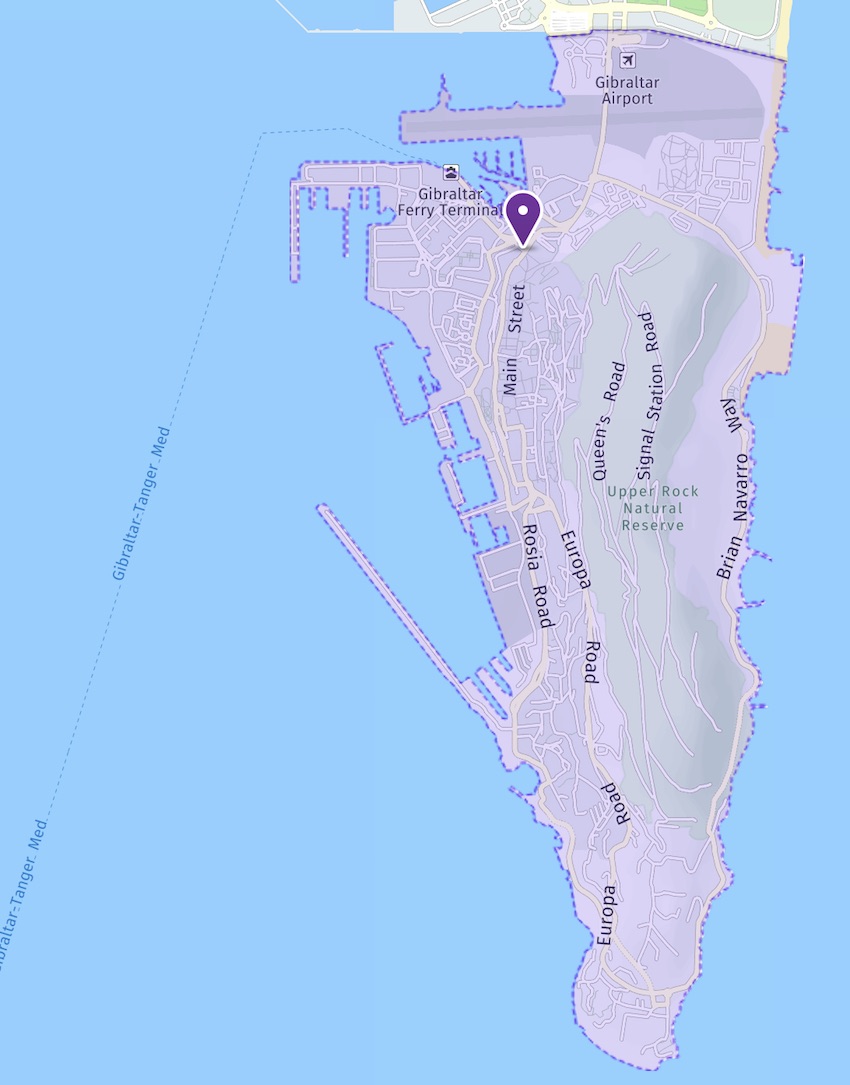My most current blog entry:
Entries in The Sea (24)
The Outer Hebrides
 Sunday, June 7, 2020 at 6:44PM
Sunday, June 7, 2020 at 6:44PM
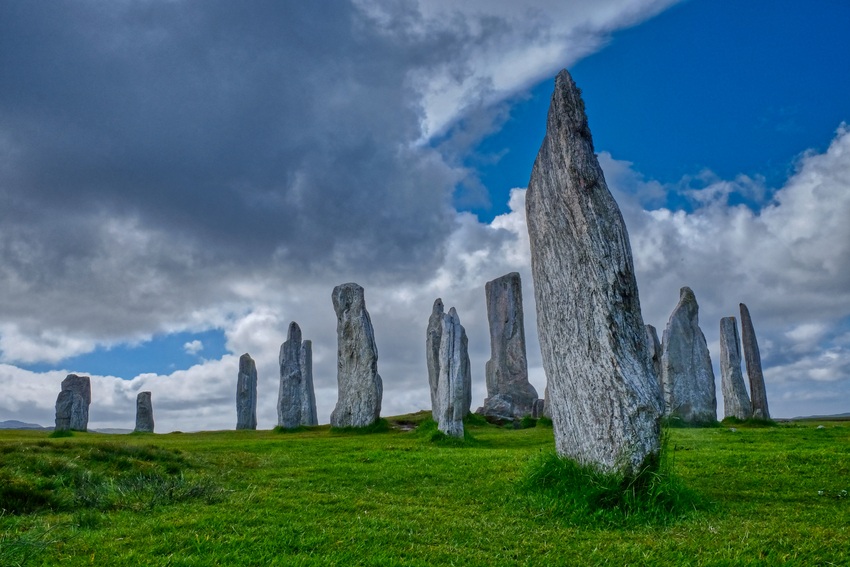 The Outer Hebrides are filled with archeological wonders!
The Outer Hebrides are filled with archeological wonders!
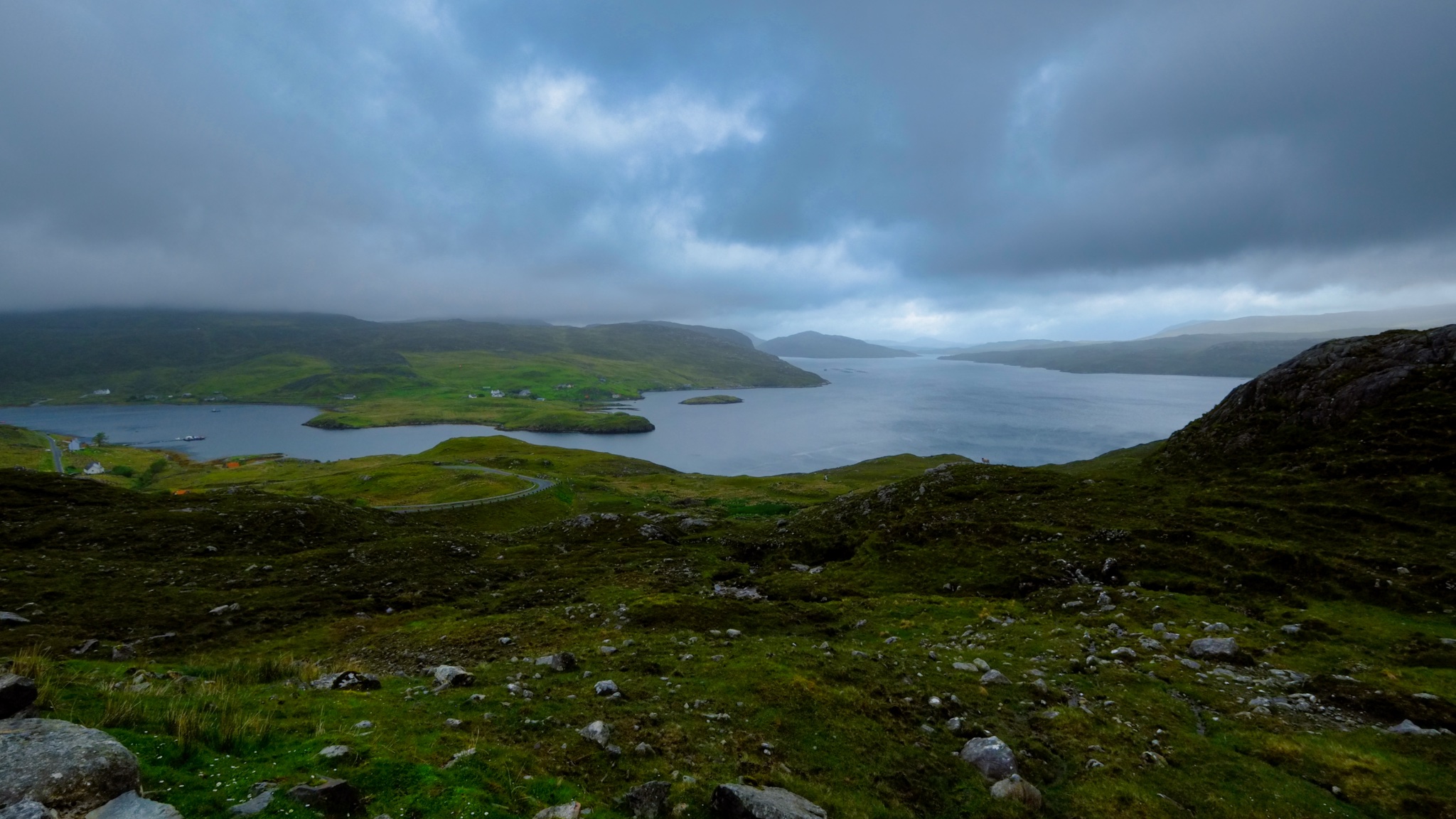
Magnificent views around every corner of the winding single track roads!
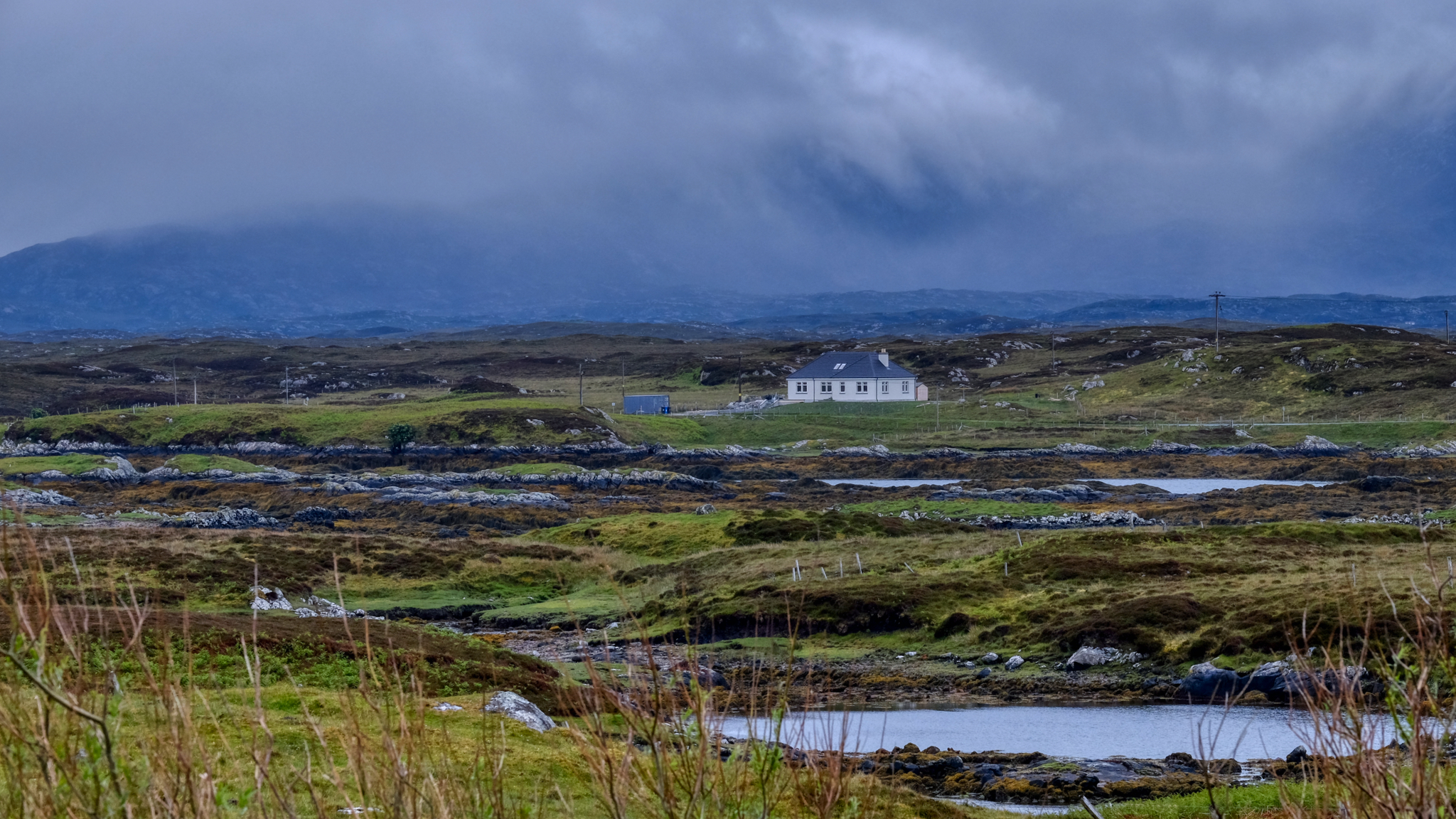 Otherworldly scenes . . .
Otherworldly scenes . . .
-----------------------------------------------------
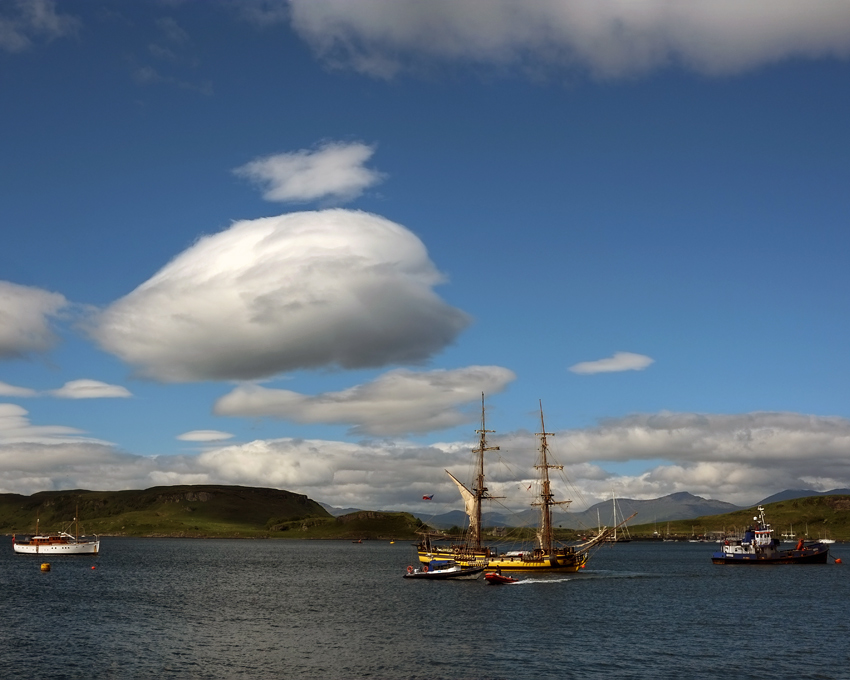
Our journey from the mainland of Scotland began on a fine late June day in Oban harbour.
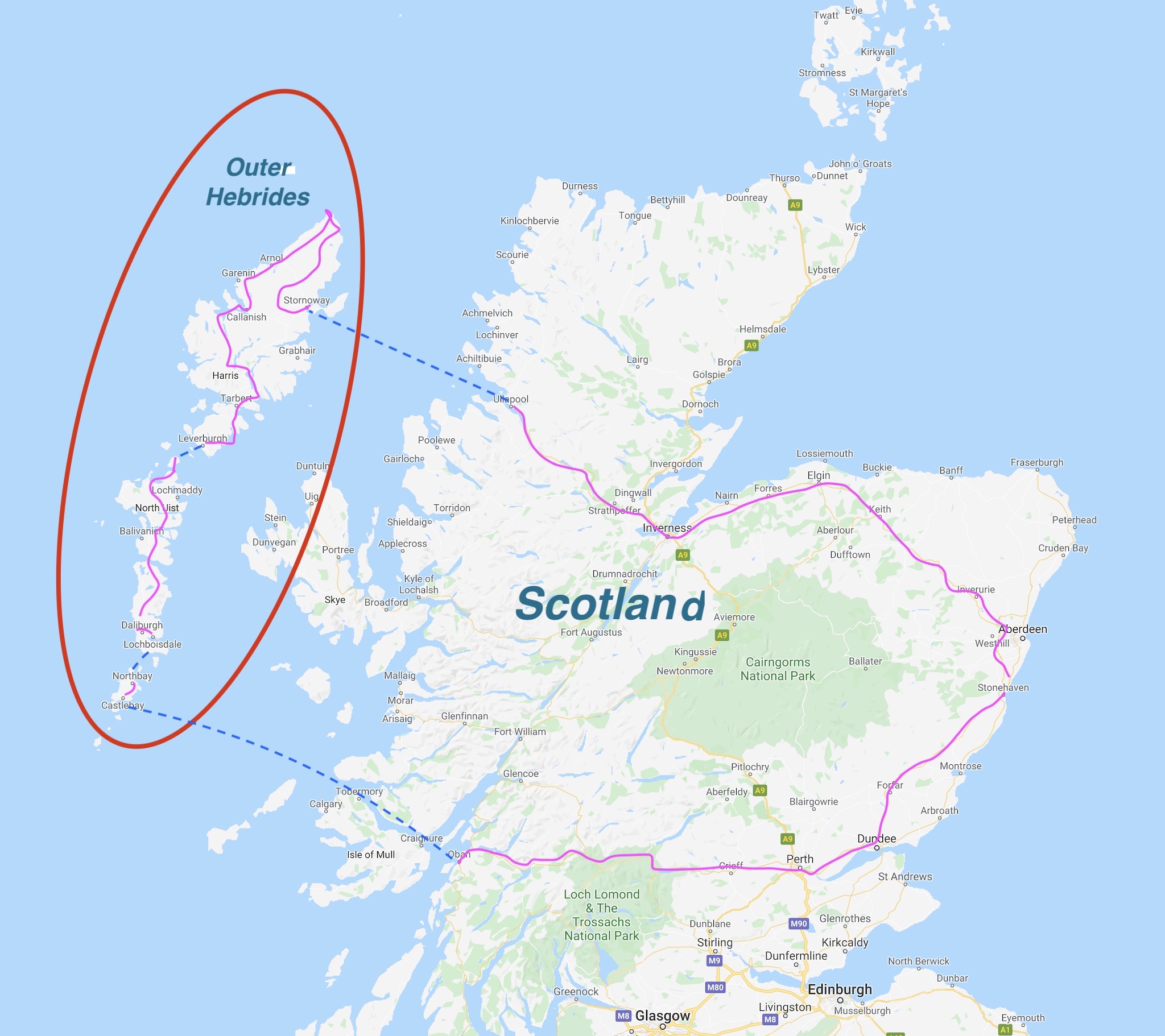 Our 10-day road and ferry trip began at our [then] home in Aberdeen, on the east coast. We spent six of those wonderful days out on the one-lane roads and ferry crossings of the Outer Hebrides.
Our 10-day road and ferry trip began at our [then] home in Aberdeen, on the east coast. We spent six of those wonderful days out on the one-lane roads and ferry crossings of the Outer Hebrides.
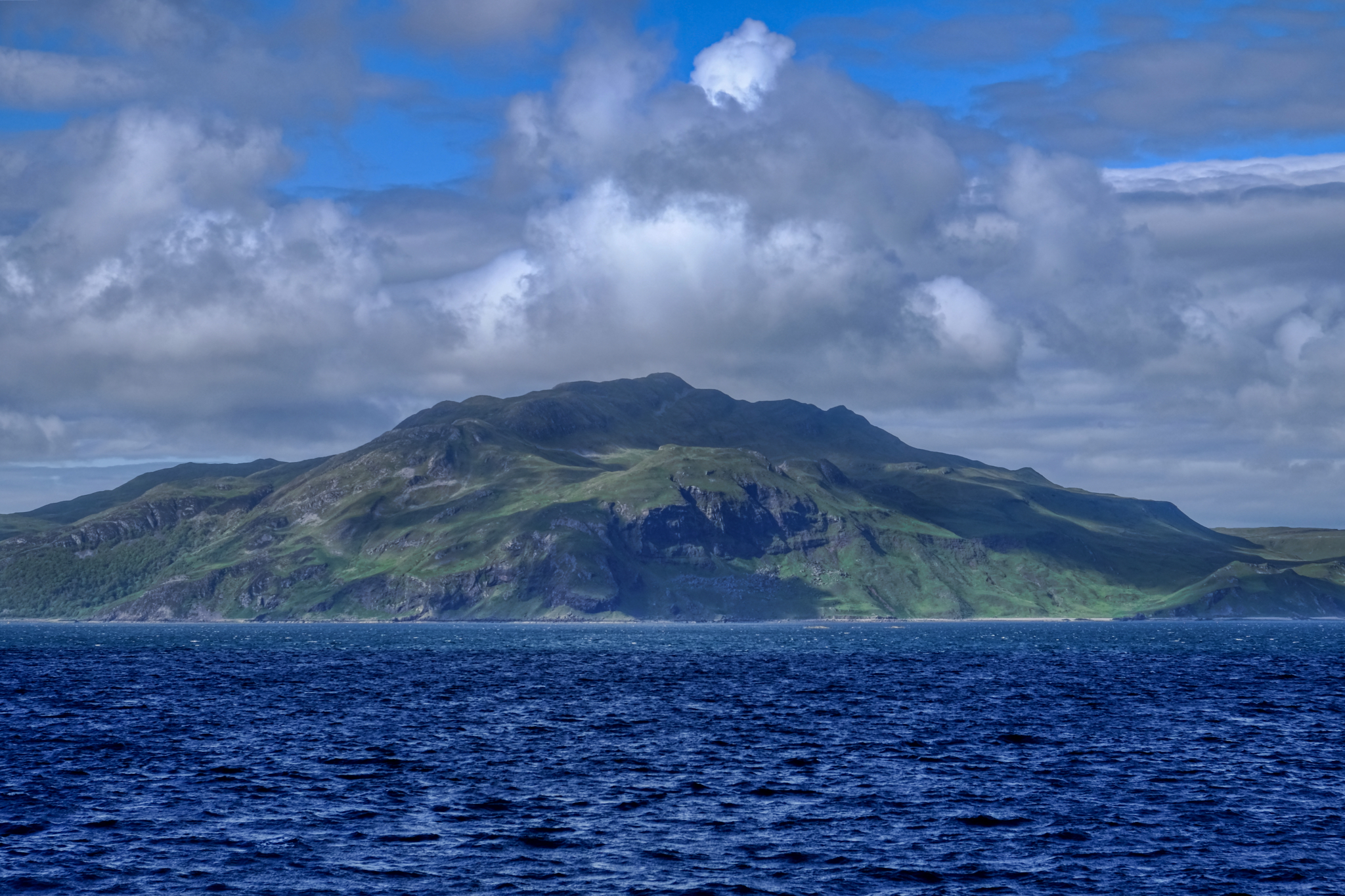
The ferry out of Oban passes through a straight with views of the Isle of Mull on one side.
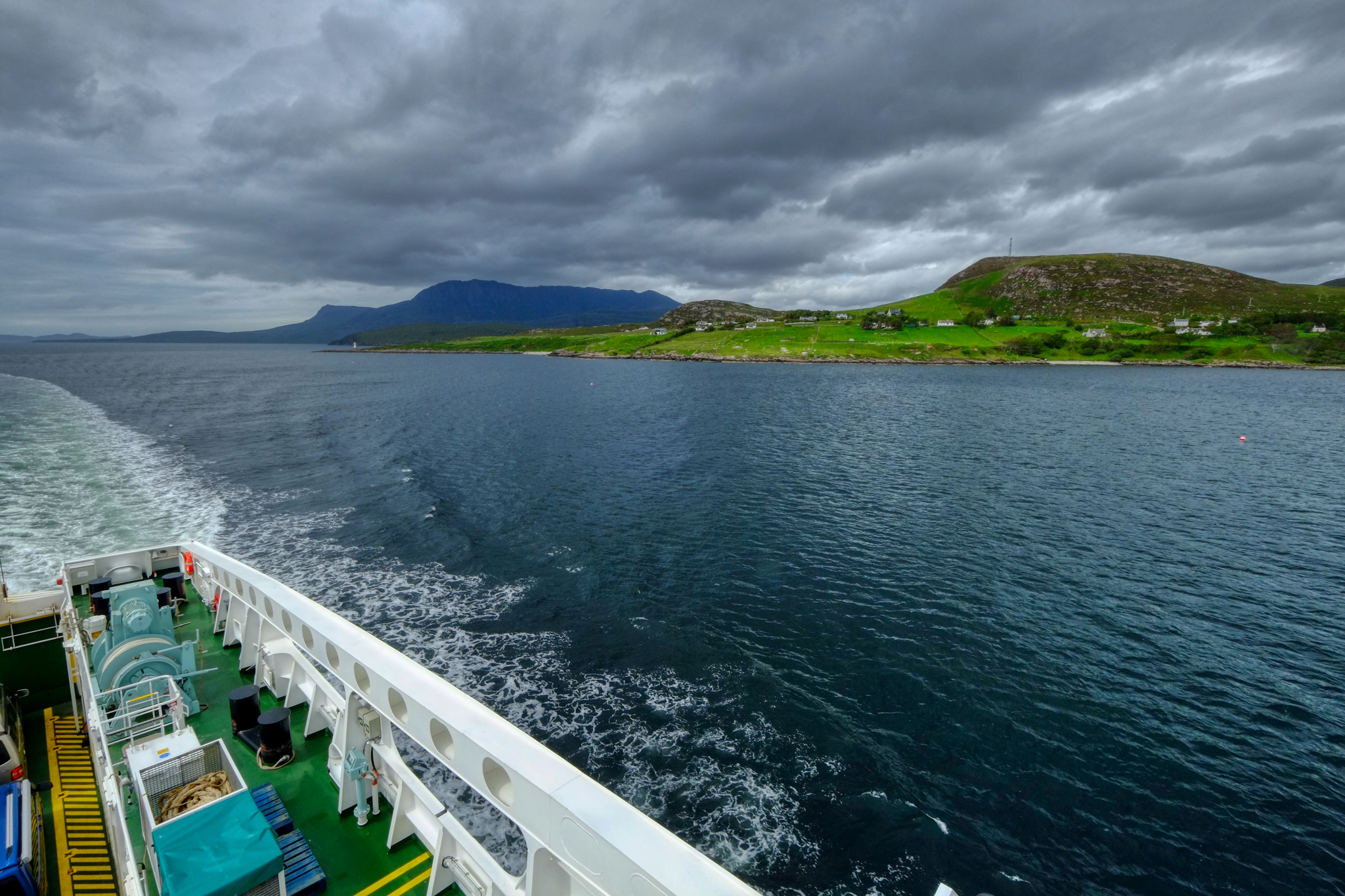 It was a gorgeous 4 hour and 45 minute ferry trip . . . it is important to book your ferry well in advance in the summer months, including the small inter-island ferries out in the Outer Hebrides.
It was a gorgeous 4 hour and 45 minute ferry trip . . . it is important to book your ferry well in advance in the summer months, including the small inter-island ferries out in the Outer Hebrides.
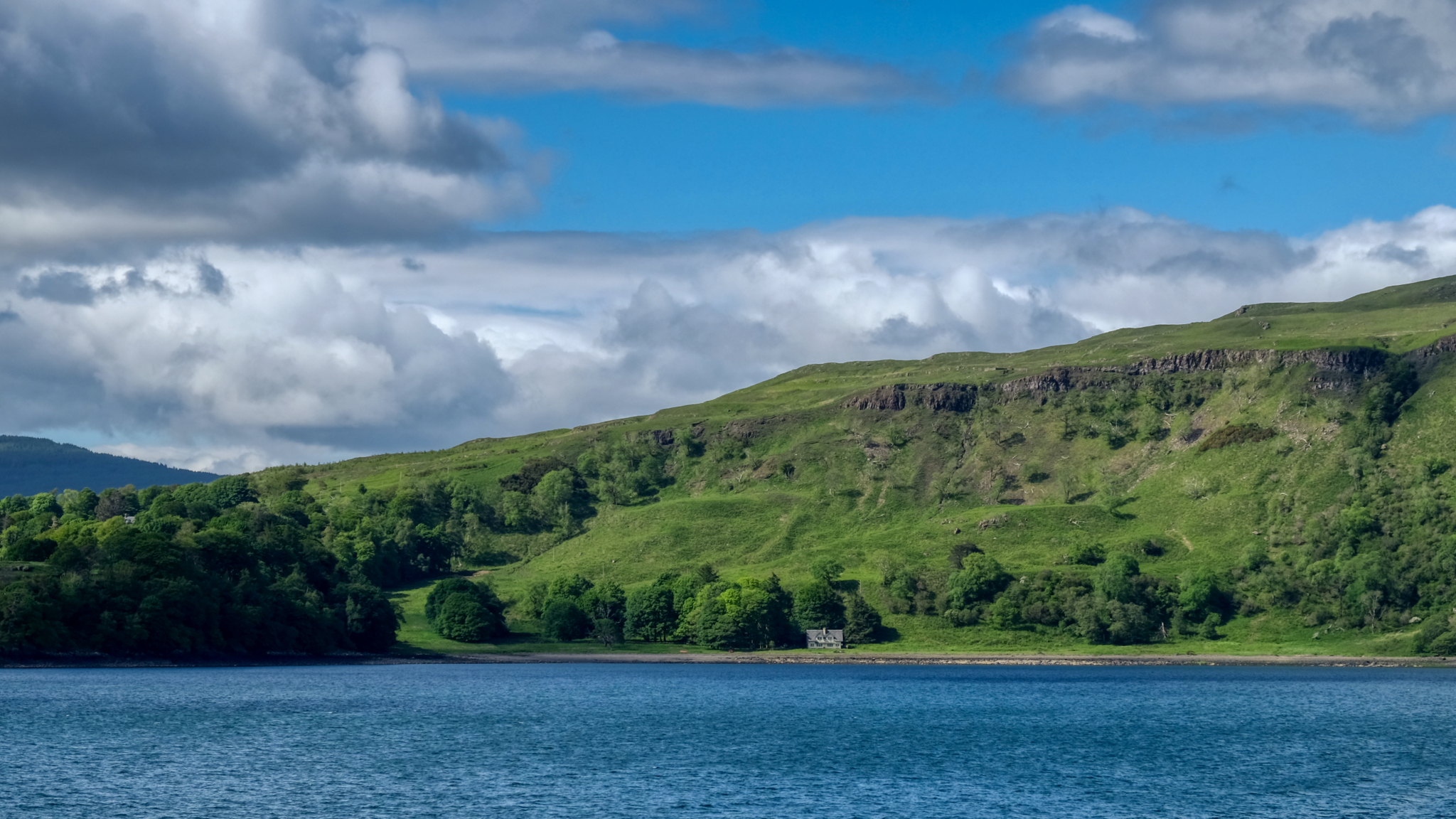 Yes, I would live here . . . .
Yes, I would live here . . . .
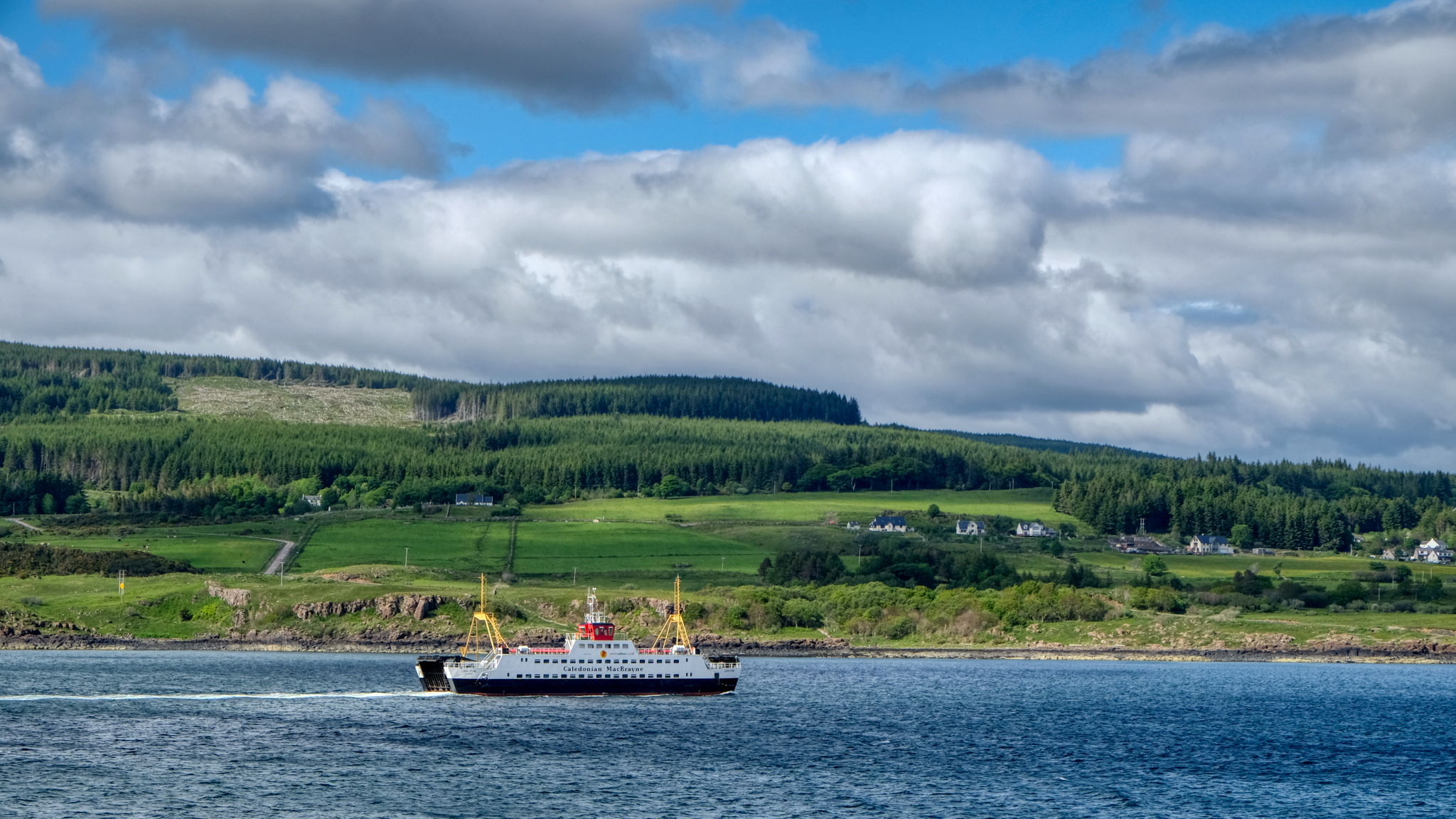 With so many islands off the west coast of Scotland, there are many small ferry routes.
With so many islands off the west coast of Scotland, there are many small ferry routes.
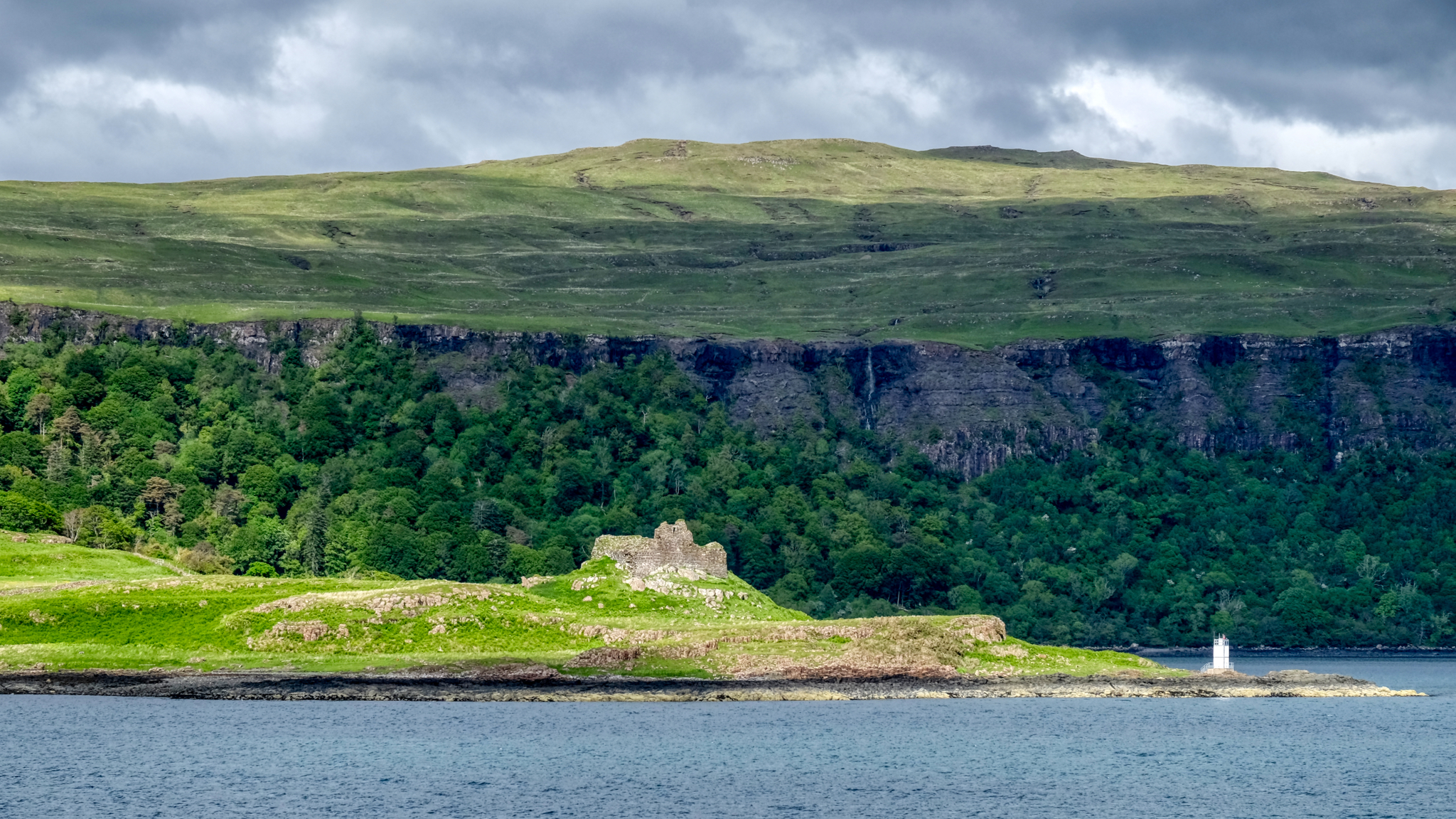 History is everywhere along our route. Castle ruins seem to dot the landscape.
History is everywhere along our route. Castle ruins seem to dot the landscape.
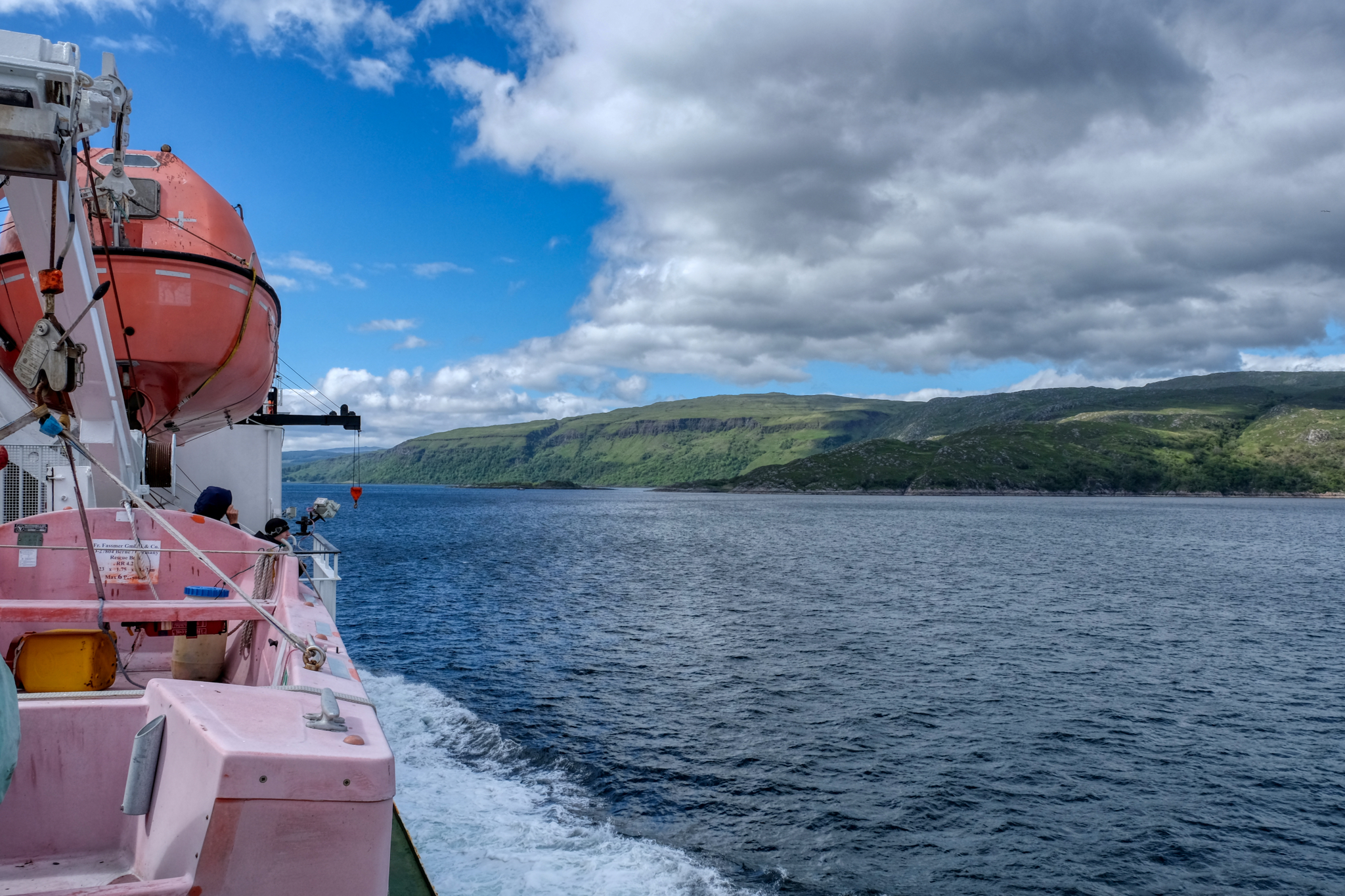 Such a relaxing way to travel.
Such a relaxing way to travel.
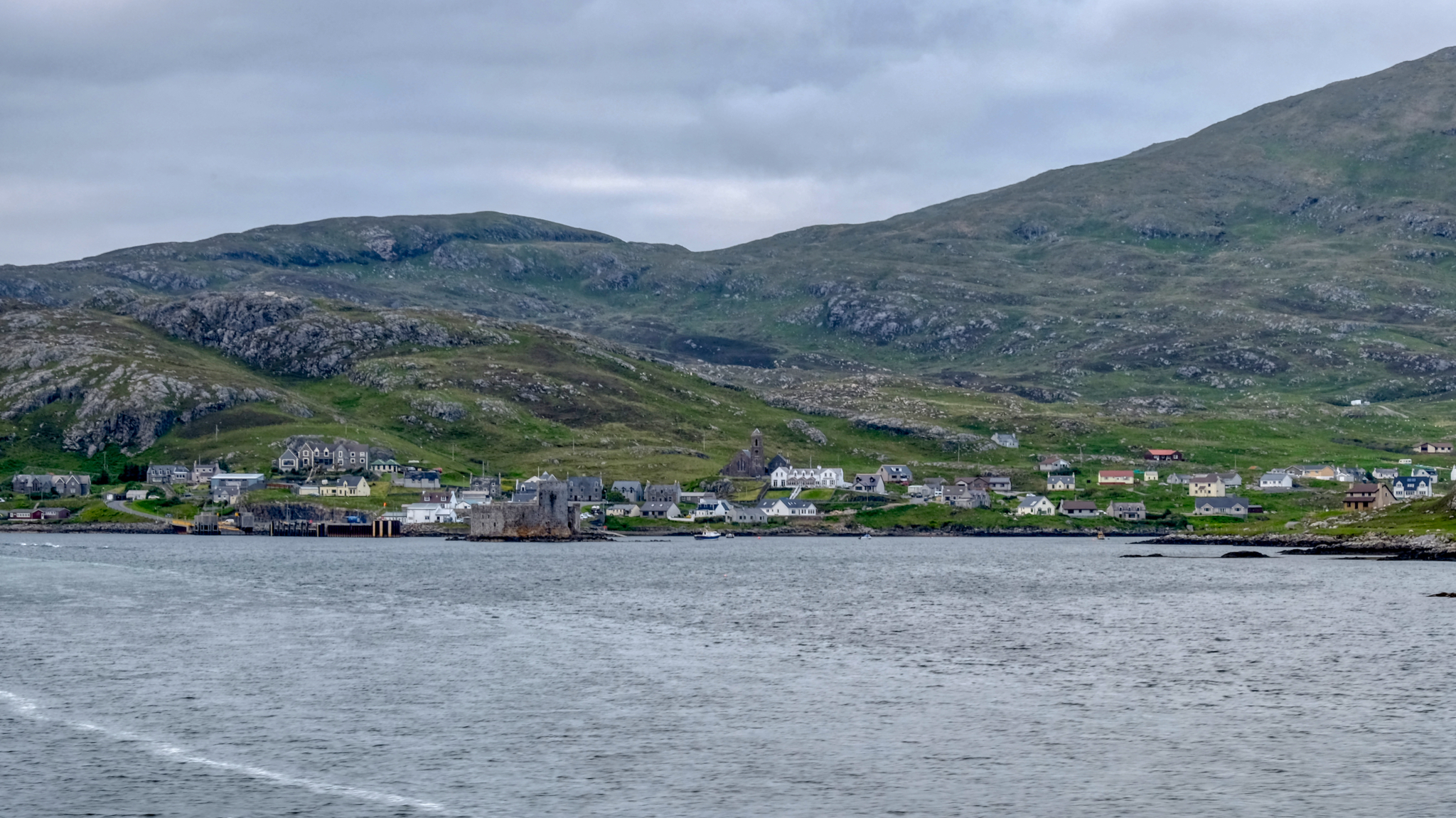 Time passed quickly and we found ourselves nearing Castlebay, the southernmost port on the Outer Hebrides, the Isle of Barra.
Time passed quickly and we found ourselves nearing Castlebay, the southernmost port on the Outer Hebrides, the Isle of Barra.
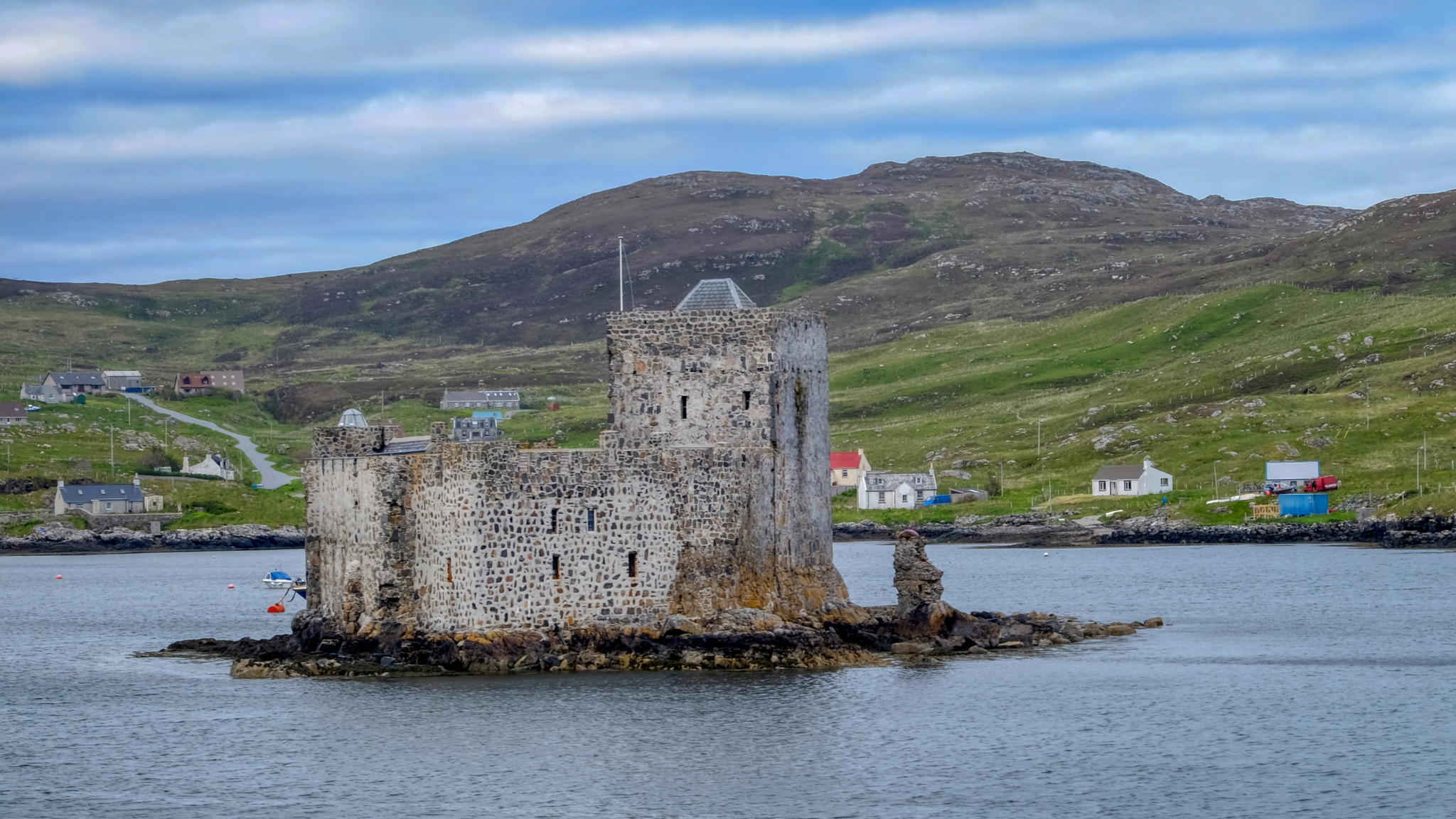 This castle sits in the bay of Castlebay . . . perhaps having something to do with the naming of the town . . . perhaps.
This castle sits in the bay of Castlebay . . . perhaps having something to do with the naming of the town . . . perhaps.
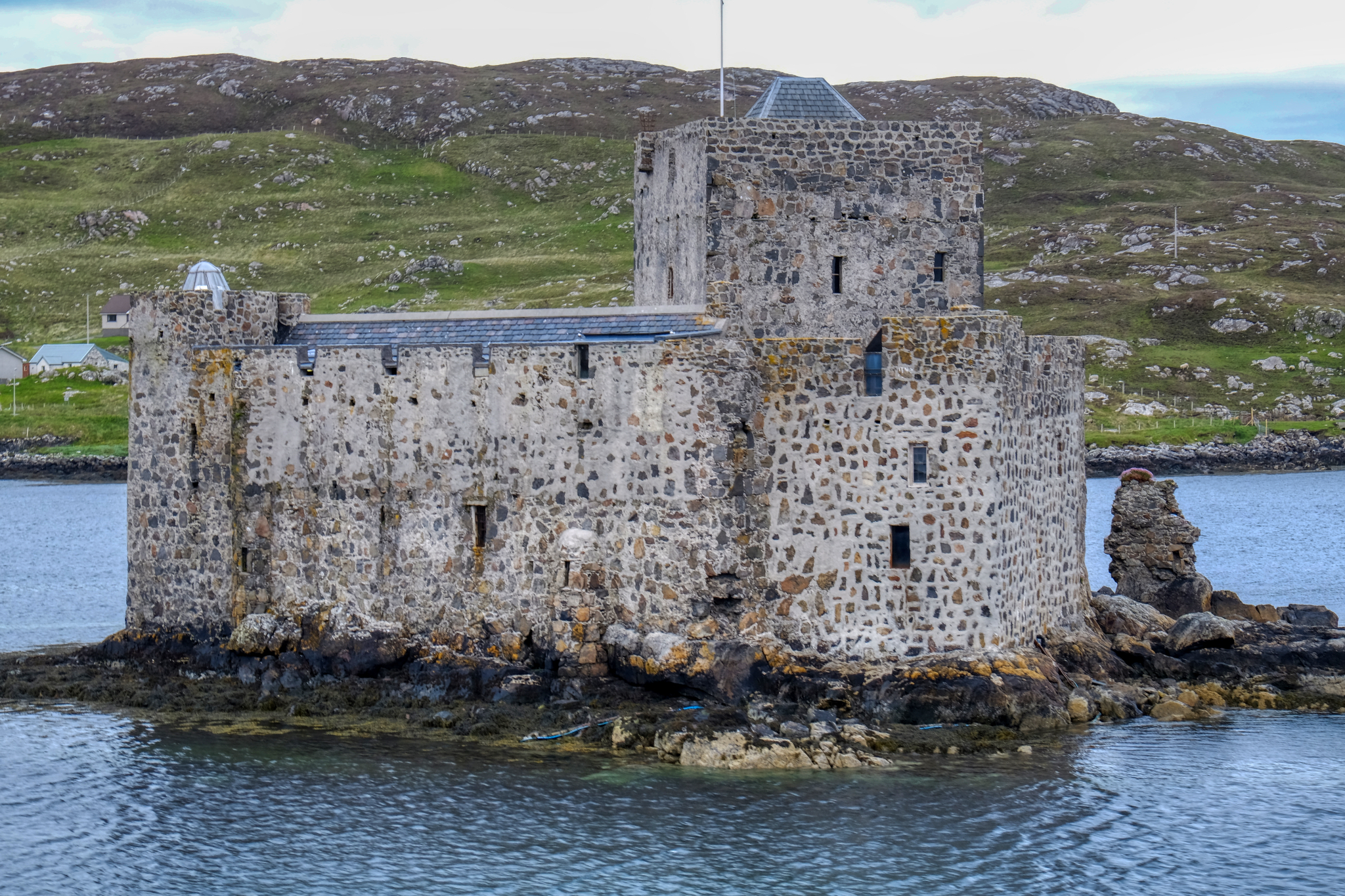 The castle in the bay of Castlebay is Kisimul Castle, dating from the late 16th century. It is now leased to Historic Scotland Trust by the Clan MacNeil for 1 pound a year. It is a castle with an interesting history (see link).
The castle in the bay of Castlebay is Kisimul Castle, dating from the late 16th century. It is now leased to Historic Scotland Trust by the Clan MacNeil for 1 pound a year. It is a castle with an interesting history (see link).
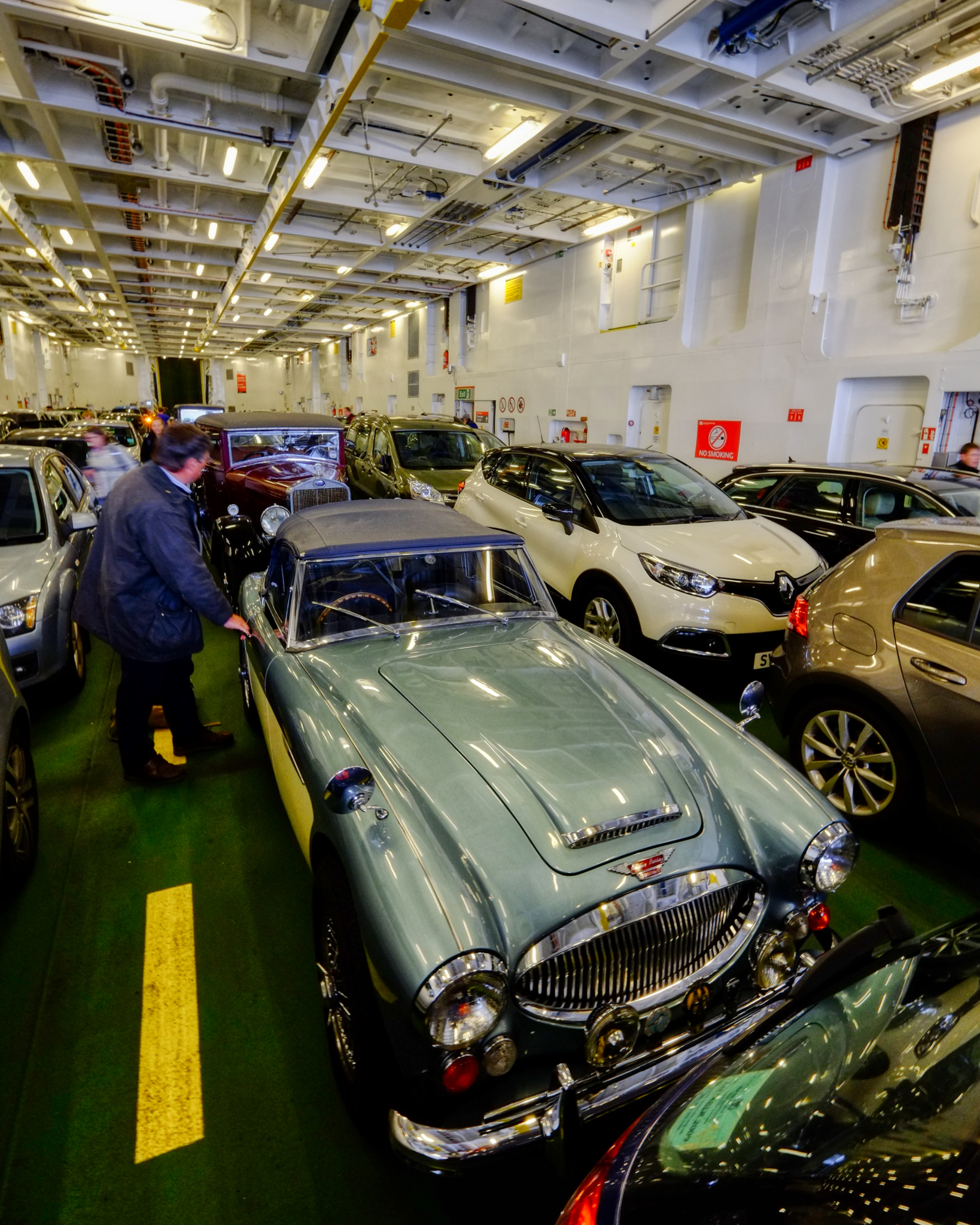
We were called to the car deck just before docking in Castlebay . . . what a surprise to see several antique and collector cars there (they must have loaded after we did). Perhaps there was a collector car rally . . . or they were returning from one.
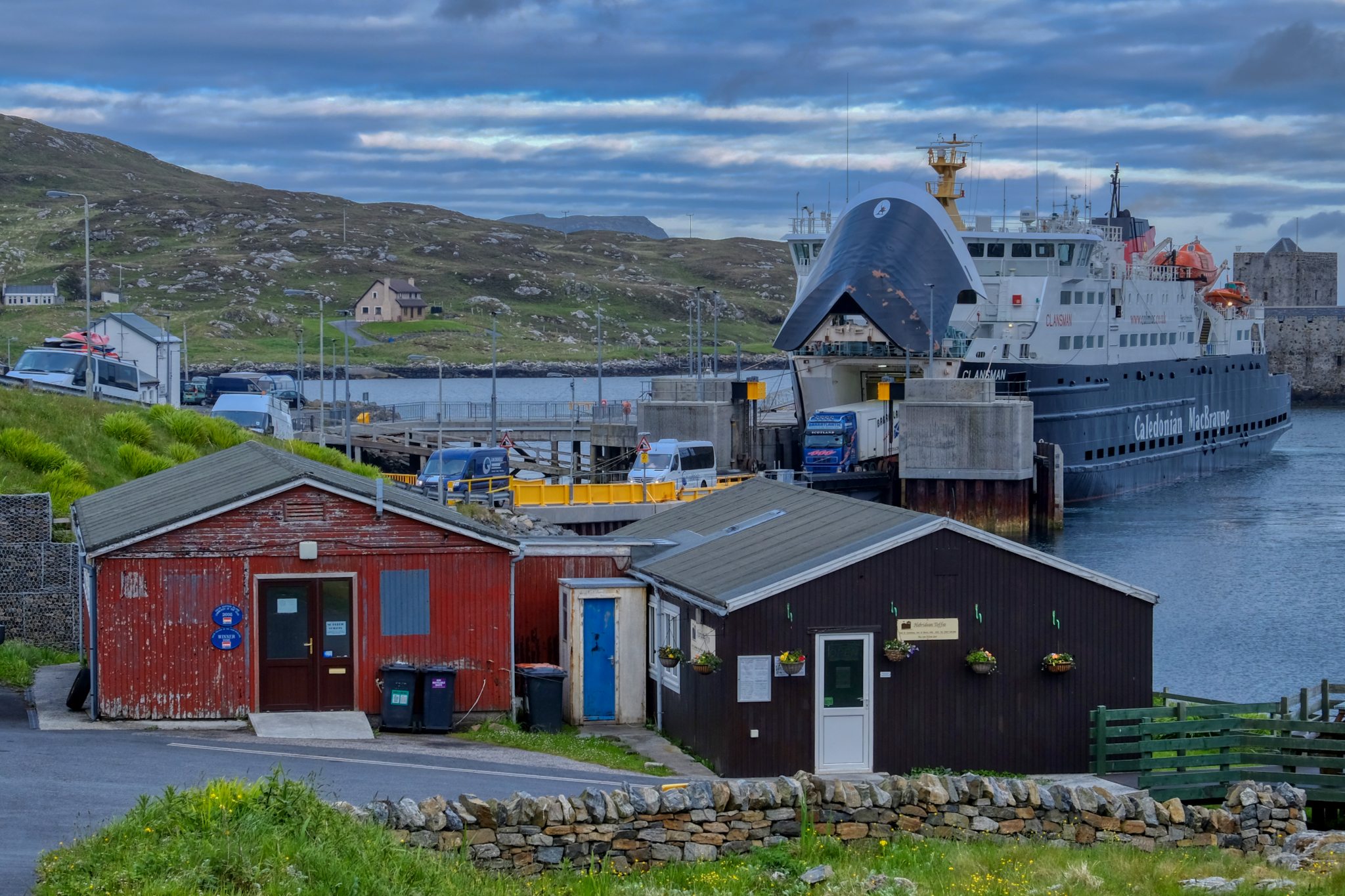 We drove off the ferry and turned, stopped to take a look at where we had come from.
We drove off the ferry and turned, stopped to take a look at where we had come from.
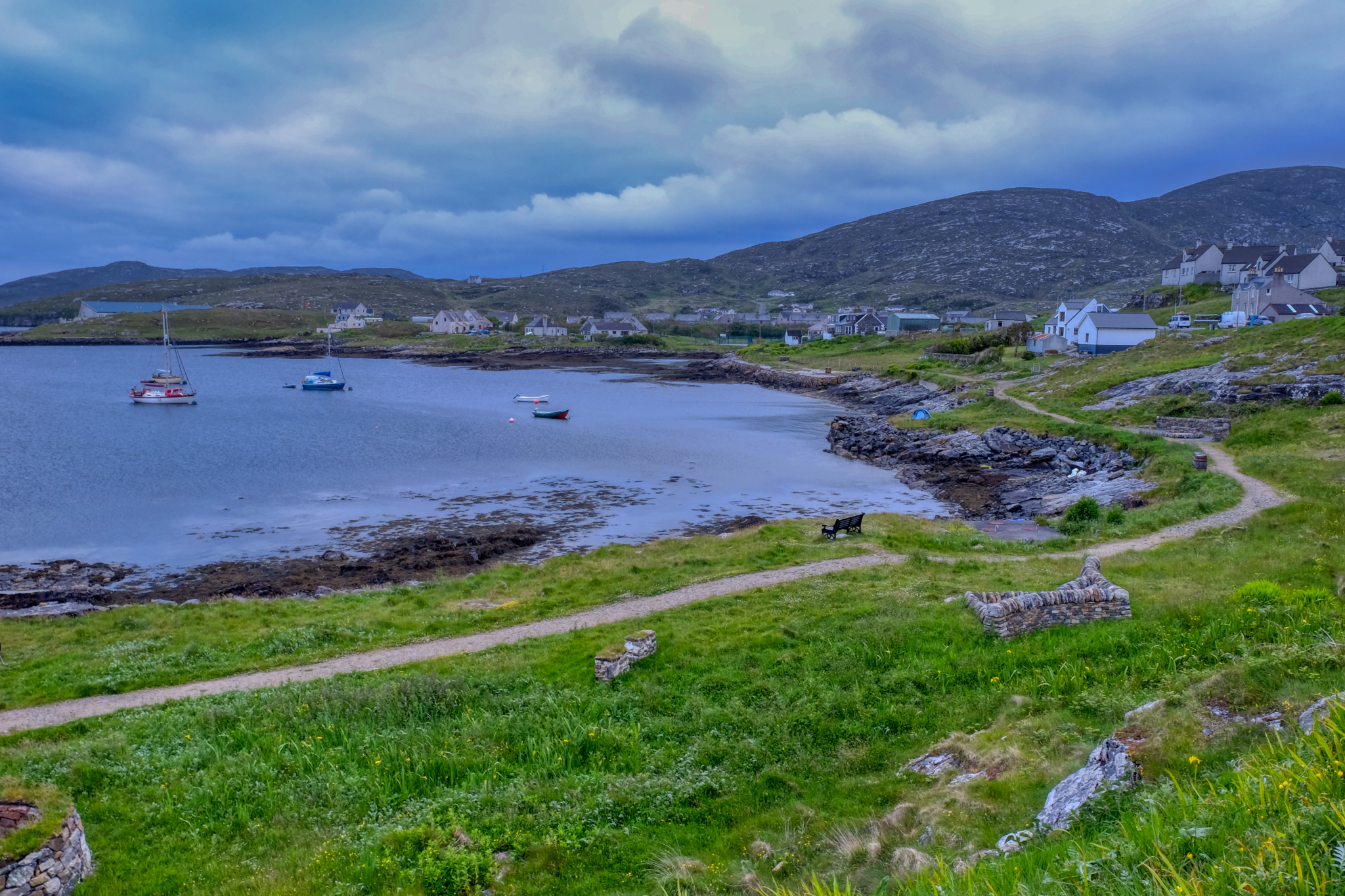 Castlebay has an 'End of the World' feeling of remoteness about it like no other place I have ever been.
Castlebay has an 'End of the World' feeling of remoteness about it like no other place I have ever been.
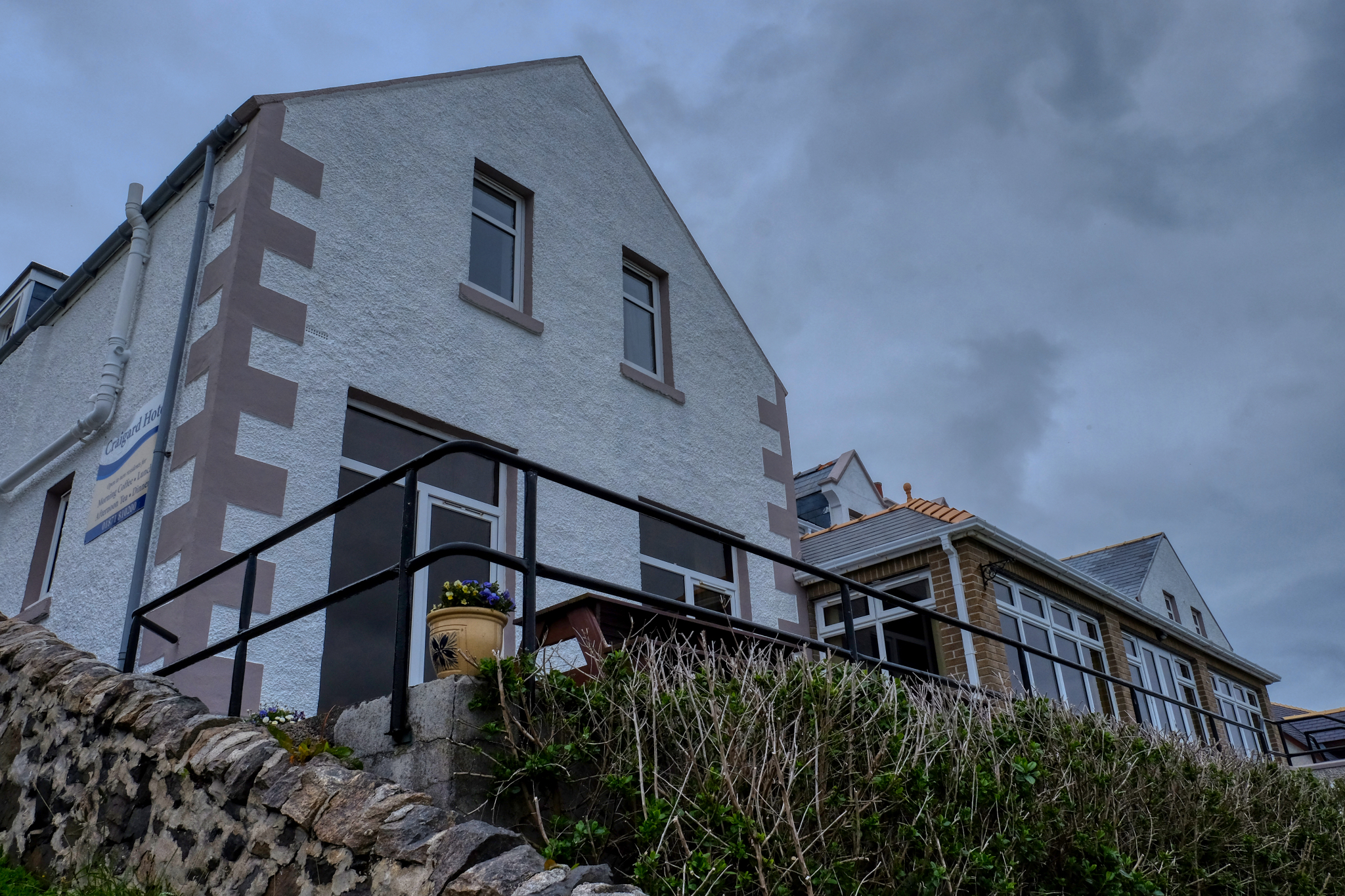 We found our old hotel (it wasn't too difficult!) and checked in.
We found our old hotel (it wasn't too difficult!) and checked in.
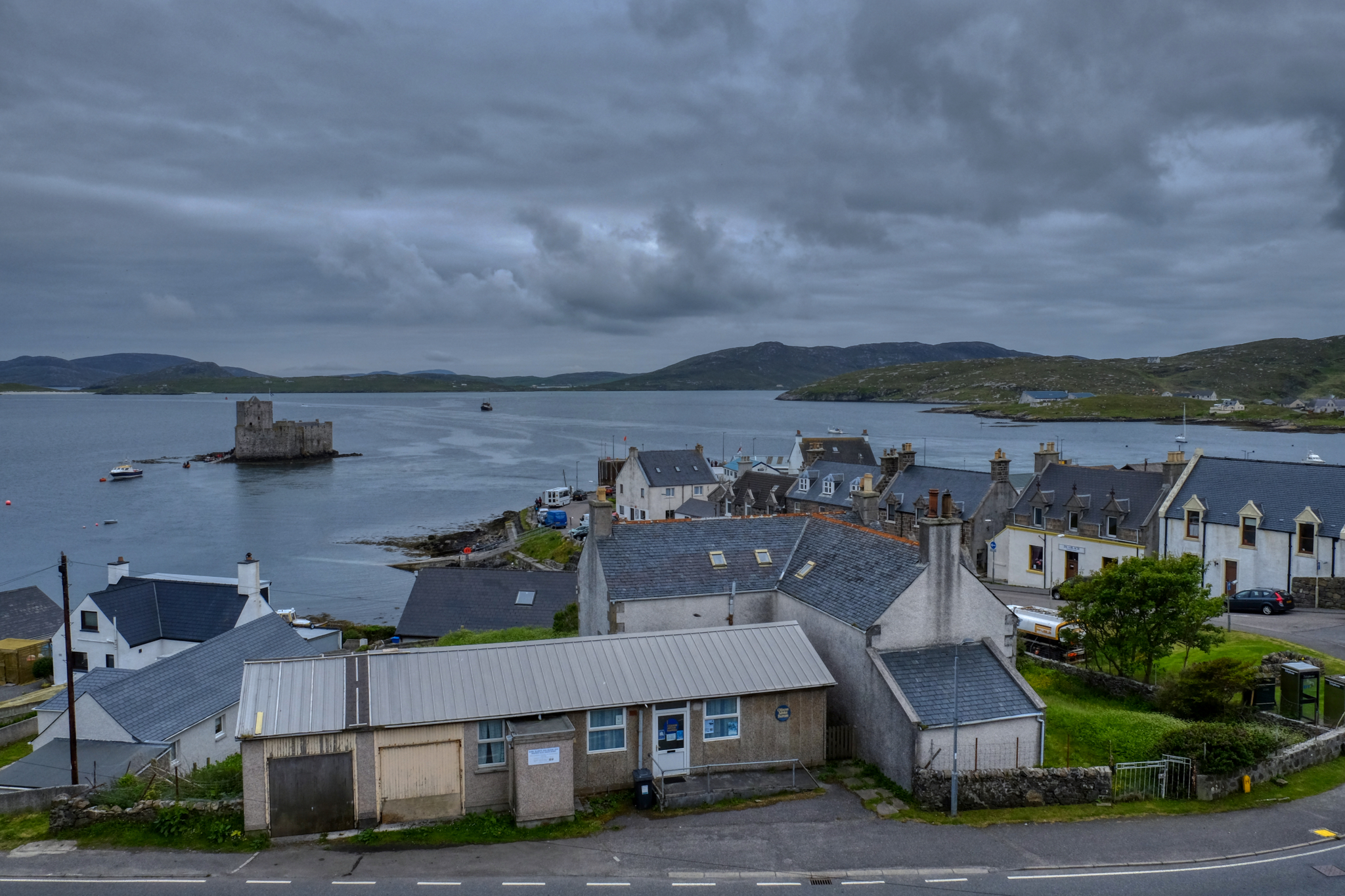 The view of Castlebay from our hotel room. Very nice.
The view of Castlebay from our hotel room. Very nice.
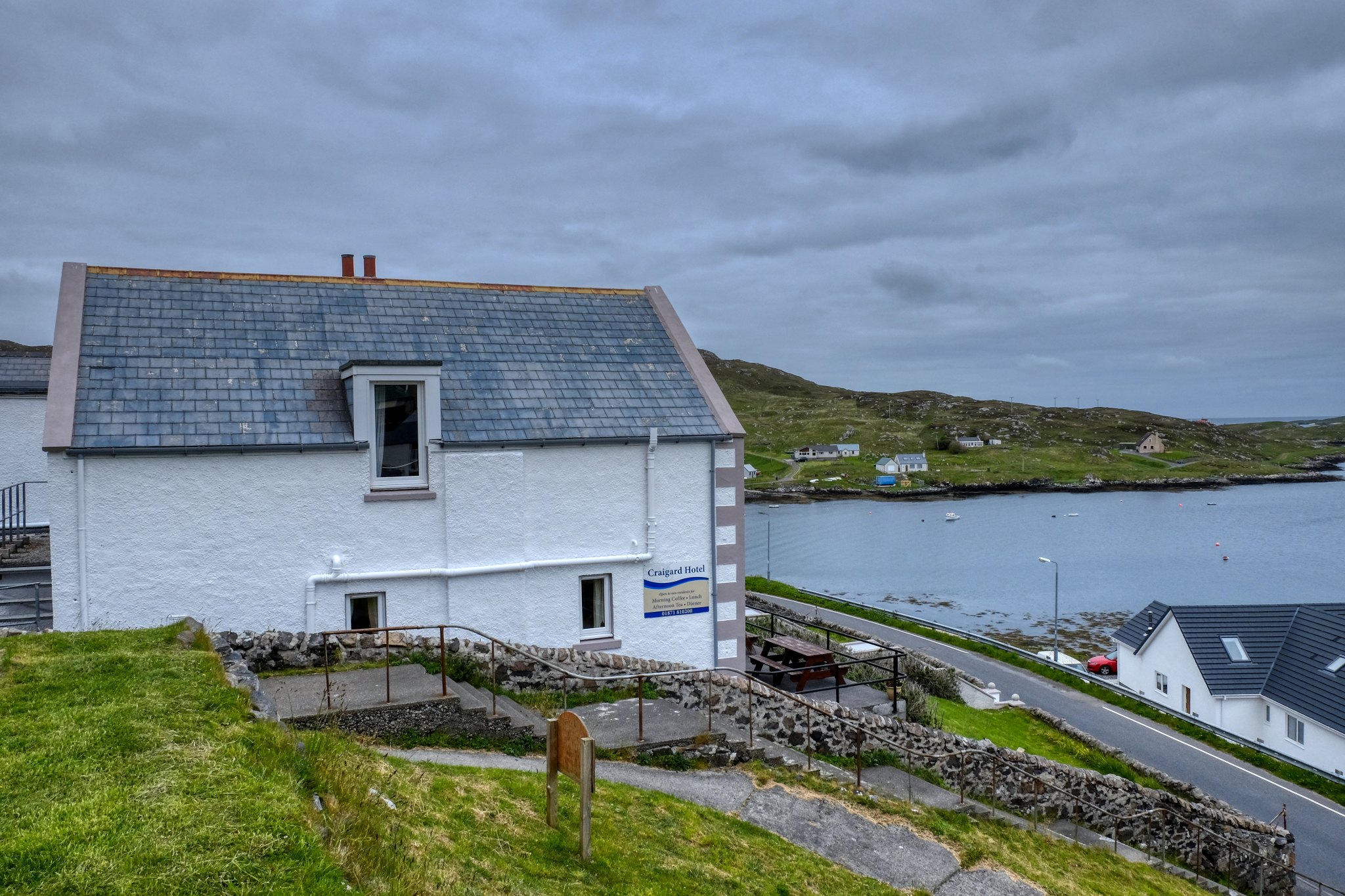 The sun stays up very late in June this far north. I took a walk from our Craigard Hotel at 10:30pm.
The sun stays up very late in June this far north. I took a walk from our Craigard Hotel at 10:30pm.
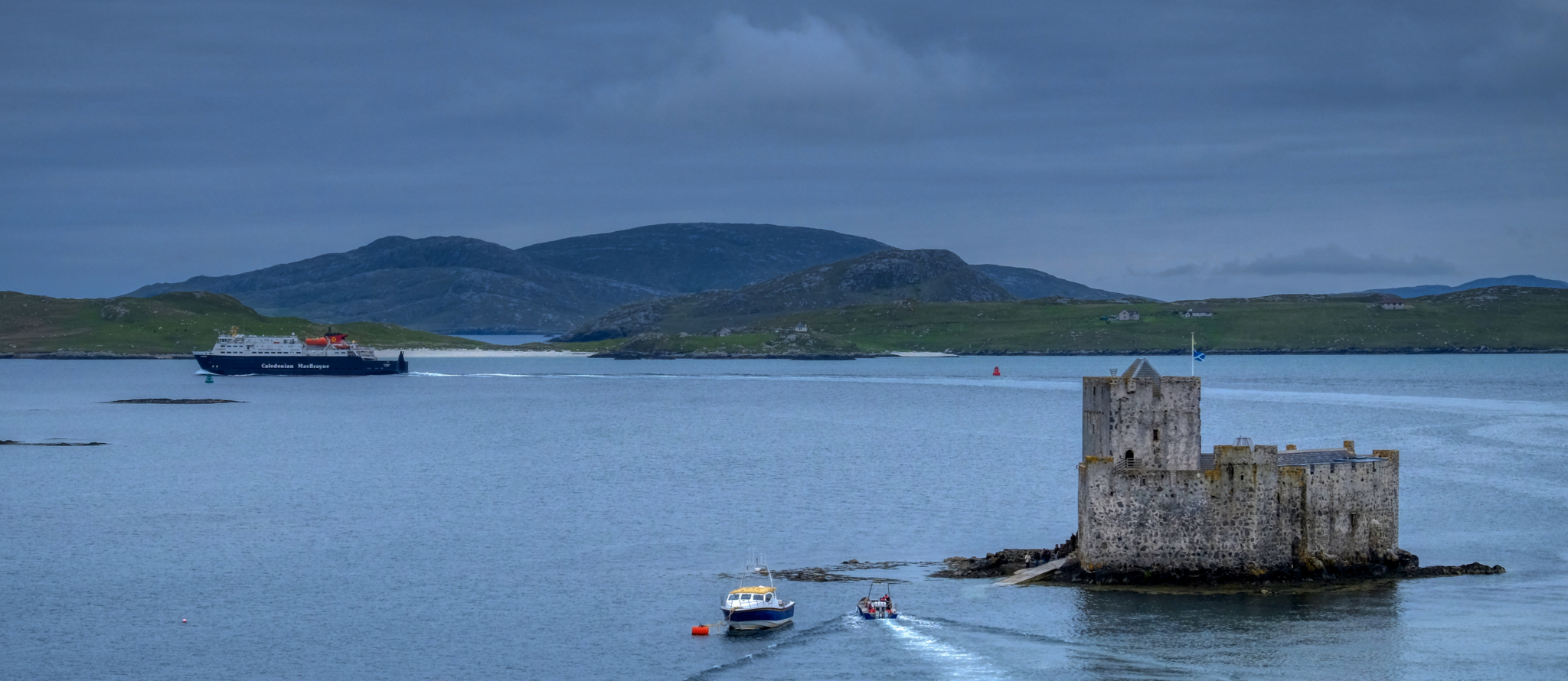 From the hill behind our hotel I saw our ferry, reloaded, making its return voyage to Oban.
From the hill behind our hotel I saw our ferry, reloaded, making its return voyage to Oban.
 I sat in the evening gloom and watched the ferry pass out of sight.
I sat in the evening gloom and watched the ferry pass out of sight.
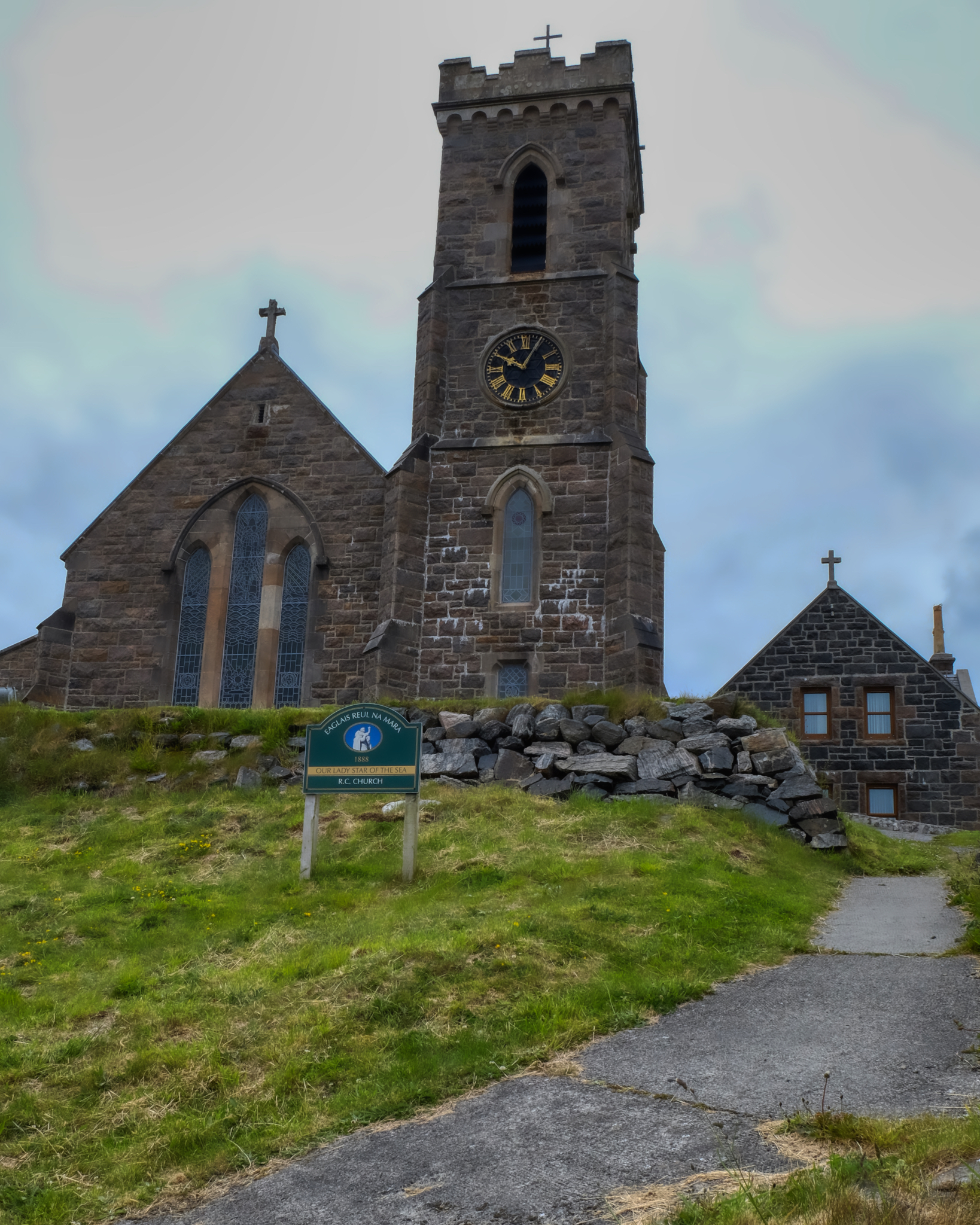 An old church, Our Lady of the Sea, behind our hotel.
An old church, Our Lady of the Sea, behind our hotel.
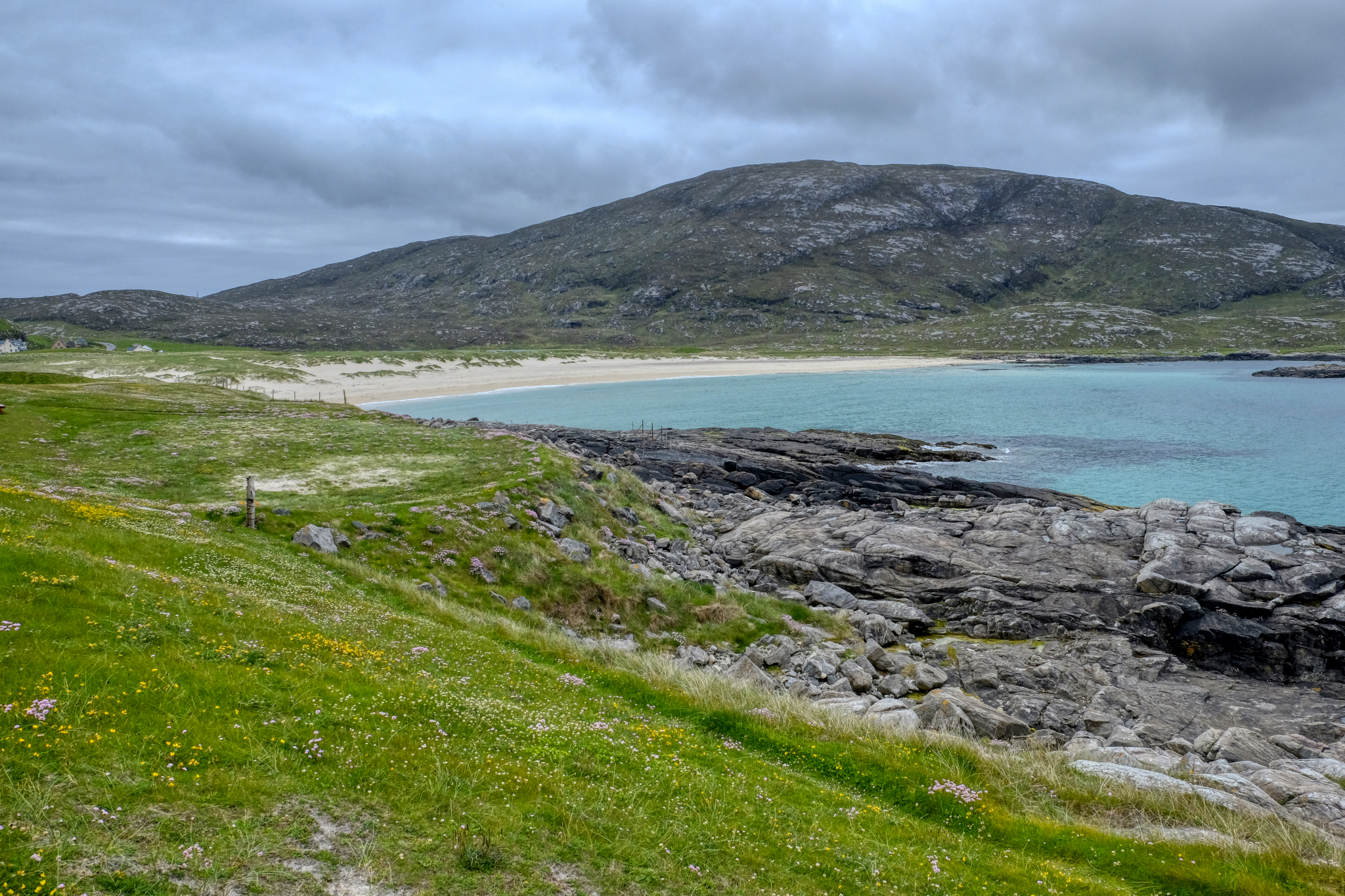 And off we drove up the west coast of the Isle of Barra. Magnificent bay views, white sand and aqua waters.
And off we drove up the west coast of the Isle of Barra. Magnificent bay views, white sand and aqua waters.
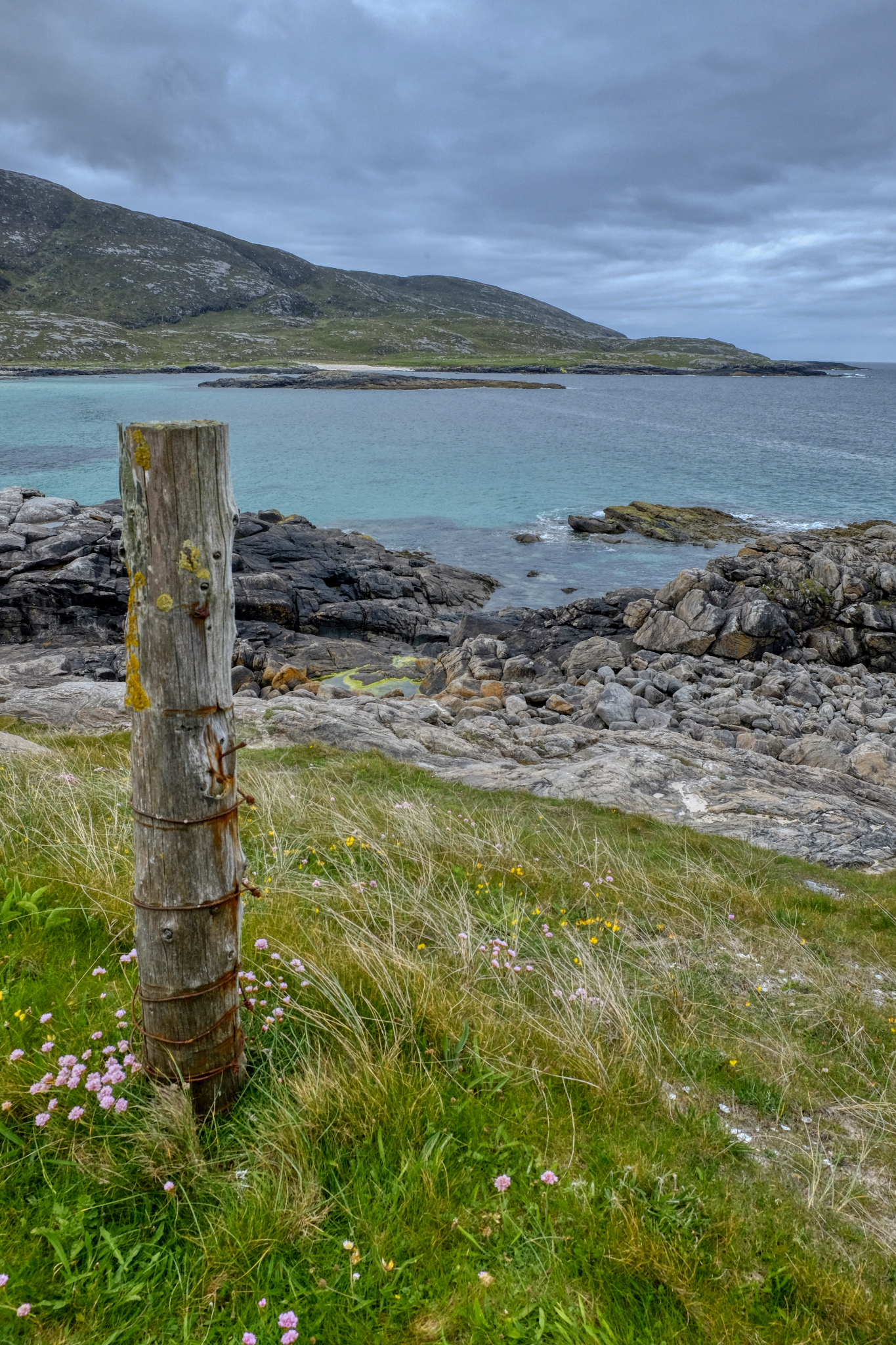 Such a pleasant place.
Such a pleasant place.
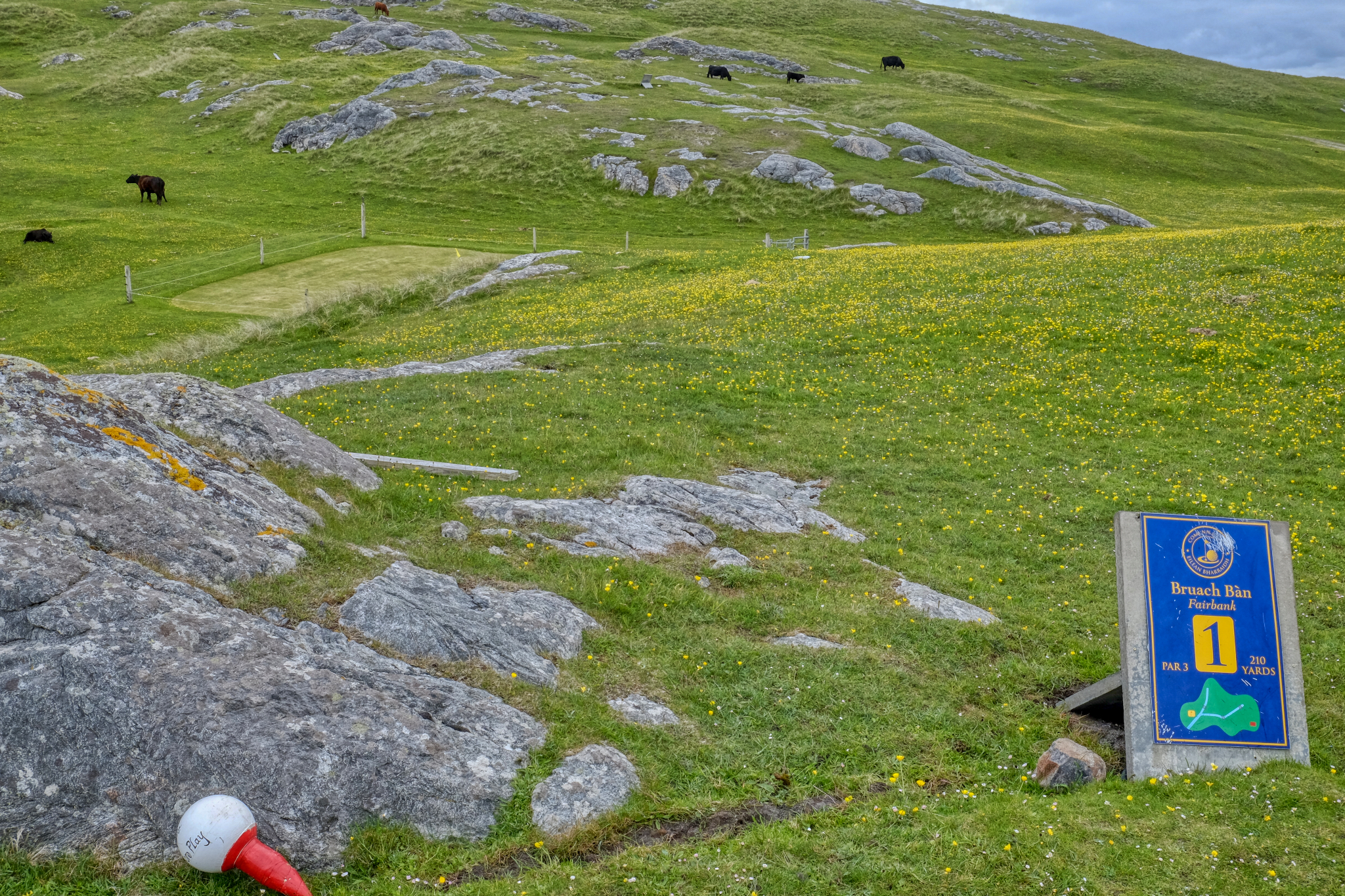 My wife is an avid golfer, so of course we stopped in at the amazing Barra Golf Course.
My wife is an avid golfer, so of course we stopped in at the amazing Barra Golf Course.
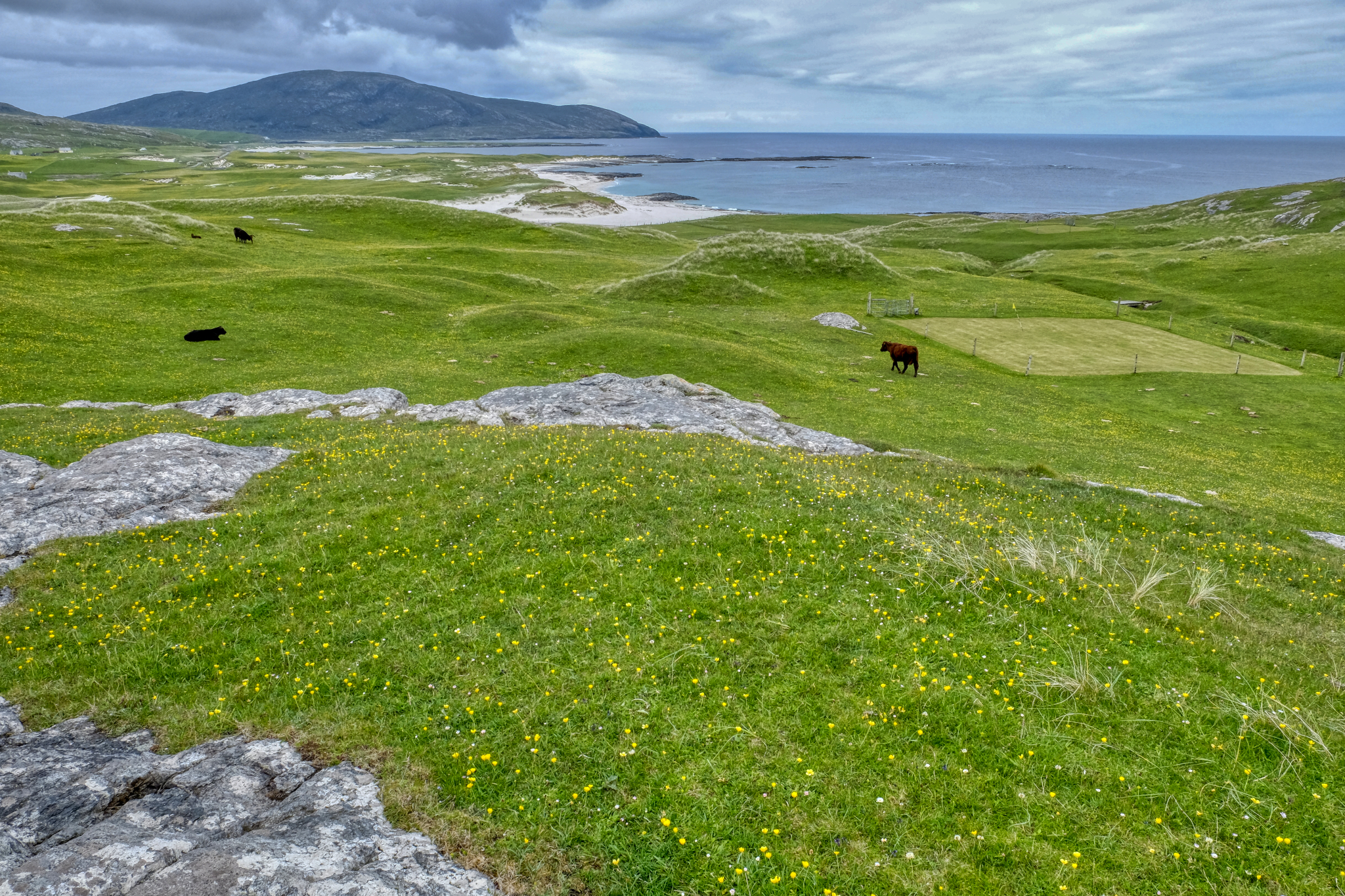 Small yellow wild flowers, the sea, cows, and a fenced off putting green (to keep the cow paddies from becoming a 'green hazard'!!!). Lovely.
Small yellow wild flowers, the sea, cows, and a fenced off putting green (to keep the cow paddies from becoming a 'green hazard'!!!). Lovely.
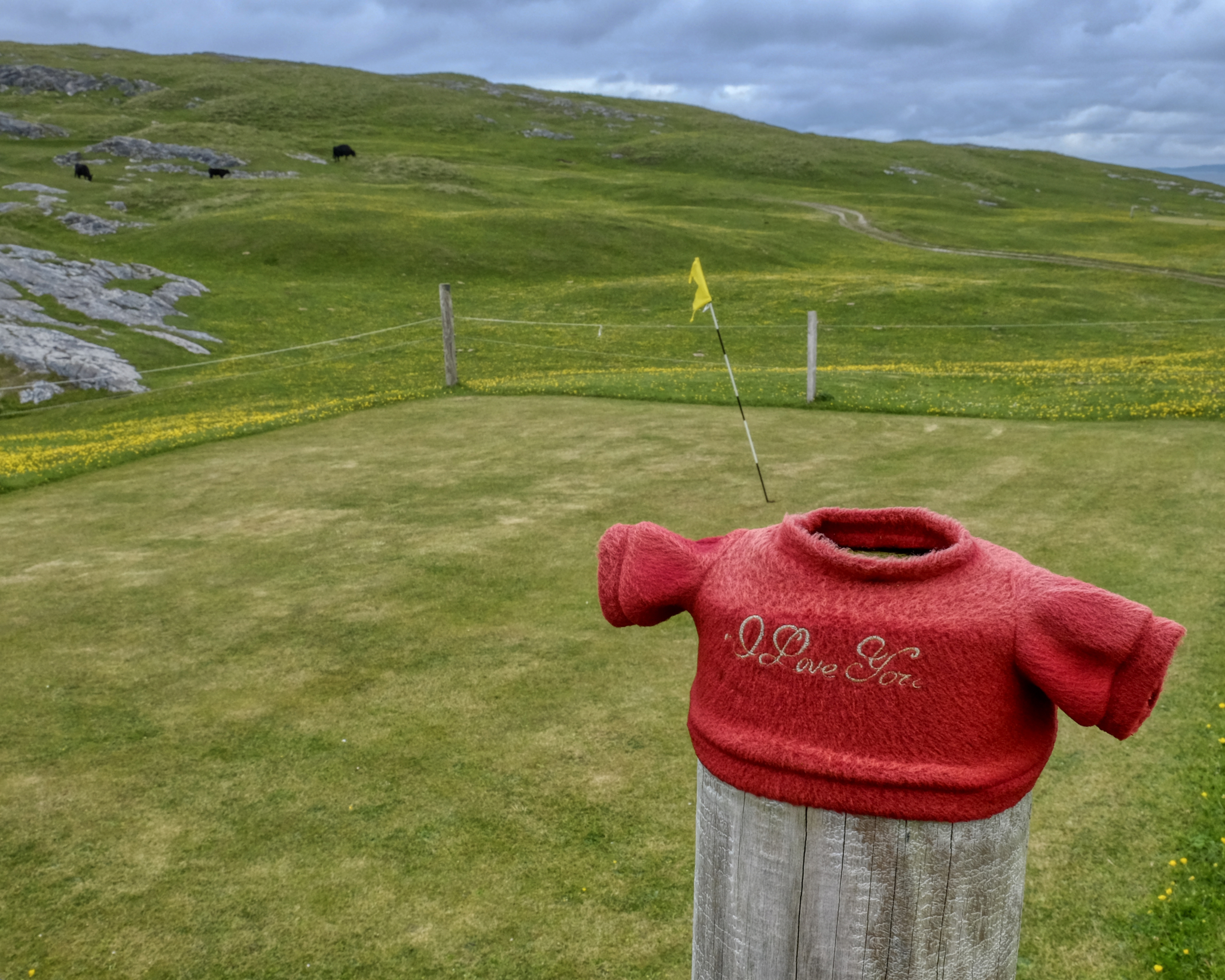 Cute . . .
Cute . . .
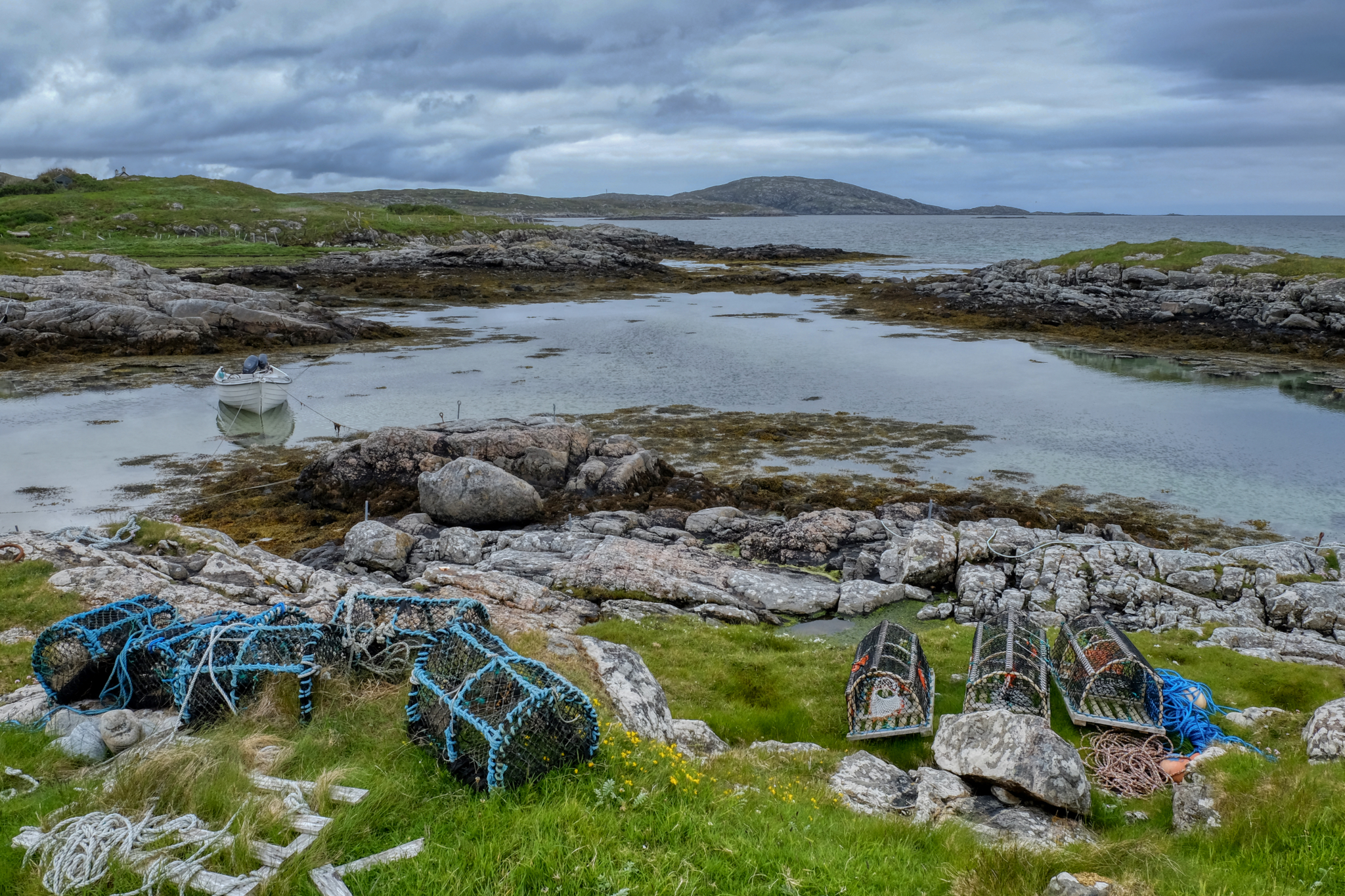 Lobster/Crab pots along a rocky cove. The scenery constantly changes.
Lobster/Crab pots along a rocky cove. The scenery constantly changes.
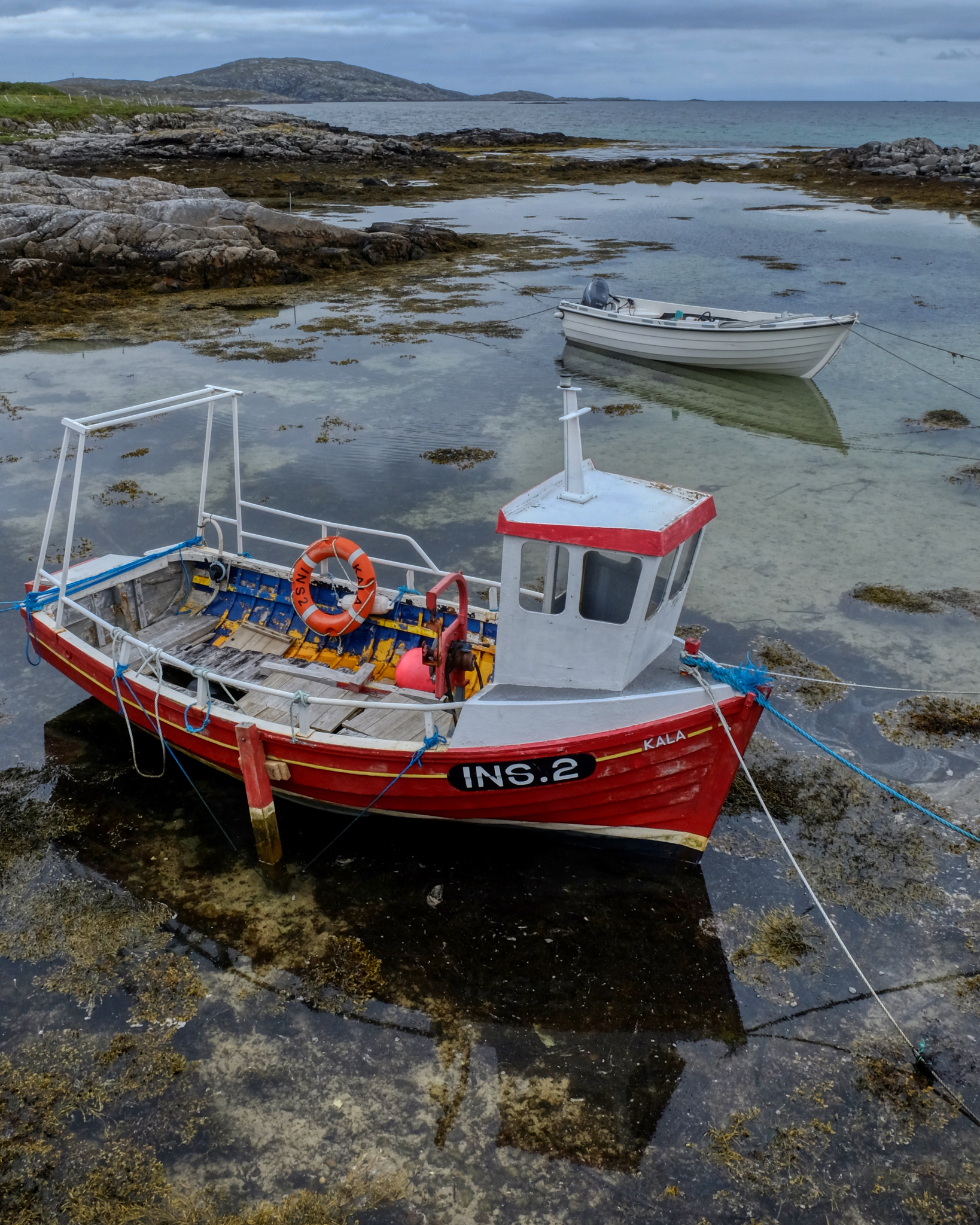 Gorgeous scenes of island life, so connected to the sea.
Gorgeous scenes of island life, so connected to the sea.
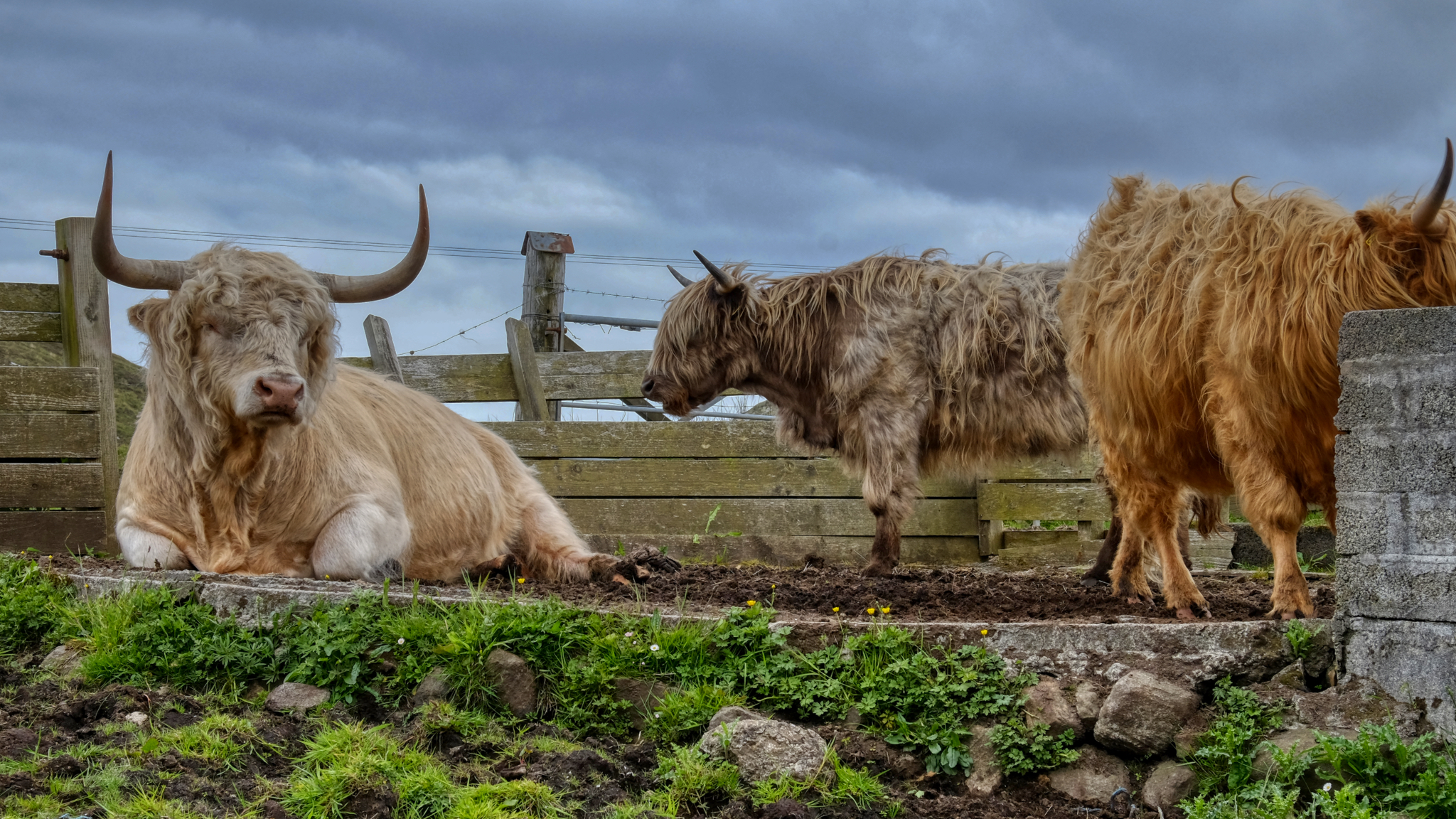 We met these fine fellows along the road. Highland cows.
We met these fine fellows along the road. Highland cows.
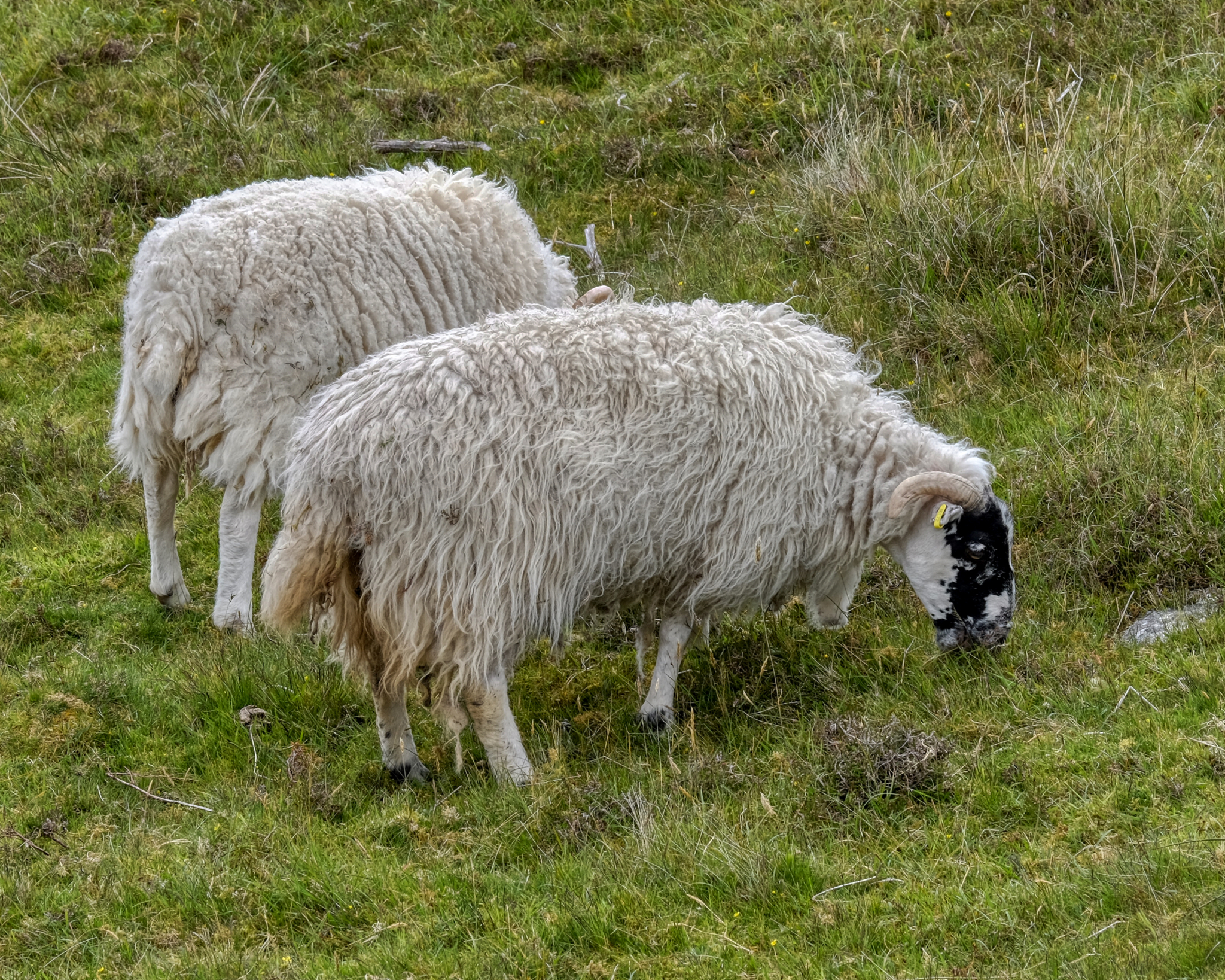 The ever-present wet sheep. We joked that all of the wool from the Outer Hebrides is already 'pre-washed.'
The ever-present wet sheep. We joked that all of the wool from the Outer Hebrides is already 'pre-washed.'
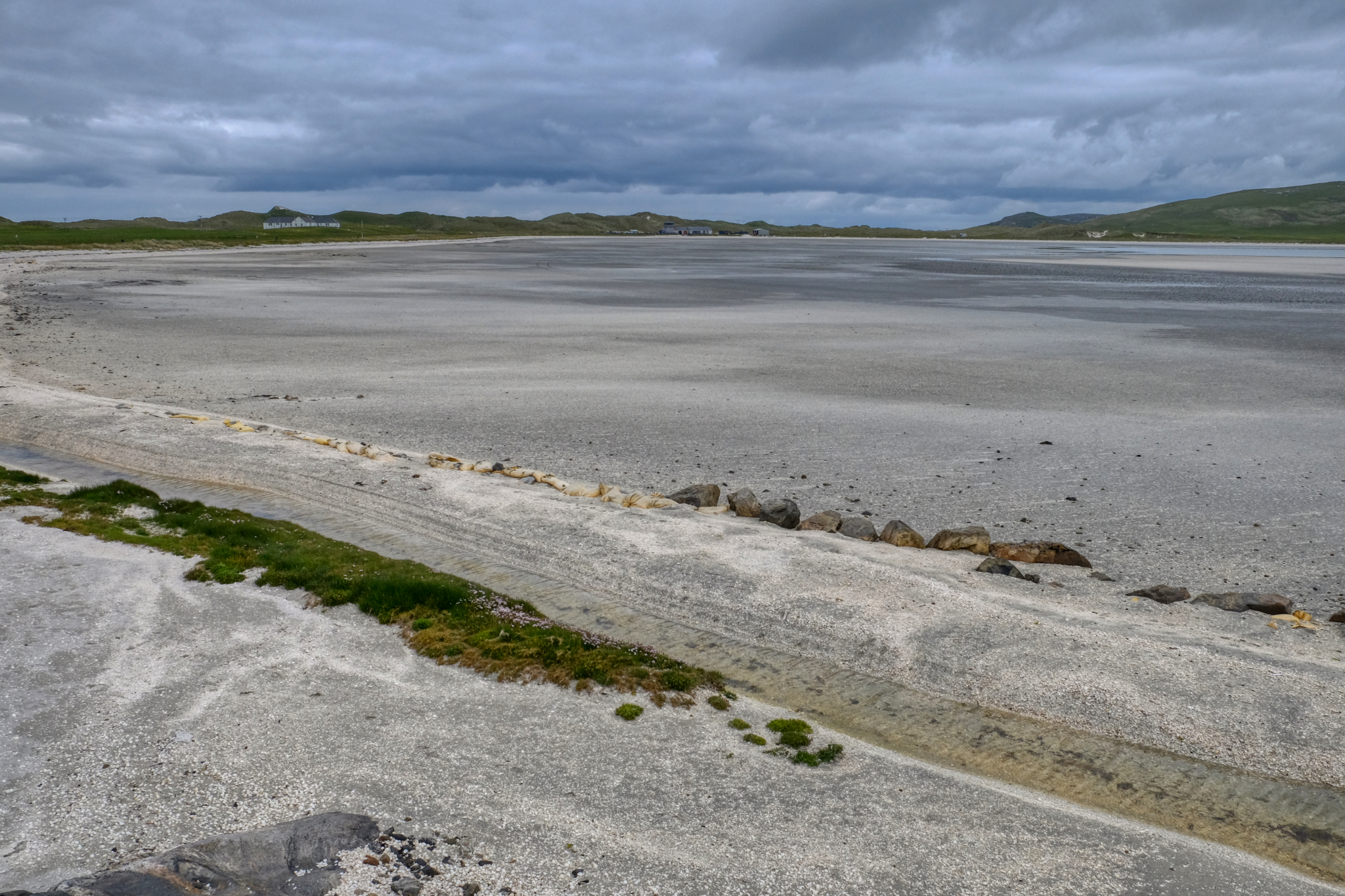 A vast stretch of the white sandy beach of a bay at low tide. Barra Airport in the background.
A vast stretch of the white sandy beach of a bay at low tide. Barra Airport in the background.
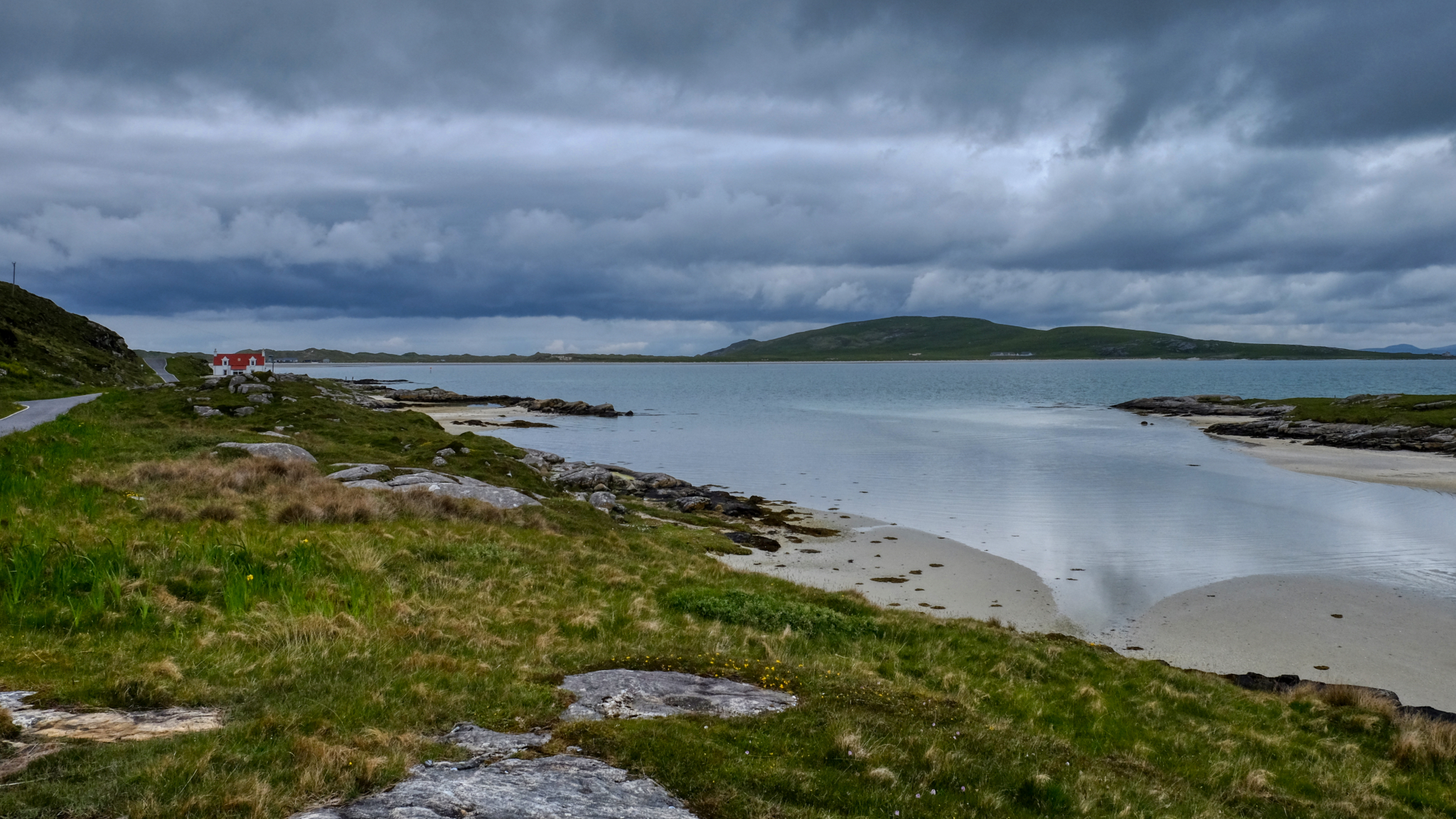 The sight of the small airport drew our attention and we drove along the bay to take a better look.
The sight of the small airport drew our attention and we drove along the bay to take a better look.
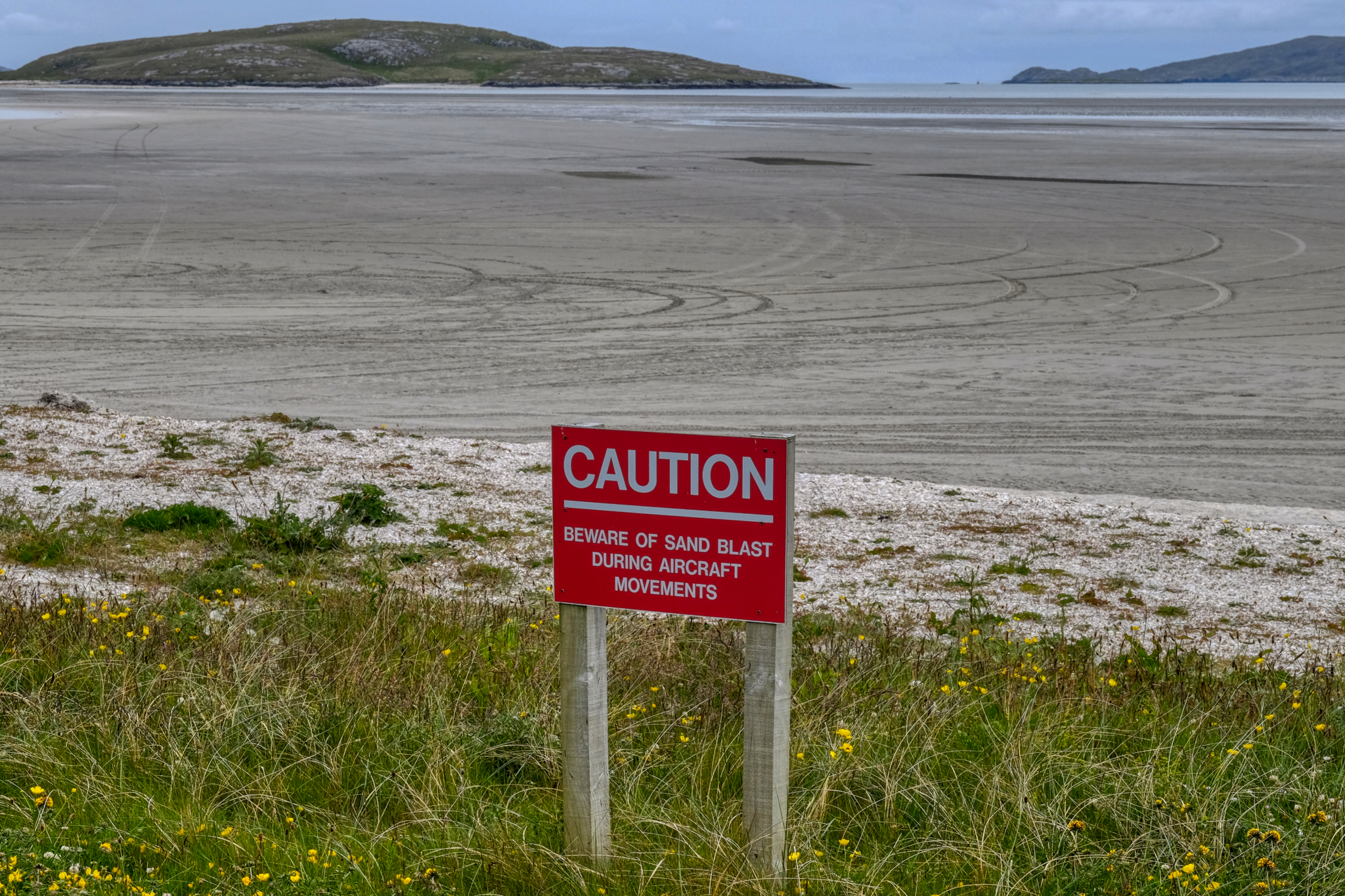 Barra Airport is the only airport in the world with regularly scheduled flights that use a sand beach for a landing strip!
Barra Airport is the only airport in the world with regularly scheduled flights that use a sand beach for a landing strip!
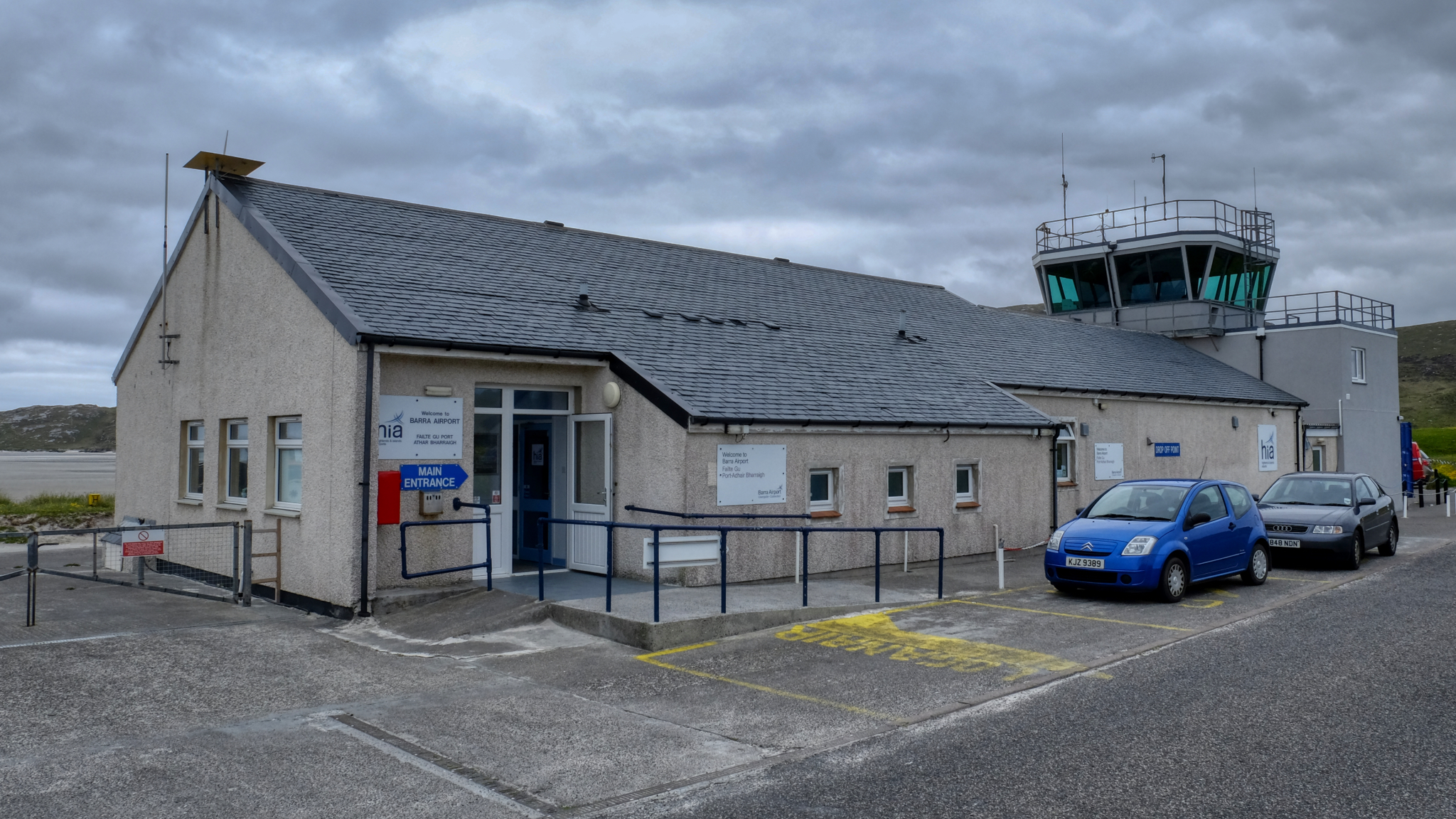 We went in the Barra Airport Terminal . . . for a cup of coffee and a snack. While we were there many people started to show up. There was a plane expected any minute. We stayed to see the big event!
We went in the Barra Airport Terminal . . . for a cup of coffee and a snack. While we were there many people started to show up. There was a plane expected any minute. We stayed to see the big event!
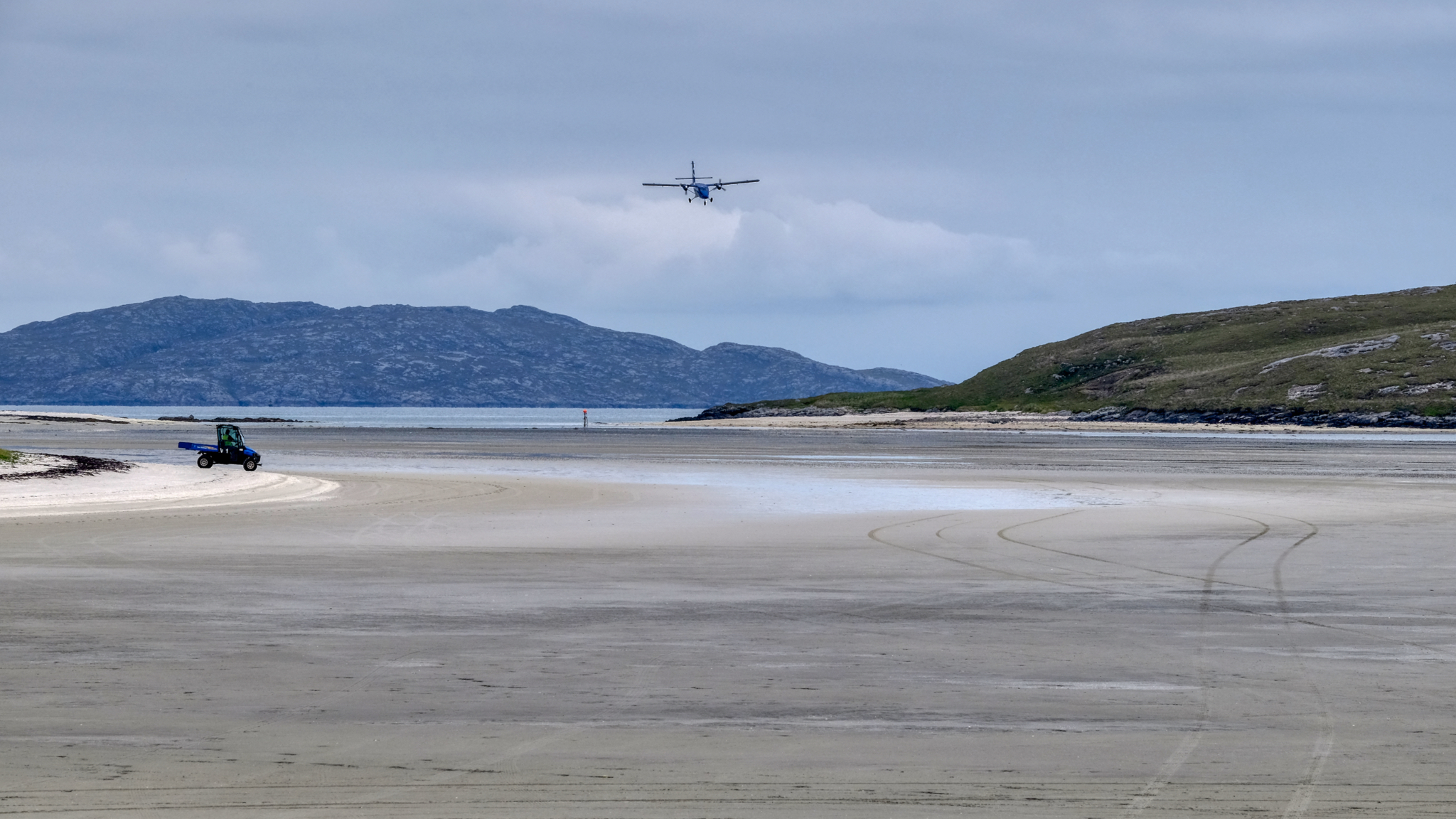 Someone called out, "There it is" . . . and we all turned to look at the airplane approaching from a distance.
Someone called out, "There it is" . . . and we all turned to look at the airplane approaching from a distance.
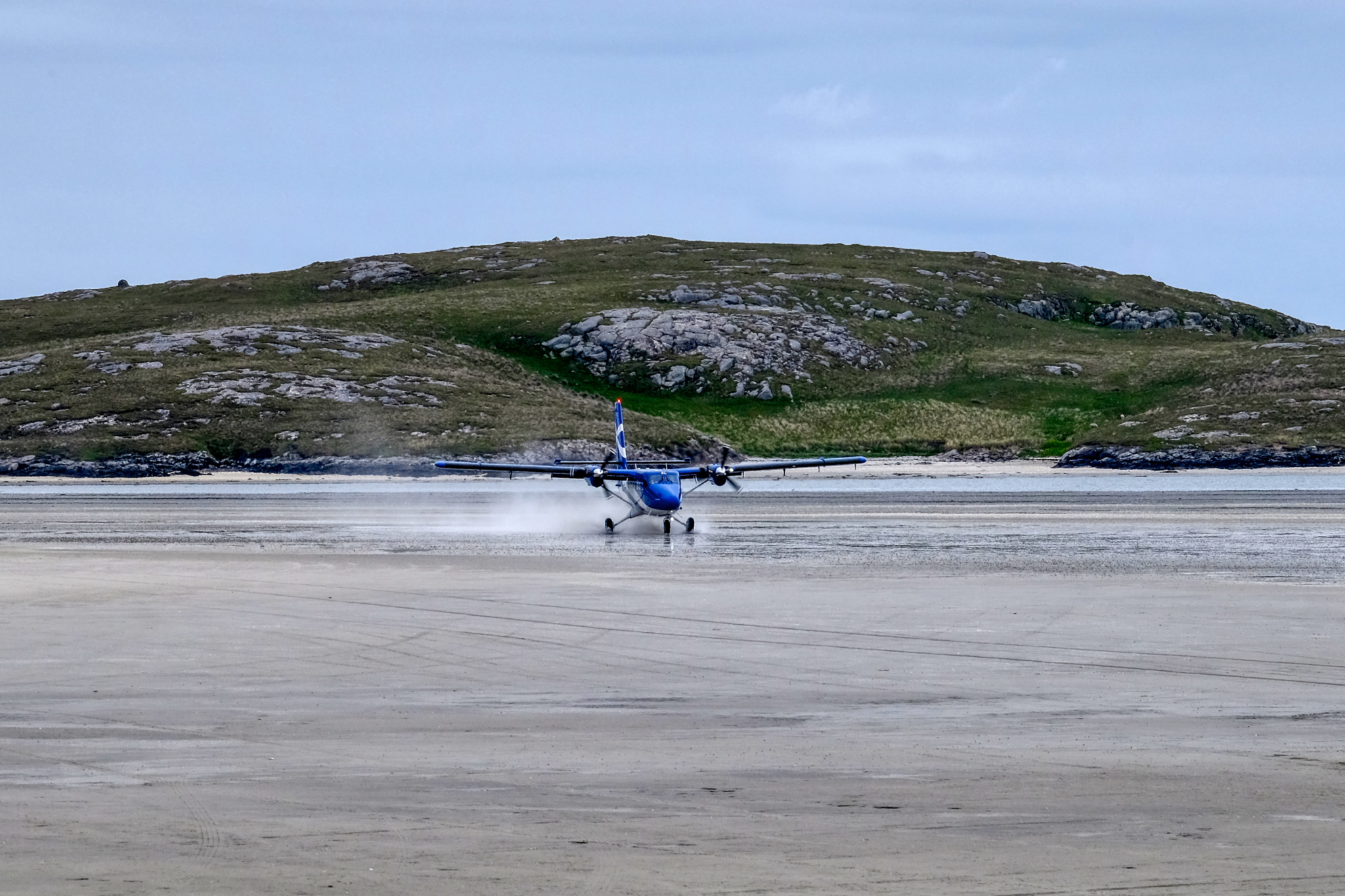 Landing on the wet beach . . .
Landing on the wet beach . . .
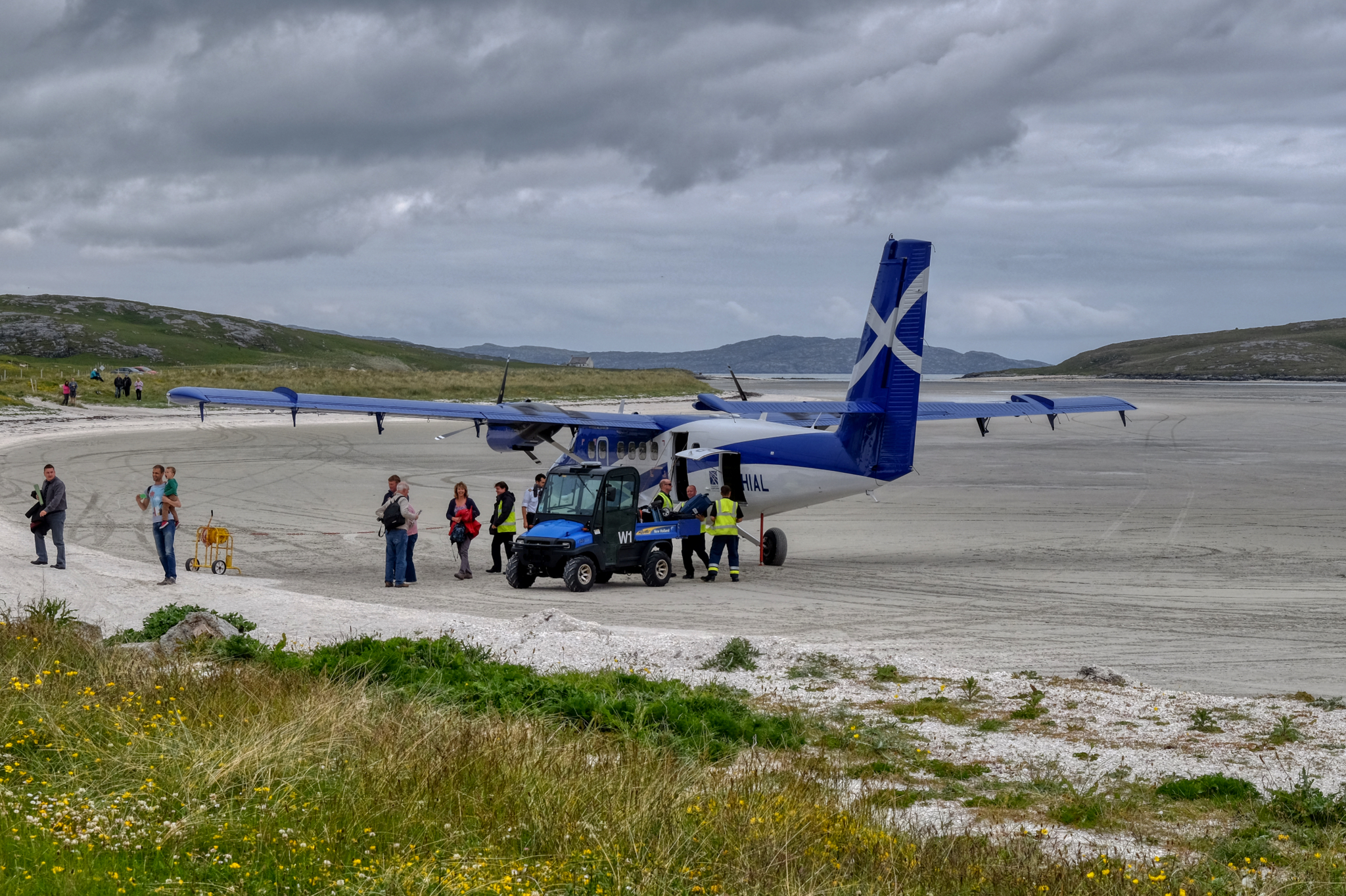 The passengers disembarked onto a sandy runway . . . as they have been doing since 1936. The only destination from this airport is Glasgow.
The passengers disembarked onto a sandy runway . . . as they have been doing since 1936. The only destination from this airport is Glasgow.
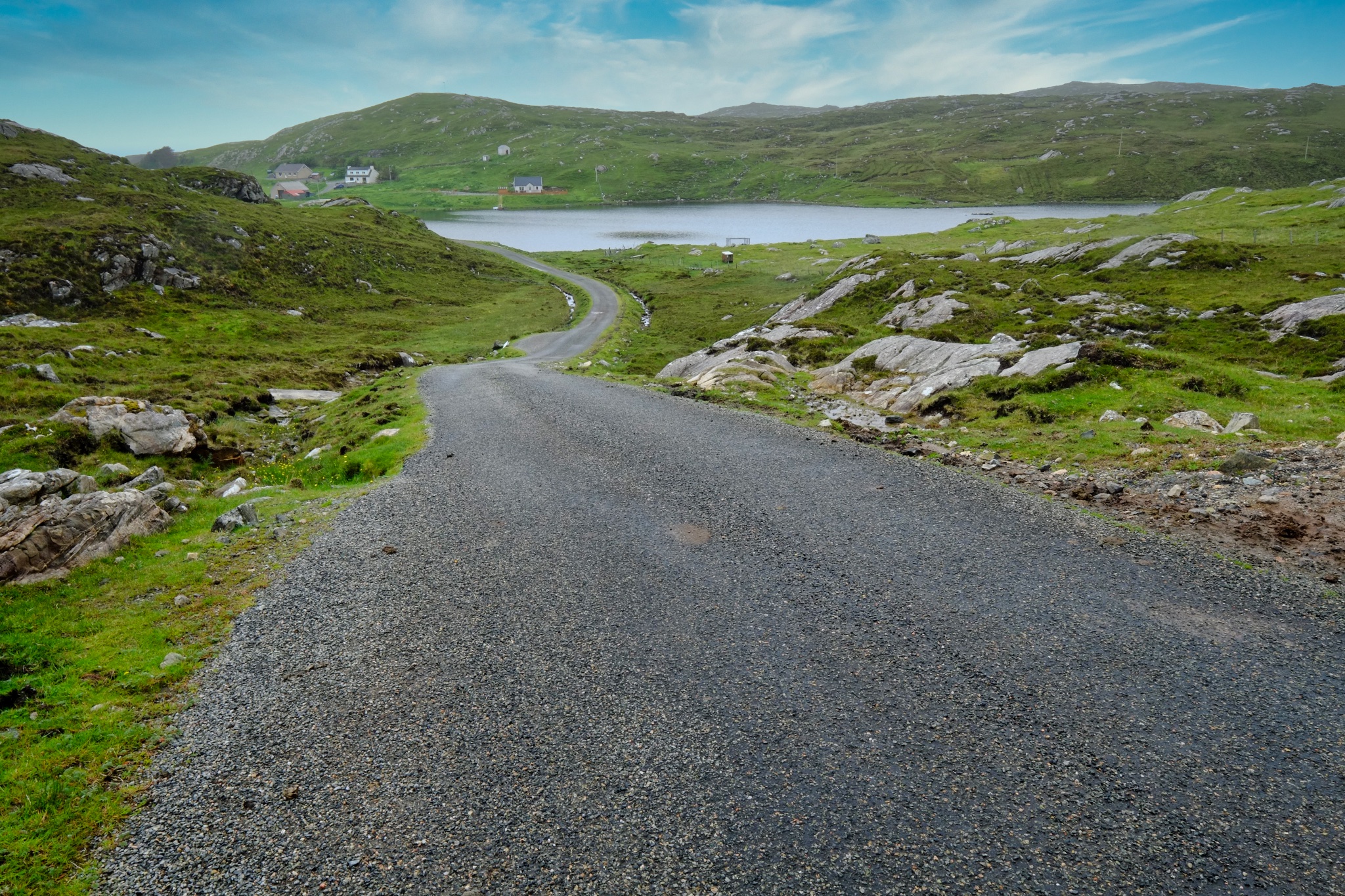 And onward we drove north on these marvelous one lane roads.
And onward we drove north on these marvelous one lane roads.
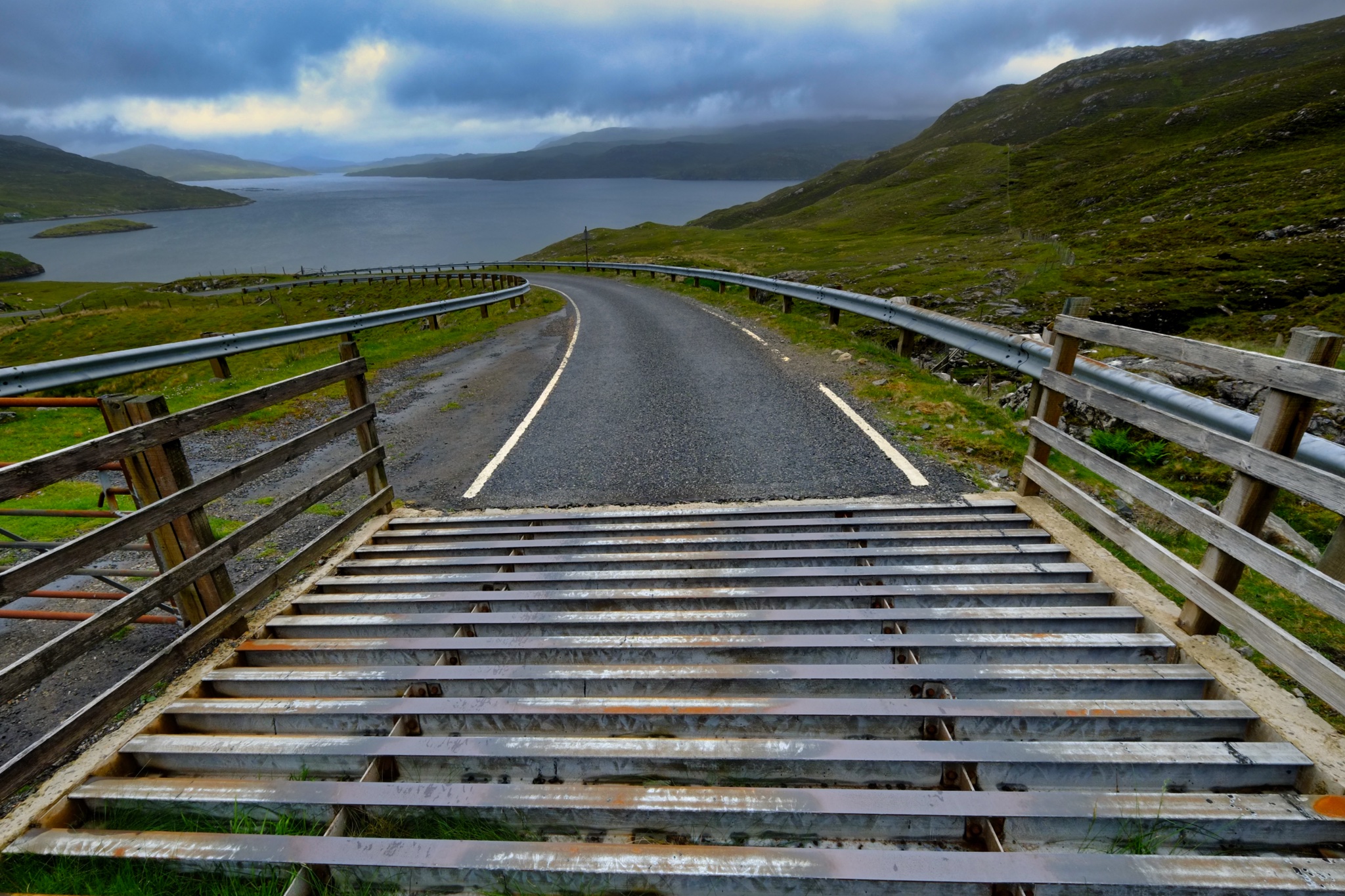 With sheep and Highland cows grazing everywhere, we encountered many of these 'cattle guards.'
With sheep and Highland cows grazing everywhere, we encountered many of these 'cattle guards.'
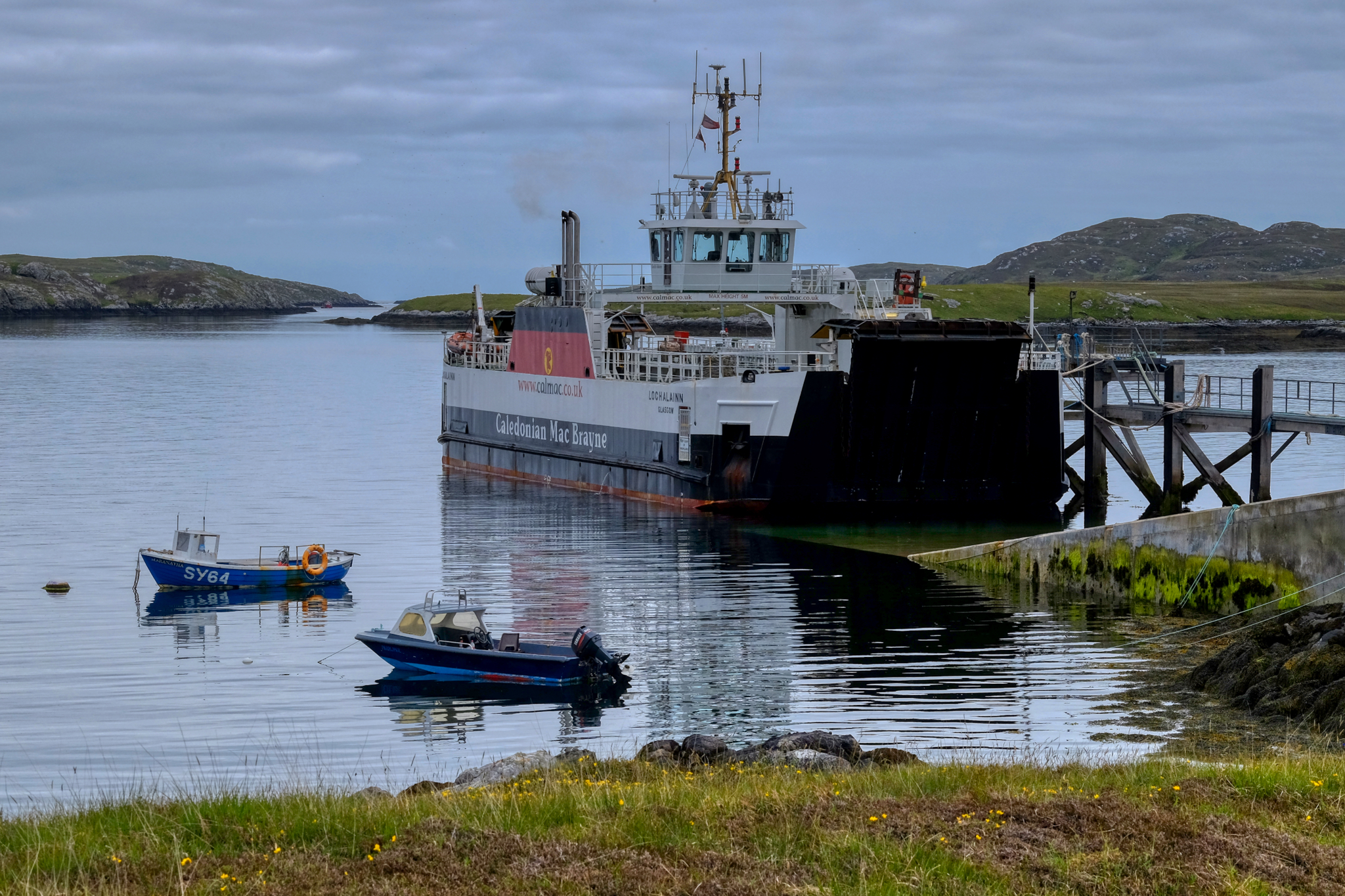 At the northern tip of Barra Island we reached the Ardmhor to Eriskay ferry. There are 5 round trips a day, each carrying only 18 vehicles. With only 90 possible places on this ferry to drive north up through the length of the Outer Hebrides, it is important to book in advance. We had.
At the northern tip of Barra Island we reached the Ardmhor to Eriskay ferry. There are 5 round trips a day, each carrying only 18 vehicles. With only 90 possible places on this ferry to drive north up through the length of the Outer Hebrides, it is important to book in advance. We had.
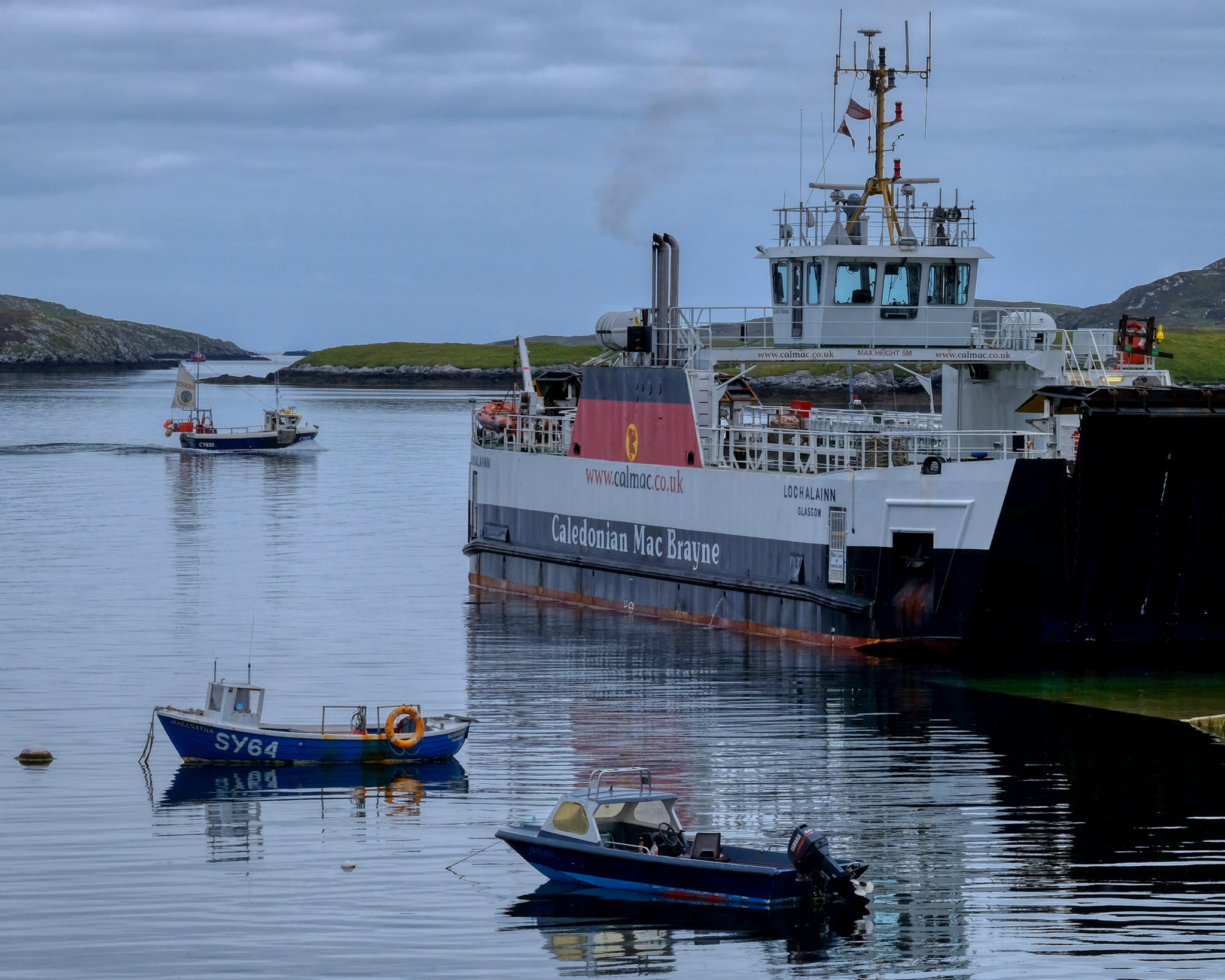 We arrived at the ferry terminal a little early . . . which allowed me some time to explore the area.
We arrived at the ferry terminal a little early . . . which allowed me some time to explore the area.
 Such a remote and fascinating place.
Such a remote and fascinating place.
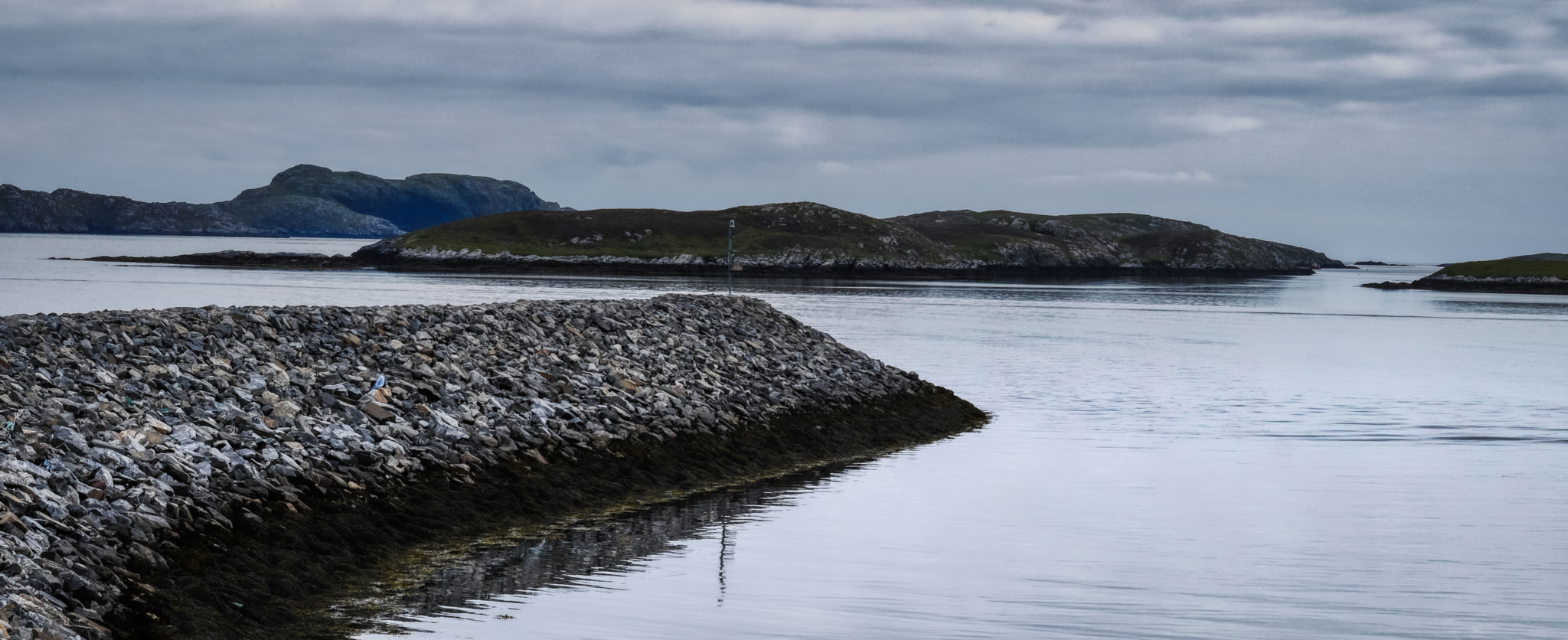 The sea always framed by outcrops of stone islands . . .
The sea always framed by outcrops of stone islands . . .
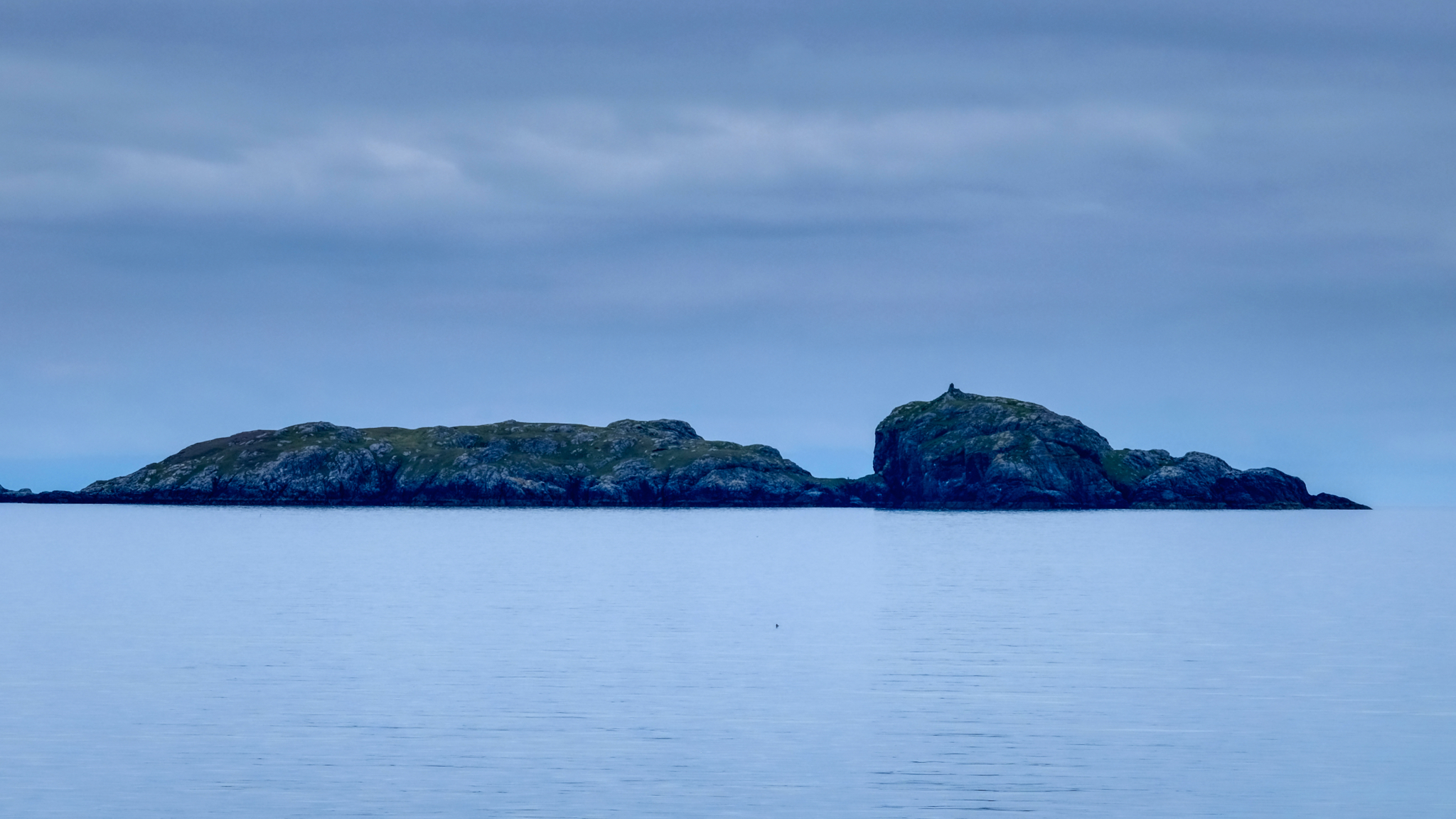 The passage between Barra Island and Eriskay Island was eerily mystical . . .
The passage between Barra Island and Eriskay Island was eerily mystical . . .
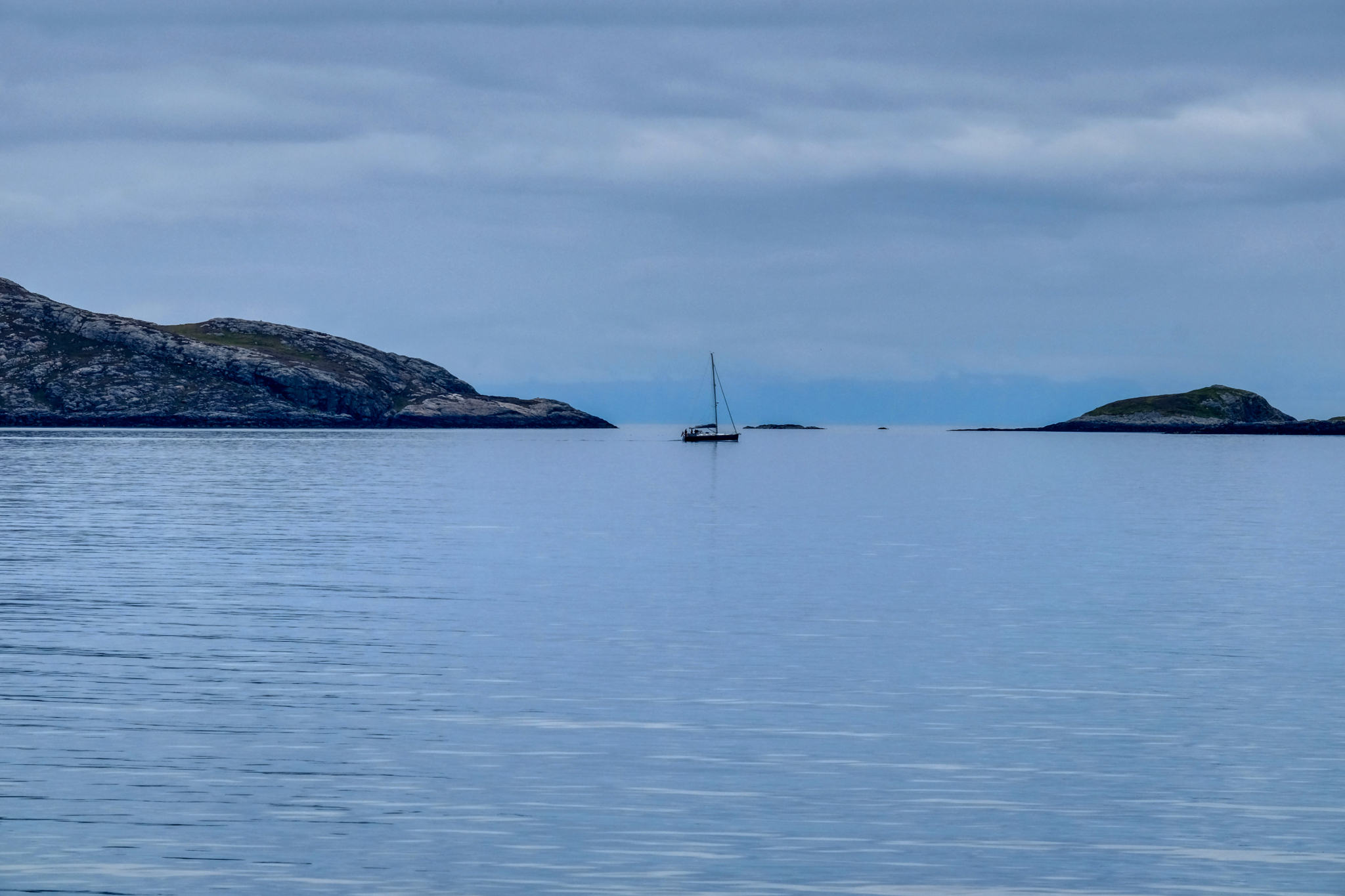 My memory of the passage was of the total silence . . . hardly a sound beyond the quiet thumping of the ferry diesel at work. Calm. Remote.
My memory of the passage was of the total silence . . . hardly a sound beyond the quiet thumping of the ferry diesel at work. Calm. Remote.
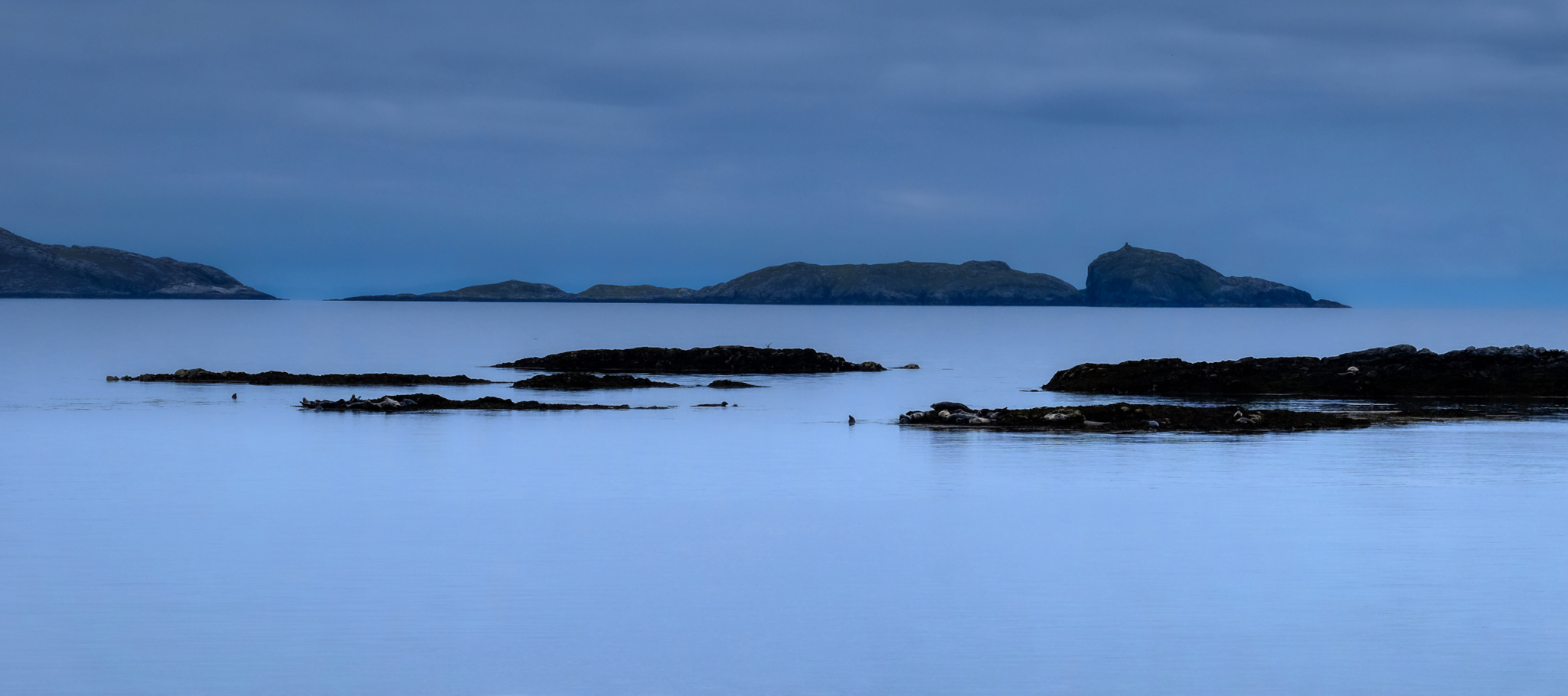 There was a bit of commotion among my fellow passengers. Someone remarked, "Look. Seals." And there they were.
There was a bit of commotion among my fellow passengers. Someone remarked, "Look. Seals." And there they were.
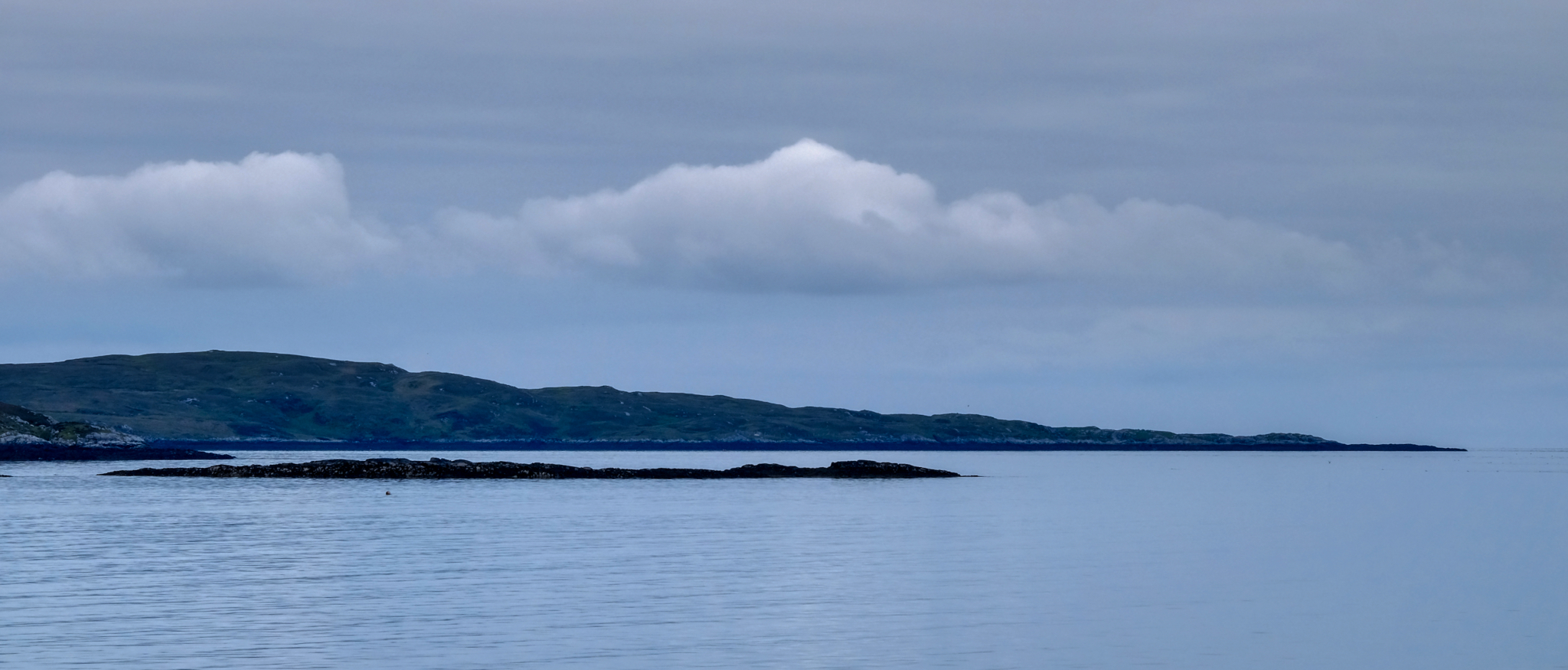 A strange, captivating, natural beauty.
A strange, captivating, natural beauty.
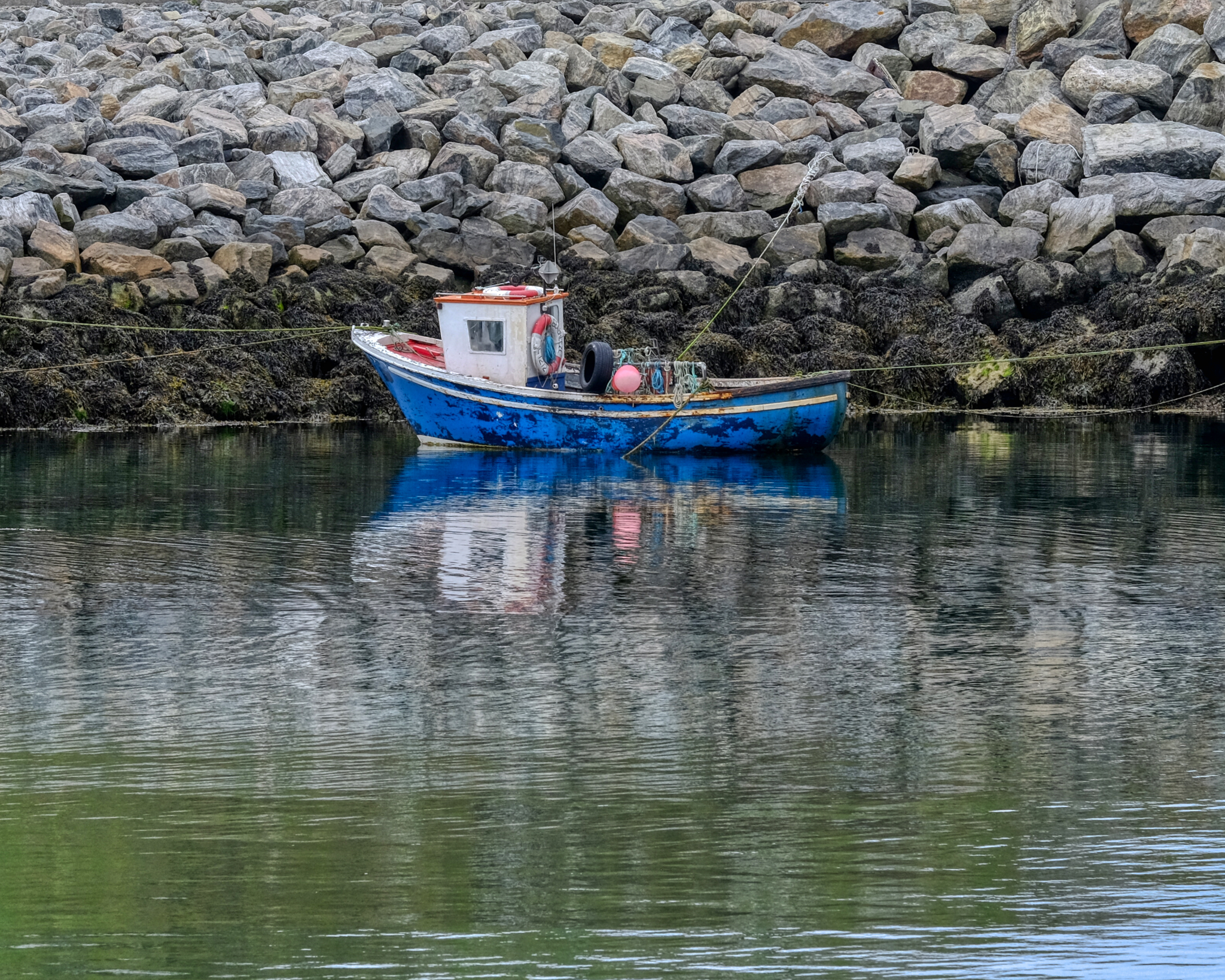 Arriving on the Isle of Eriskay.
Arriving on the Isle of Eriskay.
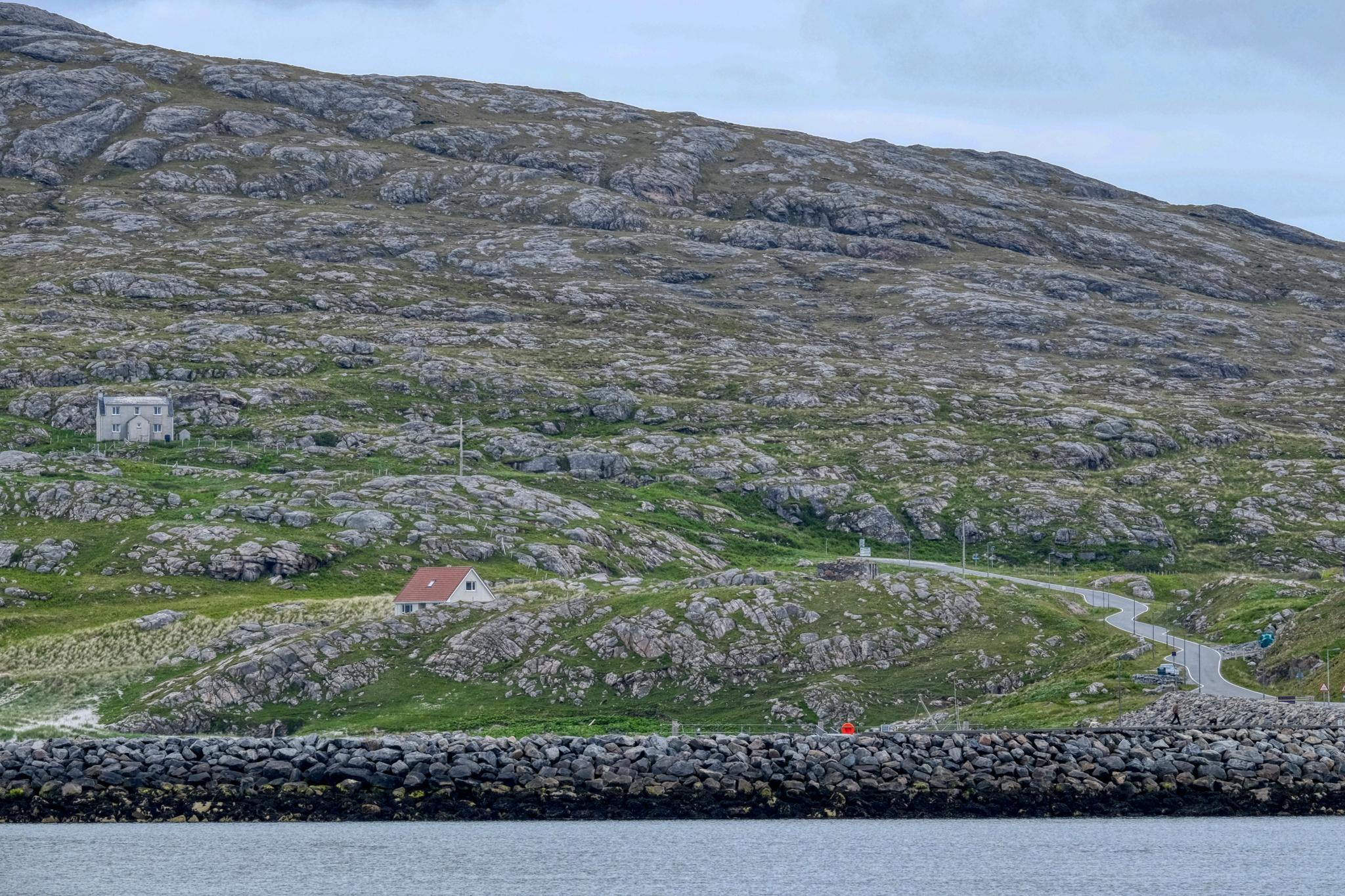 Rocky, barren hillside . . . and the one-lane road that will take us further up the Outer Hebrides chain of islands.
Rocky, barren hillside . . . and the one-lane road that will take us further up the Outer Hebrides chain of islands.
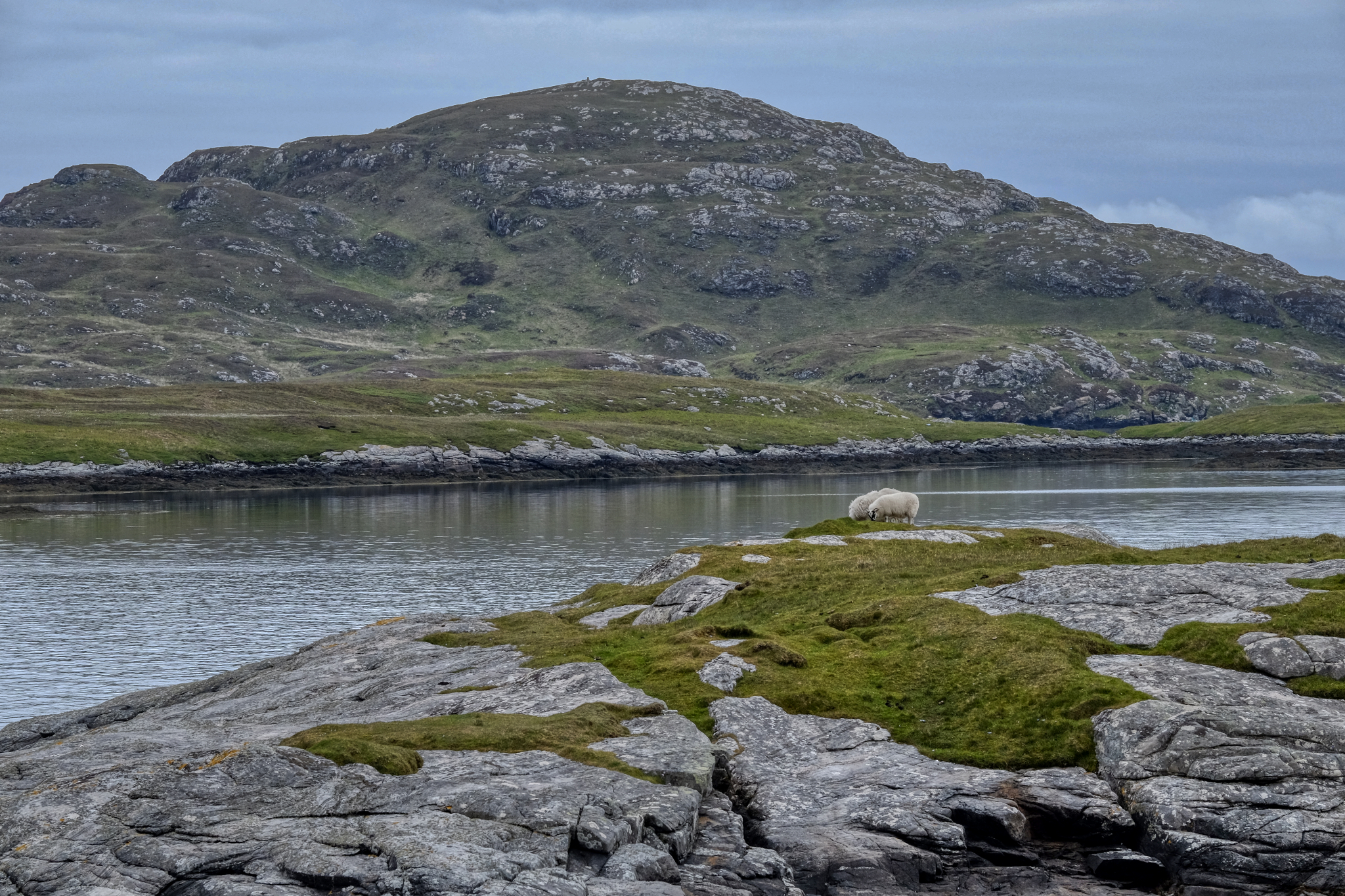 We quickly crossed Eriskay Island and drove up and across a causeway to South Uist Island.
We quickly crossed Eriskay Island and drove up and across a causeway to South Uist Island.
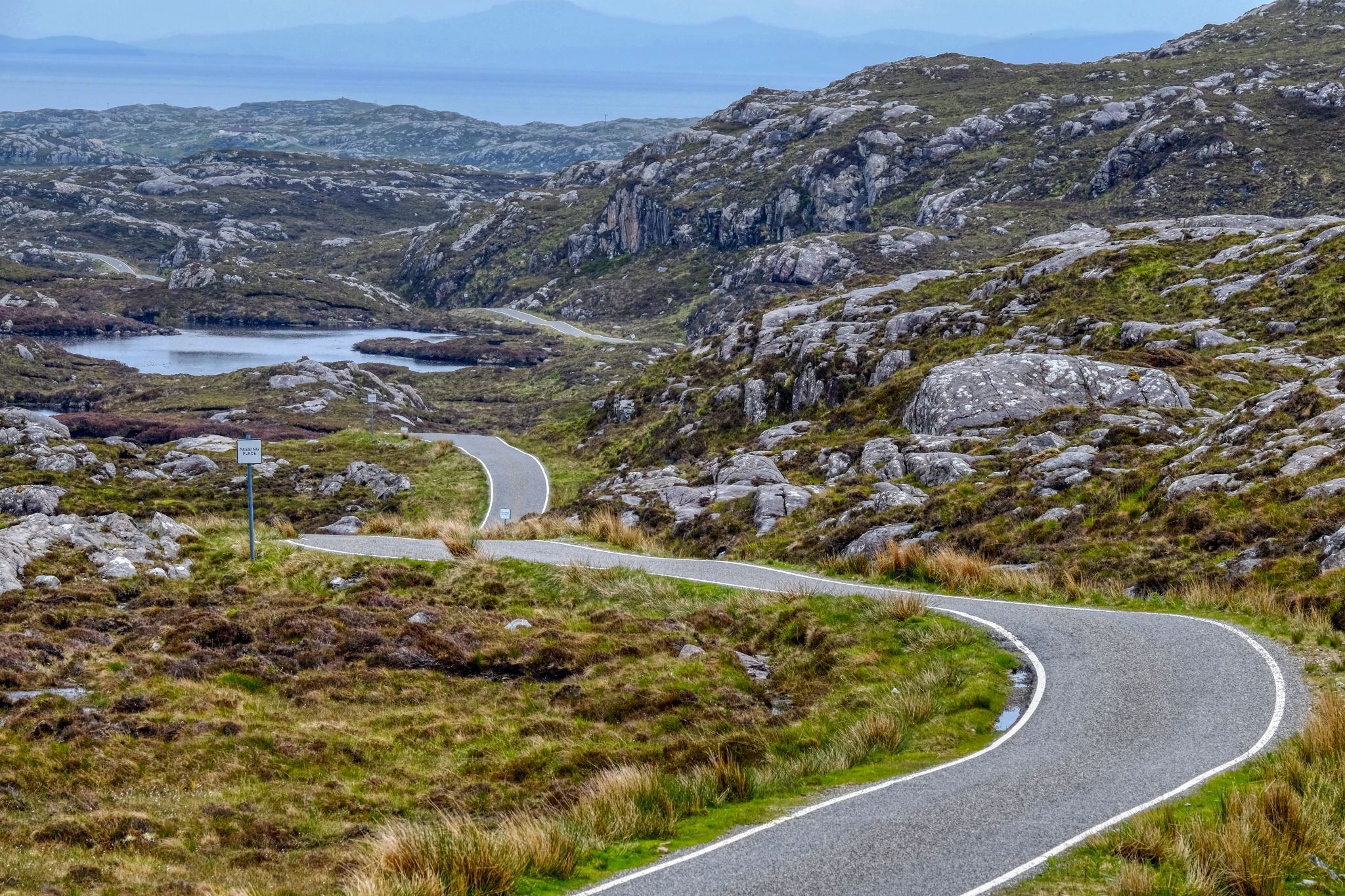 I absolutely loved driving on these narrow, winding, one-lane roads through this unique topography.
I absolutely loved driving on these narrow, winding, one-lane roads through this unique topography.
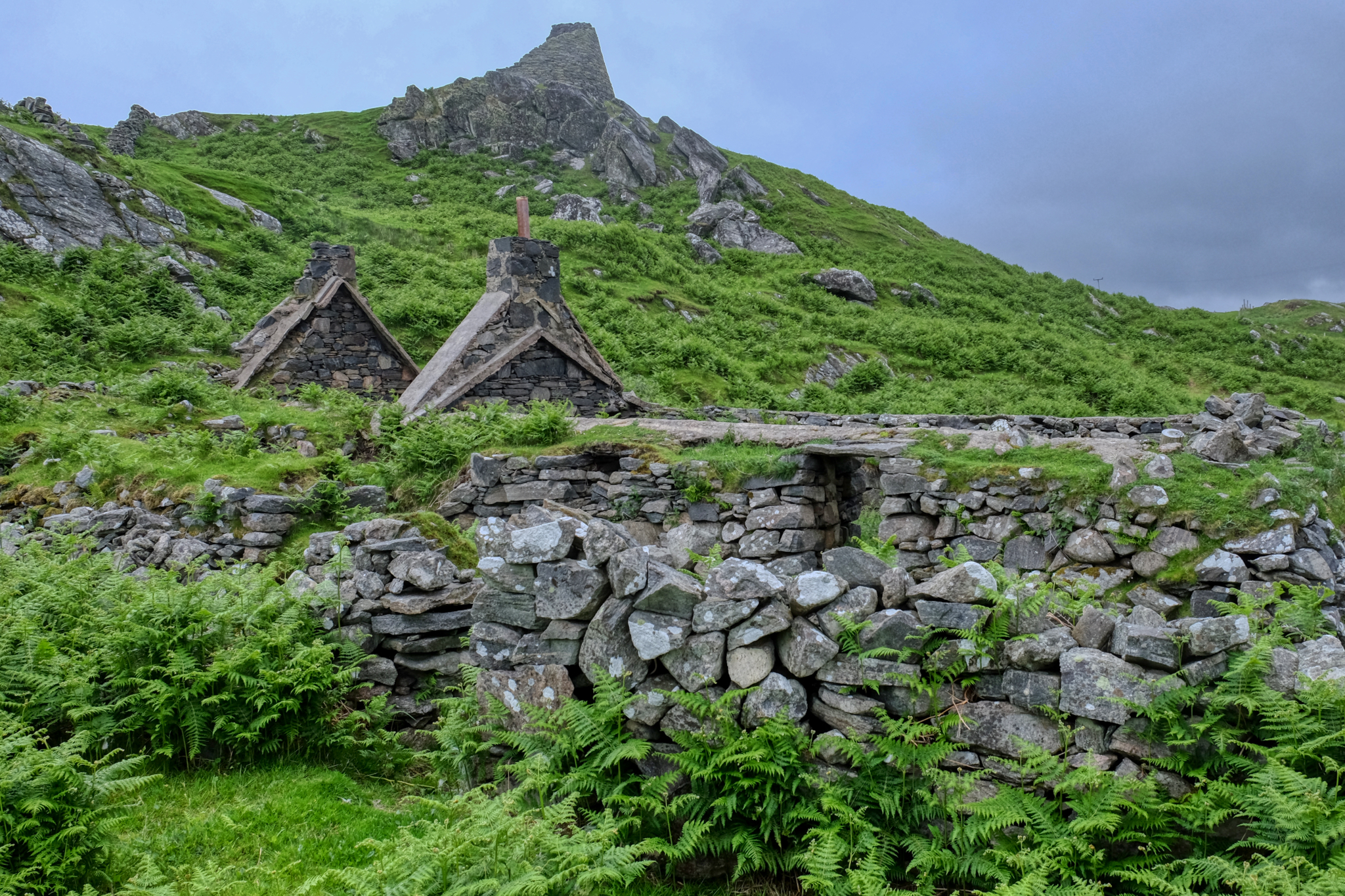 The remains of an old stone crofters house . . . and a stone tower on the hilltop.
The remains of an old stone crofters house . . . and a stone tower on the hilltop.
 Midsummer flowers, grey skies, dilapidated stone ruins . . . . The Isle of Lewis.
Midsummer flowers, grey skies, dilapidated stone ruins . . . . The Isle of Lewis.
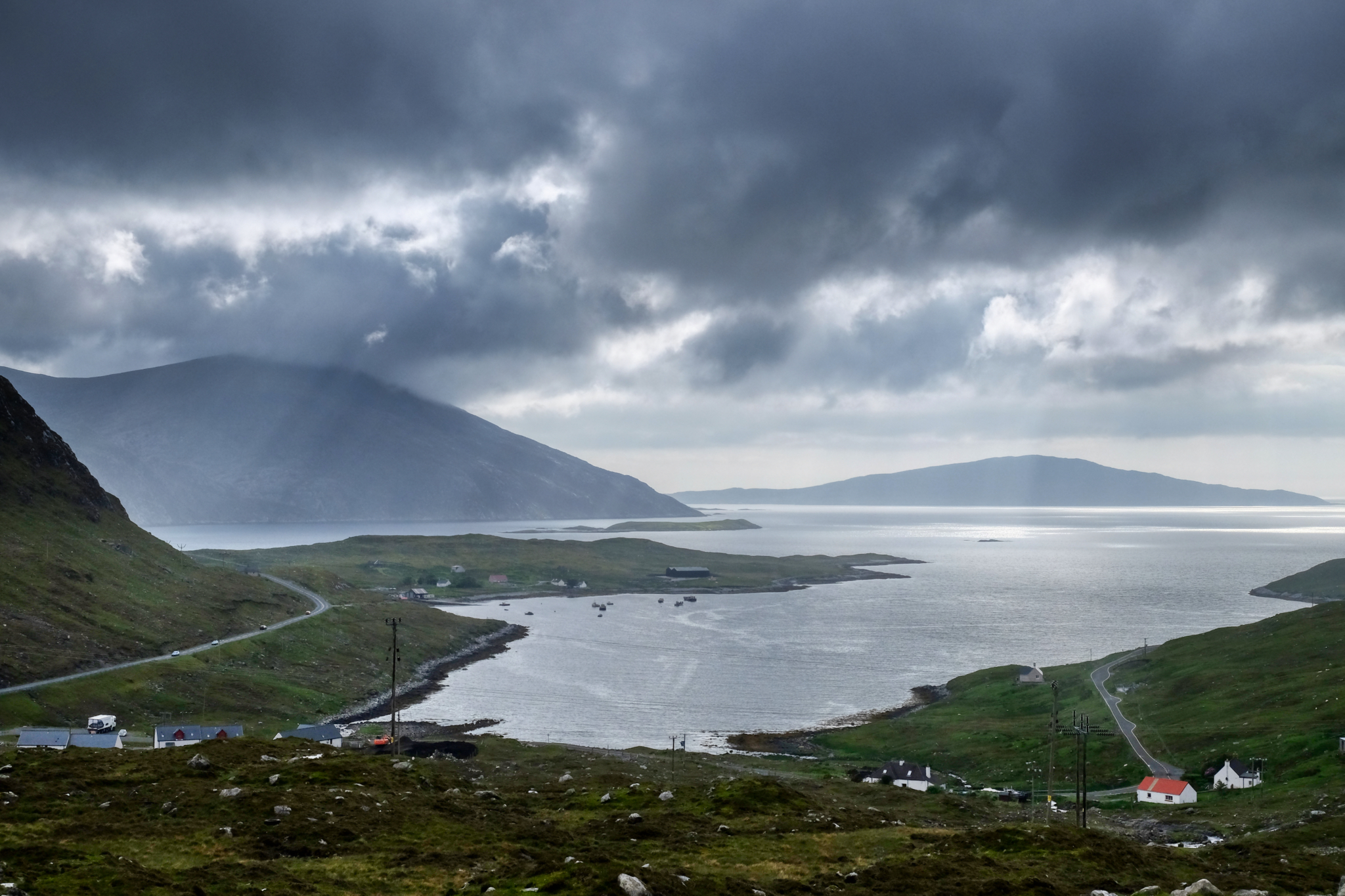 In and around mountain passes, sudden grand views out across the bays to the outlying islands. Magnificent scenery. Like no other place I have ever been.
In and around mountain passes, sudden grand views out across the bays to the outlying islands. Magnificent scenery. Like no other place I have ever been.
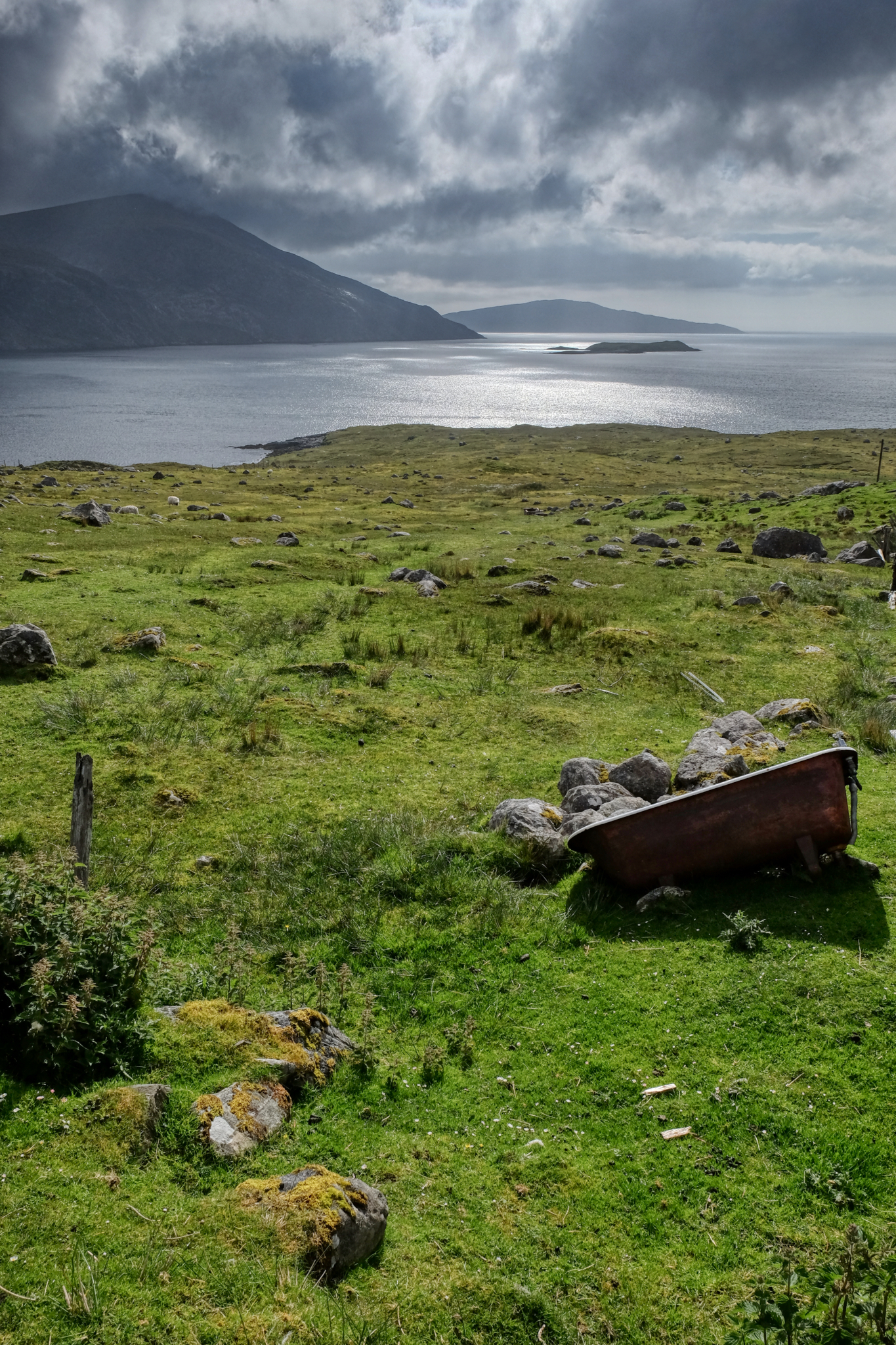 Grand views like no place else.
Grand views like no place else.
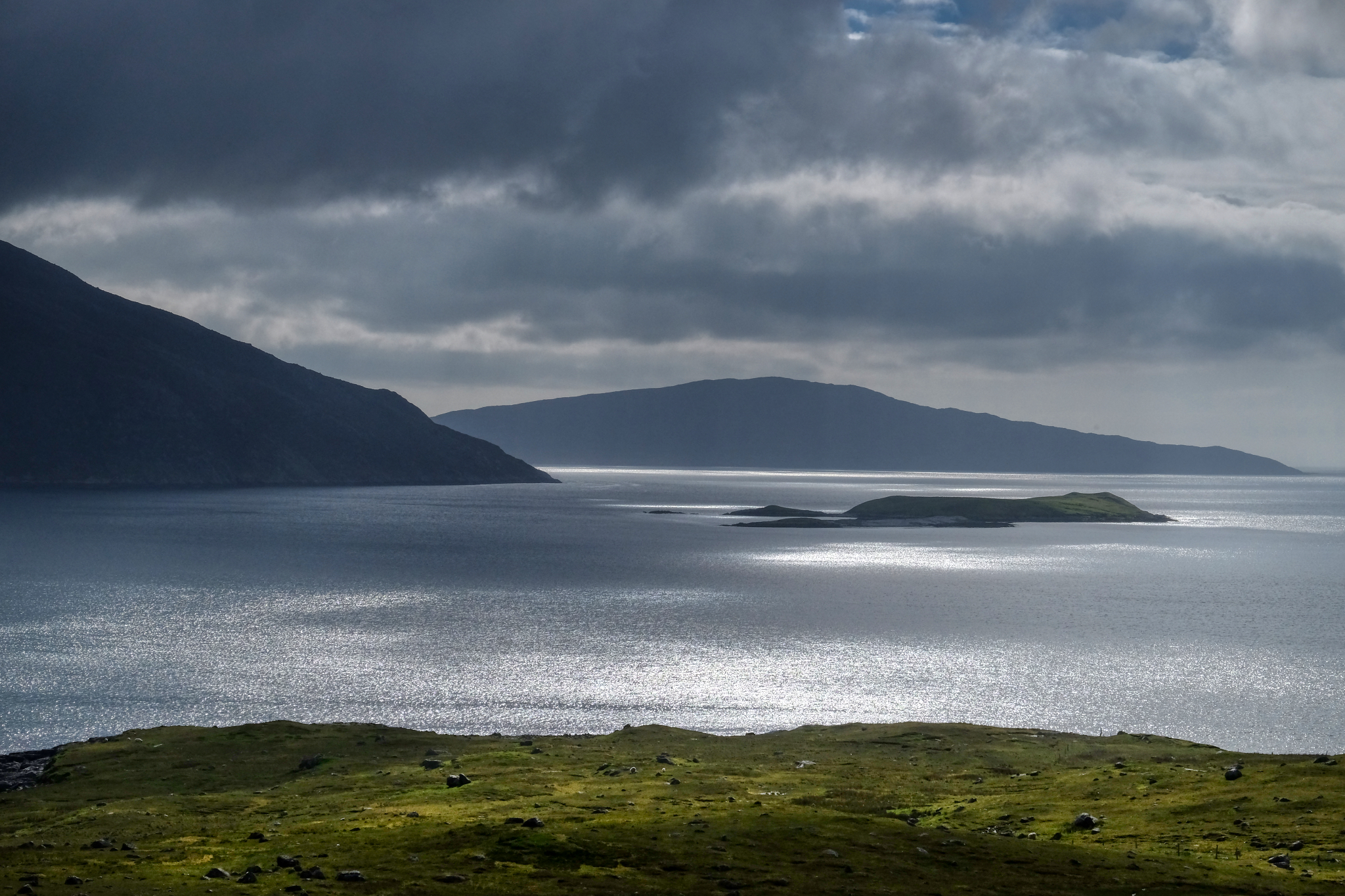 Patches of light on the sea . . .
Patches of light on the sea . . .
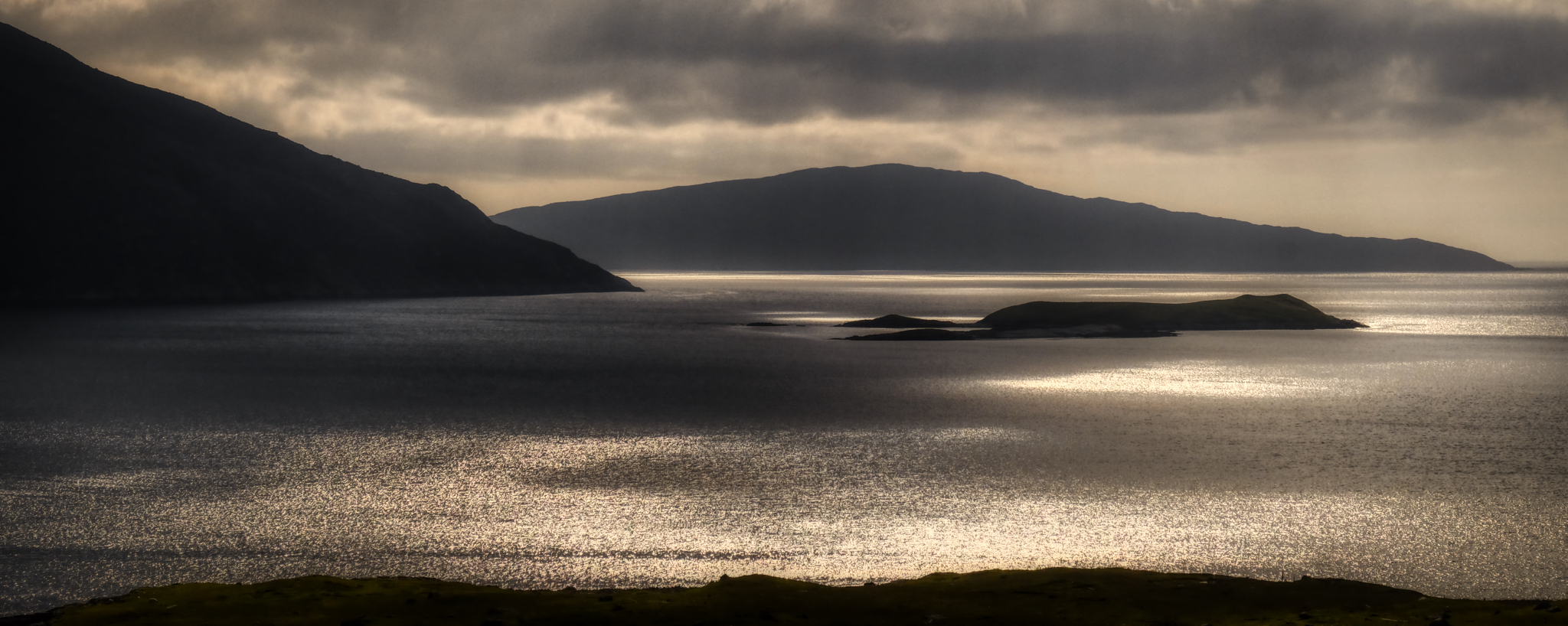 I am not usually partial to added photo 'artsy' technique, but this scene seemed to demand a sepia tone. Amazing.
I am not usually partial to added photo 'artsy' technique, but this scene seemed to demand a sepia tone. Amazing.
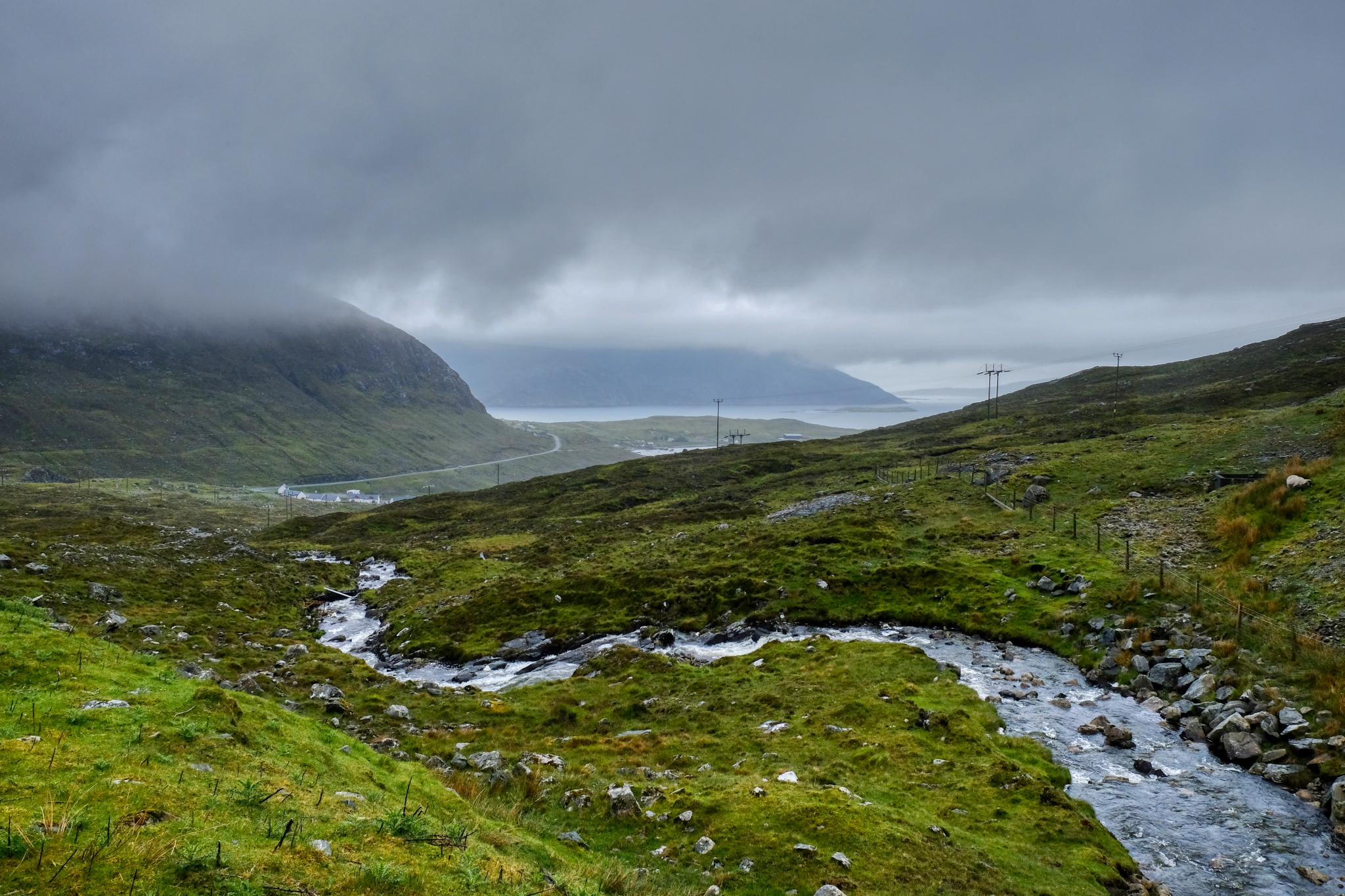 Driving up the small winding road along side a rushing stream . . . .
Driving up the small winding road along side a rushing stream . . . .
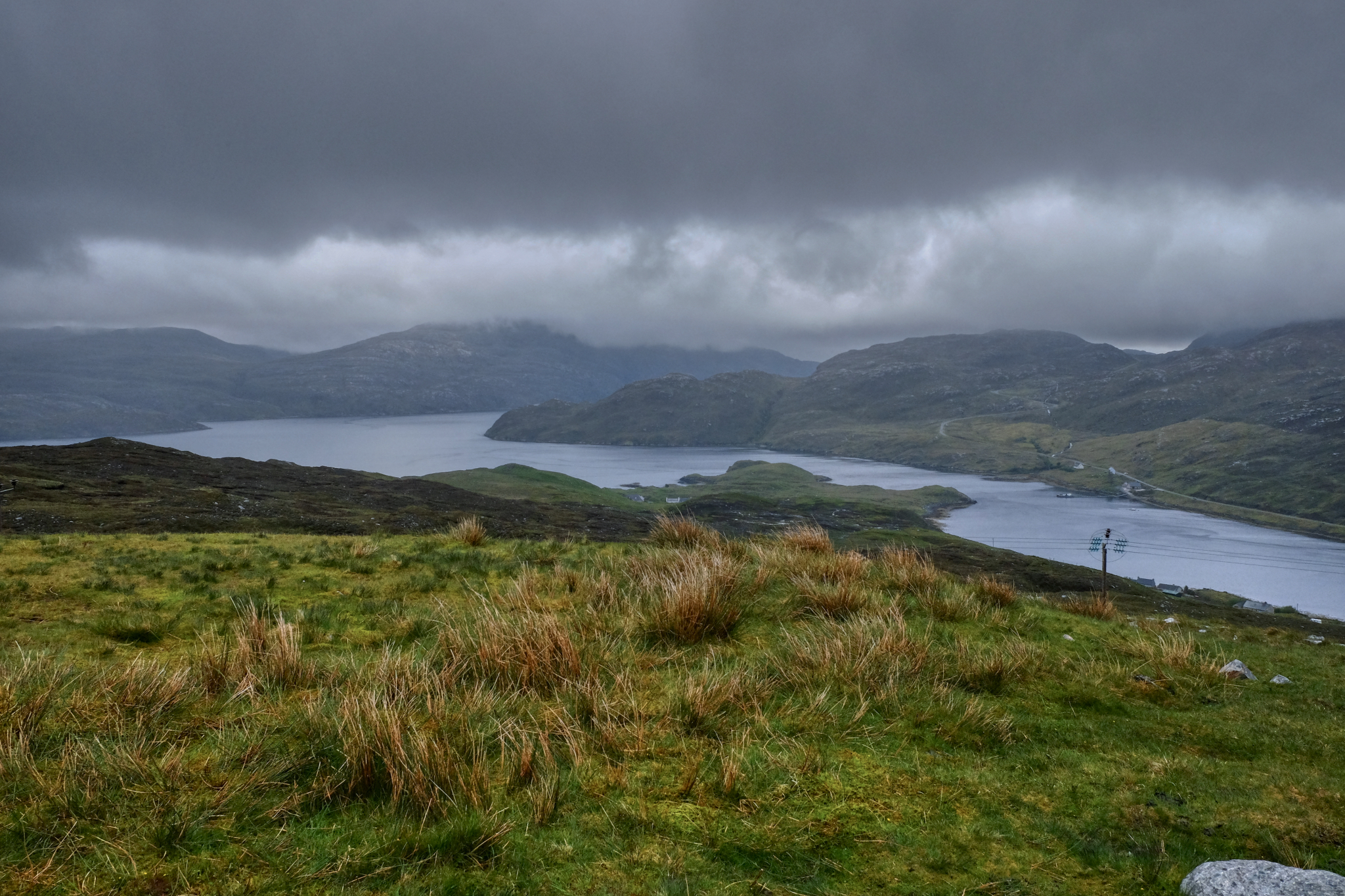 And around the bend at the hilltop . . . another magnificent view of a picturesque inlet . . . in the rain.
And around the bend at the hilltop . . . another magnificent view of a picturesque inlet . . . in the rain.
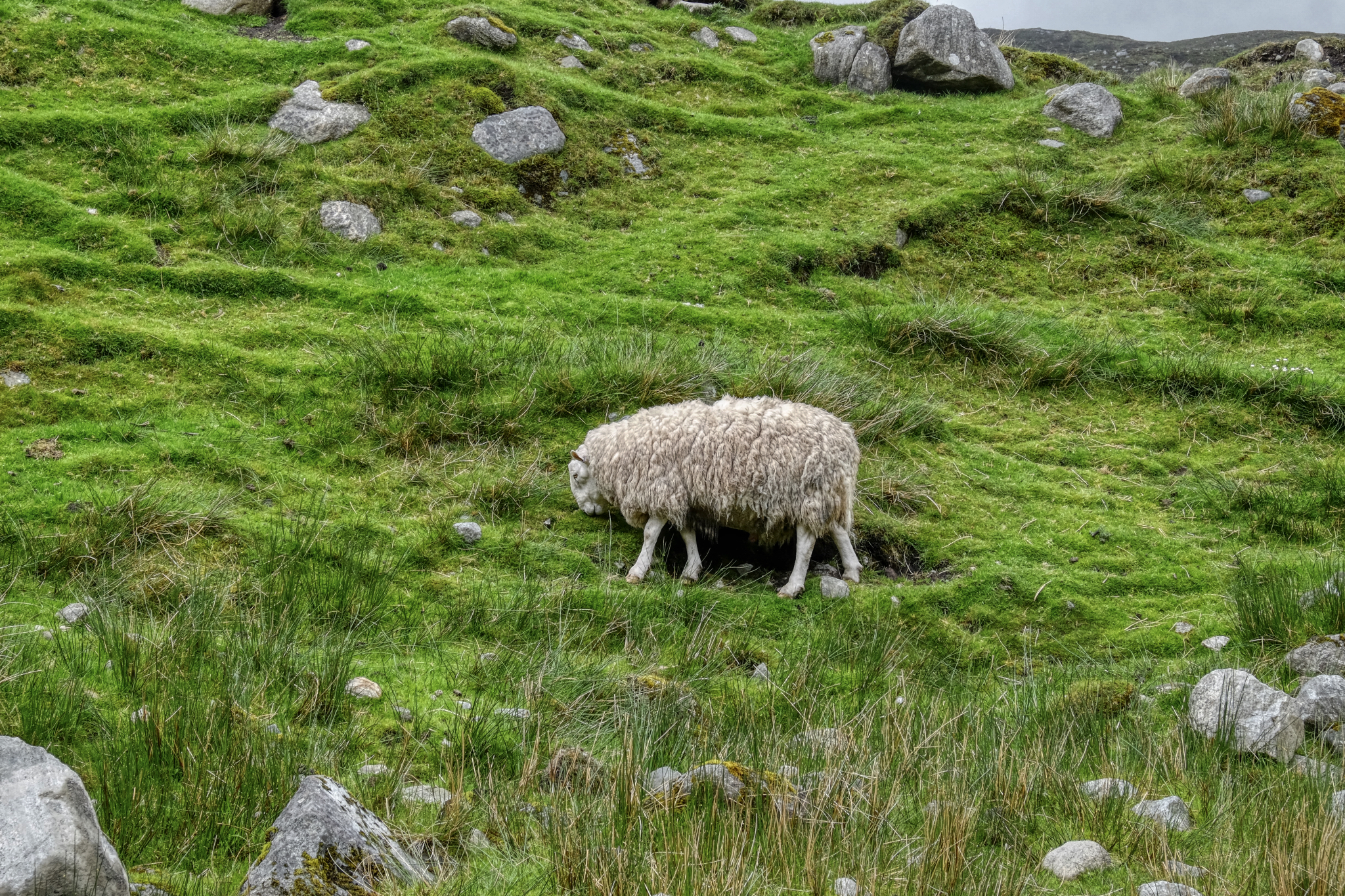 Wet sheep . . . everywhere . . .
Wet sheep . . . everywhere . . .
 Wild Hebridean stream running down out of the rugged hills.
Wild Hebridean stream running down out of the rugged hills.
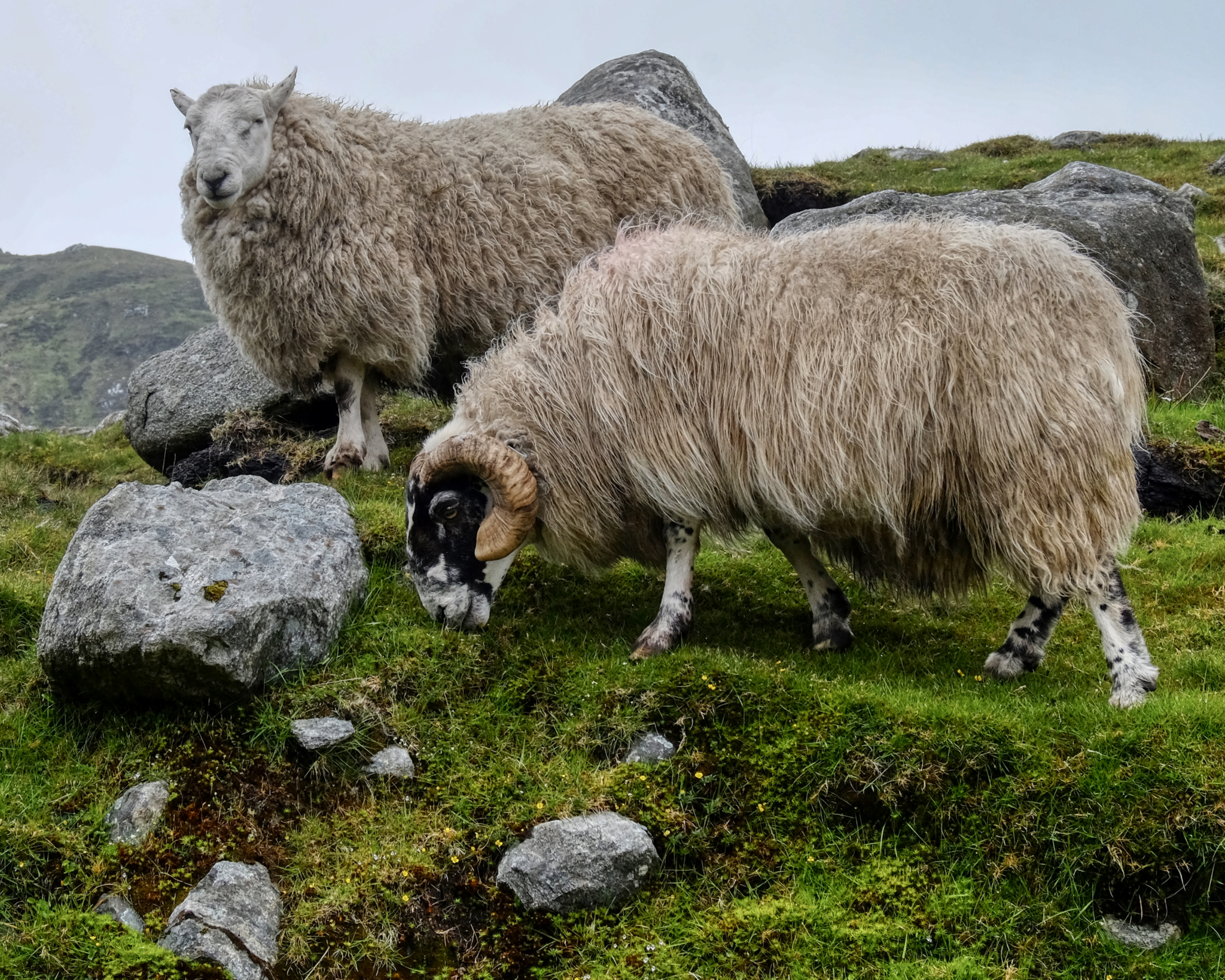 Portrait of two wet sheep. Why not?
Portrait of two wet sheep. Why not?
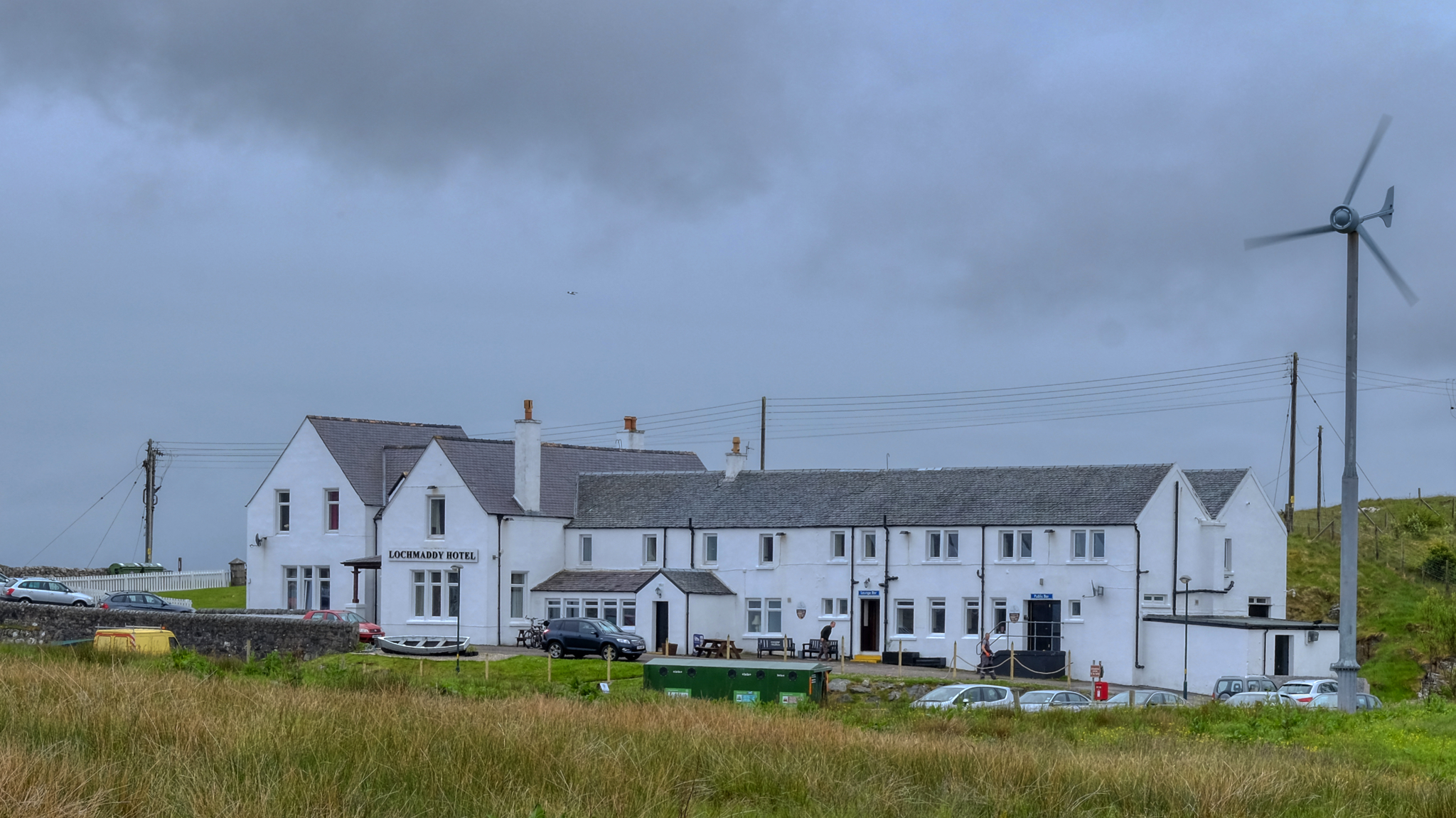 We spent one night at the charming and remote Lochmaddy Hotel on North Uist Island.
We spent one night at the charming and remote Lochmaddy Hotel on North Uist Island.
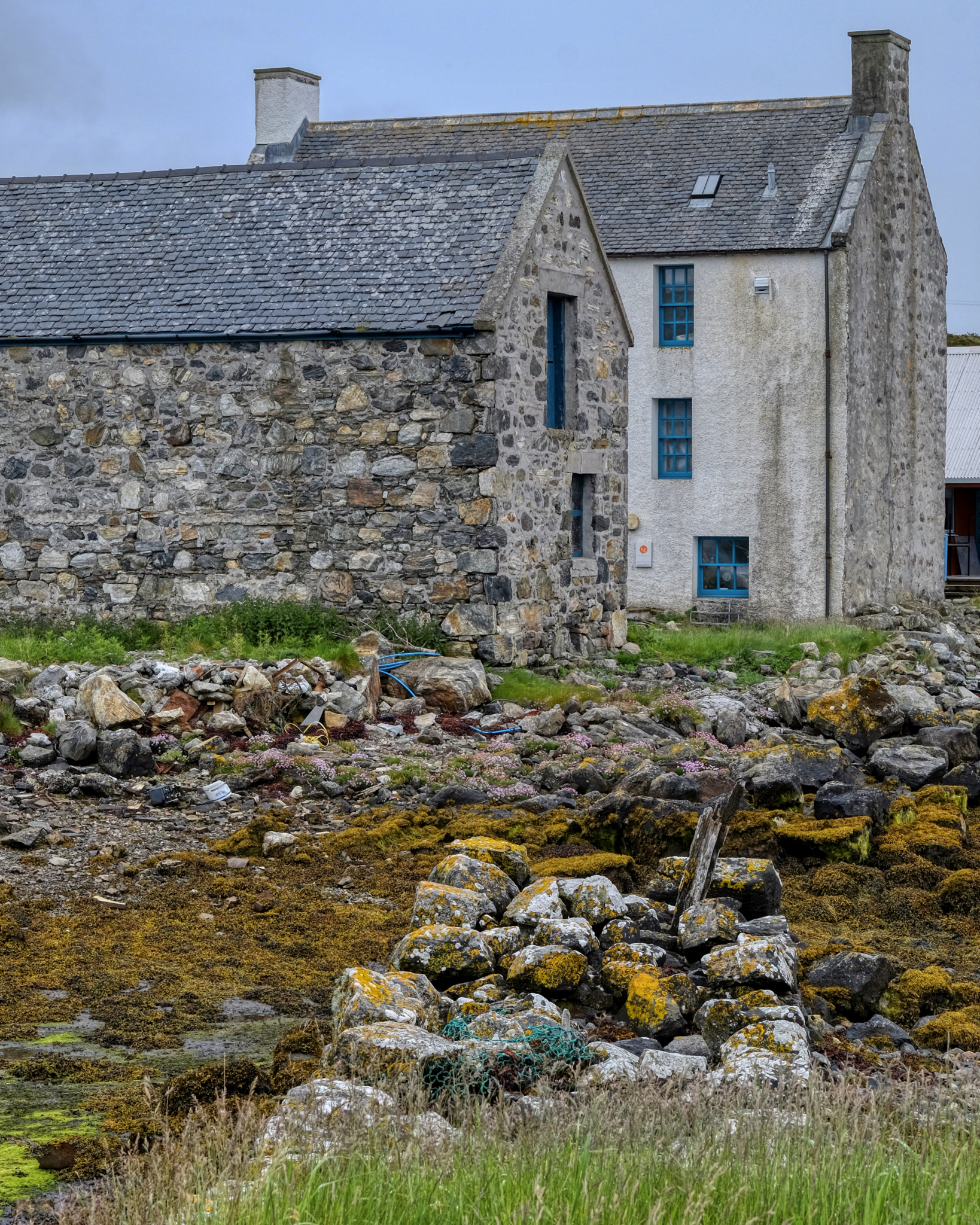 Out along the rocky bay.
Out along the rocky bay.
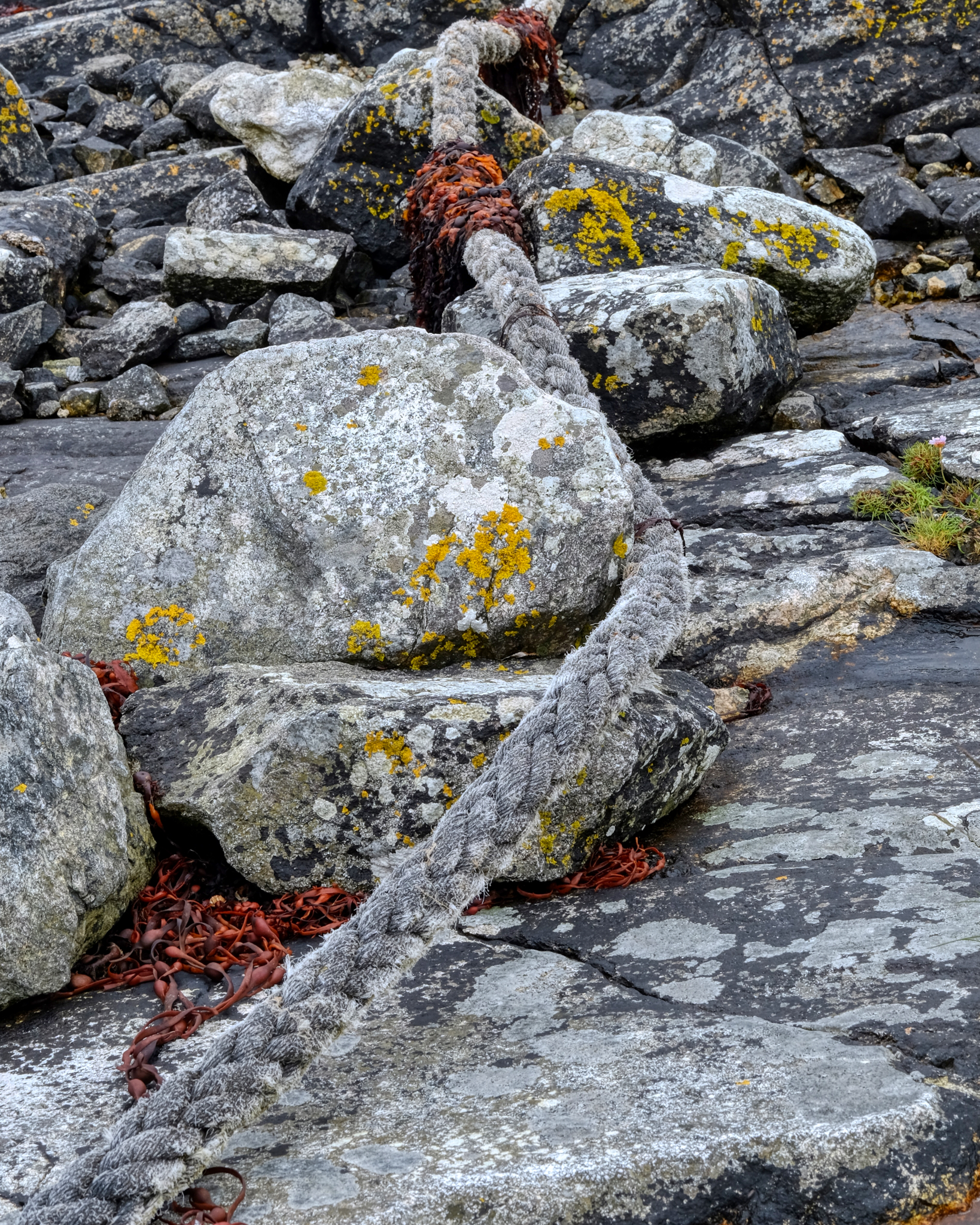 Rope mooring and stones.
Rope mooring and stones.
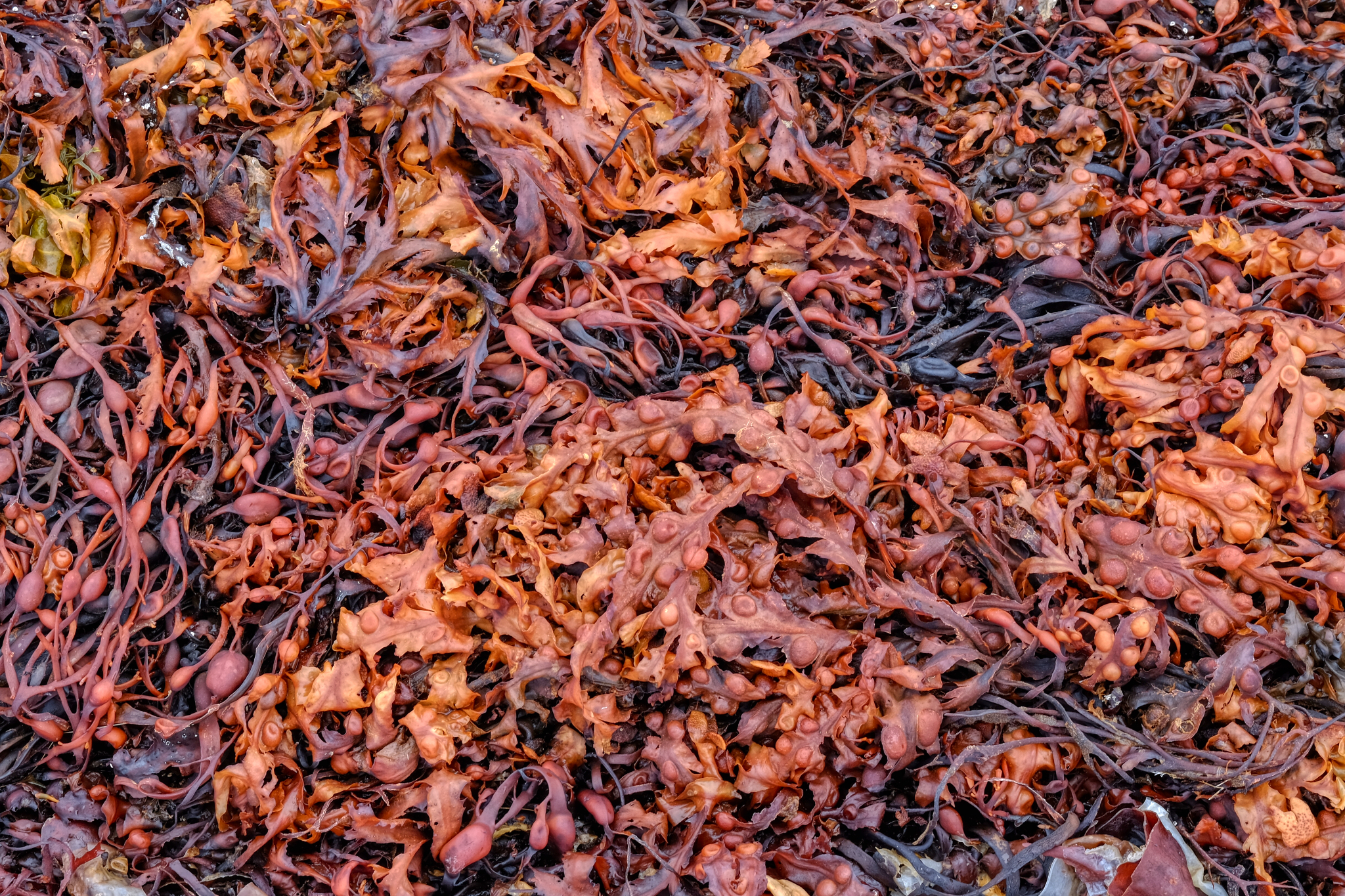 Incredibly fascinating seaweed in a North Uist bay.
Incredibly fascinating seaweed in a North Uist bay.
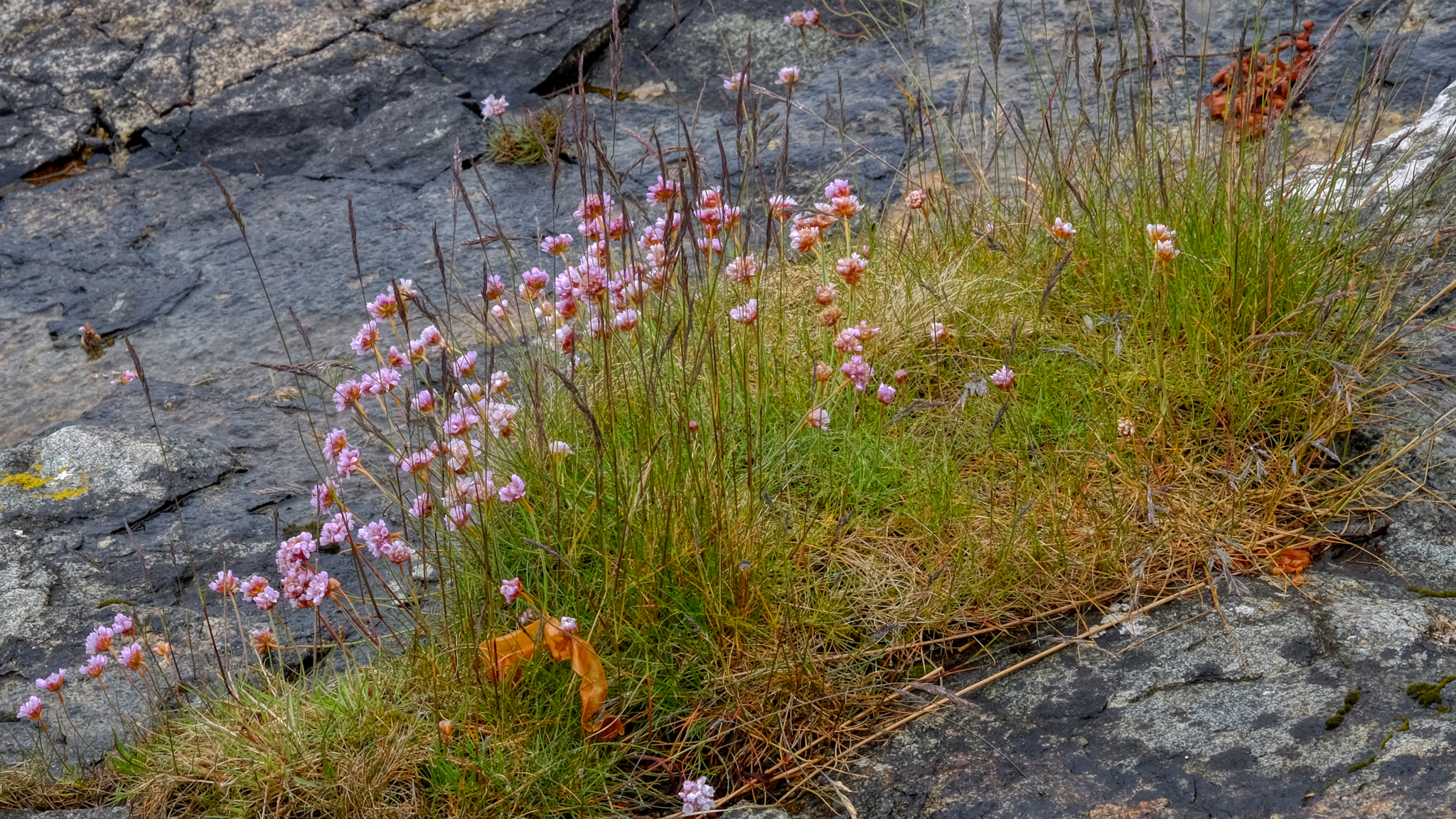 Wild flowers growing in the stony shore.
Wild flowers growing in the stony shore.
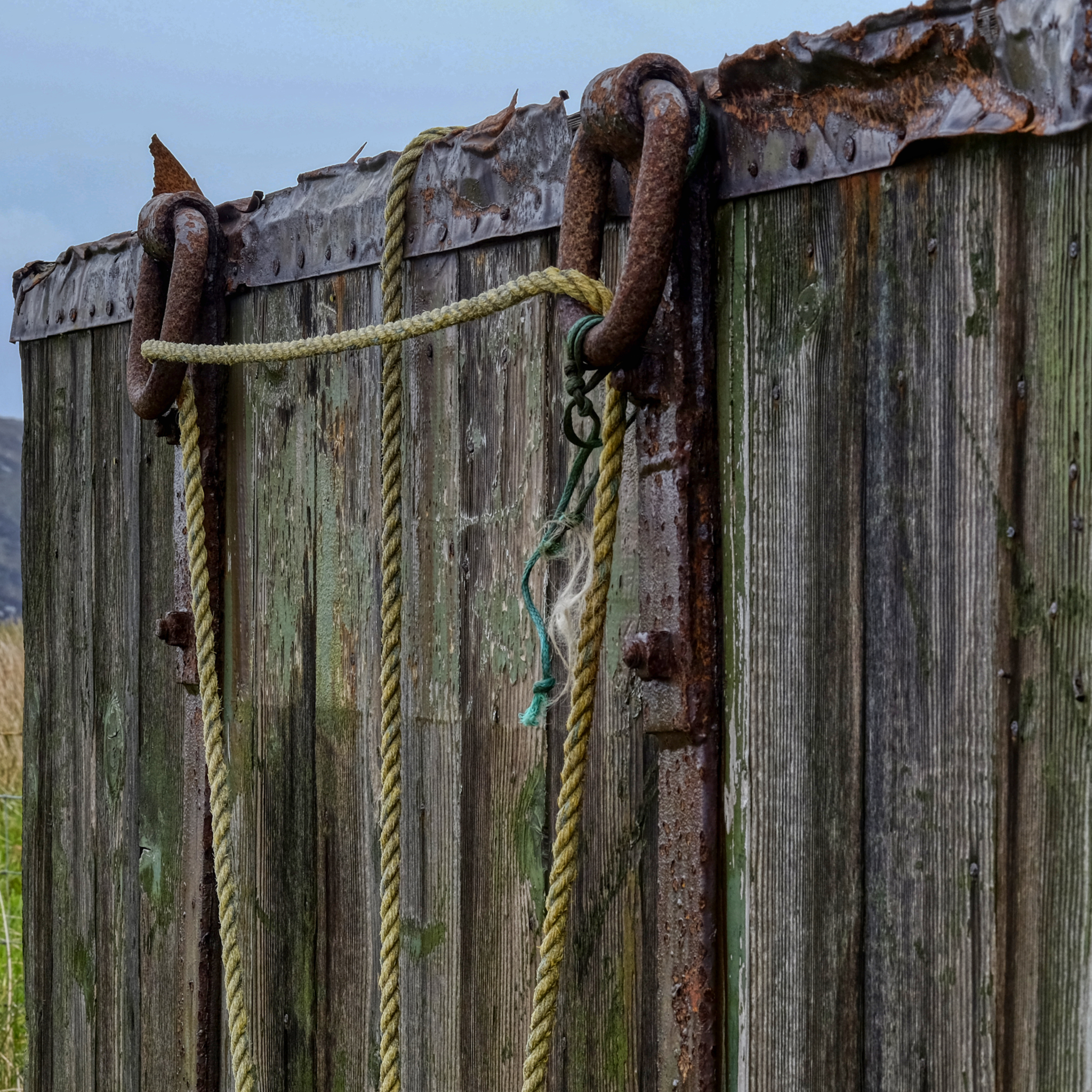 Leftover signs of fishermen long gone.
Leftover signs of fishermen long gone.
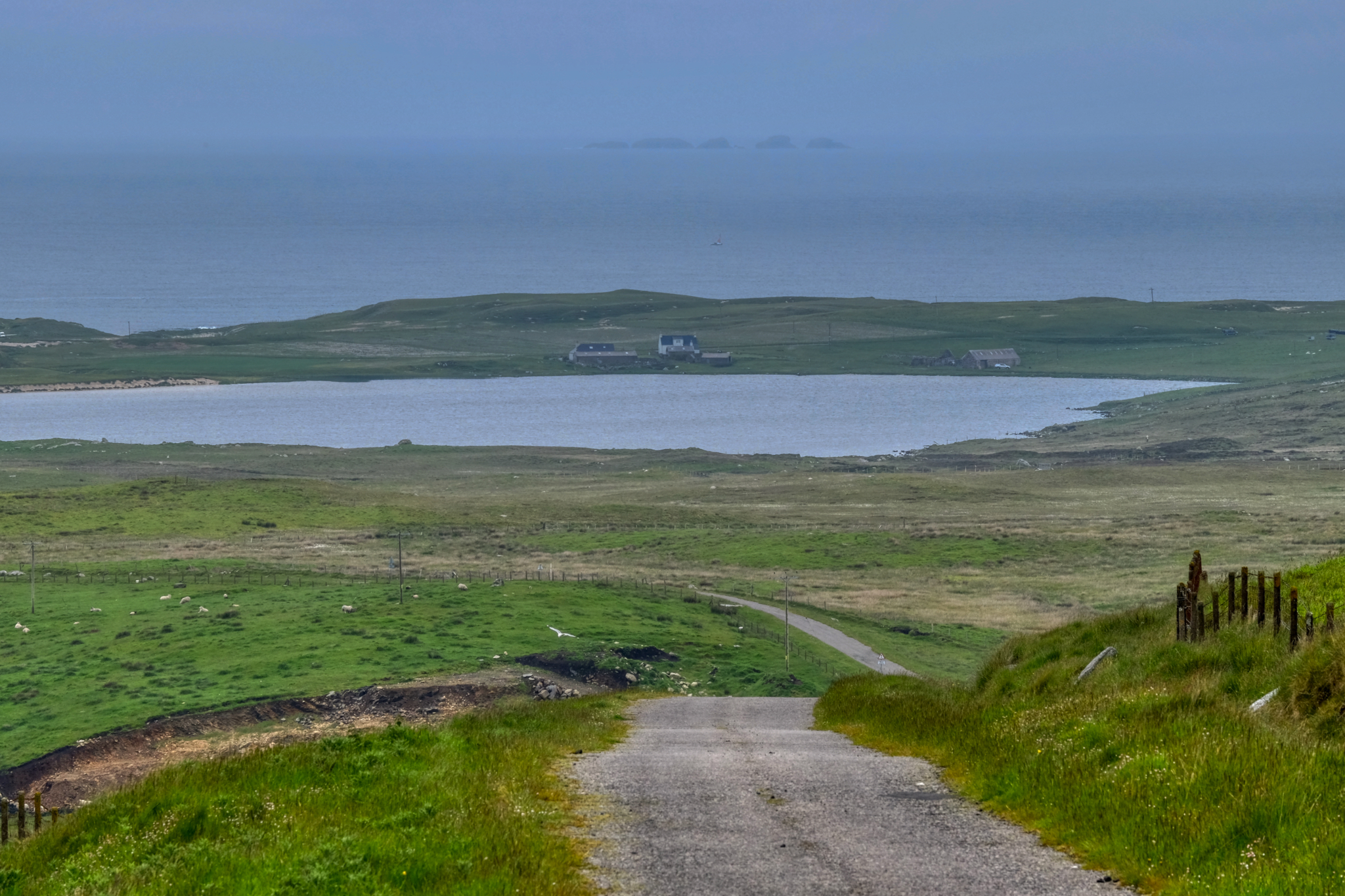 Off we went in the morning mist on the tiny roads . . .
Off we went in the morning mist on the tiny roads . . .
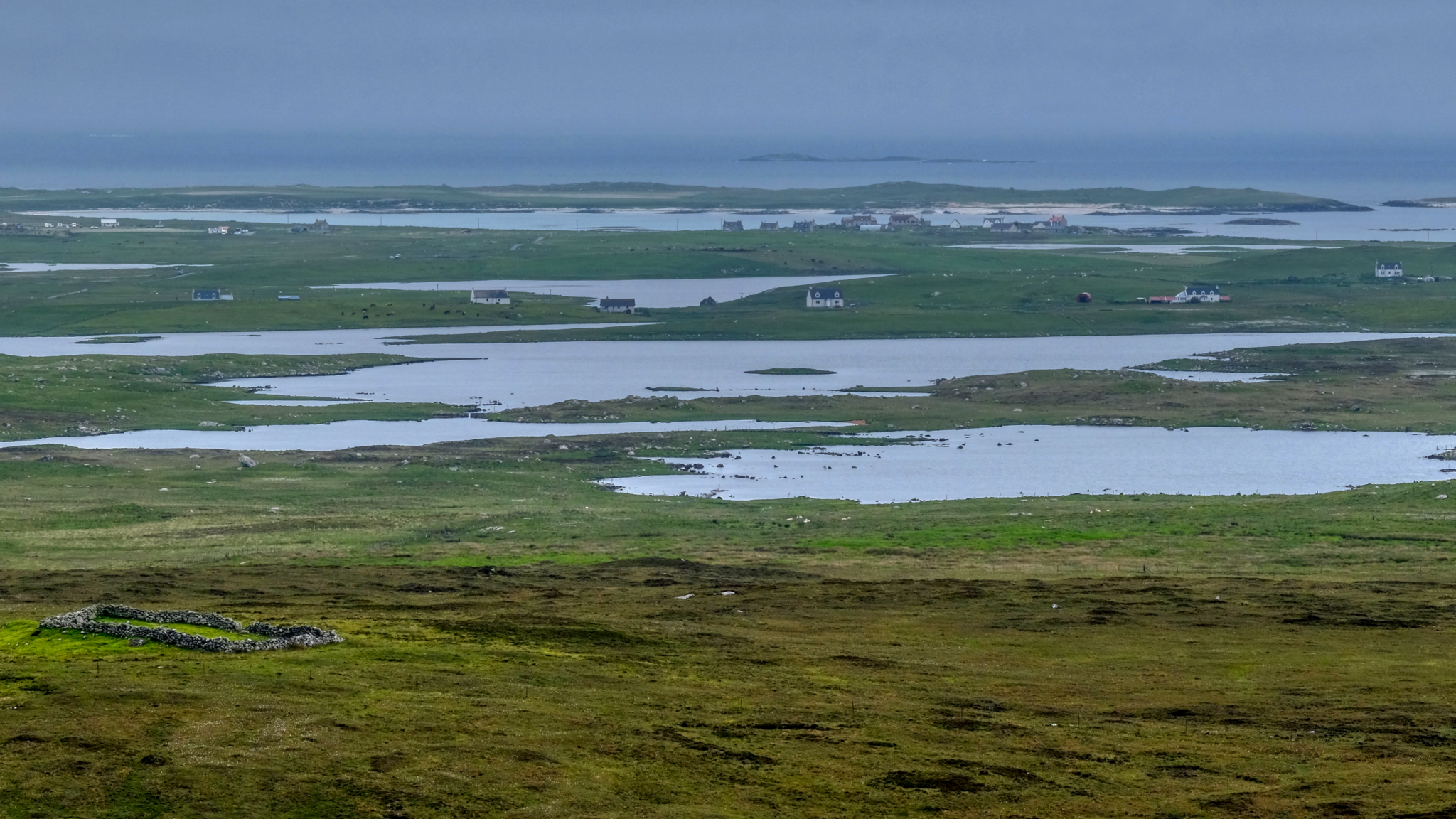 A most unusual landscape. I have never seen anything like it. Fantastically beautiful. I always have a compunction to think I would love to live in one of those houses . . . but stop myself by thinking there would be nothing for me to do there.
A most unusual landscape. I have never seen anything like it. Fantastically beautiful. I always have a compunction to think I would love to live in one of those houses . . . but stop myself by thinking there would be nothing for me to do there.
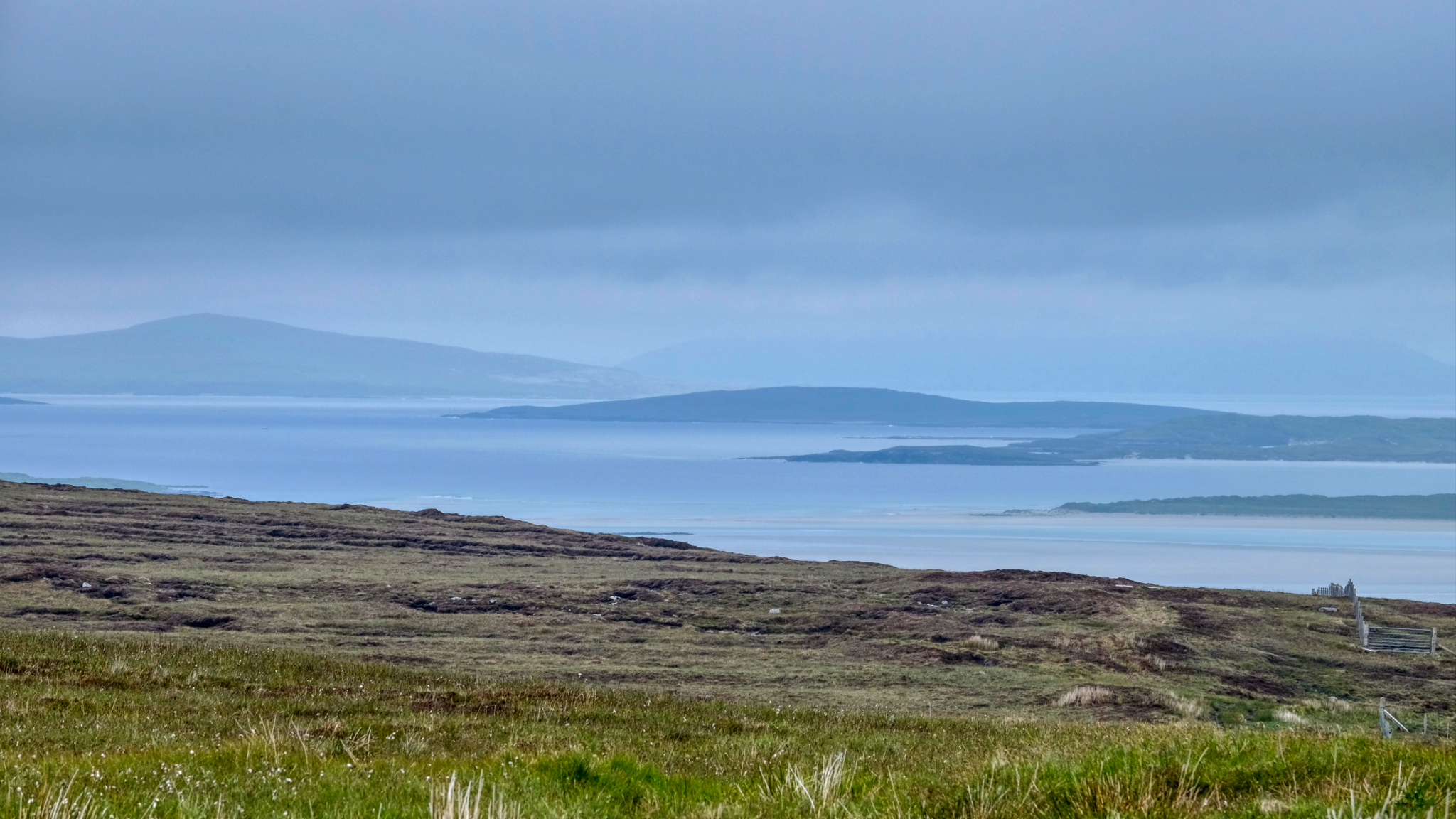 We learned there was a good restaurant out in these soggywet landscapes.
We learned there was a good restaurant out in these soggywet landscapes.
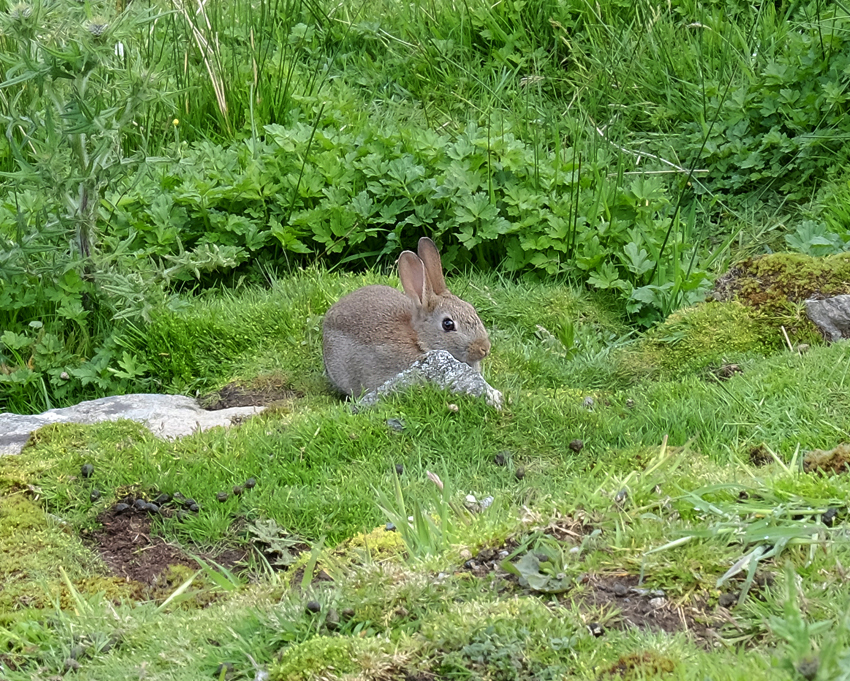 More Hebridean wildlife!
More Hebridean wildlife!
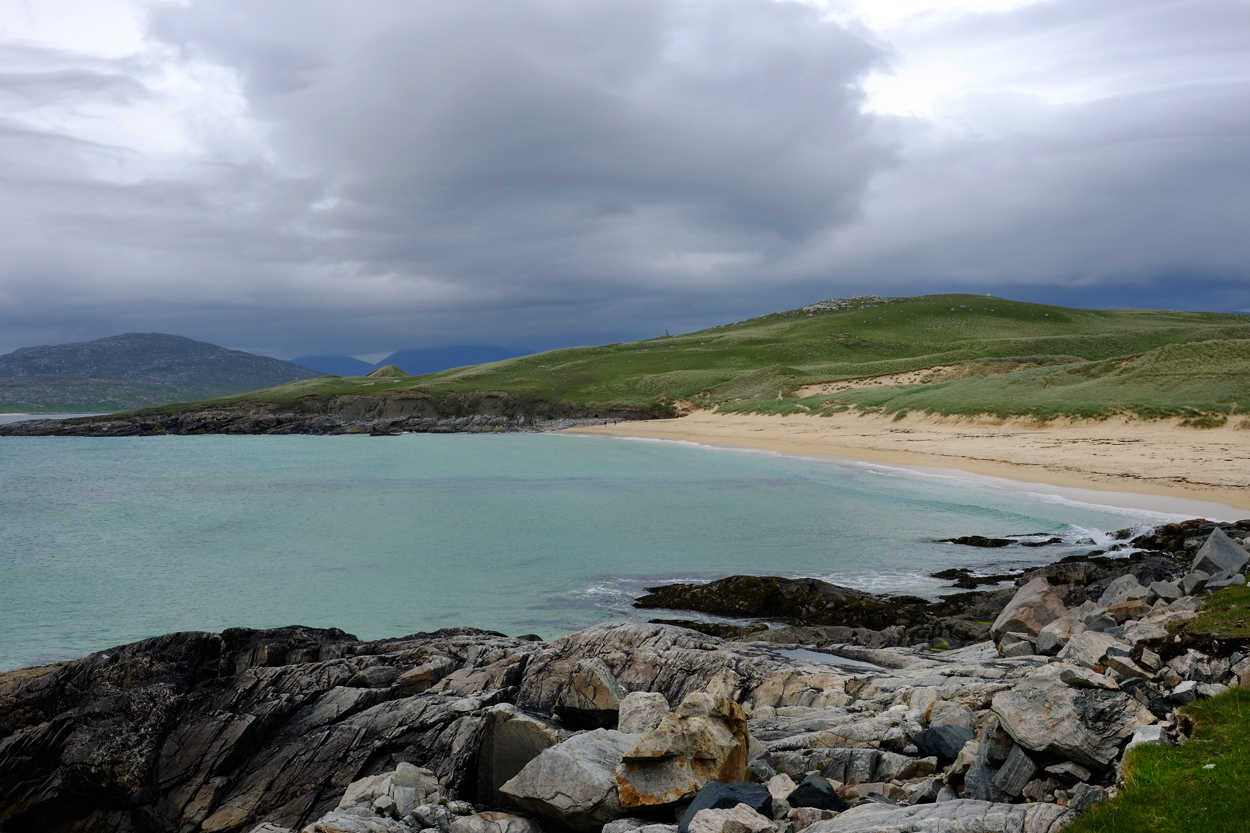 And here and there, around a bend, a sudden, almost tropical, turquoise sea and white sandy beach. Marvelous.
And here and there, around a bend, a sudden, almost tropical, turquoise sea and white sandy beach. Marvelous.
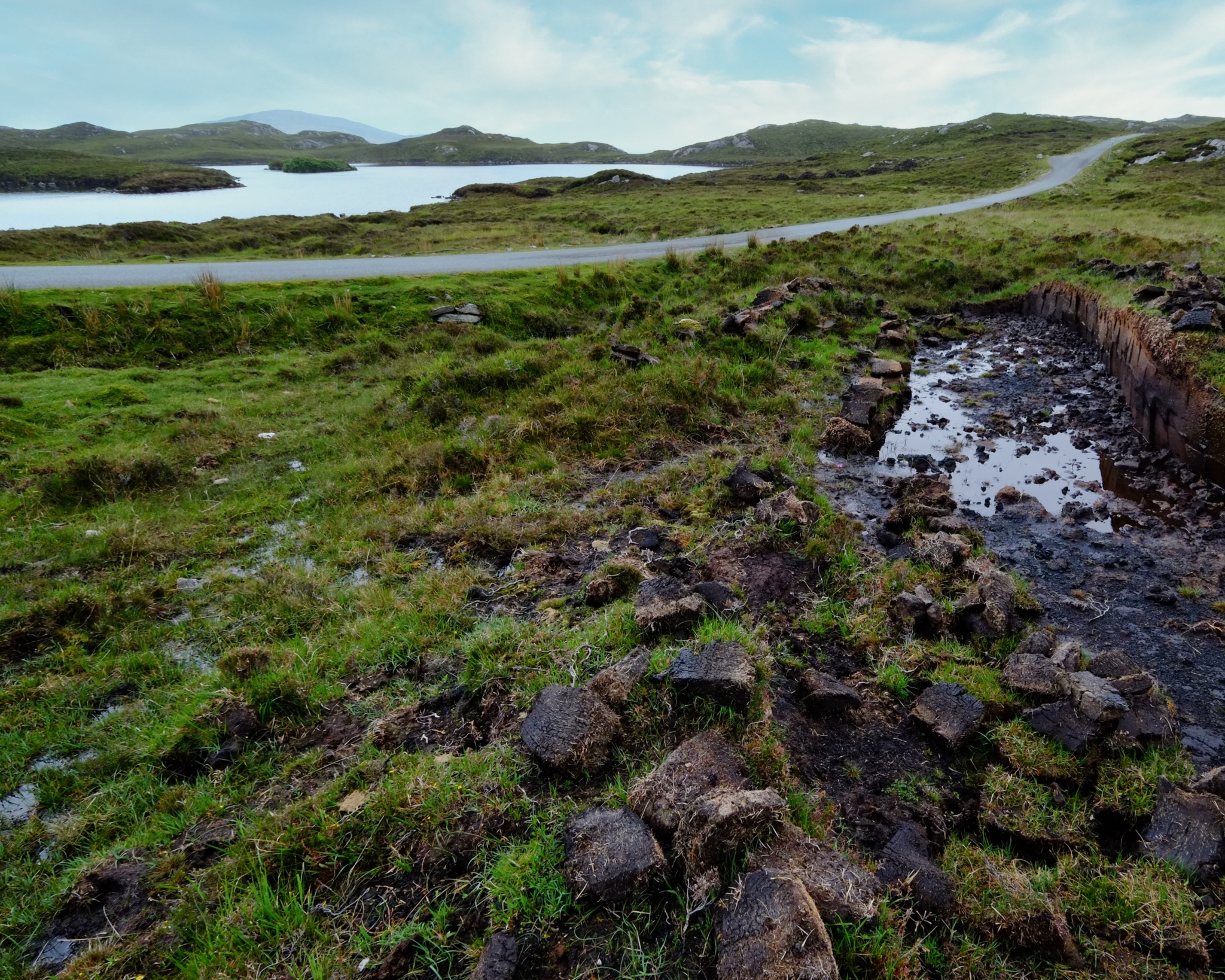 And around another bend a vale with deep cut peat harvesting in progress.
And around another bend a vale with deep cut peat harvesting in progress.
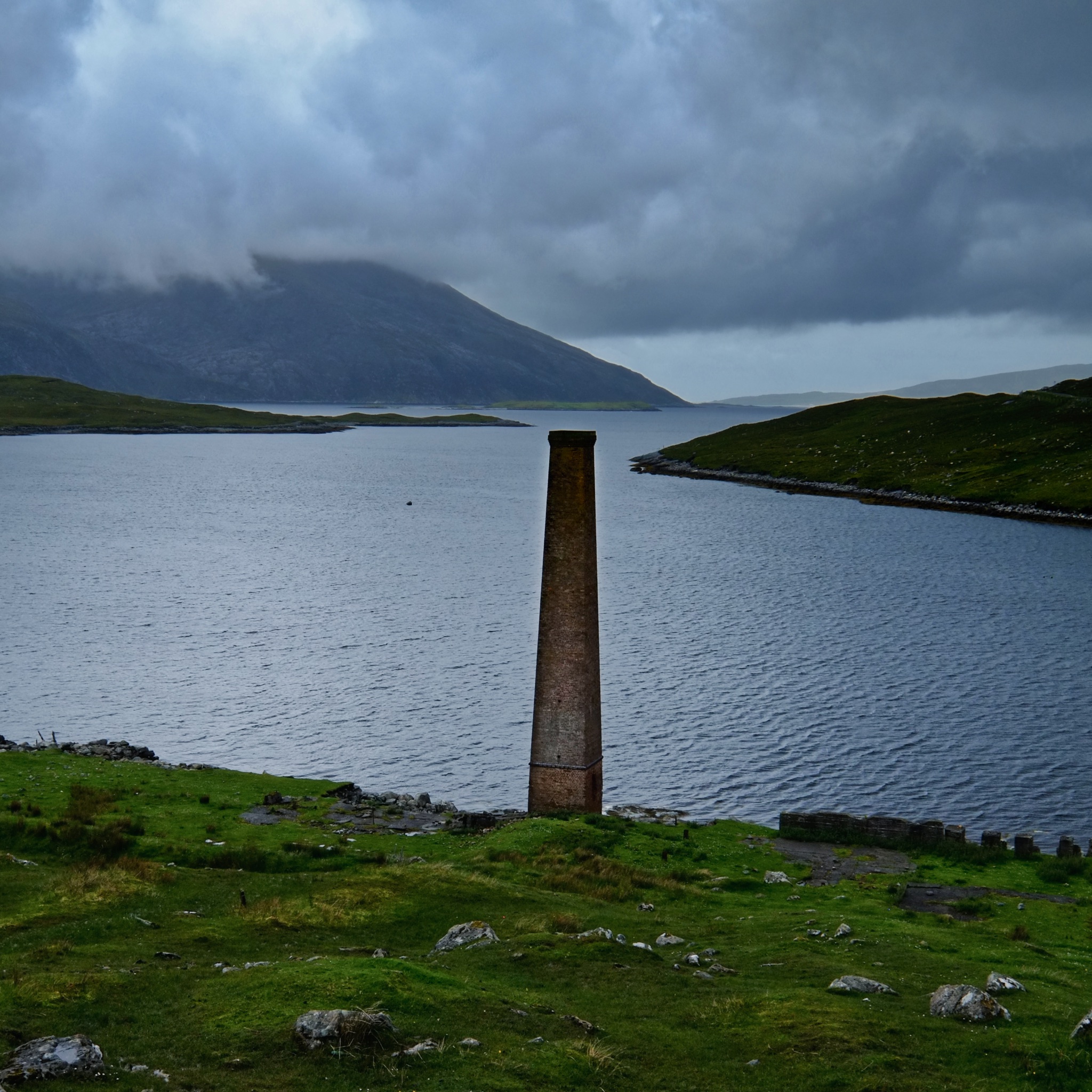 A tall smokestack . . . a monument to some previous industrial endeavor . . . all the way out here.
A tall smokestack . . . a monument to some previous industrial endeavor . . . all the way out here.
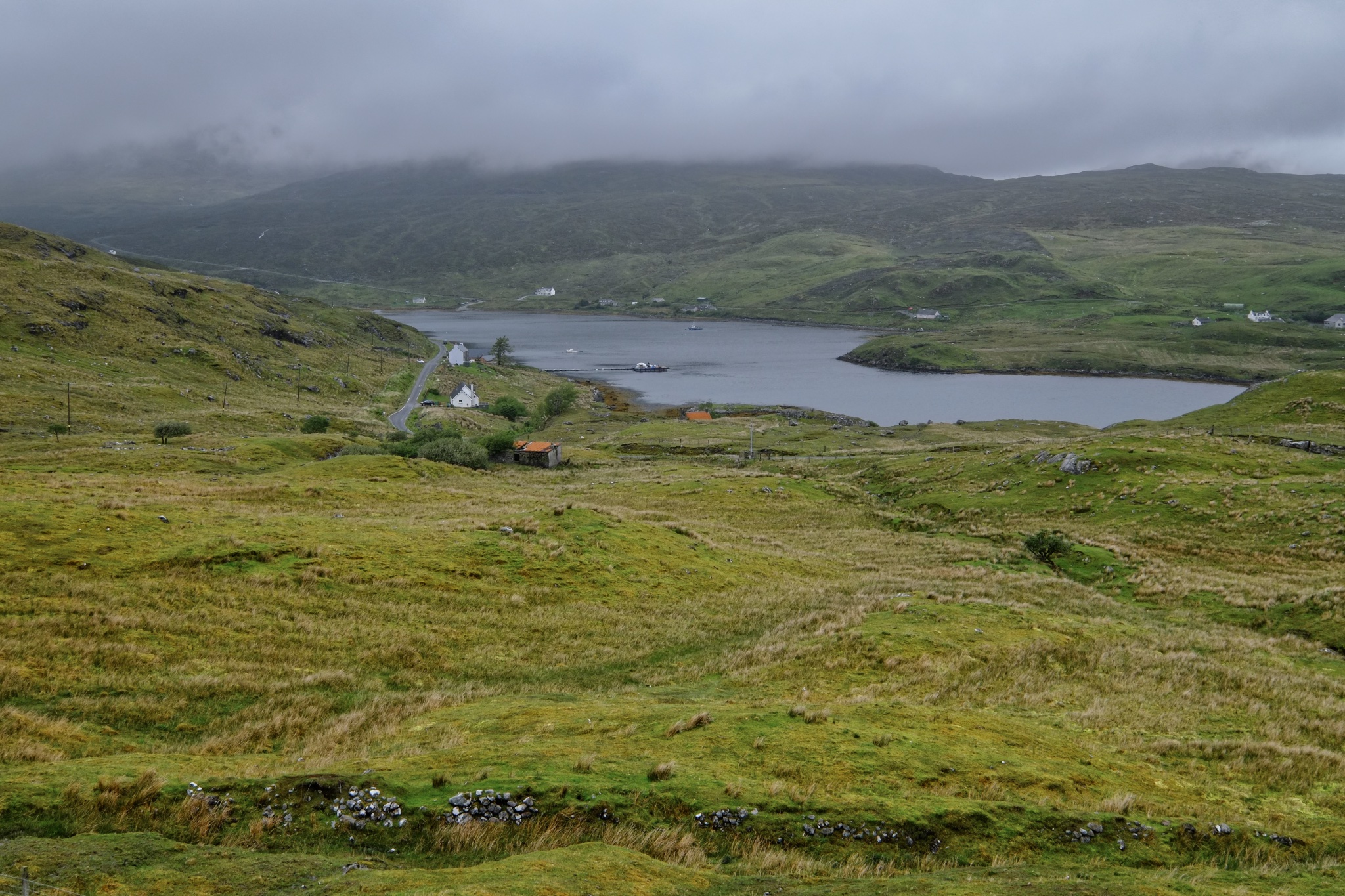 Driving the single track road in and out of the strange hills . . . always a new view . . . sometimes of a narrow bay dotted with small houses, a pier, and a fishing boat.
Driving the single track road in and out of the strange hills . . . always a new view . . . sometimes of a narrow bay dotted with small houses, a pier, and a fishing boat.
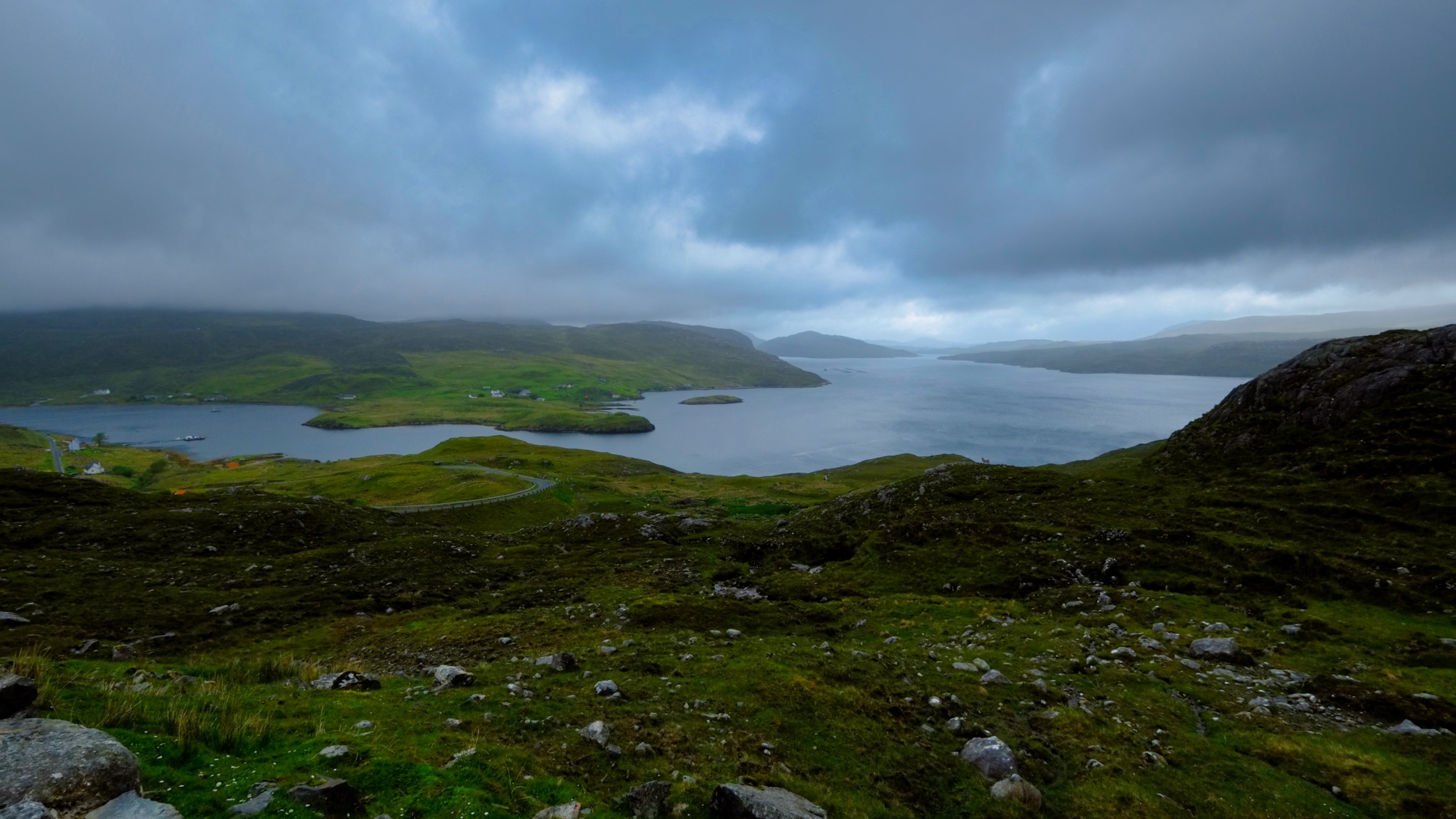 These views! The gloom!
These views! The gloom!
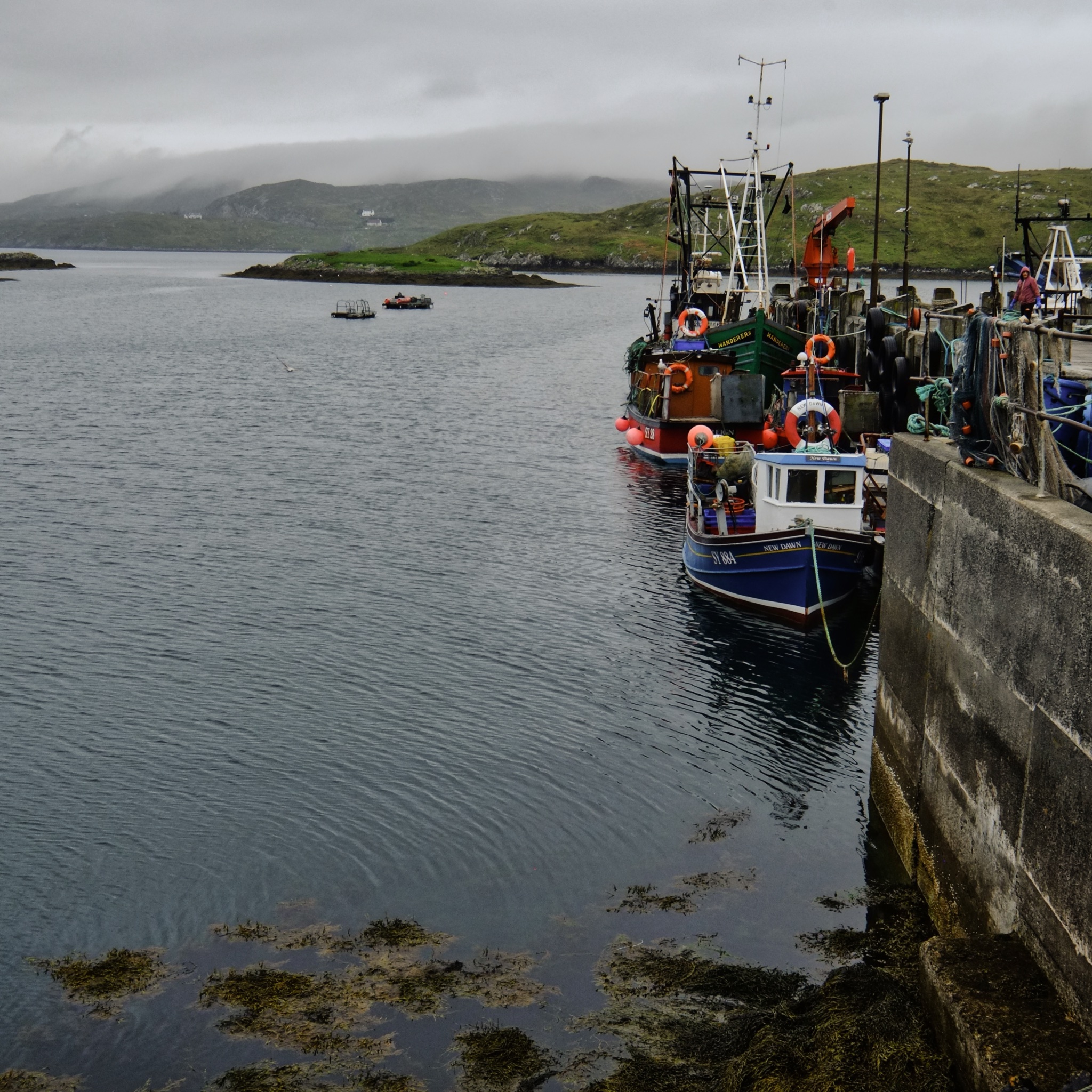 We rounded a bend in the road and arrived at a tiny fishing village, Scalpay.
We rounded a bend in the road and arrived at a tiny fishing village, Scalpay.
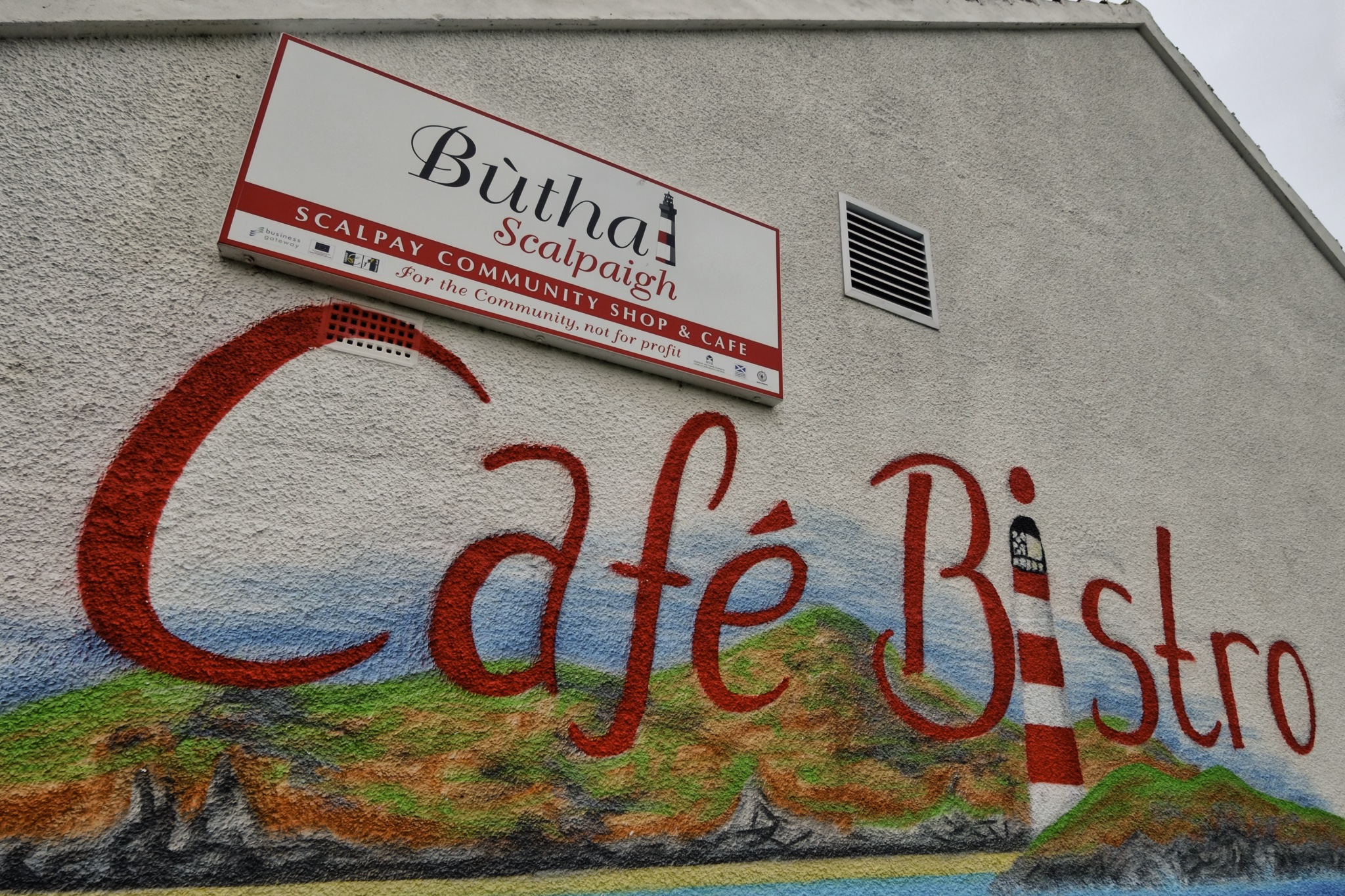
"The island used to have more than 10 shops over 30 years ago but due to lack of people and work, the last shop closed in 2007. There also used to be a salmon factory, which was a major local employer from 2001 until its closure in 2005. In the spring of 2009, local newspapers reported that the factory was to reopen as a net washing facility to support the local fish farming industry. In 2012, the Scalpay community bought and opened a community shop/café, Buth Scalpaigh." We had a delicious lunch here with friendly service . . , soup, rolls, and fried fish.
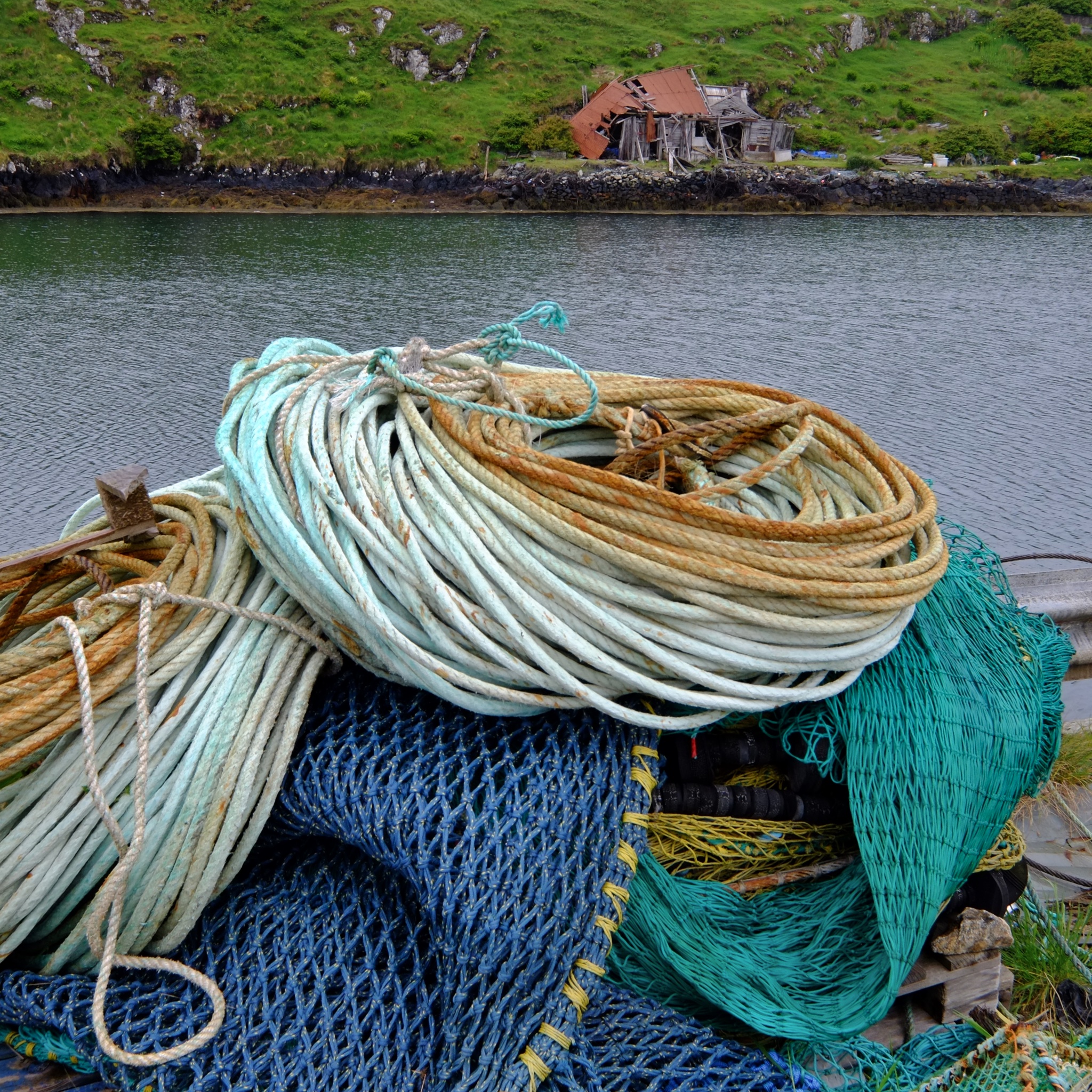 Some fishing activity survives these remote places along the craggy inlets of the Outer Hebrides.
Some fishing activity survives these remote places along the craggy inlets of the Outer Hebrides.
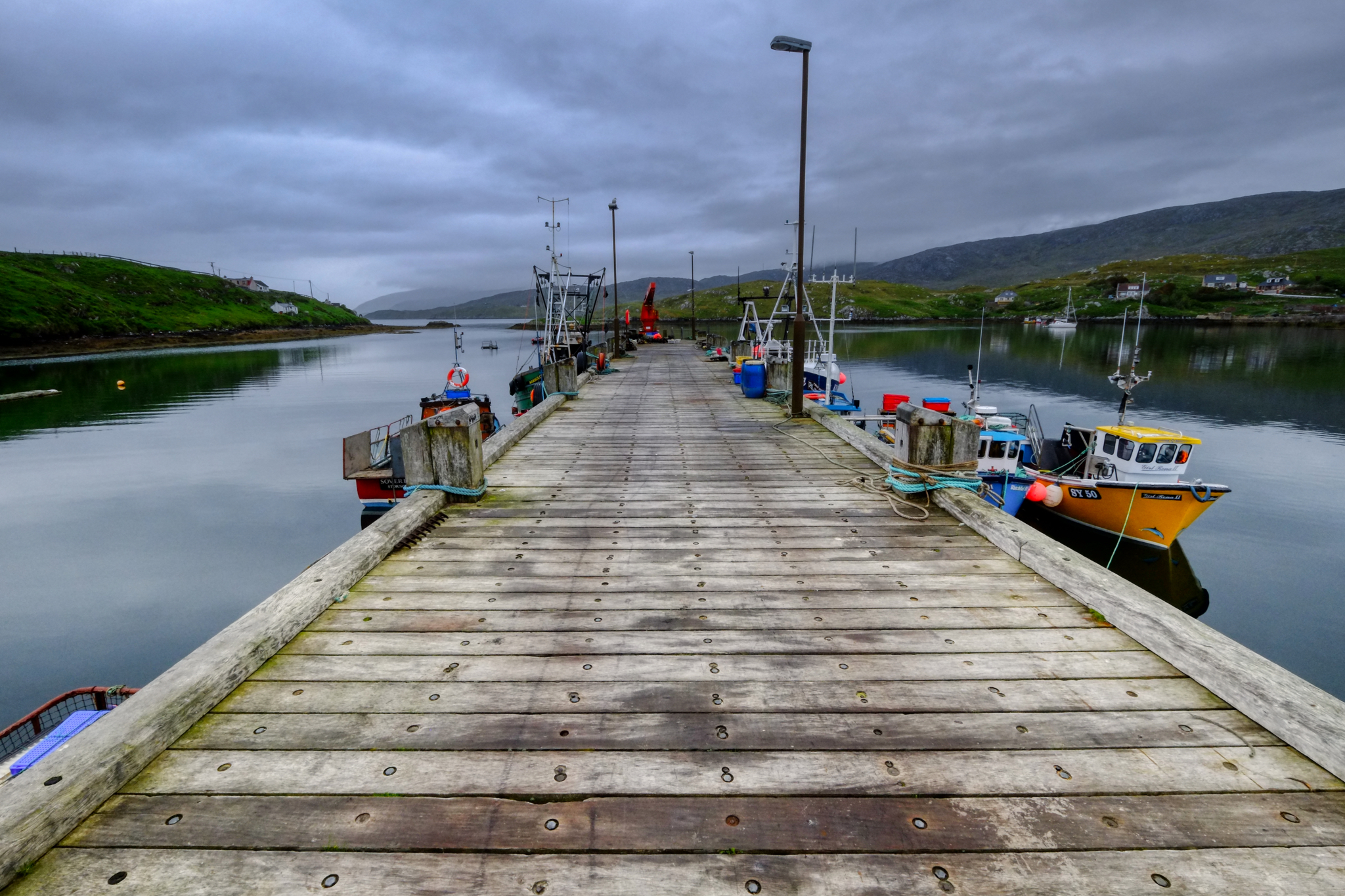 People have to eat and people have to make a living.
People have to eat and people have to make a living.
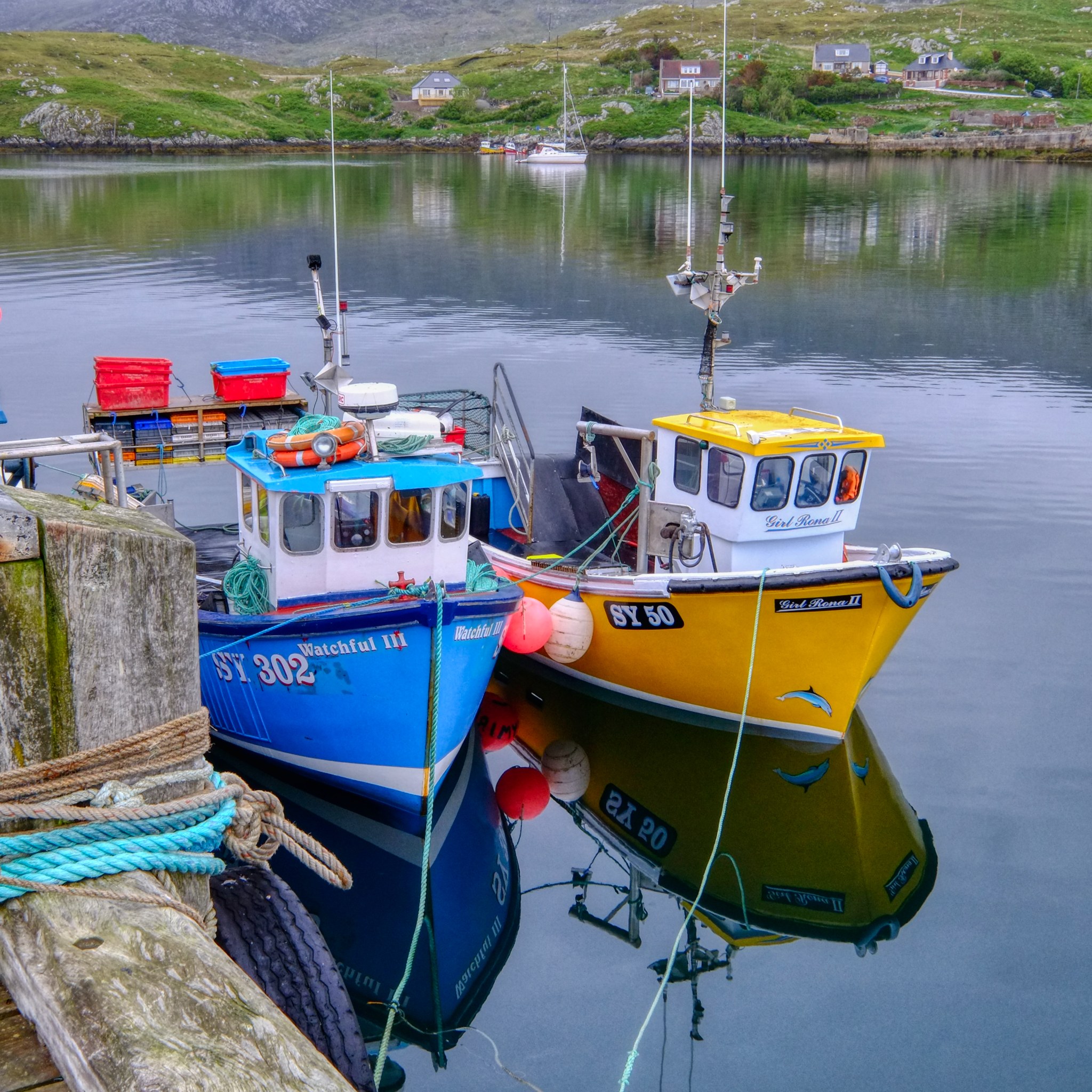 Picturesque little fishing boats.
Picturesque little fishing boats.
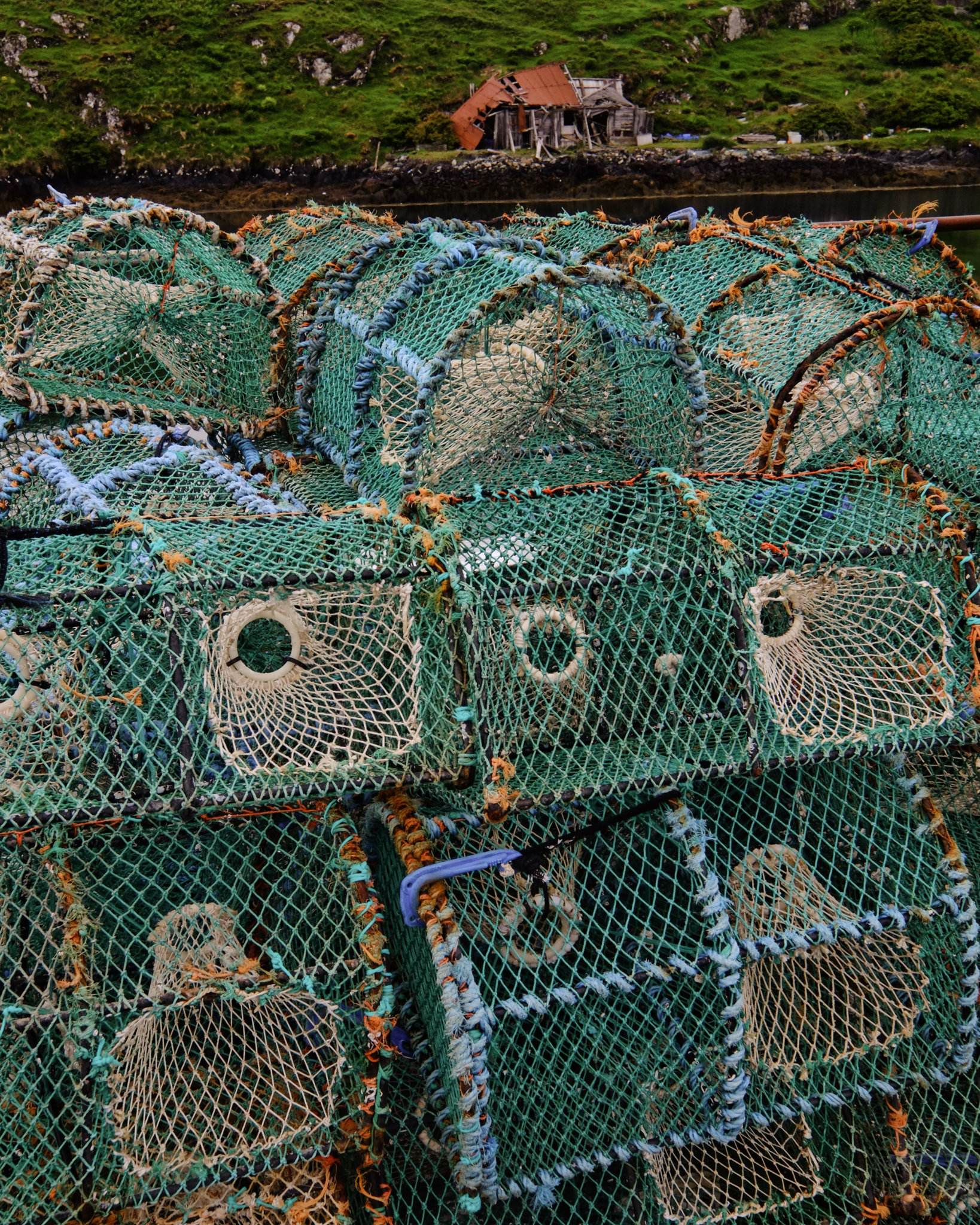 Crab or lobster pots . . .
Crab or lobster pots . . .
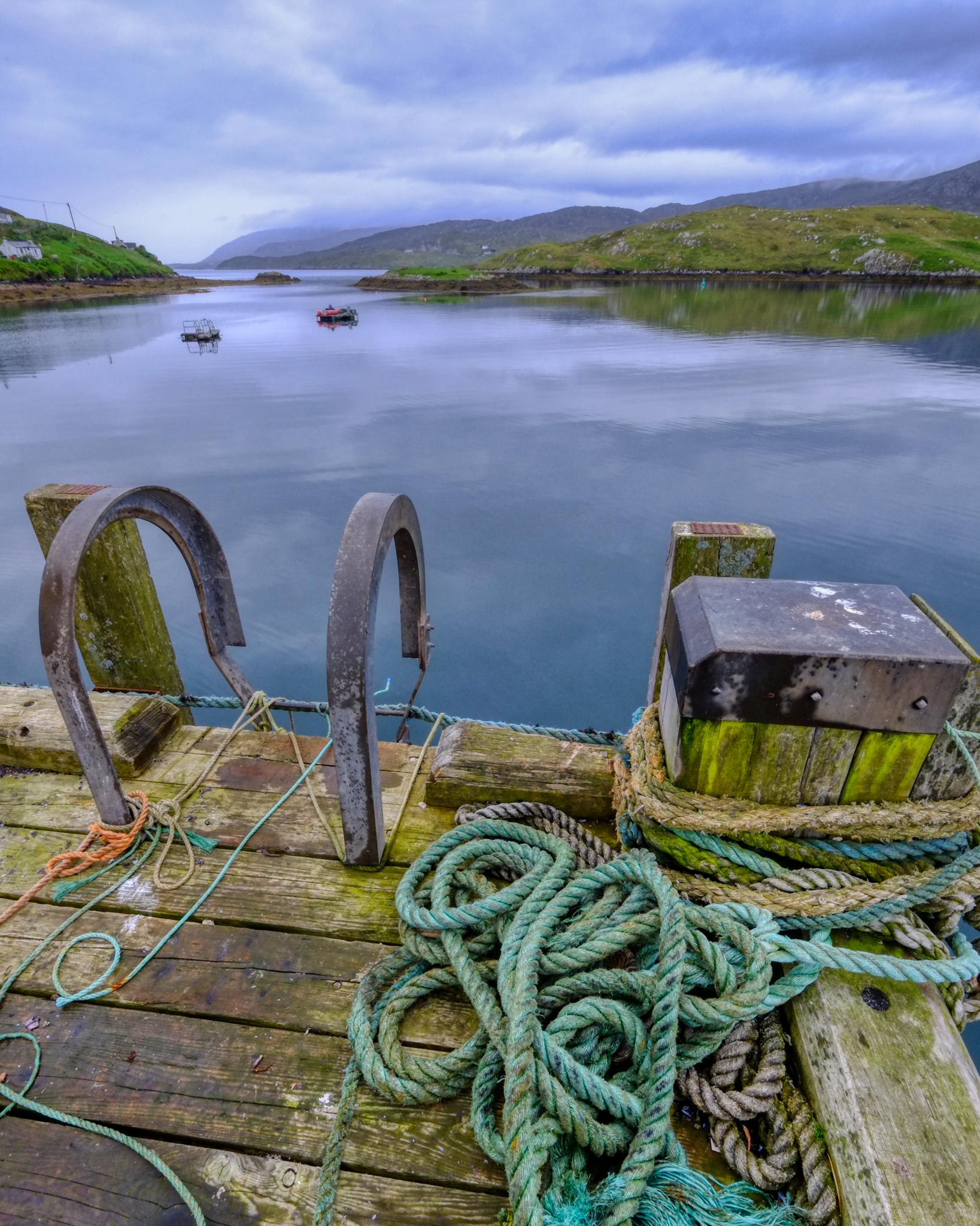 We drove North up into the Isles of Lewis and Harris.
We drove North up into the Isles of Lewis and Harris.
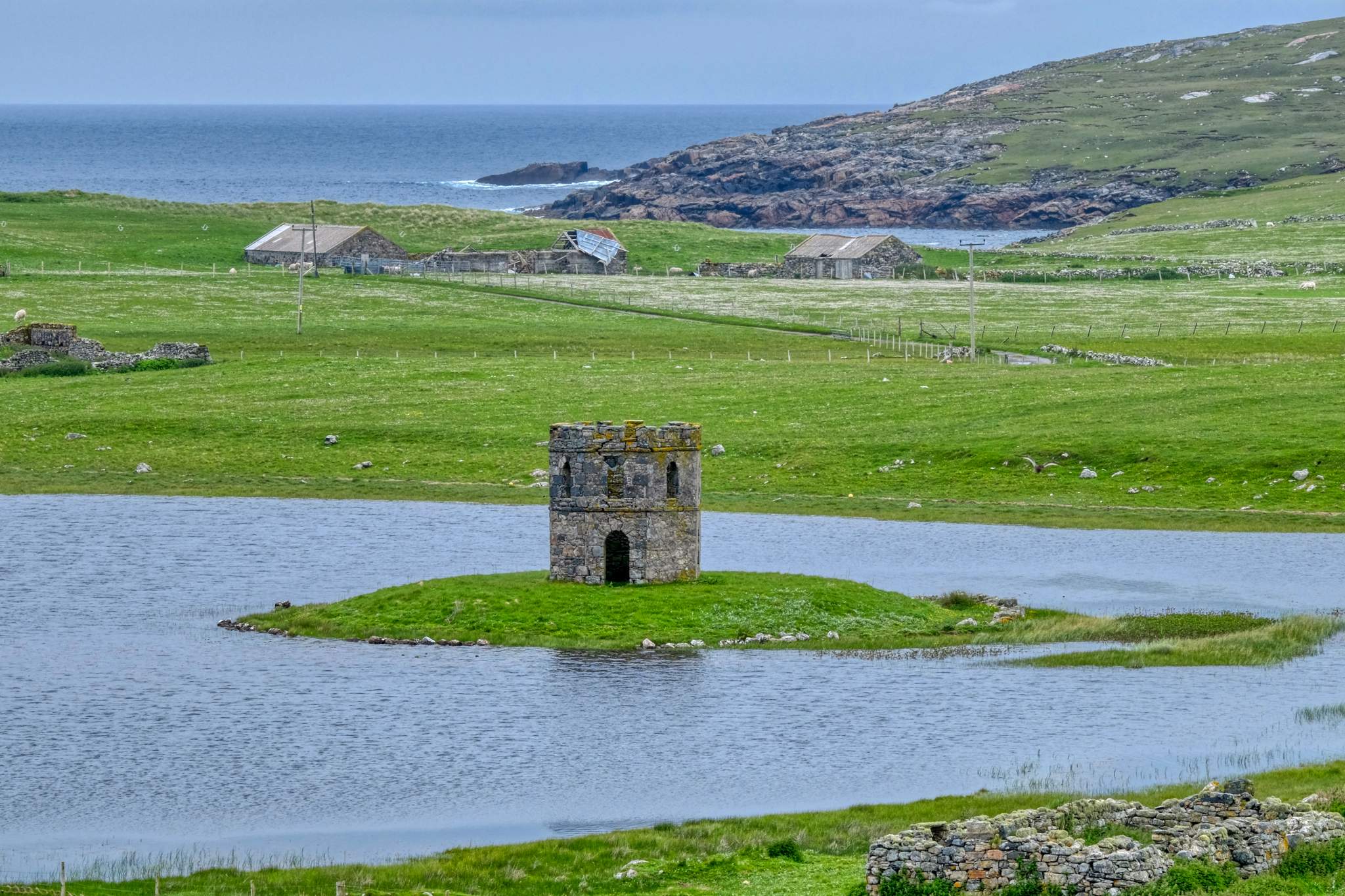 An old tower keep on a crofters place.
An old tower keep on a crofters place.
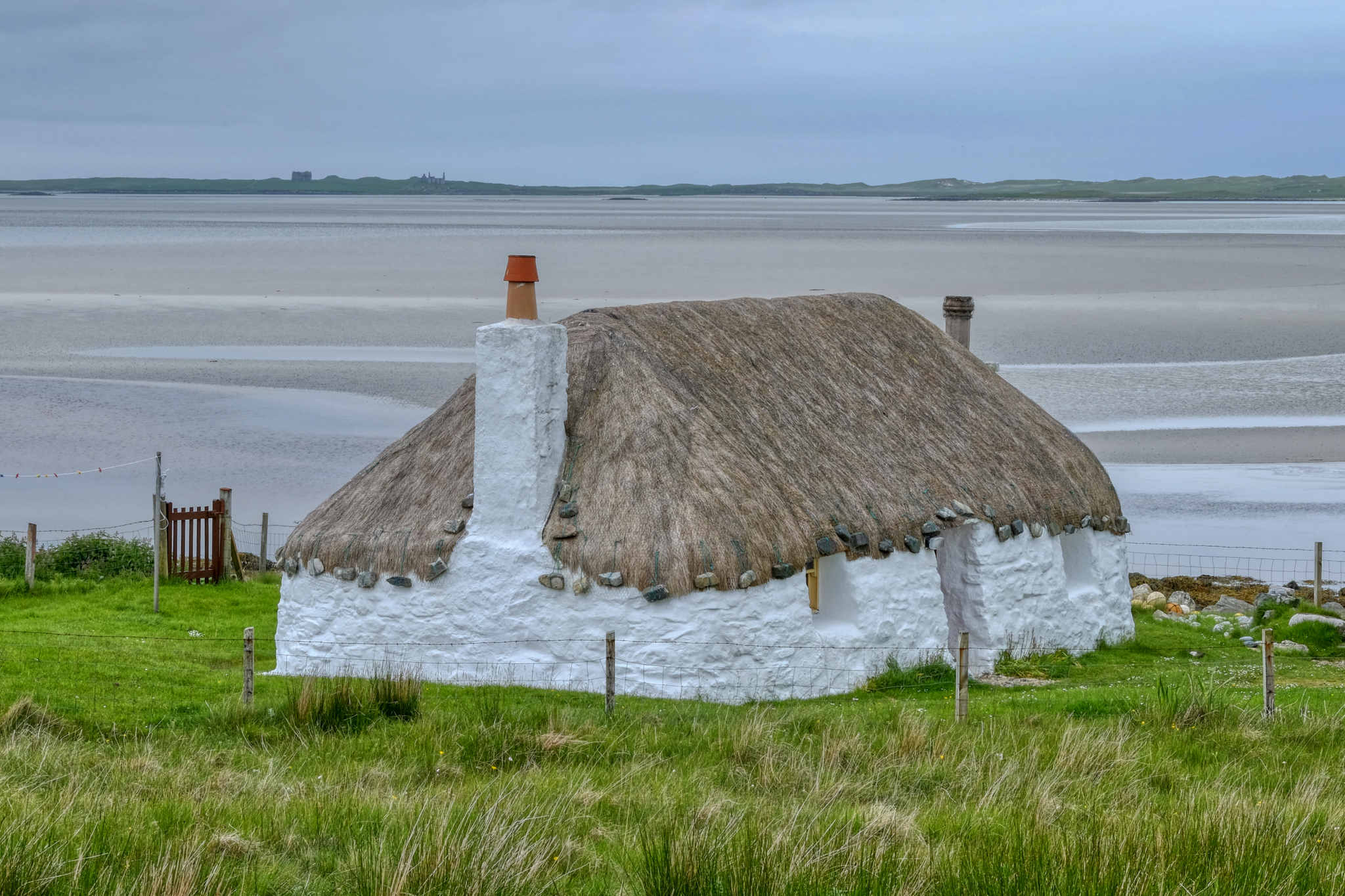 An old whitewash, thatched-roof cottage on the dandy bay. Charming.
An old whitewash, thatched-roof cottage on the dandy bay. Charming.
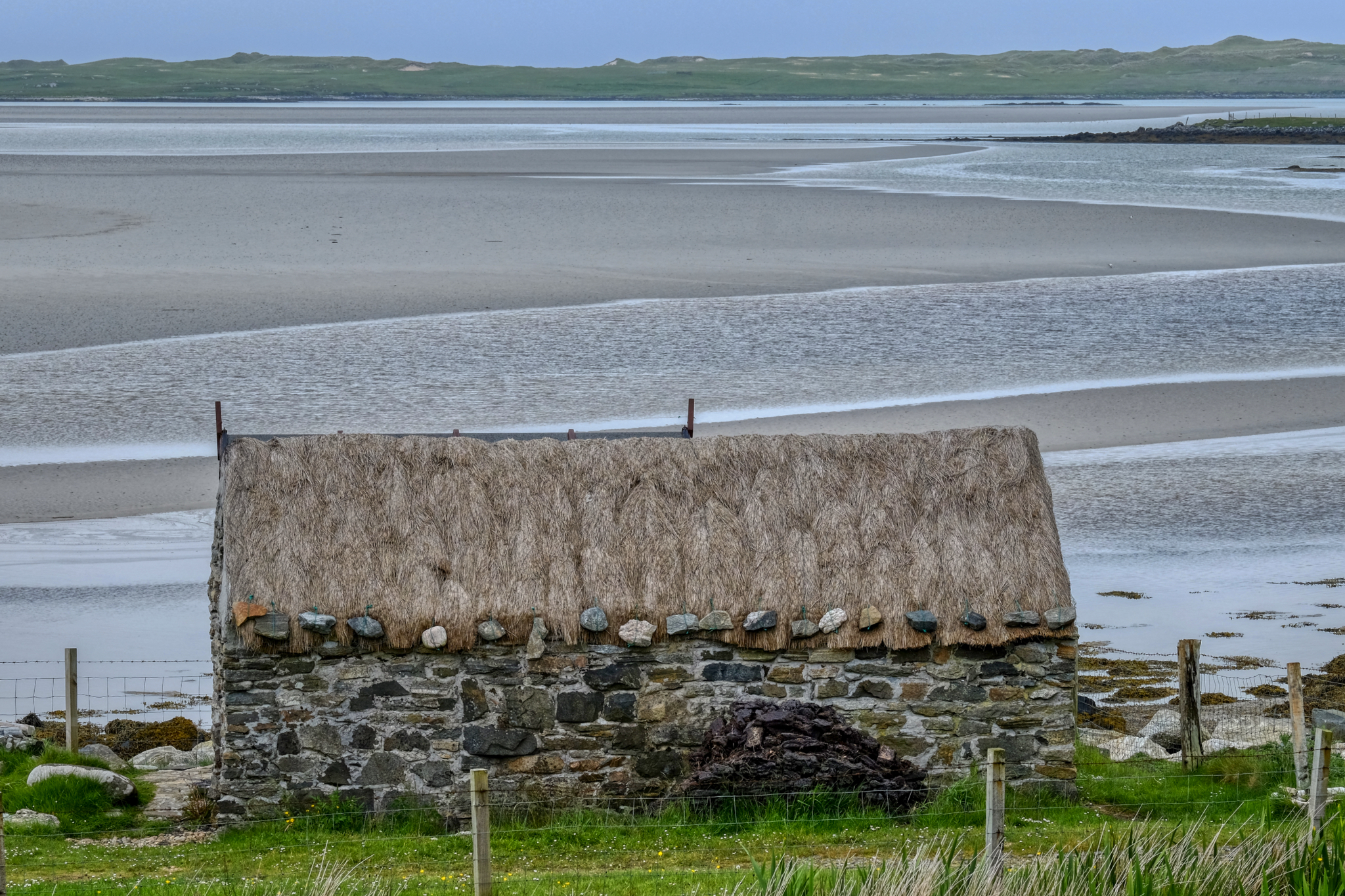 A lovely old crofter's stone barn.
A lovely old crofter's stone barn.
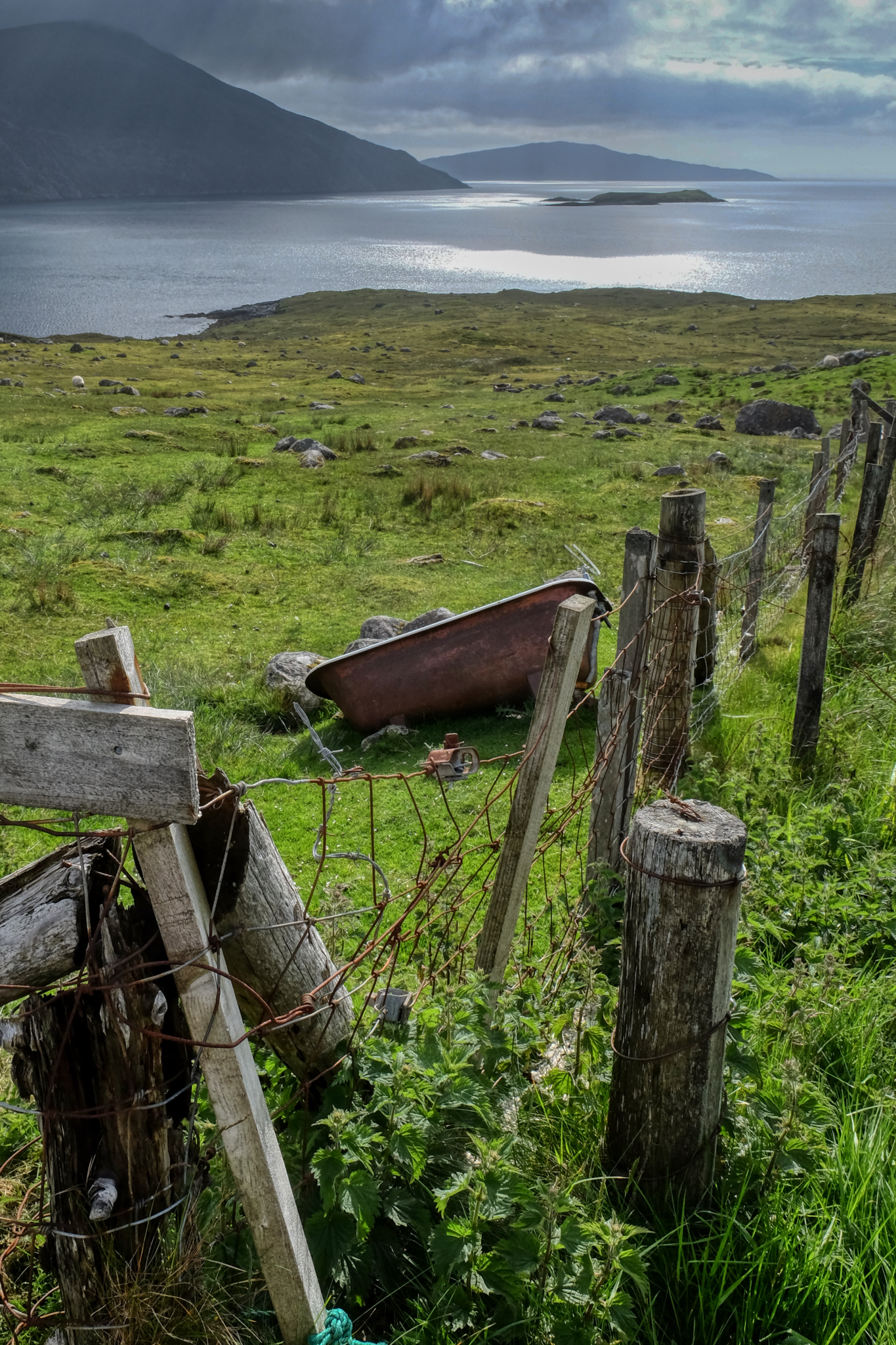 The views! Literally around every bend in the road . . . so many stunning landscapes!
The views! Literally around every bend in the road . . . so many stunning landscapes!
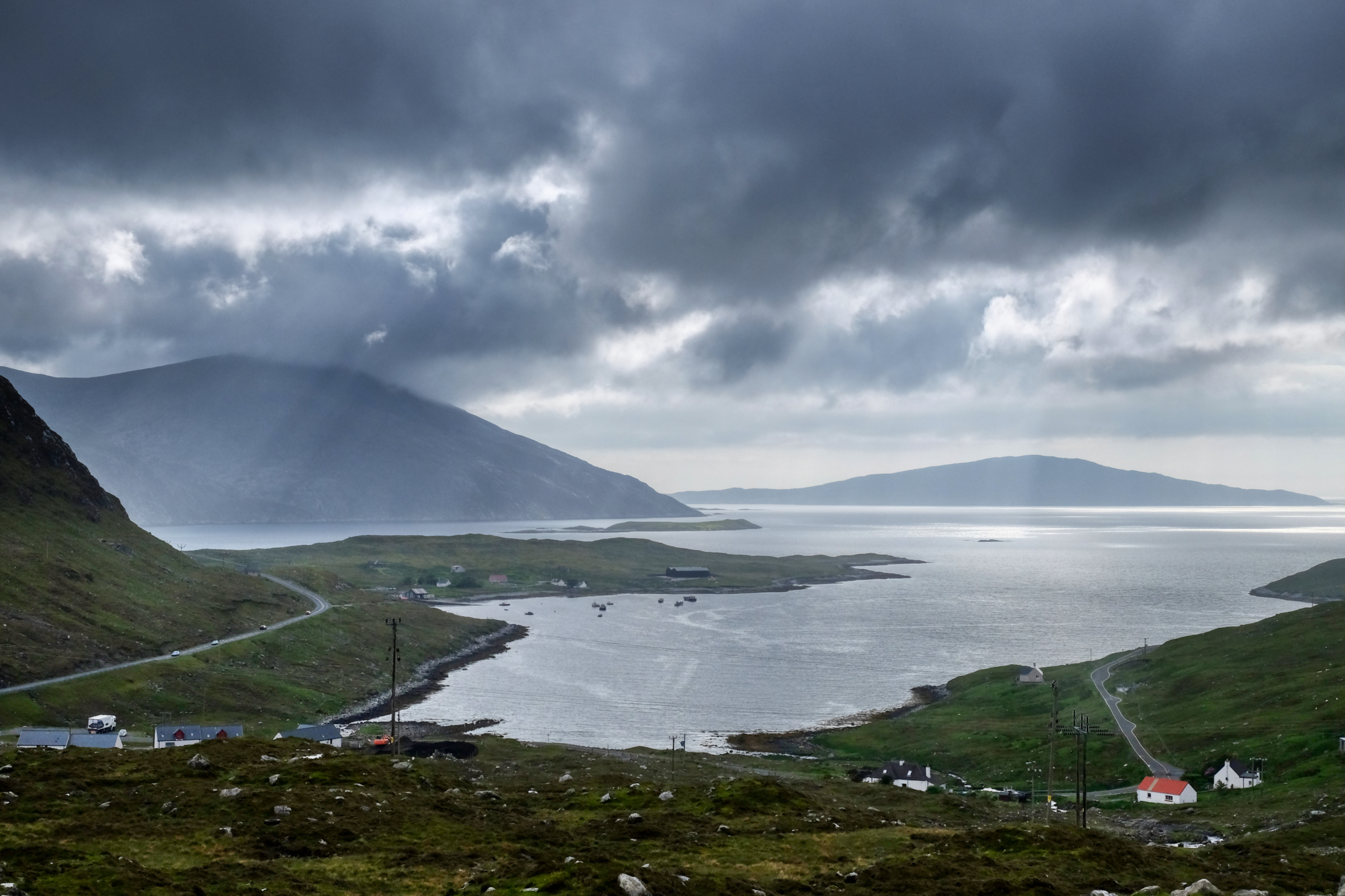 Mountains, light, sea, sky.
Mountains, light, sea, sky.
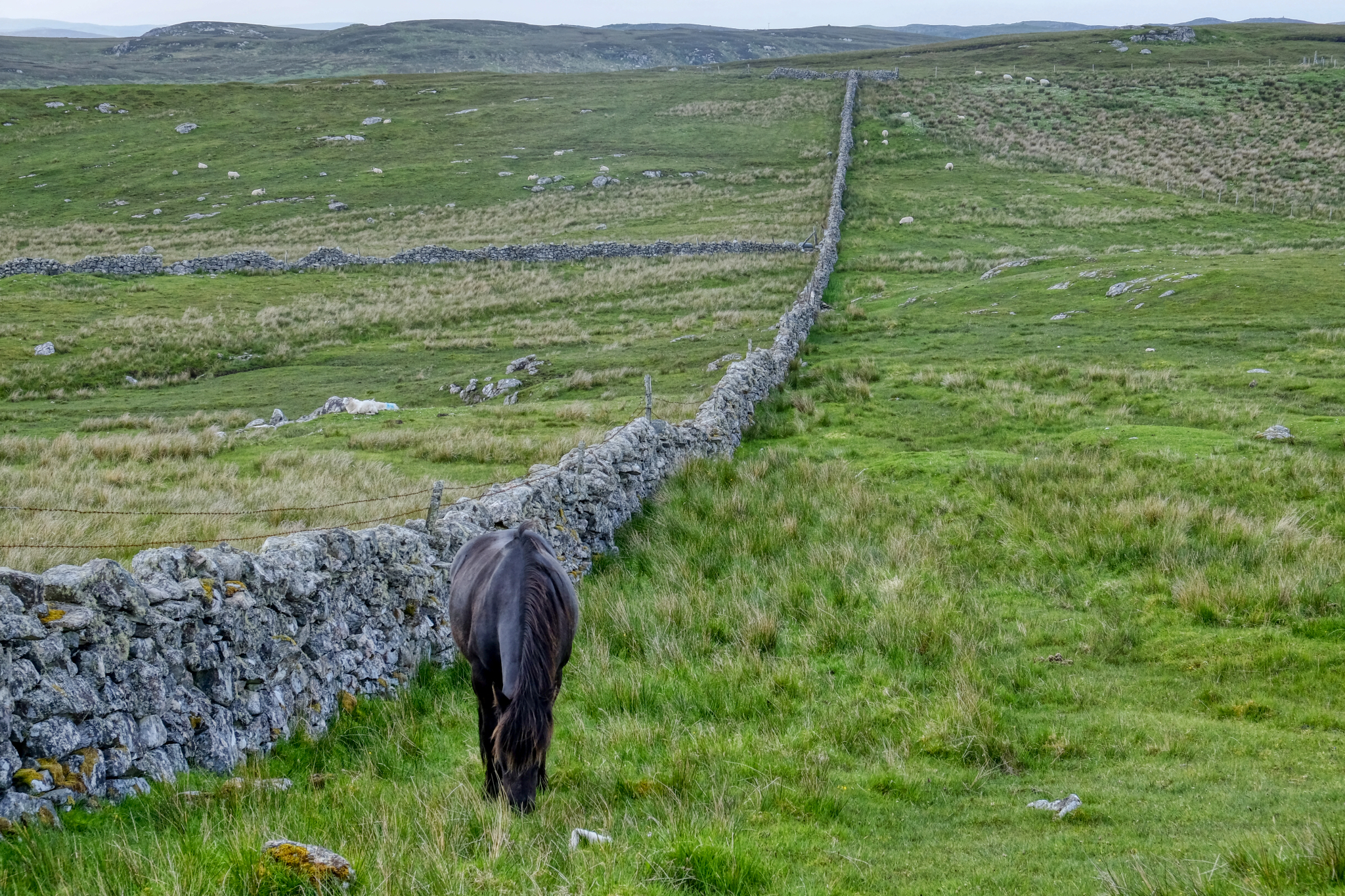 We diverted west, following a sign to Gearrannan Black House Village.
We diverted west, following a sign to Gearrannan Black House Village.
Gearrannan Black House Village
The Black House Village was a well-preserved museum of old thatched stone houses.
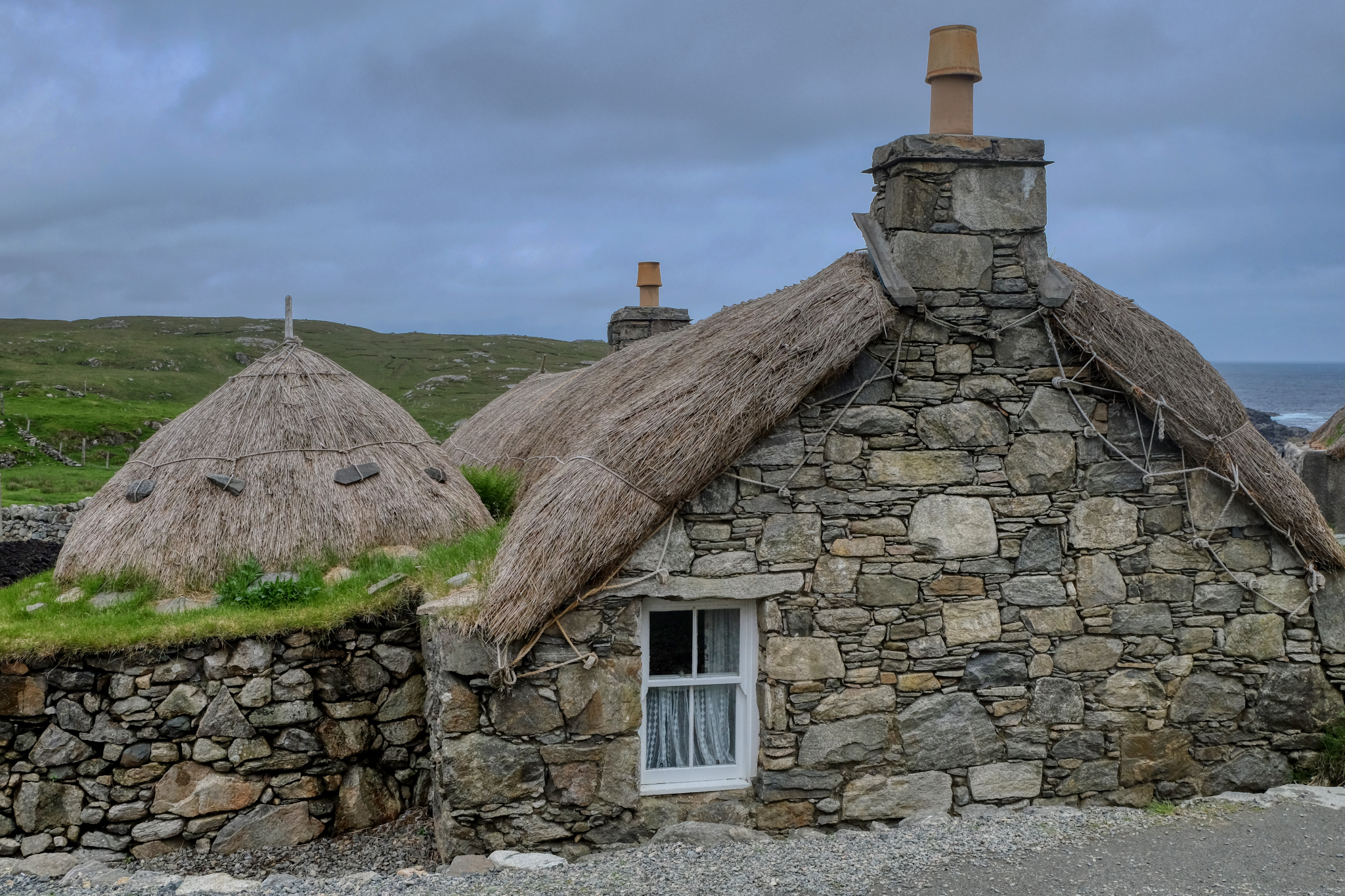 The houses here are all occupied . . . one is even a bed and breakfast . . . if we had only known!!!
The houses here are all occupied . . . one is even a bed and breakfast . . . if we had only known!!!
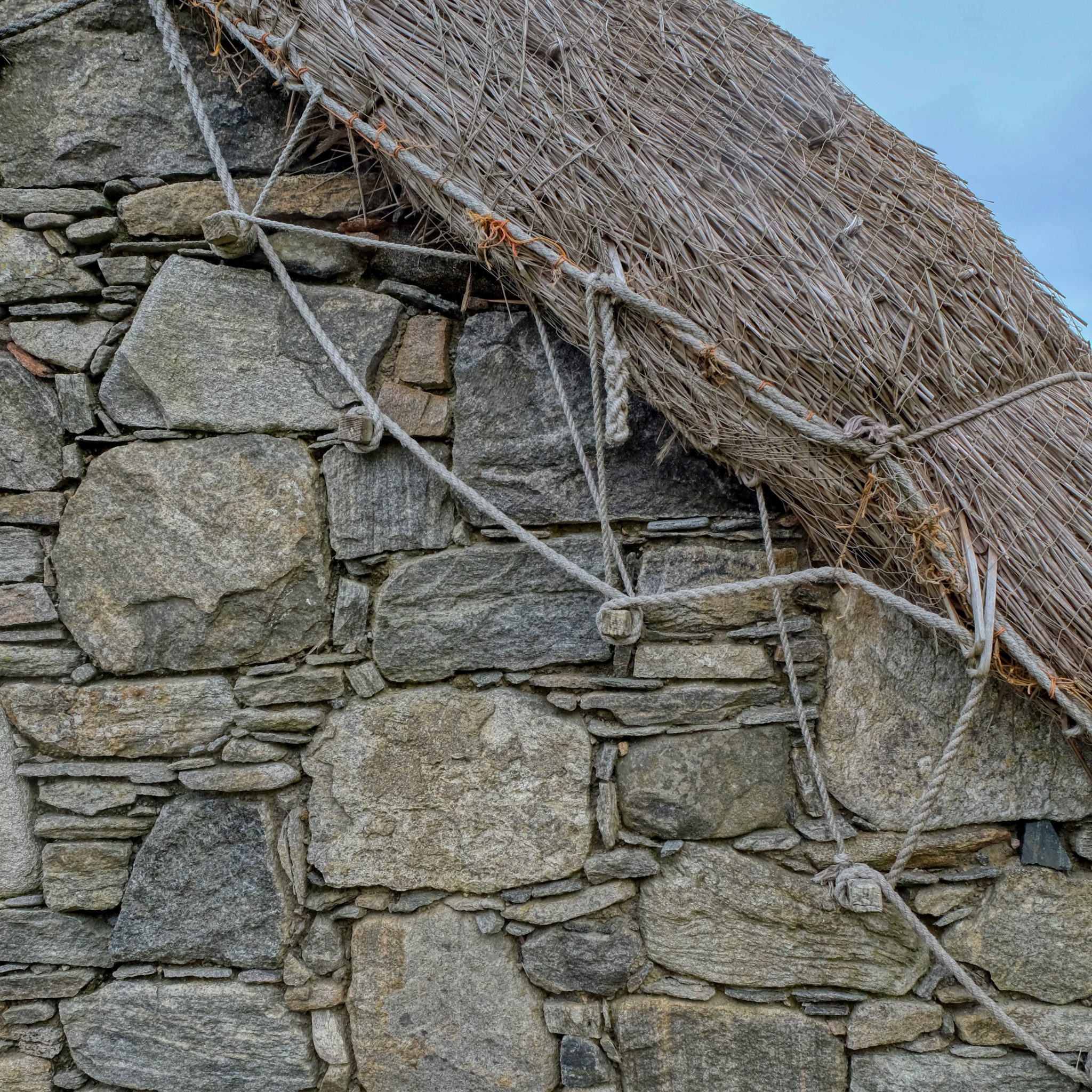 Beautifully detailed construction craft.
Beautifully detailed construction craft.
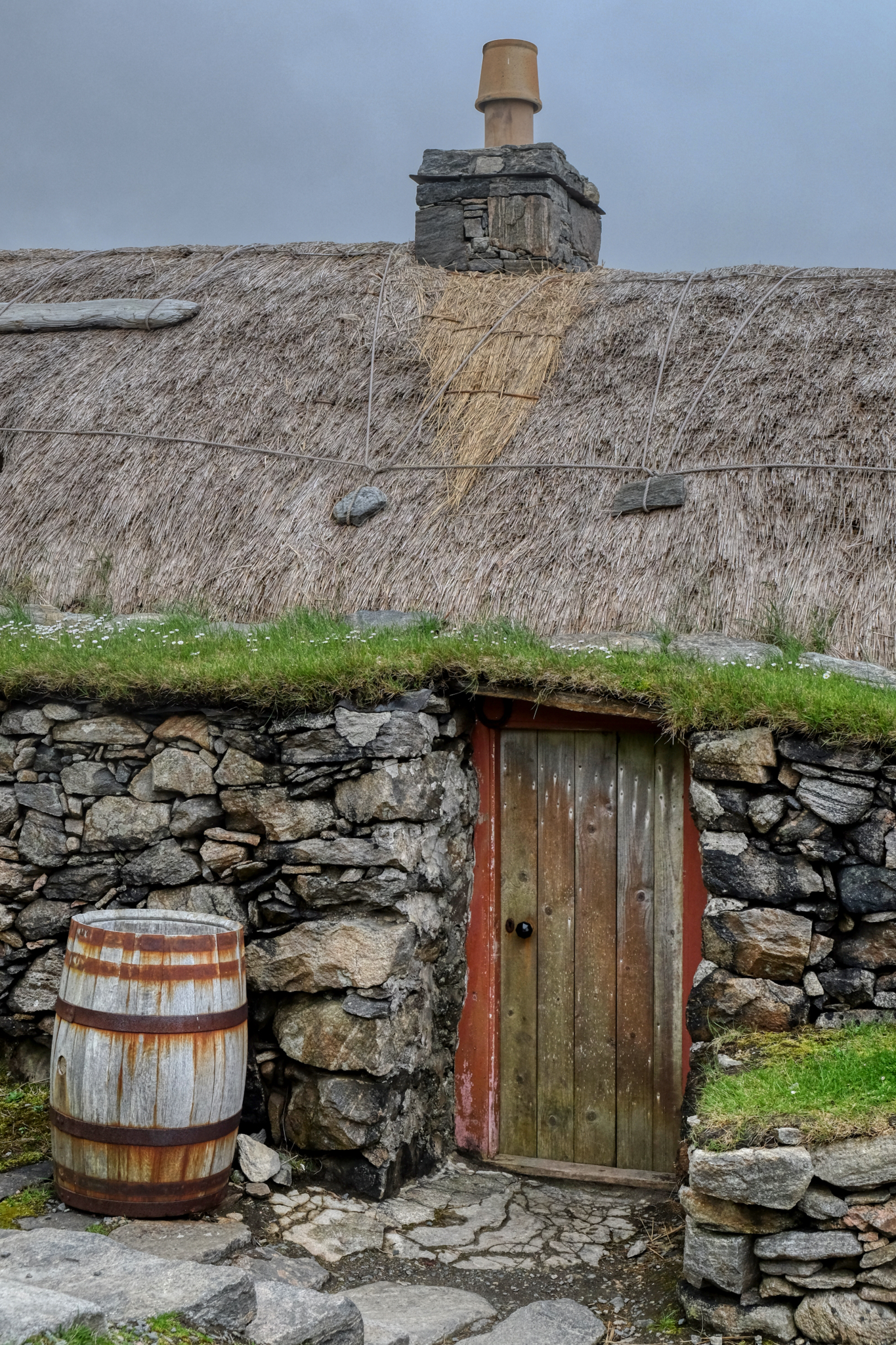 An unbelievably picturesque place.
An unbelievably picturesque place.
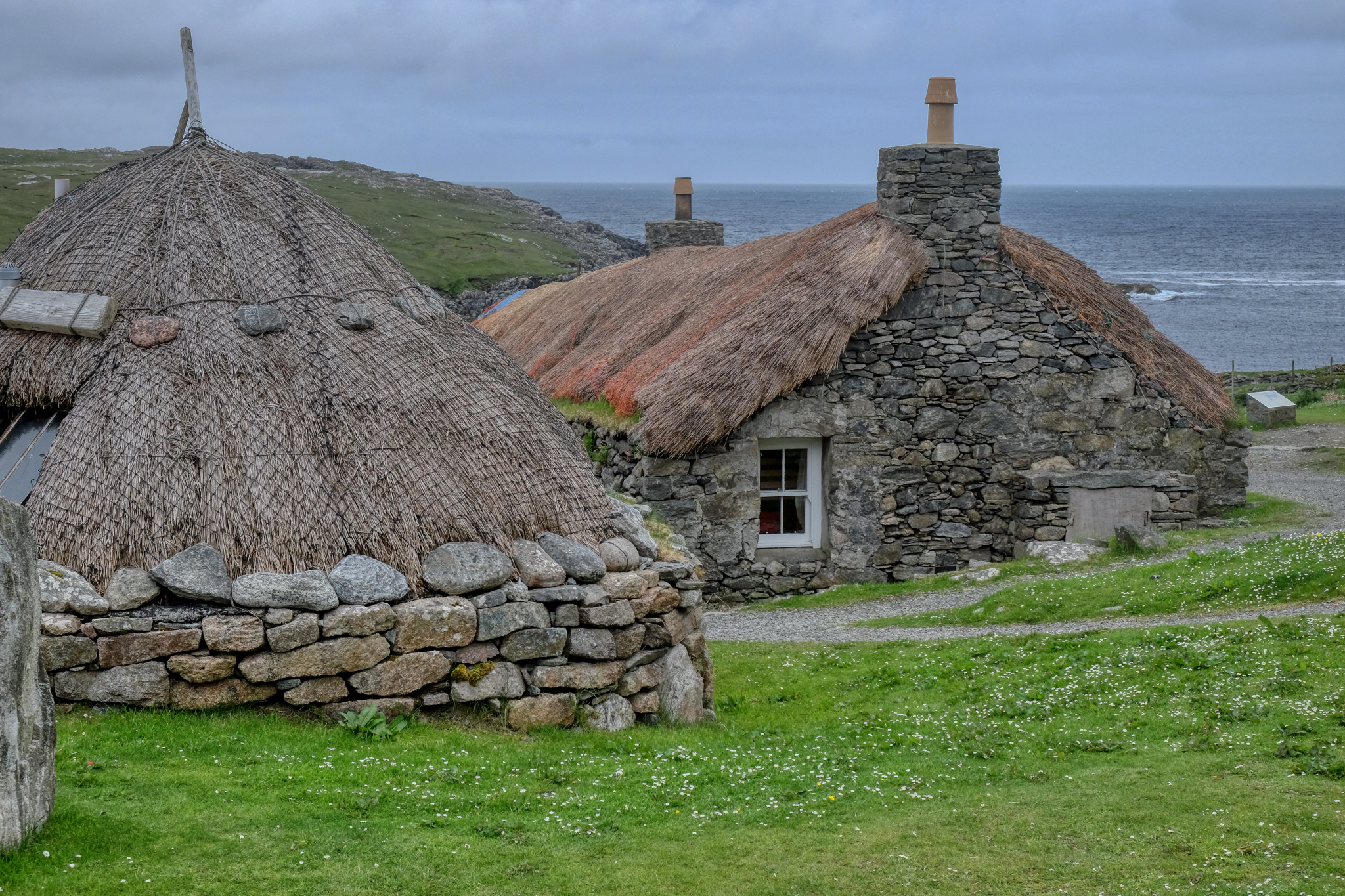 The village served as fishermen's cottages on a small bay.
The village served as fishermen's cottages on a small bay.
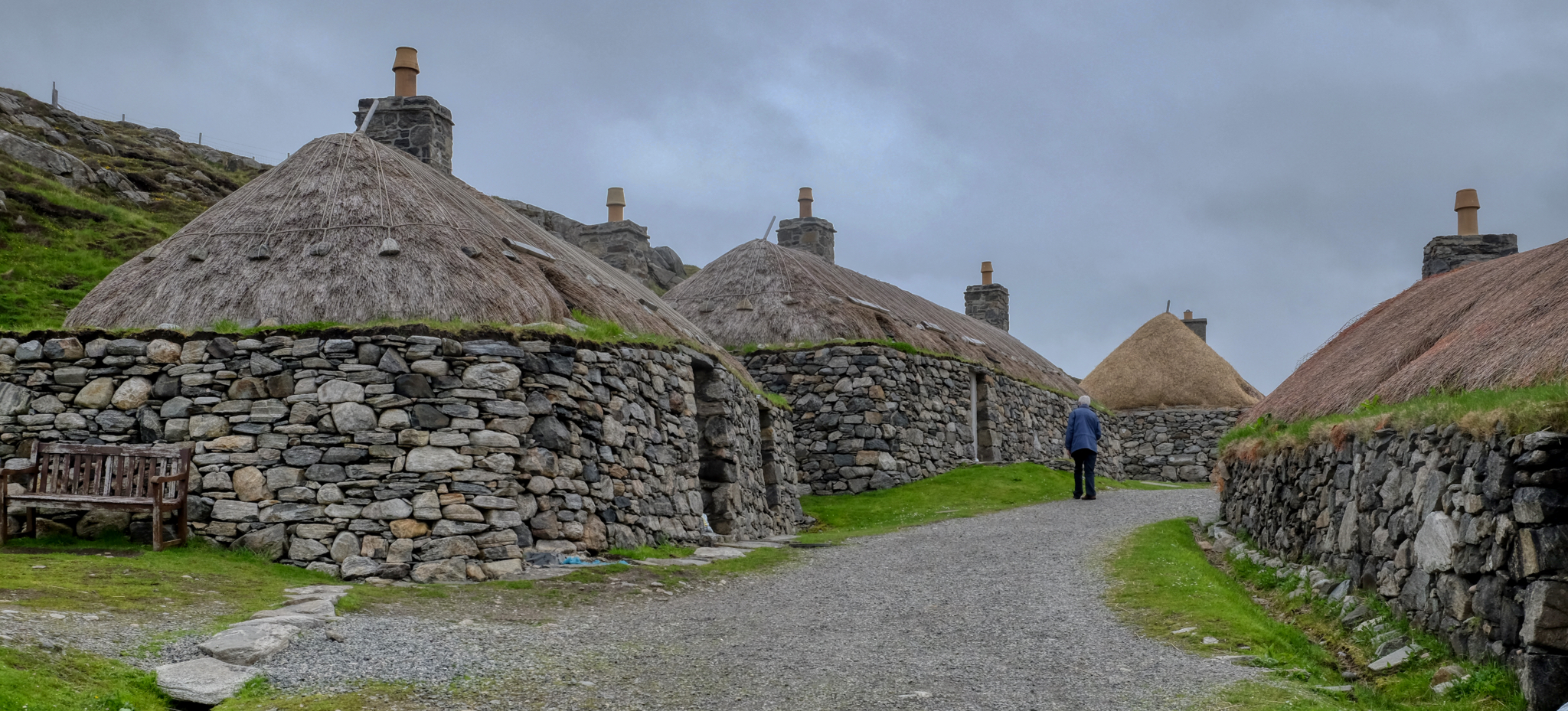 We strolled around this wonderful place for hours.
We strolled around this wonderful place for hours.
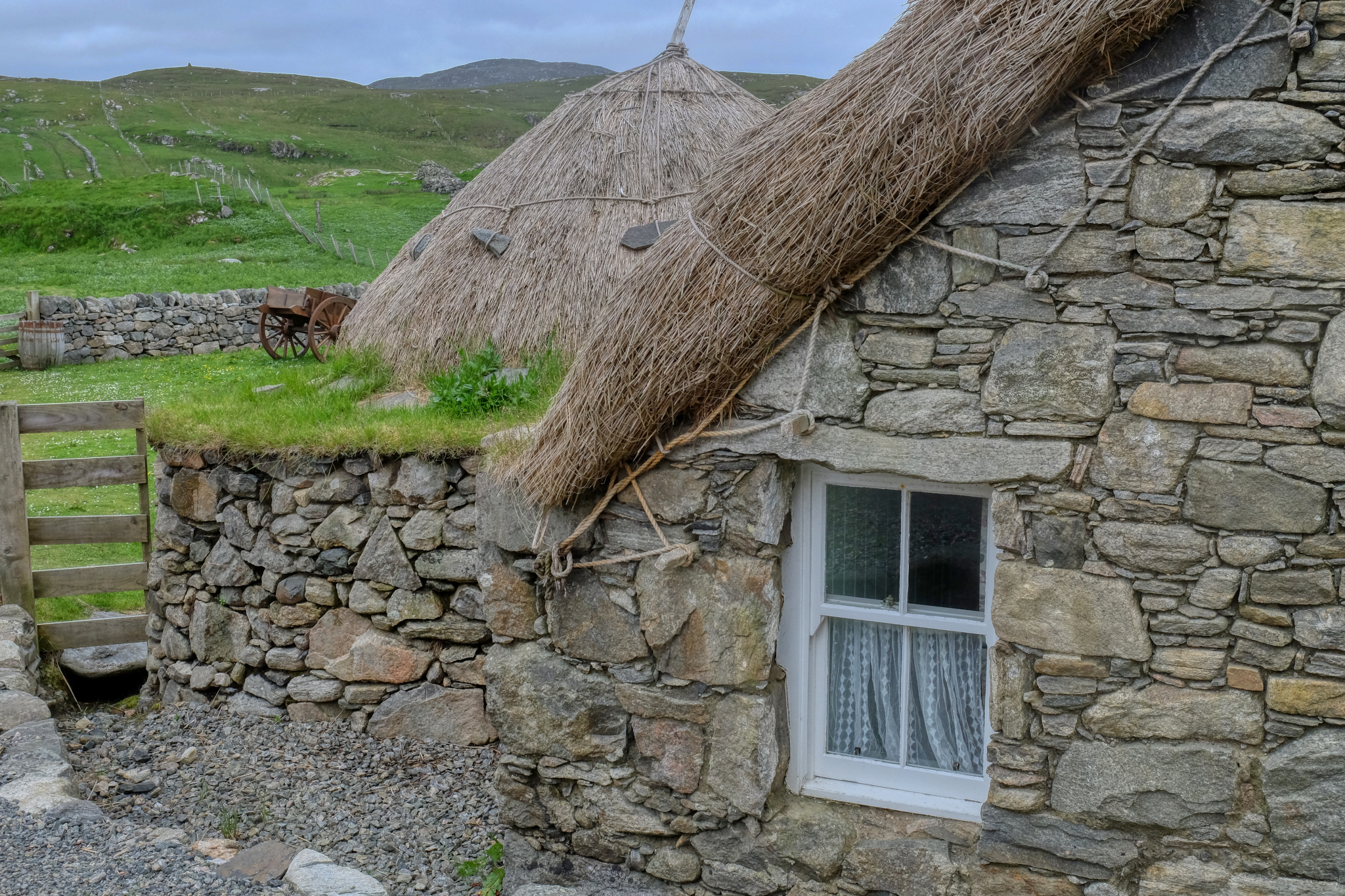 I have to confess: I took over 100 photos here . . . I couldn't help myself, I was overcome by the charming beauty.
I have to confess: I took over 100 photos here . . . I couldn't help myself, I was overcome by the charming beauty.
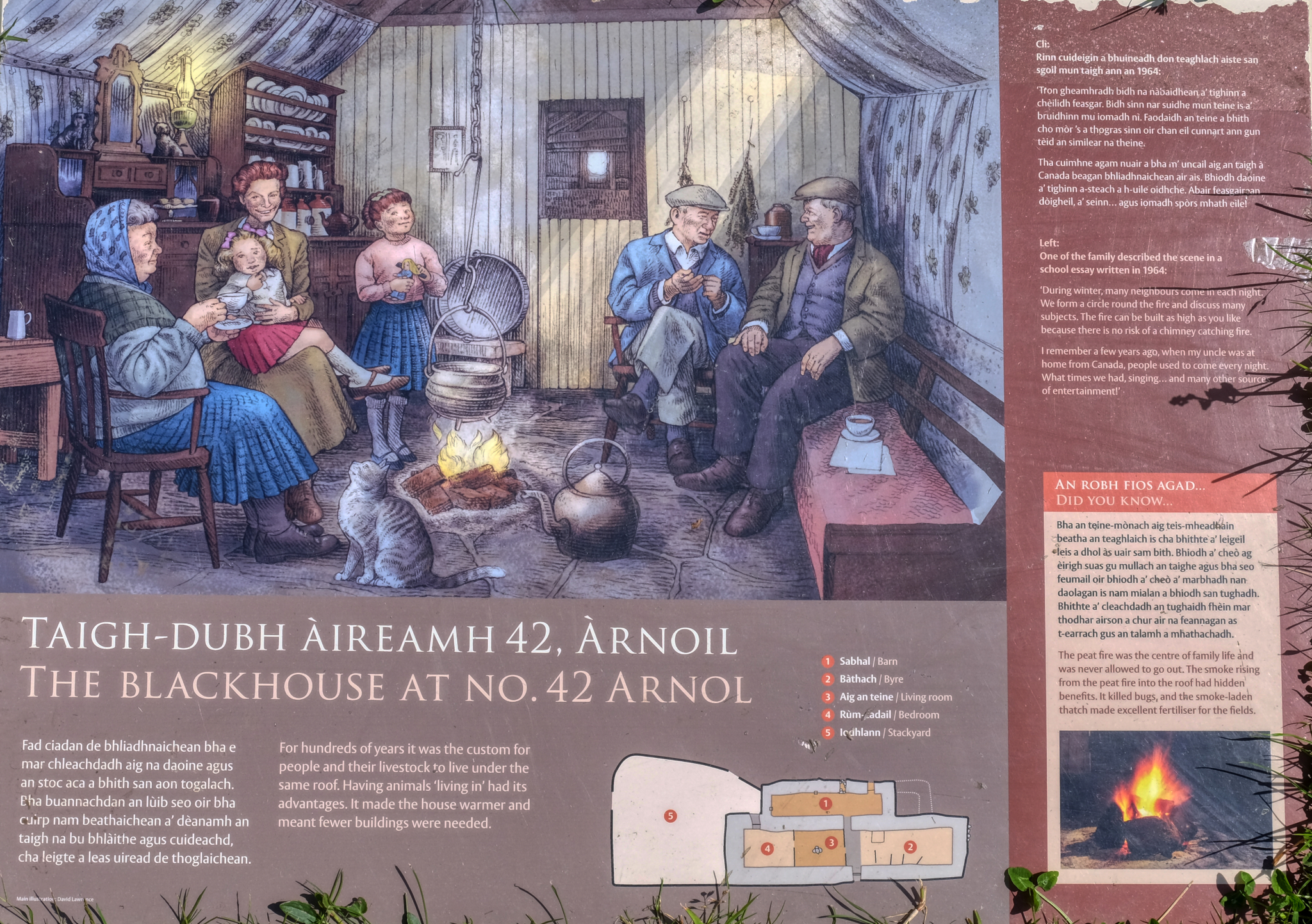 An historical marker on one of the black houses. Fascinating.
An historical marker on one of the black houses. Fascinating.
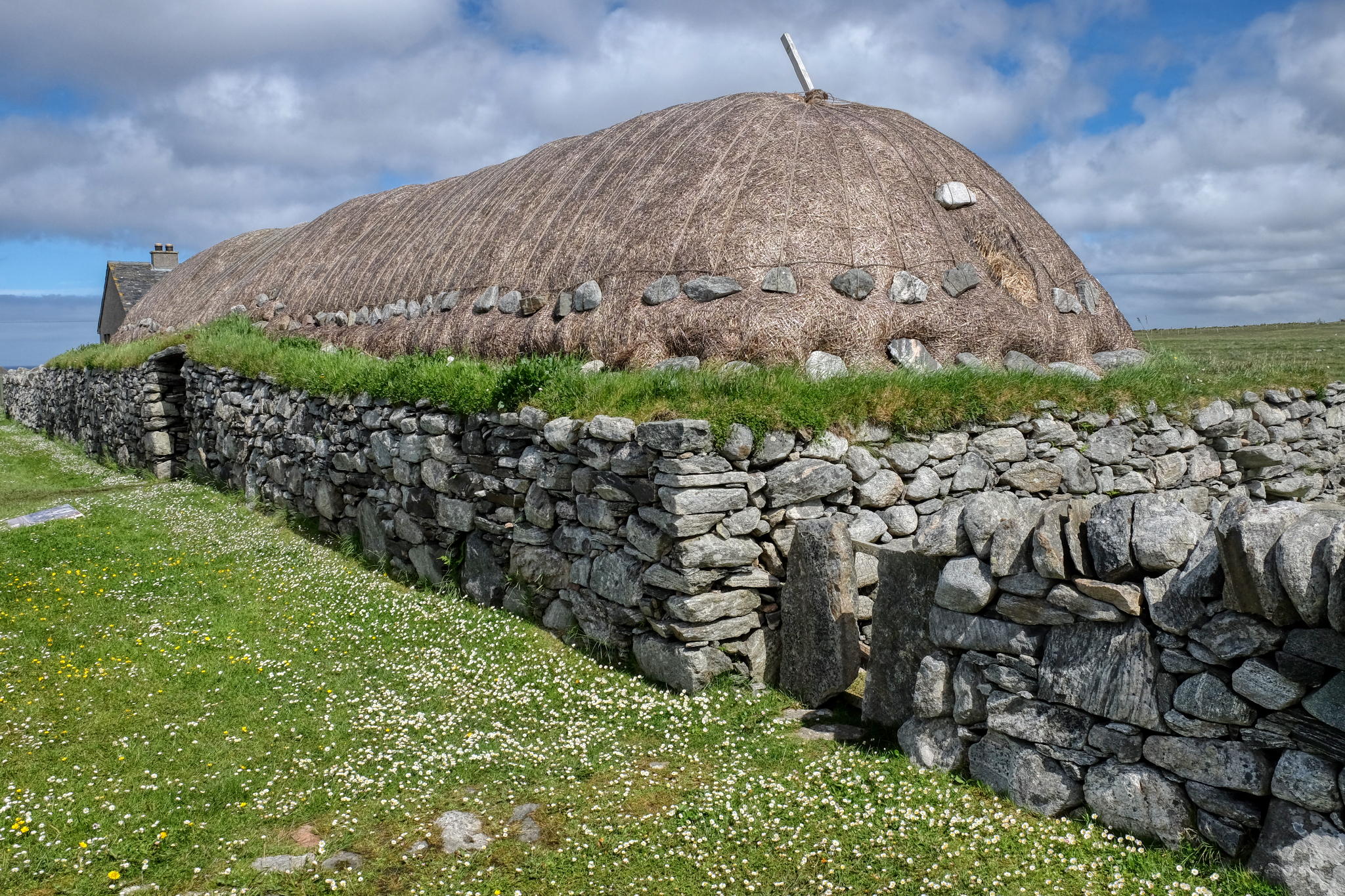 Out along the seaside west coast road of the Isle of Harris. A crofters barn, freshly thatched . . . and still in use.
Out along the seaside west coast road of the Isle of Harris. A crofters barn, freshly thatched . . . and still in use.
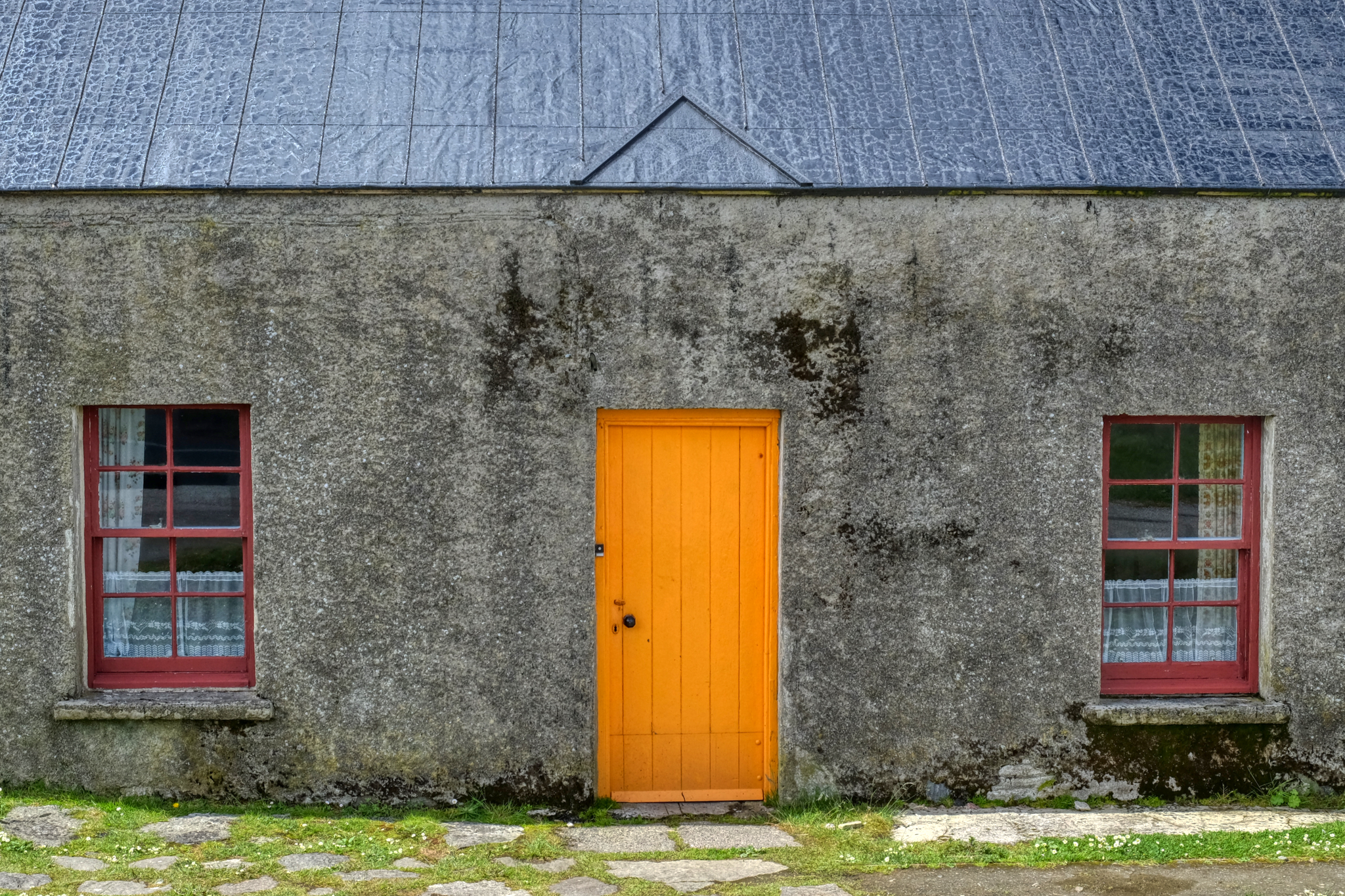 The houses here are very simple and austere . . . almost no decoration at all.
The houses here are very simple and austere . . . almost no decoration at all.
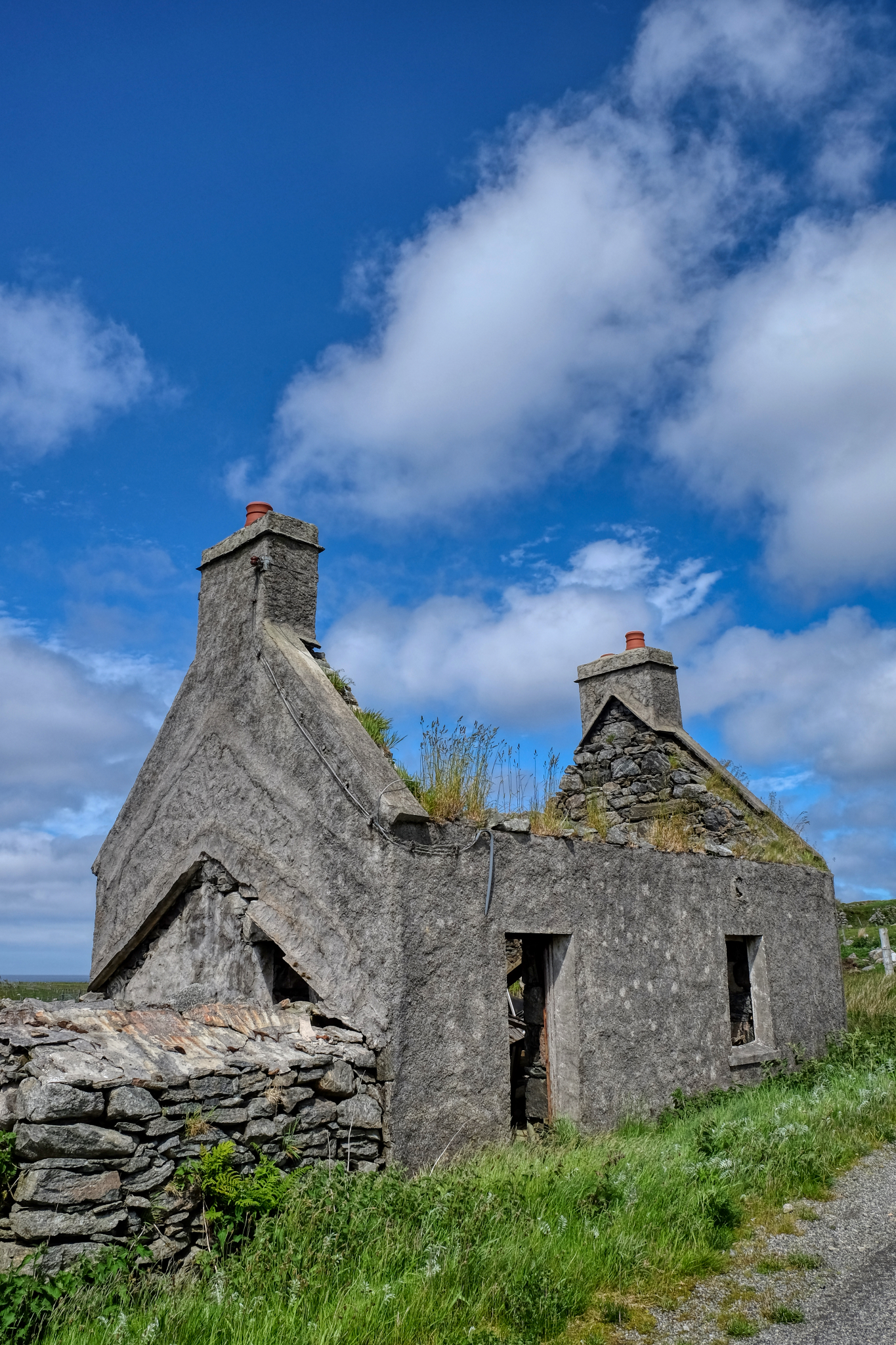 There are many abandoned houses in the west of these islands. There has been a steady drop in population as younger people move to towns and cities on the mainland of Scotland for jobs. However, some of the old houses are being restored by pensioners from as far away as London.
There are many abandoned houses in the west of these islands. There has been a steady drop in population as younger people move to towns and cities on the mainland of Scotland for jobs. However, some of the old houses are being restored by pensioners from as far away as London.
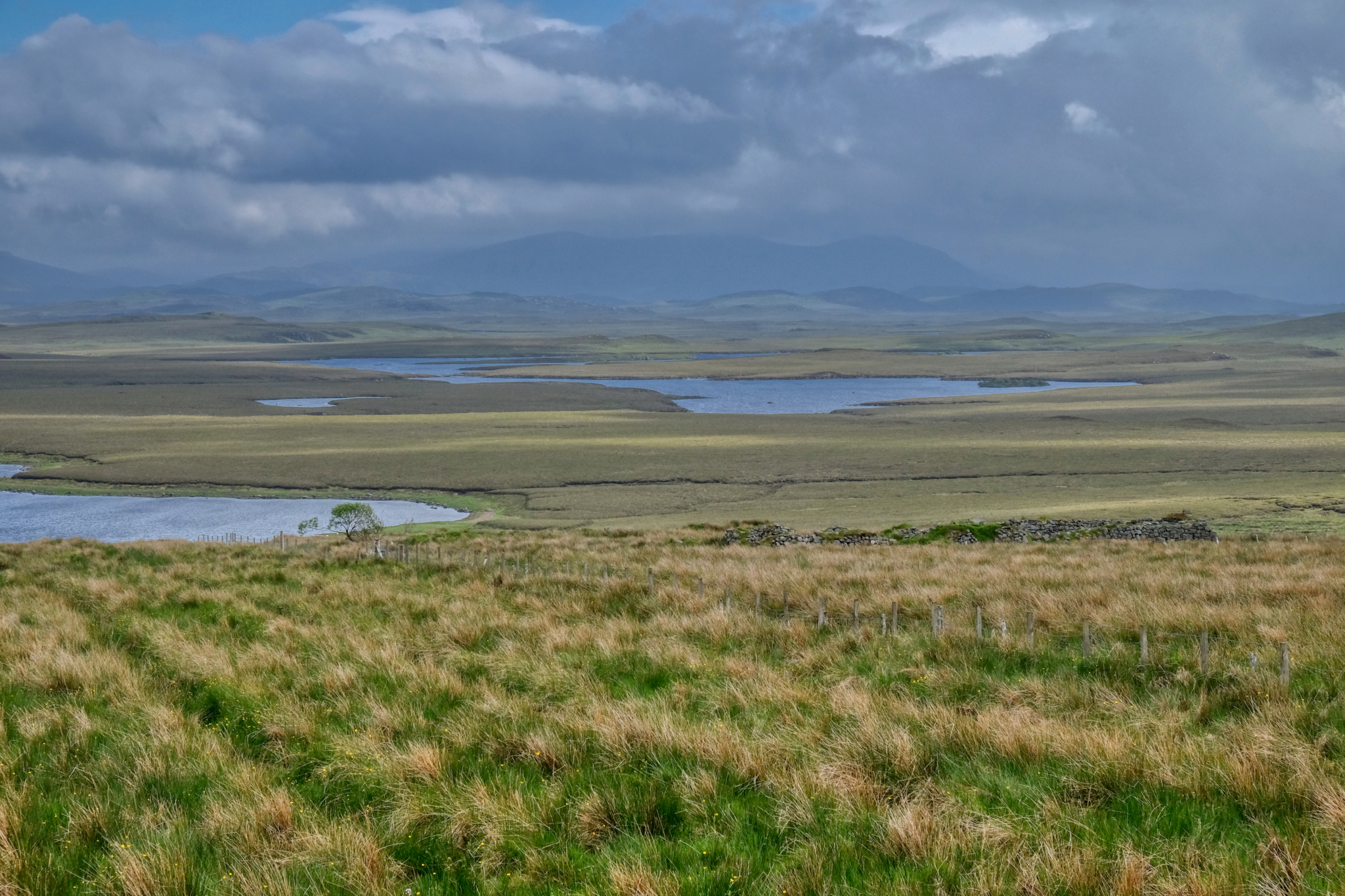 And on and on we went . . . north to see an amazing landmark . . .
And on and on we went . . . north to see an amazing landmark . . .
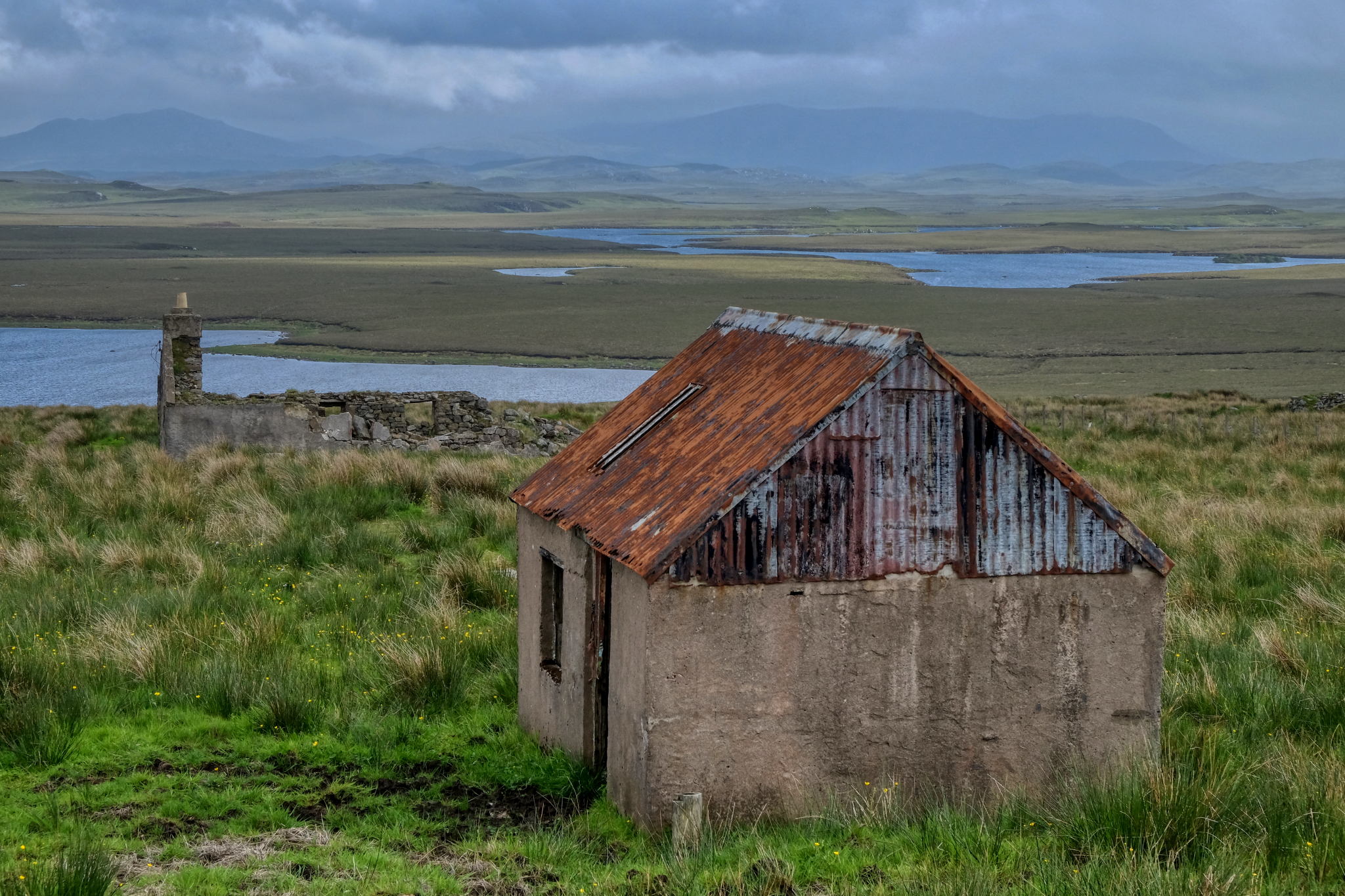 Out on a remote stretch of the north of the Isle of Lewis, more abandoned crofters cottages.
Out on a remote stretch of the north of the Isle of Lewis, more abandoned crofters cottages.
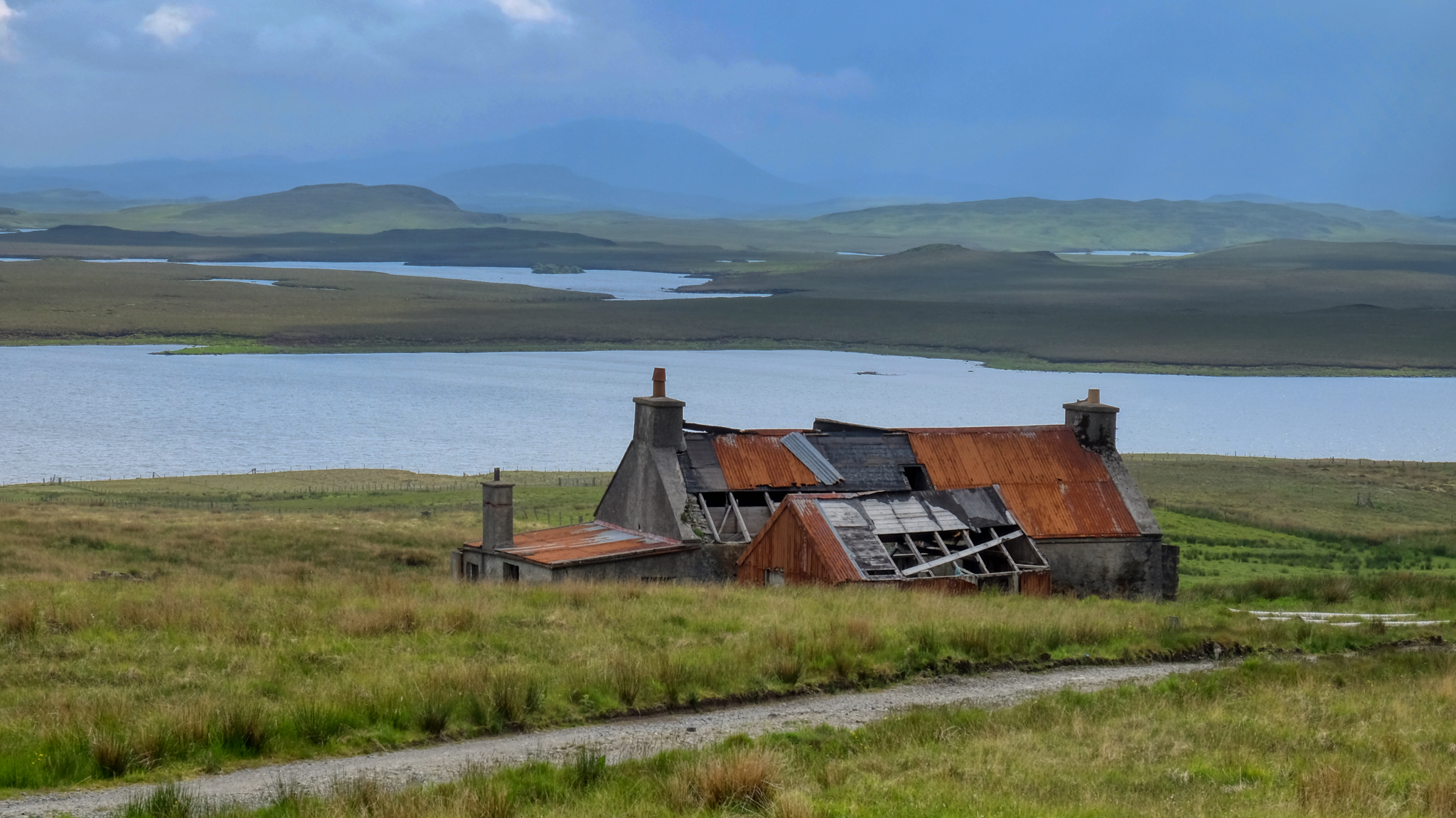 The views became more fantastical, otherworldly.
The views became more fantastical, otherworldly.
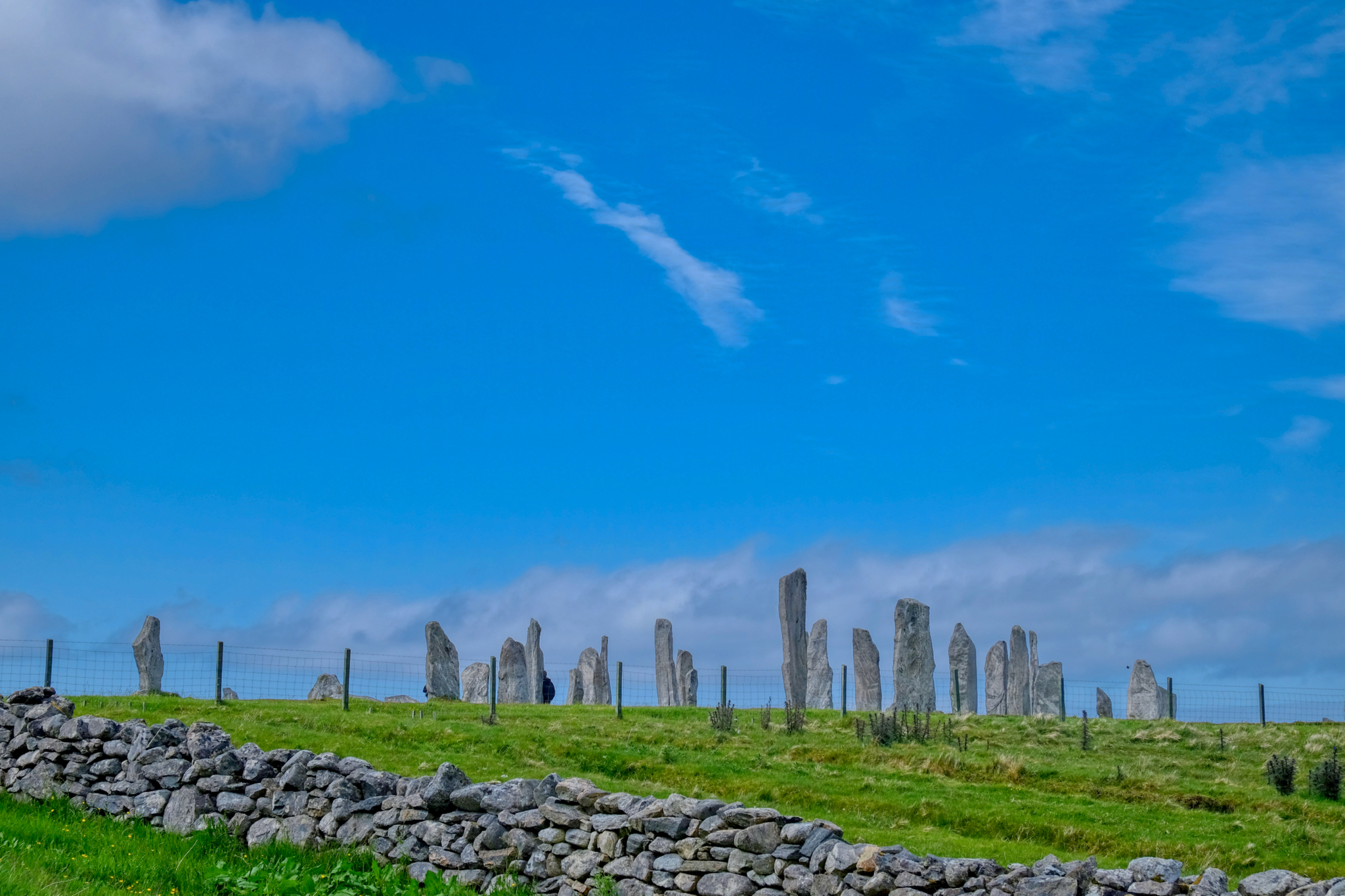 At last we had arrived at our destination: The Callanish Standing Stones!
At last we had arrived at our destination: The Callanish Standing Stones!
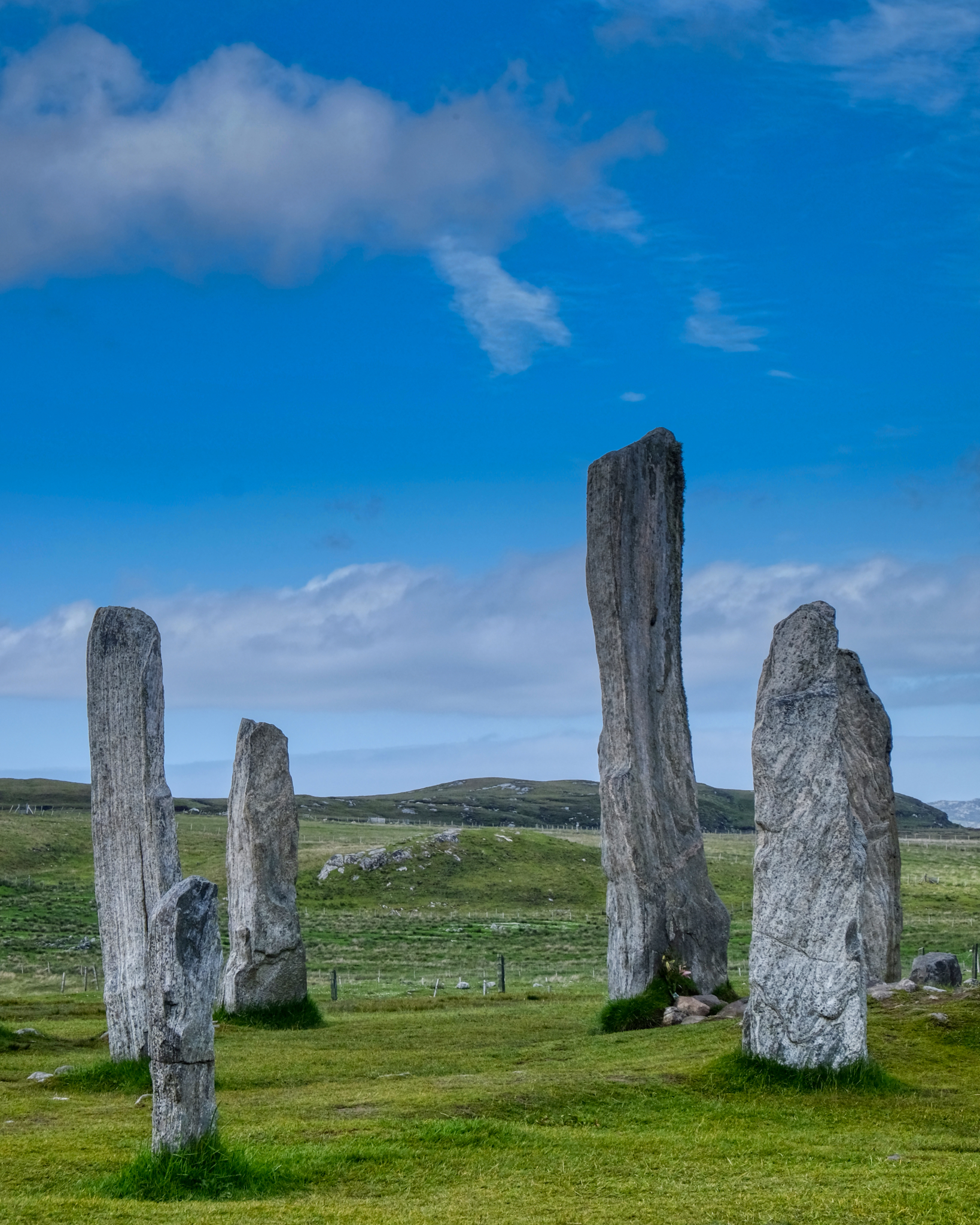 I have been to Stonehenge, but these were far more magnificent!
I have been to Stonehenge, but these were far more magnificent!
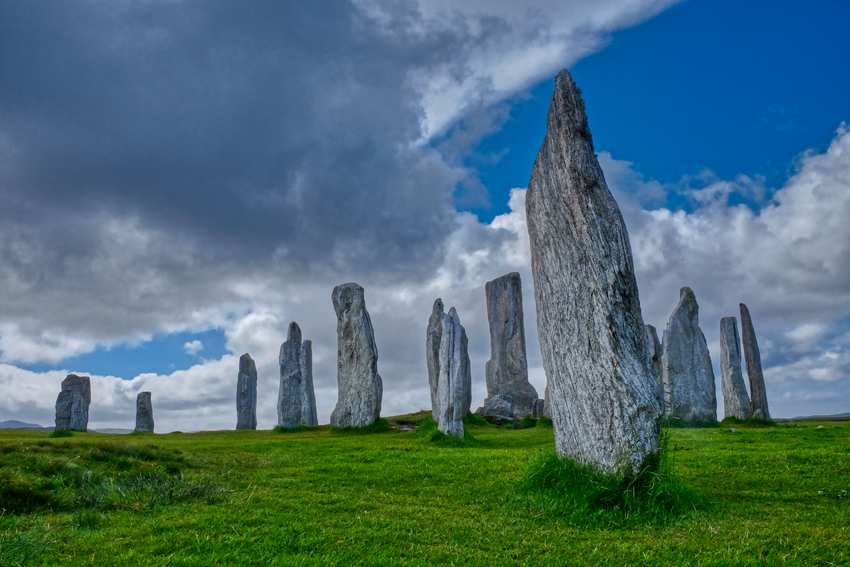
"The first traces of human activity are indicated by a broad ditch (no longer visible above ground) which appears to have belonged to some structure or enclosure. This may have been ritual, but could instead have been domestic. In the centuries around 3000 BC, however, the site was turned over to agriculture, which obliterated most of the earlier traces. After this, the site was allowed to grass over for a time." - Callanish Standing Stones
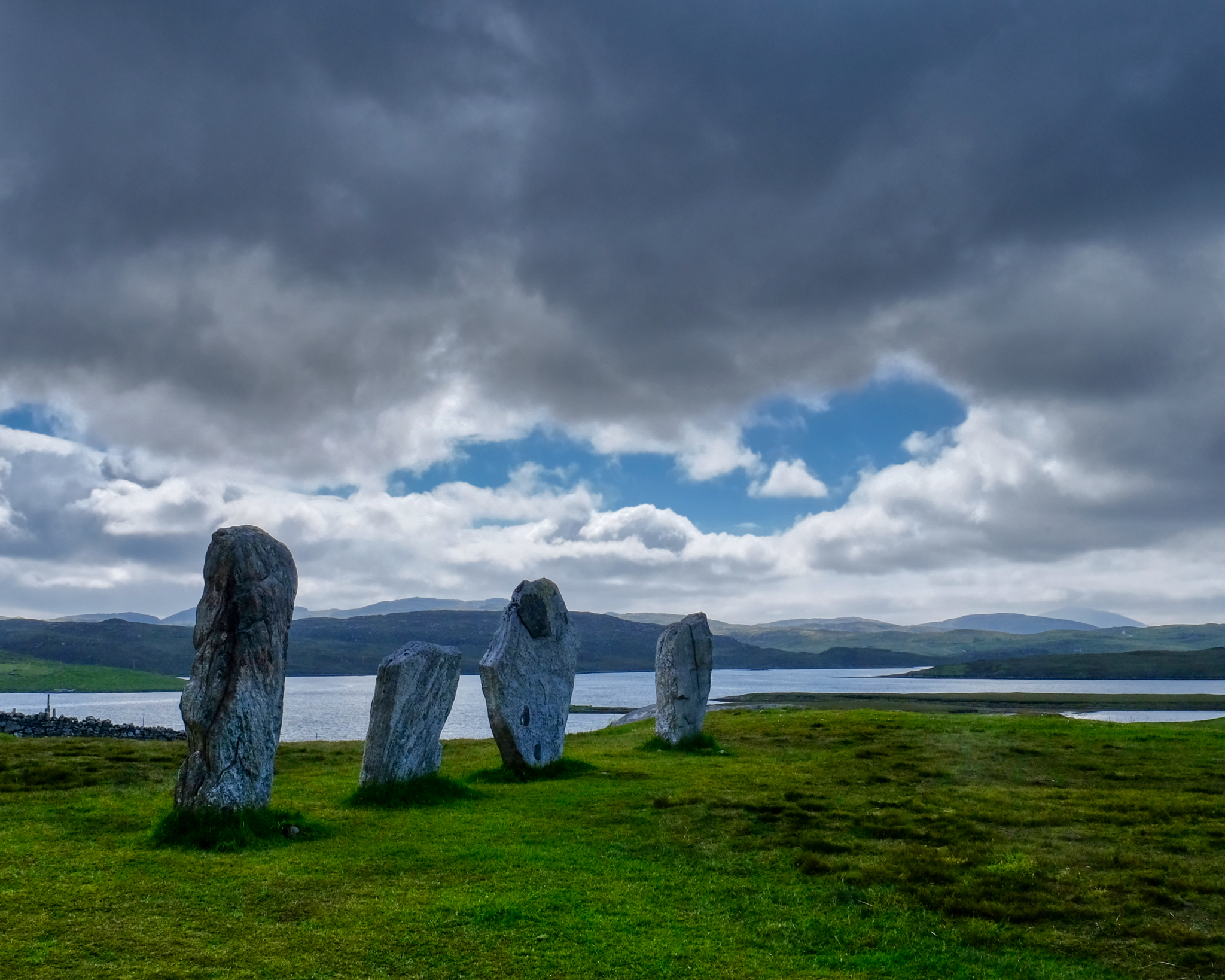 The stones sit on a hill with awesome views.
The stones sit on a hill with awesome views.
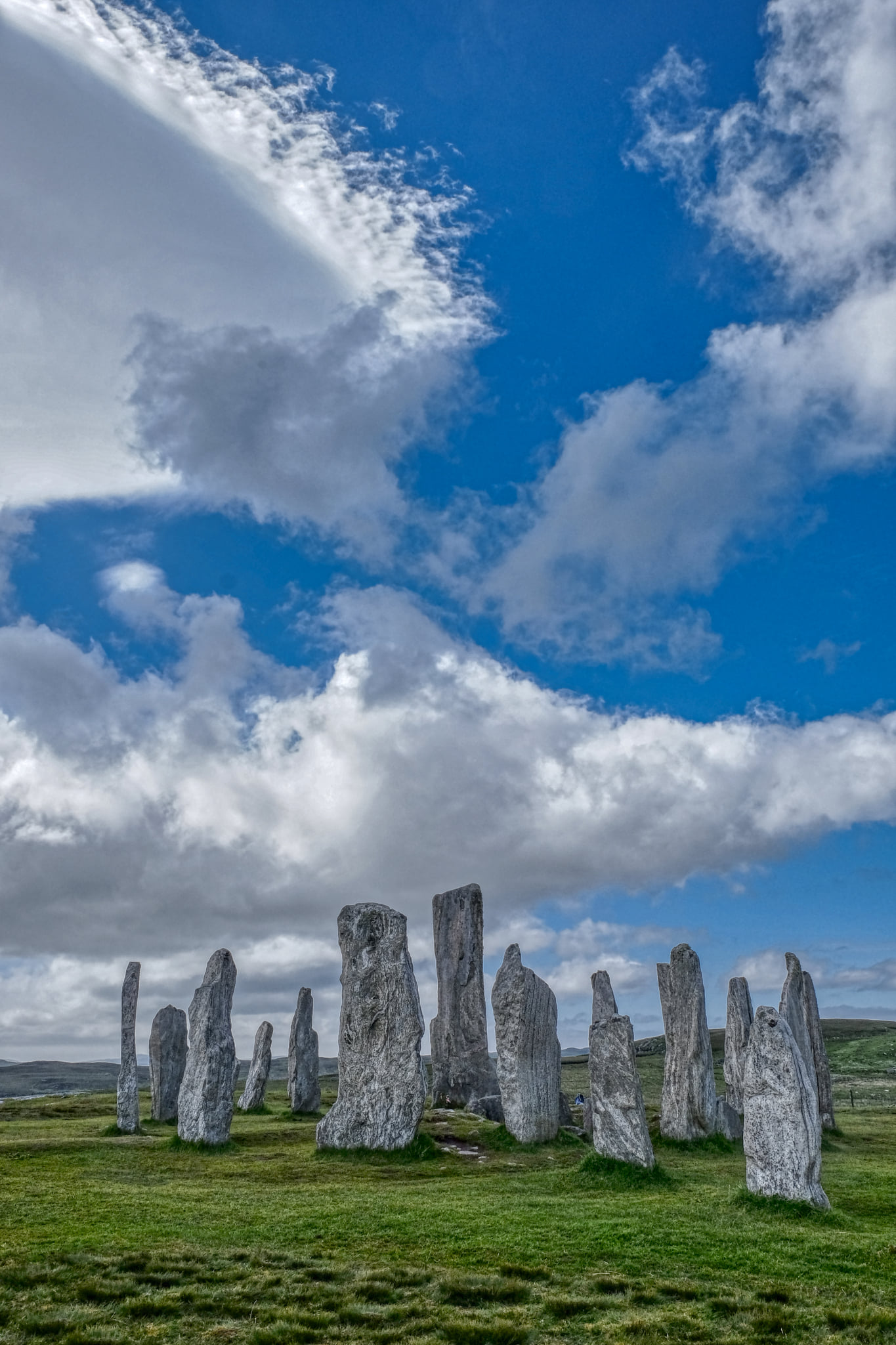 Under a stunning, ever-changing sky . . . the sun popping through now and again.
Under a stunning, ever-changing sky . . . the sun popping through now and again.
 Magic.
Magic.
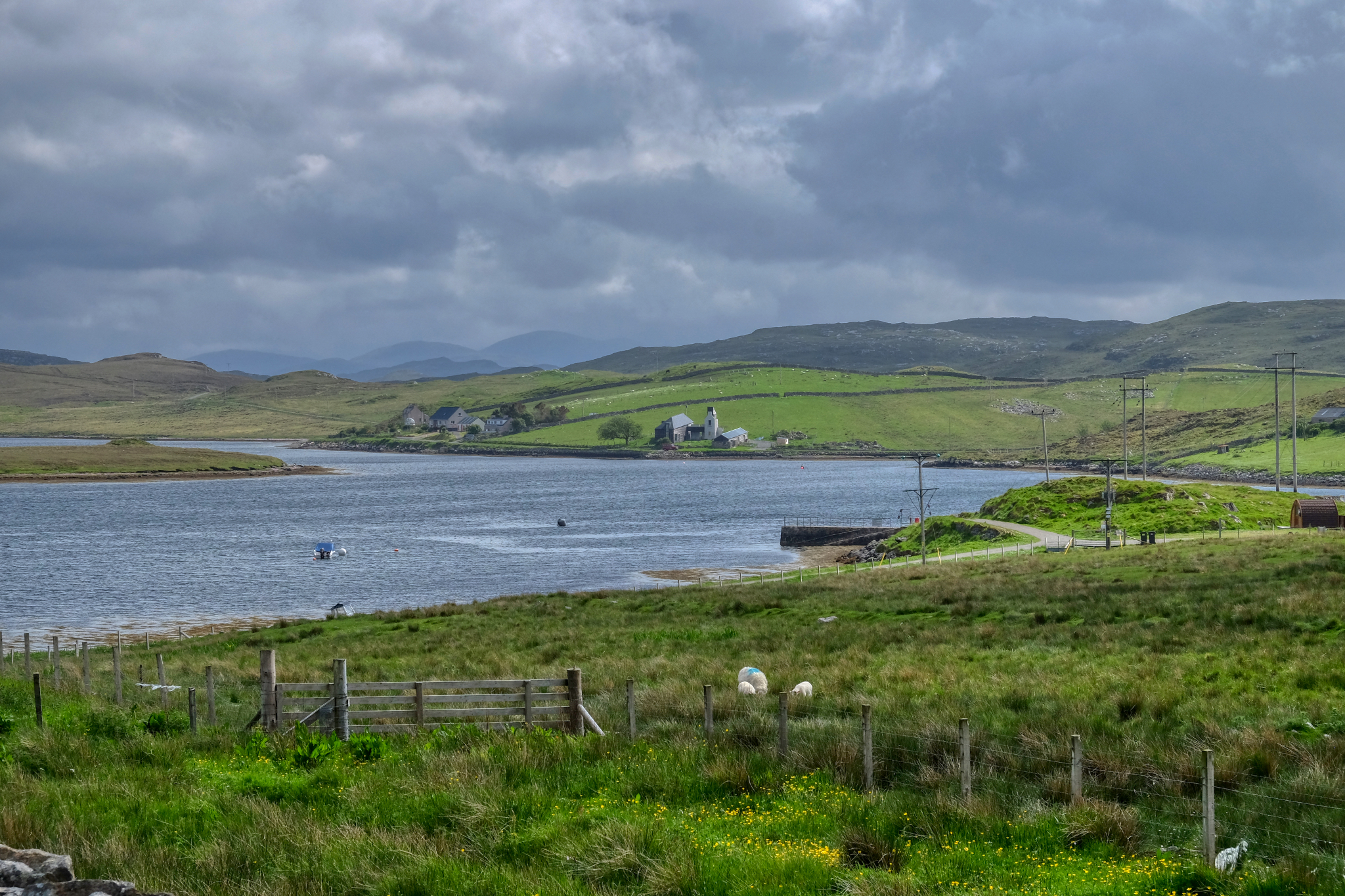 A view from the standing stones. Imagine living in a farm like this . . . in this place.
A view from the standing stones. Imagine living in a farm like this . . . in this place.
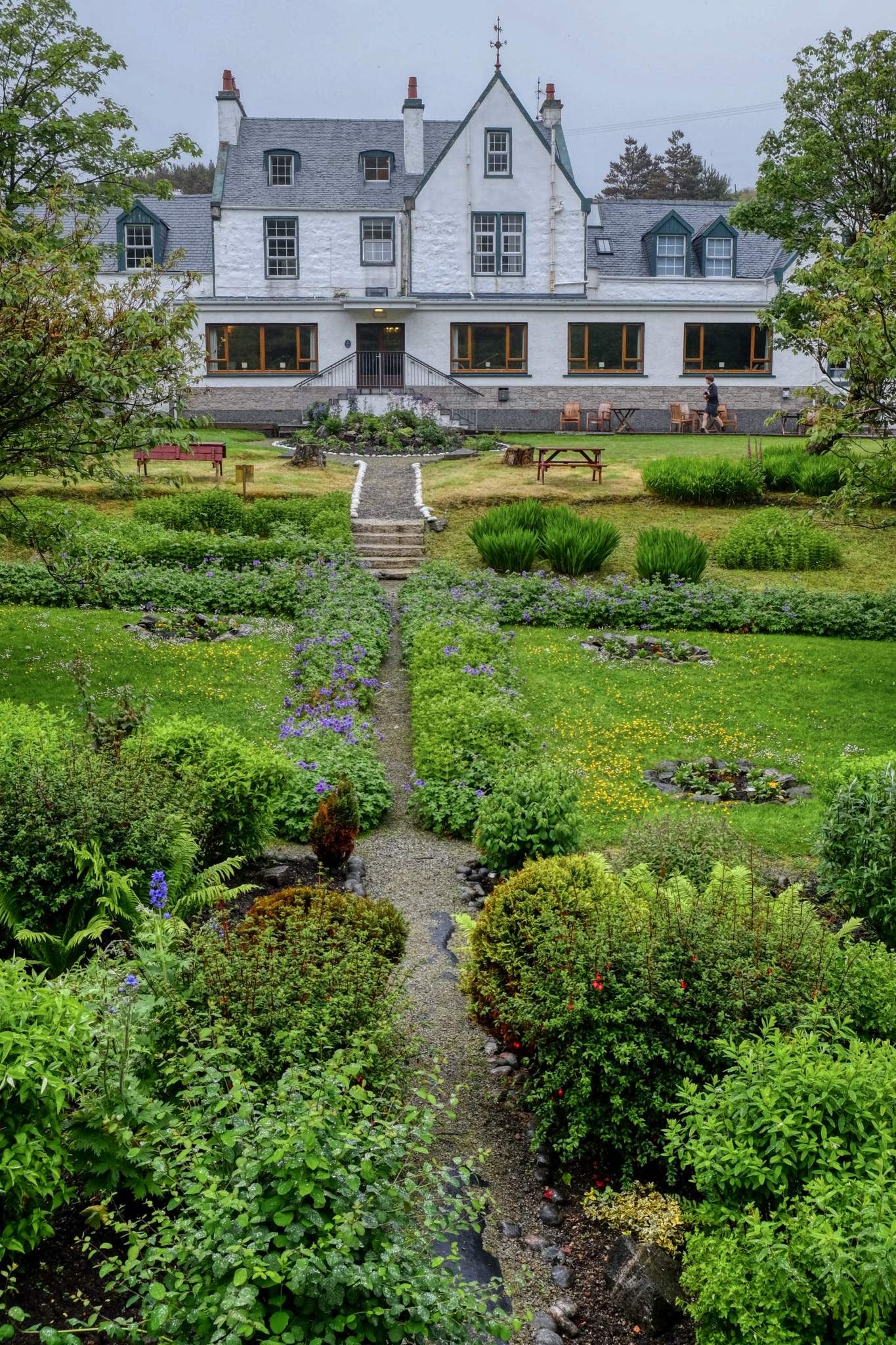 We stayed a lovely evening at the Harris Hotel, Isle of Lewis and Harris.
We stayed a lovely evening at the Harris Hotel, Isle of Lewis and Harris.
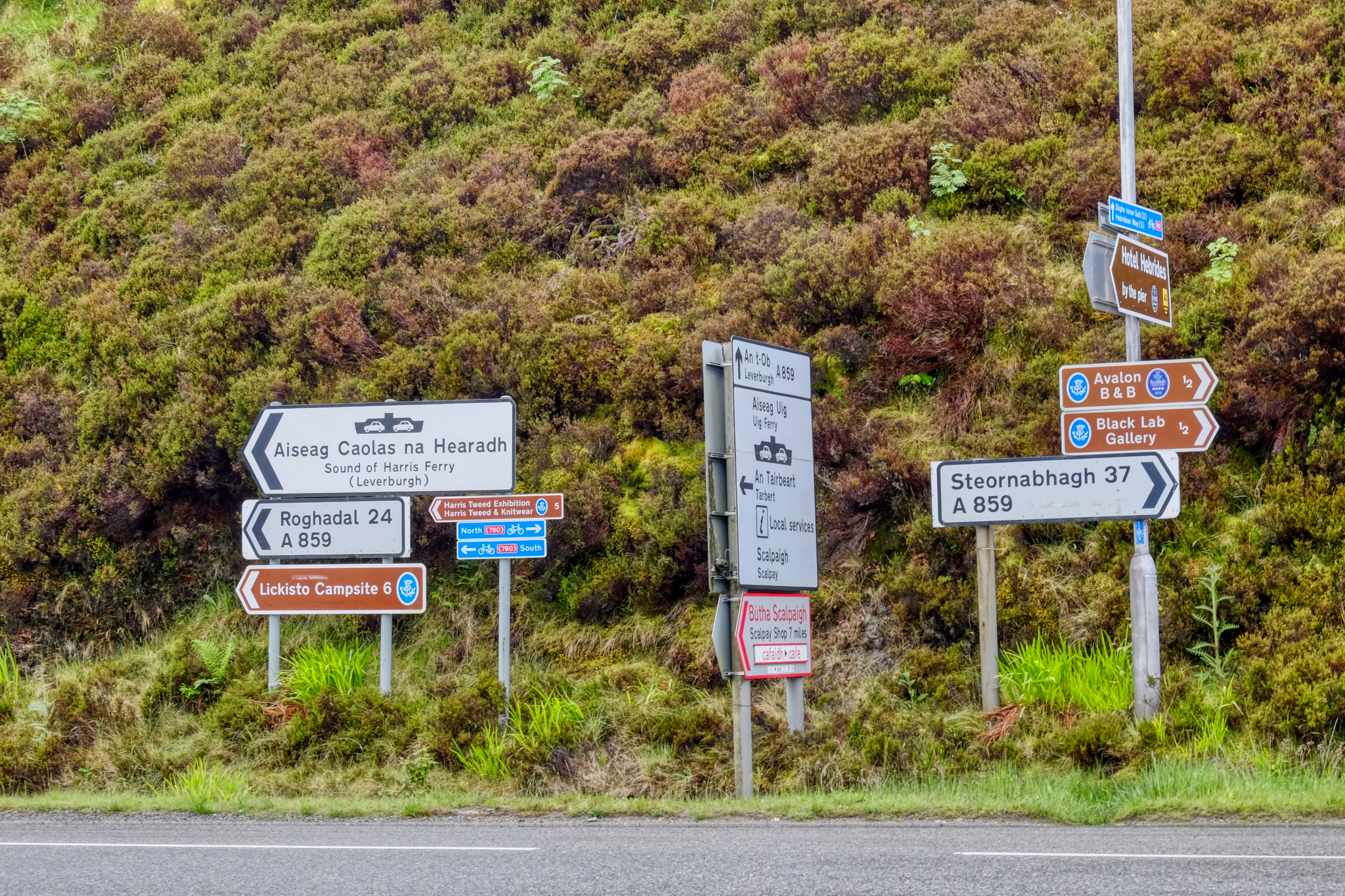 Ah! Harris tweed that way!
Ah! Harris tweed that way!
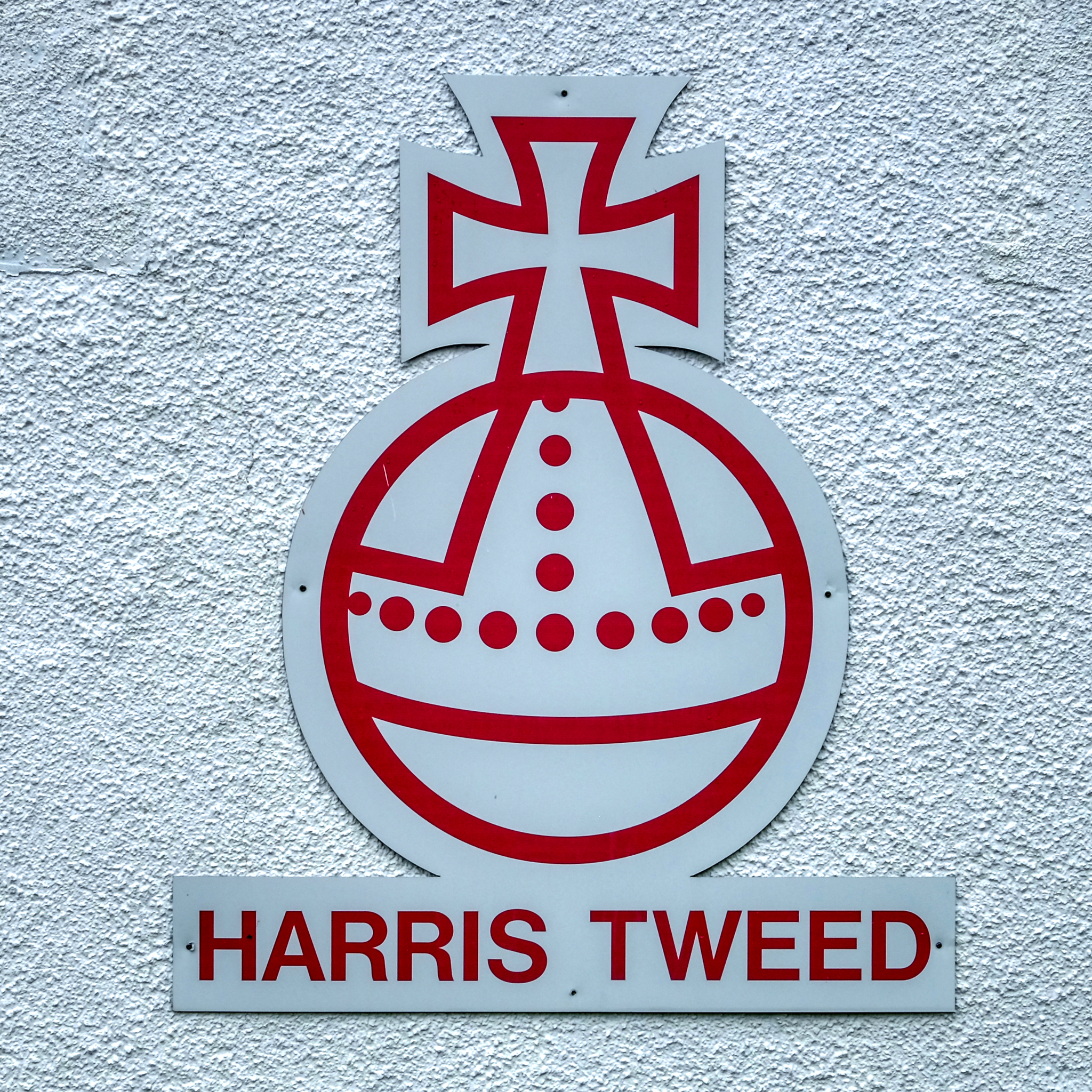 Only tweed that has been woven on the Isle of Harris can be called Harris tweed. It is famous all over the world.
Only tweed that has been woven on the Isle of Harris can be called Harris tweed. It is famous all over the world.
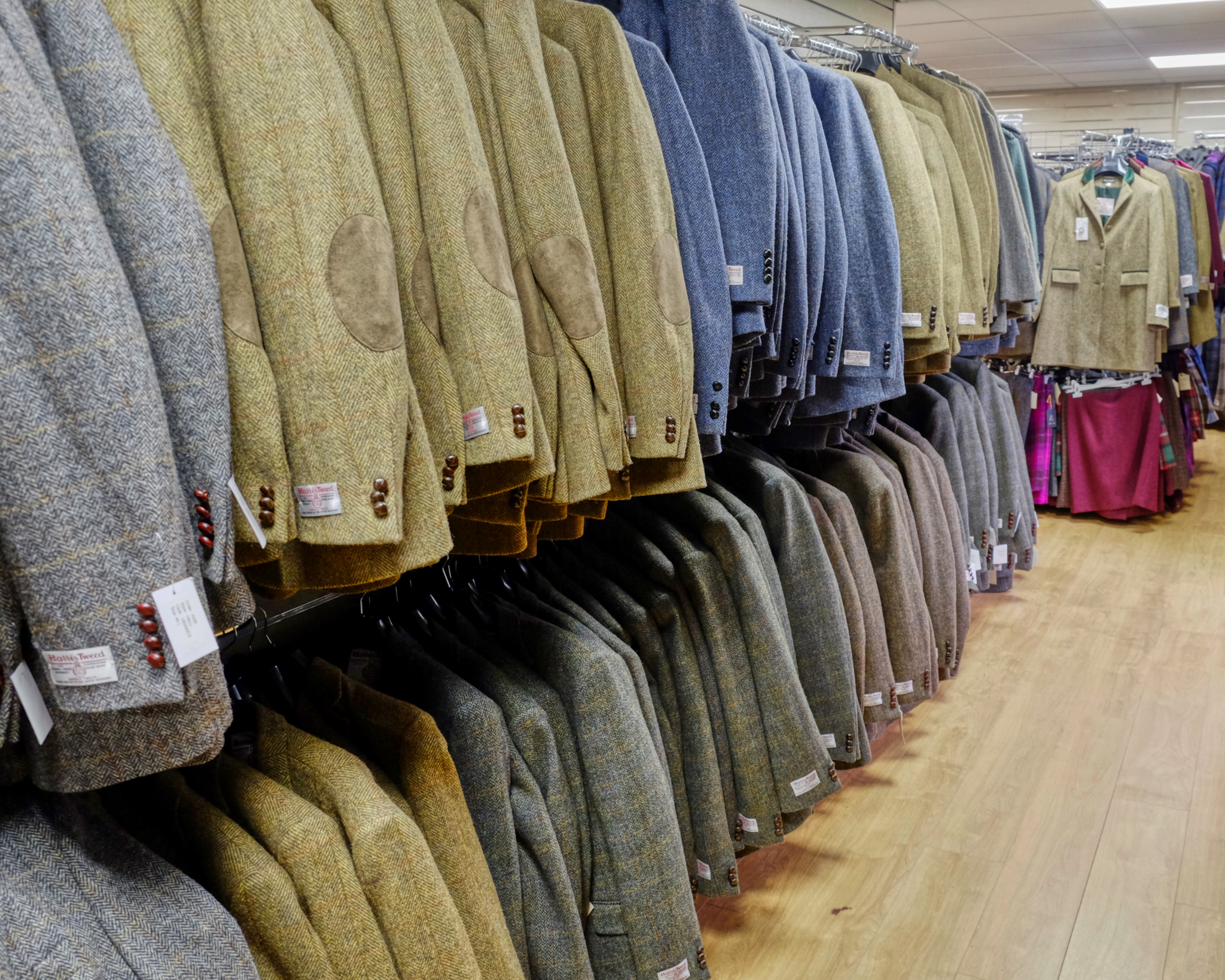 When I lived in London many years ago, I had a very nice Harris tweed sport coat. I tried several of these on . . . but they felt too old fashioned . . . and professorial.
When I lived in London many years ago, I had a very nice Harris tweed sport coat. I tried several of these on . . . but they felt too old fashioned . . . and professorial.
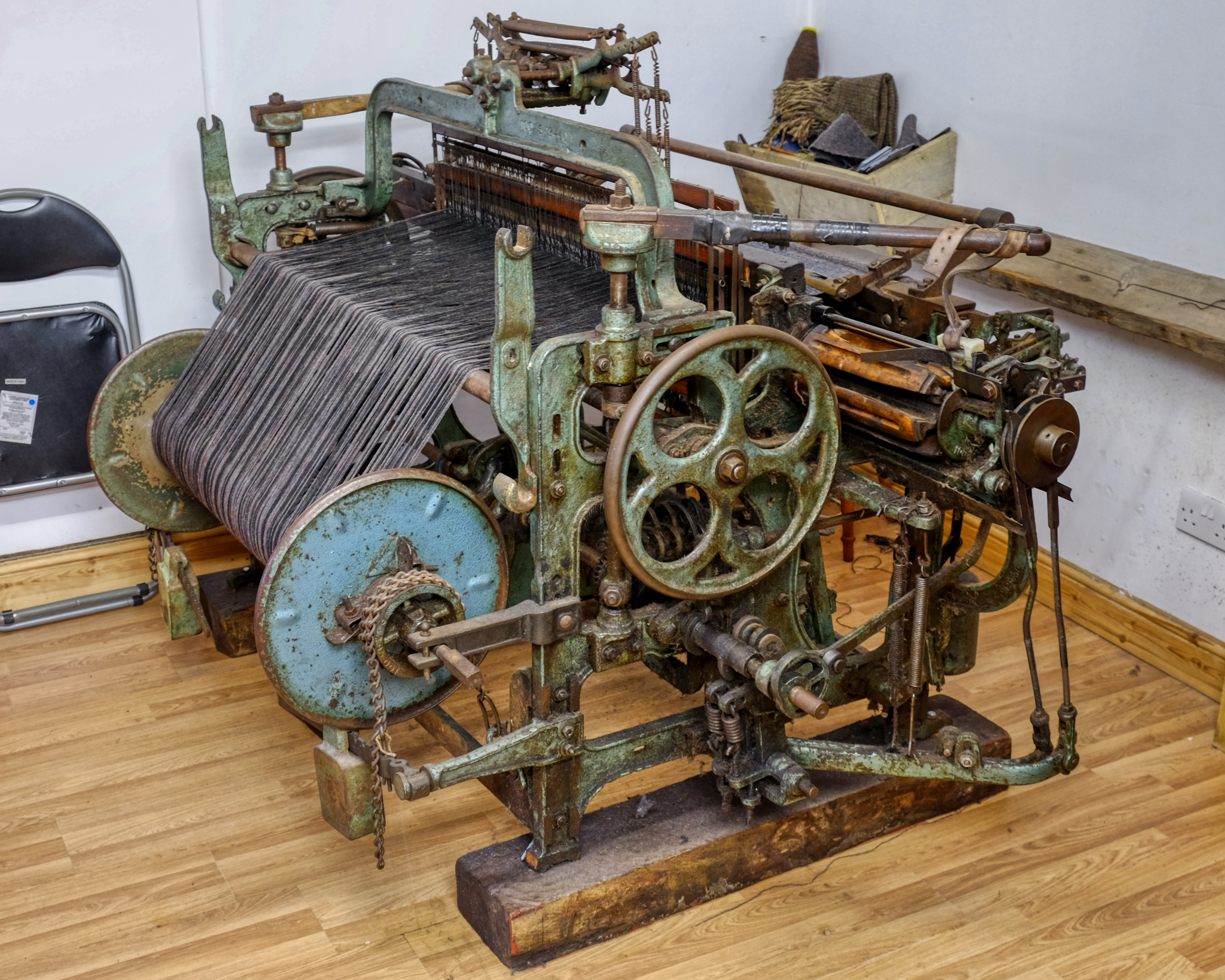 The winter nights on the Outer Hebrides are long, dark, cold, and windy. Local residents have spent the dark months weaving the distinctive tweed the island is famous for on these looms.
The winter nights on the Outer Hebrides are long, dark, cold, and windy. Local residents have spent the dark months weaving the distinctive tweed the island is famous for on these looms.
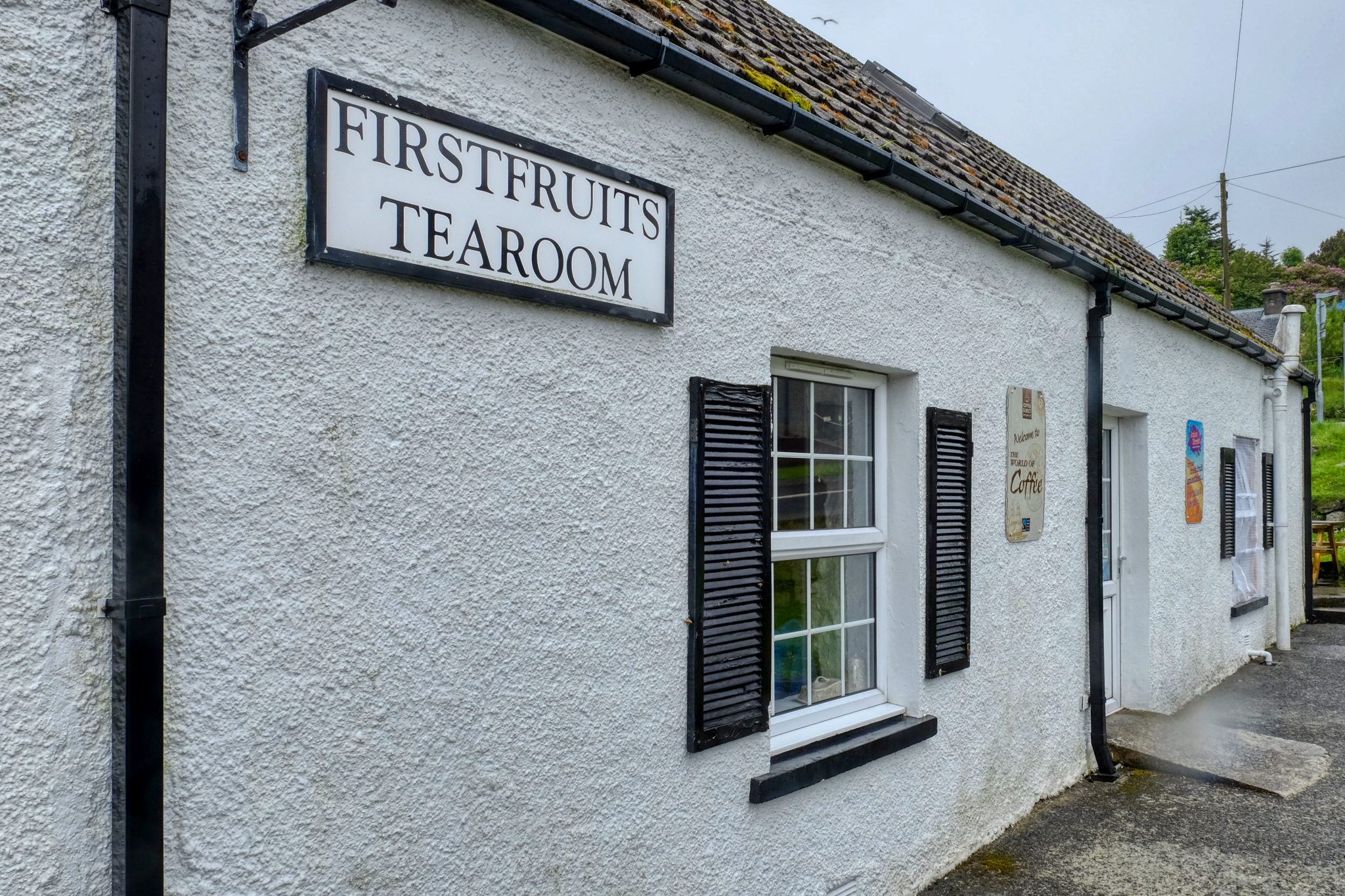 We eagerly explored the few small villages out on the islands. A nice cup of coffee and scones was very welcome.
We eagerly explored the few small villages out on the islands. A nice cup of coffee and scones was very welcome.
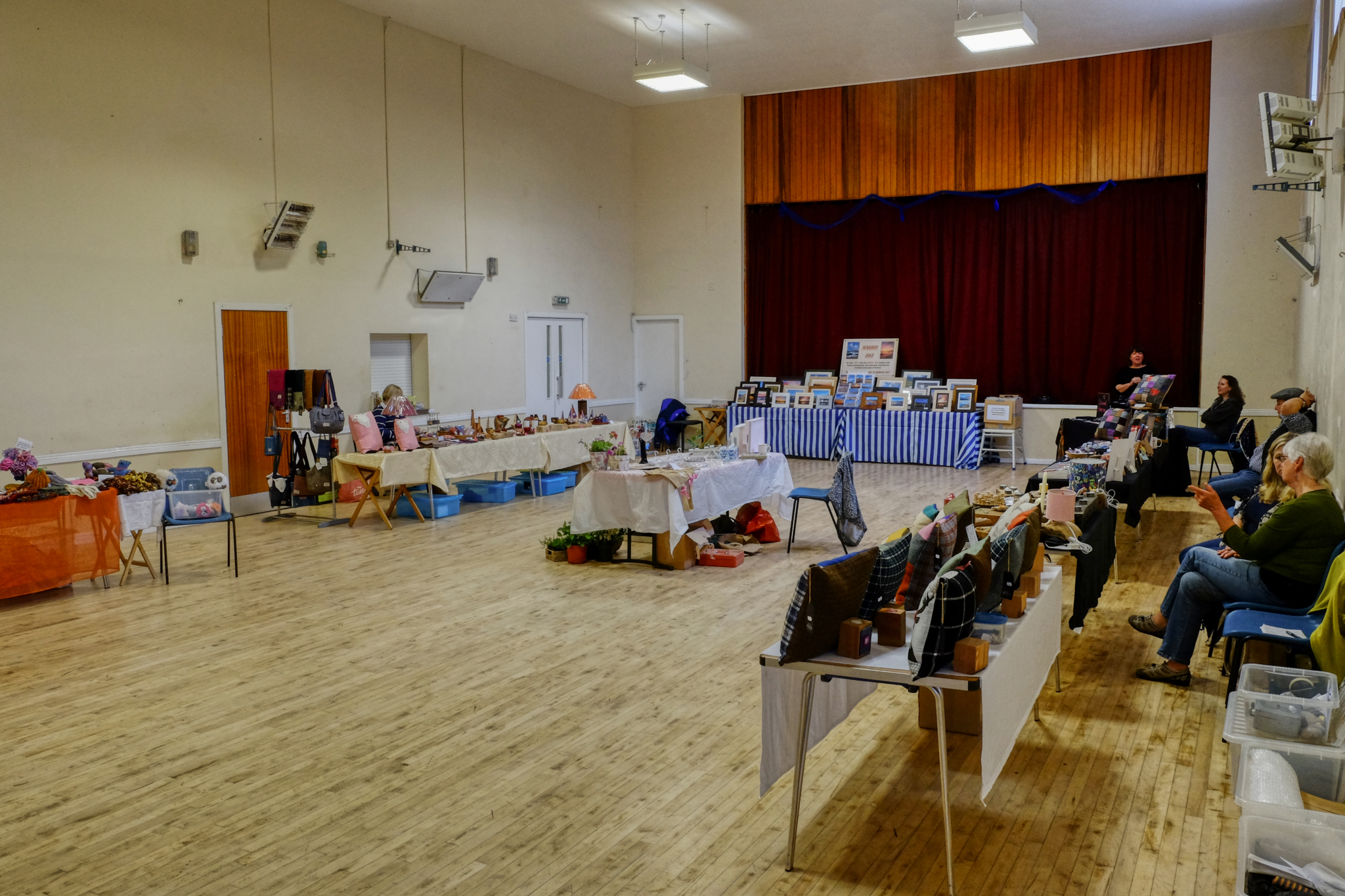 We always stop whenever we see a "craft sale" sign. You never know what amazing things you might find . . . and we have found and purchased many fantastic things on our world travels in these kinds of places . . . but not at this place. We always try to buy something, but could not find a thing we wanted here. Sorry ladies.
We always stop whenever we see a "craft sale" sign. You never know what amazing things you might find . . . and we have found and purchased many fantastic things on our world travels in these kinds of places . . . but not at this place. We always try to buy something, but could not find a thing we wanted here. Sorry ladies.
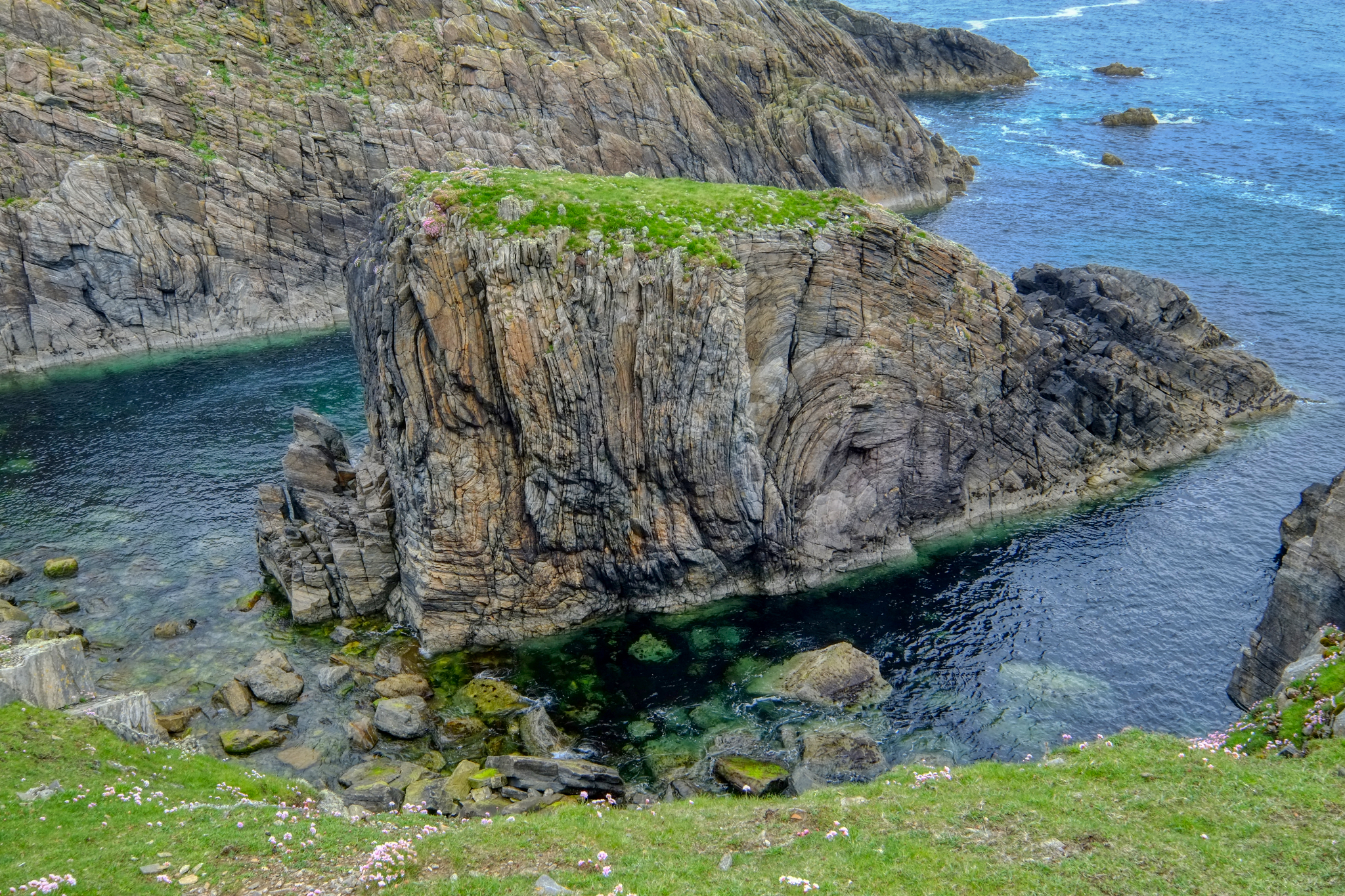
After five days on the small roads, we eventually made it to the very tip top of the chain of islands that make up the Outer Hebrides. And we were not disappointed!
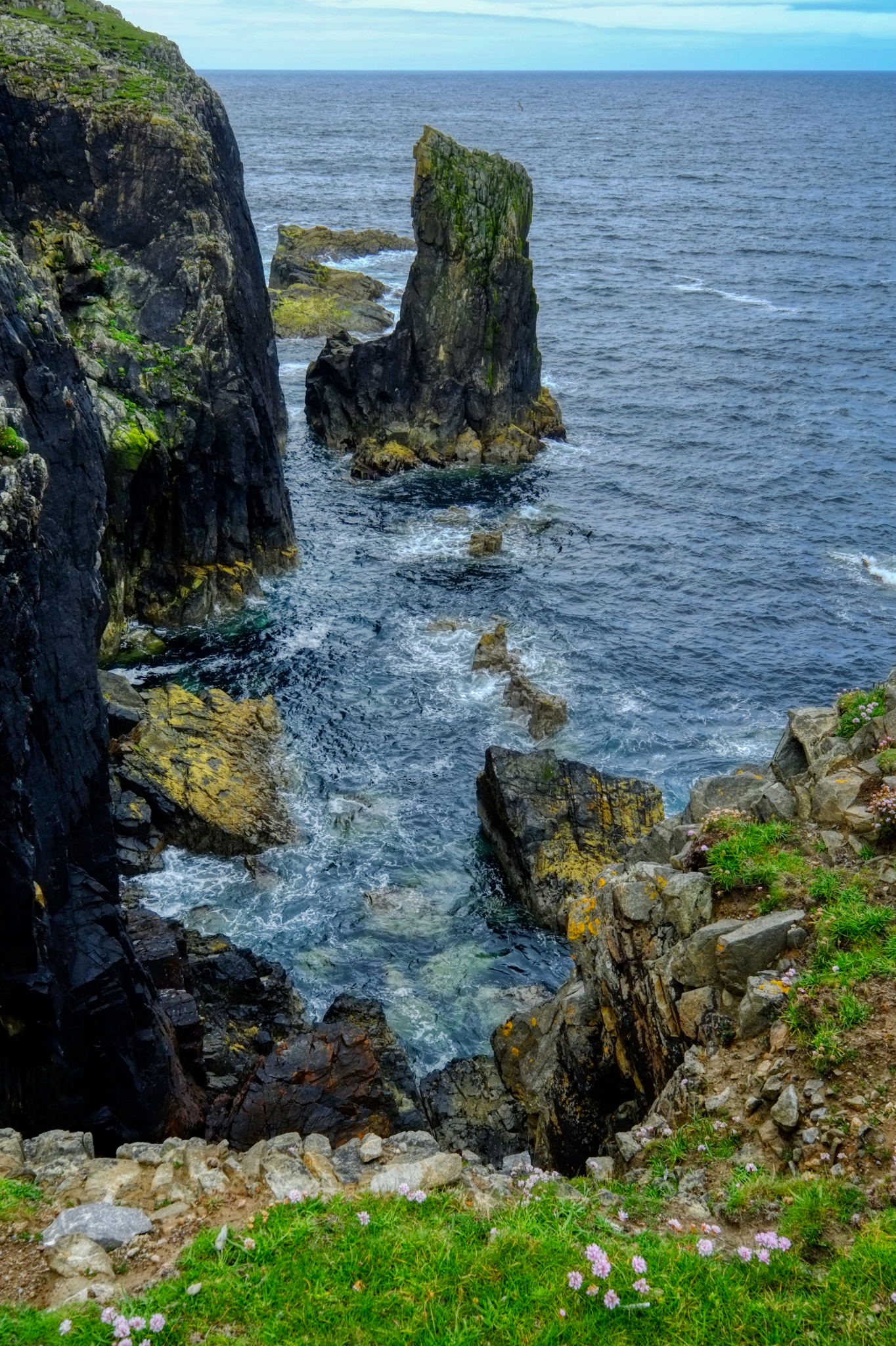 Fantastic cliff top views at the northernmost tip of the Hebrides.
Fantastic cliff top views at the northernmost tip of the Hebrides.
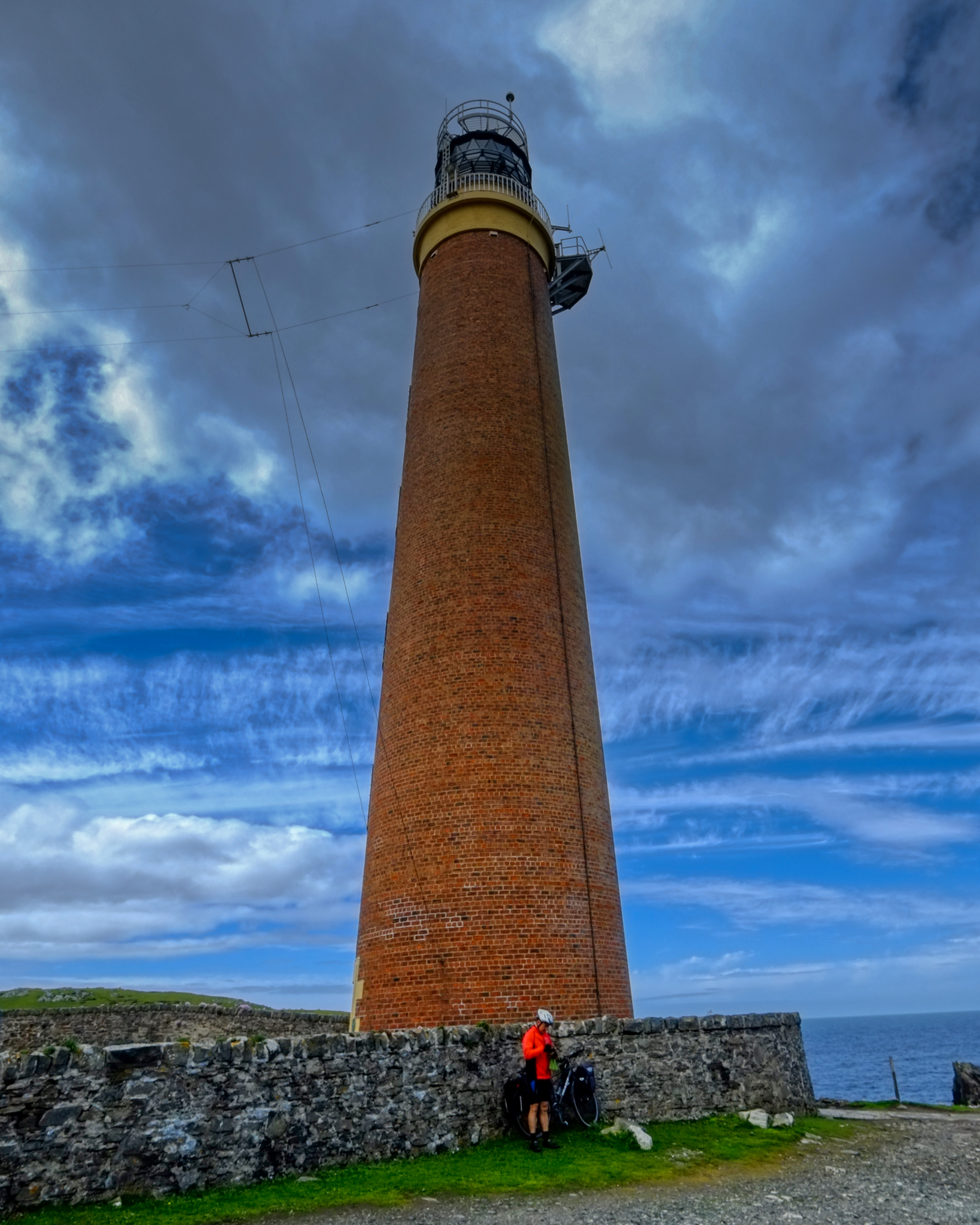 A lighthouse sits at the tip of the Isle of Lewis and Harris. This man rode his bicycle all the way from his home in London, England. He was going to turn around here and ride back down the east coast to get home.
A lighthouse sits at the tip of the Isle of Lewis and Harris. This man rode his bicycle all the way from his home in London, England. He was going to turn around here and ride back down the east coast to get home.
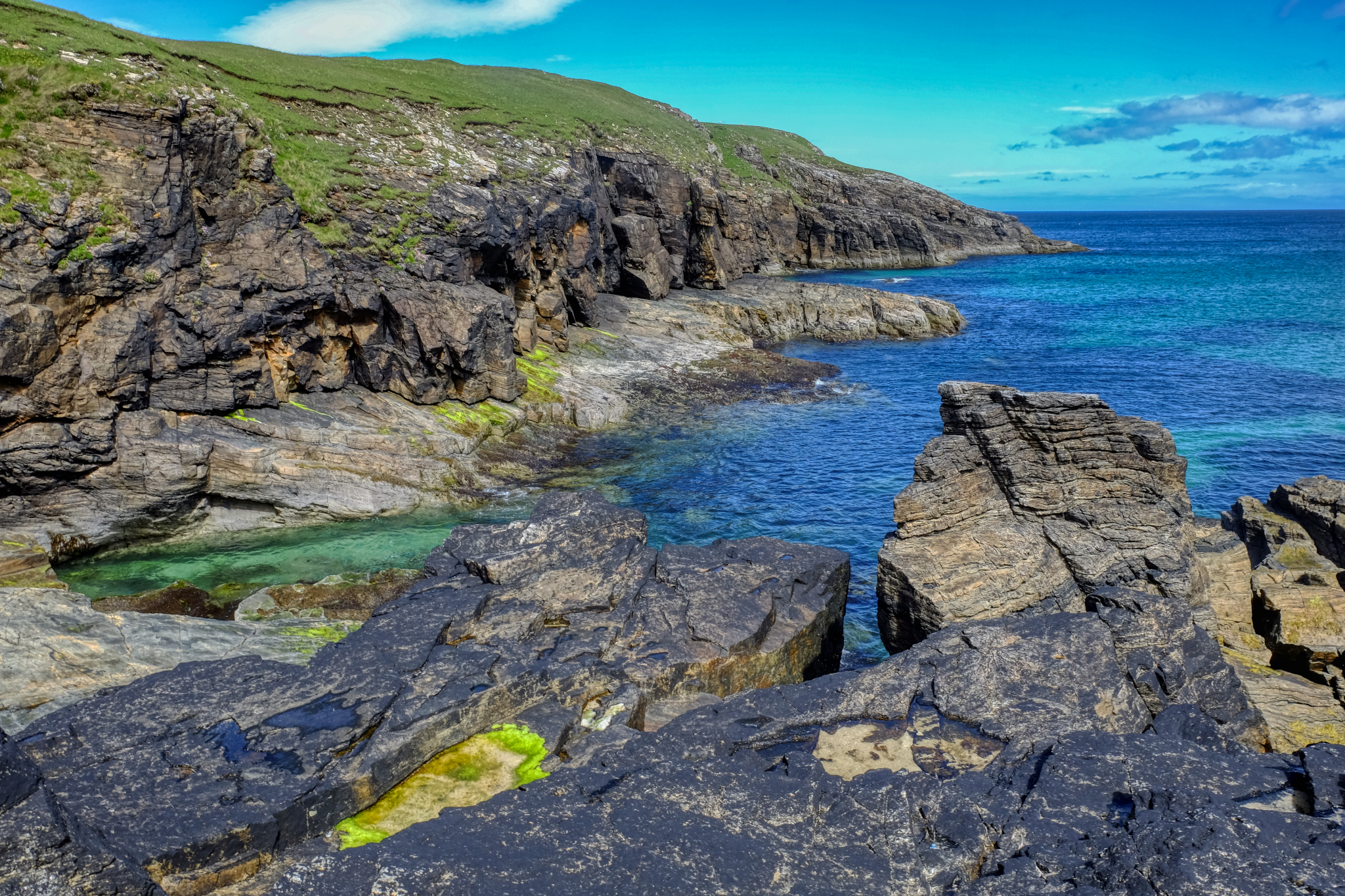 We drove back along the north coast as much as possible toward Stornaway and our ferry back to the mainland of Scotland.
We drove back along the north coast as much as possible toward Stornaway and our ferry back to the mainland of Scotland.
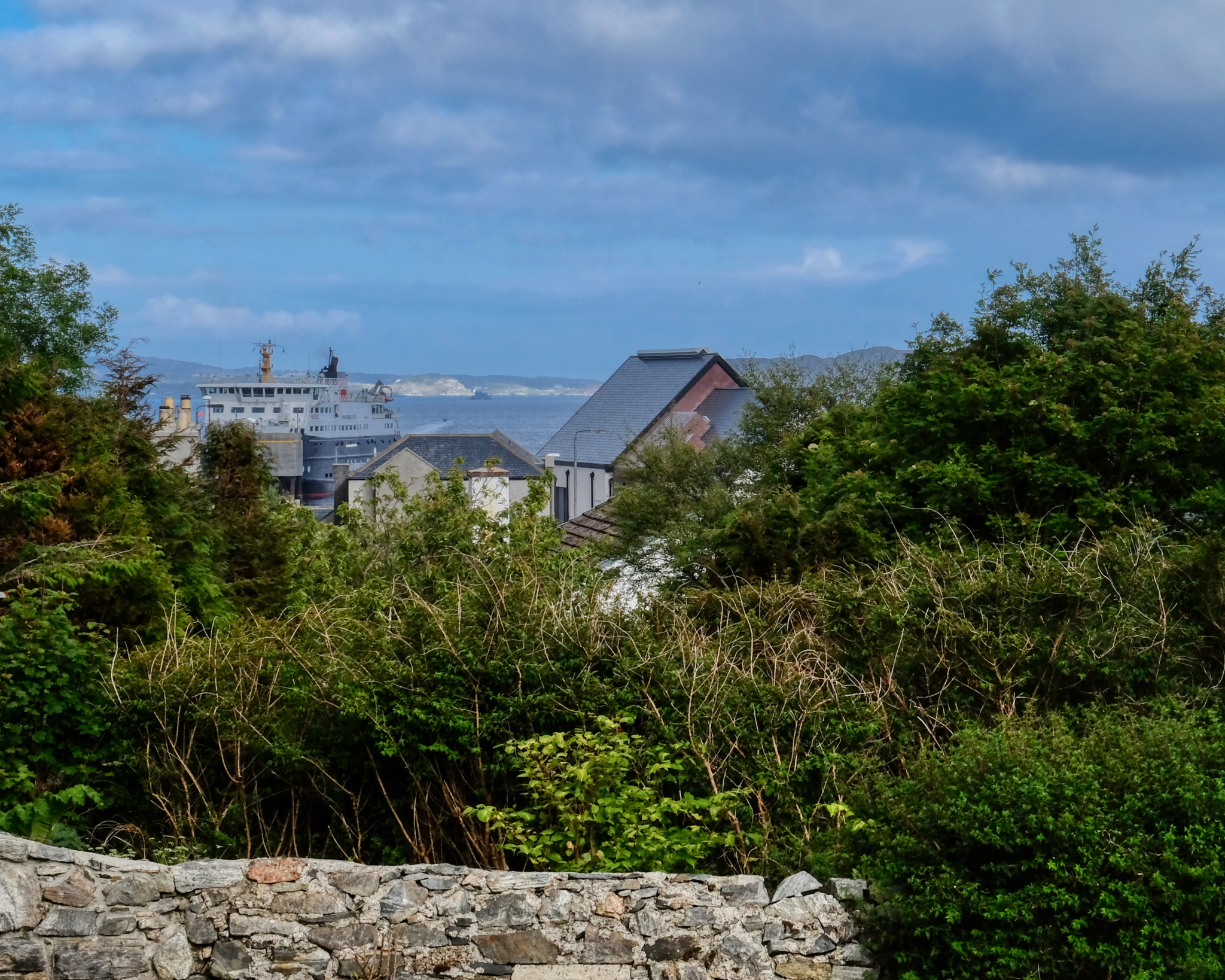 In Stornoway with our waiting ferry . . . but not until morning of the next day.
In Stornoway with our waiting ferry . . . but not until morning of the next day.
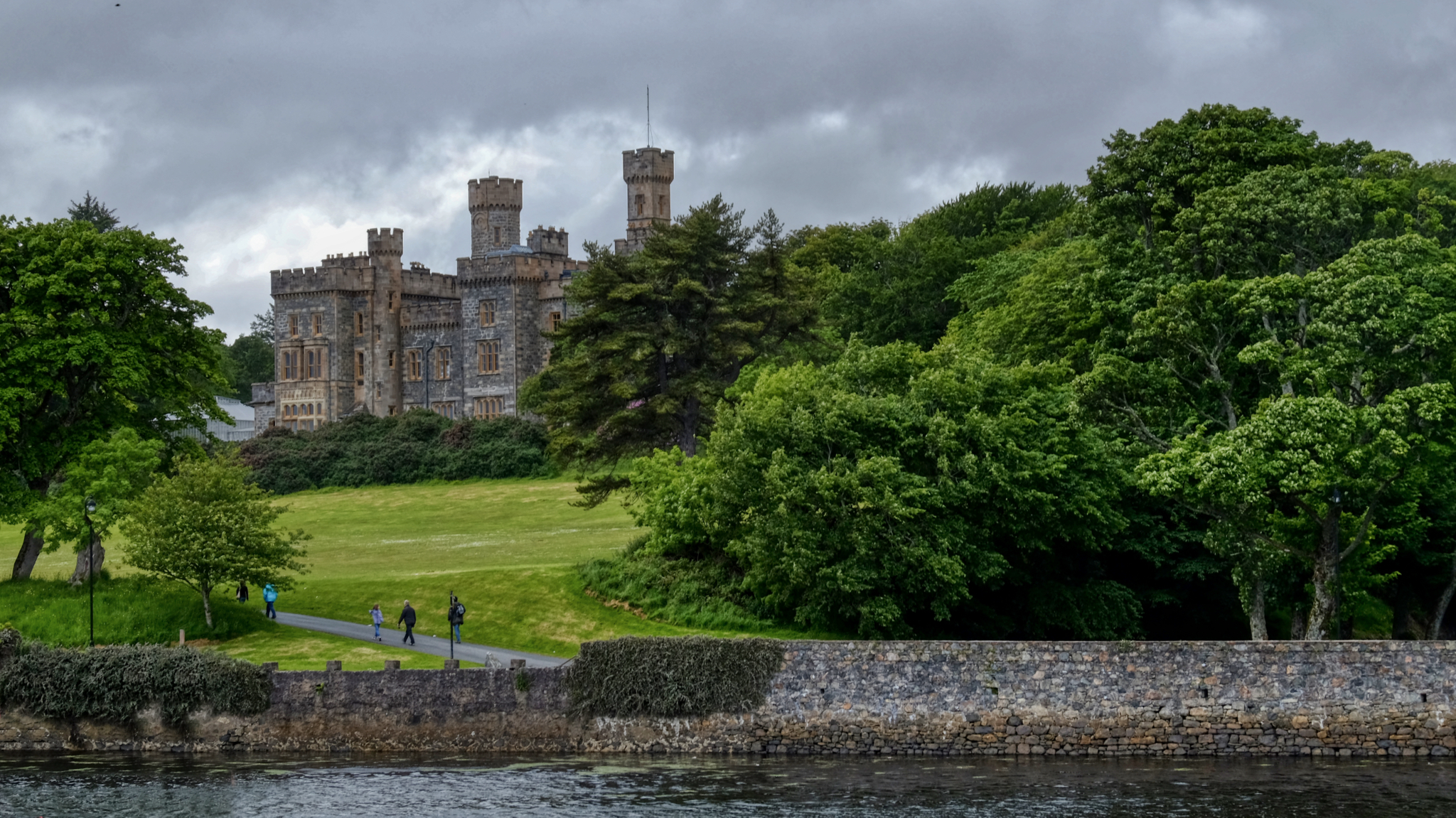 Lews Castle on Stornoway yacht harbour.
Lews Castle on Stornoway yacht harbour.
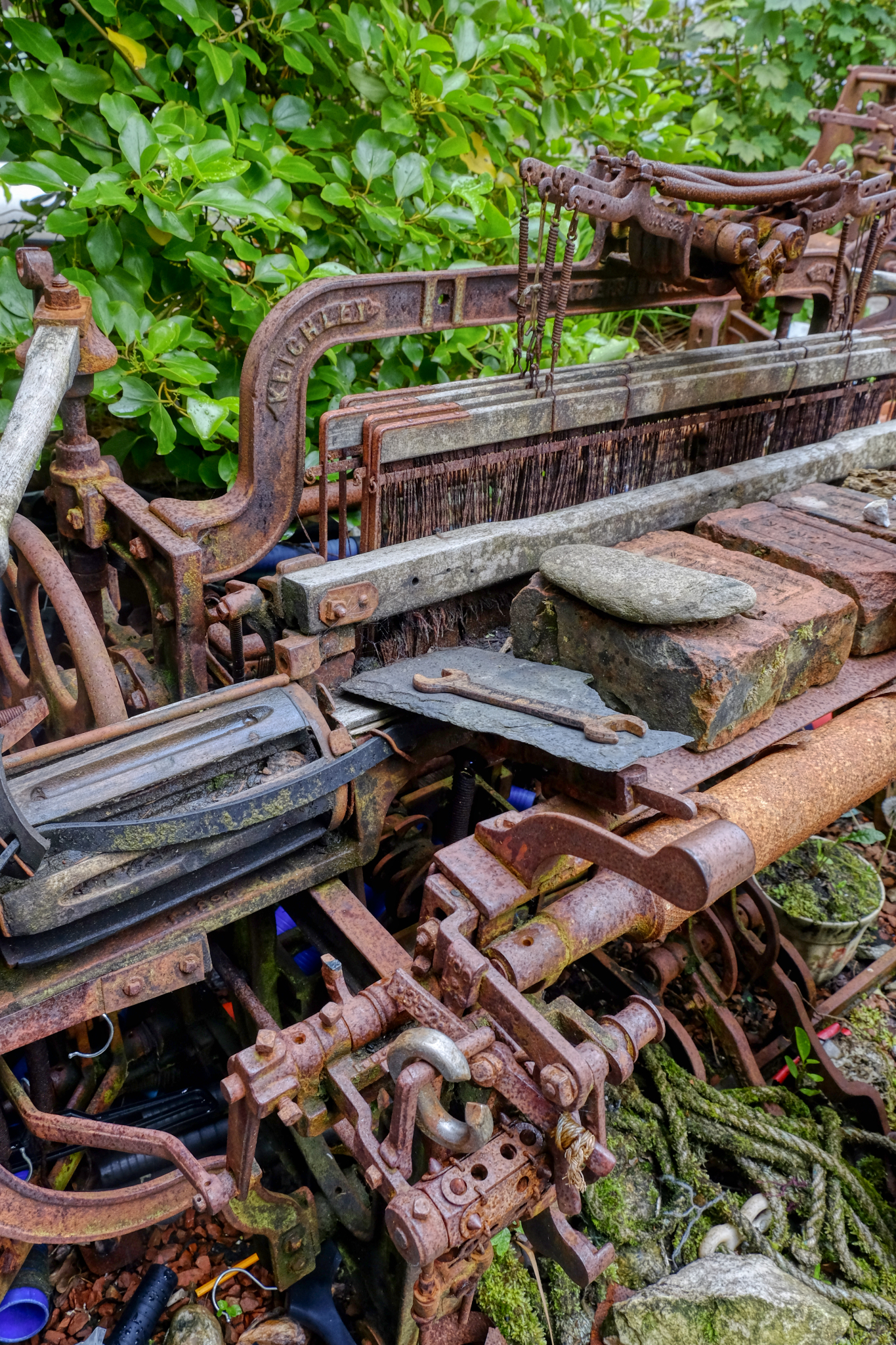 We explored the small town of Stornoway. I loved this old weathered rusty loom sitting outside a tweed museum.
We explored the small town of Stornoway. I loved this old weathered rusty loom sitting outside a tweed museum.
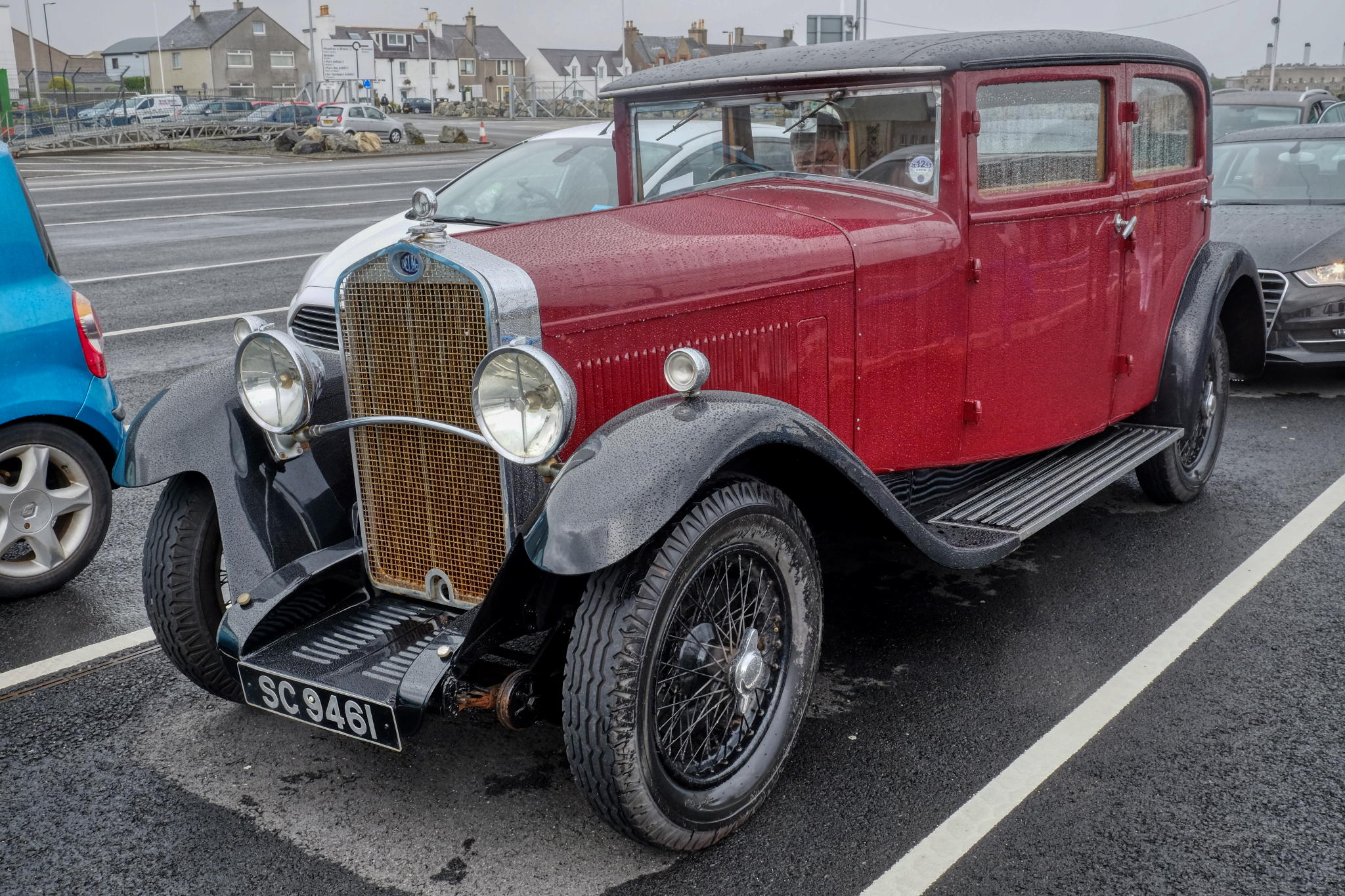 The next morning we joined the line-up at the ferry terminal for our passage home. Again, in the rain, there were many old classic cars waiting, including this Delage.
The next morning we joined the line-up at the ferry terminal for our passage home. Again, in the rain, there were many old classic cars waiting, including this Delage.
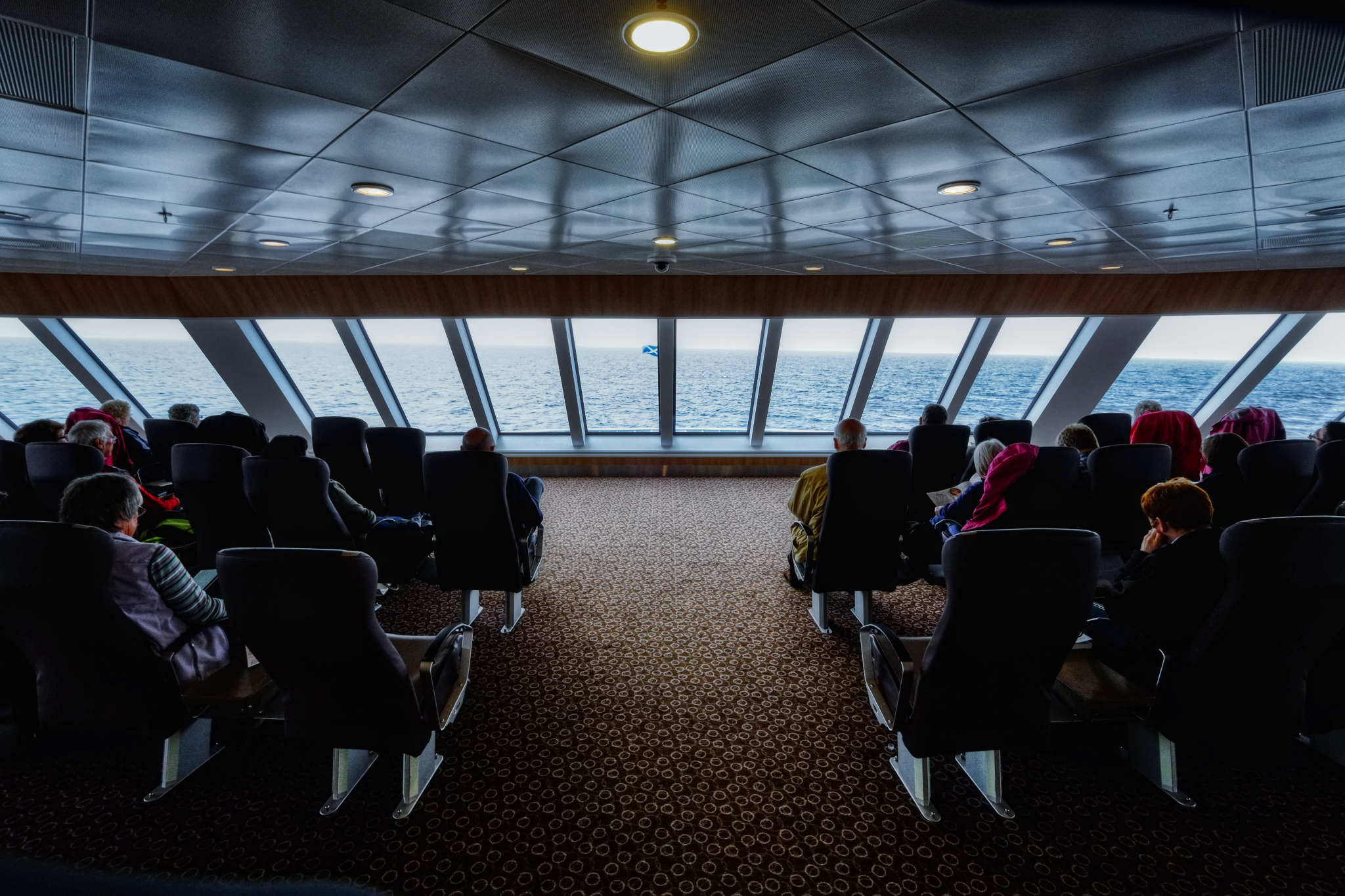 Heading home on the big ferry.
Heading home on the big ferry.
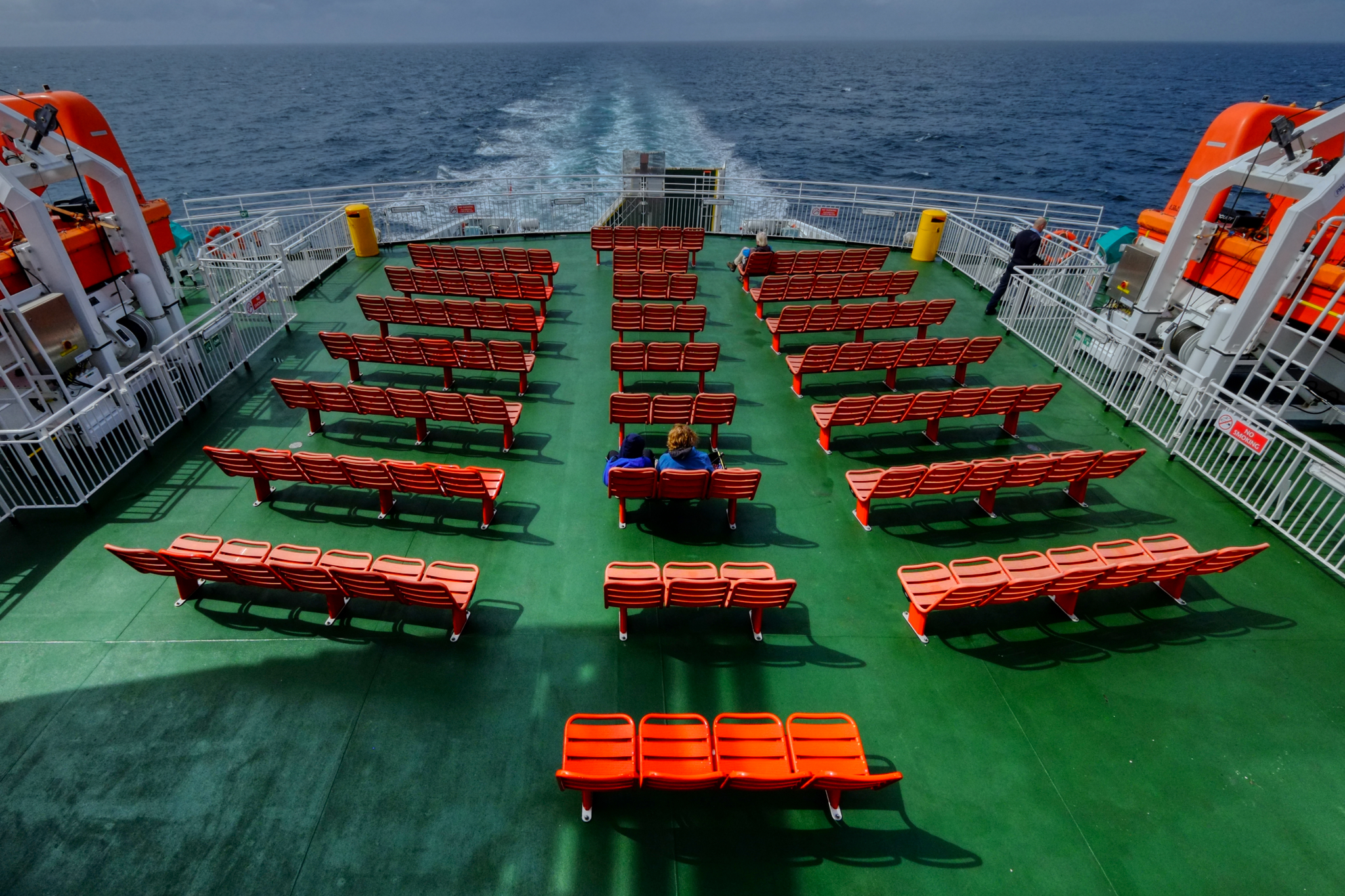 I spent most of my time on the return ferry trip sitting out n the wind on the aft deck. Glorious.
I spent most of my time on the return ferry trip sitting out n the wind on the aft deck. Glorious.
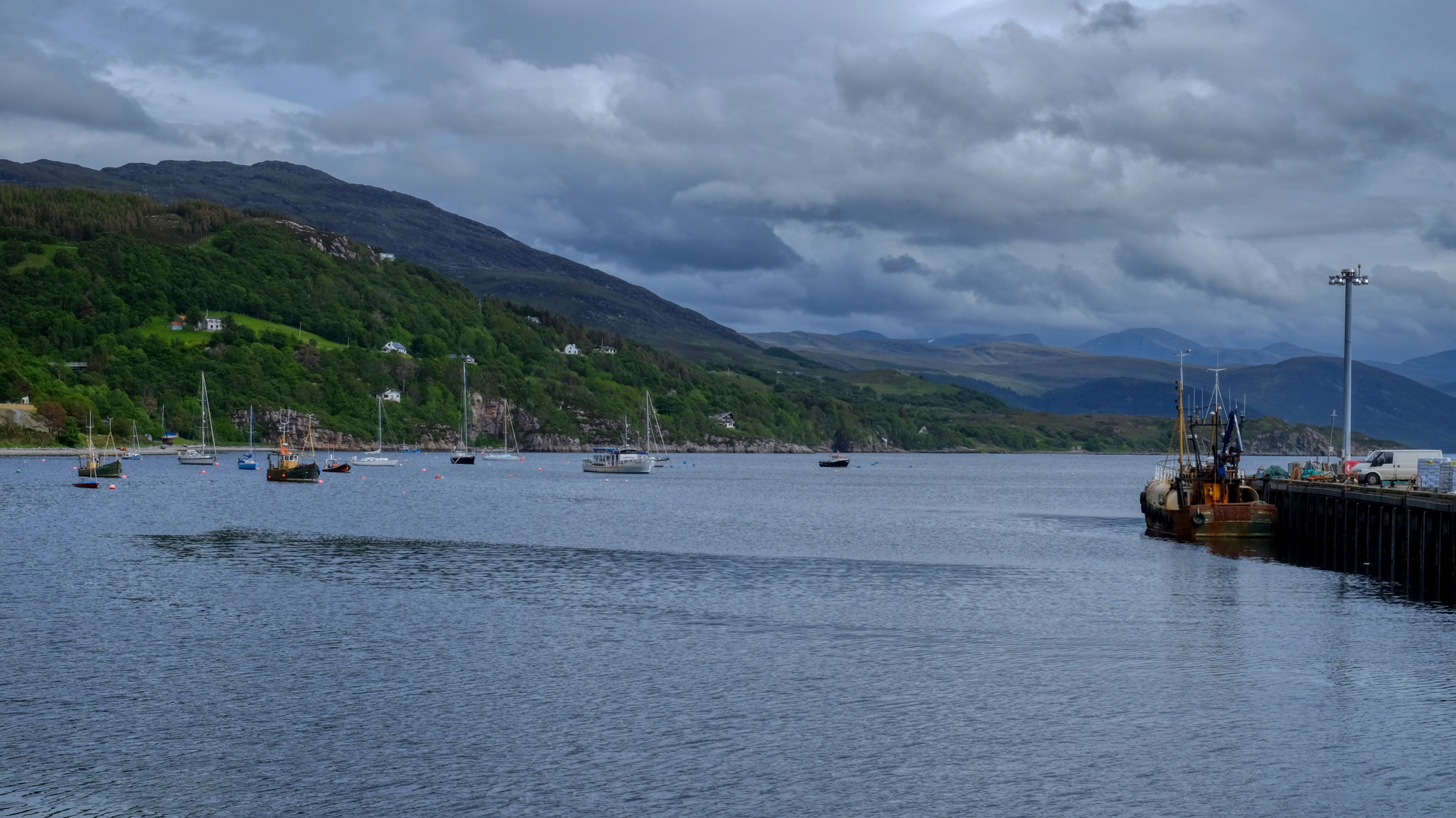 Arriving in Ullapool Harbour after a 3 hour cruise.
Arriving in Ullapool Harbour after a 3 hour cruise.
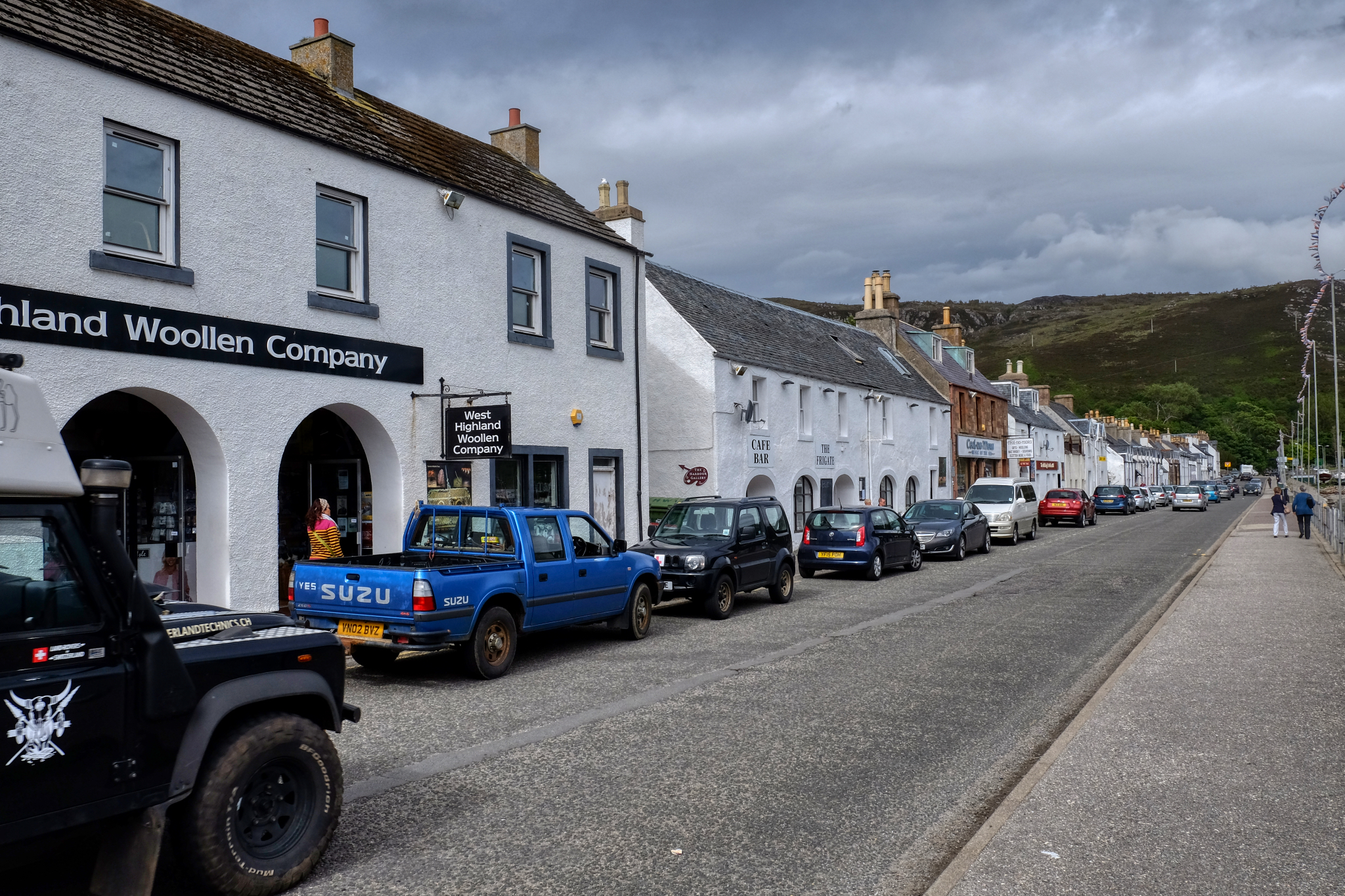 Harbour Street Ullapool.
Harbour Street Ullapool.
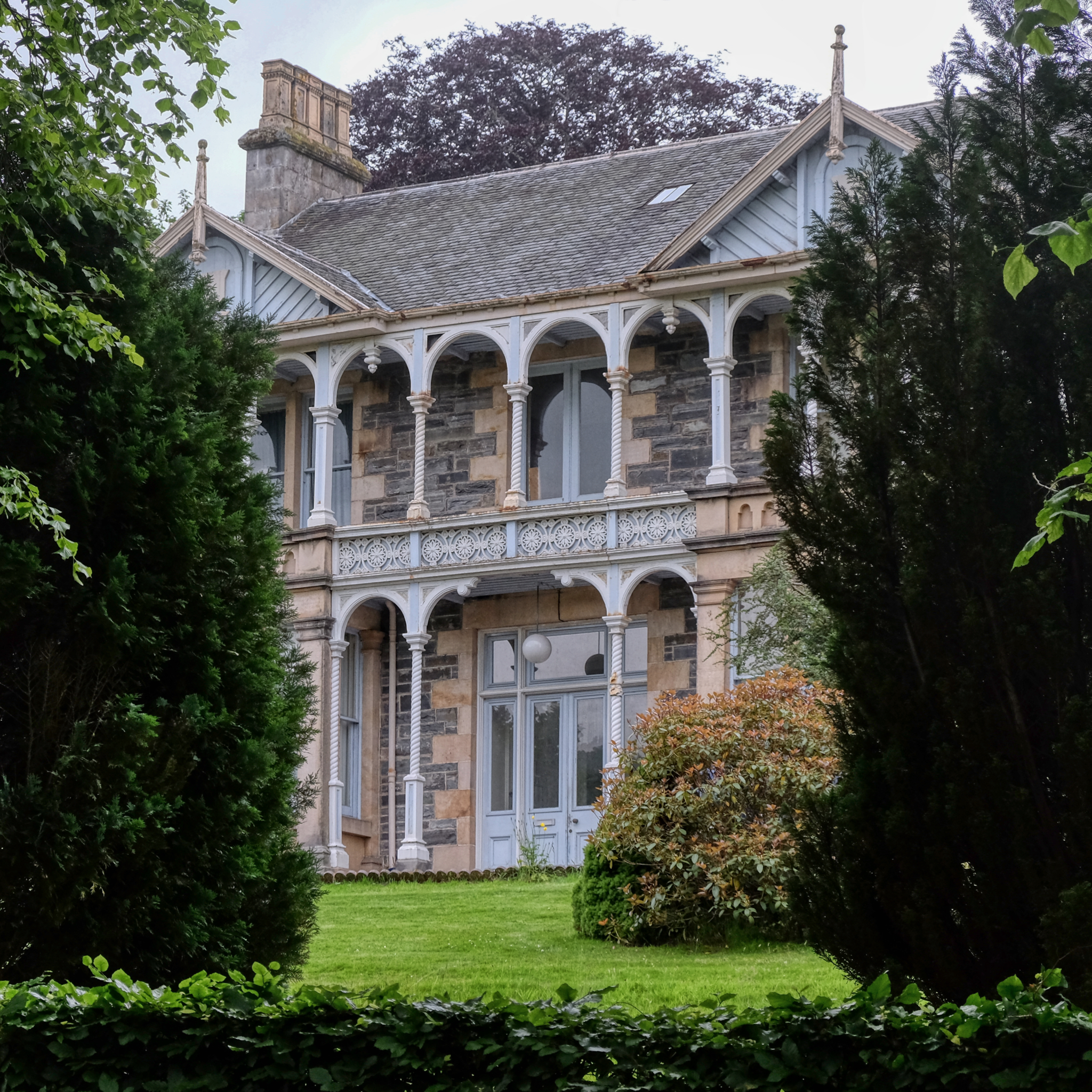 We stopped halfway home between Ullapool and Aberdeen at a rural hotel that turned out to be on a tour bus company hotel with a HUGE dining room full of French and Hungarian bus tourists. It was loud and fun!
We stopped halfway home between Ullapool and Aberdeen at a rural hotel that turned out to be on a tour bus company hotel with a HUGE dining room full of French and Hungarian bus tourists. It was loud and fun!
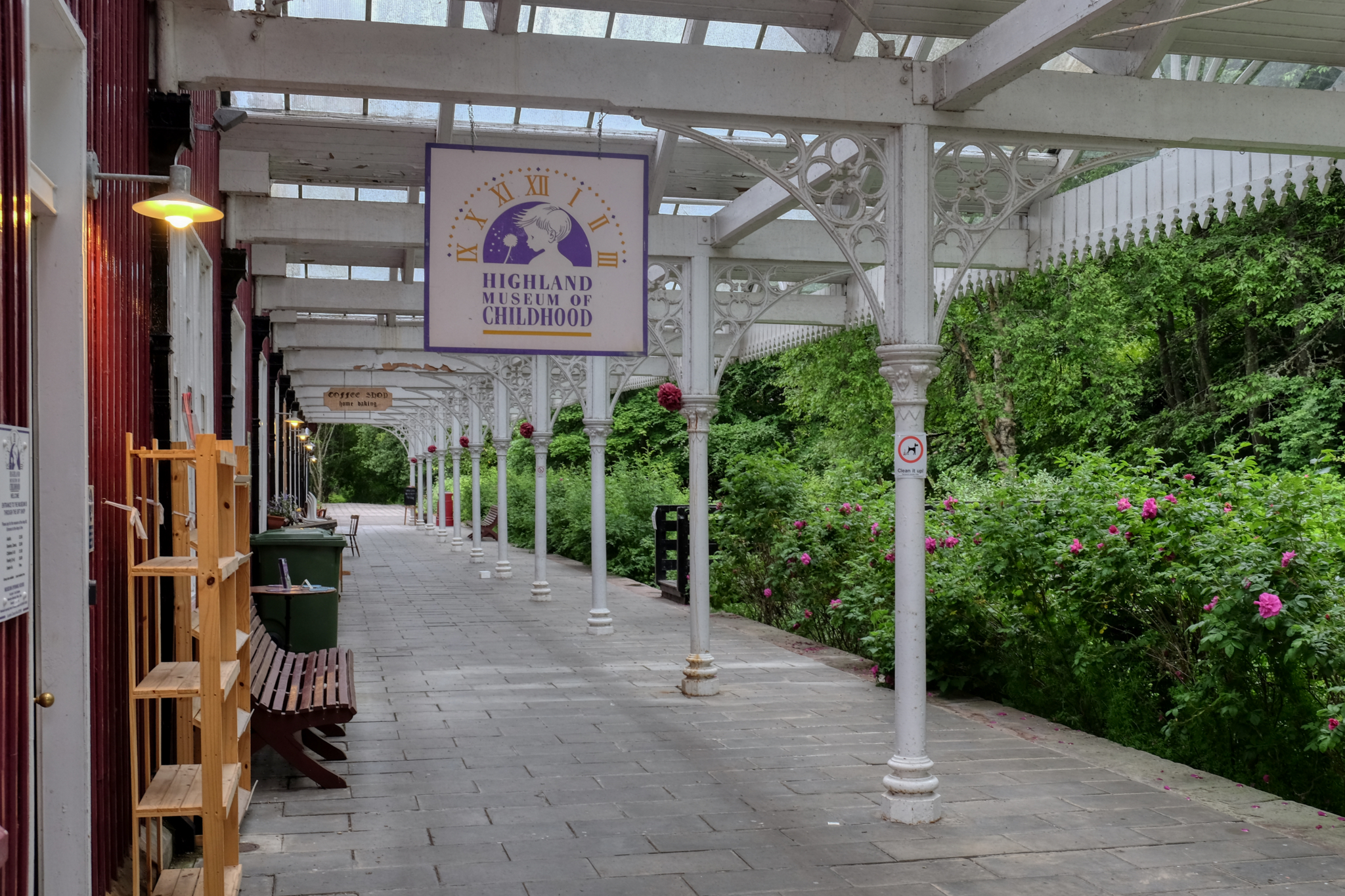 We walked around the small village near the tourist hotel and discovered the Highland Museum of Childhood . . . an interesting name. It was closed . . . like my childhood.
We walked around the small village near the tourist hotel and discovered the Highland Museum of Childhood . . . an interesting name. It was closed . . . like my childhood.
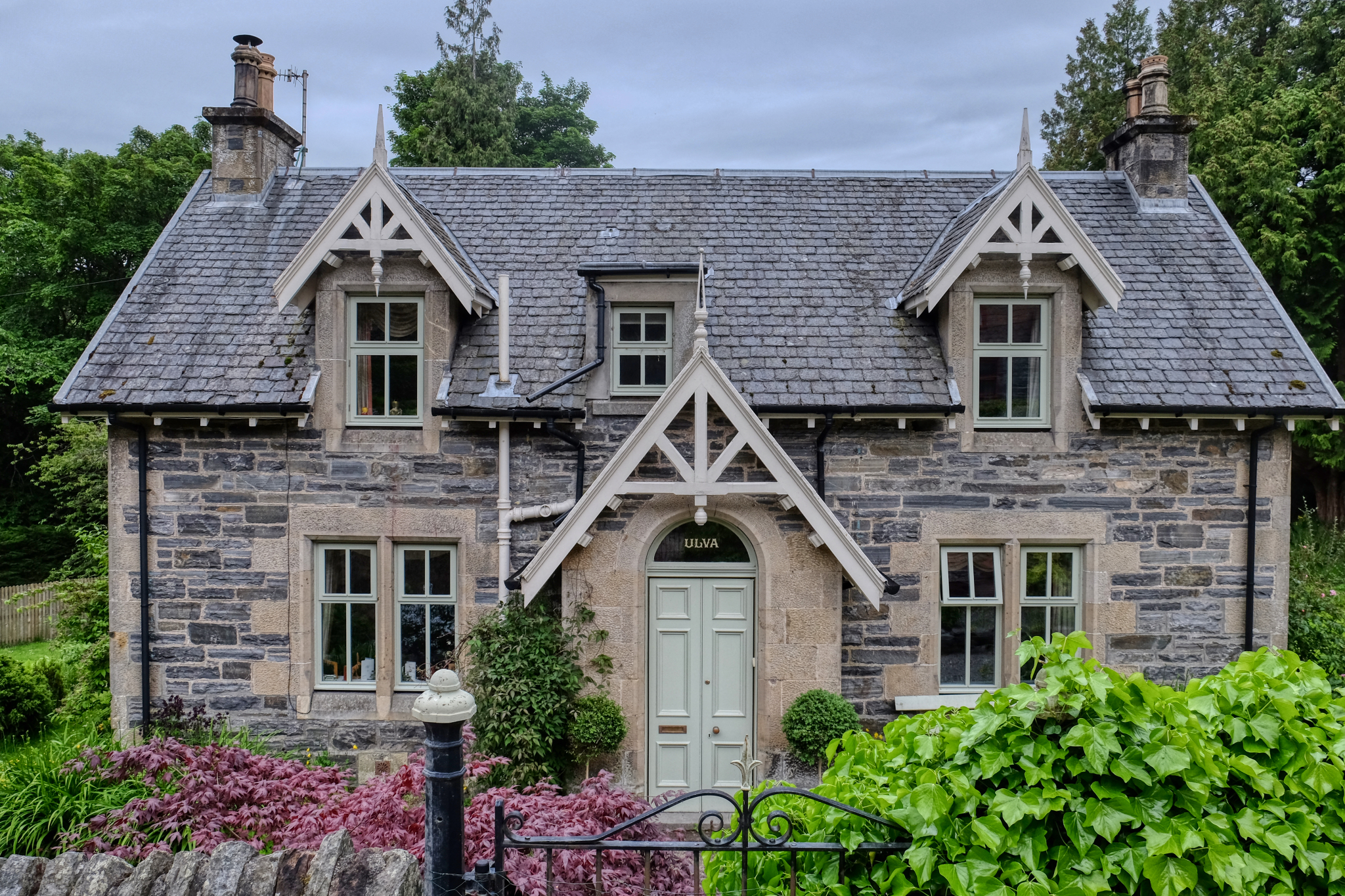 All the houses in the village were named. Ulva . . . named after an island in the Inner Hebrides of Scotland, off the west coast of the Isle of Mull.
All the houses in the village were named. Ulva . . . named after an island in the Inner Hebrides of Scotland, off the west coast of the Isle of Mull.
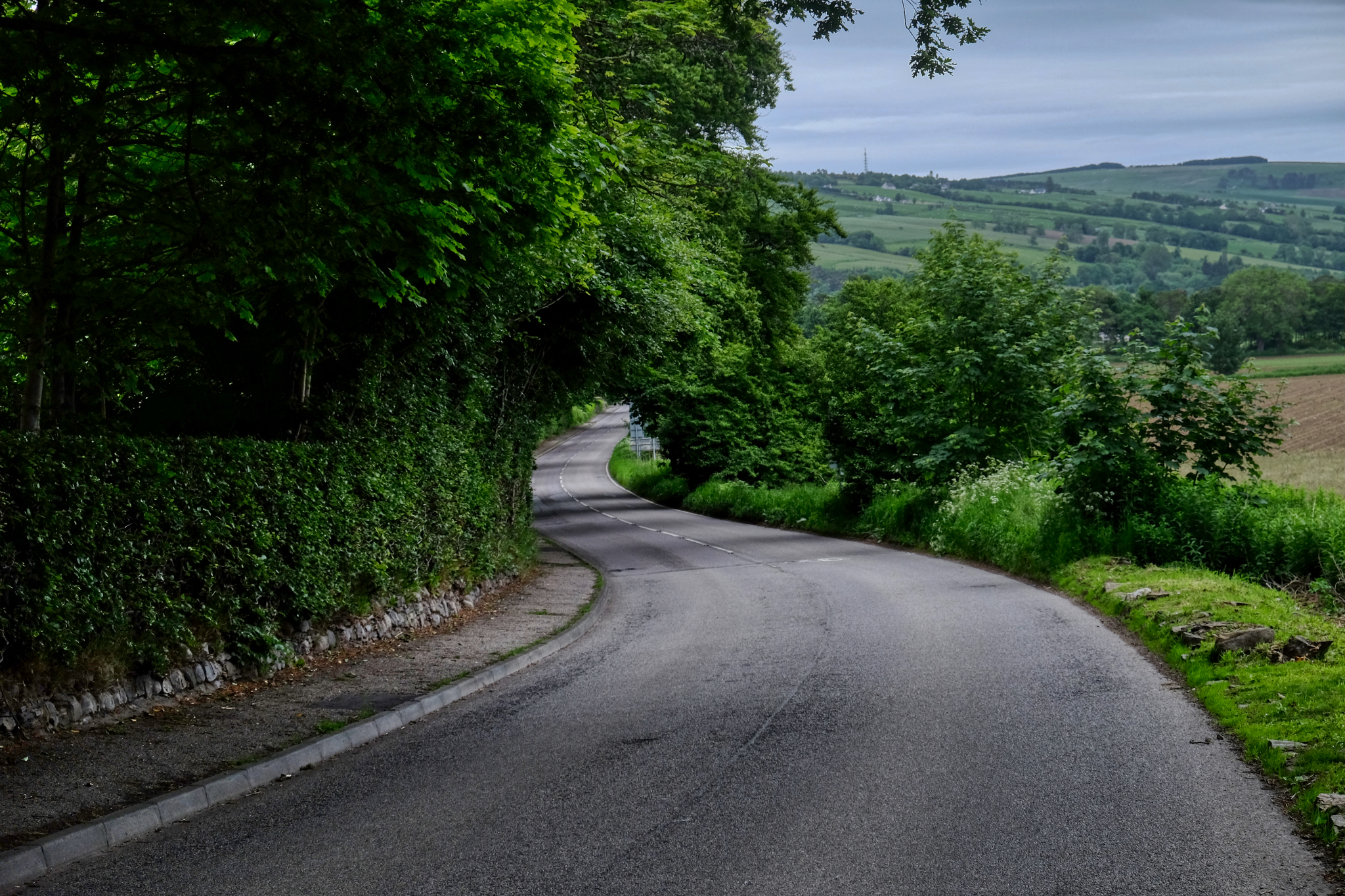 The next morning we were off down the Scottish country roads toward our home in Aberdeen.
The next morning we were off down the Scottish country roads toward our home in Aberdeen.
USA Road Trip: Driving the Oregon Coast to the California Redwoods
 Thursday, July 25, 2019 at 7:11PM
Thursday, July 25, 2019 at 7:11PM 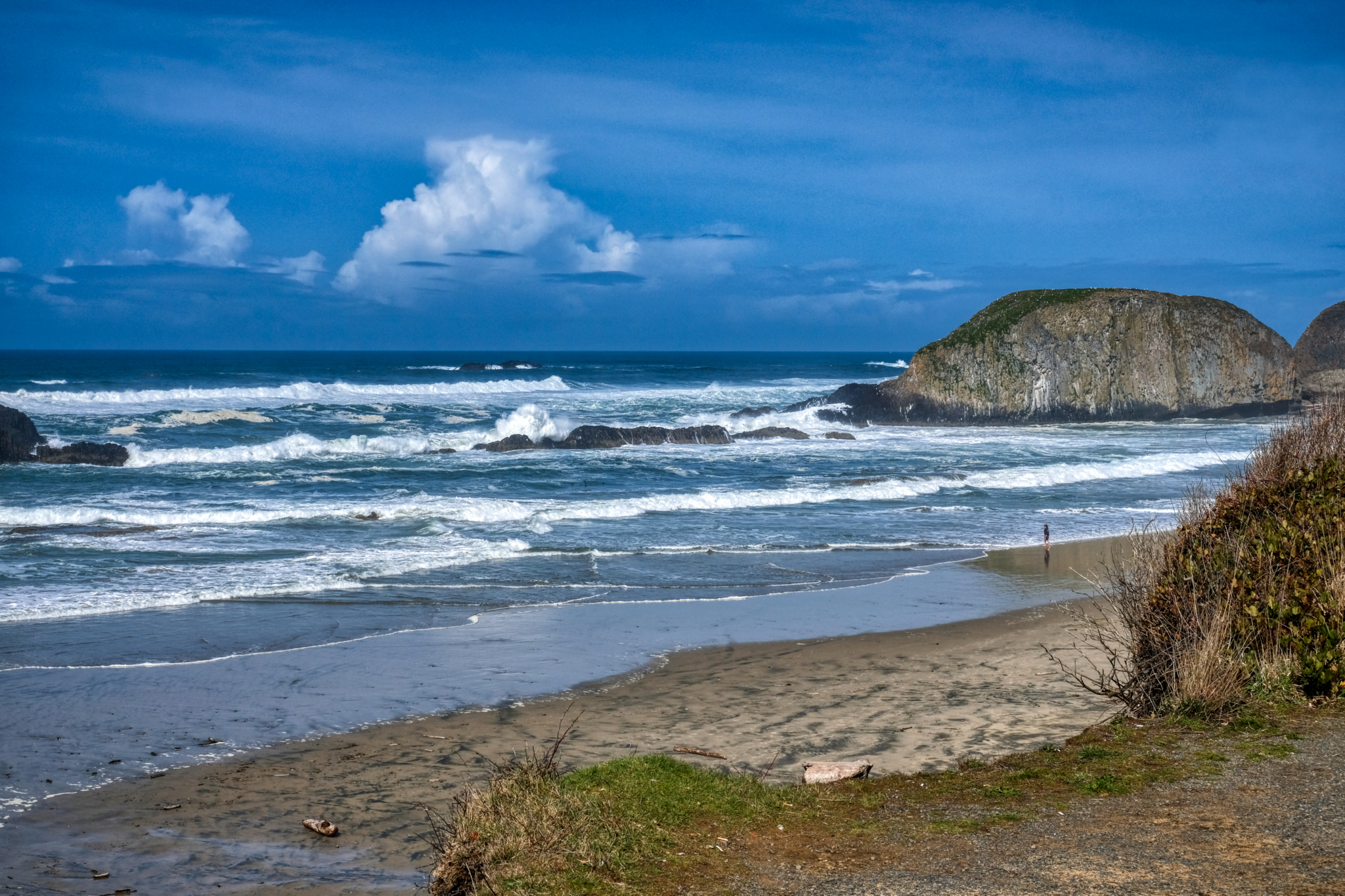 The beautiful southern Oregon coast in early April.
The beautiful southern Oregon coast in early April.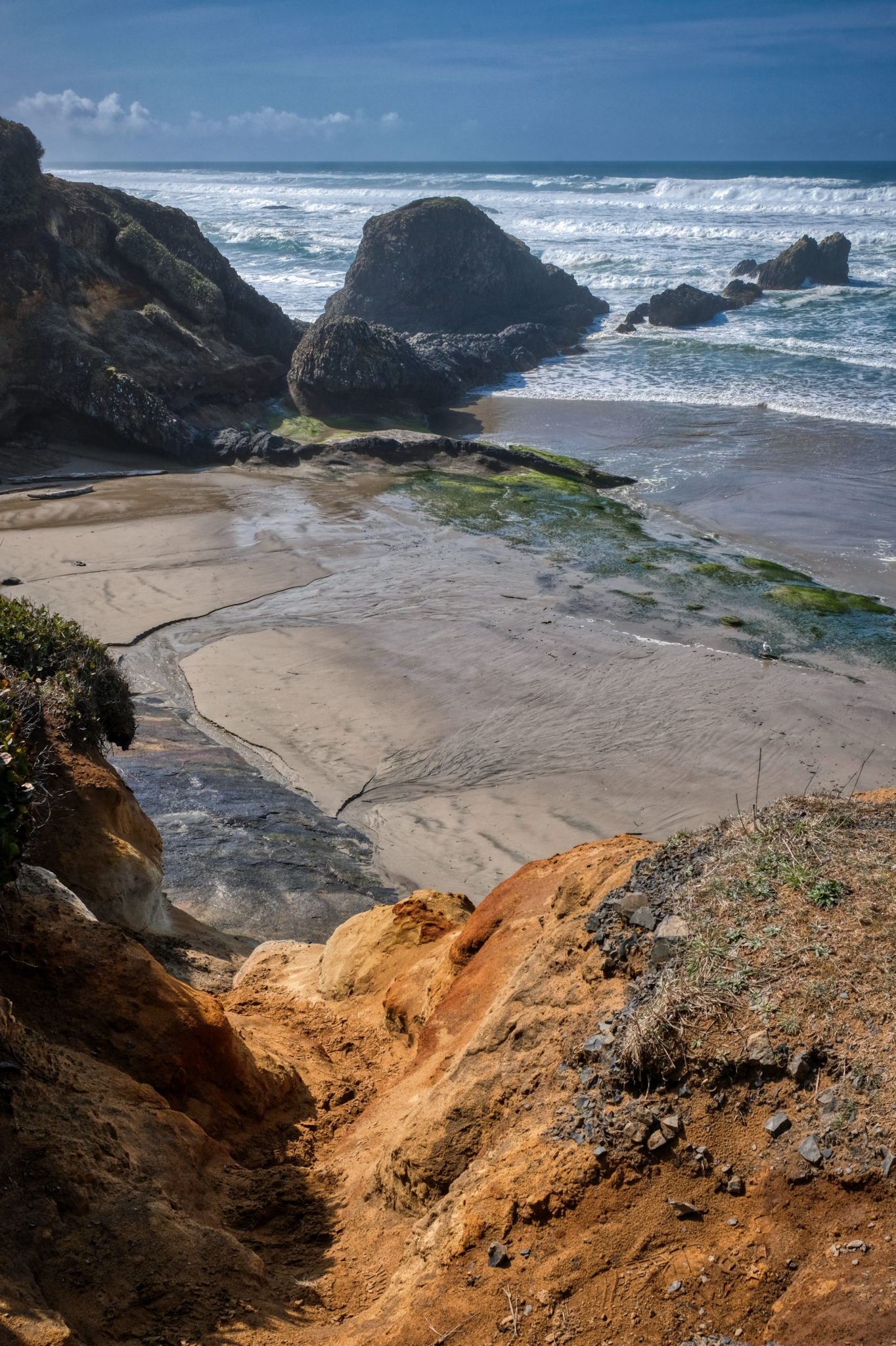 A rugged coast for several hundred miles.
A rugged coast for several hundred miles.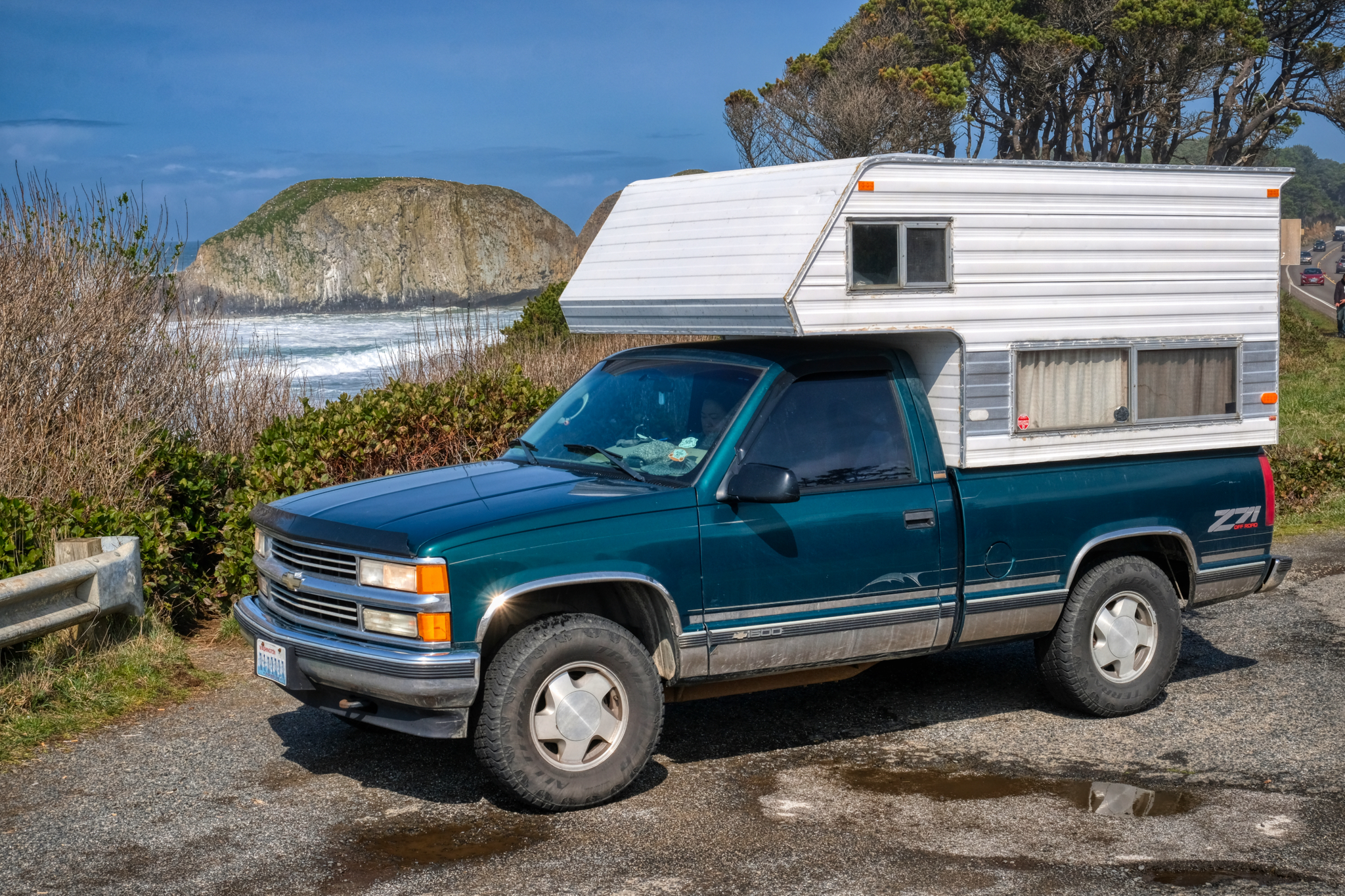 The old 1996 Chevy 4X4 camper truck working well.
The old 1996 Chevy 4X4 camper truck working well.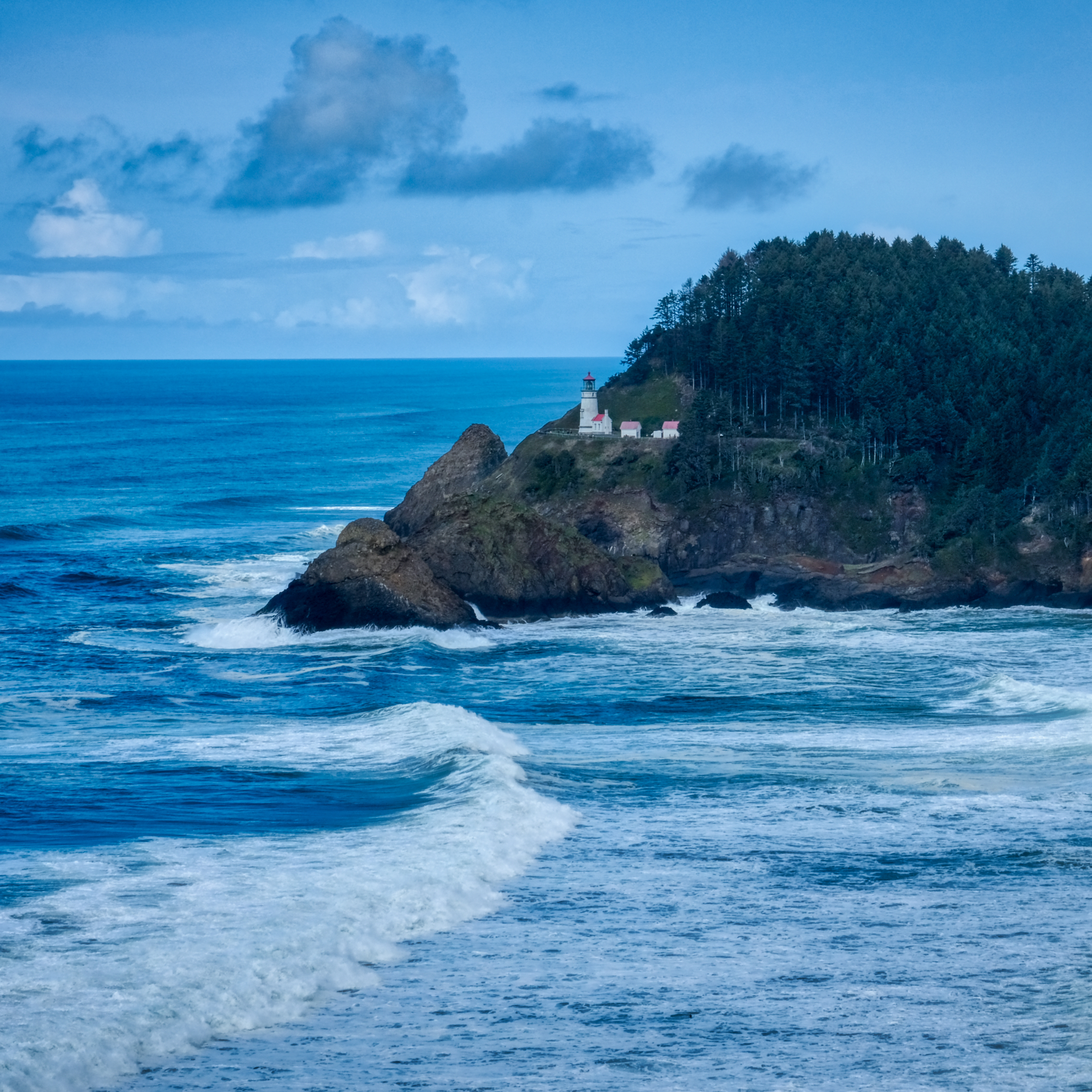 A classic lighthouse on a high bluff above the raging Pacific Ocean.
A classic lighthouse on a high bluff above the raging Pacific Ocean.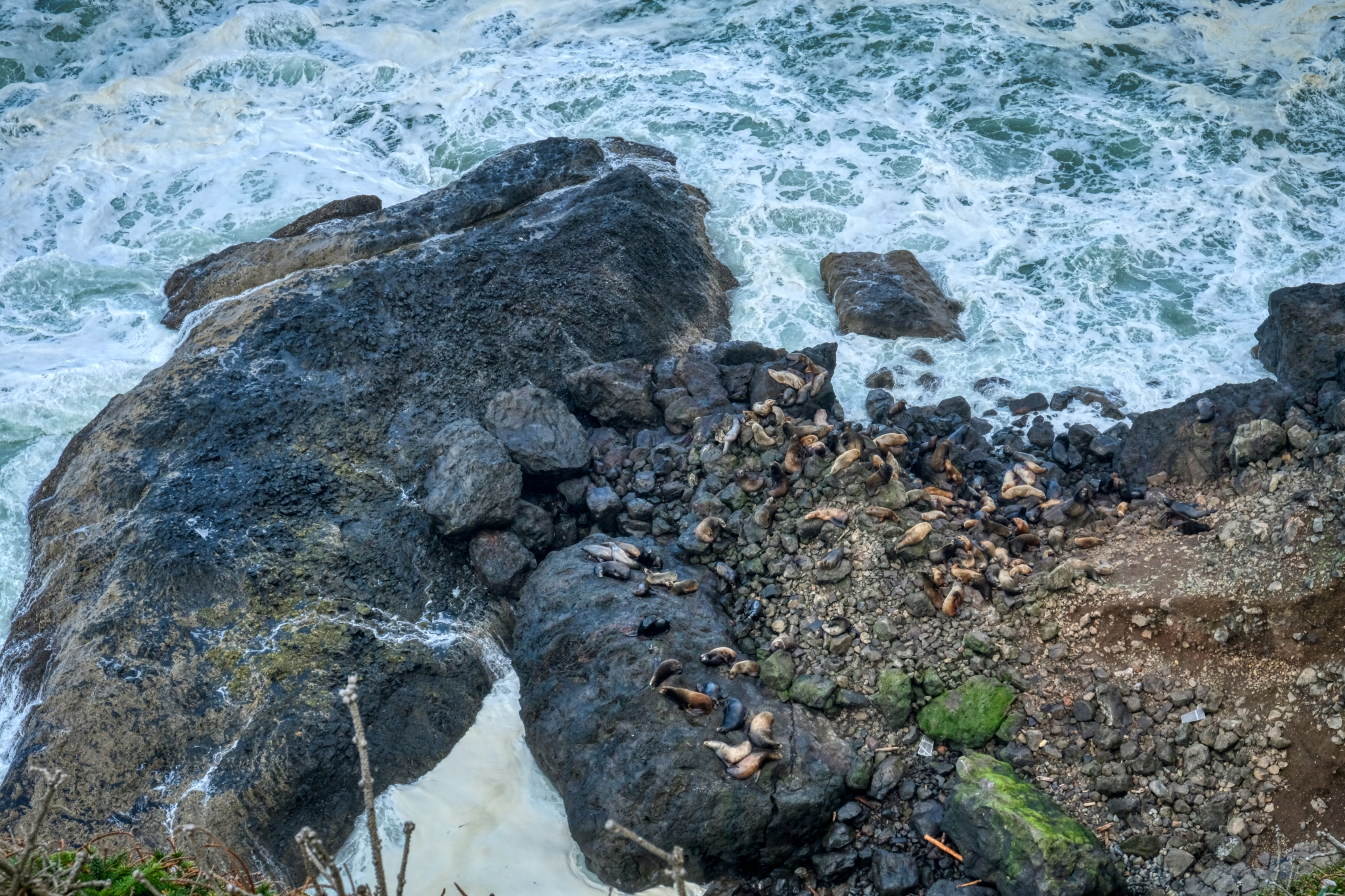 Sea Lions abound along the southern Oregon coast. We saw them at almost all our stops.
Sea Lions abound along the southern Oregon coast. We saw them at almost all our stops.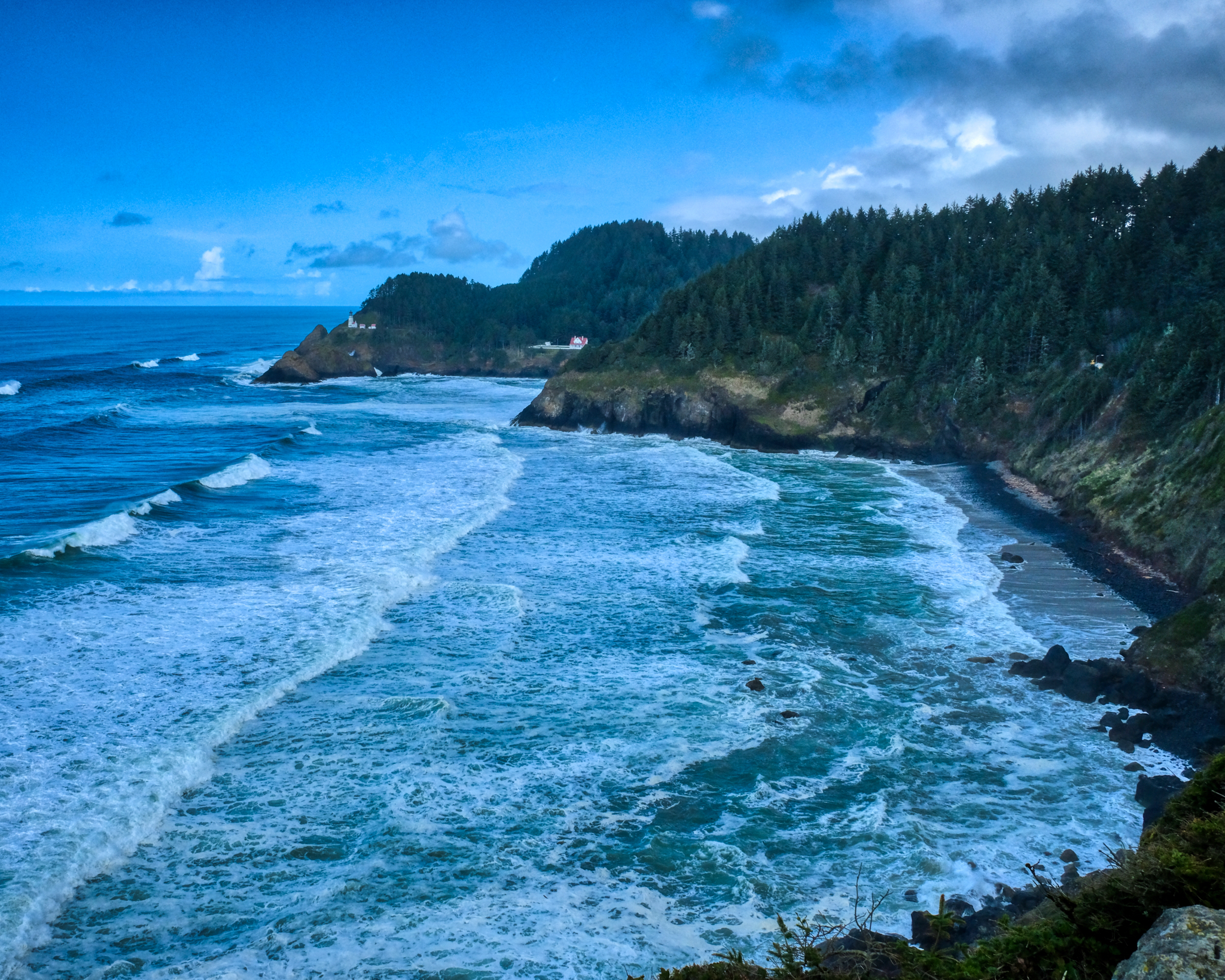 The famous beauty of the Oregon coast in all its magnificence.
The famous beauty of the Oregon coast in all its magnificence.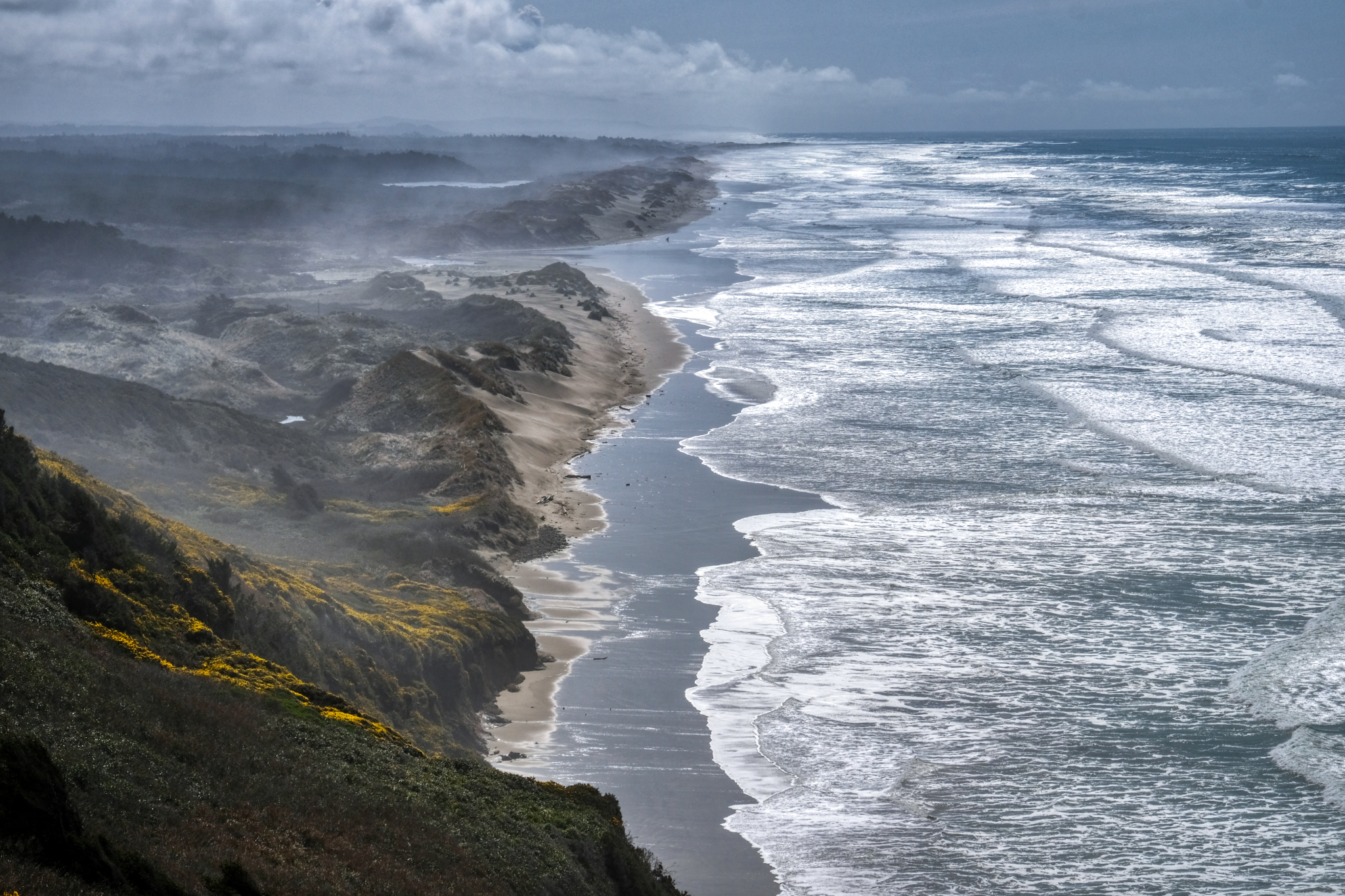 The drive south on the Oregon coast is wonderful because at every turn there is a new sweeping panorama . . .
The drive south on the Oregon coast is wonderful because at every turn there is a new sweeping panorama . . .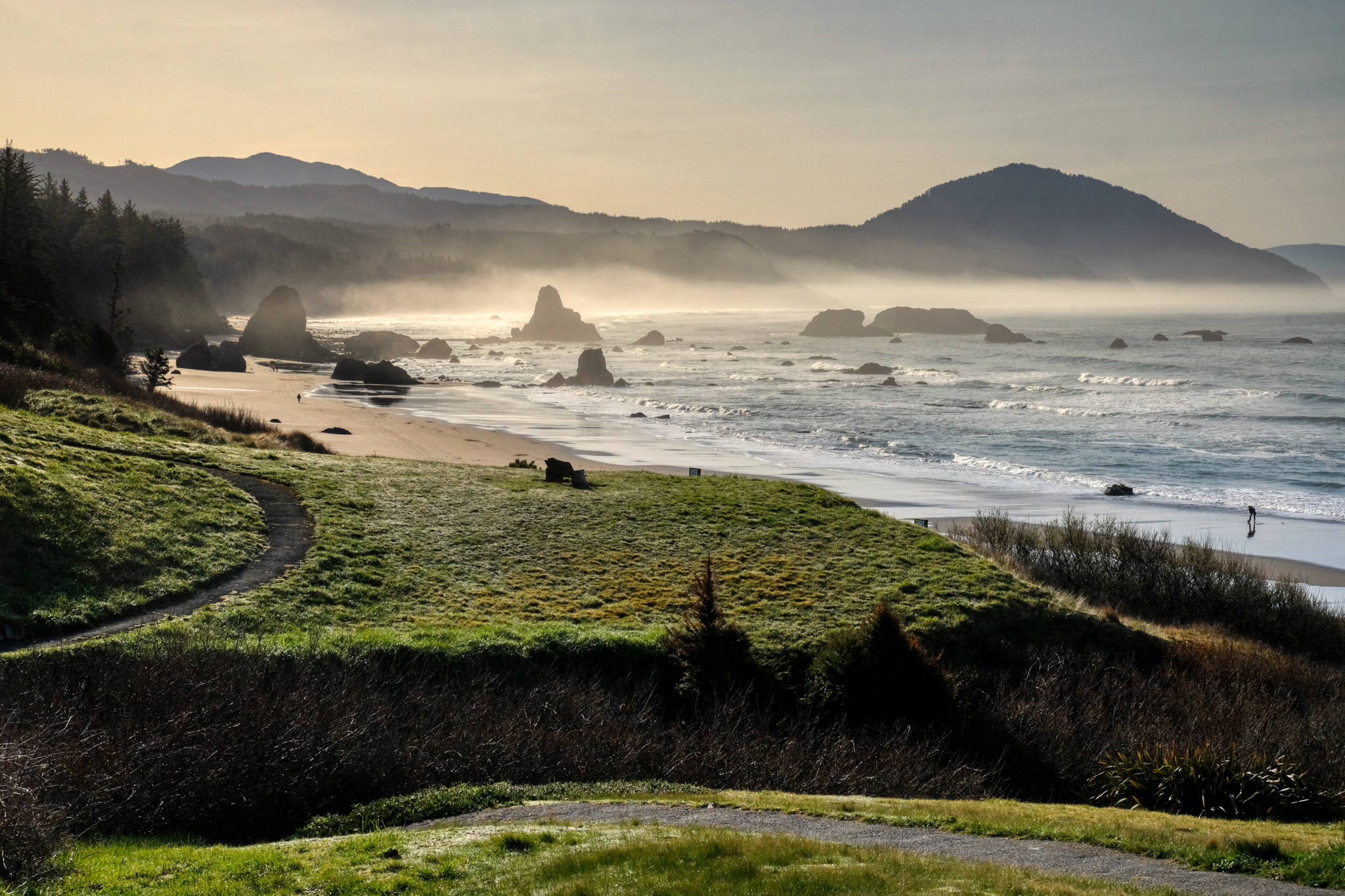 A beautiful bay just south of Crescent City, California after sunrise.
A beautiful bay just south of Crescent City, California after sunrise.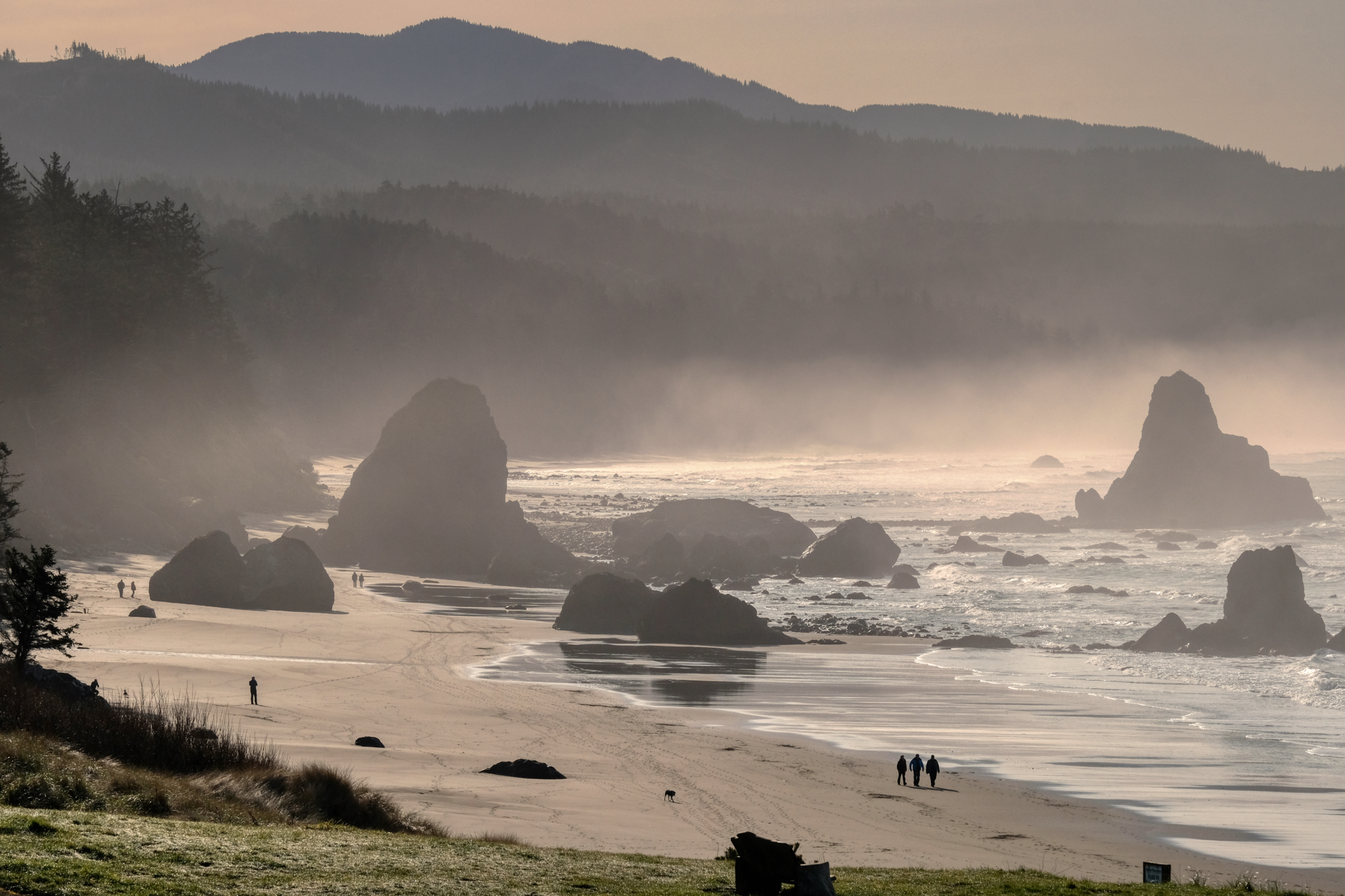 People out on their morning beach walk.
People out on their morning beach walk.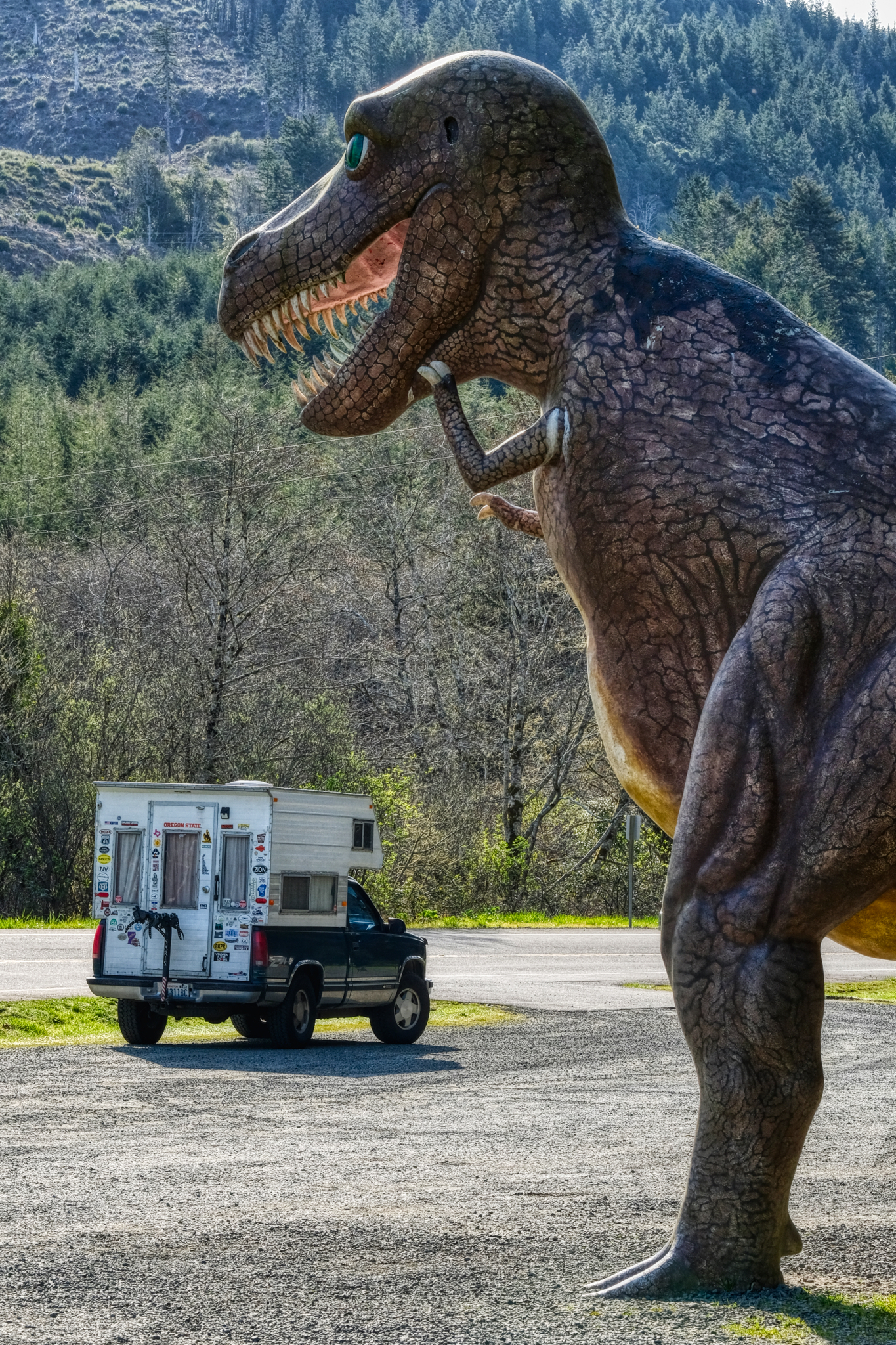 I'm glad I had the V8! Not exactly a tourist trap . . . but a pretty good dinosaur park roadside attraction.
I'm glad I had the V8! Not exactly a tourist trap . . . but a pretty good dinosaur park roadside attraction.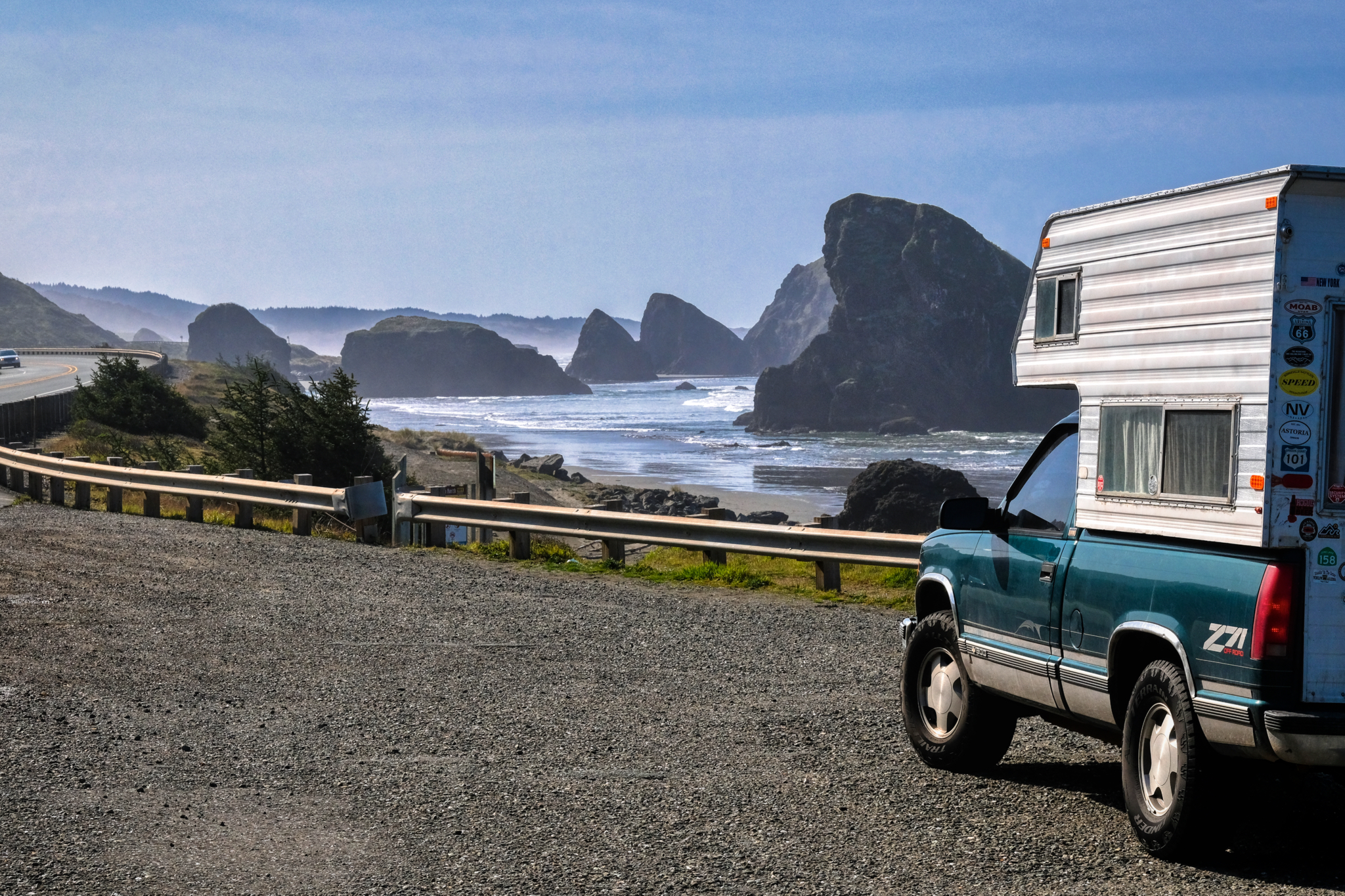 We made many stops along Highway 101 to ogle at the incredible scenery.
We made many stops along Highway 101 to ogle at the incredible scenery.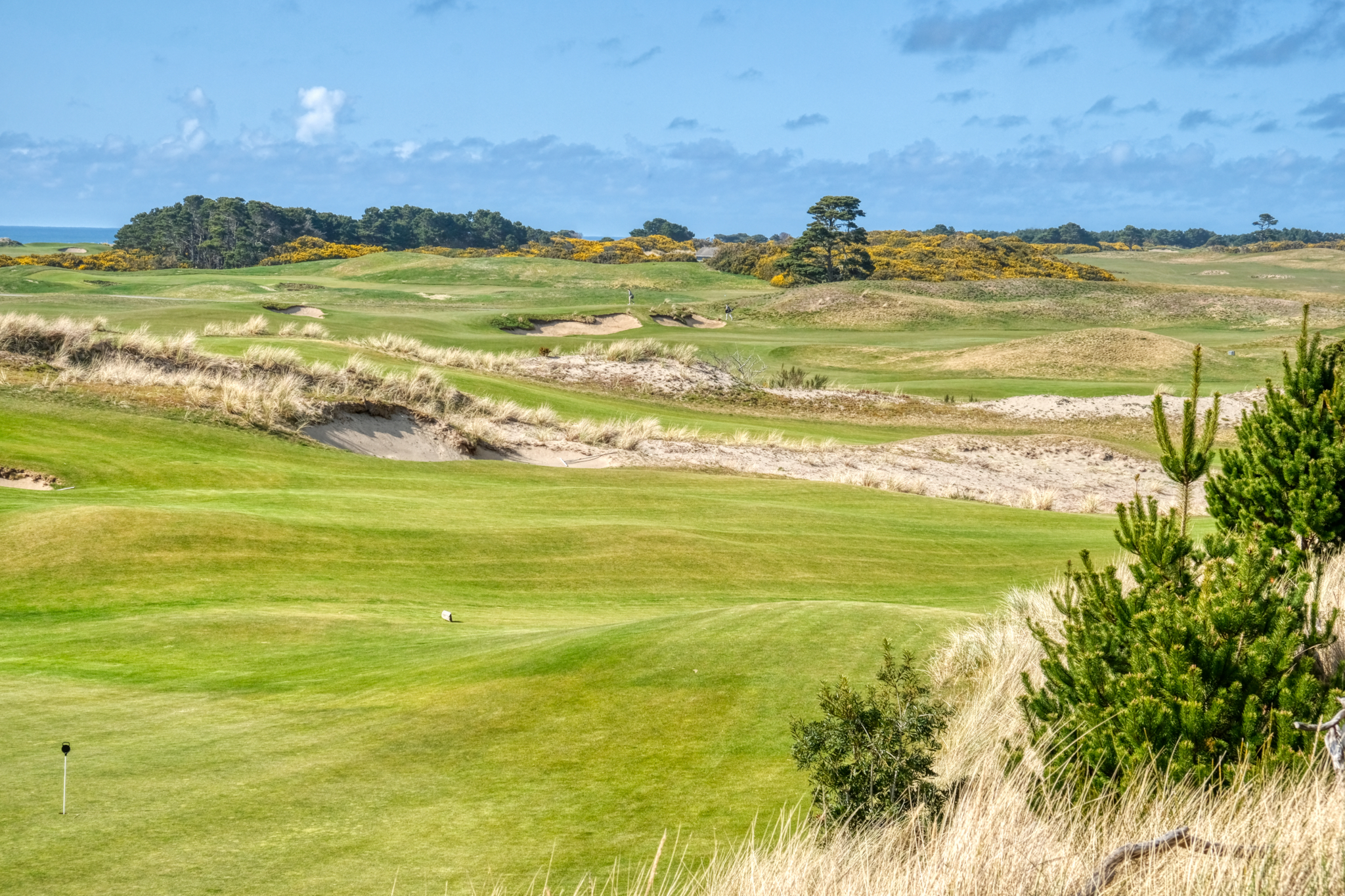 Of course, my wife wanted to stop and look at every golf curse along the way. This one, near Brookings, looked so Scottish! A real links curse, yellow gorse and all!
Of course, my wife wanted to stop and look at every golf curse along the way. This one, near Brookings, looked so Scottish! A real links curse, yellow gorse and all!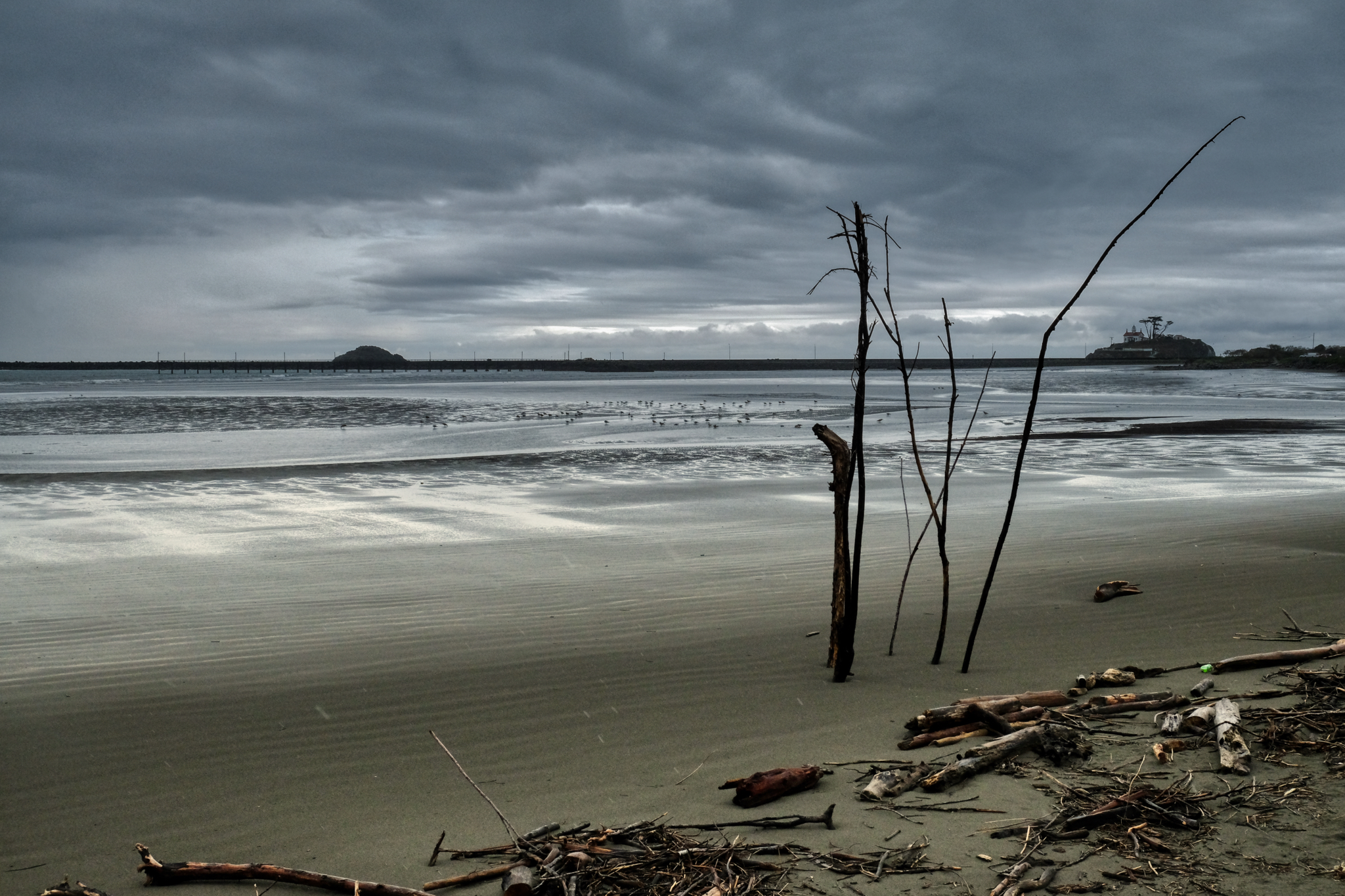 Arriving at the Crescent City bay.
Arriving at the Crescent City bay.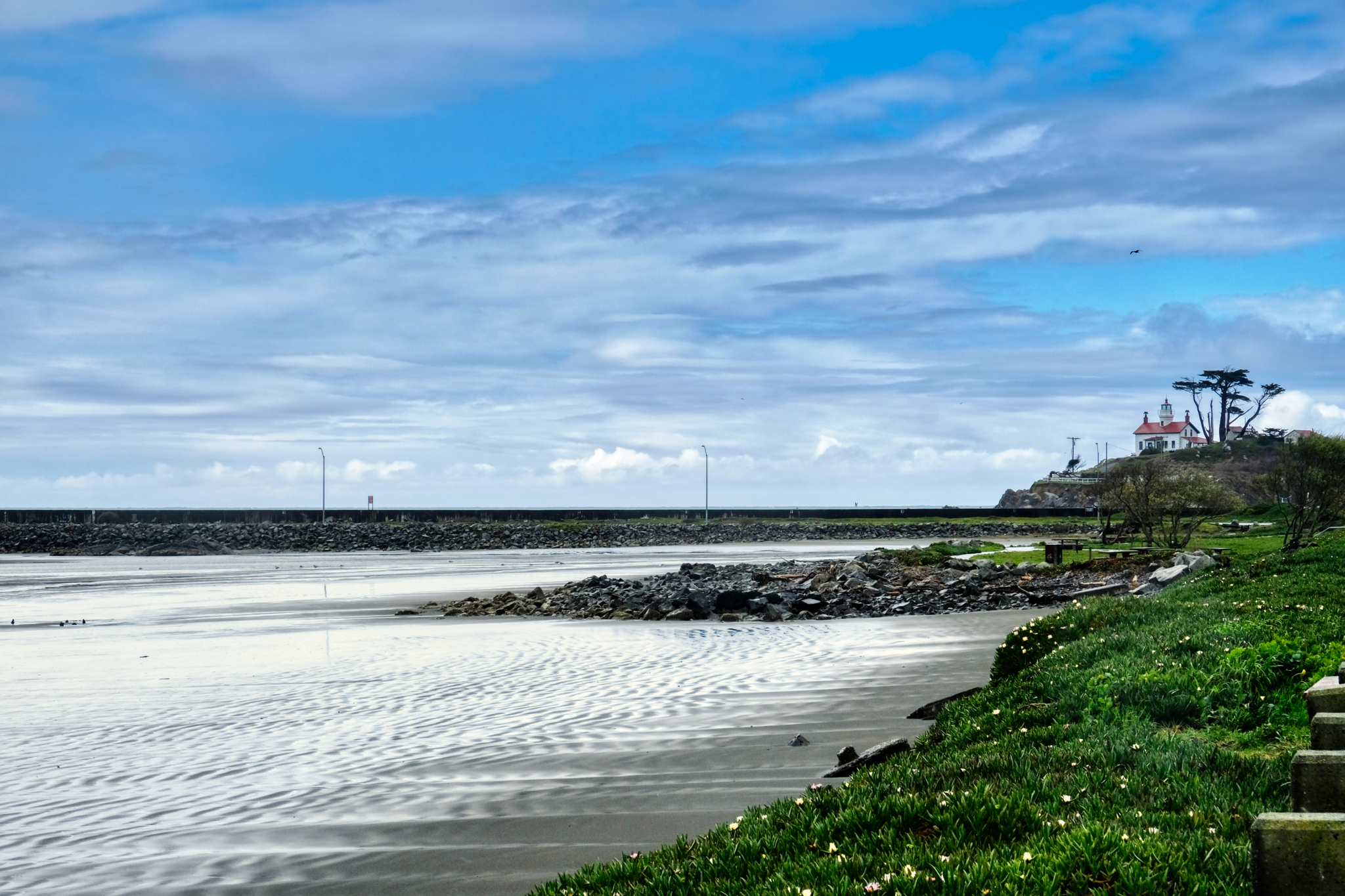 Crescent City bay and lighthouse.
Crescent City bay and lighthouse.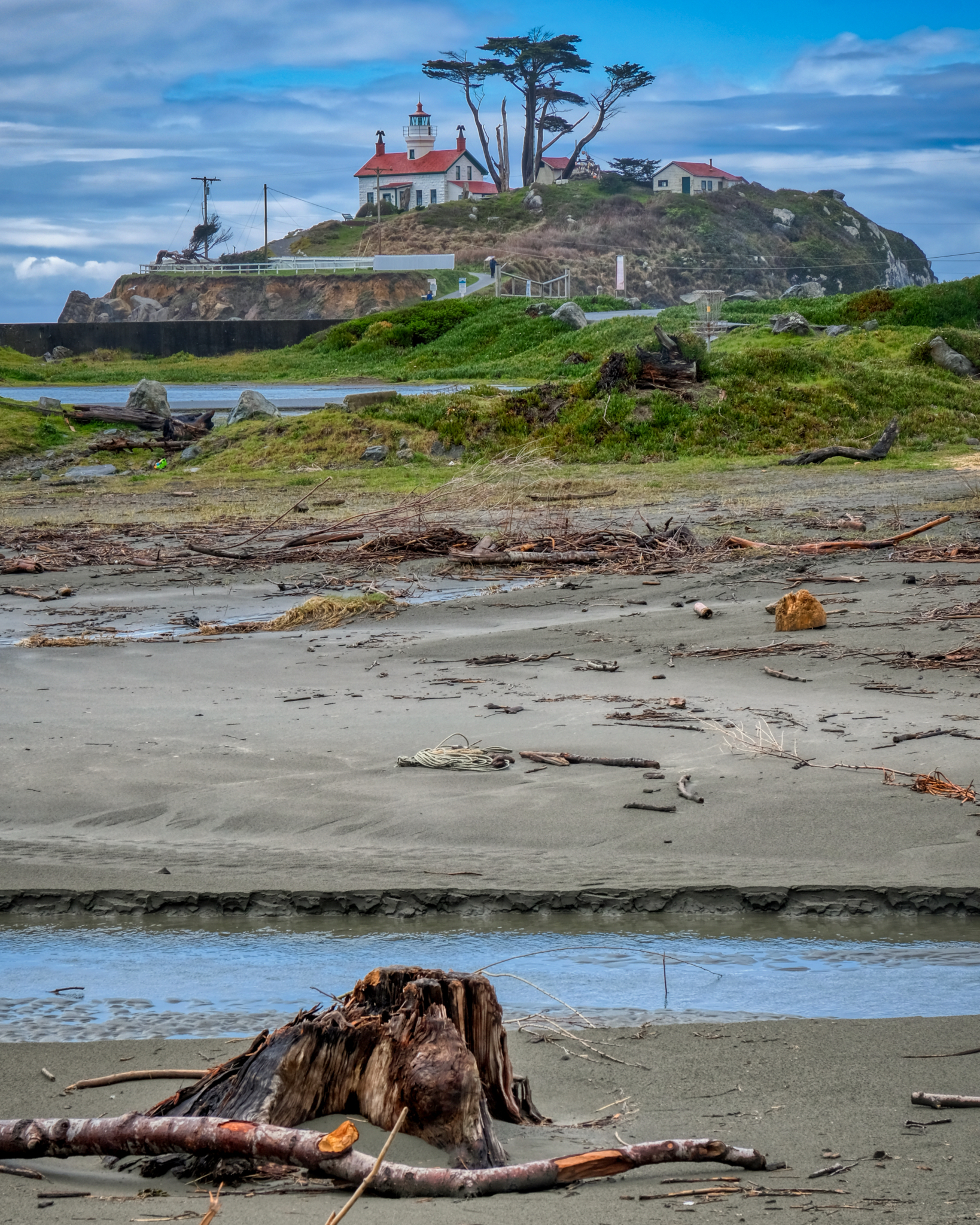 Crescent City lighthouse.
Crescent City lighthouse.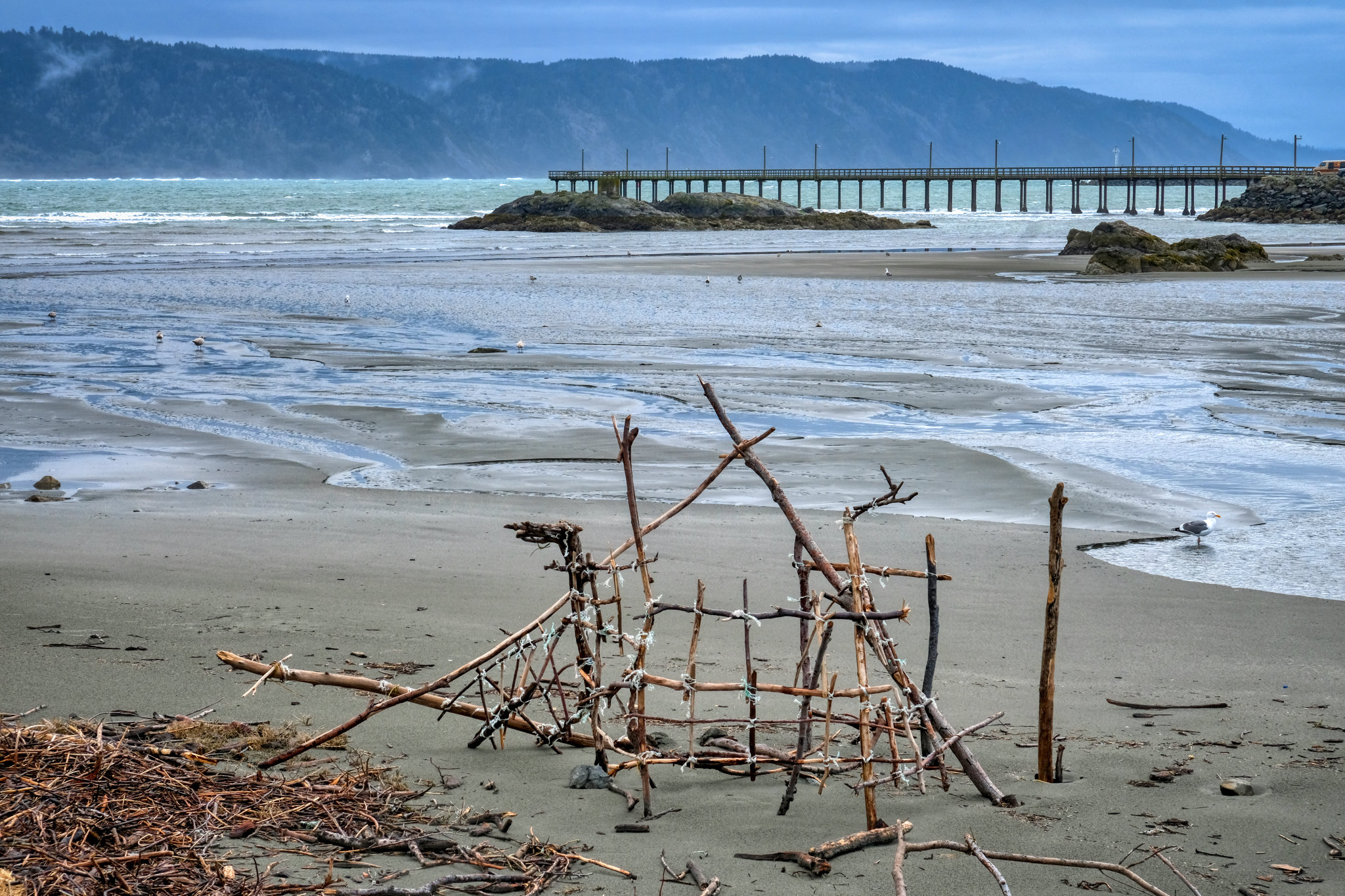 A beachcombers' stick sculpture.
A beachcombers' stick sculpture.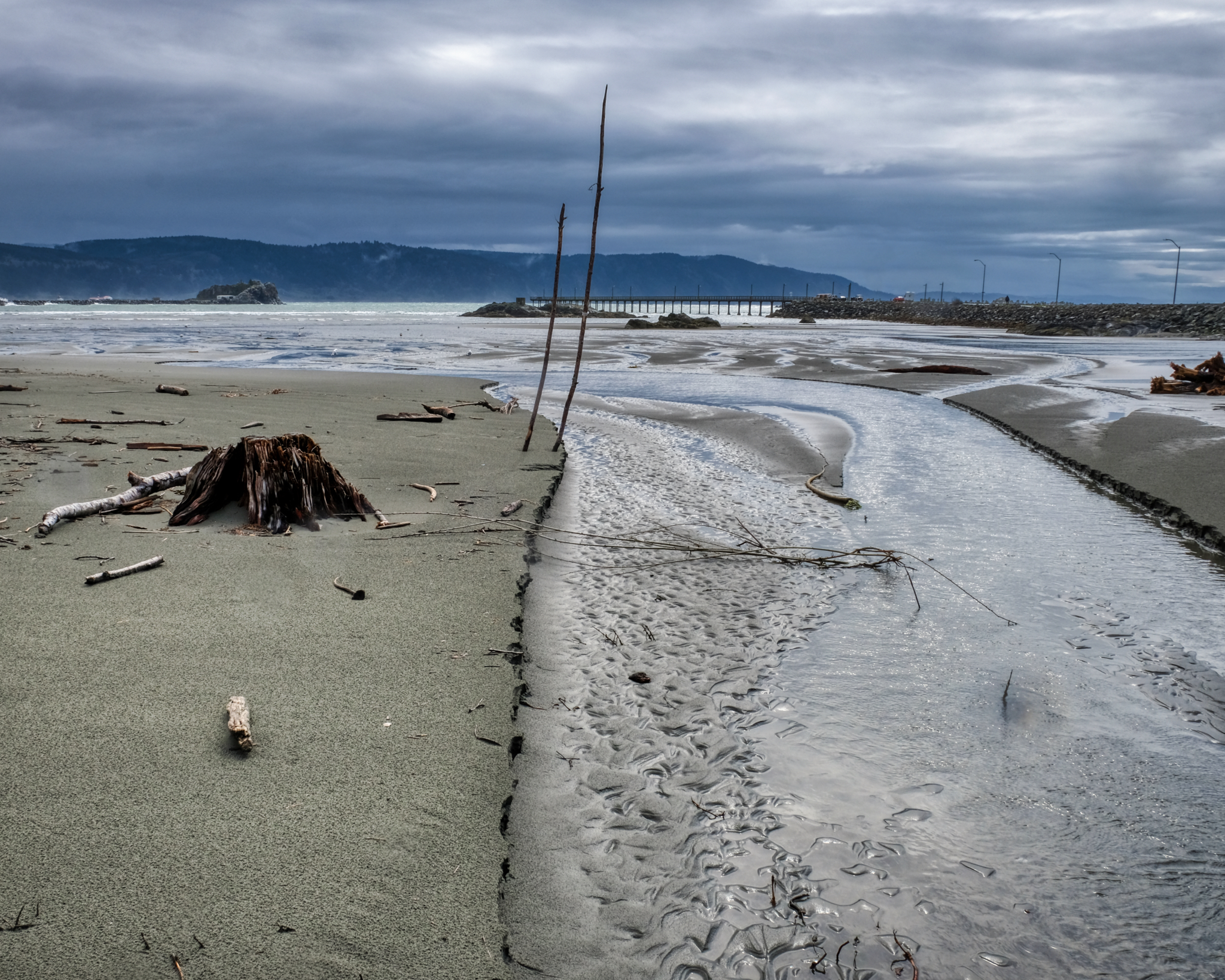 I love these Pacific Northwest coastal scenes.
I love these Pacific Northwest coastal scenes.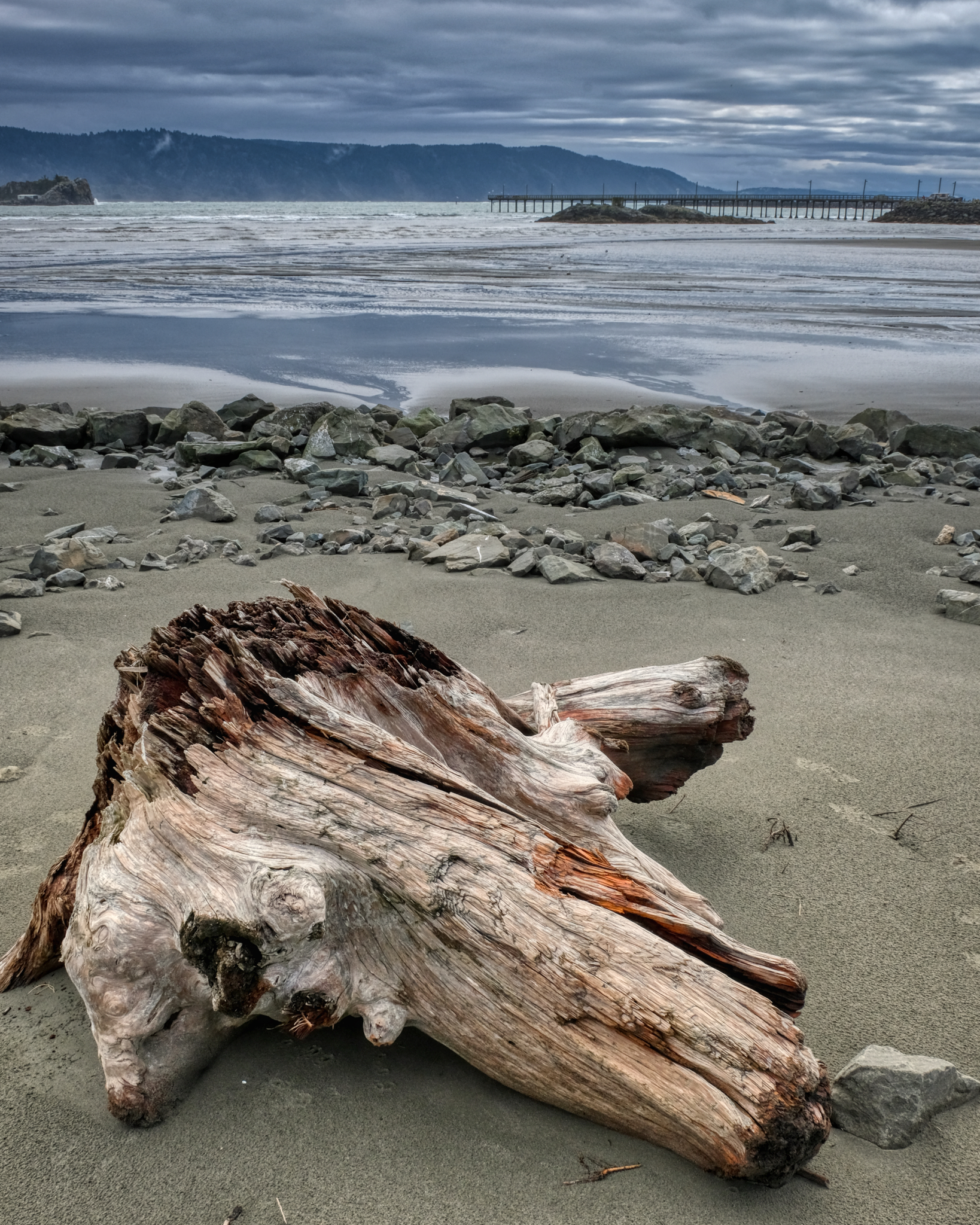 On of my favorite photographic subjects: driftwood.
On of my favorite photographic subjects: driftwood.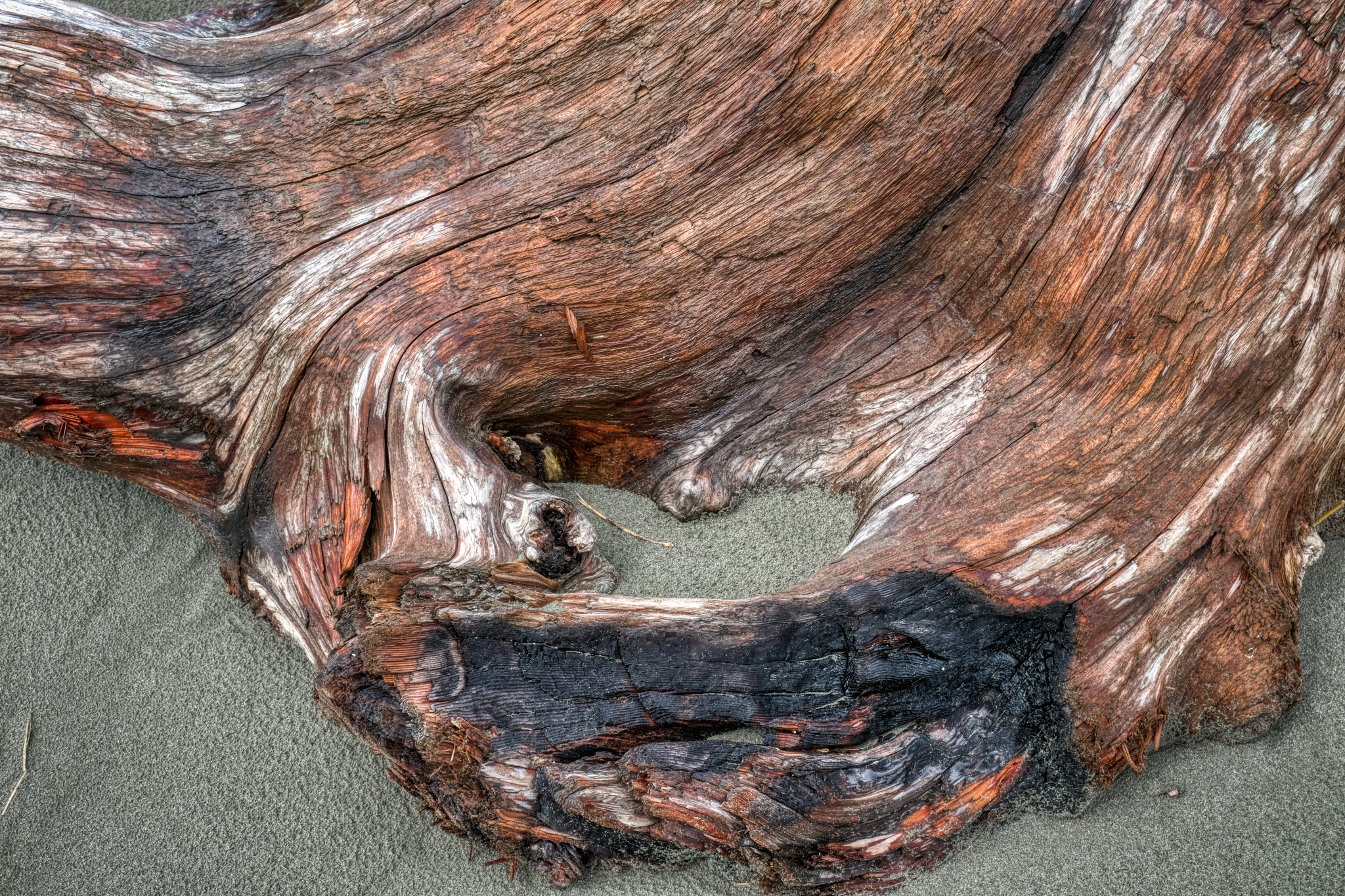 Worn by sea, sun, and sand into fabulous textures and patterns . . .
Worn by sea, sun, and sand into fabulous textures and patterns . . .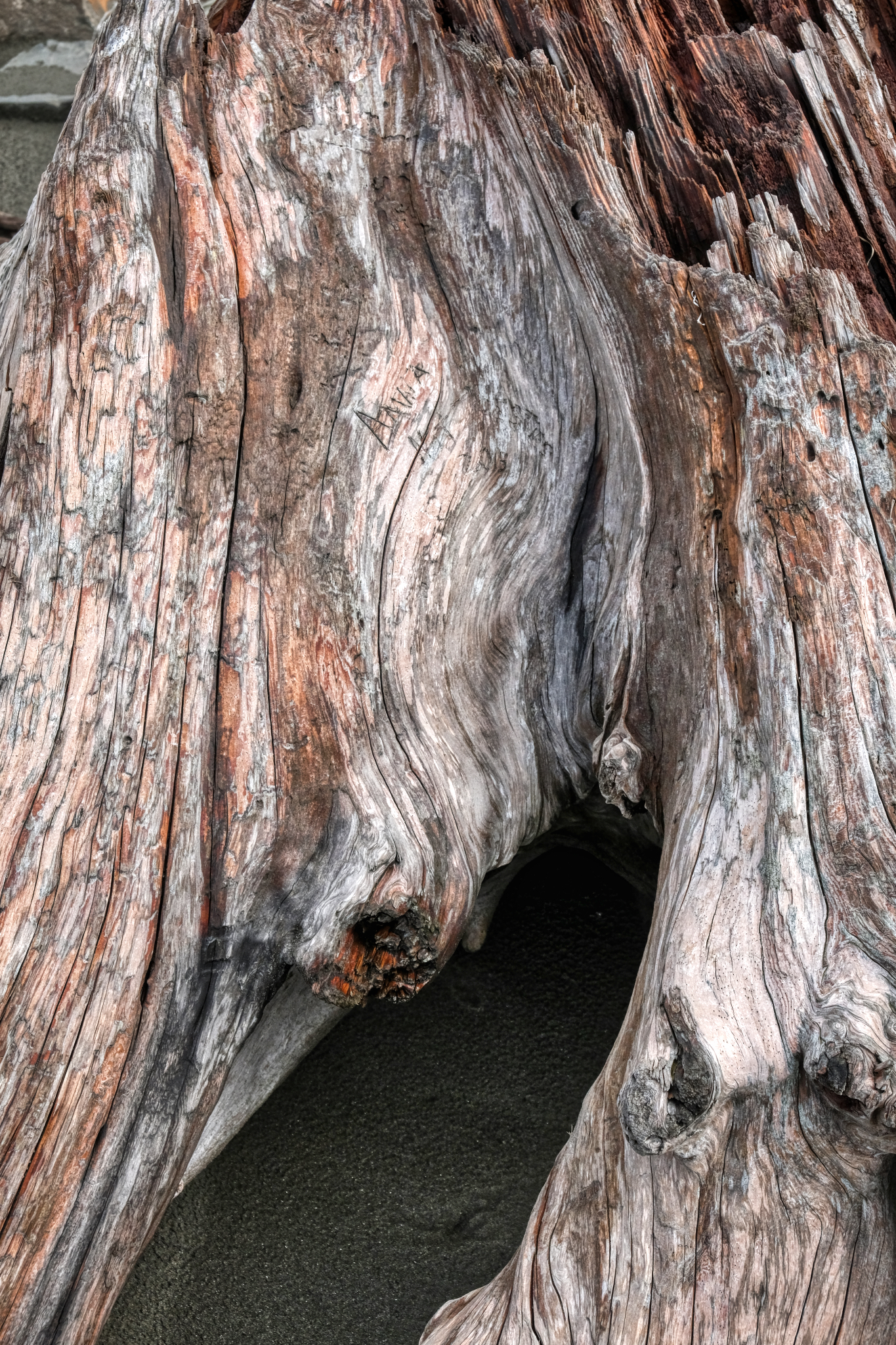 A visitor's cartouche . . .
A visitor's cartouche . . .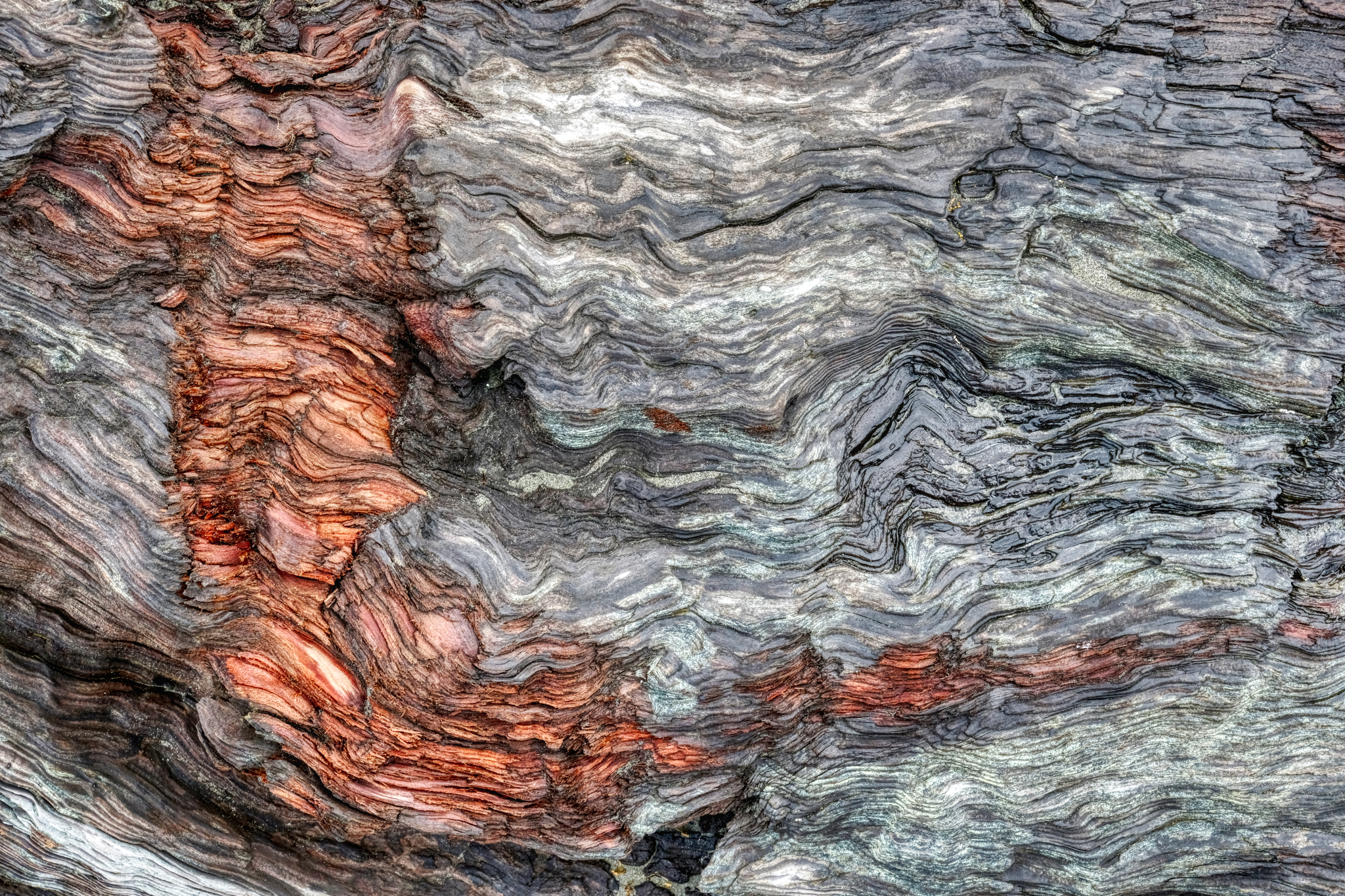 A damaged surface. The orange scrape revealing the natural color behind the grey aged driftwood.
A damaged surface. The orange scrape revealing the natural color behind the grey aged driftwood.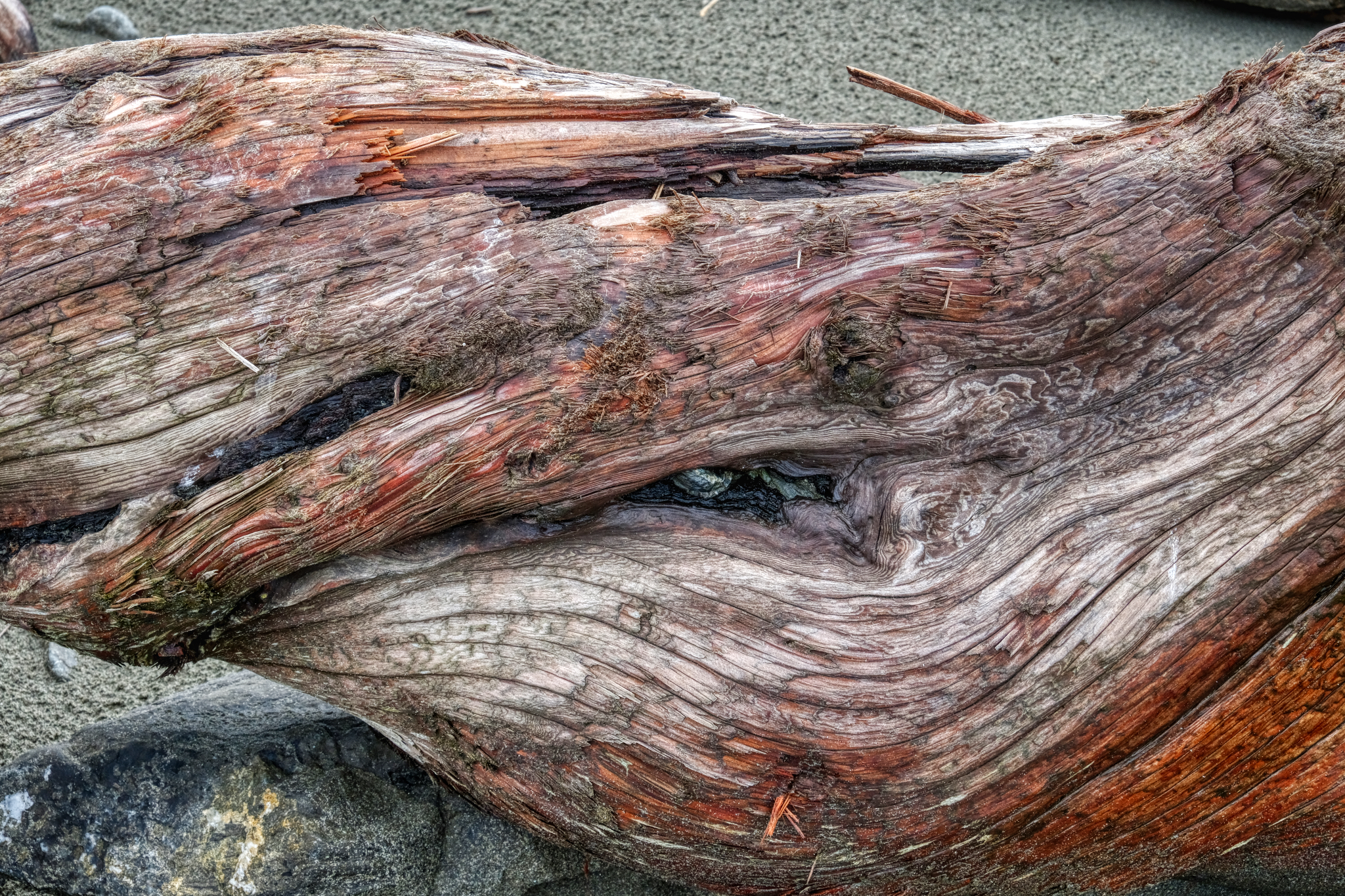 Twisted driftwood.
Twisted driftwood.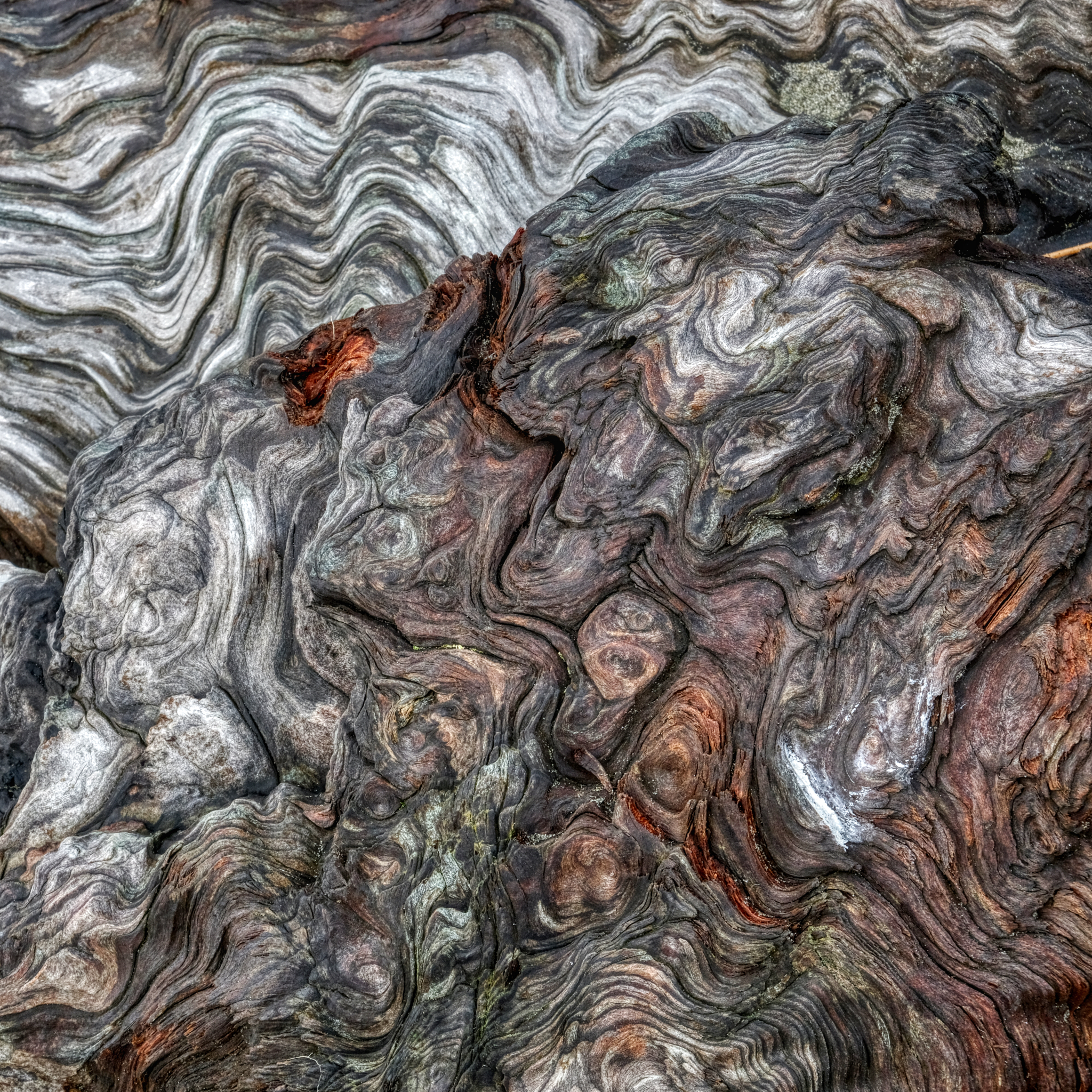 A revelation of the history of the forces and conditions this particular tree has experienced in the past represented in these patterns.
A revelation of the history of the forces and conditions this particular tree has experienced in the past represented in these patterns.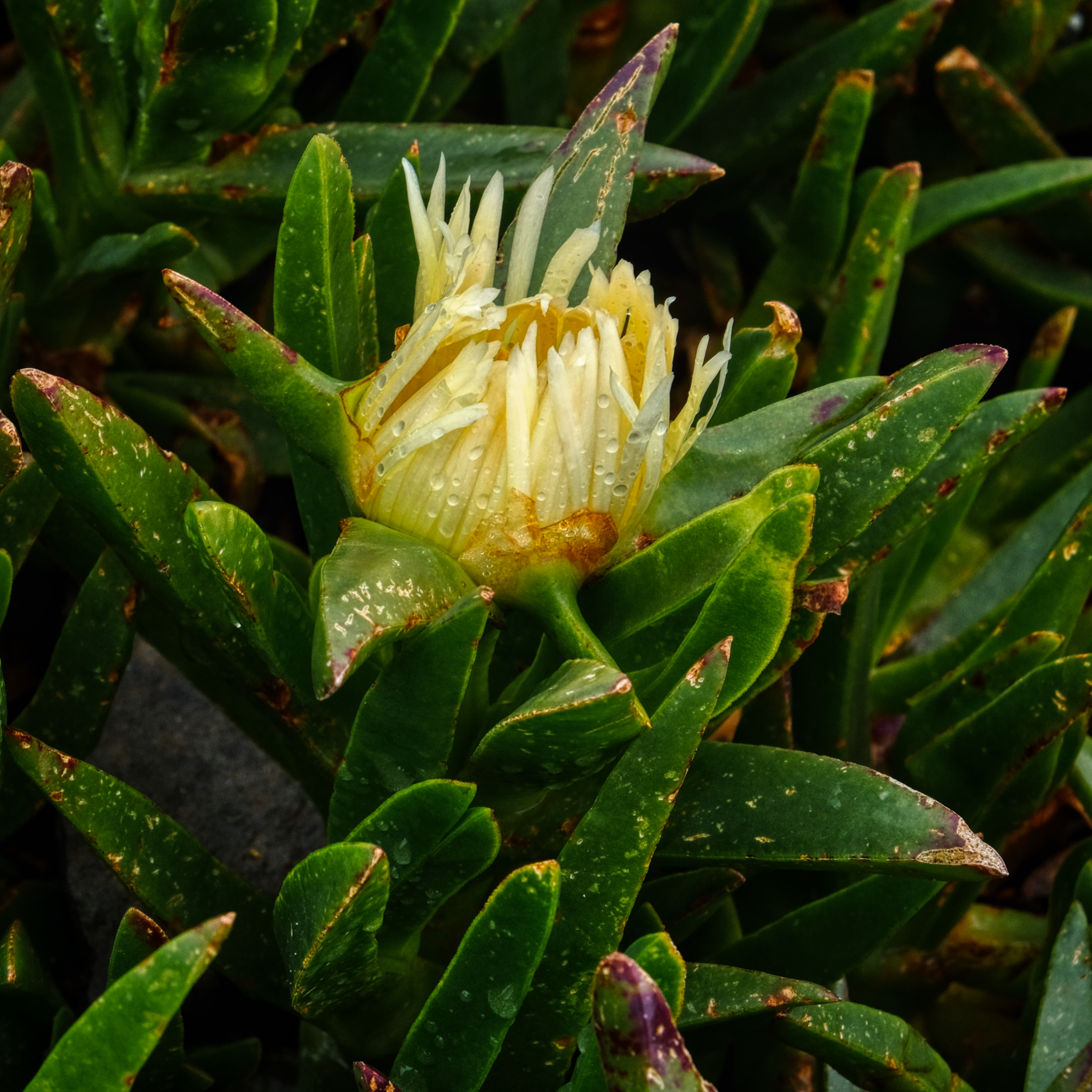 Ice plant! Stained all my clothes as a child. Here, at Crescent City, in flower on a rainy morning.
Ice plant! Stained all my clothes as a child. Here, at Crescent City, in flower on a rainy morning.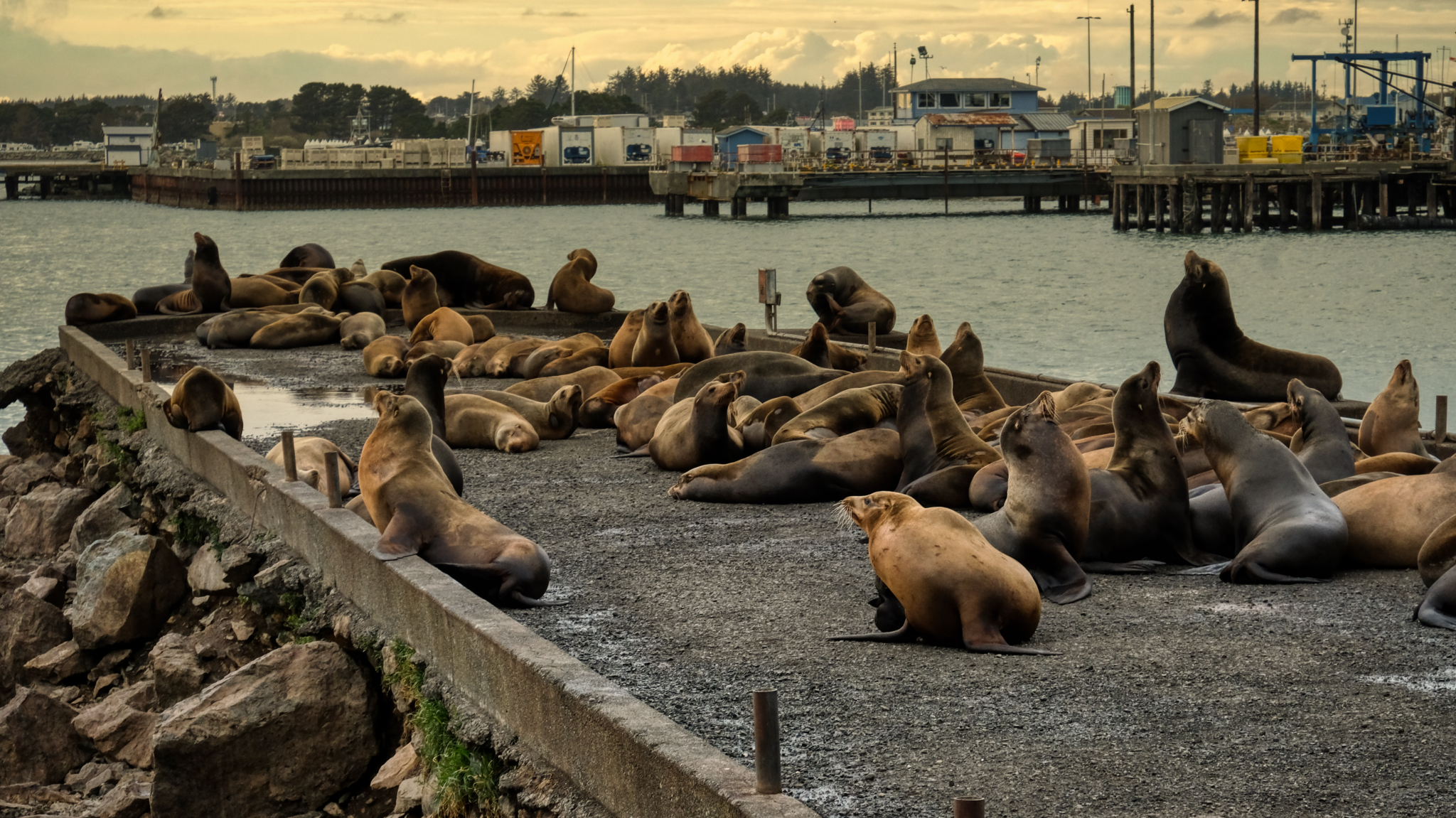 We stayed the night in a motel in Crescent City, California and went out for seafood on the pier . . . and discovered the sea lions at sunset.
We stayed the night in a motel in Crescent City, California and went out for seafood on the pier . . . and discovered the sea lions at sunset.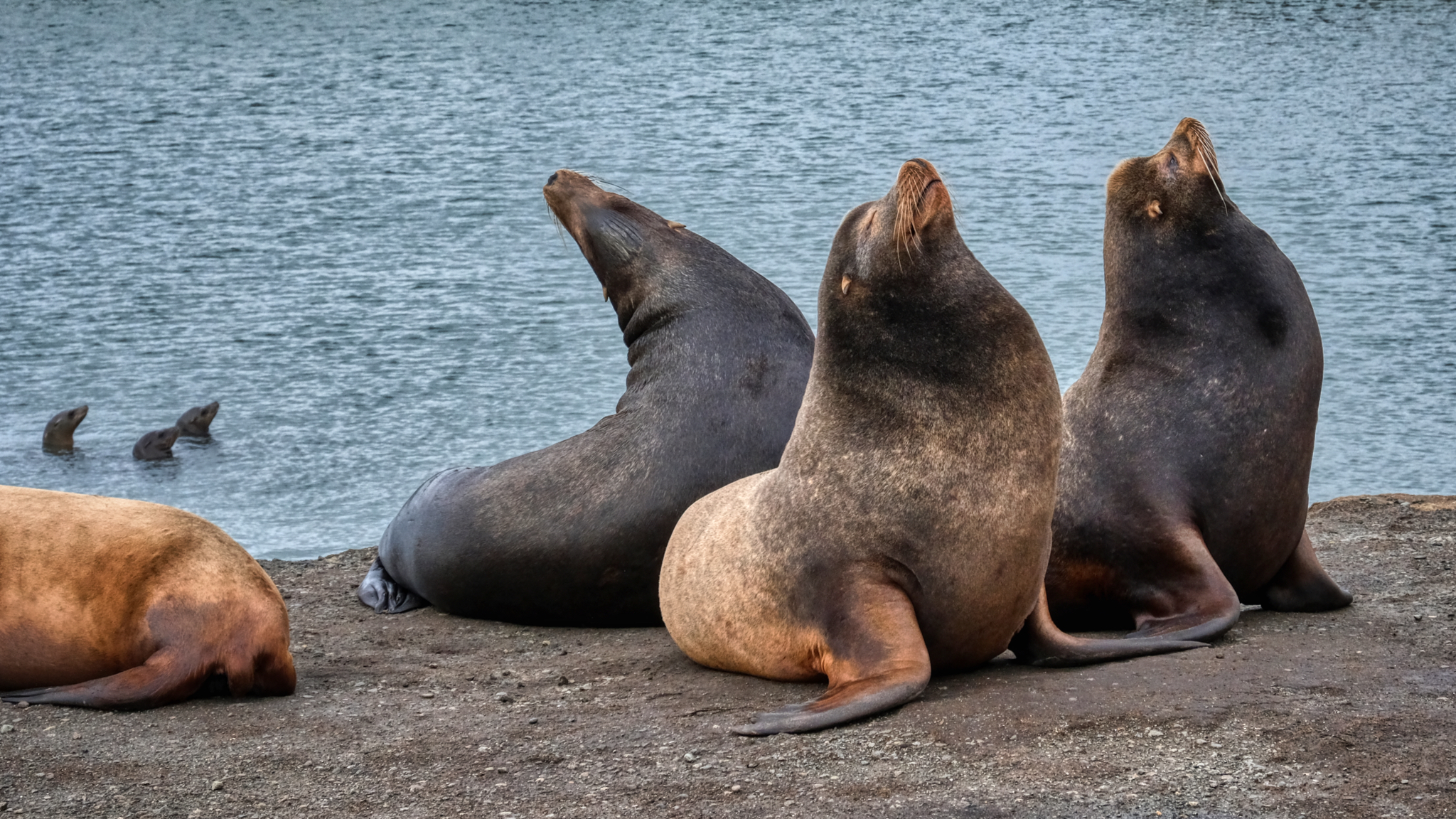 Sea lions are fascinating to watch. Very entertaining sea mammals!
Sea lions are fascinating to watch. Very entertaining sea mammals!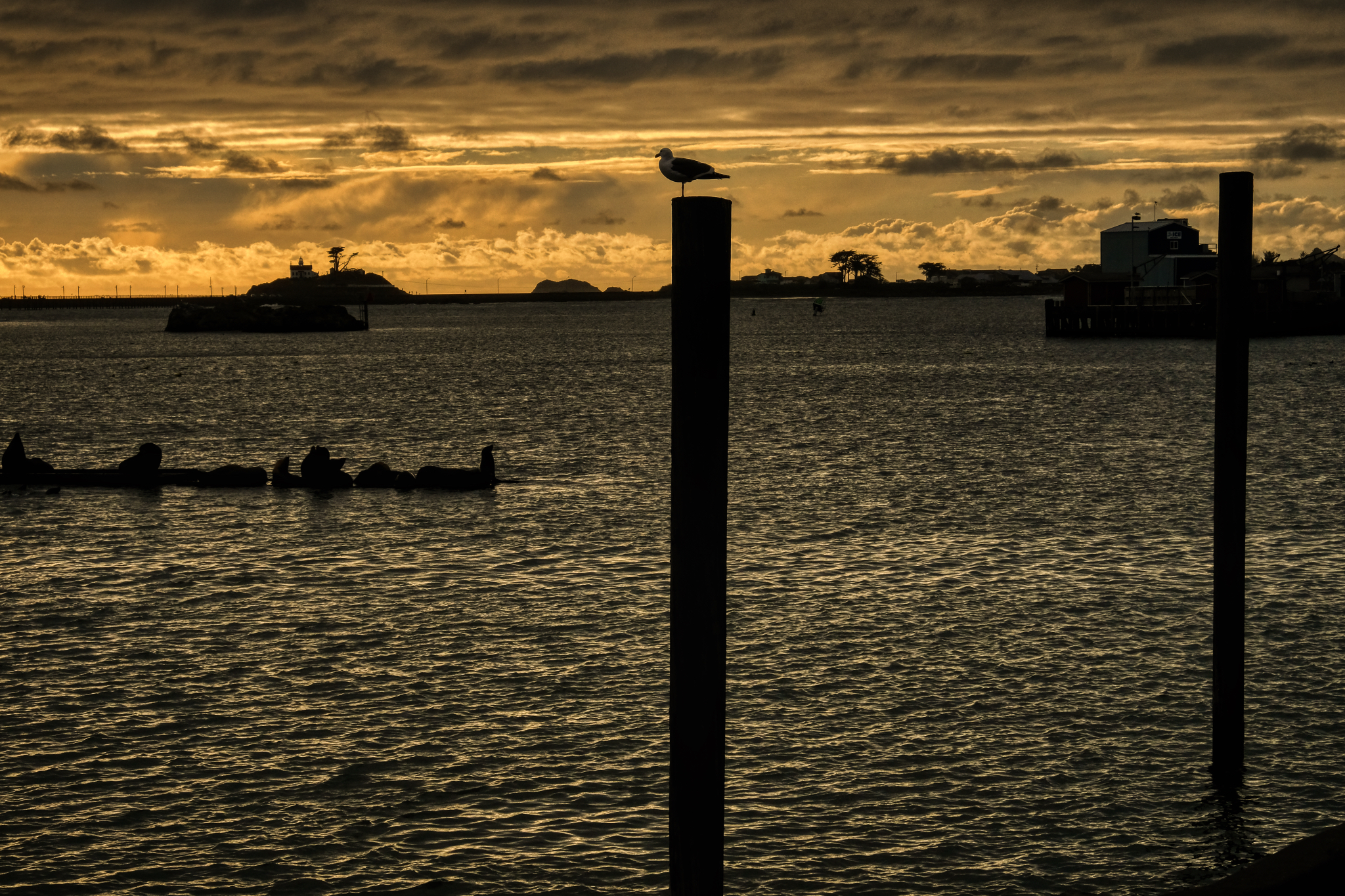 The Crescent City harbor . . . a gull supervises a log-full of sea lions.
The Crescent City harbor . . . a gull supervises a log-full of sea lions.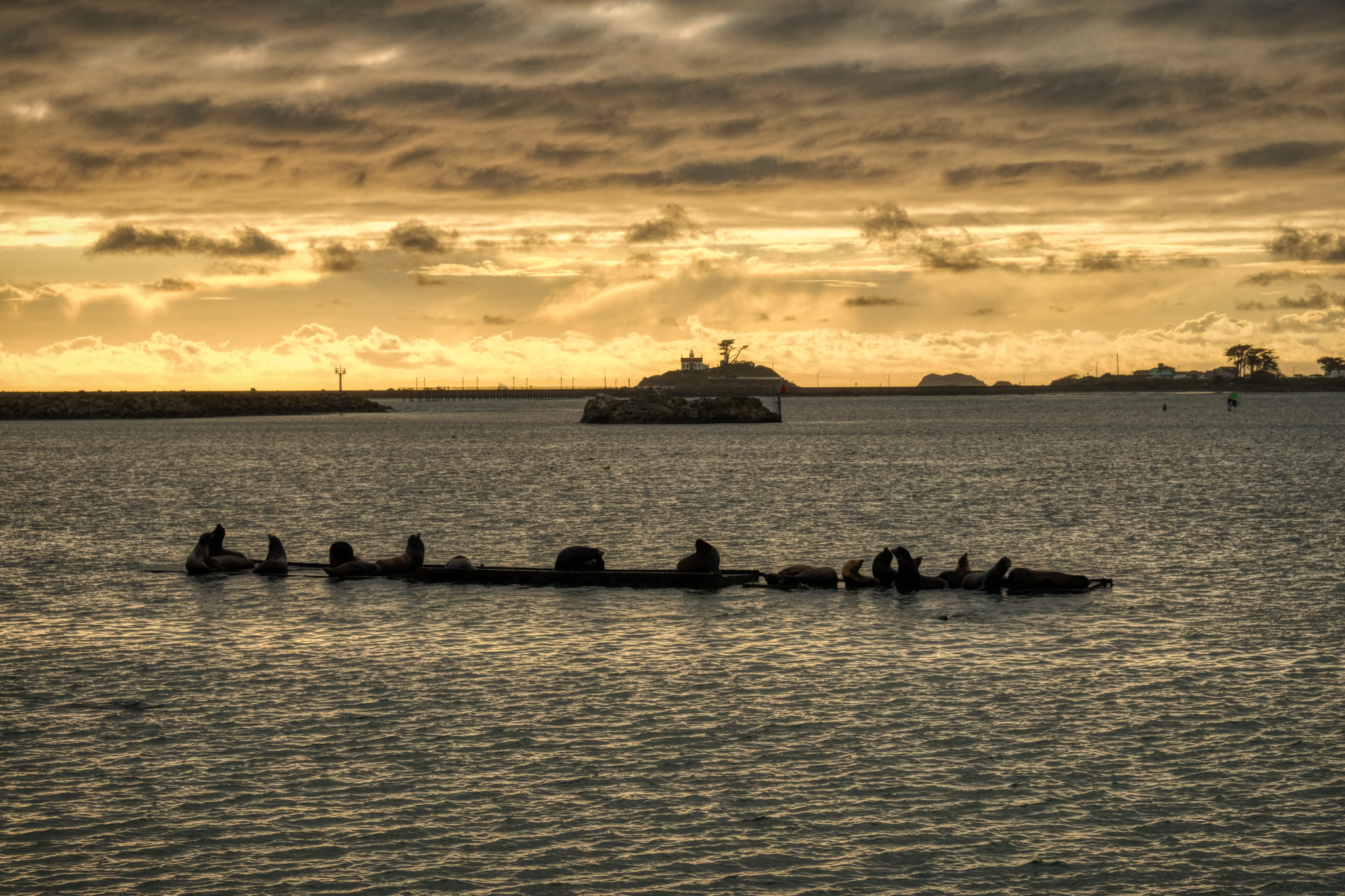 Sea lions on a log in the sunset.
Sea lions on a log in the sunset.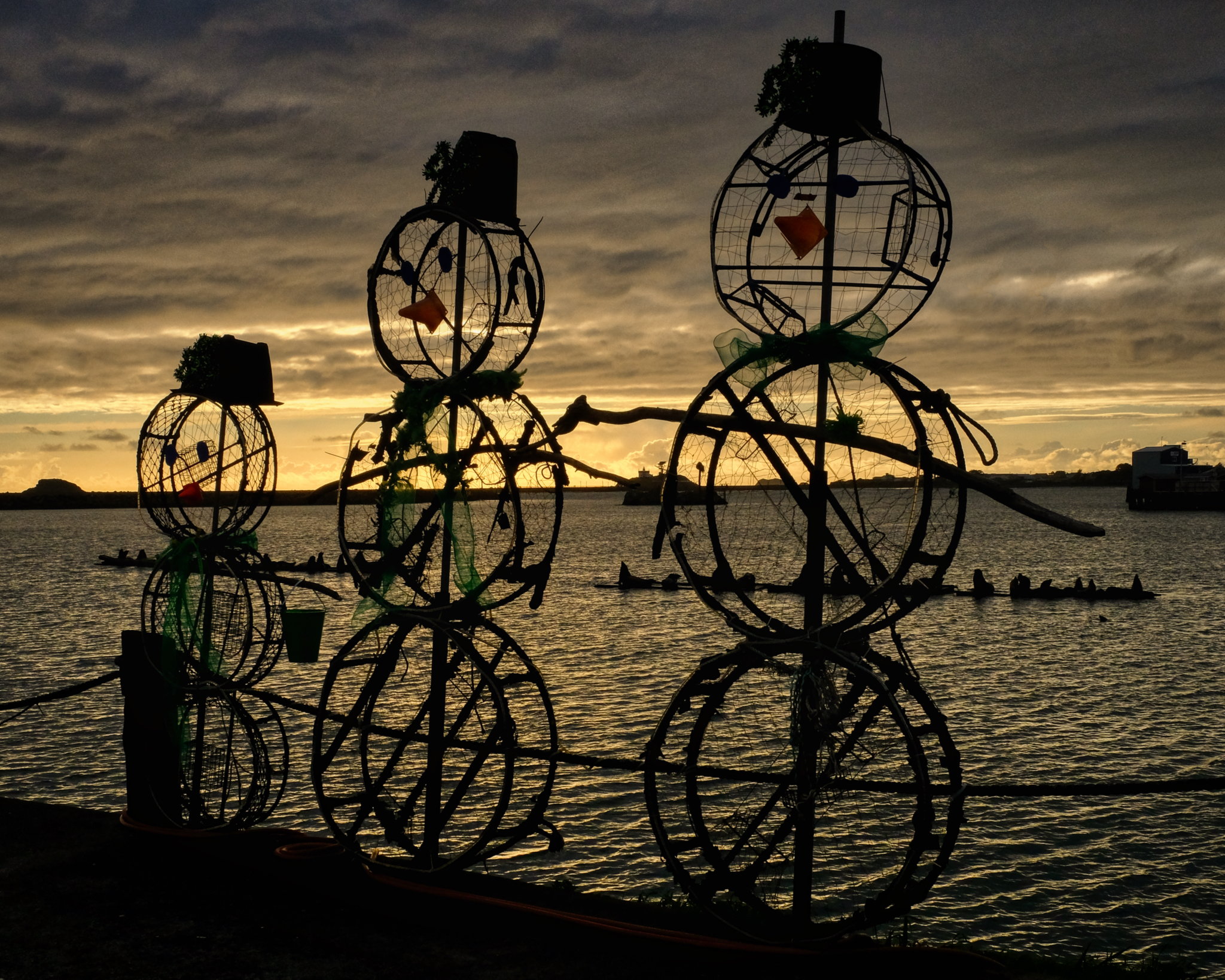 It was early April . . . time to take down the Christmas decorations . . . but cute.
It was early April . . . time to take down the Christmas decorations . . . but cute.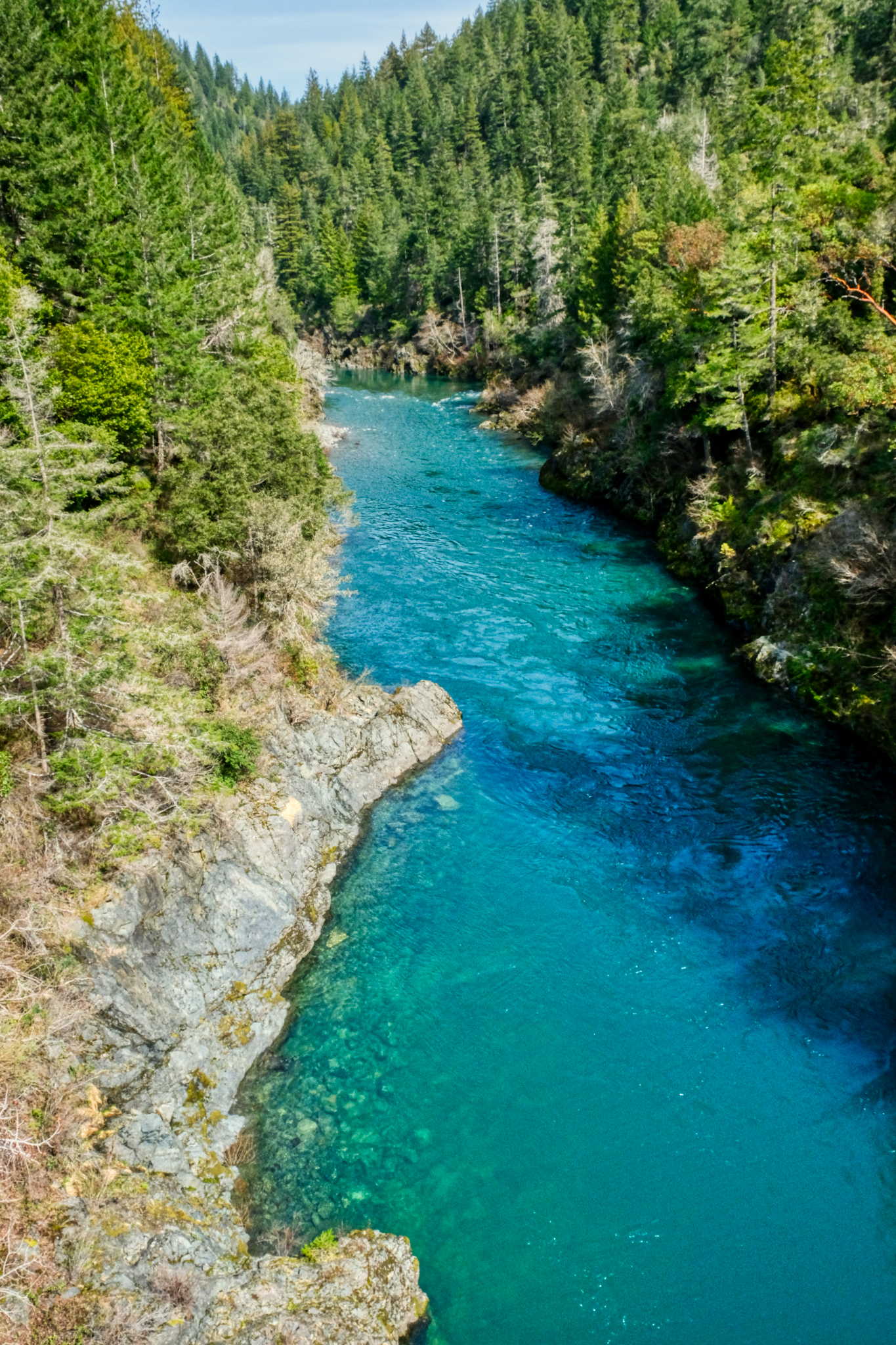 Crossing the Smith River on the way to a redwood stand.
Crossing the Smith River on the way to a redwood stand.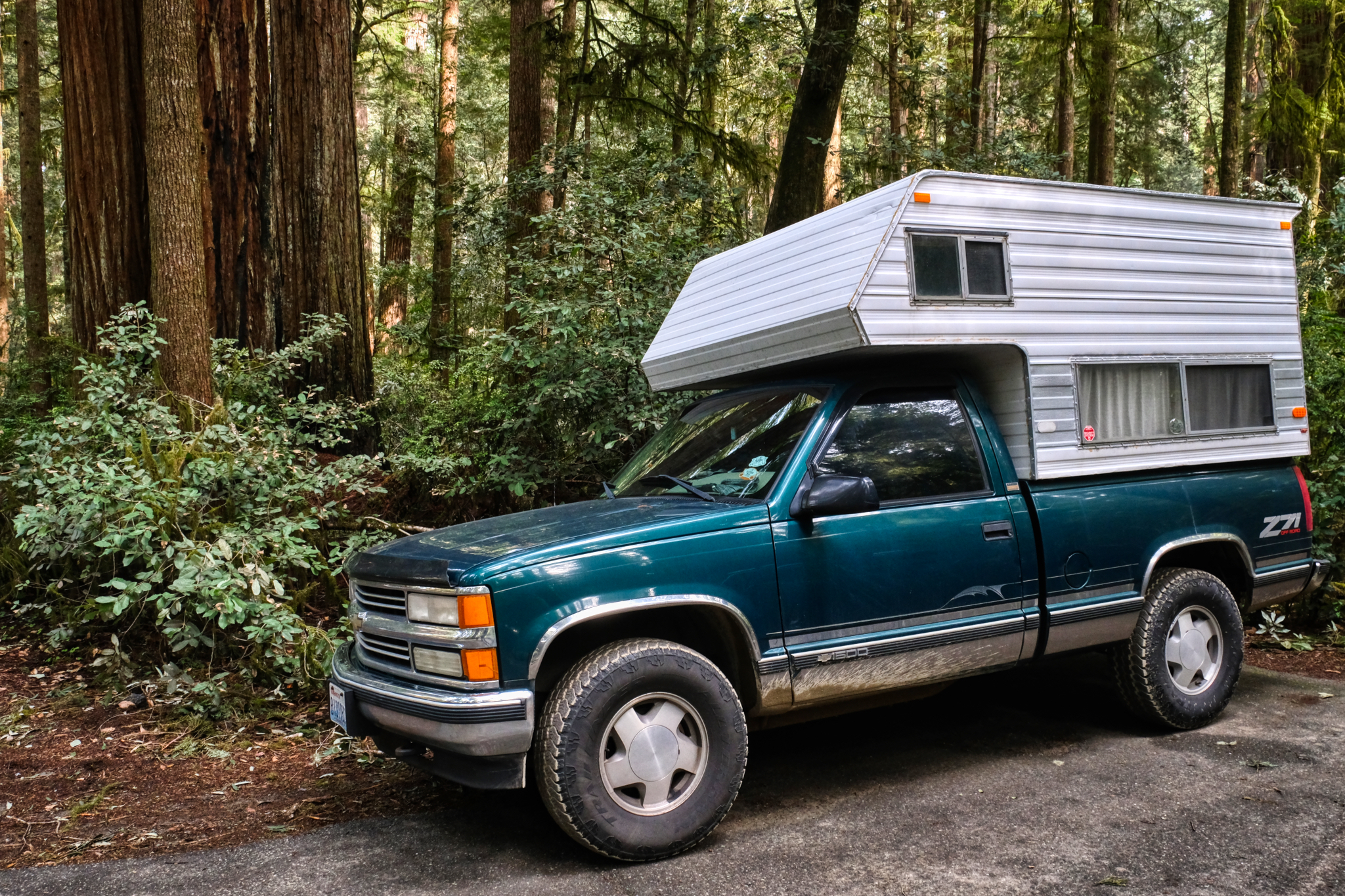 Arriving at Jedediah Smith Redwoods State Park.
Arriving at Jedediah Smith Redwoods State Park.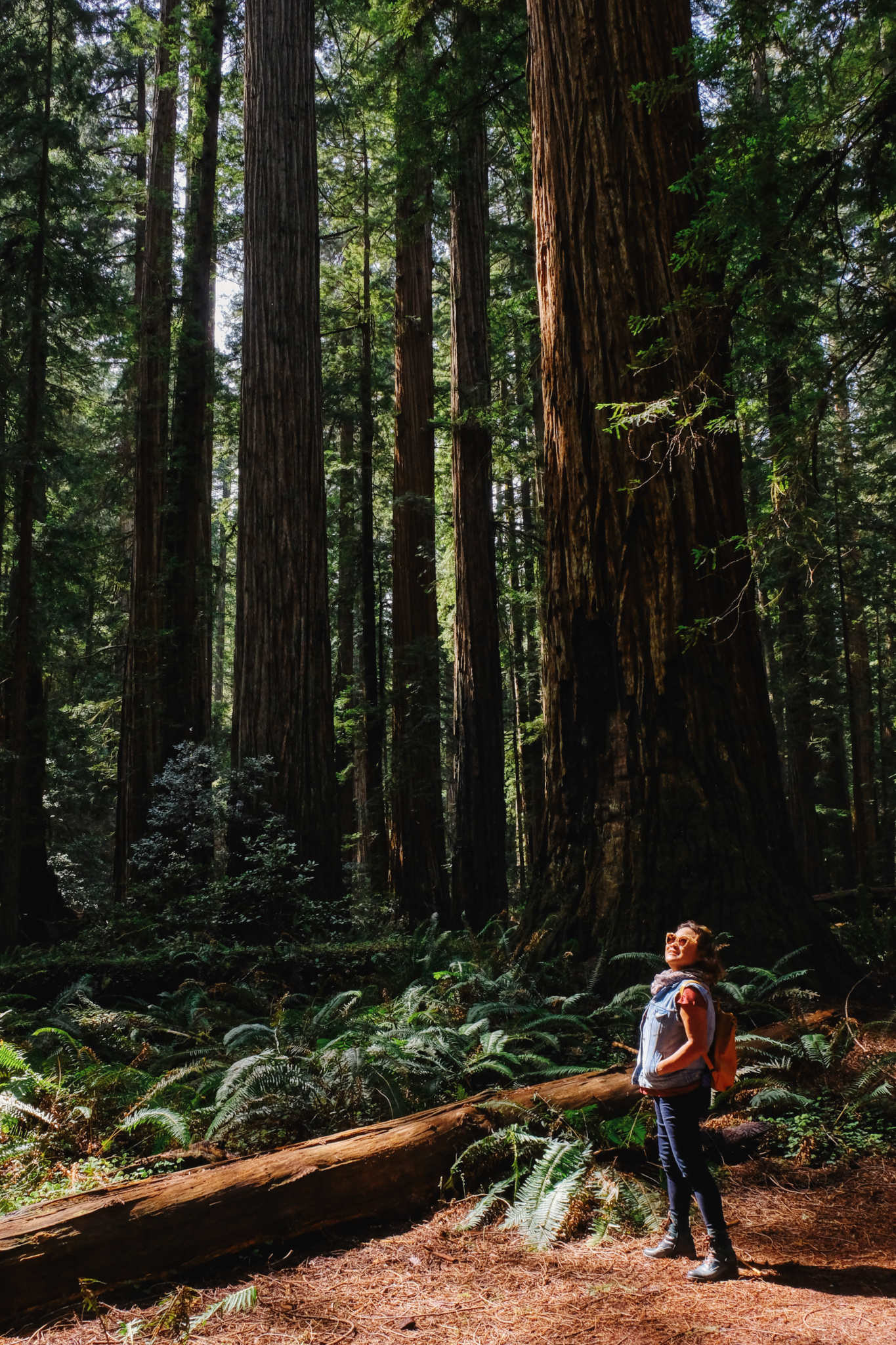 One of many foreign tourists that visit the giant redwoods of California every year.
One of many foreign tourists that visit the giant redwoods of California every year.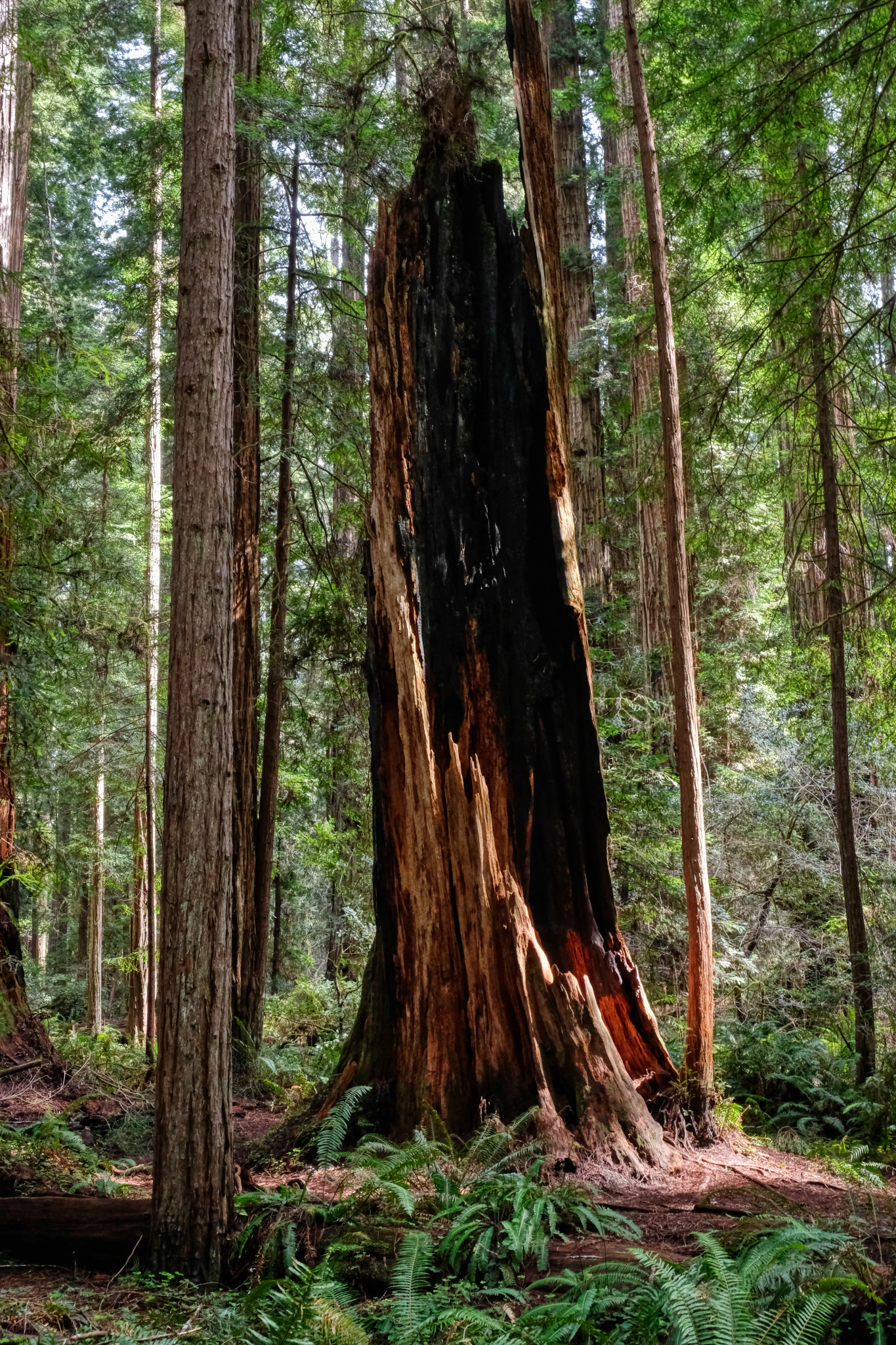 A fantastically dramatic redwood snag left from some past burn.
A fantastically dramatic redwood snag left from some past burn.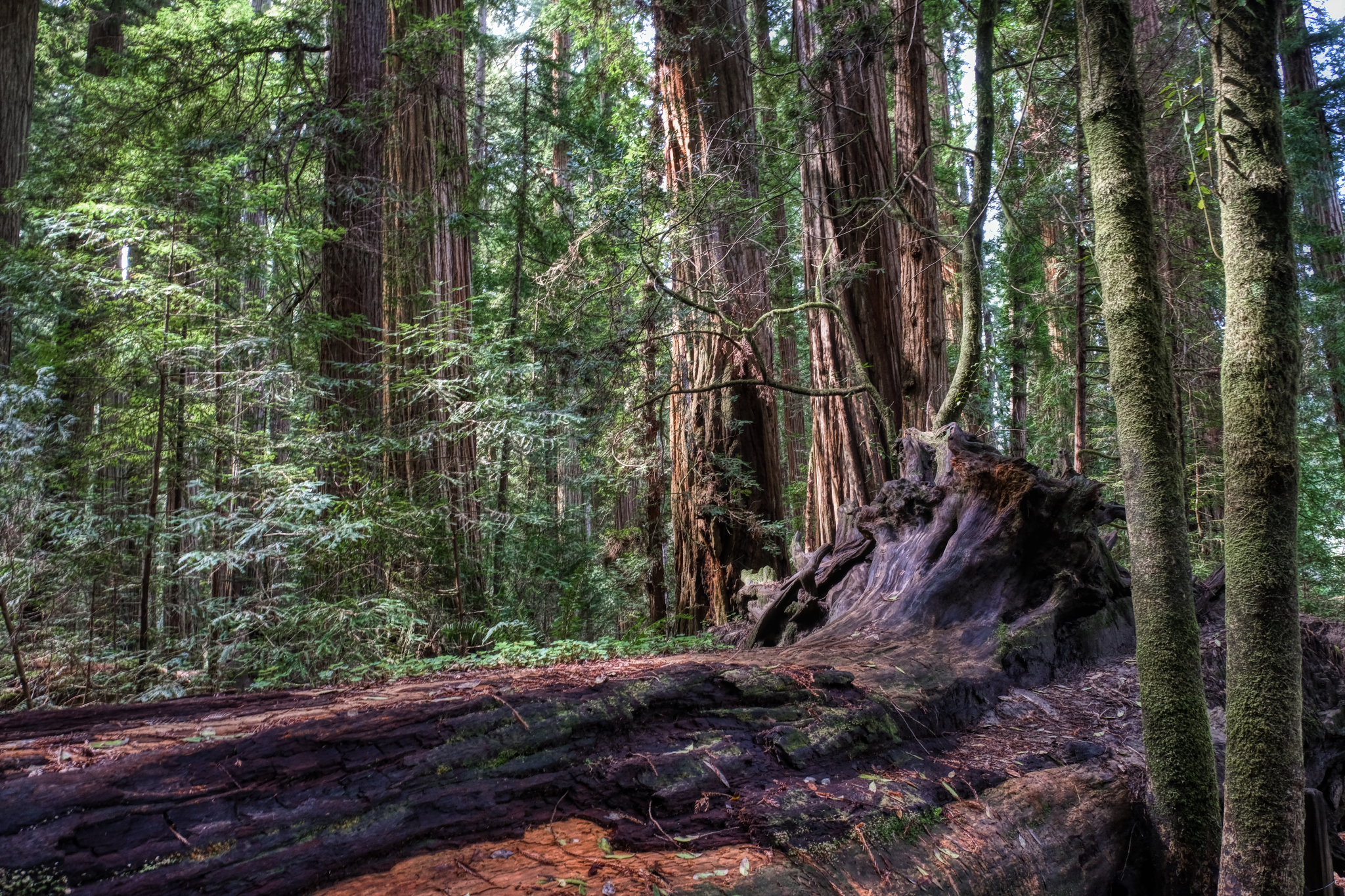 Ancient giant redwoods.
Ancient giant redwoods.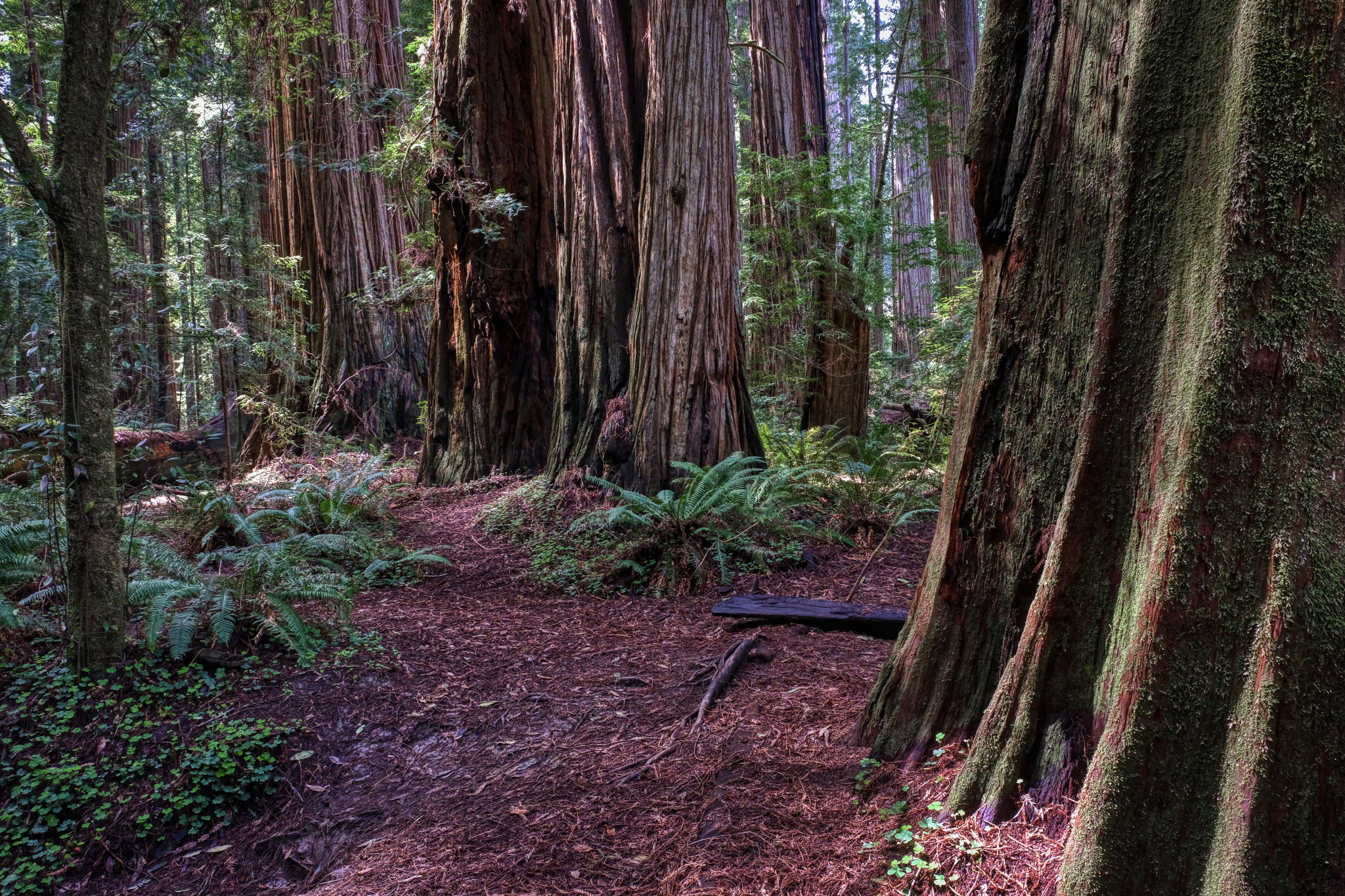 We walked for hours on the park paths among the towering redwoods.
We walked for hours on the park paths among the towering redwoods.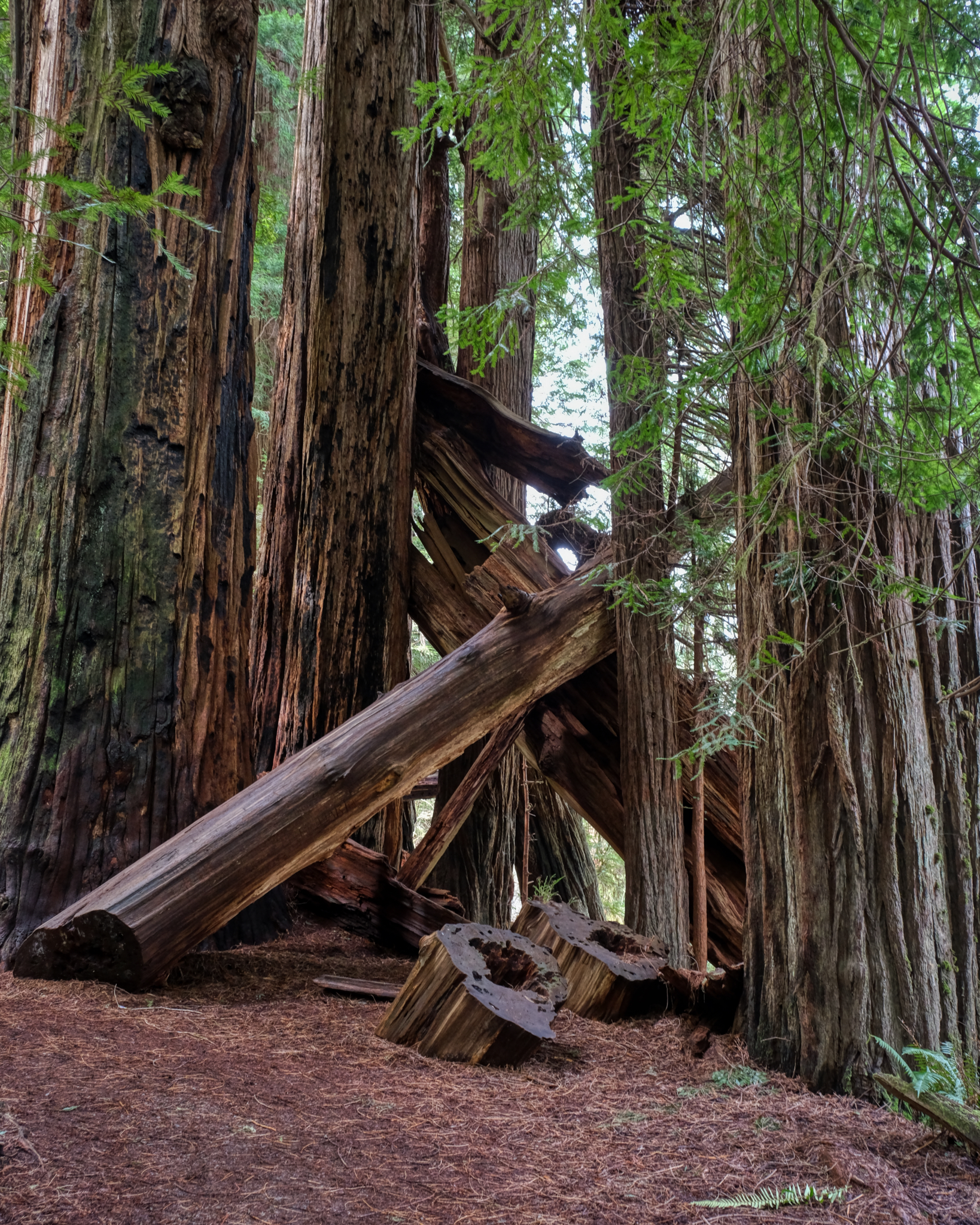 The park service did a good job of keeping the paths easily accessible by cutting back fallen redwoods.
The park service did a good job of keeping the paths easily accessible by cutting back fallen redwoods.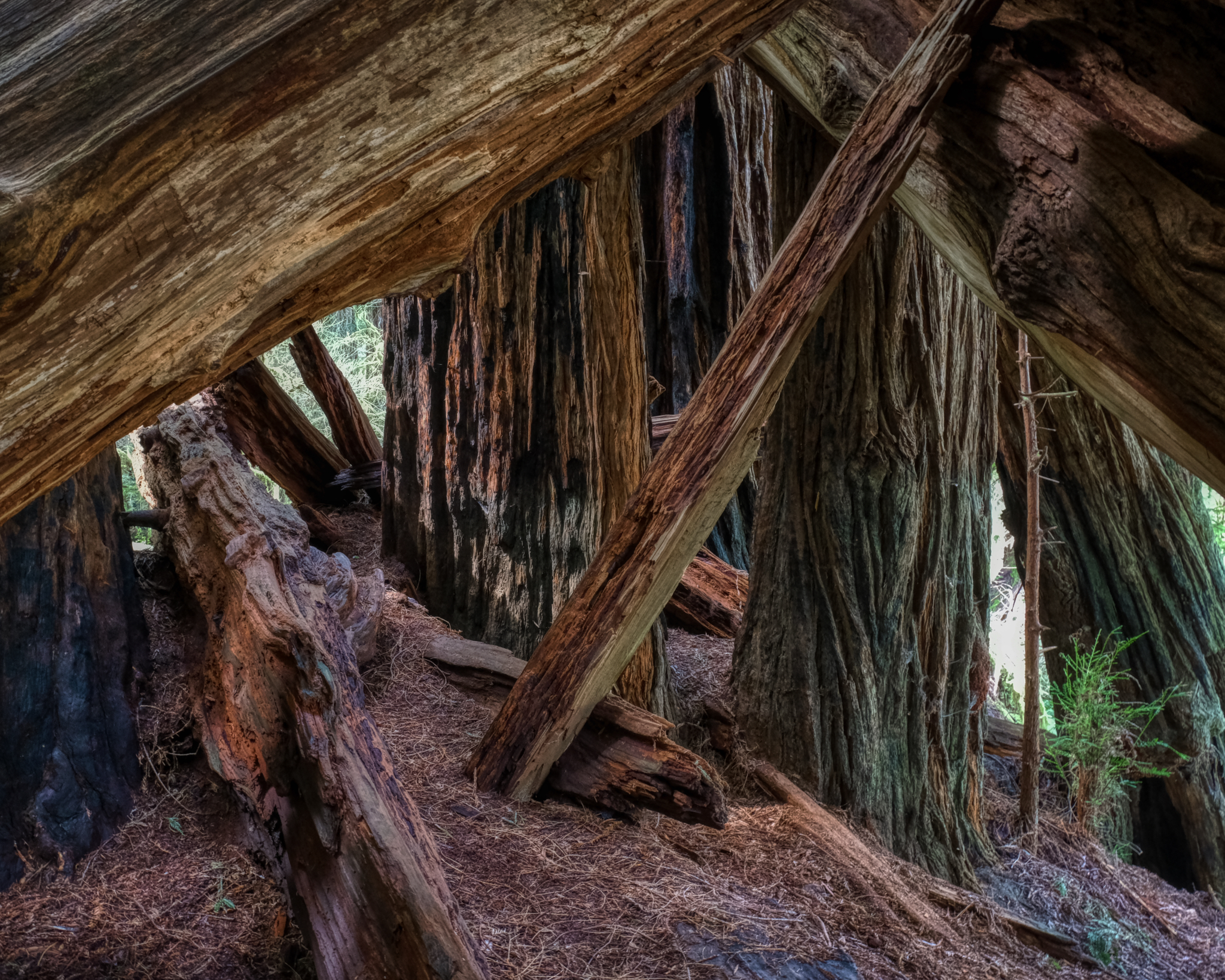 An incredible space, line, color.
An incredible space, line, color.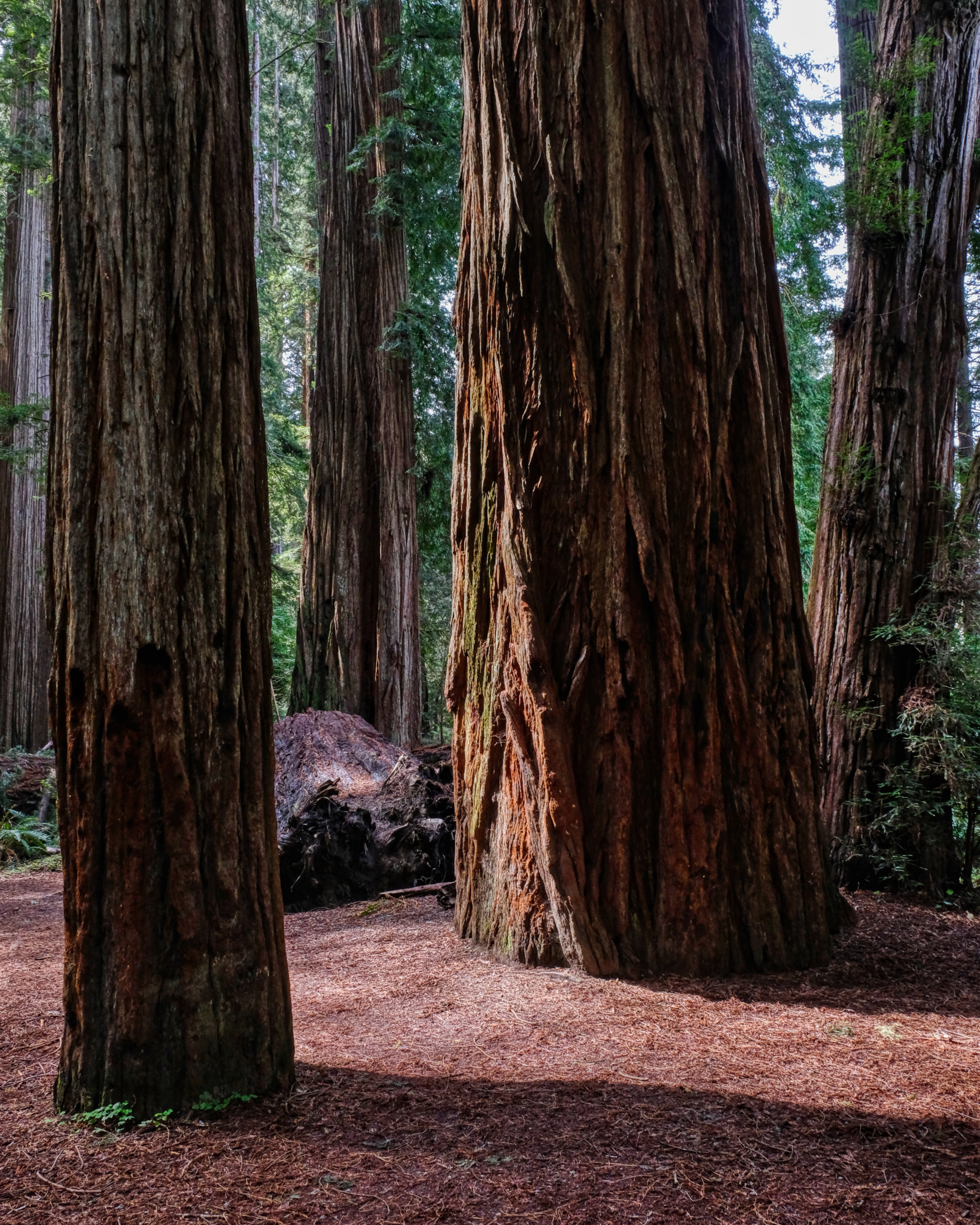 Ancient plant spirits . . .
Ancient plant spirits . . .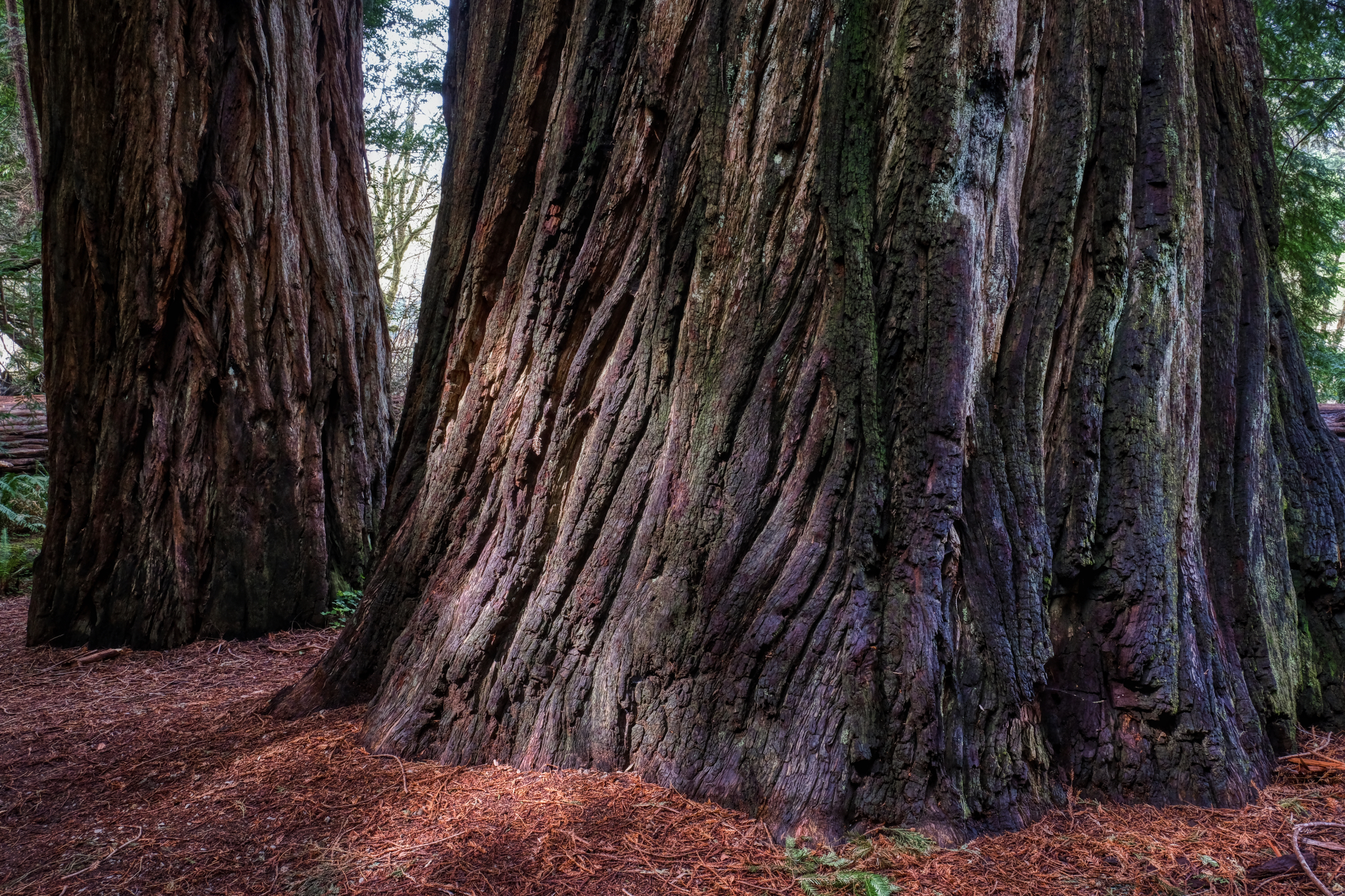 Sturdy, solid, immense, strong, tall . . .
Sturdy, solid, immense, strong, tall . . .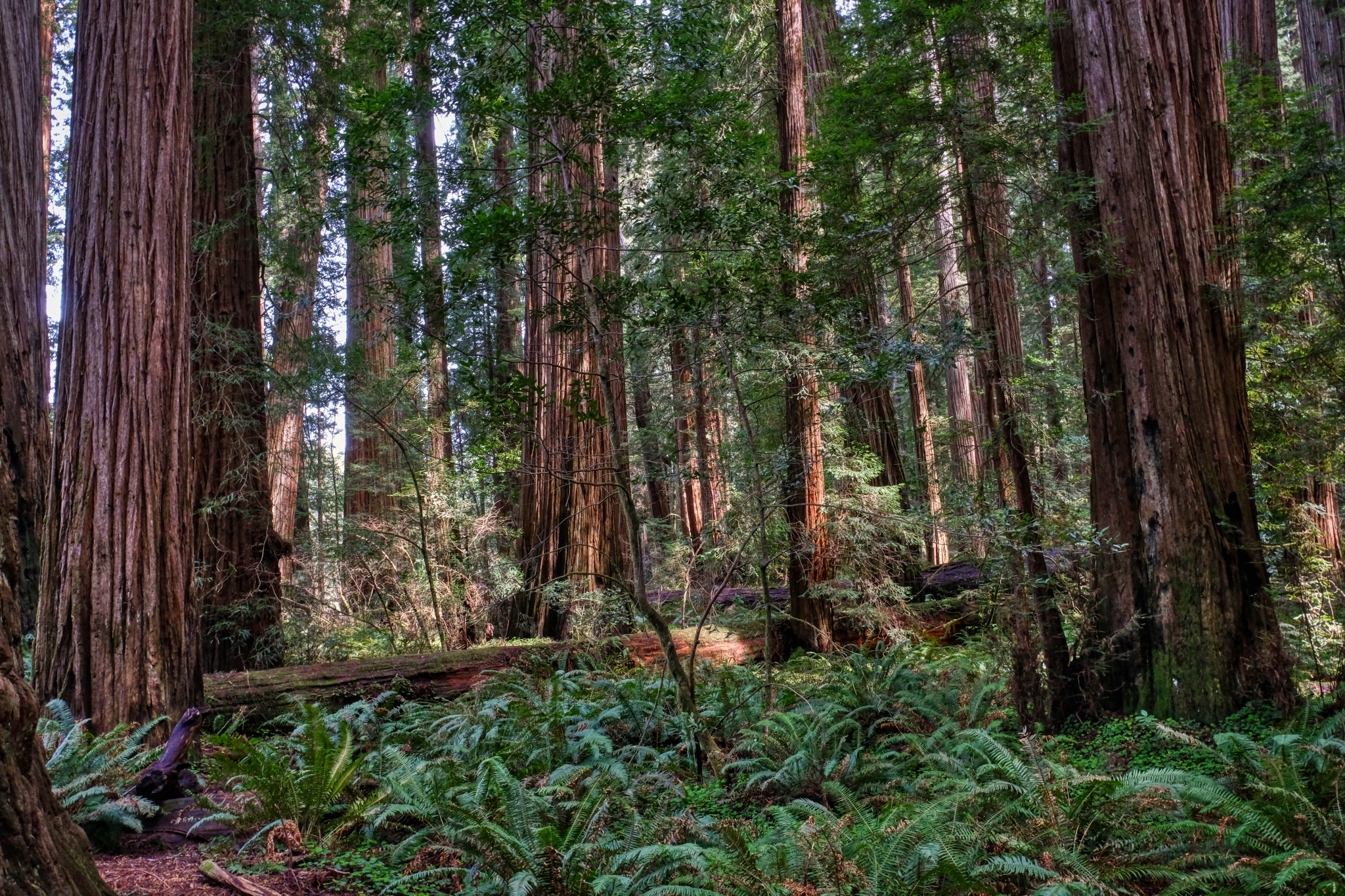 Walking in the giant redwood forest is a spiritual experience.
Walking in the giant redwood forest is a spiritual experience.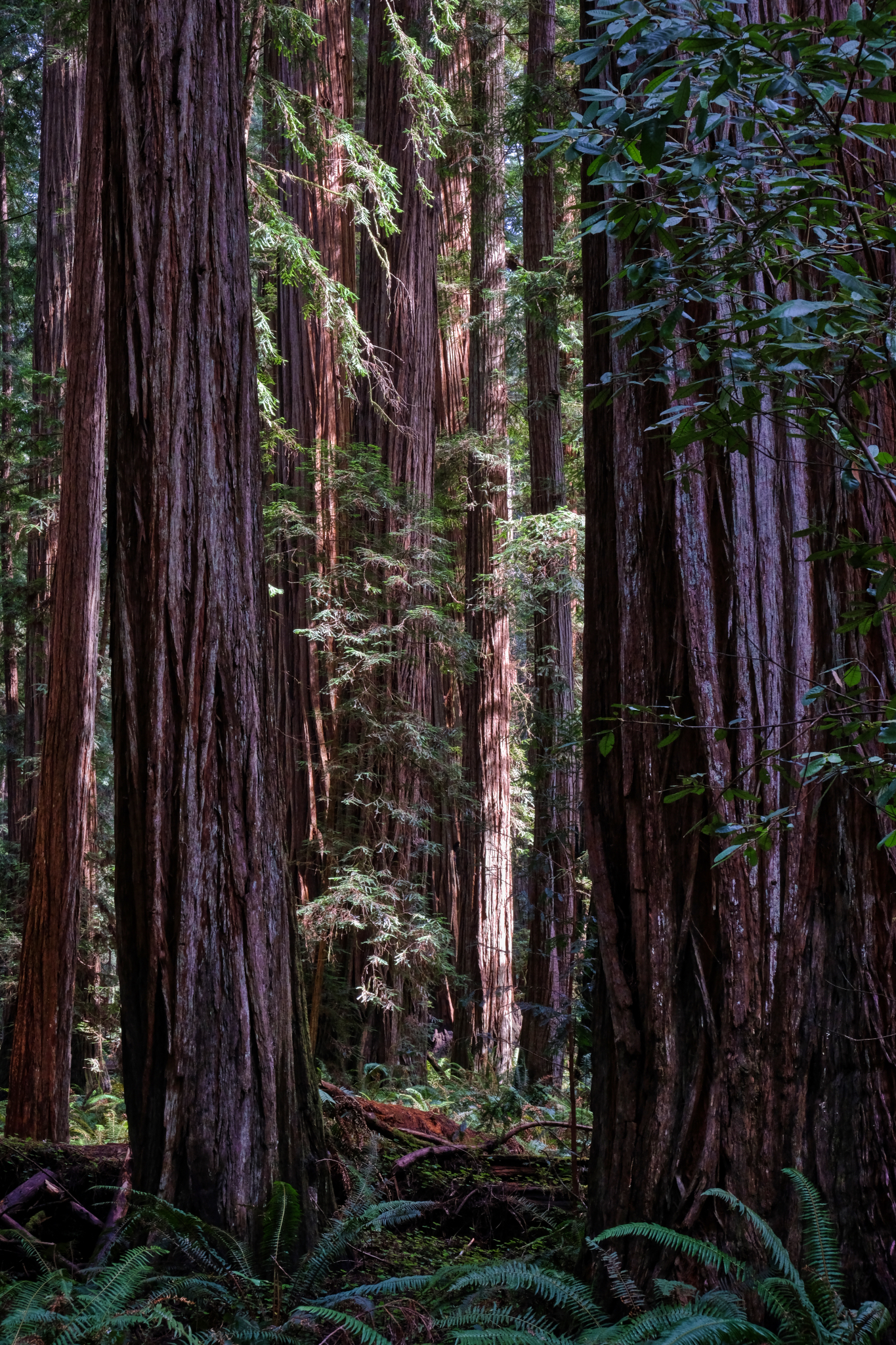 Wonderful shafts of clear, bright light illuminated the forest.
Wonderful shafts of clear, bright light illuminated the forest.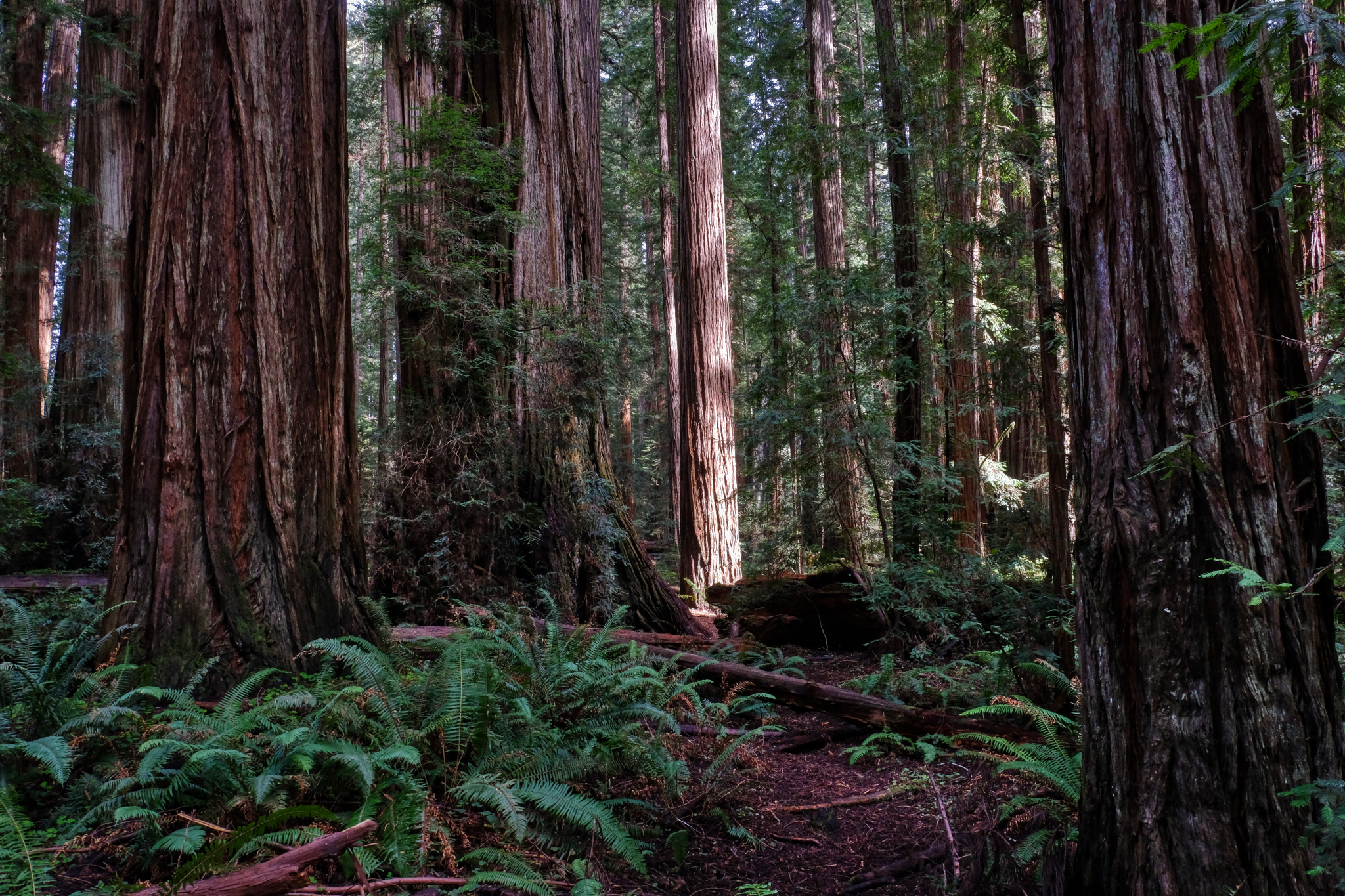 A single lit redwood in the dense forest.
A single lit redwood in the dense forest.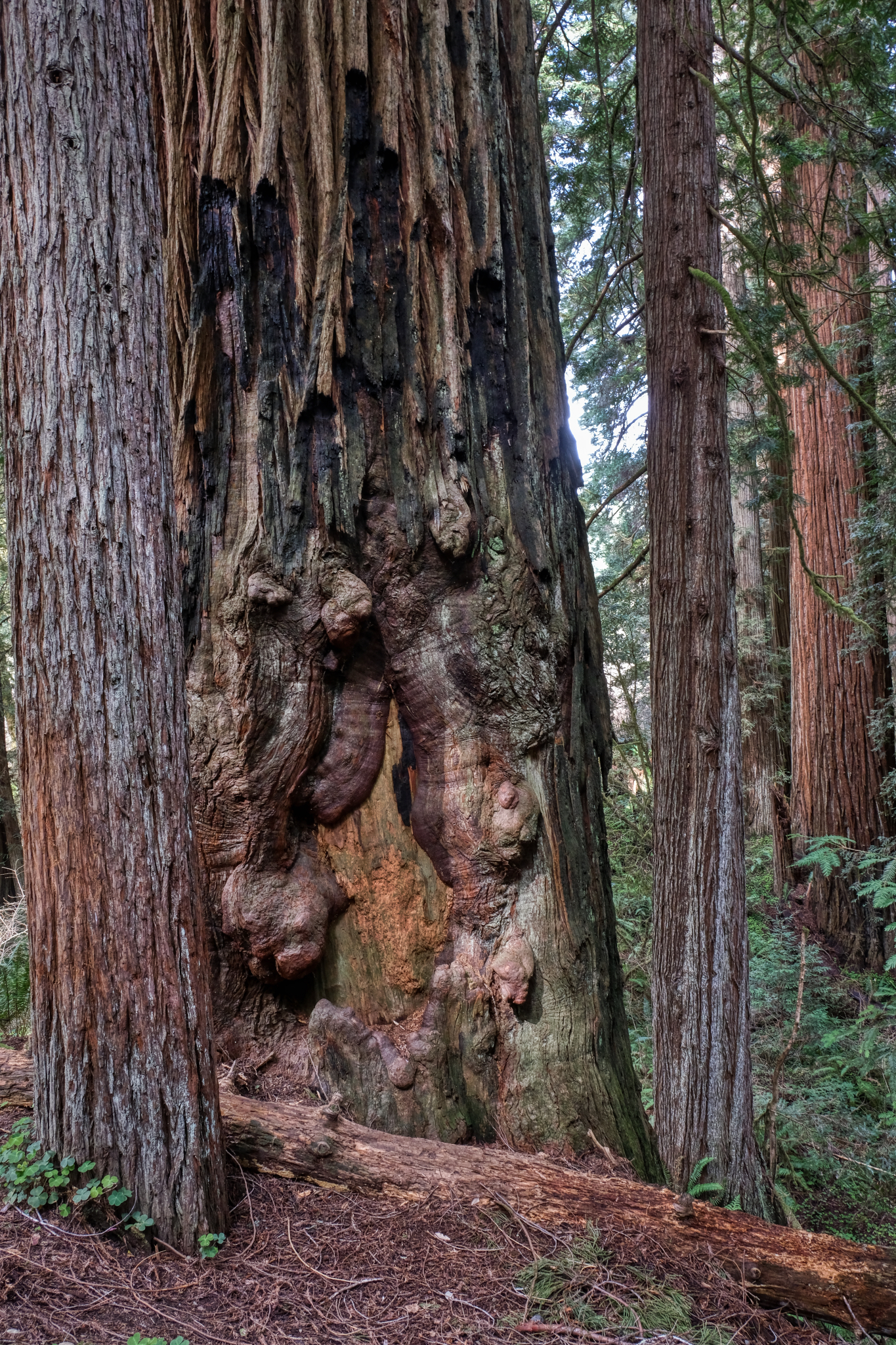 A giant redwood healing an old wound.
A giant redwood healing an old wound.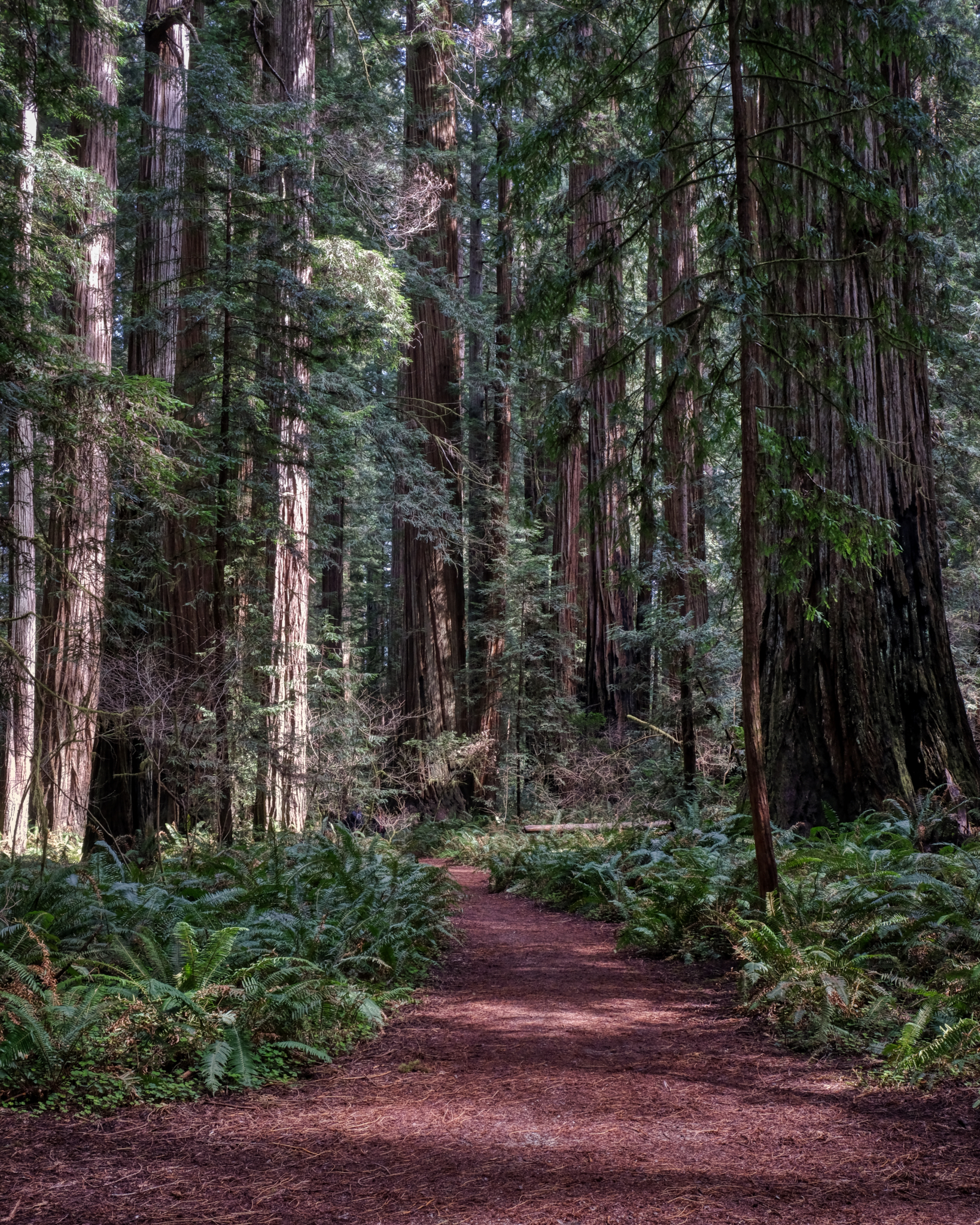 A beautiful path through a magical forest.
A beautiful path through a magical forest.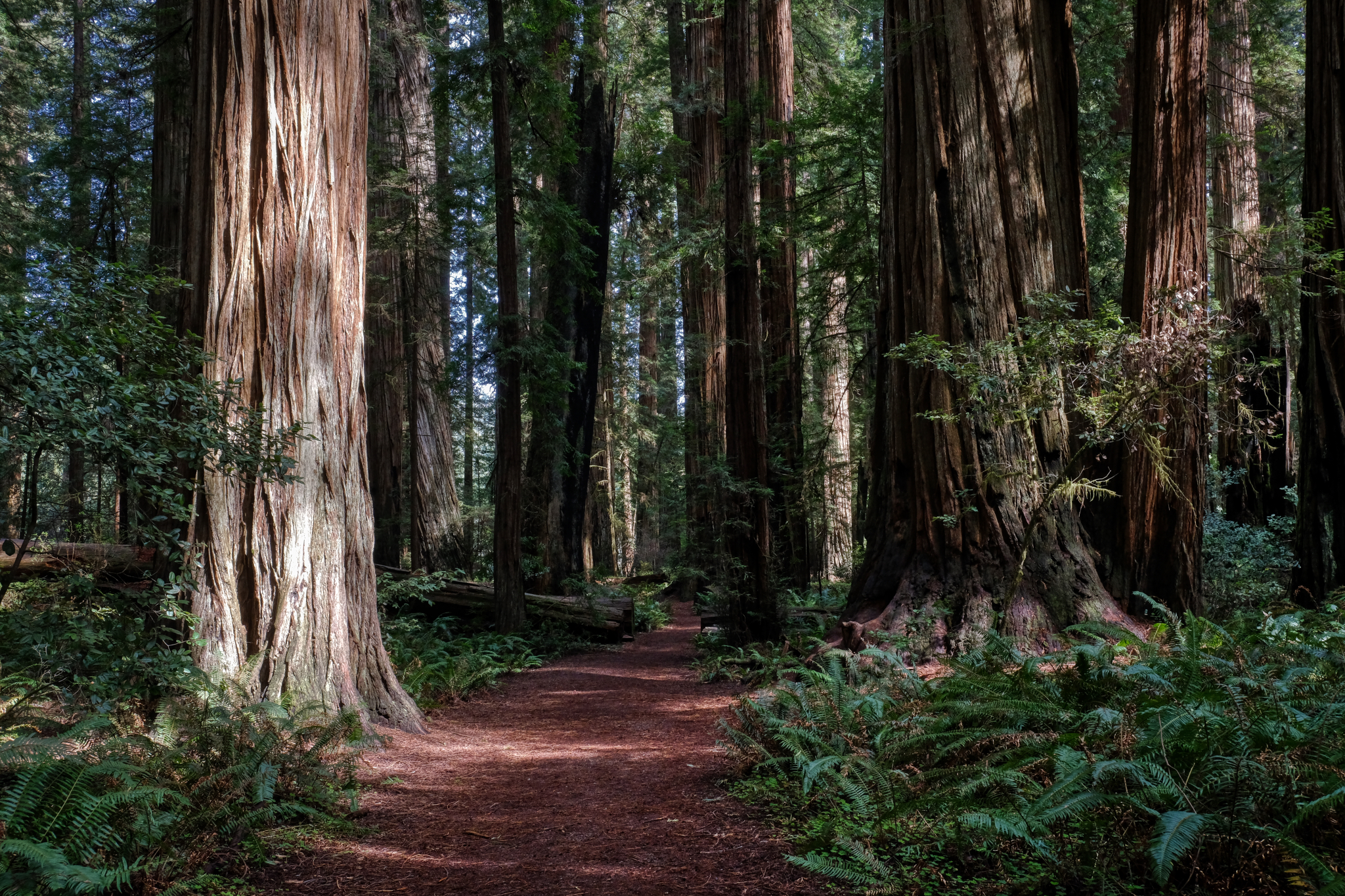 Deeper into the redwood forest.
Deeper into the redwood forest.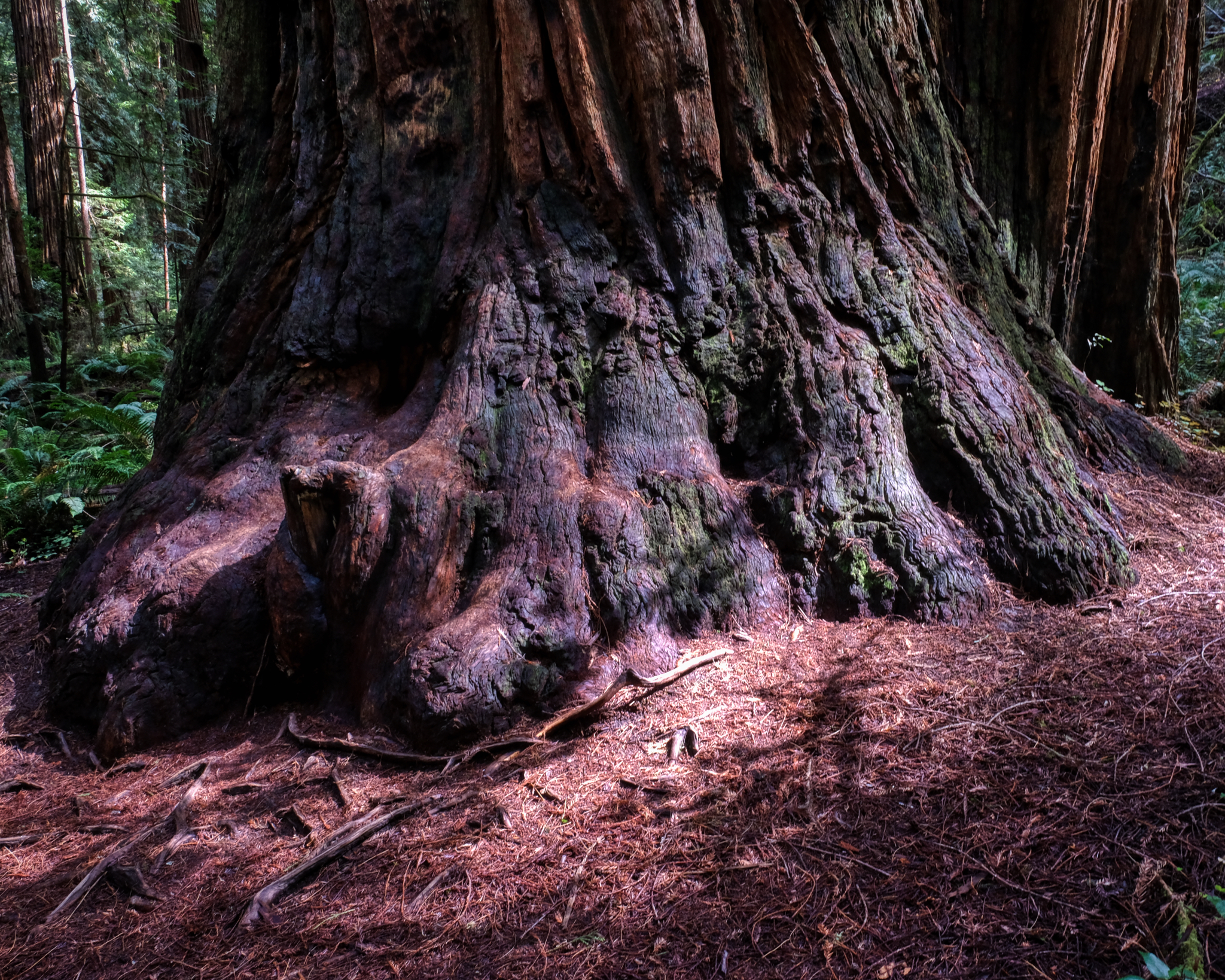 The sturdy foot of a giant redwood.
The sturdy foot of a giant redwood.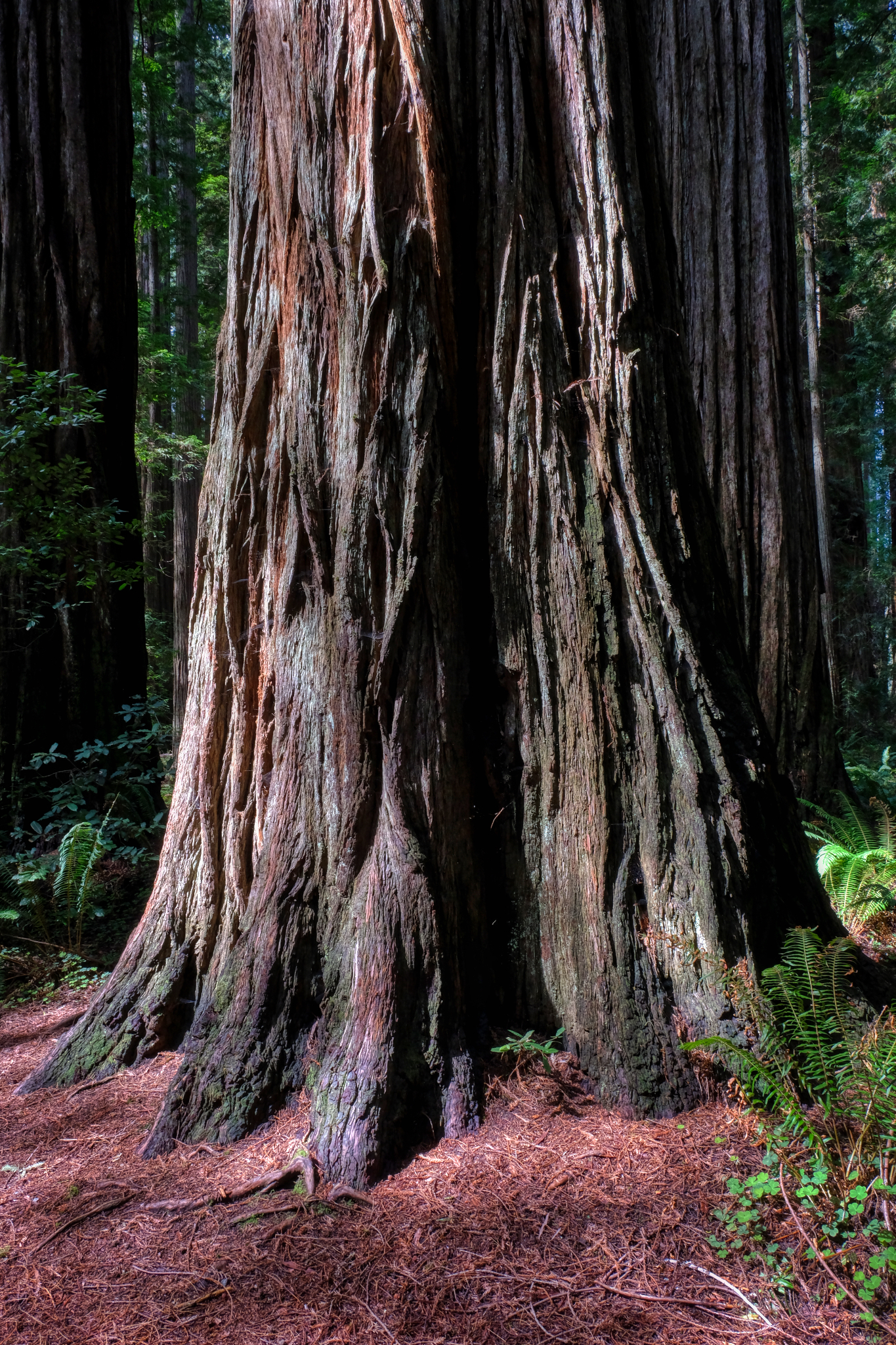 The existential redwood.
The existential redwood.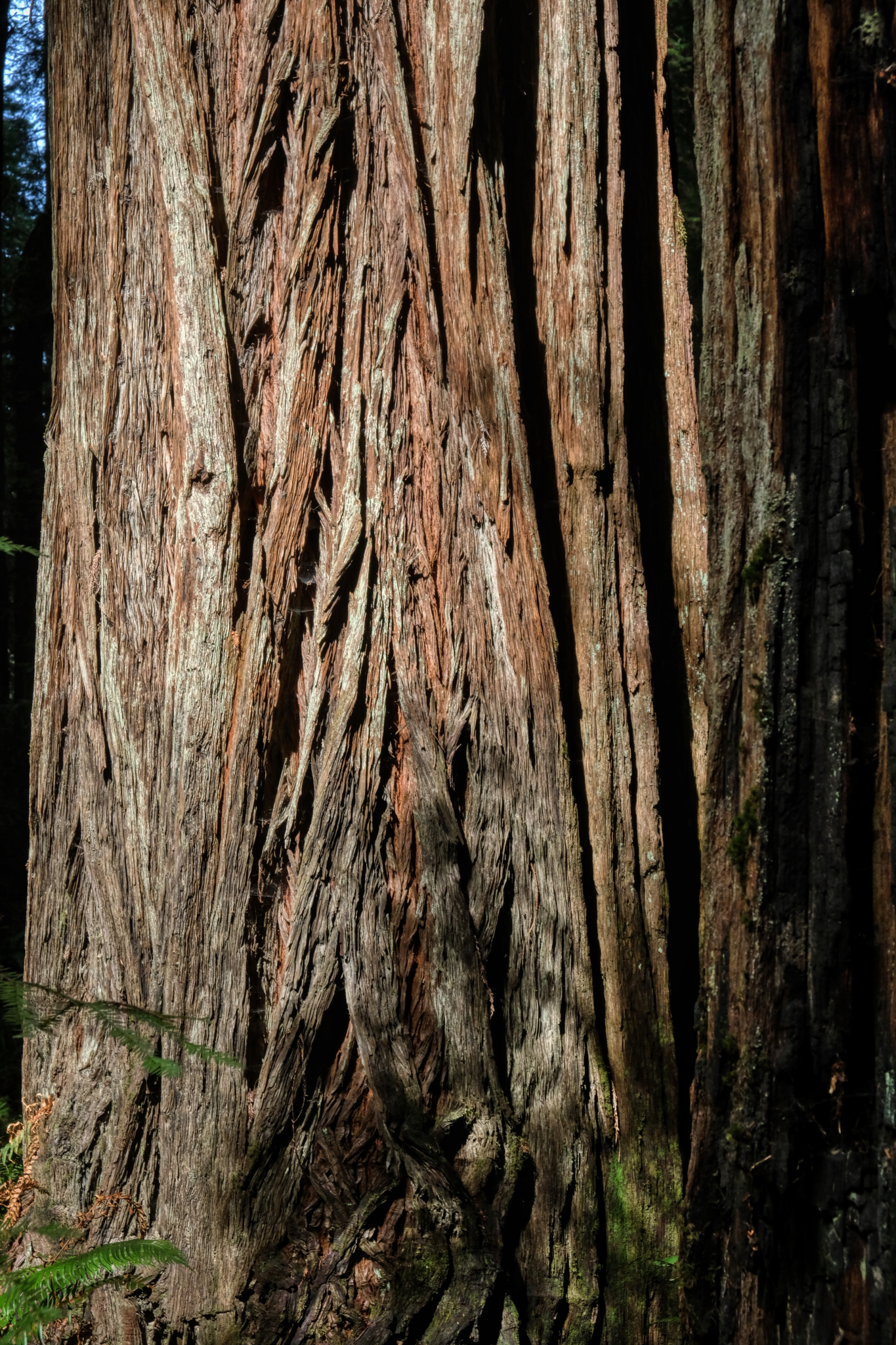 Redwood bark.
Redwood bark.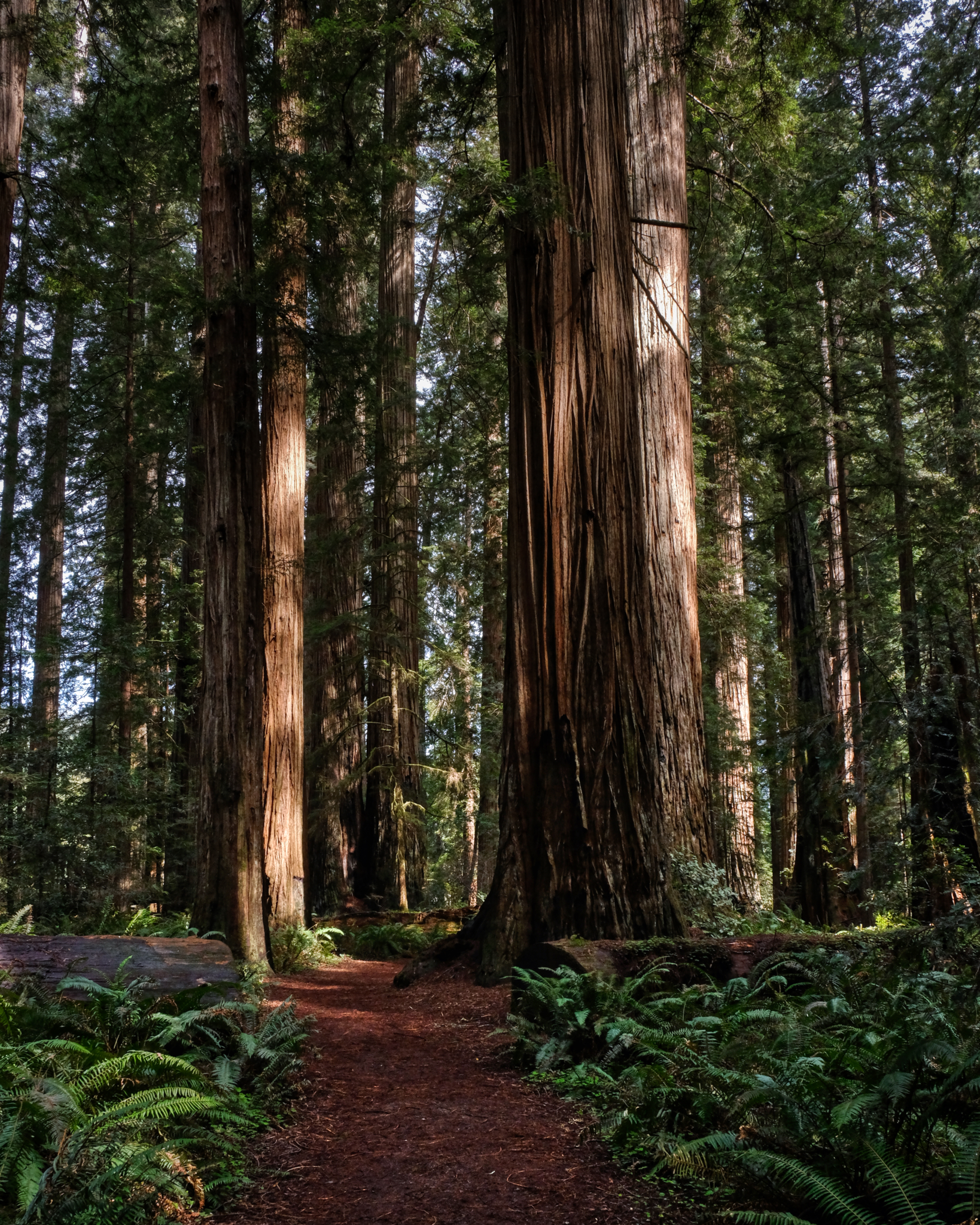 We could have stayed in these woods all day . . . but the call of a seafood dinner beckoned.
We could have stayed in these woods all day . . . but the call of a seafood dinner beckoned.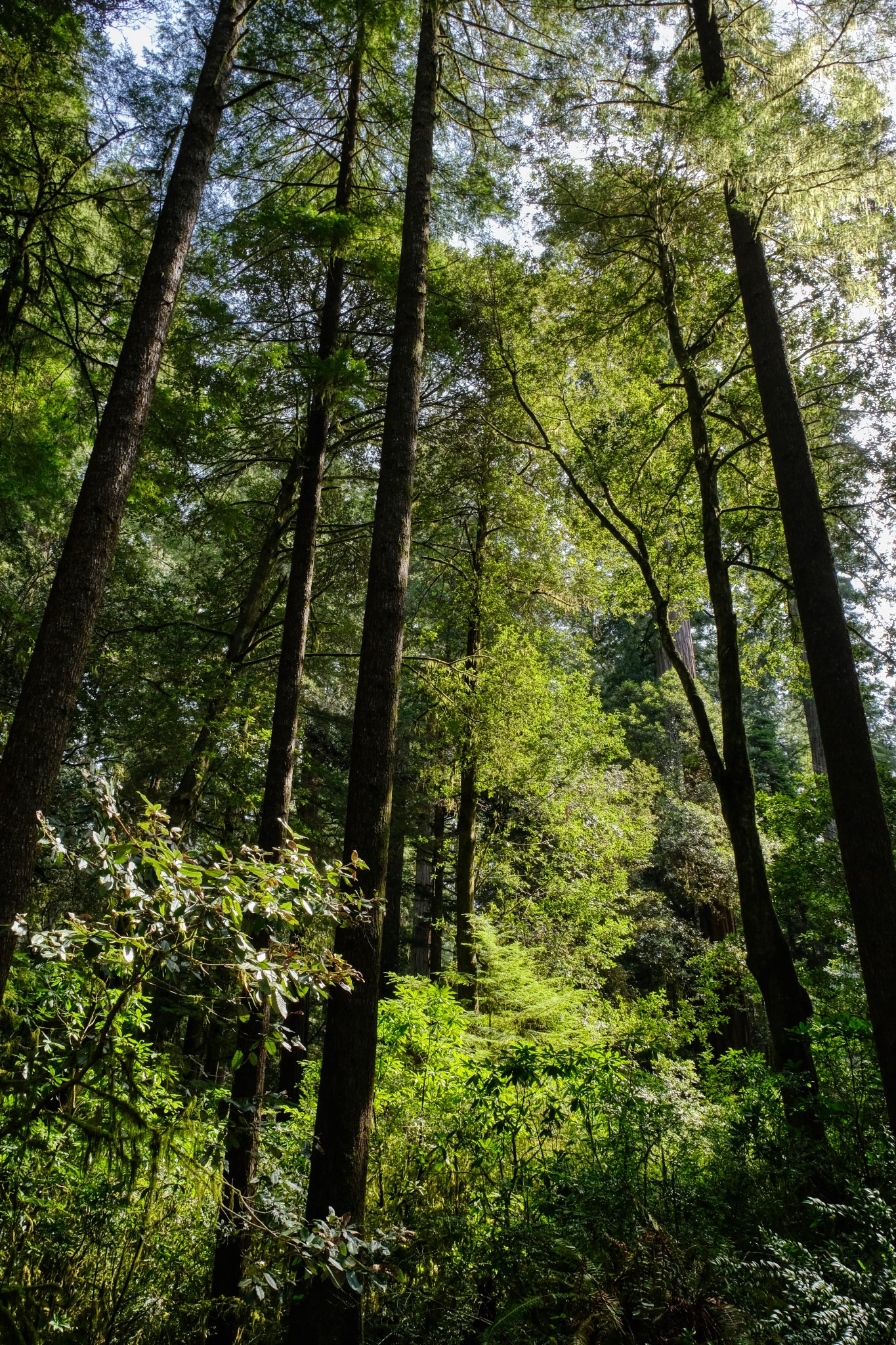 Out through the small trees to the camper . . and then, the next day, back to Keizer, Oregon on I-5.
Out through the small trees to the camper . . and then, the next day, back to Keizer, Oregon on I-5. Dr. Jeff Harper
Dr. Jeff Harper
Redwood Burls
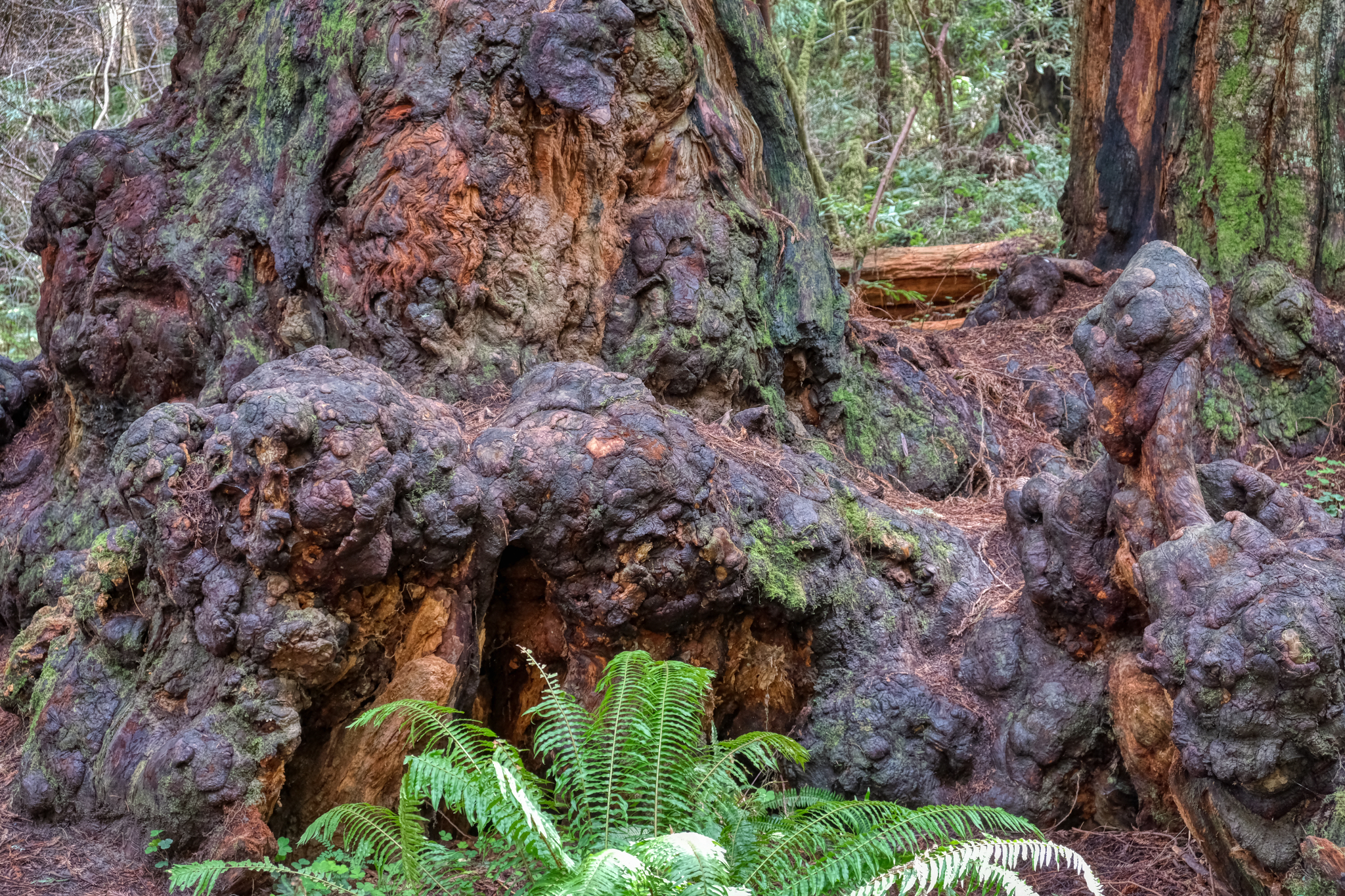 I became fascinated with the redwood burls in this forest.
I became fascinated with the redwood burls in this forest.
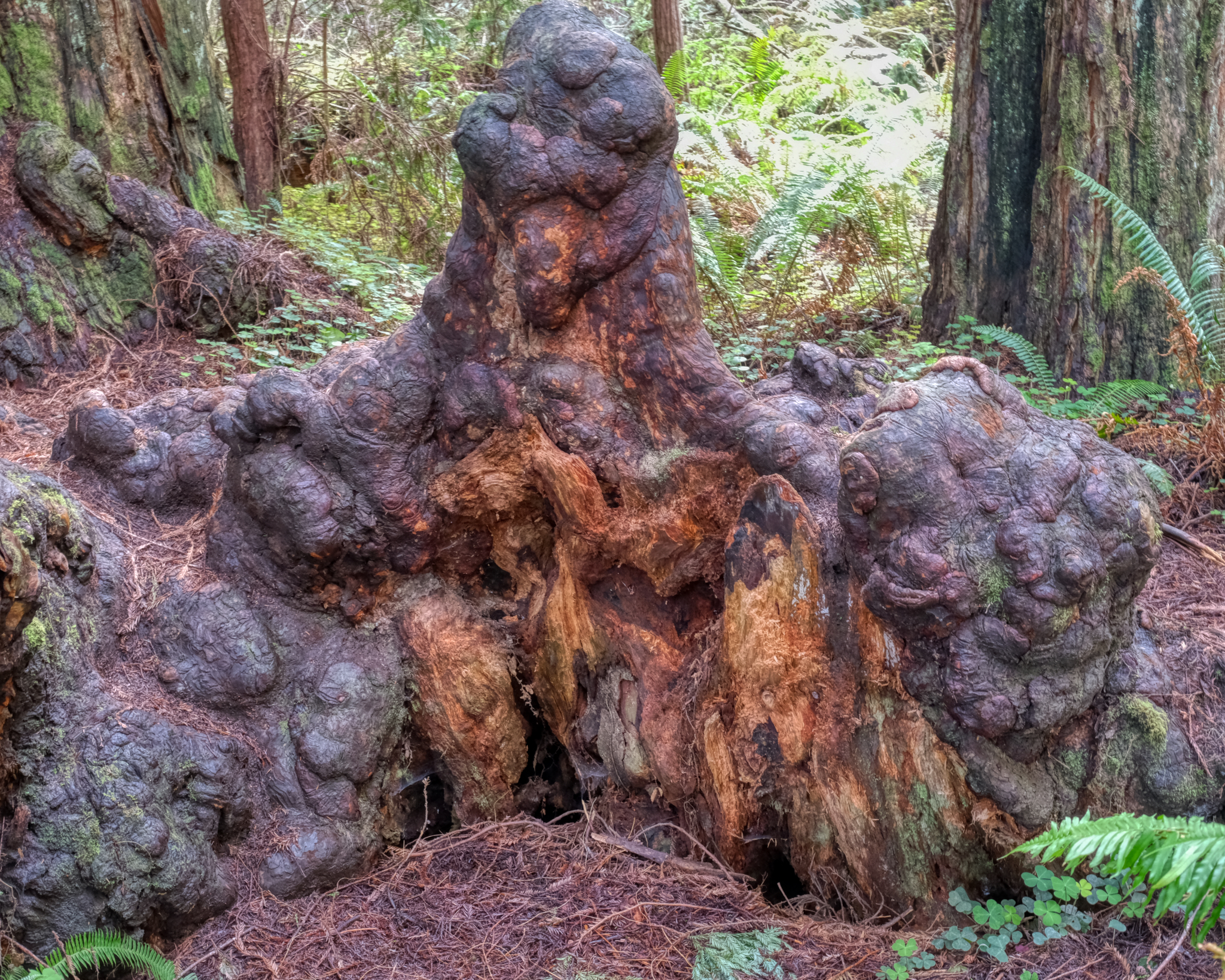 Burls are growth gone astray . . .
Burls are growth gone astray . . .
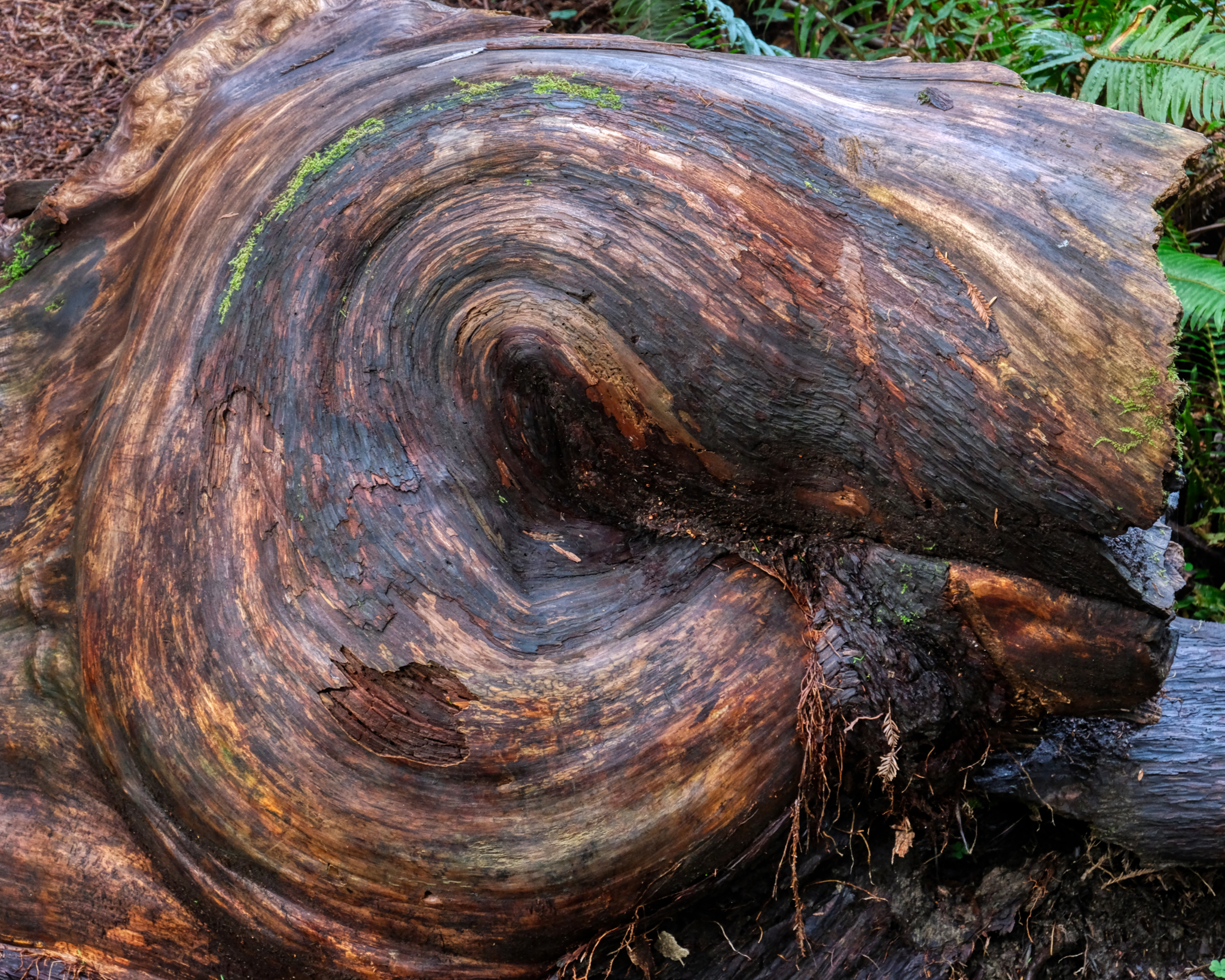 Every burl is different.
Every burl is different.
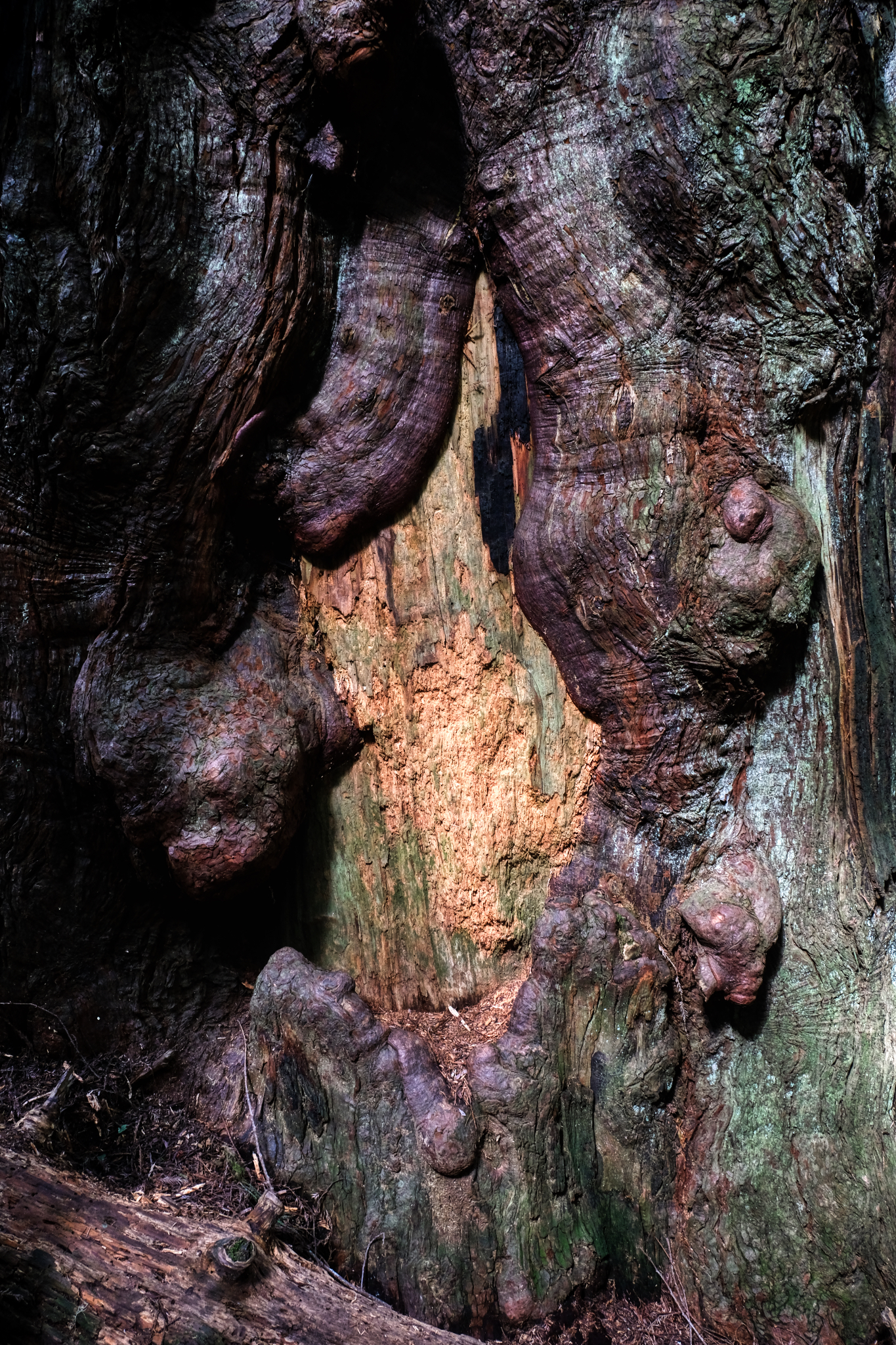 fascinating.
fascinating.
A Beach Week-End: Hua Hin, Thailand
 Wednesday, July 10, 2019 at 6:45PM
Wednesday, July 10, 2019 at 6:45PM 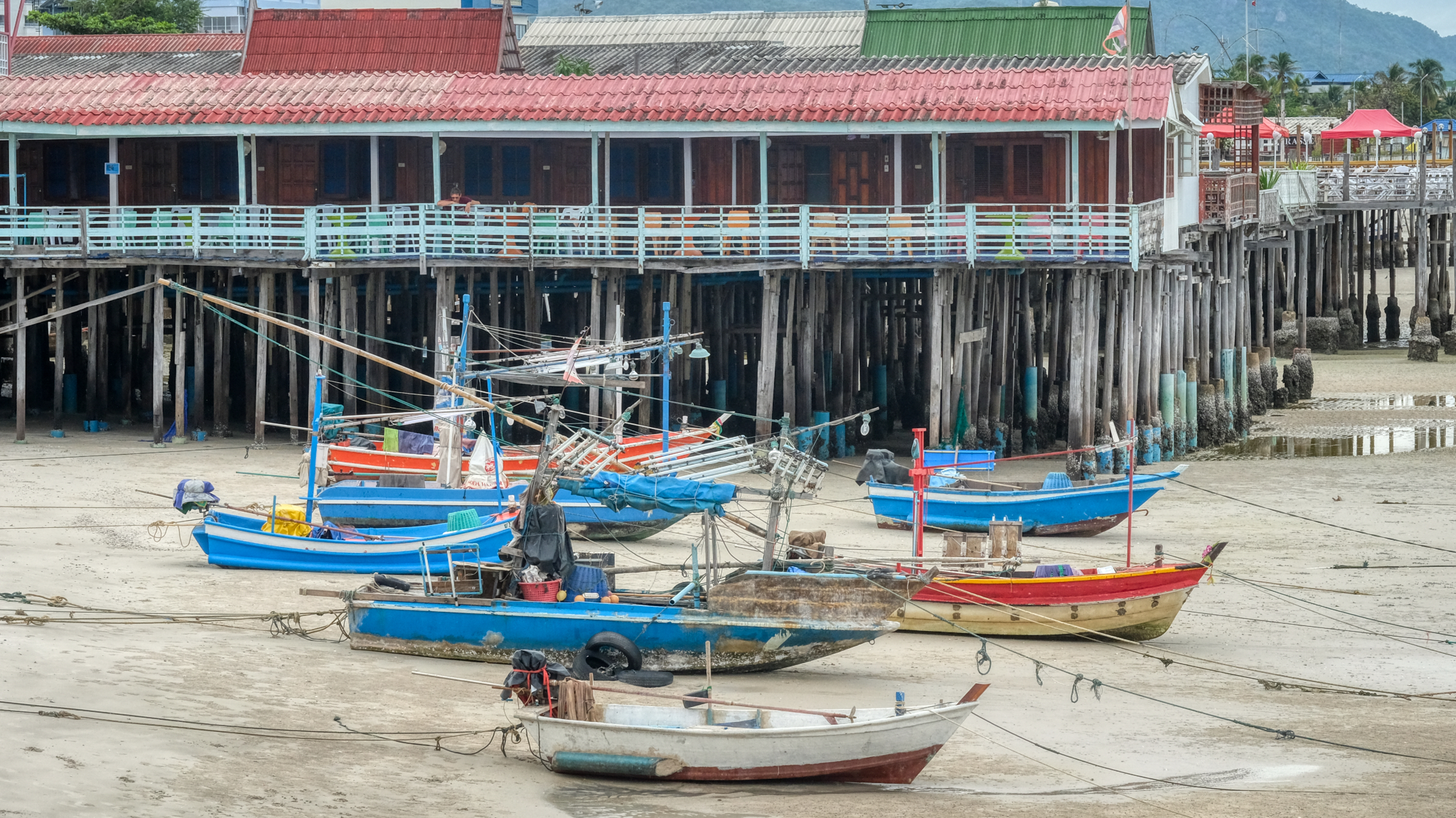 It wasn't a Thai holiday, so it was a good time to drive the 2 1/2 hours from Bangkok to the seaside town of Hua Hin.
It wasn't a Thai holiday, so it was a good time to drive the 2 1/2 hours from Bangkok to the seaside town of Hua Hin.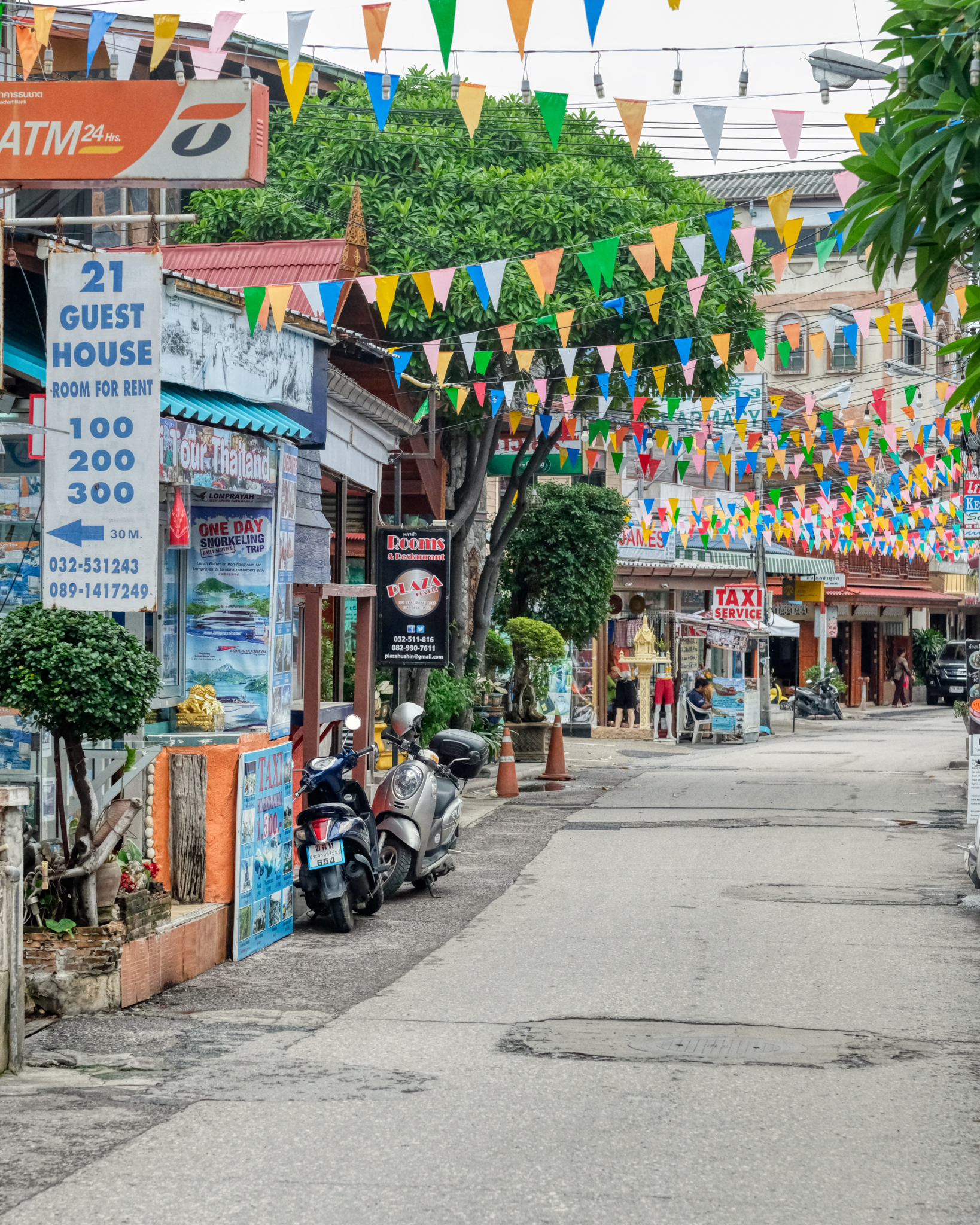 Hua Hin is a sweet little seaside town with just enough tourism to have a variety of restaurants and shops of interest. We are here in the Not The Tourist Season. It is growing fast.
Hua Hin is a sweet little seaside town with just enough tourism to have a variety of restaurants and shops of interest. We are here in the Not The Tourist Season. It is growing fast.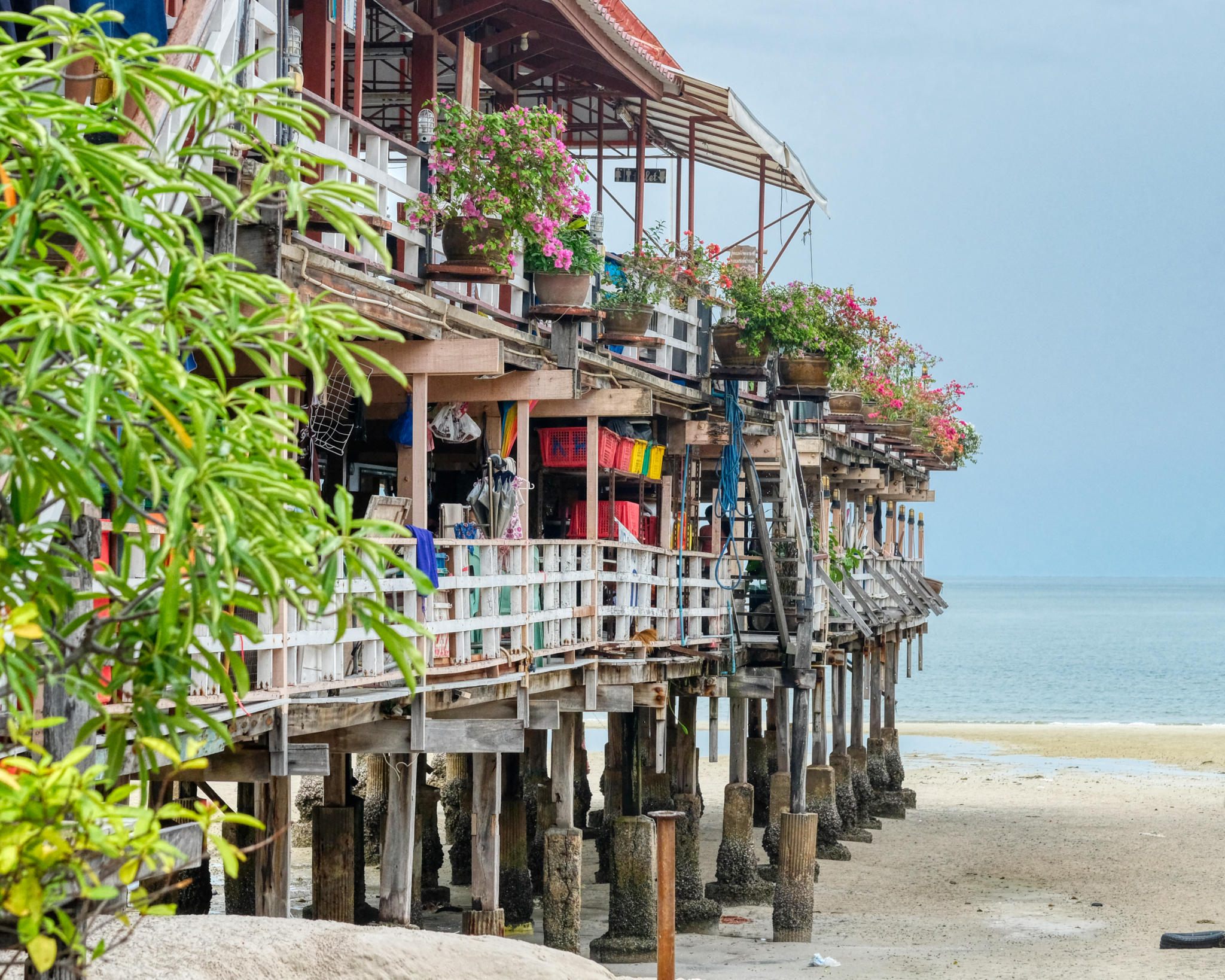 There are interesting seafood restaurents built on piers over the Gulf of Thailand.
There are interesting seafood restaurents built on piers over the Gulf of Thailand.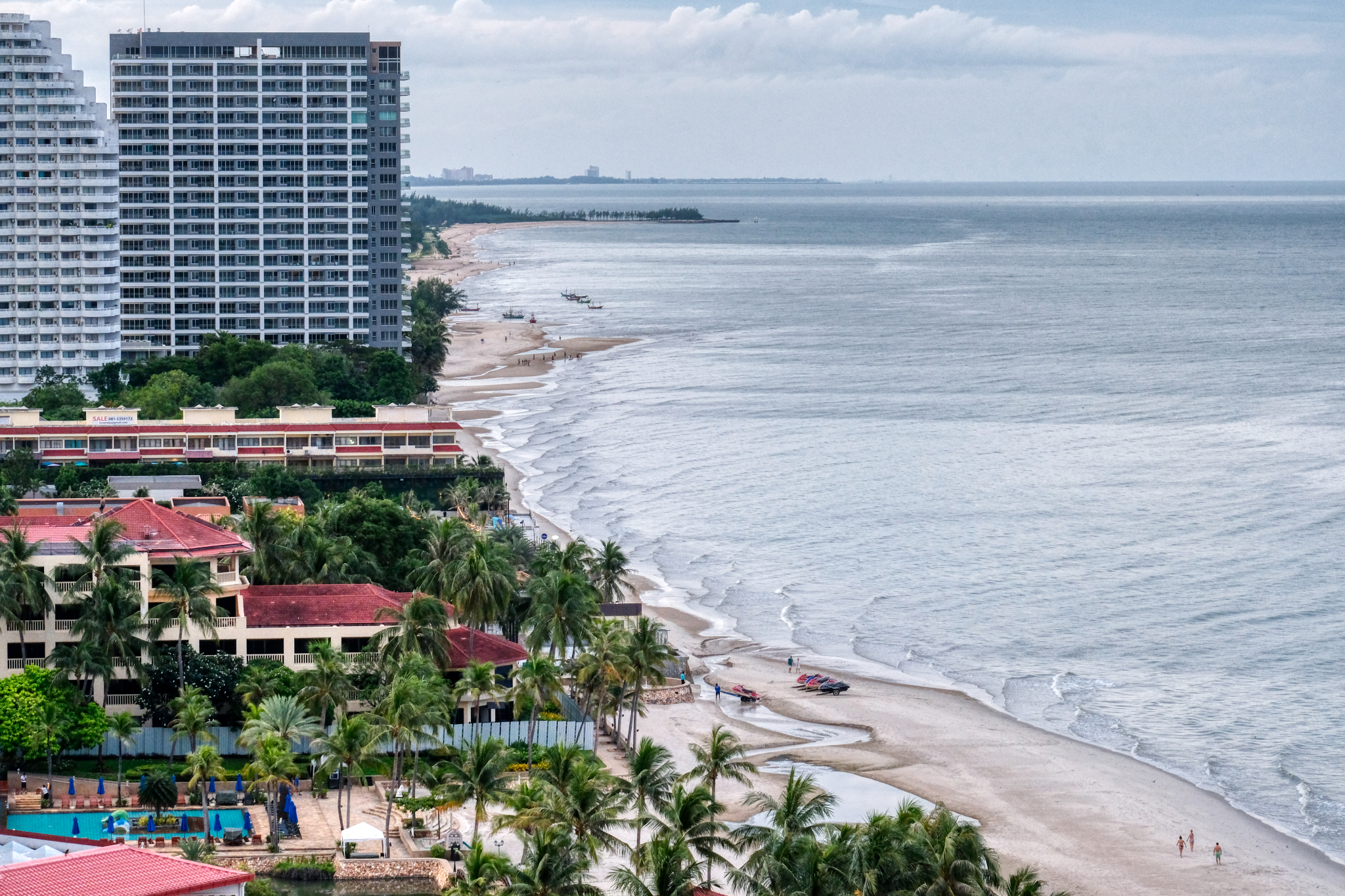 There are a number of large hotels and beach front condominiums along this part of the coast.
There are a number of large hotels and beach front condominiums along this part of the coast.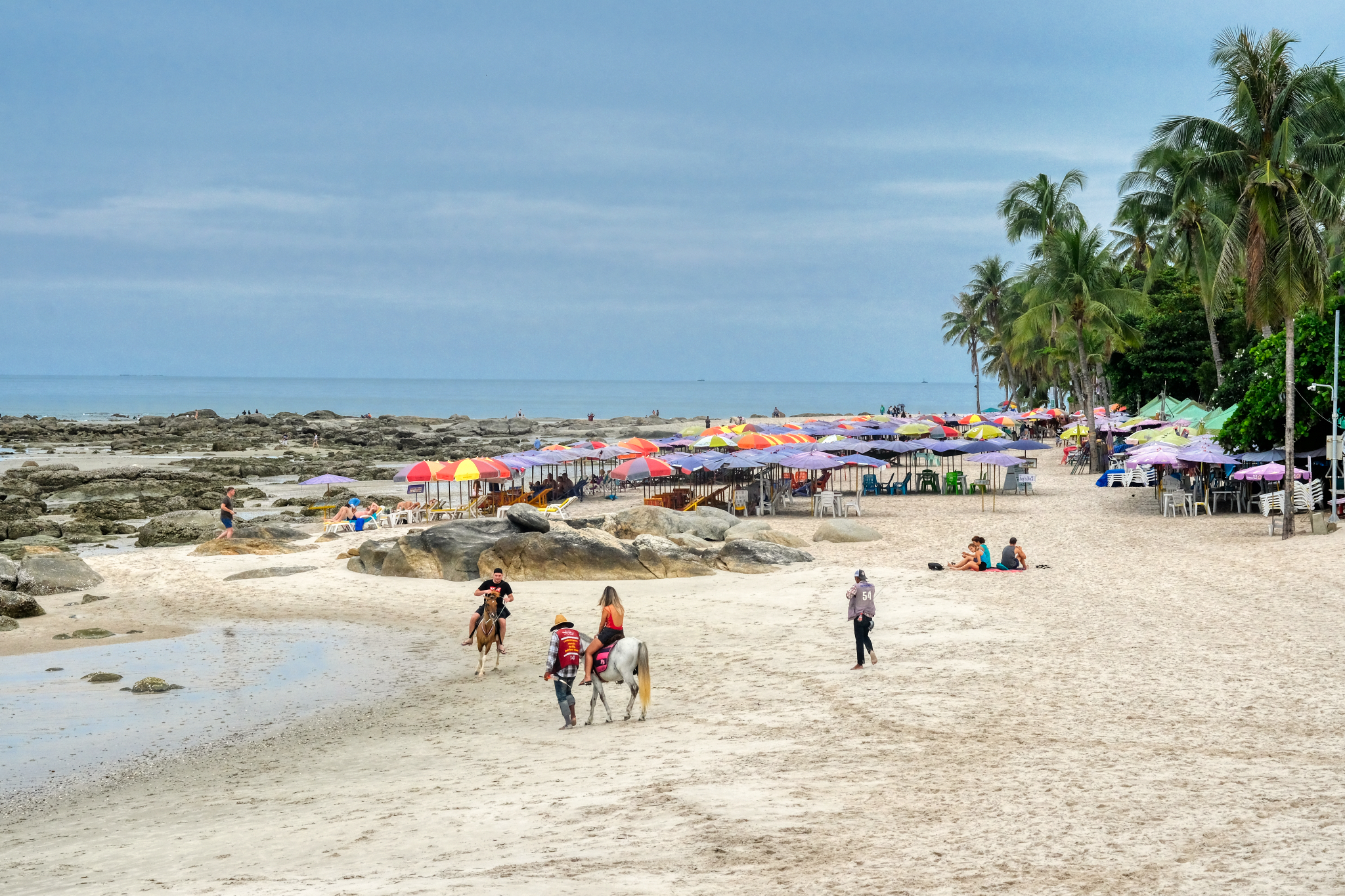 There was a surprising lack of tourists at the hotel beach areas. The weather was fine . . . there were occasional afternoon tropical showers to keep the temperature down.
There was a surprising lack of tourists at the hotel beach areas. The weather was fine . . . there were occasional afternoon tropical showers to keep the temperature down.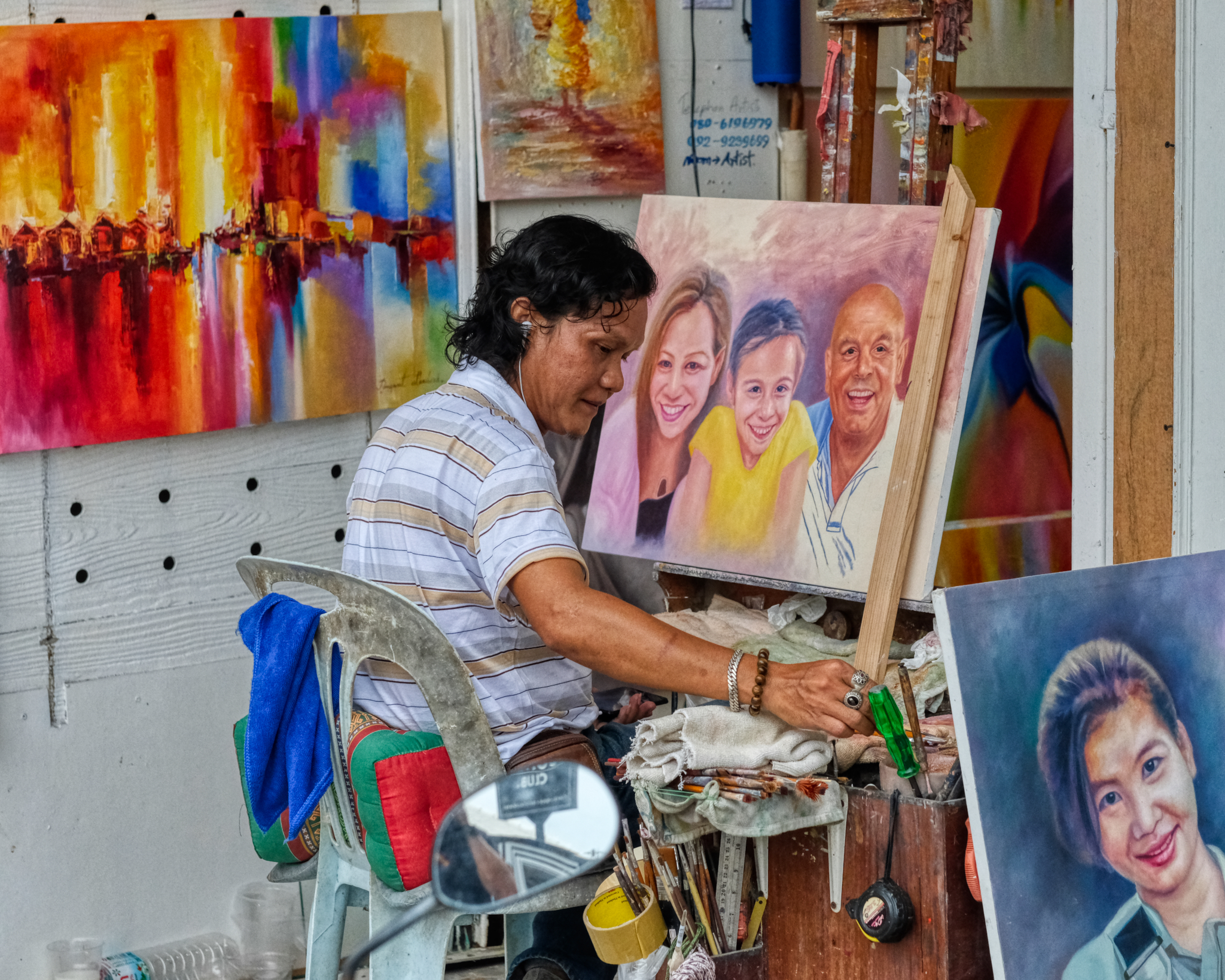 This artist serves the tourist trade by making family portraits from photos from iPhones.
This artist serves the tourist trade by making family portraits from photos from iPhones. Hua Hin is a nice place to stroll around in to sample the wonderful Thai treats . . .
Hua Hin is a nice place to stroll around in to sample the wonderful Thai treats . . . 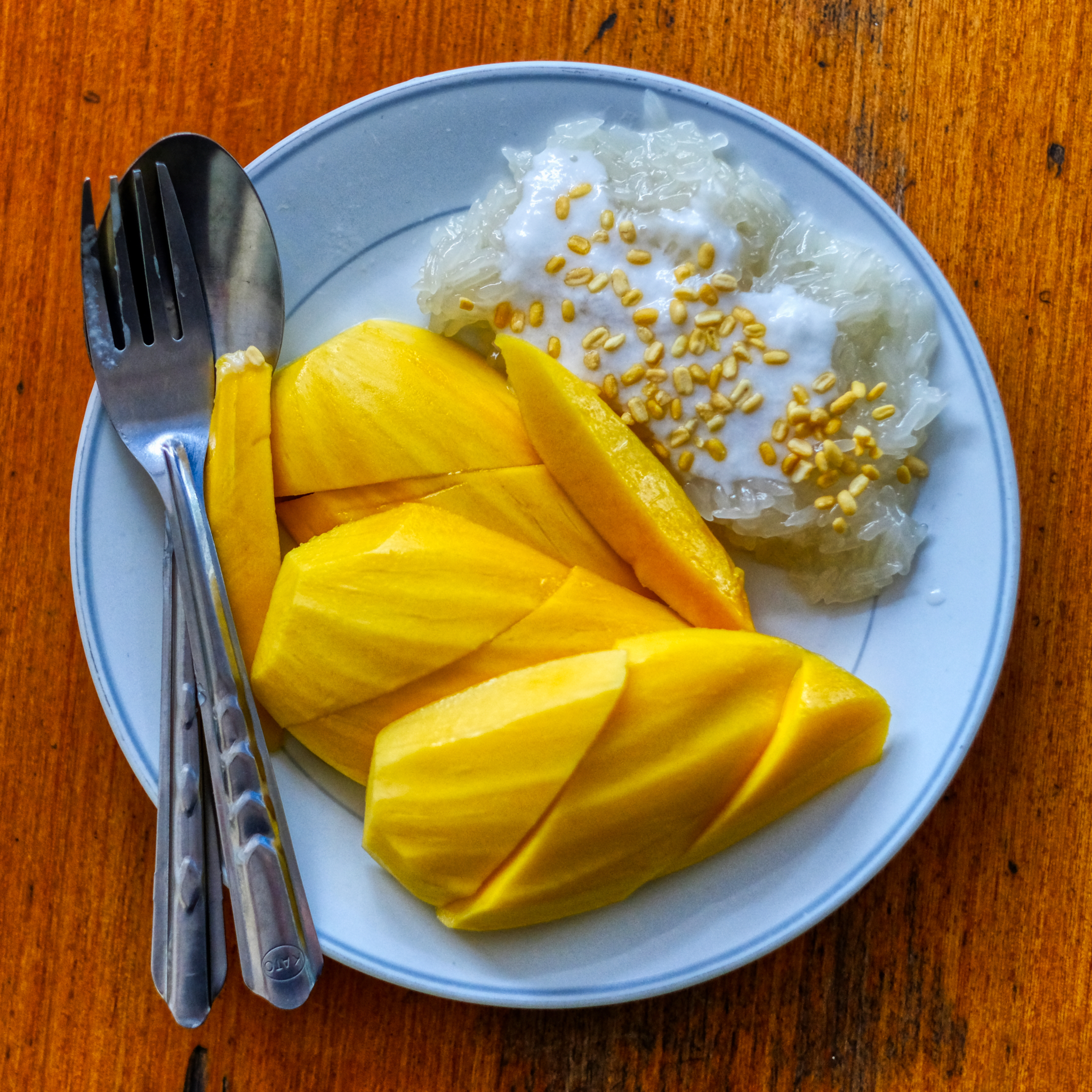 . . . like sticky rice and mangoes. The best dessert on earth (in my estimation).
. . . like sticky rice and mangoes. The best dessert on earth (in my estimation).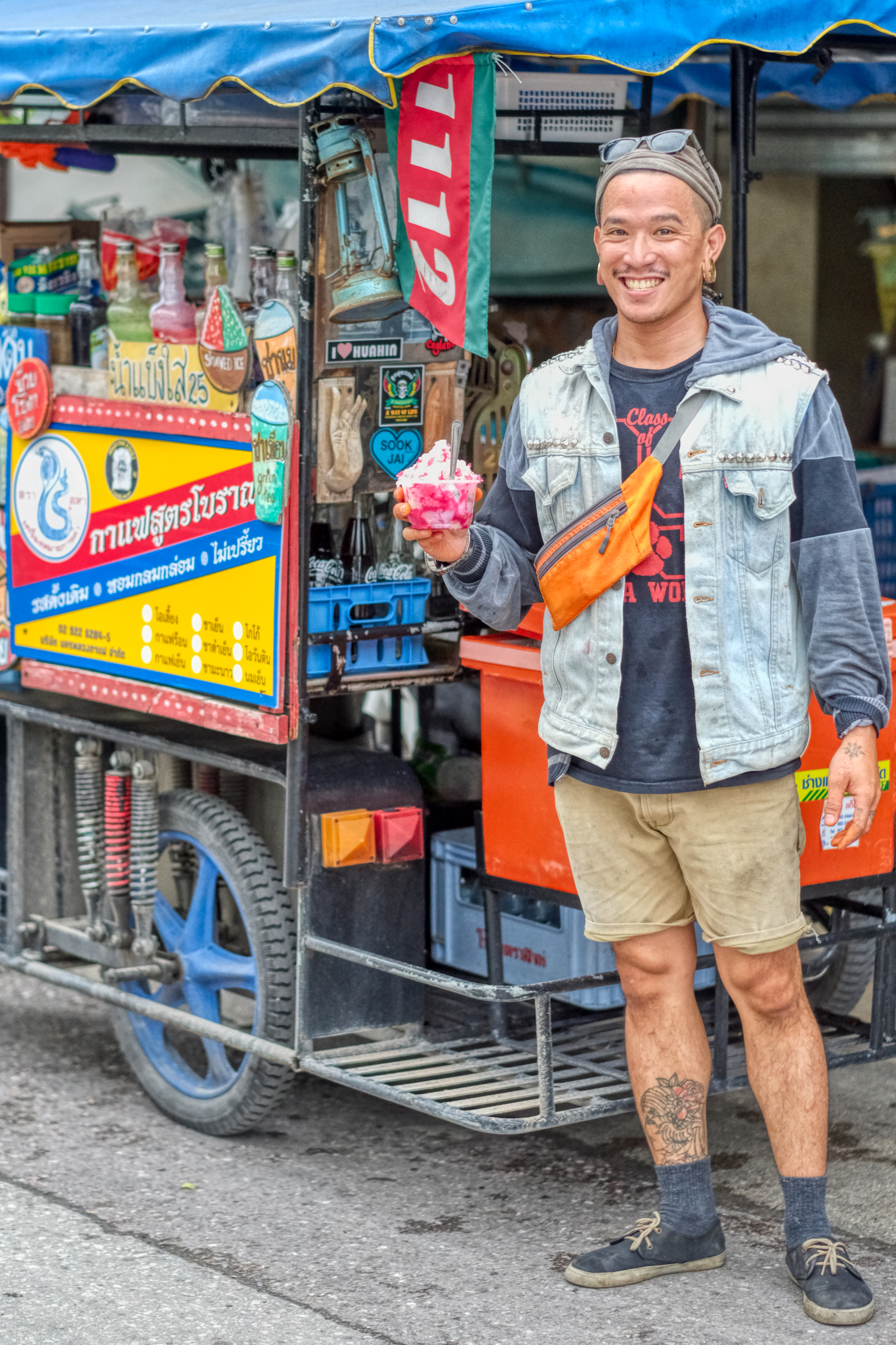 You never know who you will run into. This young man lived in Los Angeles, California for many years before deciding he had a better life in Thailand as a street cart barista. "You don't know the difference until you lived somewhere else. I love my life in Thailand."
You never know who you will run into. This young man lived in Los Angeles, California for many years before deciding he had a better life in Thailand as a street cart barista. "You don't know the difference until you lived somewhere else. I love my life in Thailand."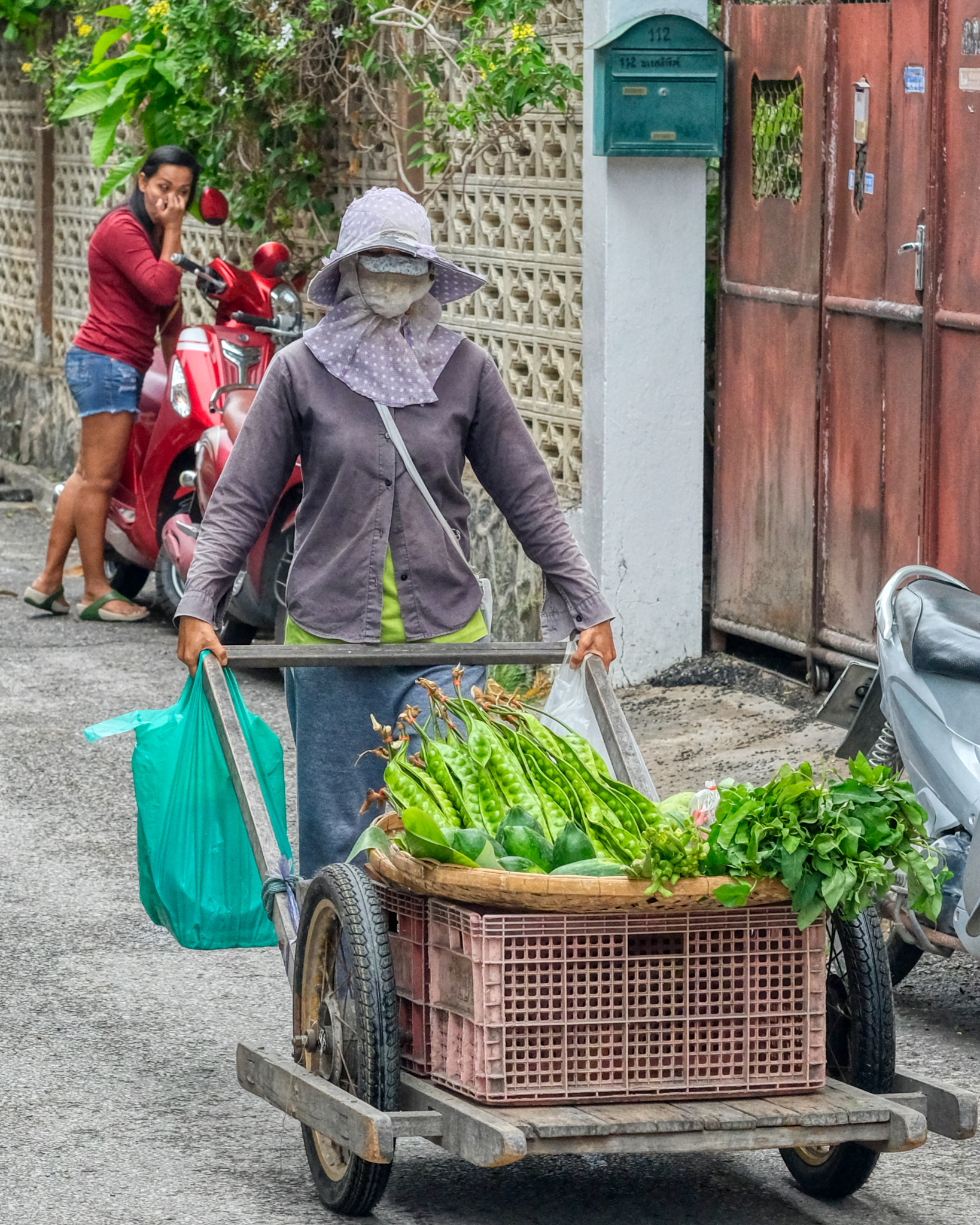 Making a living selling vegetables door to door in Hua Hin.
Making a living selling vegetables door to door in Hua Hin.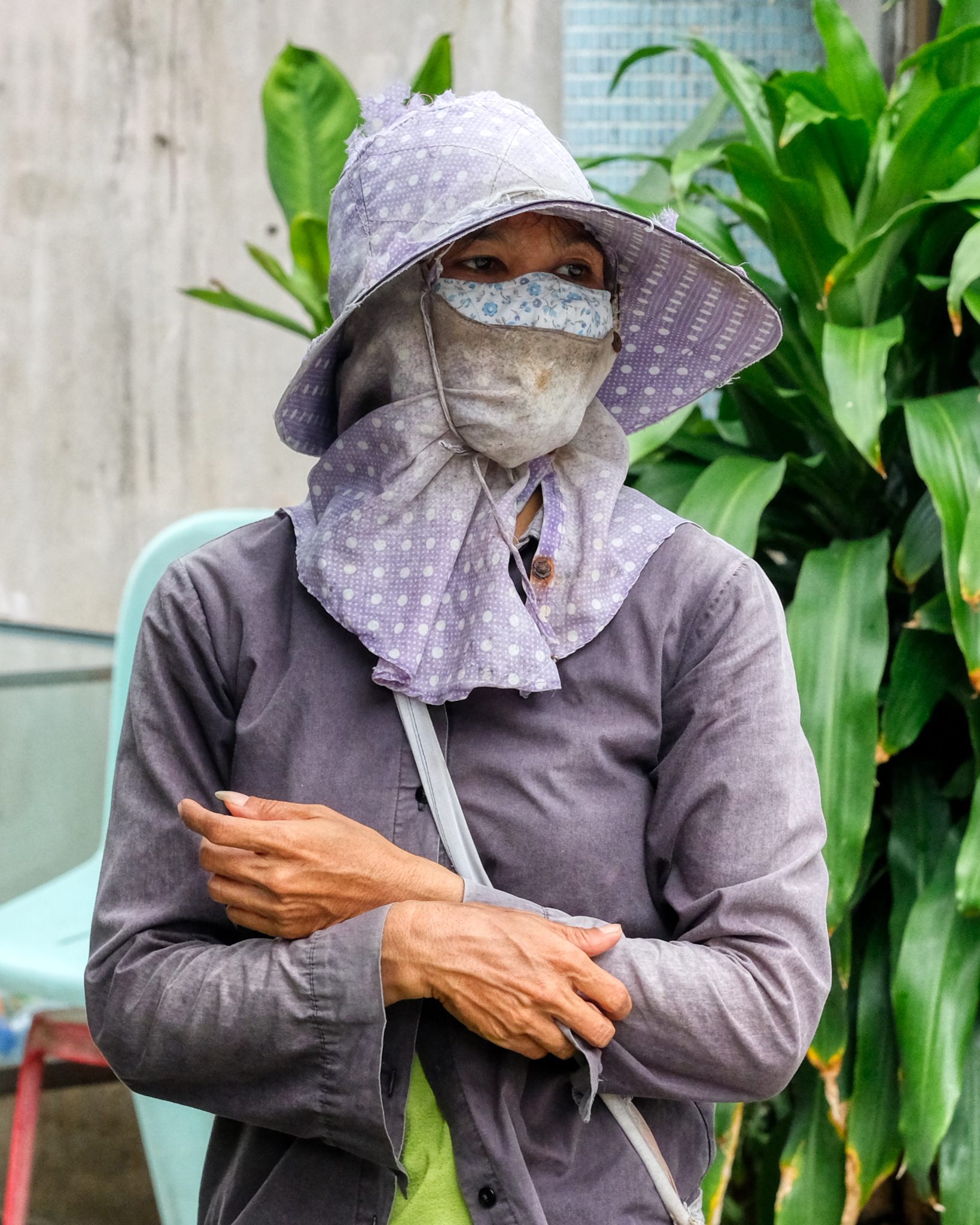 People who work outside in the sunshine often completely cover themselves from head to toe.
People who work outside in the sunshine often completely cover themselves from head to toe.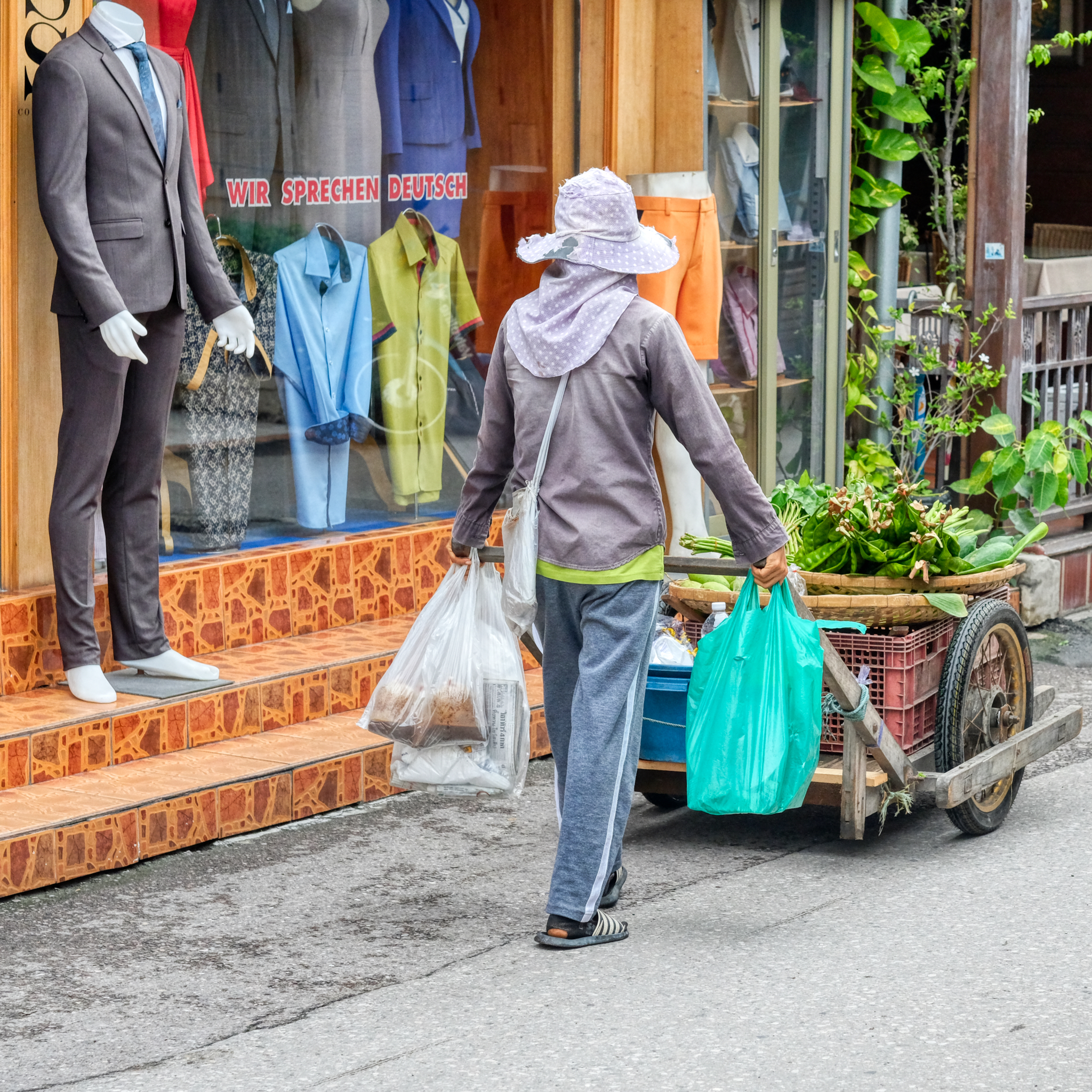 It looks like she has dome a little grocery shopping for herself as well . . .
It looks like she has dome a little grocery shopping for herself as well . . .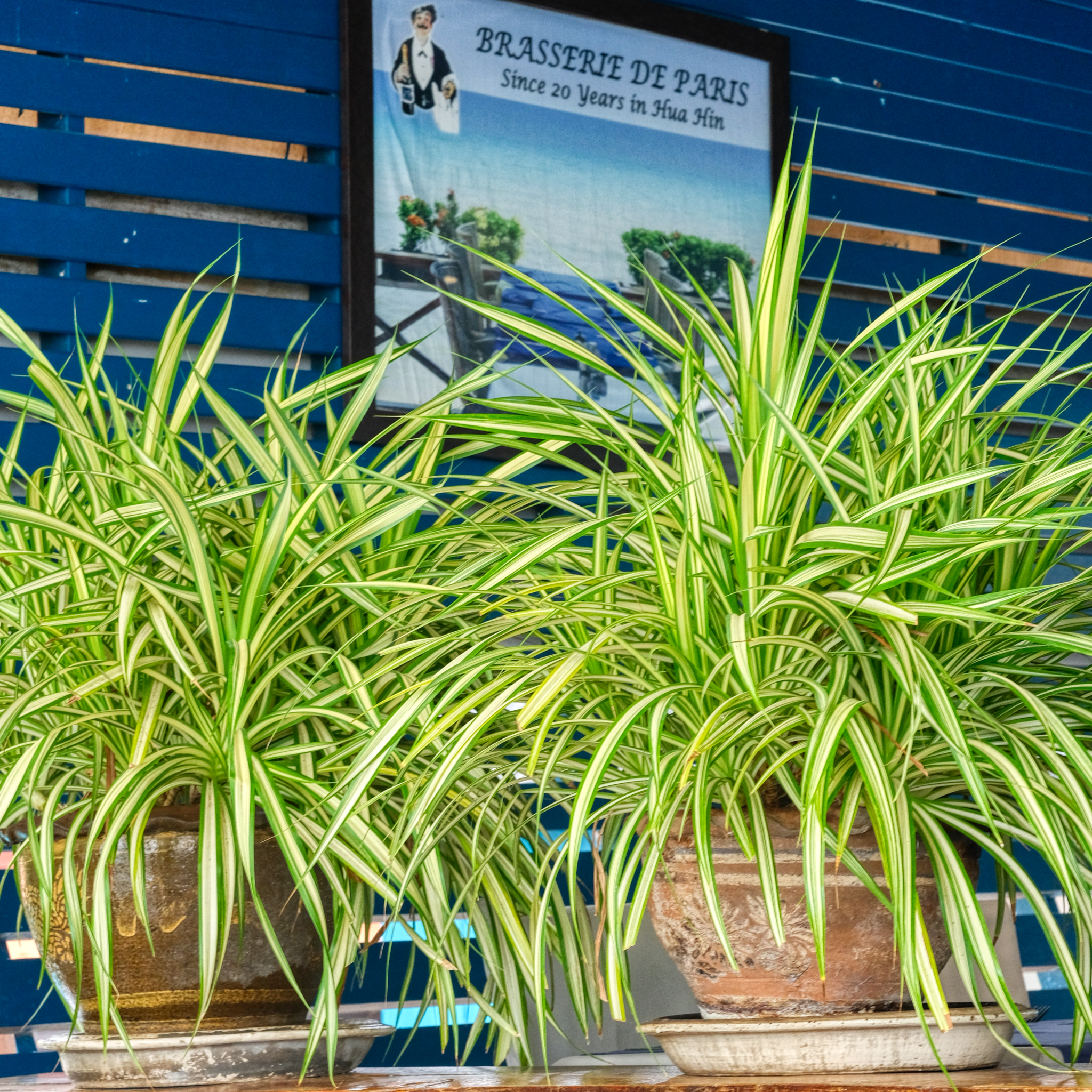 Hua Hin sees many new European retirees every year. In this case, a Frenchman came to Hua Hin 25 years ago and opened up this beach side French restaurant. It serves delicious food. Real French food.
Hua Hin sees many new European retirees every year. In this case, a Frenchman came to Hua Hin 25 years ago and opened up this beach side French restaurant. It serves delicious food. Real French food.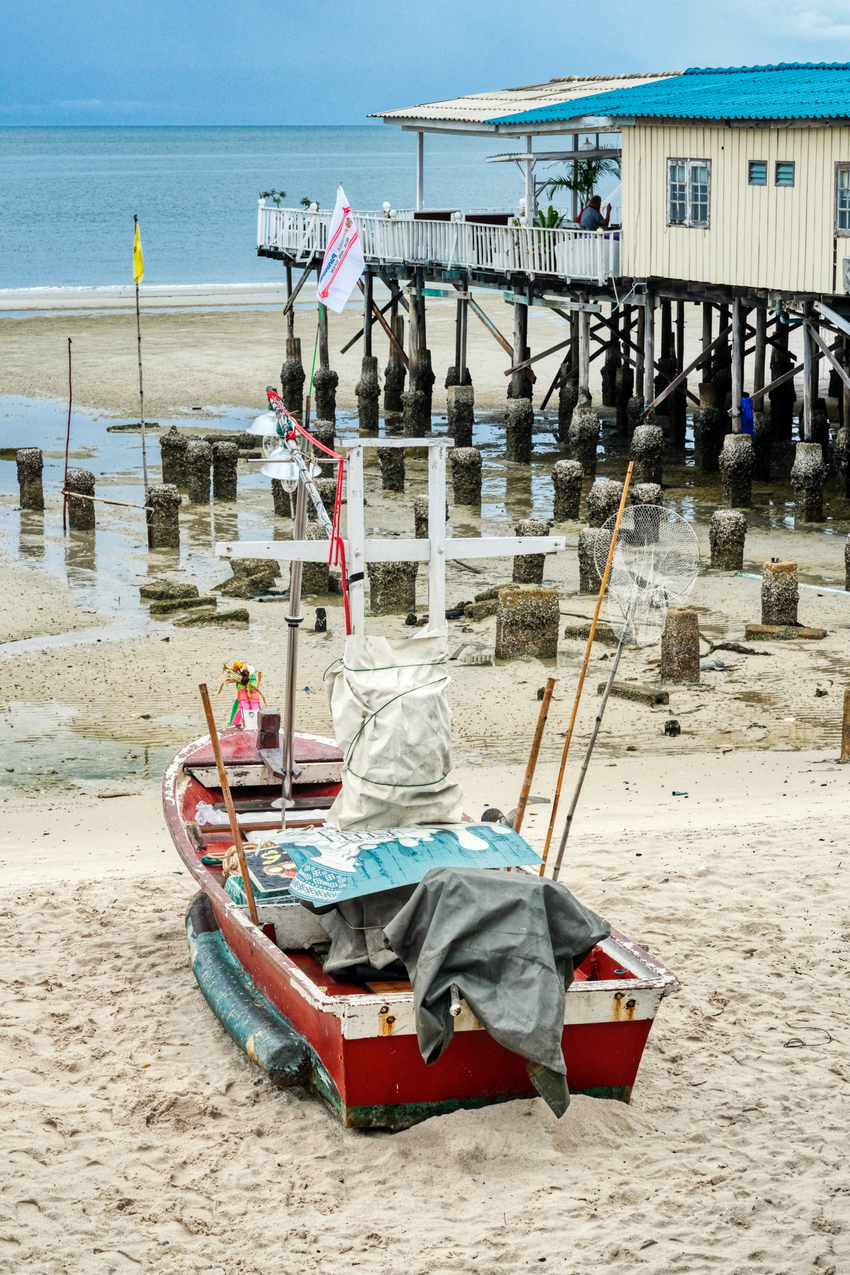 The view from the French restaurant is very relaxing.
The view from the French restaurant is very relaxing.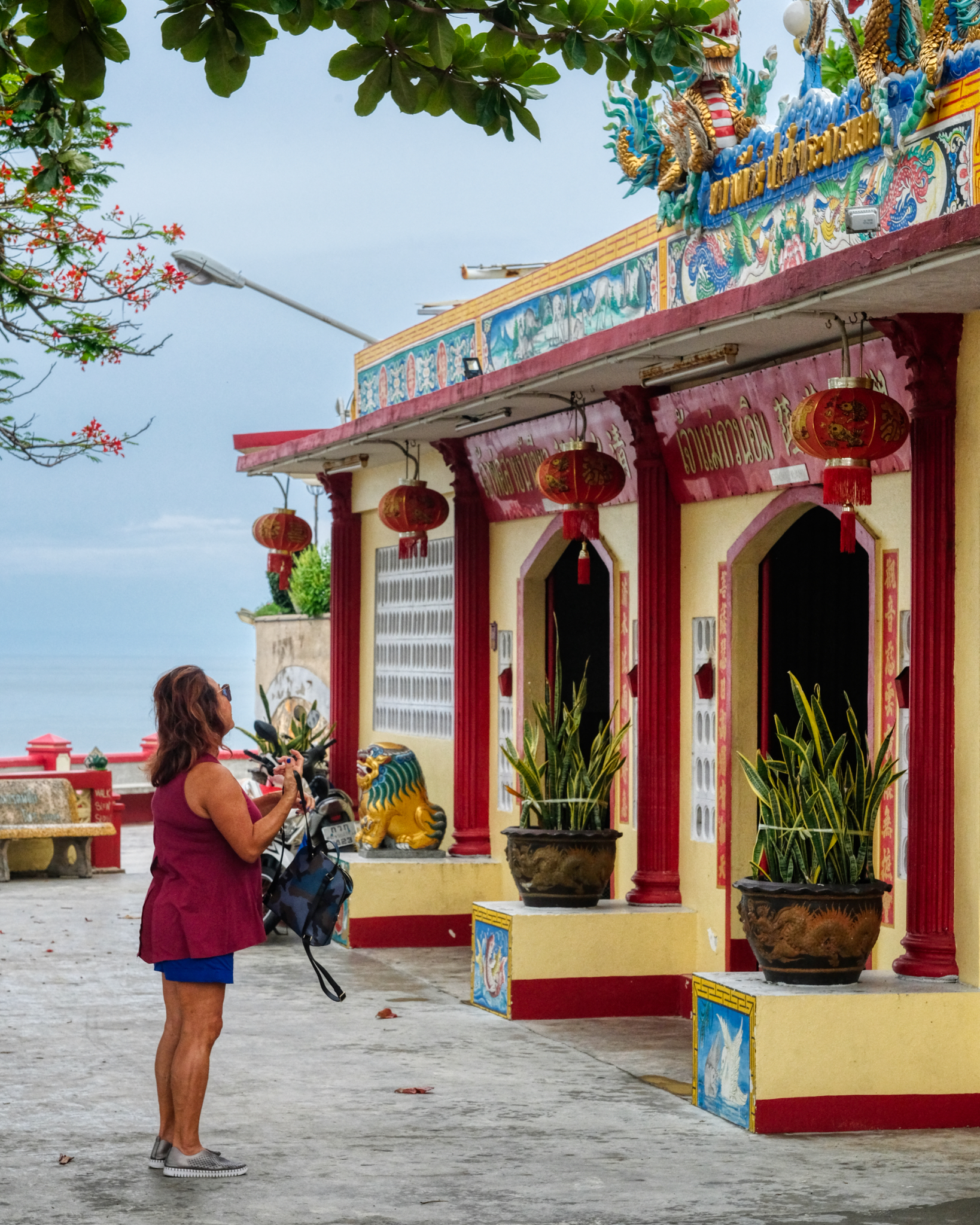 After lunch we strolled over to a nearby Chinese Buddhist Tempe.
After lunch we strolled over to a nearby Chinese Buddhist Tempe.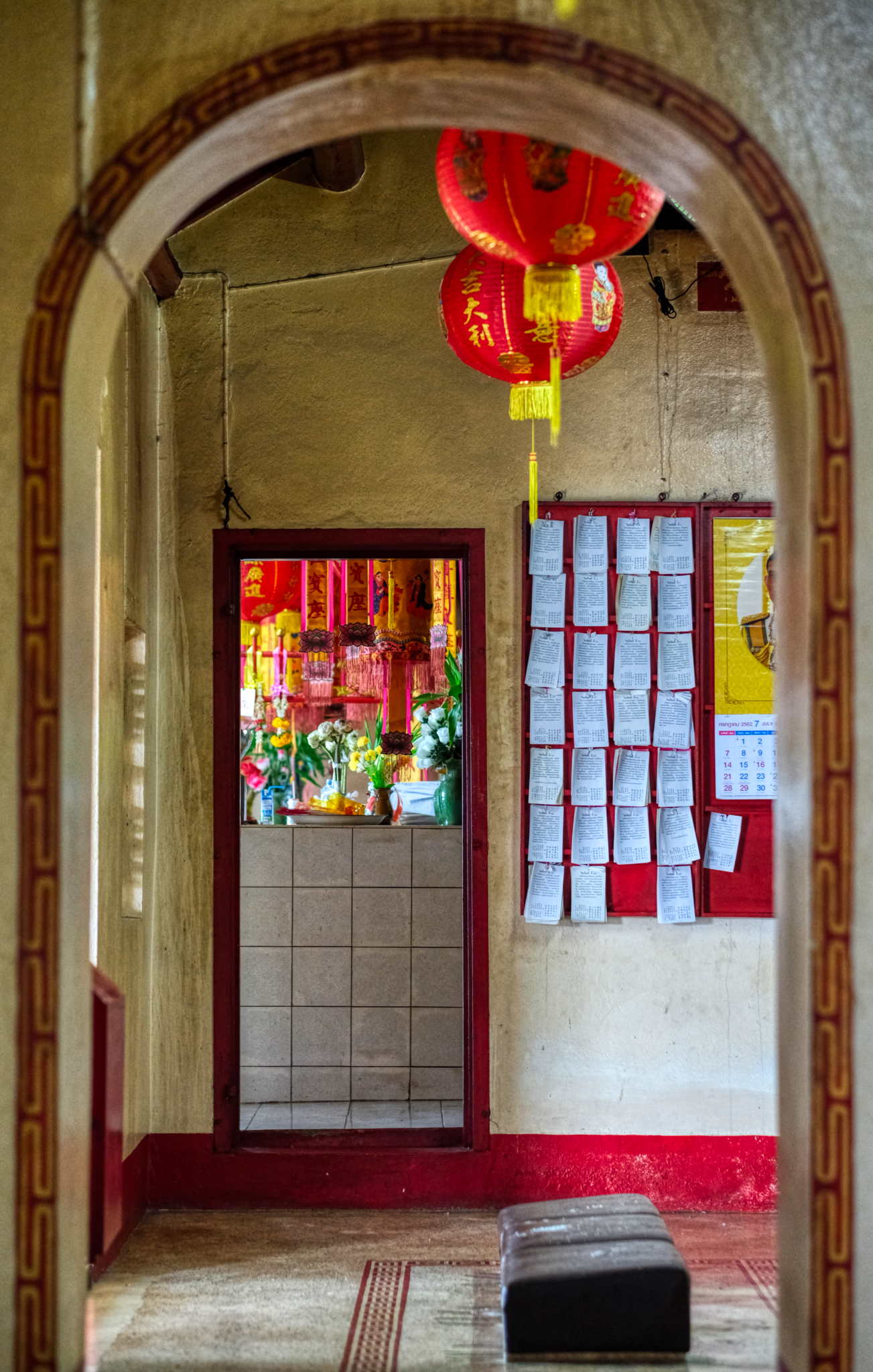 I love exploring these temples . . . and paying respect to The Buddha and what he hoped for all of us.
I love exploring these temples . . . and paying respect to The Buddha and what he hoped for all of us.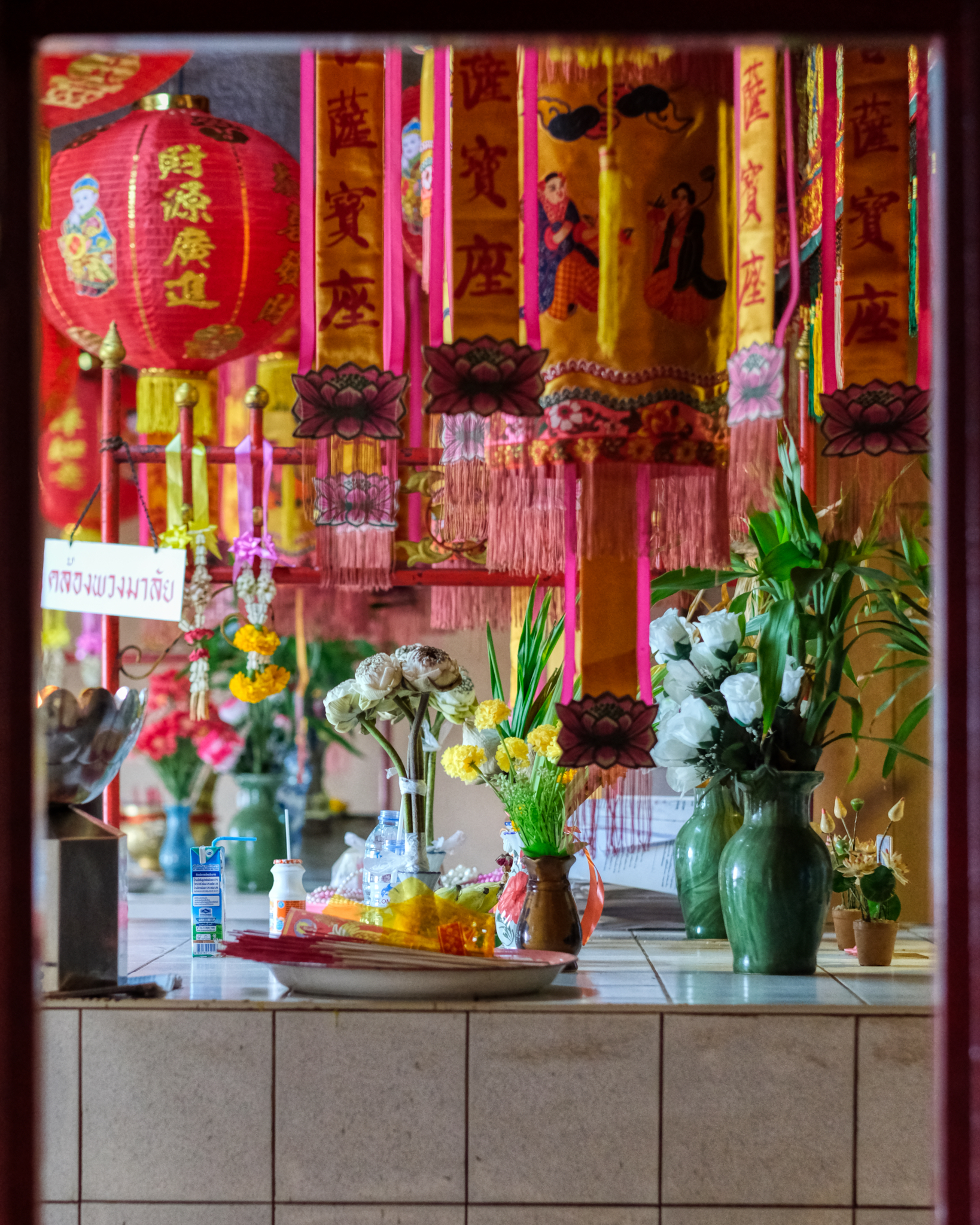 I love the decoration and the array of colorful votive items at these Chinese temples.
I love the decoration and the array of colorful votive items at these Chinese temples. A small incense pot and altar. Touching.
A small incense pot and altar. Touching.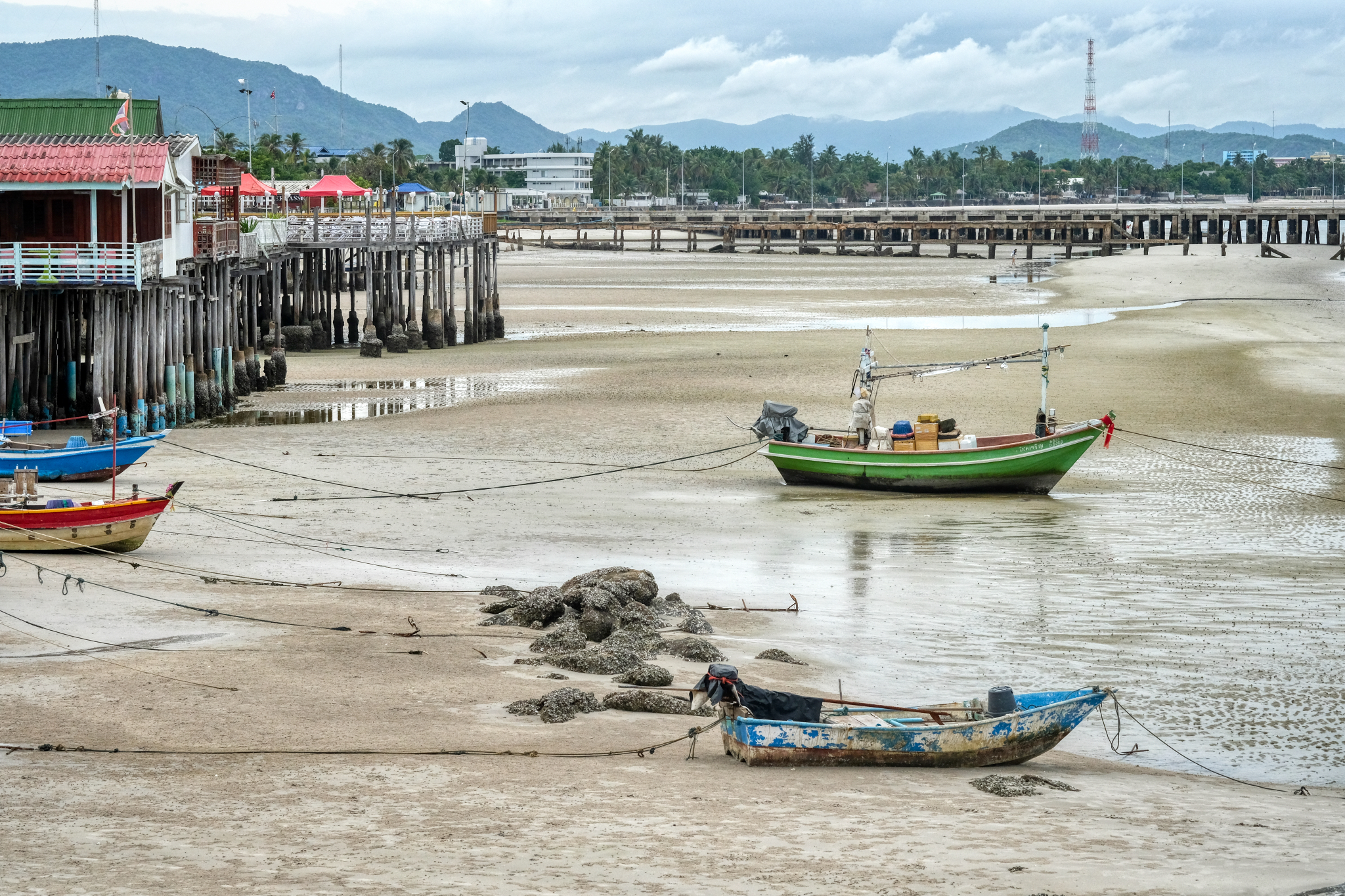 The view from the Chinese temple back to Hua Hin town. As can be seen, Hua Hin sits on a narrow coastal shelf between low hills and the Gulf of Thailand.
The view from the Chinese temple back to Hua Hin town. As can be seen, Hua Hin sits on a narrow coastal shelf between low hills and the Gulf of Thailand.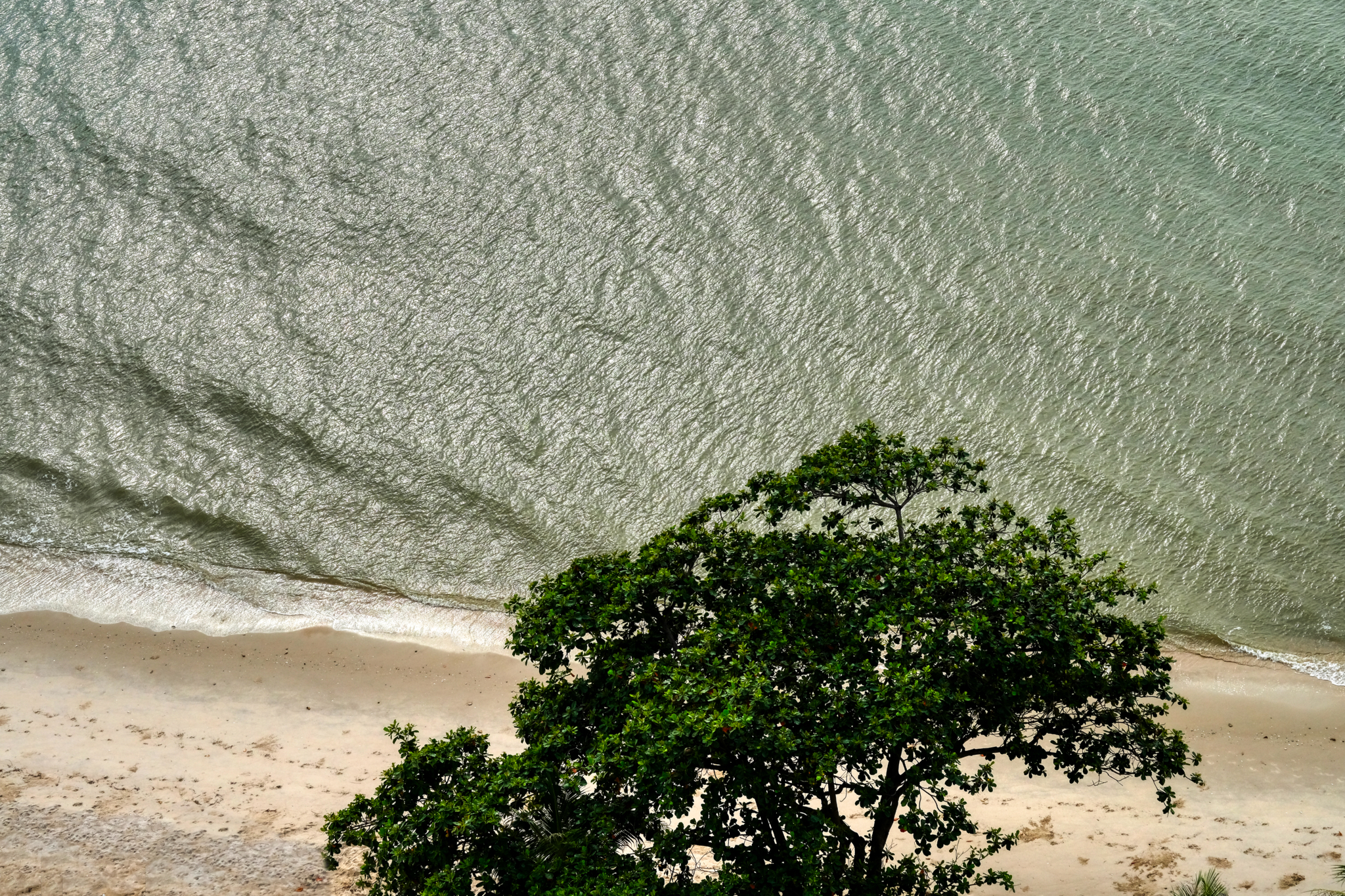 Back at our seaside lodgings . . . the view from above.
Back at our seaside lodgings . . . the view from above.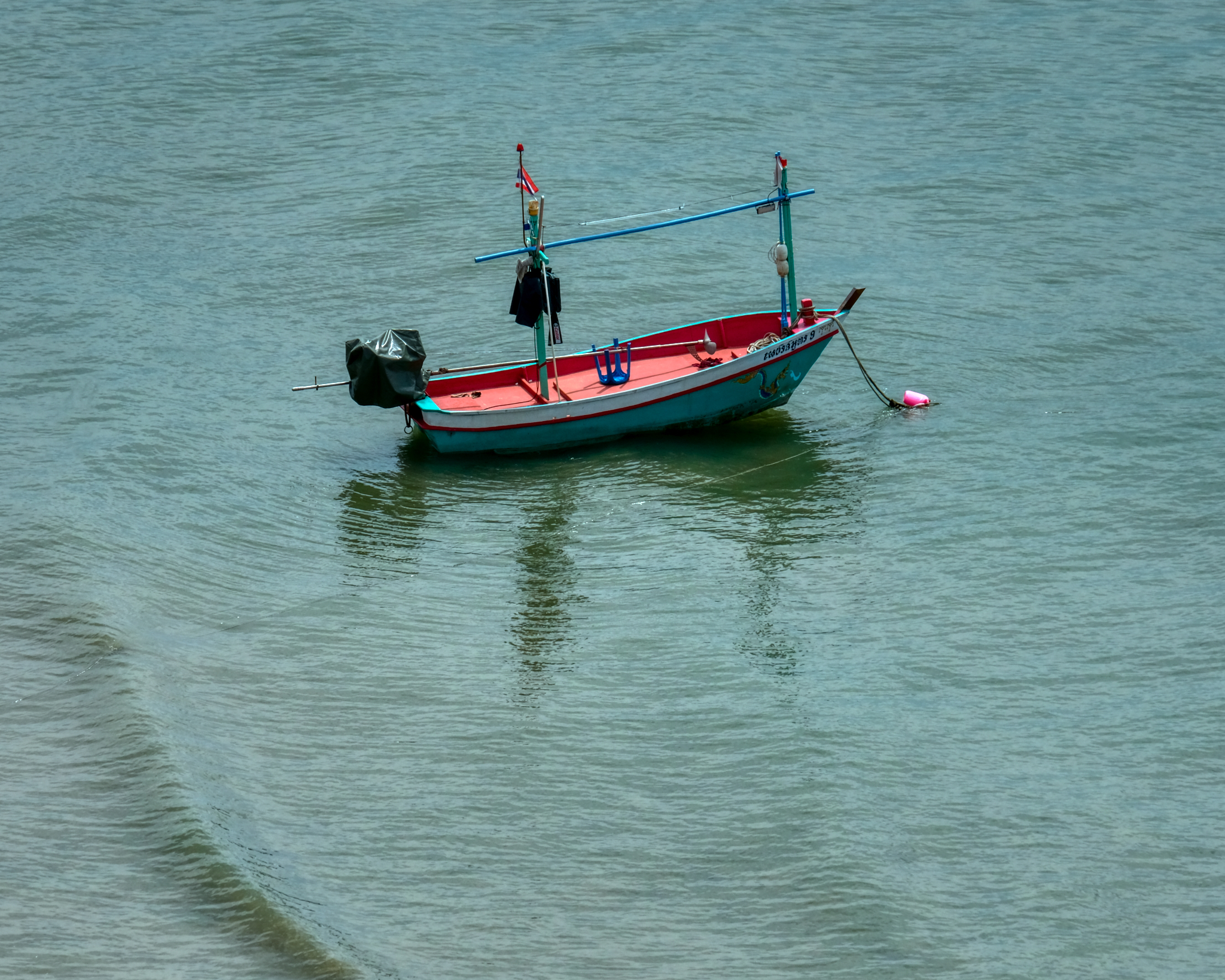 A lone fishing (squid) boat waiting for the crew.
A lone fishing (squid) boat waiting for the crew.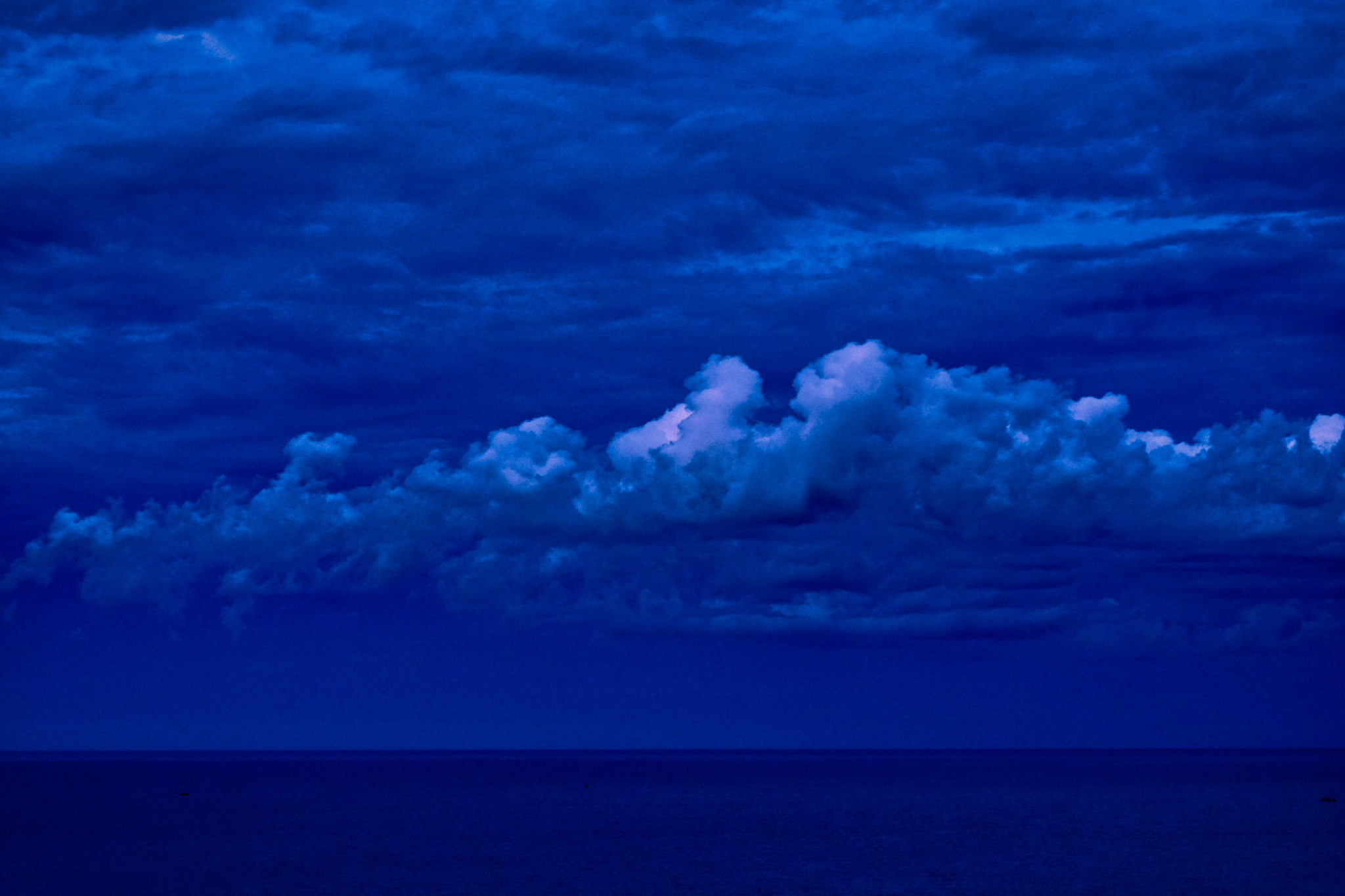 A Hua Hin blue hour sunset (looking east, away from the setting sun).
A Hua Hin blue hour sunset (looking east, away from the setting sun).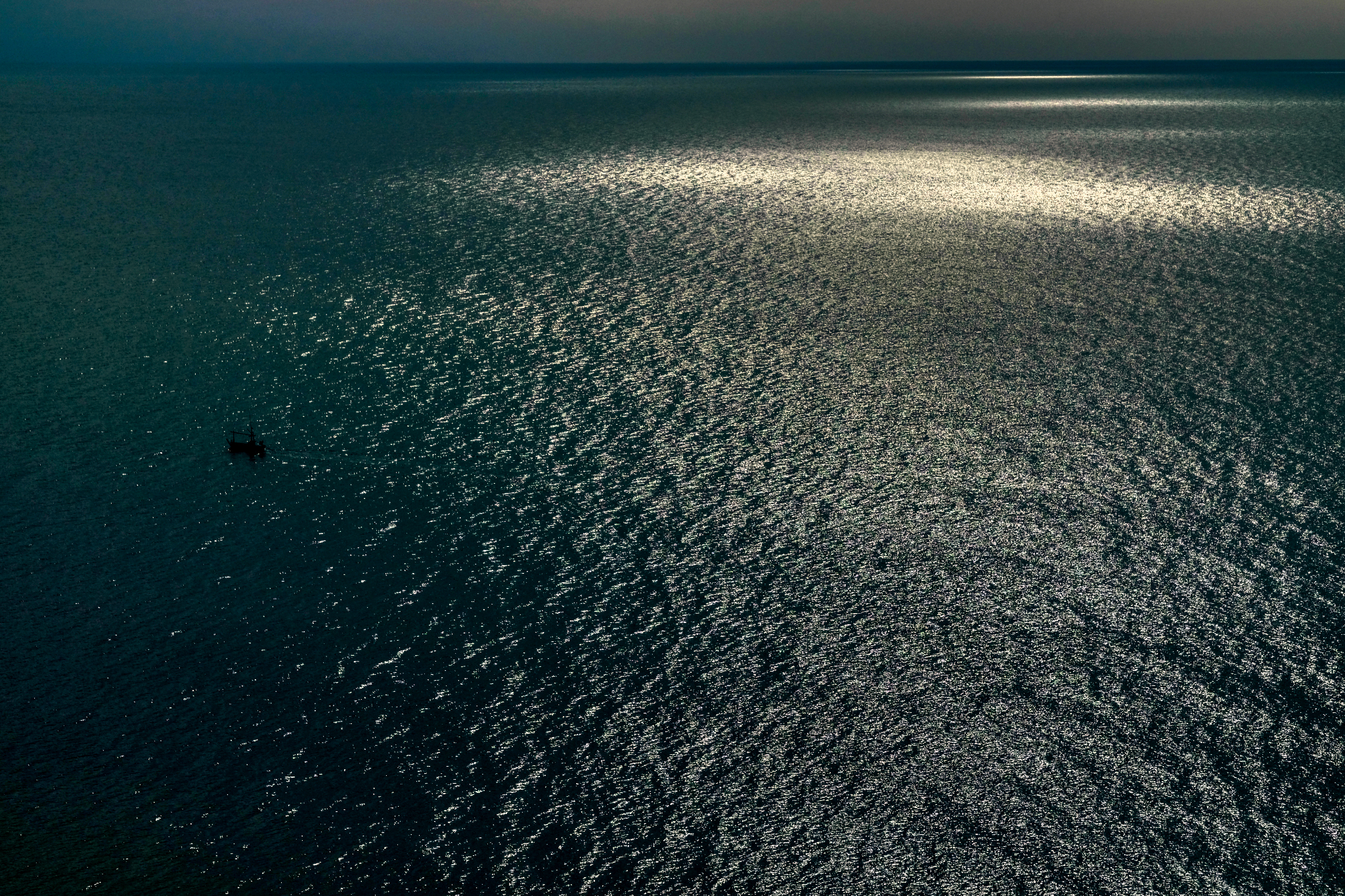 A Hua Hin sunrise sea.
A Hua Hin sunrise sea.Road Trip USA: The New Jersey Shore
 Saturday, December 22, 2018 at 11:59AM
Saturday, December 22, 2018 at 11:59AM 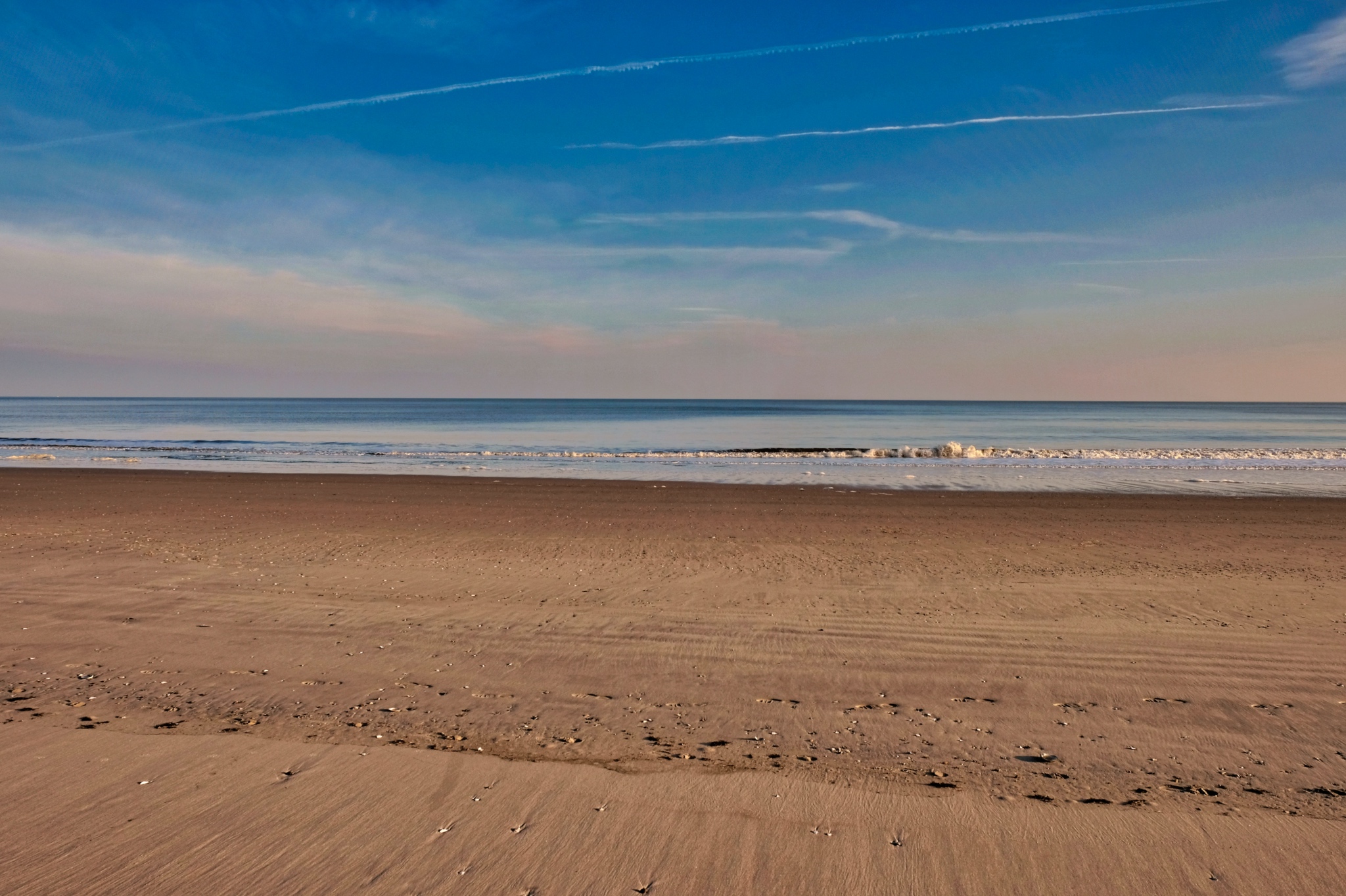 I have good friends who are semi-retired and live year round in Ocean City, New Jersey. I spent a wonderful five days visiting them.
I have good friends who are semi-retired and live year round in Ocean City, New Jersey. I spent a wonderful five days visiting them.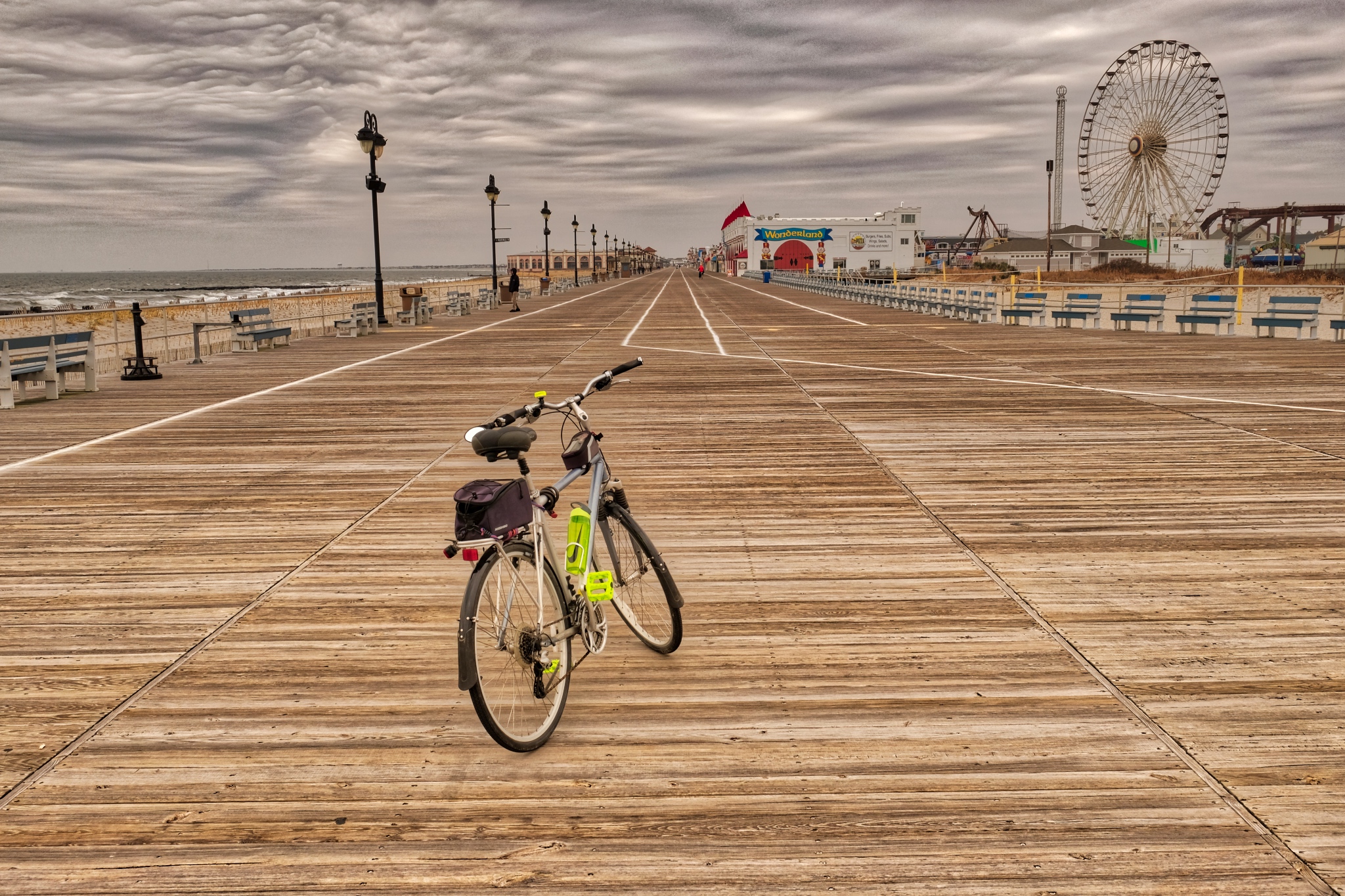 I brought my bicycle with me so that I could ride the many miles of Ocean City boardwalk.
I brought my bicycle with me so that I could ride the many miles of Ocean City boardwalk.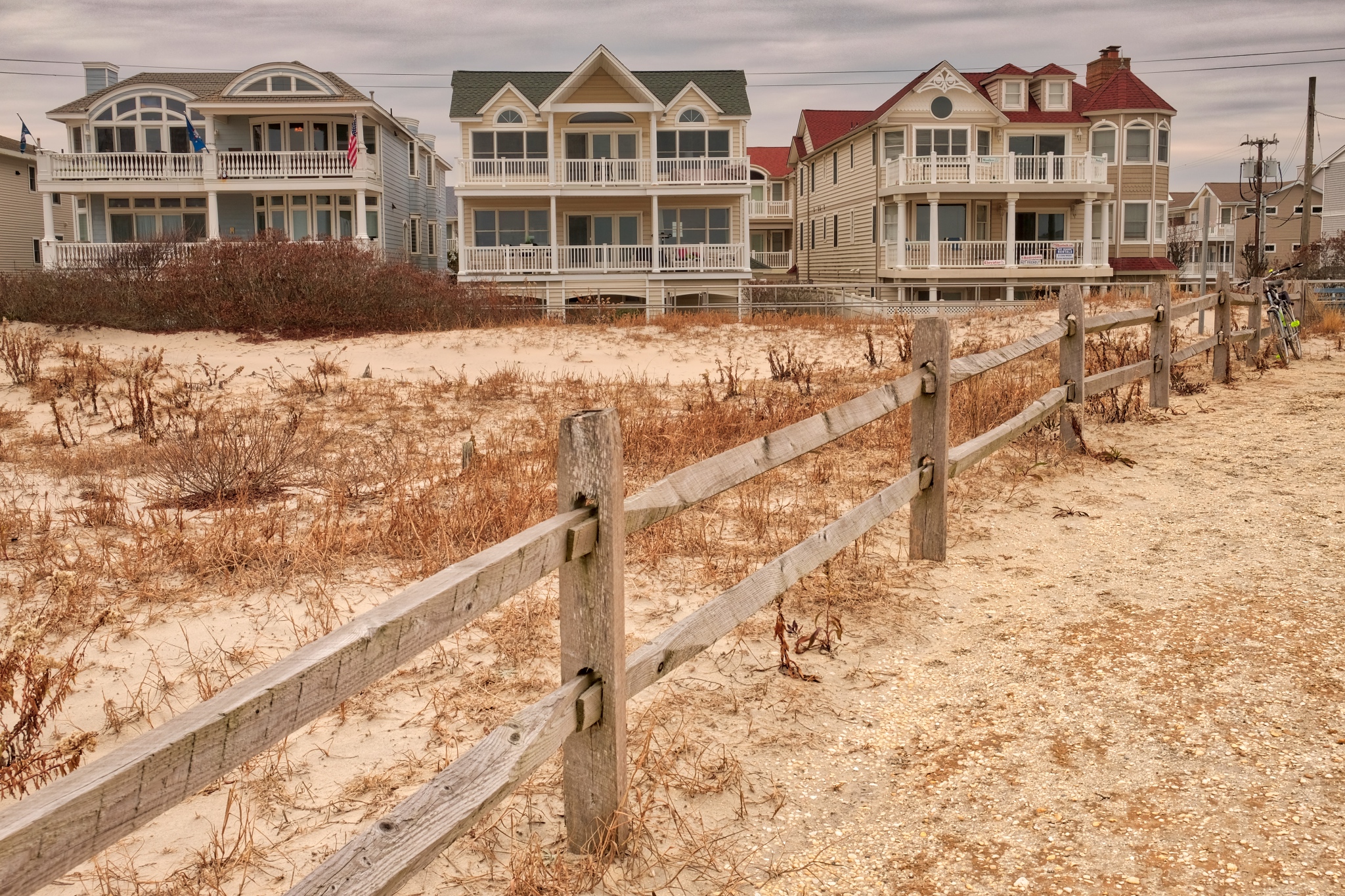 Although Ocean City is a very old beach resort (for mostly rich folks from Philadelphia), many of the old beach houses were torn down and replaced with these fanciful 'kit' beach houses. About 80% of these are vacant during the off-season.
Although Ocean City is a very old beach resort (for mostly rich folks from Philadelphia), many of the old beach houses were torn down and replaced with these fanciful 'kit' beach houses. About 80% of these are vacant during the off-season.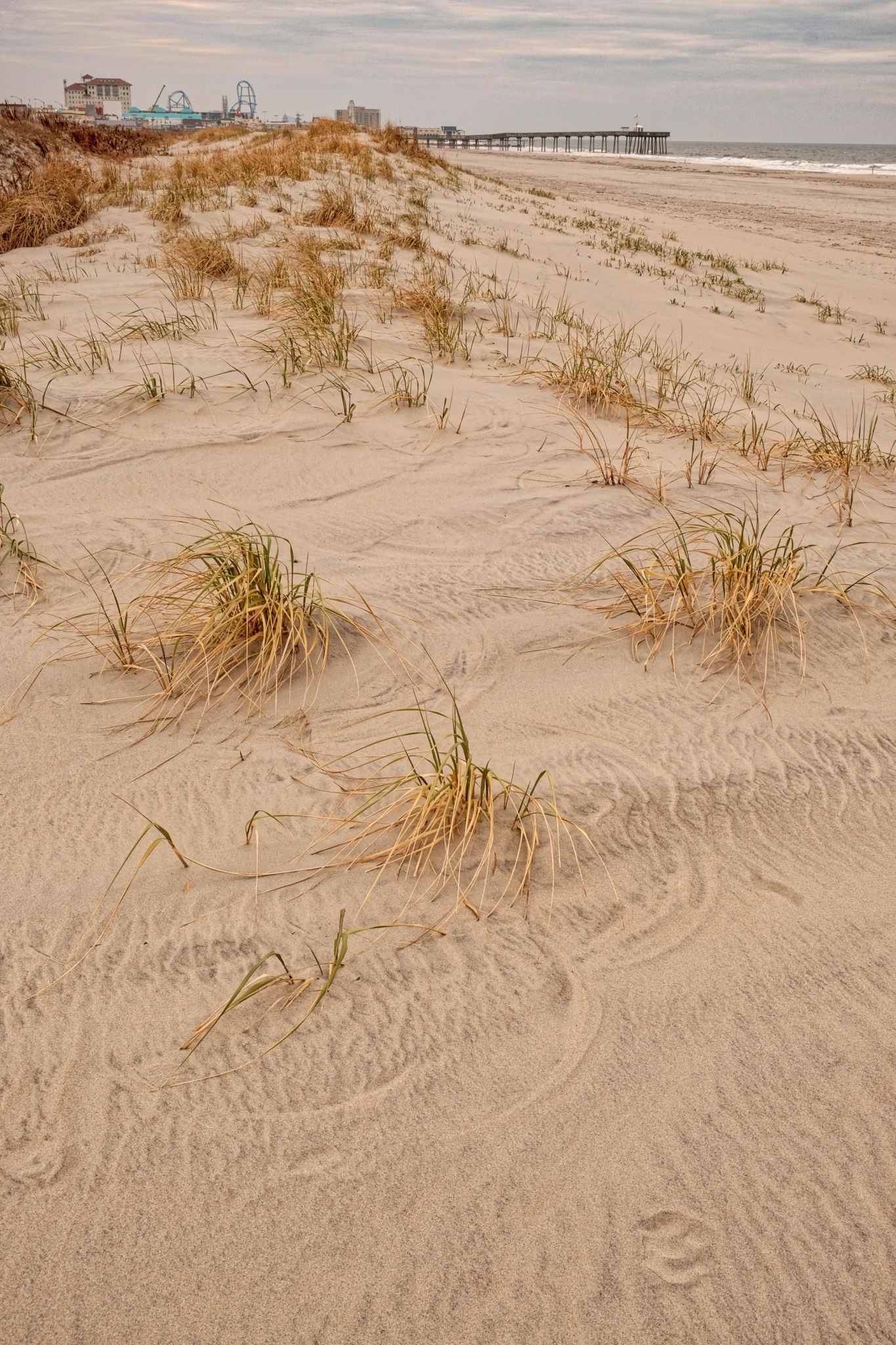 Ocean City has a nice beach. There used to be a major pier, but it was washed away during Hurricane Sandy . . . which also inundated Ocean City streets. The pier in the background is the private pier of the Ocean City Fishing Club.
Ocean City has a nice beach. There used to be a major pier, but it was washed away during Hurricane Sandy . . . which also inundated Ocean City streets. The pier in the background is the private pier of the Ocean City Fishing Club.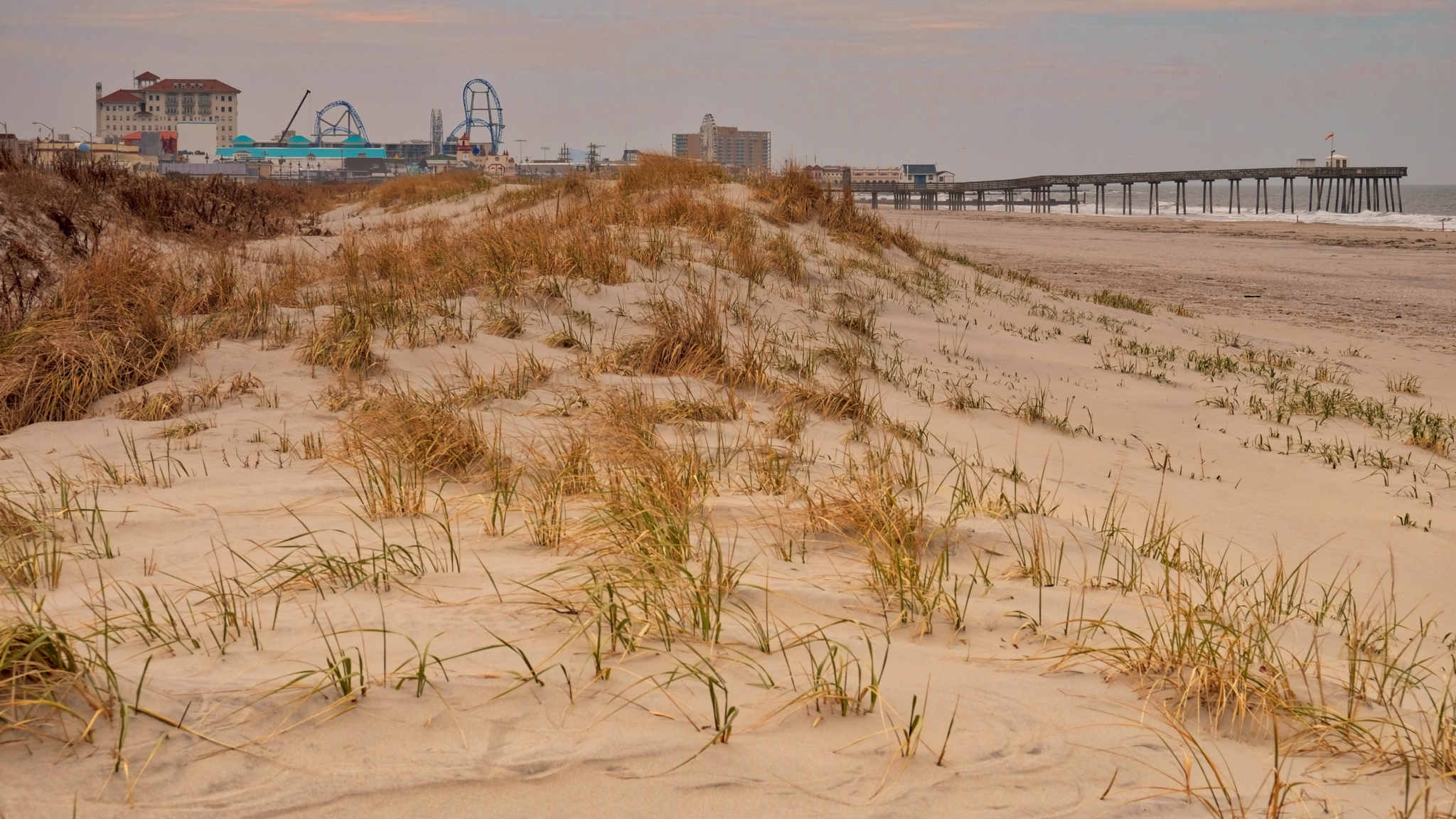 Ocean City has a few attractions, including a very fine boardwalk. The town is 'dry' - alcohol is not sold in stores, so it has gained a reputation as a family beach.
Ocean City has a few attractions, including a very fine boardwalk. The town is 'dry' - alcohol is not sold in stores, so it has gained a reputation as a family beach.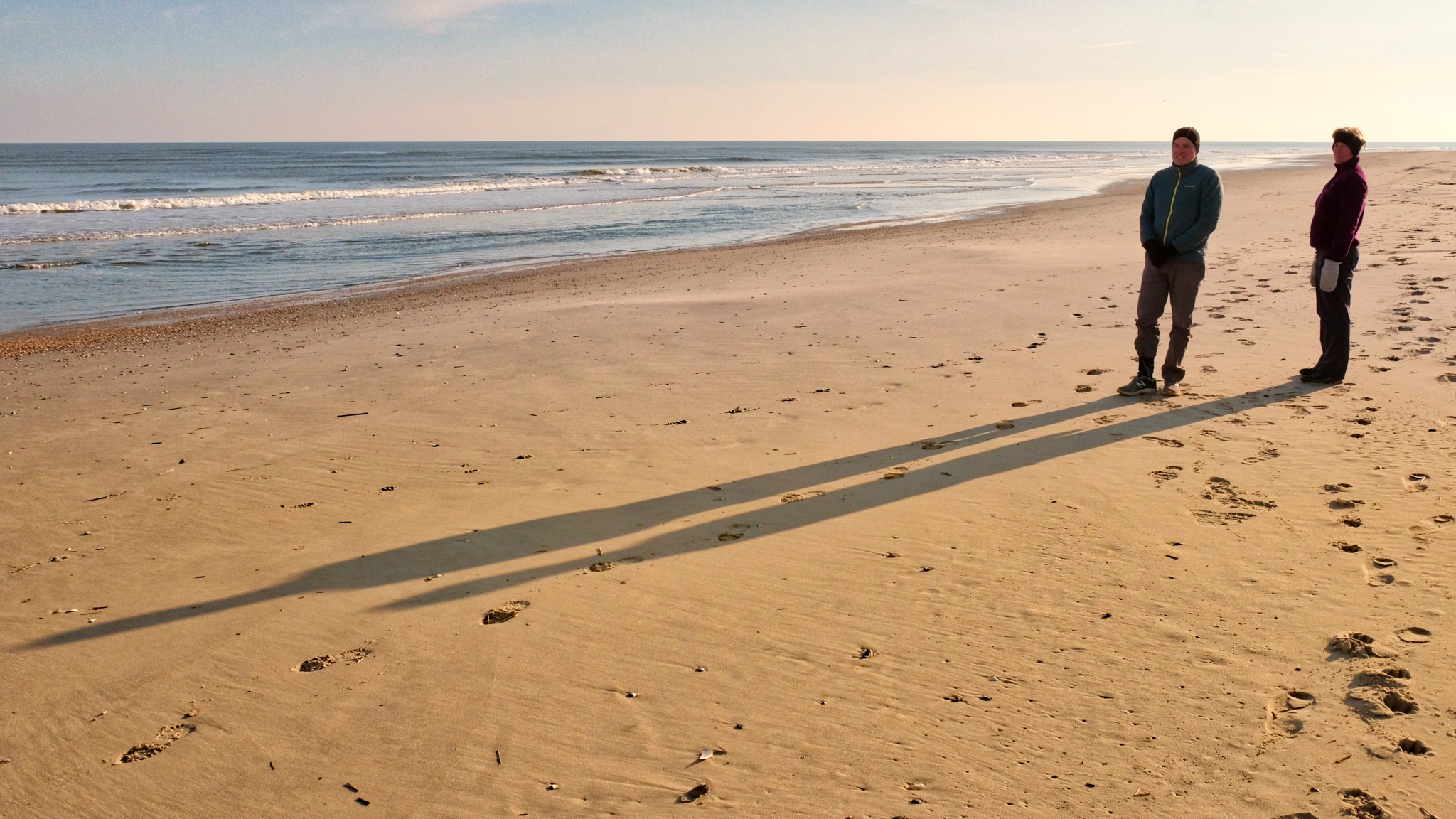 We had the beach to ourselves every day.
We had the beach to ourselves every day. I had the good luck to be here between storms . . . and wind. Quite mild and calm days for December. We took a nice bike ride to a nearby island and saw this inlet along the way.
I had the good luck to be here between storms . . . and wind. Quite mild and calm days for December. We took a nice bike ride to a nearby island and saw this inlet along the way.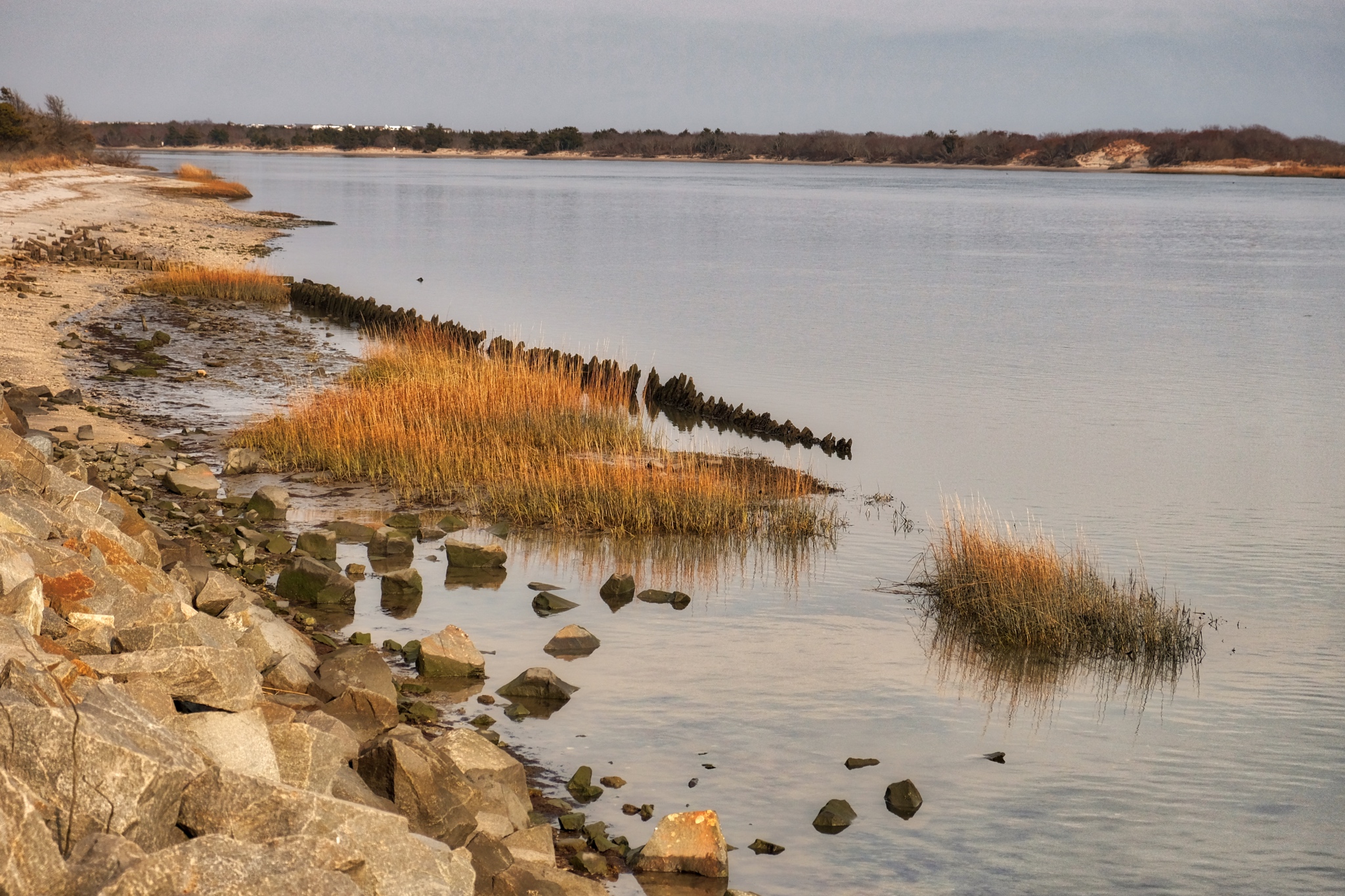 Much of the area to the west of Ocean City is designated as a wildlife reserve.
Much of the area to the west of Ocean City is designated as a wildlife reserve.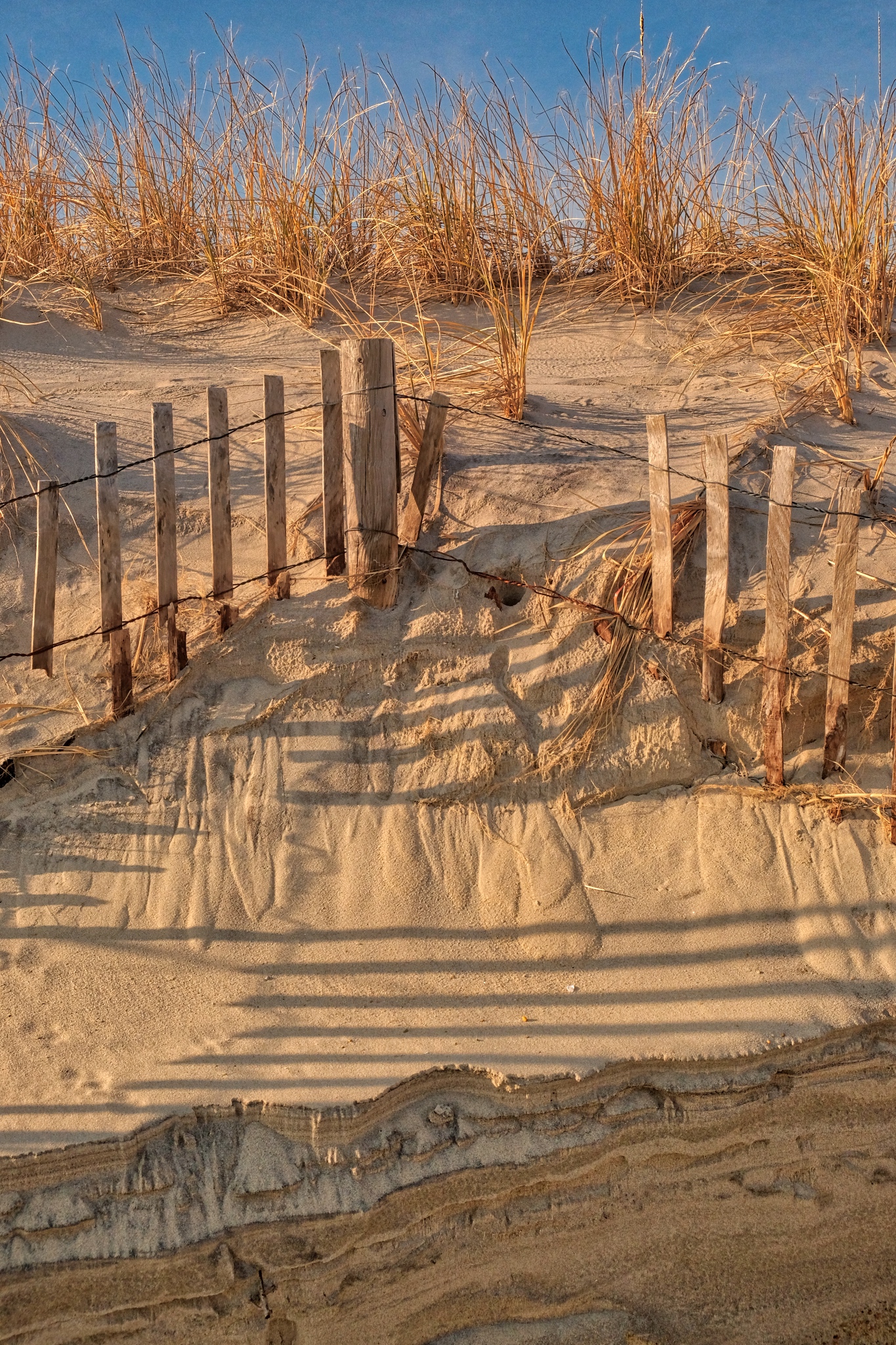 Beach erosion is still an issue. Successive hurricanes and 'noreasters' severely depleted the sands. The local government dredged the seabed and sprayed sand back to make a new beach. It will have to find it's new 'natural' levels.
Beach erosion is still an issue. Successive hurricanes and 'noreasters' severely depleted the sands. The local government dredged the seabed and sprayed sand back to make a new beach. It will have to find it's new 'natural' levels.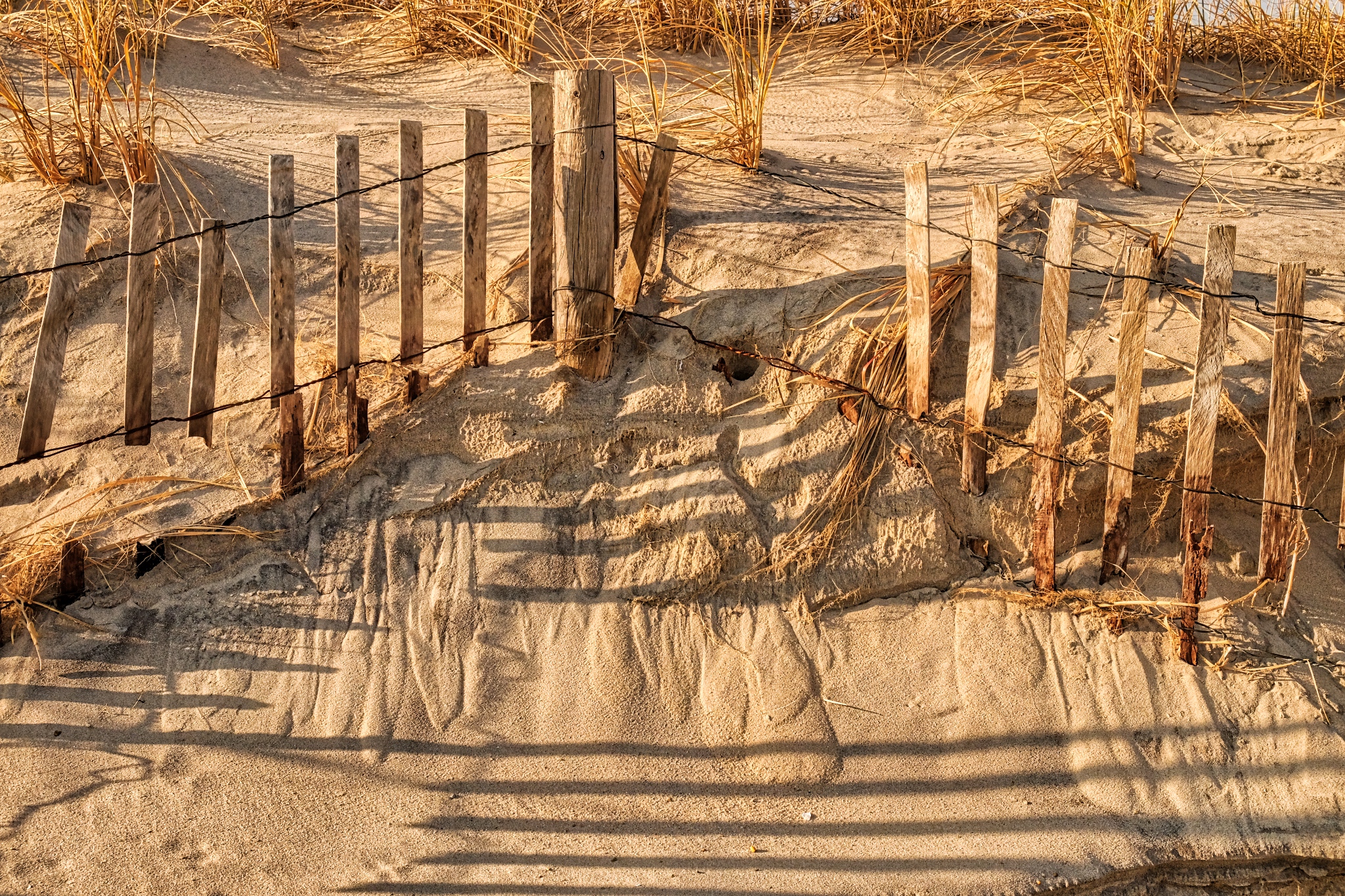 Wonderful patterns, shapes, and shadows in the beach dunes.
Wonderful patterns, shapes, and shadows in the beach dunes.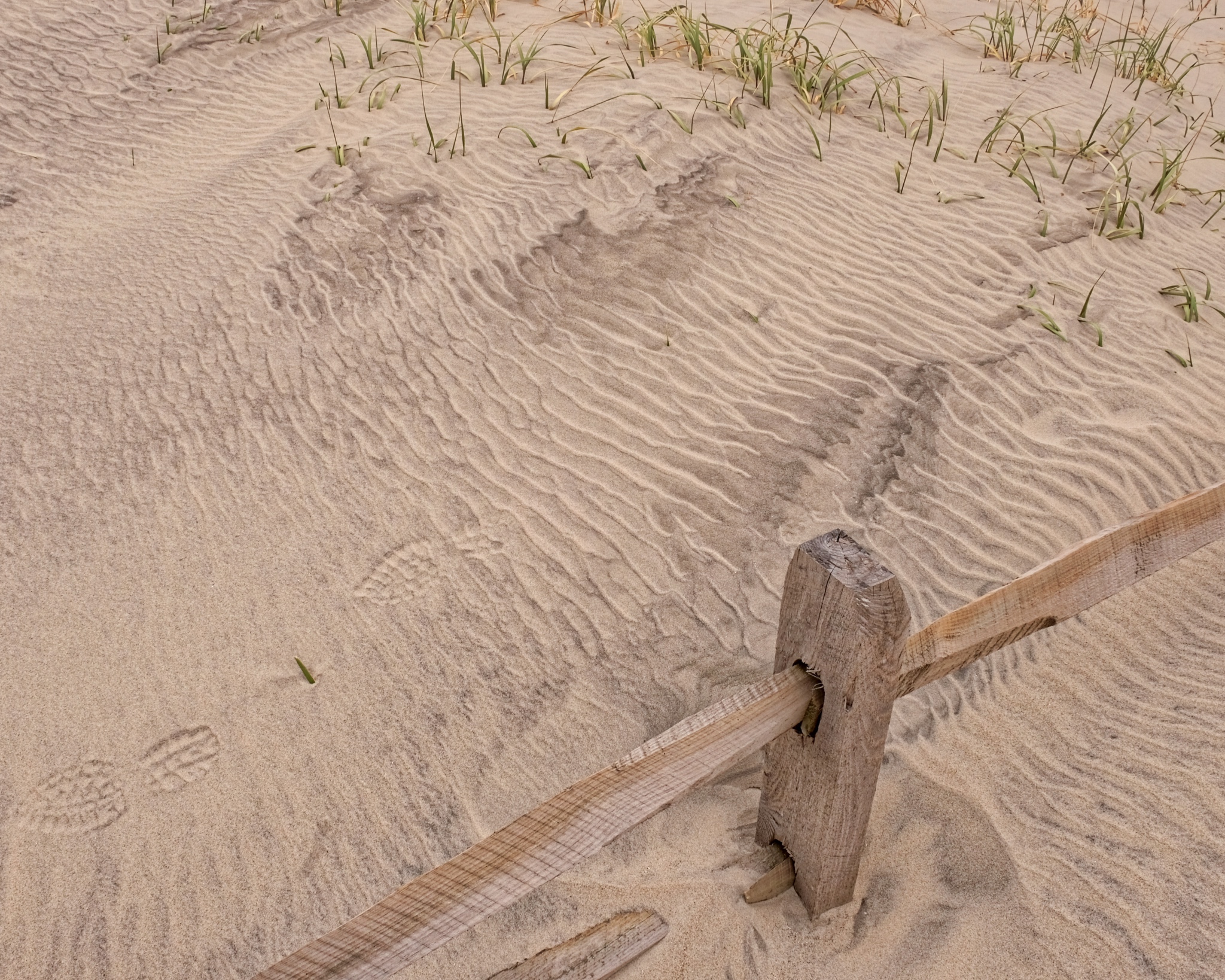 Wind patterns in the sand.
Wind patterns in the sand.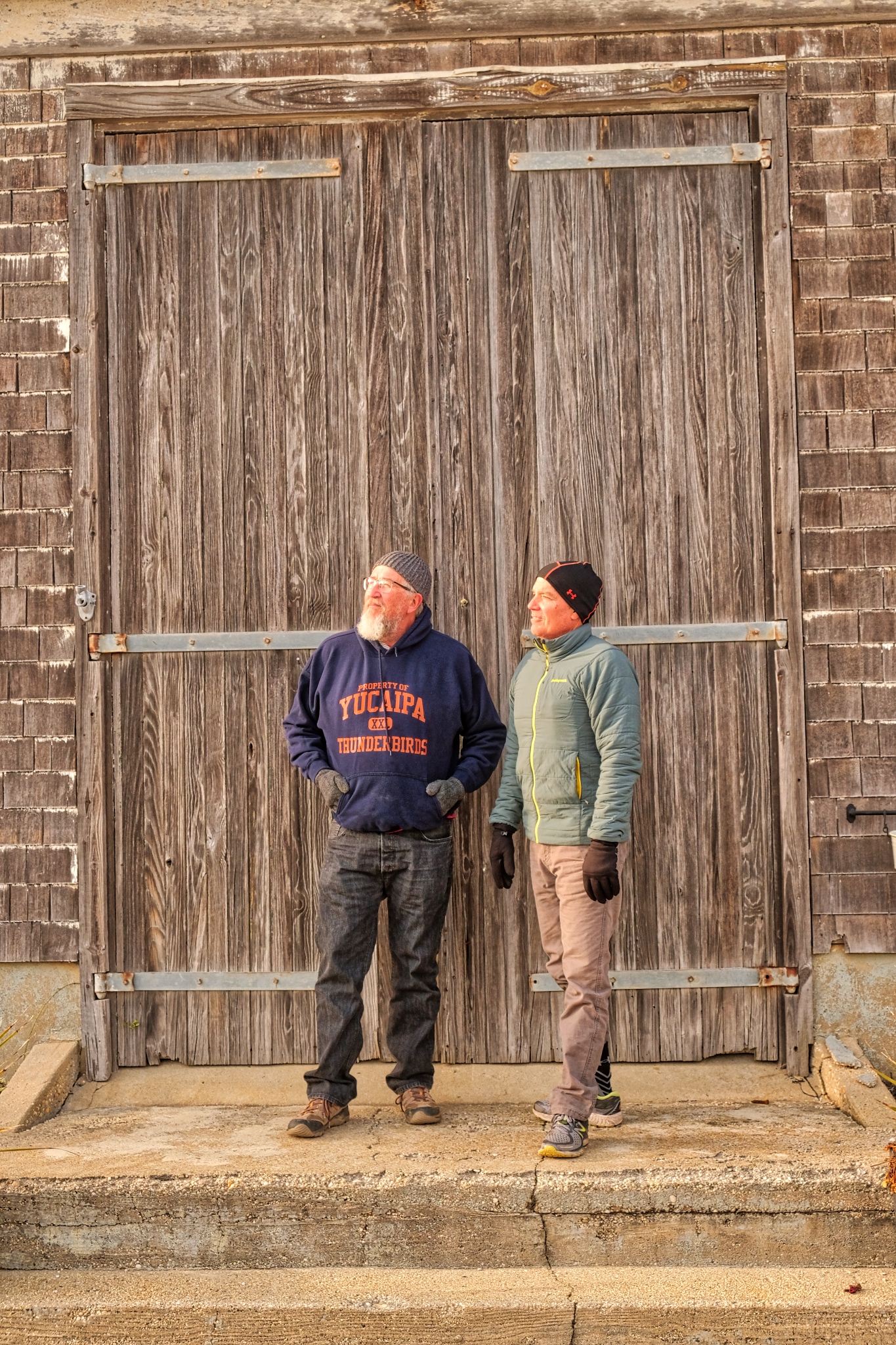 With my good buddy, Bud.
With my good buddy, Bud.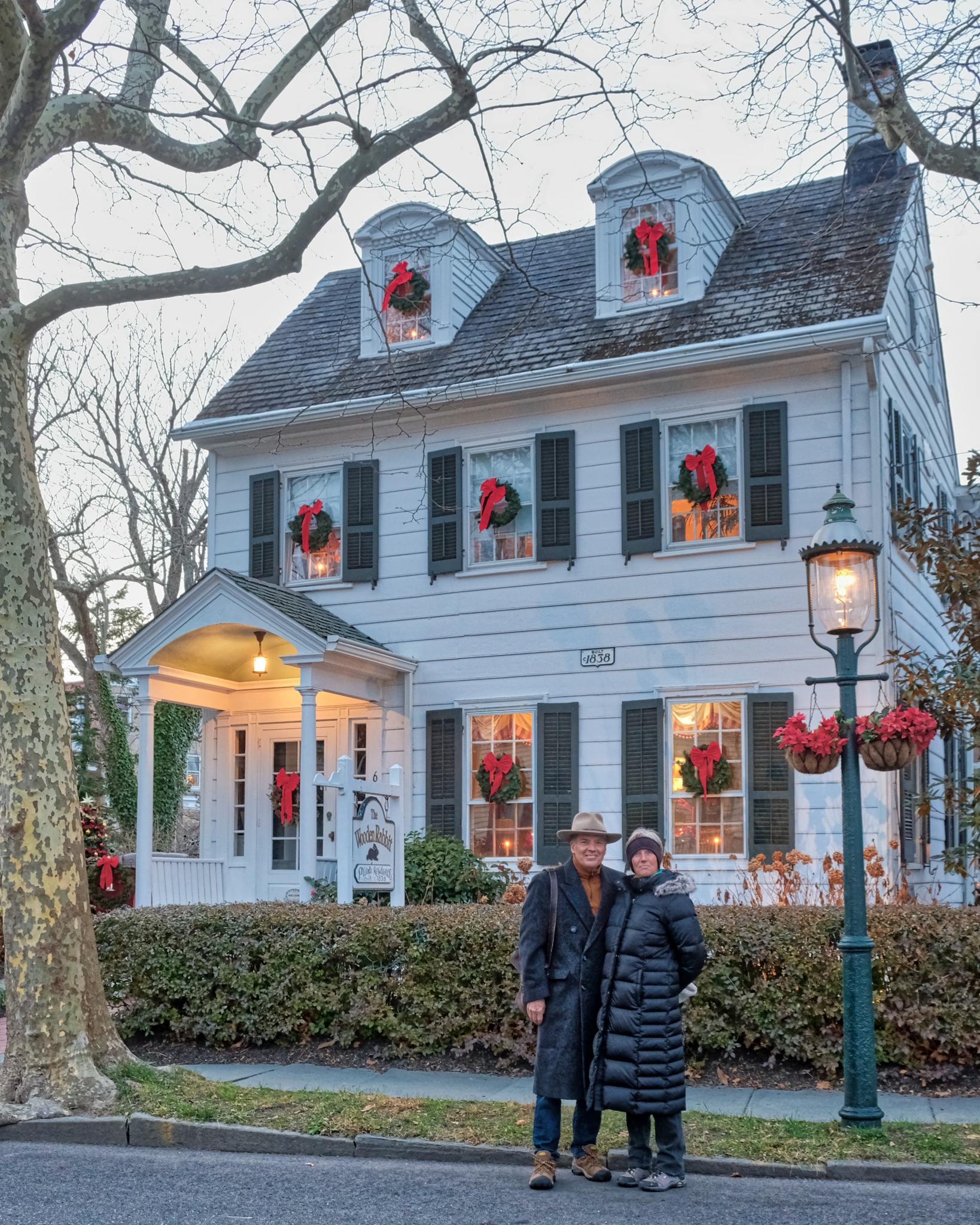 My friends and I drove 20 minutes south to the lovely colonial seaside village of Cape May in the late afternoon to see the decorated old Victorian and Colonial houses.
My friends and I drove 20 minutes south to the lovely colonial seaside village of Cape May in the late afternoon to see the decorated old Victorian and Colonial houses.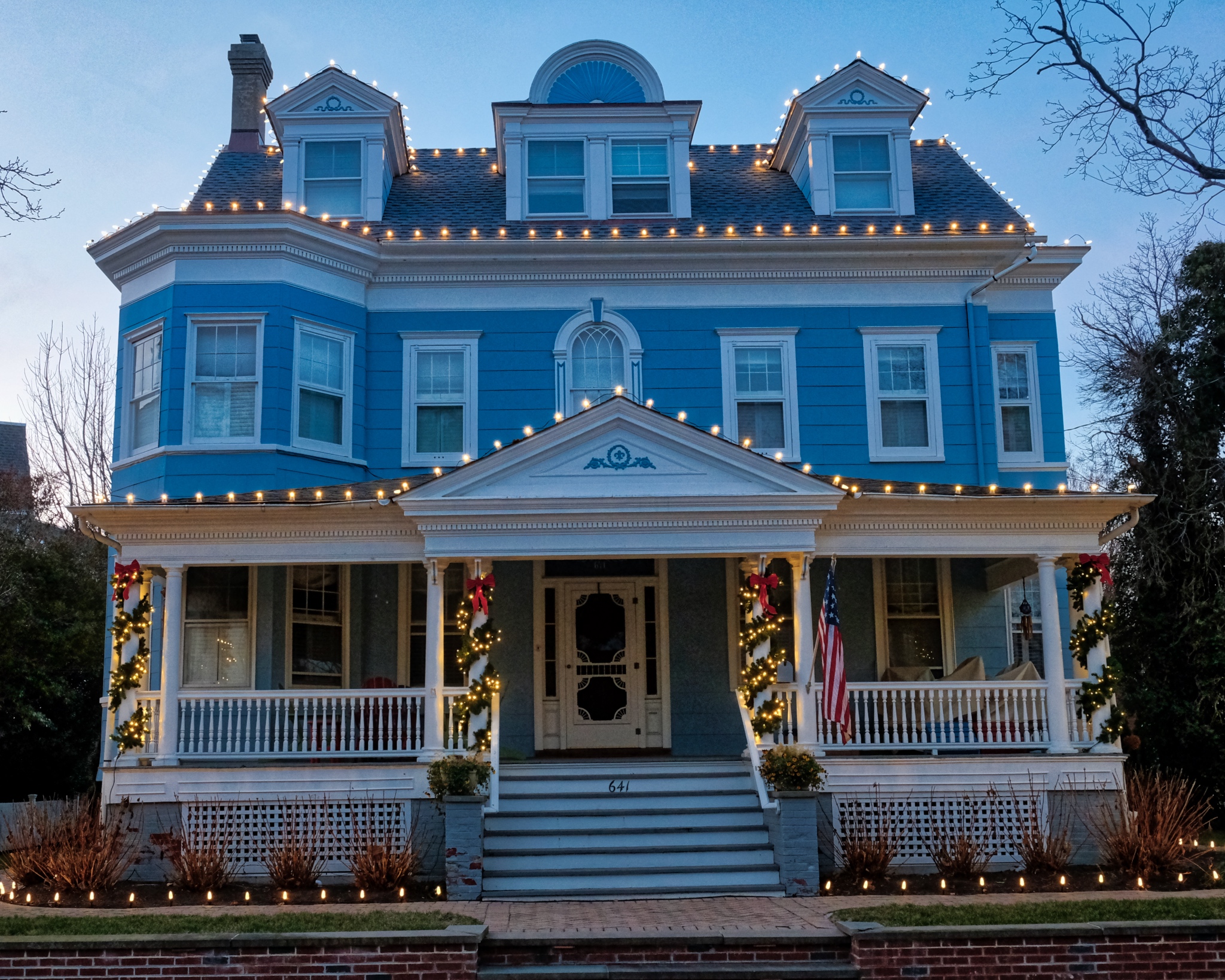 The sun had just gone down . . . and the houses were beginning to take on their night identity.
The sun had just gone down . . . and the houses were beginning to take on their night identity.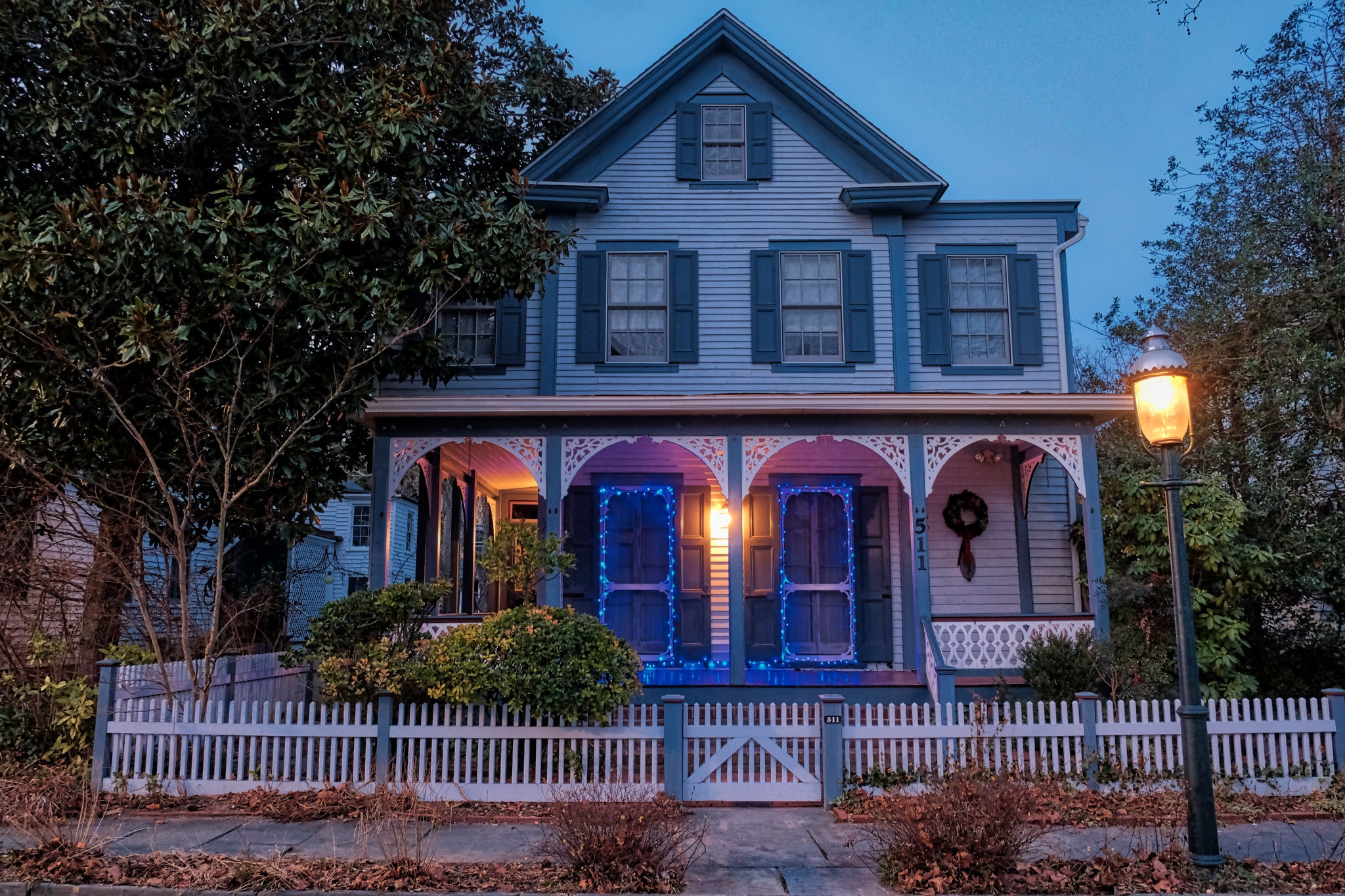 There are so many cute houses in Cape May. The Cape May Historic District has over 600 listed homes. Fantastic!
There are so many cute houses in Cape May. The Cape May Historic District has over 600 listed homes. Fantastic!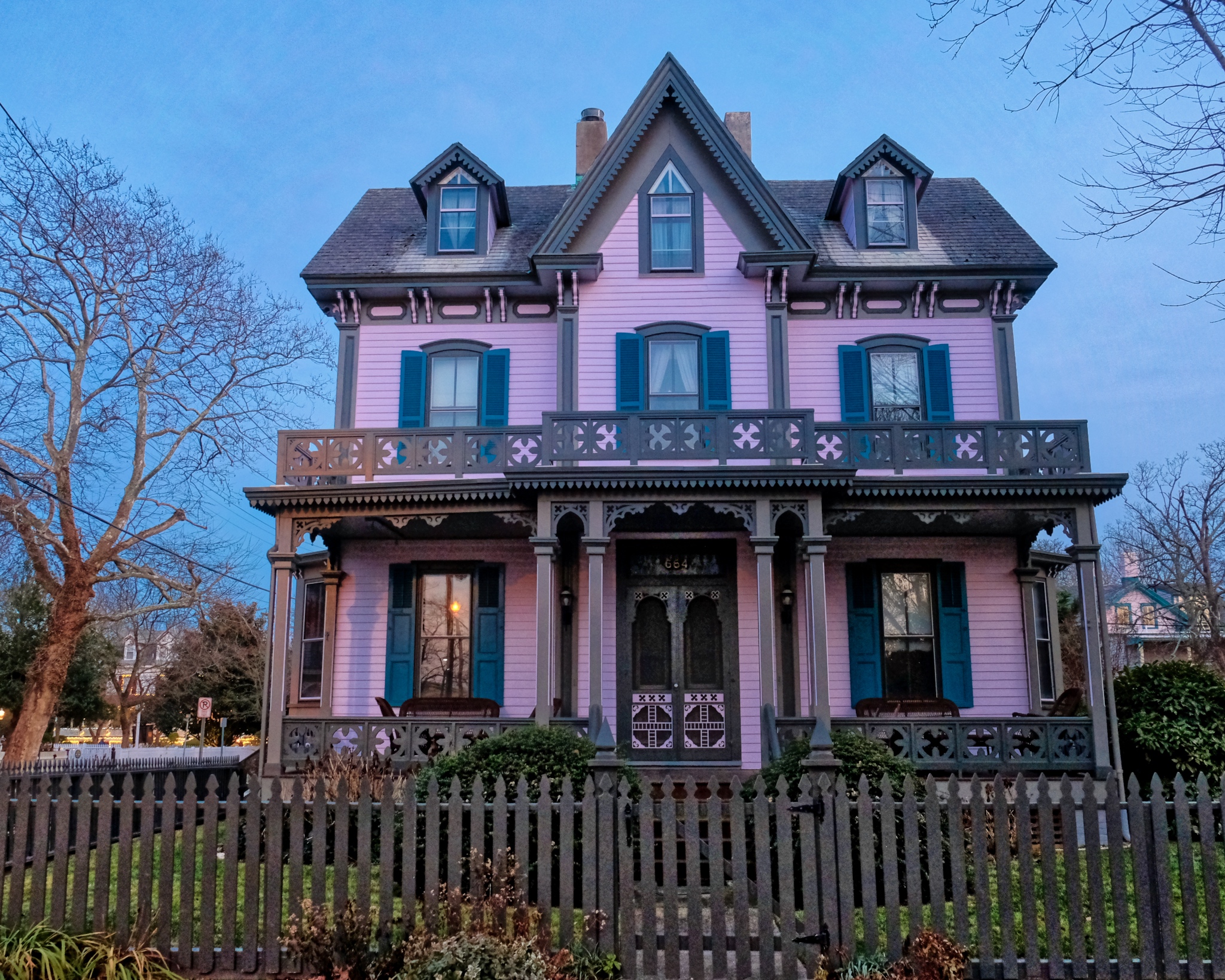 Cape May was first established as a village in 1632, on of the earliest settlements along the Atlantic coast. Most of the homes in the Historic District are of the Late Victorian Era Style.
Cape May was first established as a village in 1632, on of the earliest settlements along the Atlantic coast. Most of the homes in the Historic District are of the Late Victorian Era Style.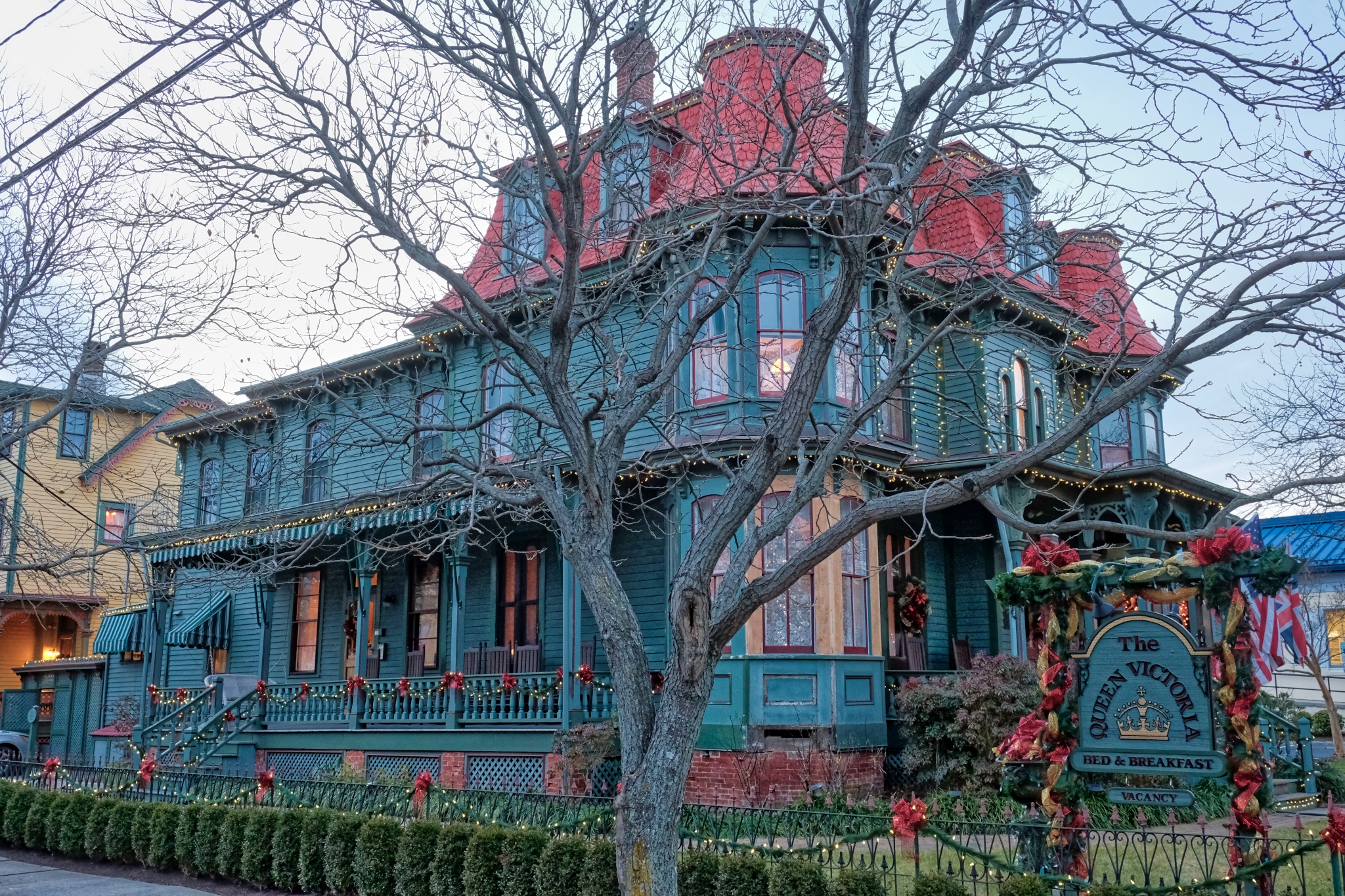 The beautiful Victoria B&B . . . .
The beautiful Victoria B&B . . . .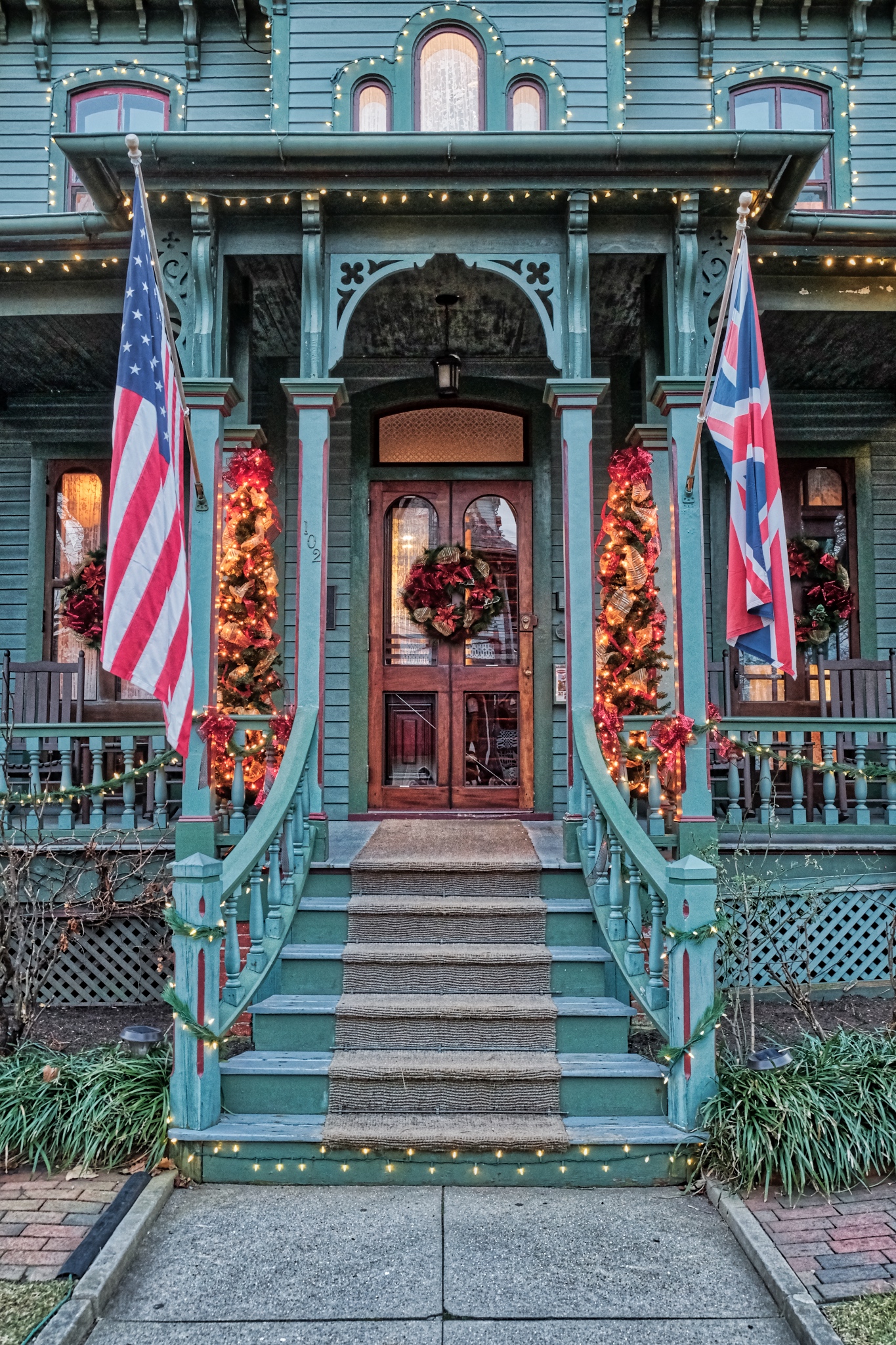 The Queen Victoria B&B front door.
The Queen Victoria B&B front door.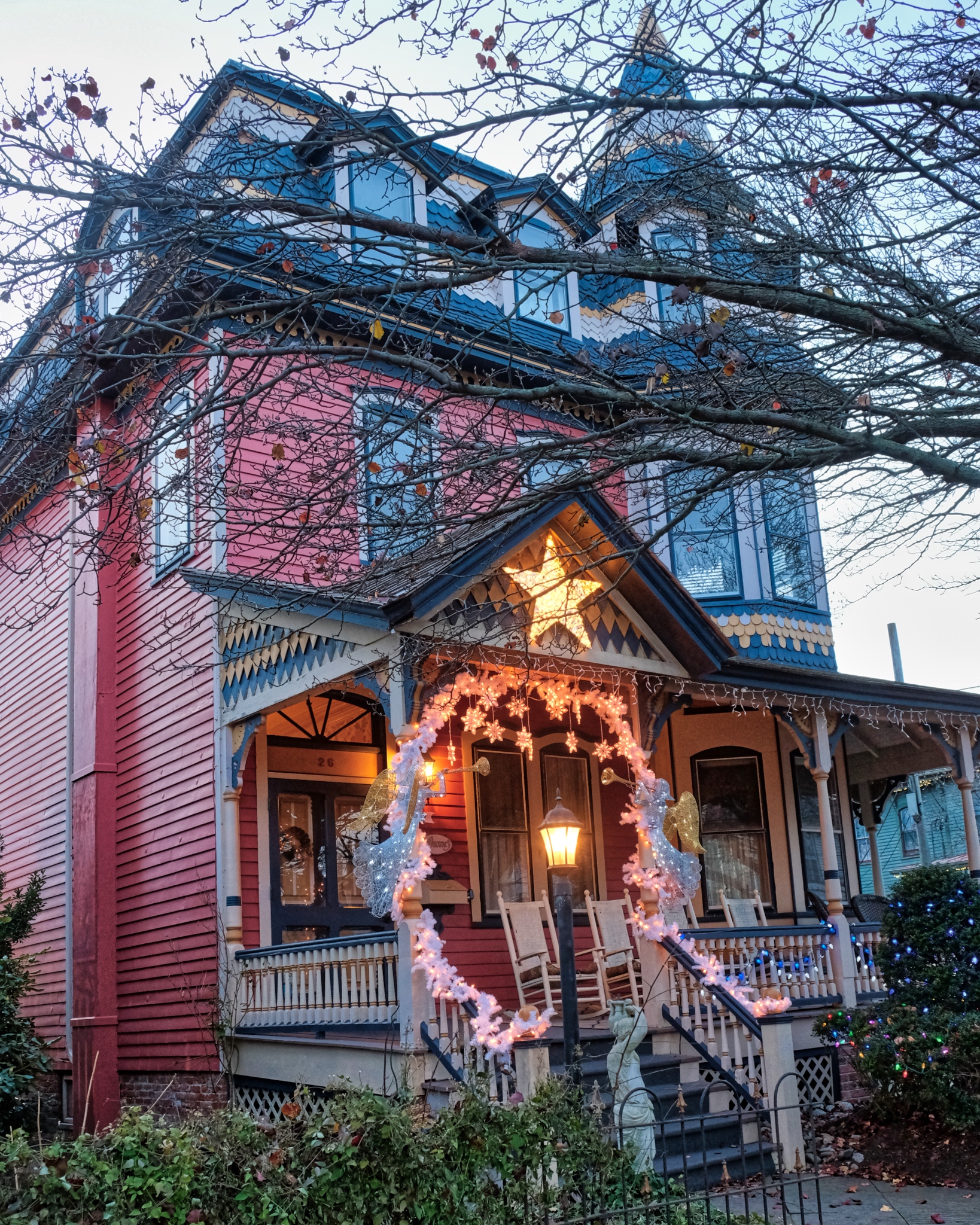 Lovely turreted Victorian mansion.
Lovely turreted Victorian mansion.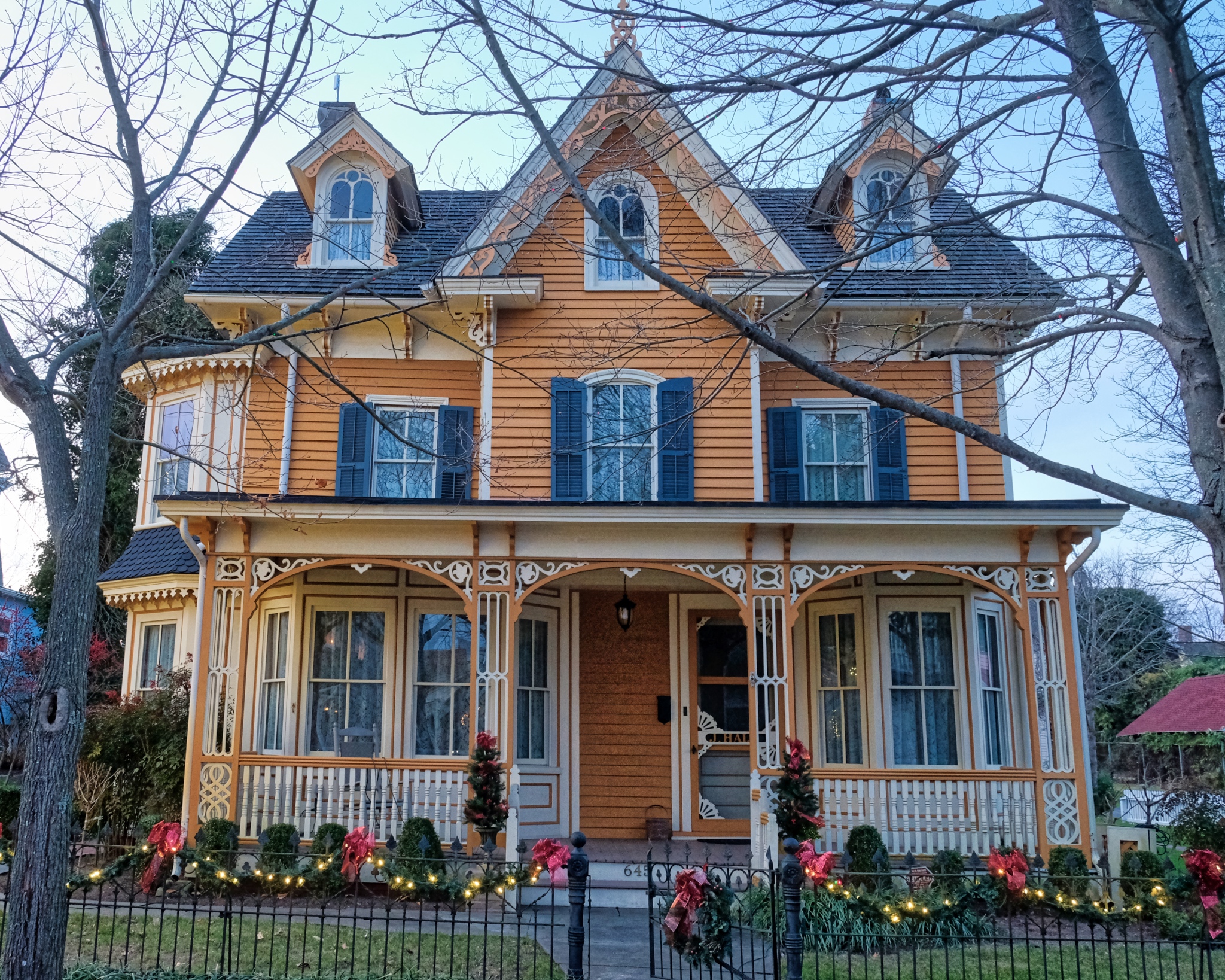 The pastel colors of the perfectly restored (maintained?) Victorians were so sweet.
The pastel colors of the perfectly restored (maintained?) Victorians were so sweet.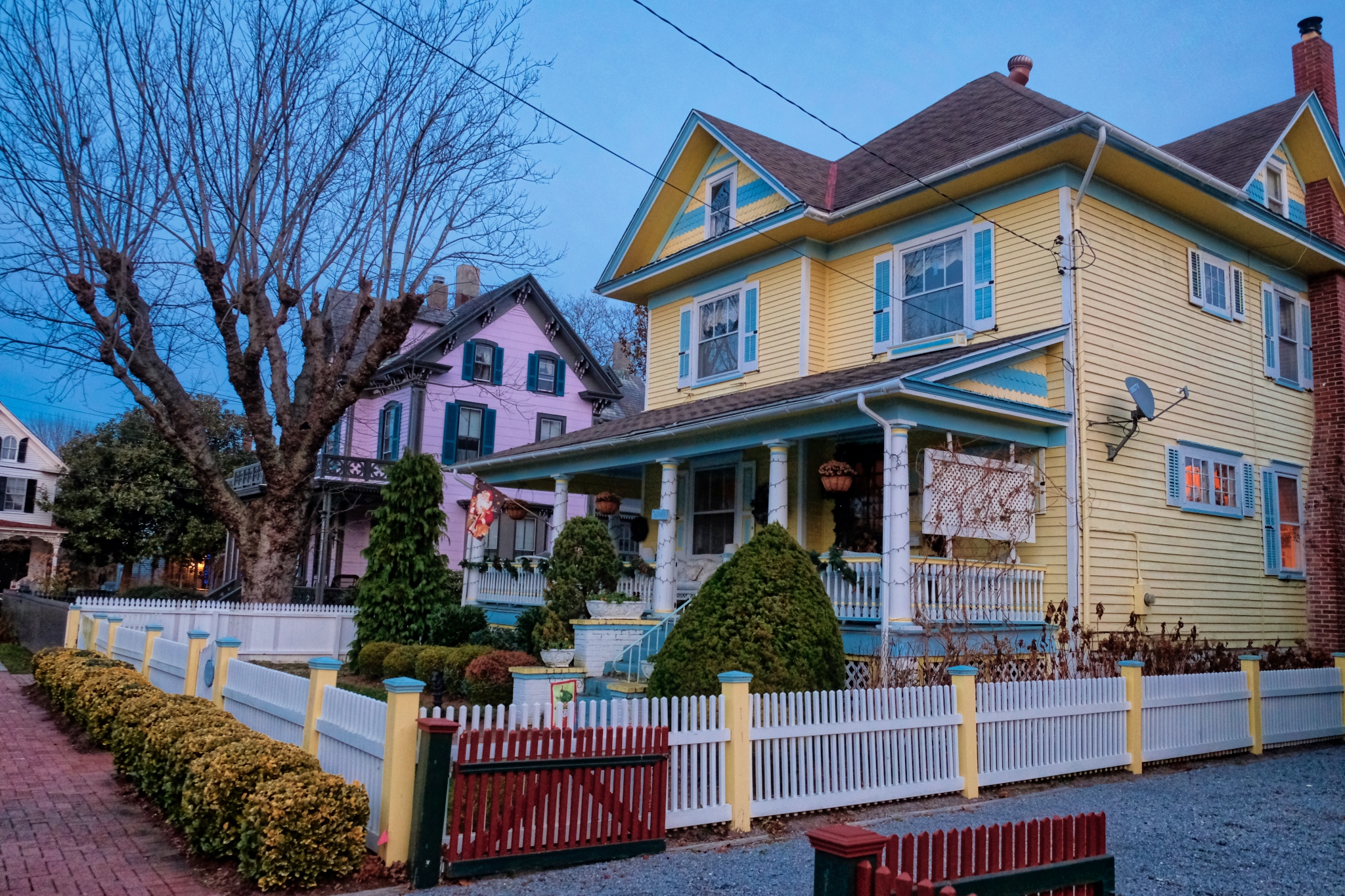 As the darkness continued to fall, the old houses began to light up in their Christmas charm.
As the darkness continued to fall, the old houses began to light up in their Christmas charm.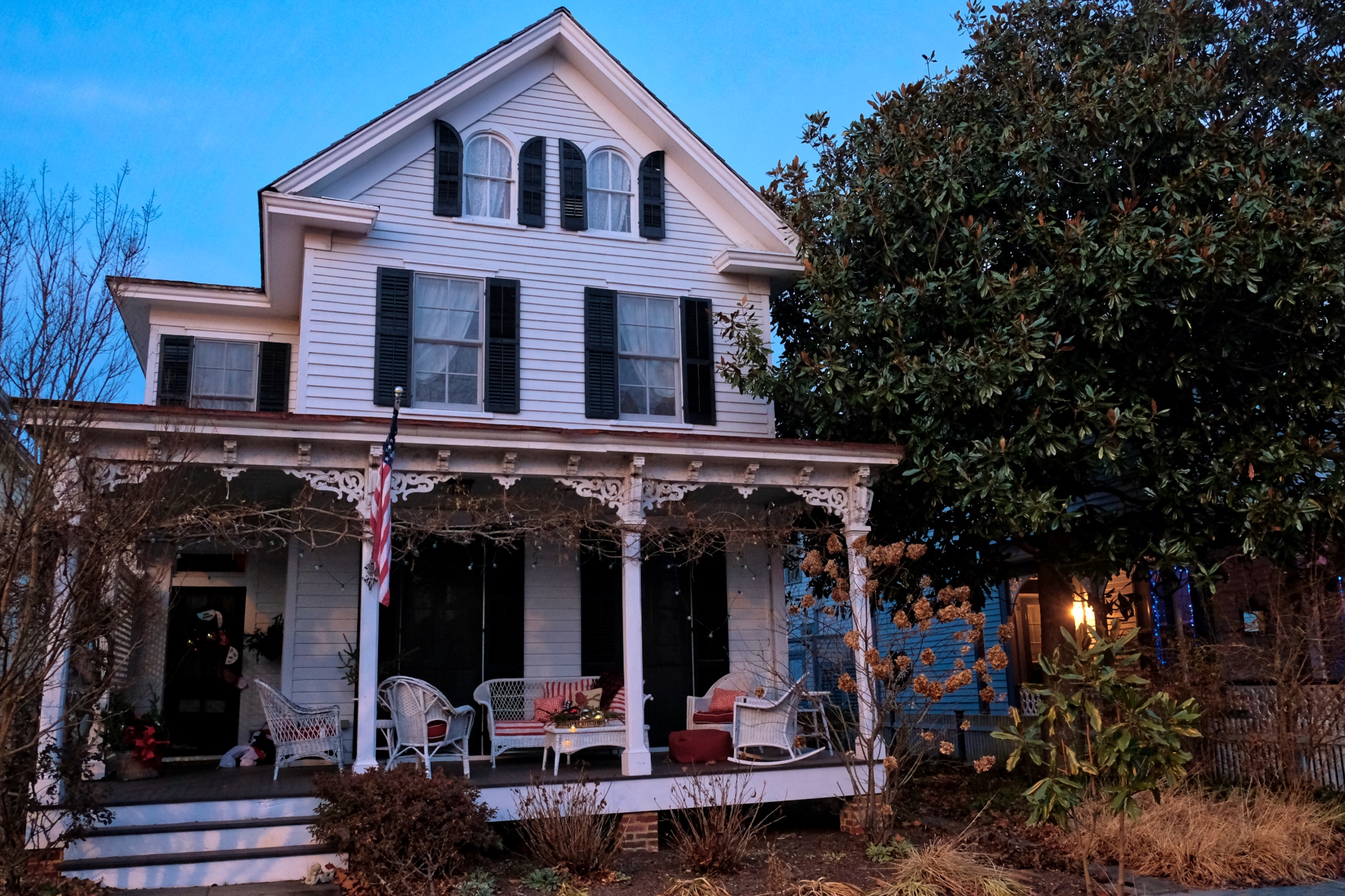 Although not as grand or ornate as some others in Cape May, I like this modest white house the most: it seems so inviting.
Although not as grand or ornate as some others in Cape May, I like this modest white house the most: it seems so inviting.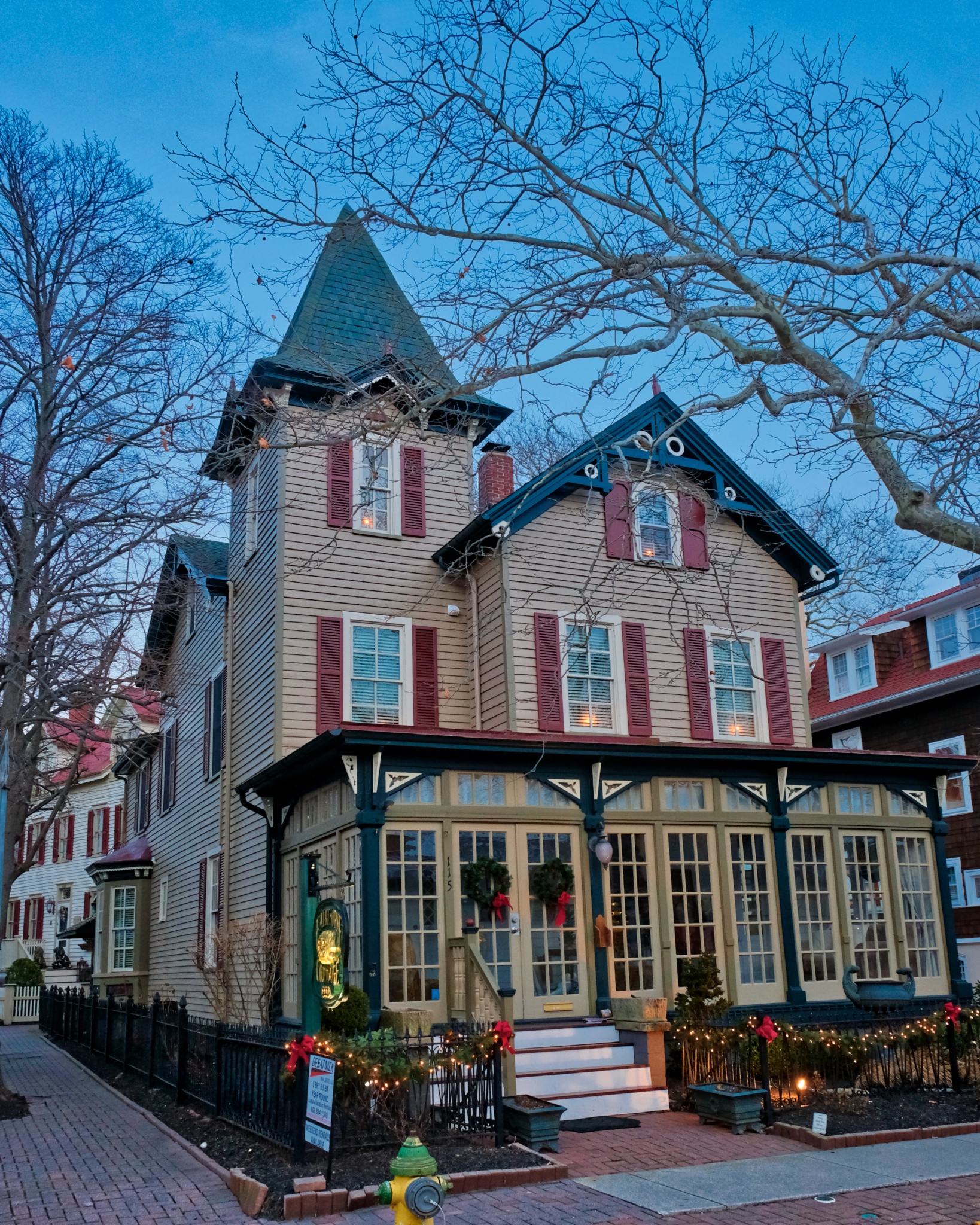 Another one of my favorites . . . that enclosed porch is just perfect!
Another one of my favorites . . . that enclosed porch is just perfect!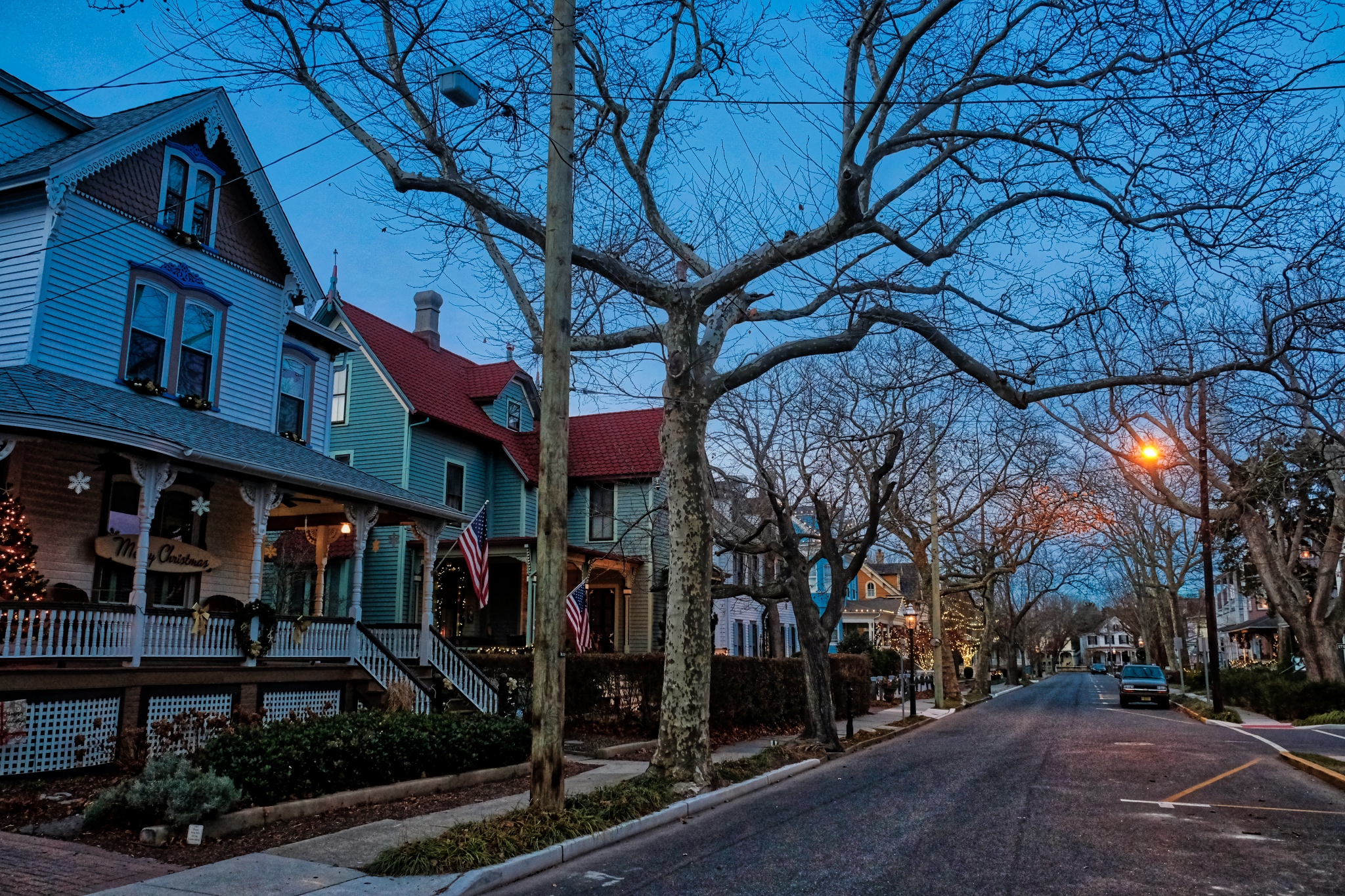 A typical Cape May street in the Historical District.
A typical Cape May street in the Historical District.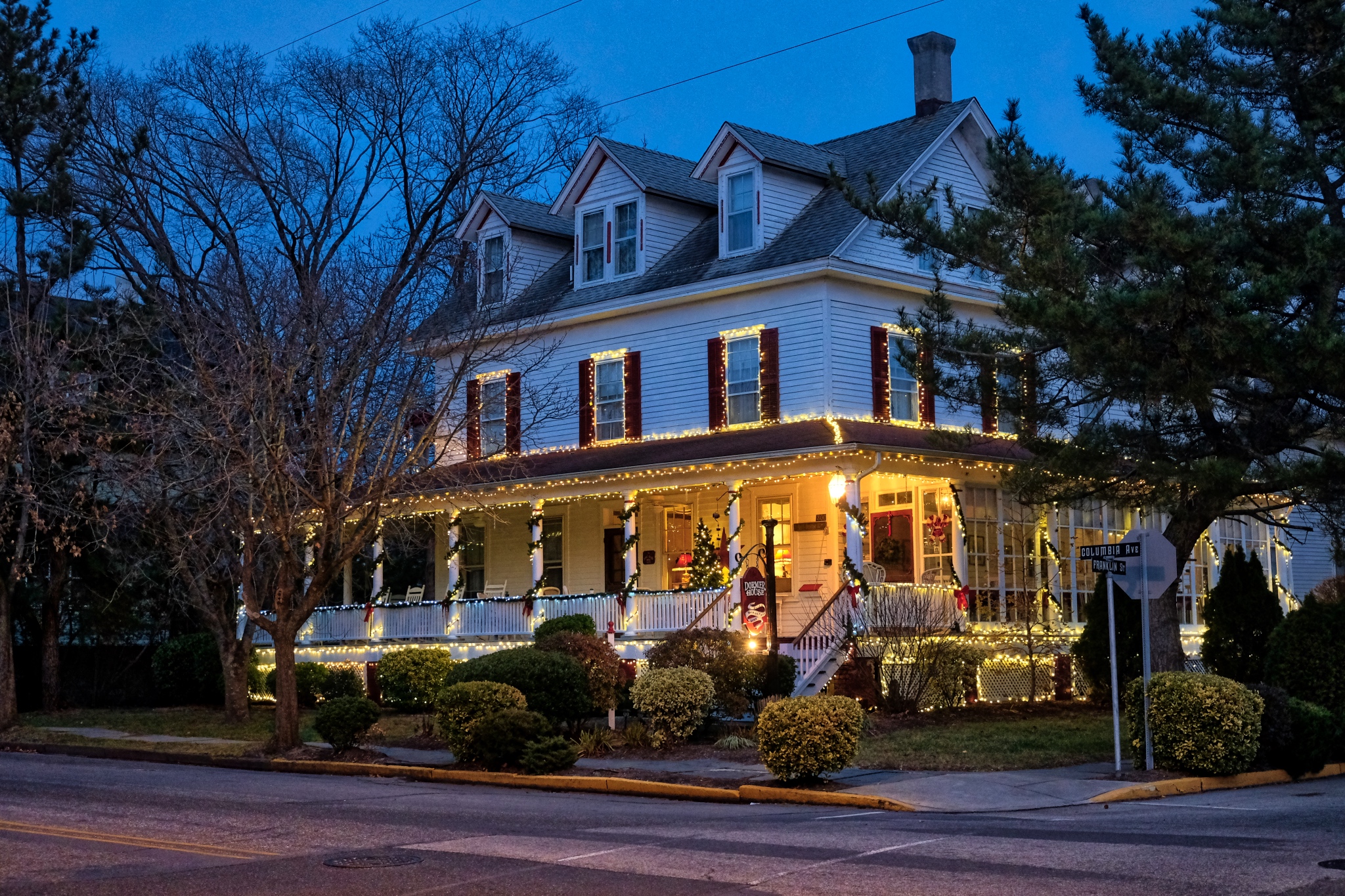 Photographers love the 'magic hour' - the first and last hour of sunlight, but we also love the 'Blue Hour' - the time just before dark when the sky is a deep blue.
Photographers love the 'magic hour' - the first and last hour of sunlight, but we also love the 'Blue Hour' - the time just before dark when the sky is a deep blue.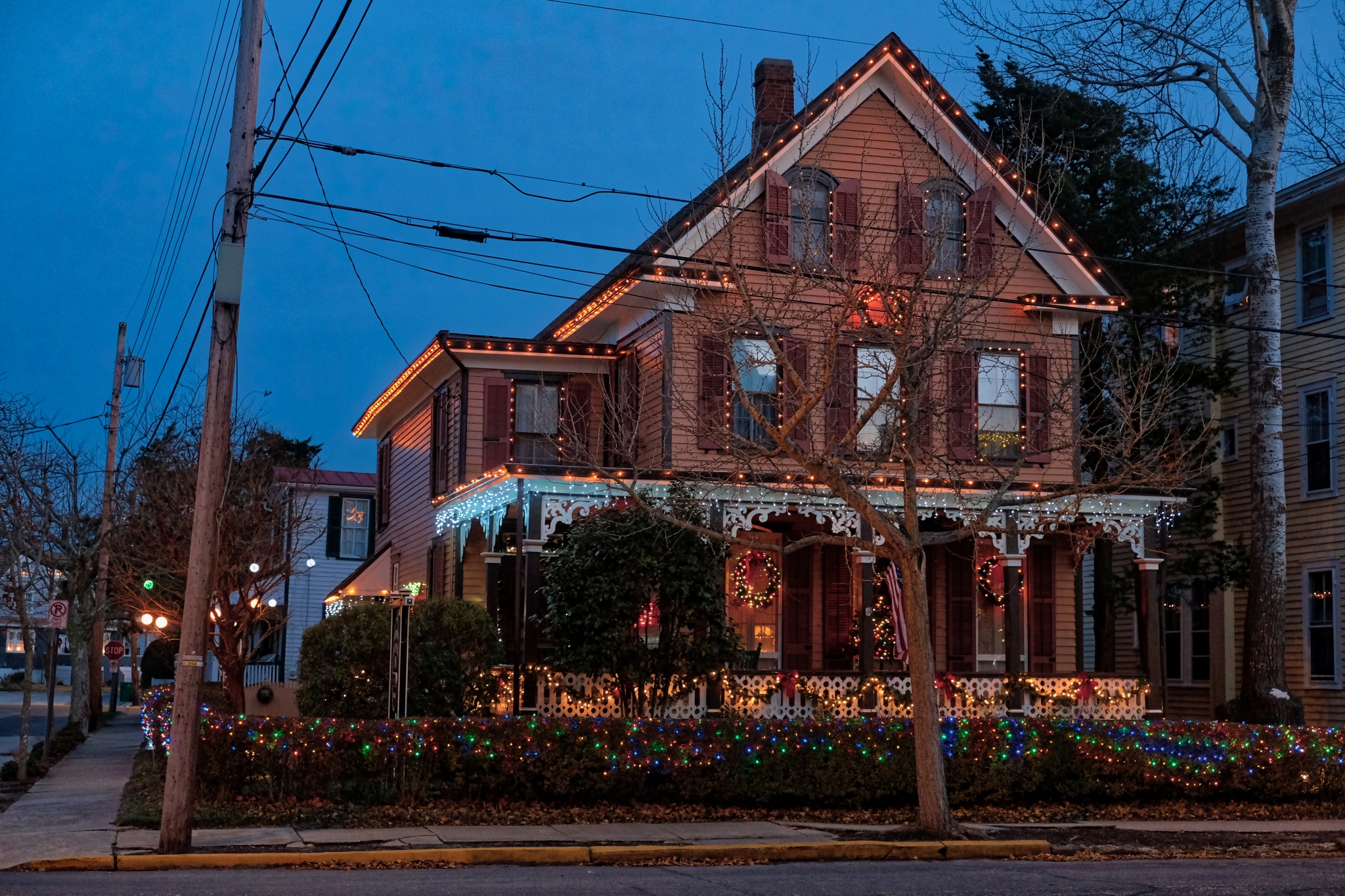 The holiday decorations were very nicely done . . . and NONE of those horrible inflatables!
The holiday decorations were very nicely done . . . and NONE of those horrible inflatables!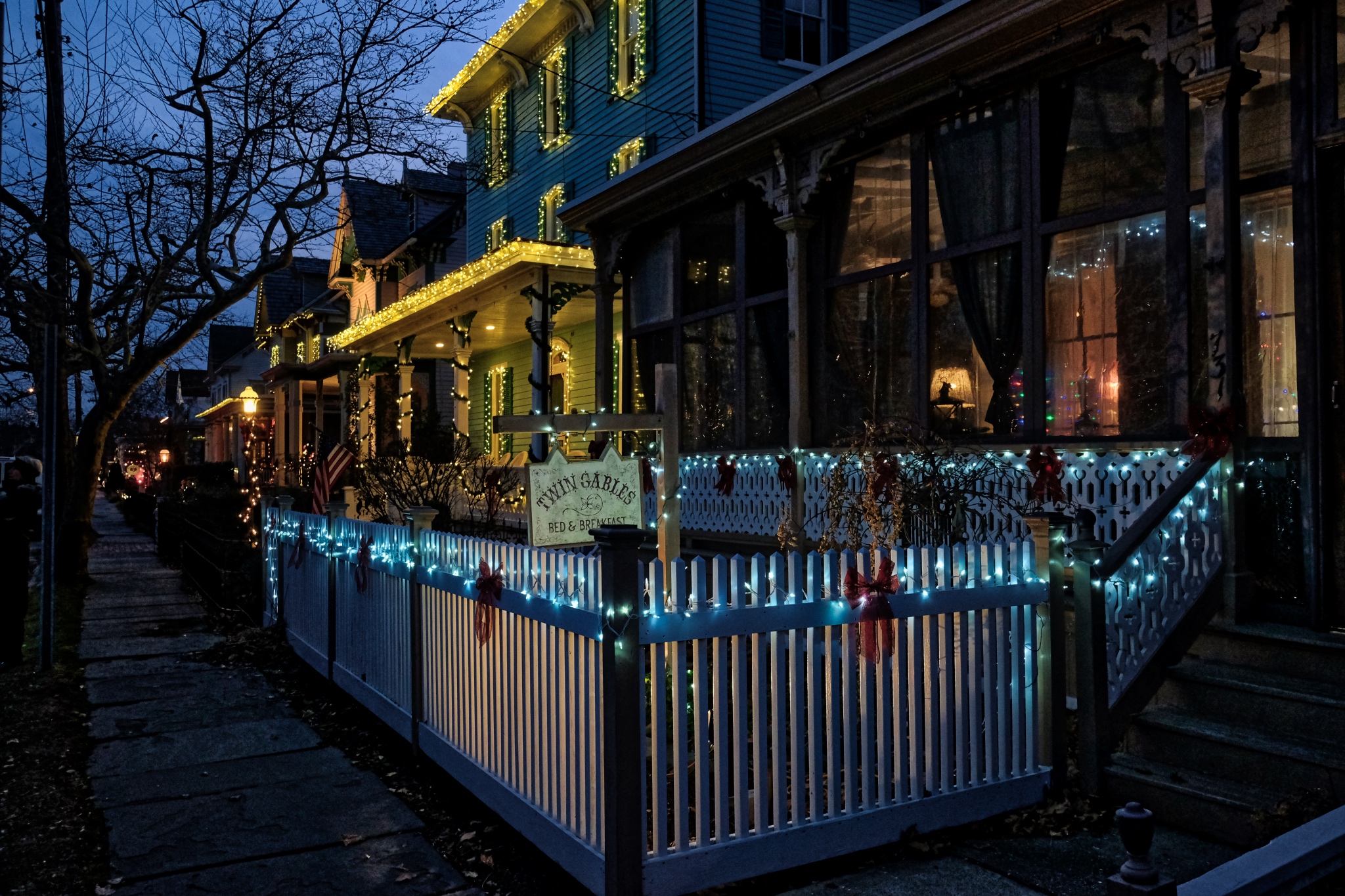 Such a lovely little town . . . "The way it used it be" . . . at least for the few who could afford it, even back then. My friends said this is "Philadelphia money."
Such a lovely little town . . . "The way it used it be" . . . at least for the few who could afford it, even back then. My friends said this is "Philadelphia money."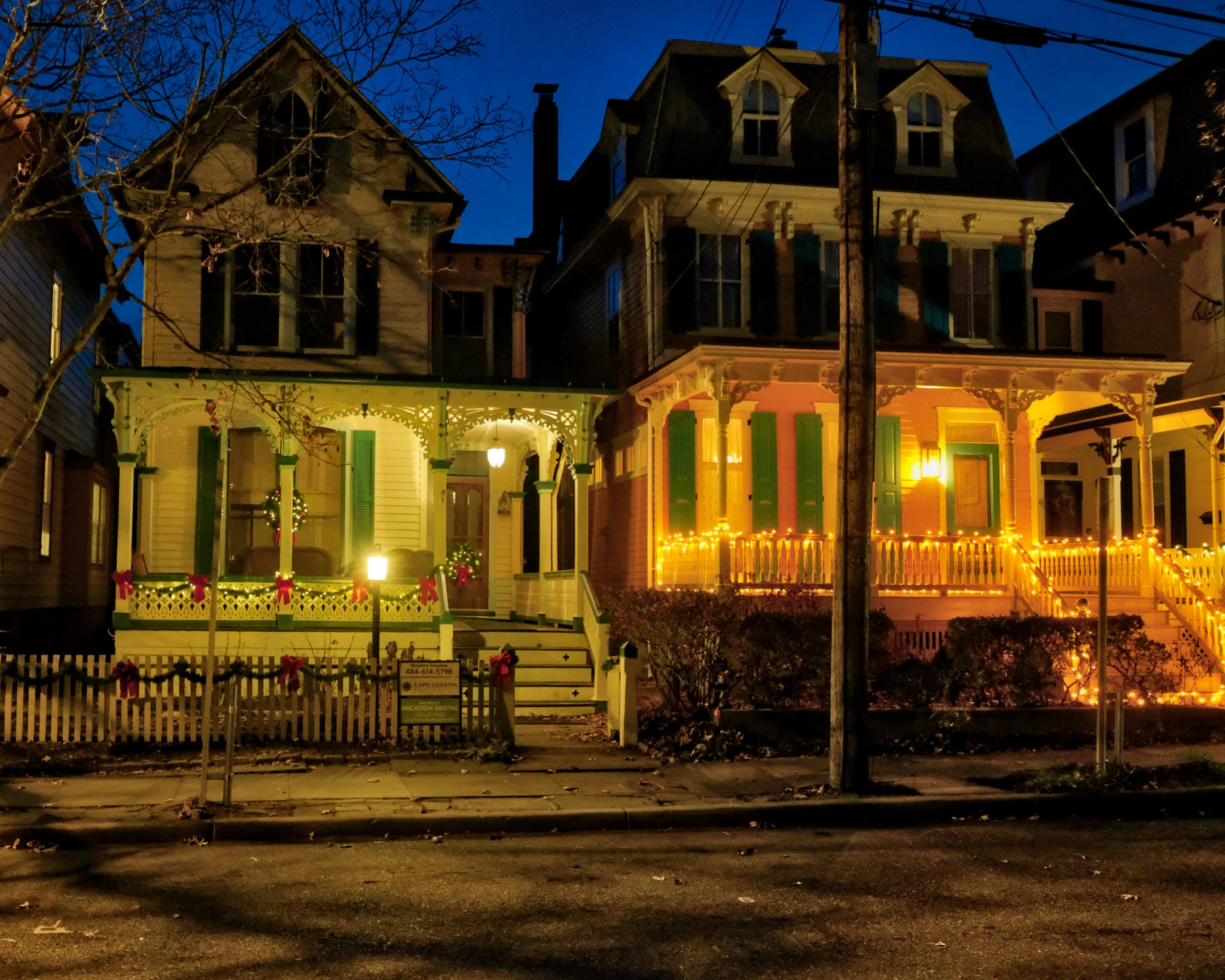 At times it seemed we were walking through a movie set . . . so perfect was the restoration . . .
At times it seemed we were walking through a movie set . . . so perfect was the restoration . . .  These two were gems: big porches on both floors!
These two were gems: big porches on both floors!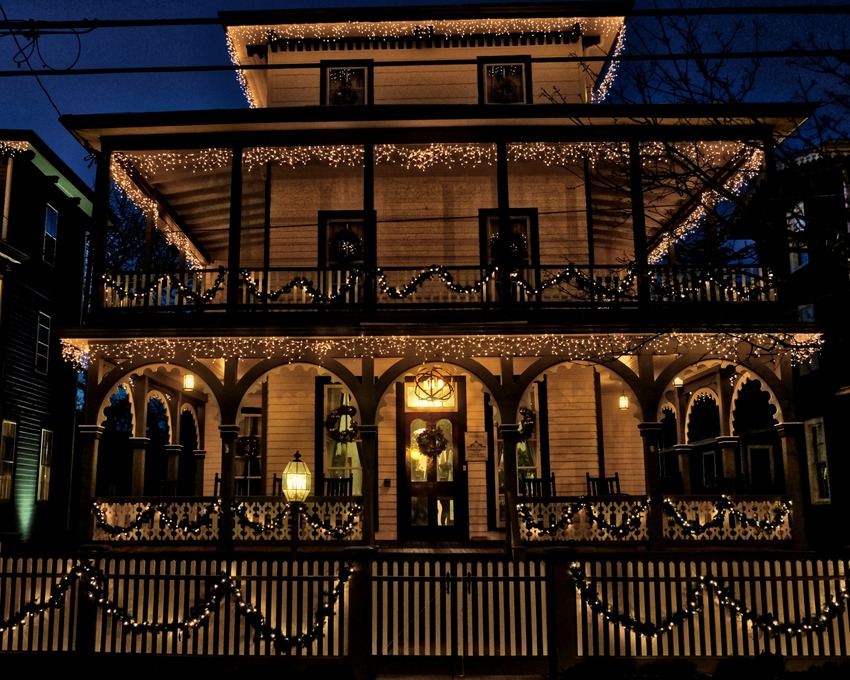 Such a fantasy house!
Such a fantasy house!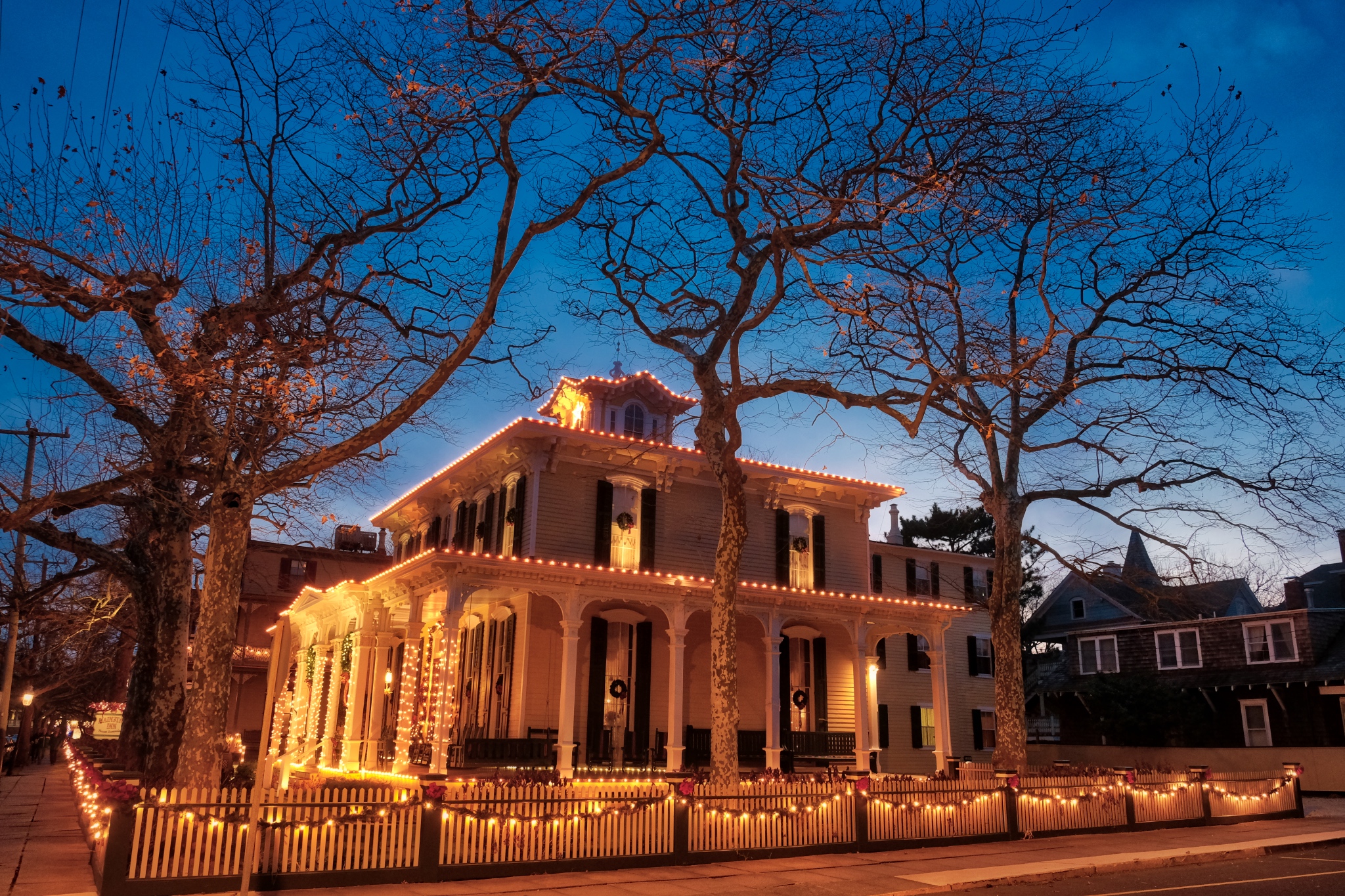 Cape May!
Cape May! 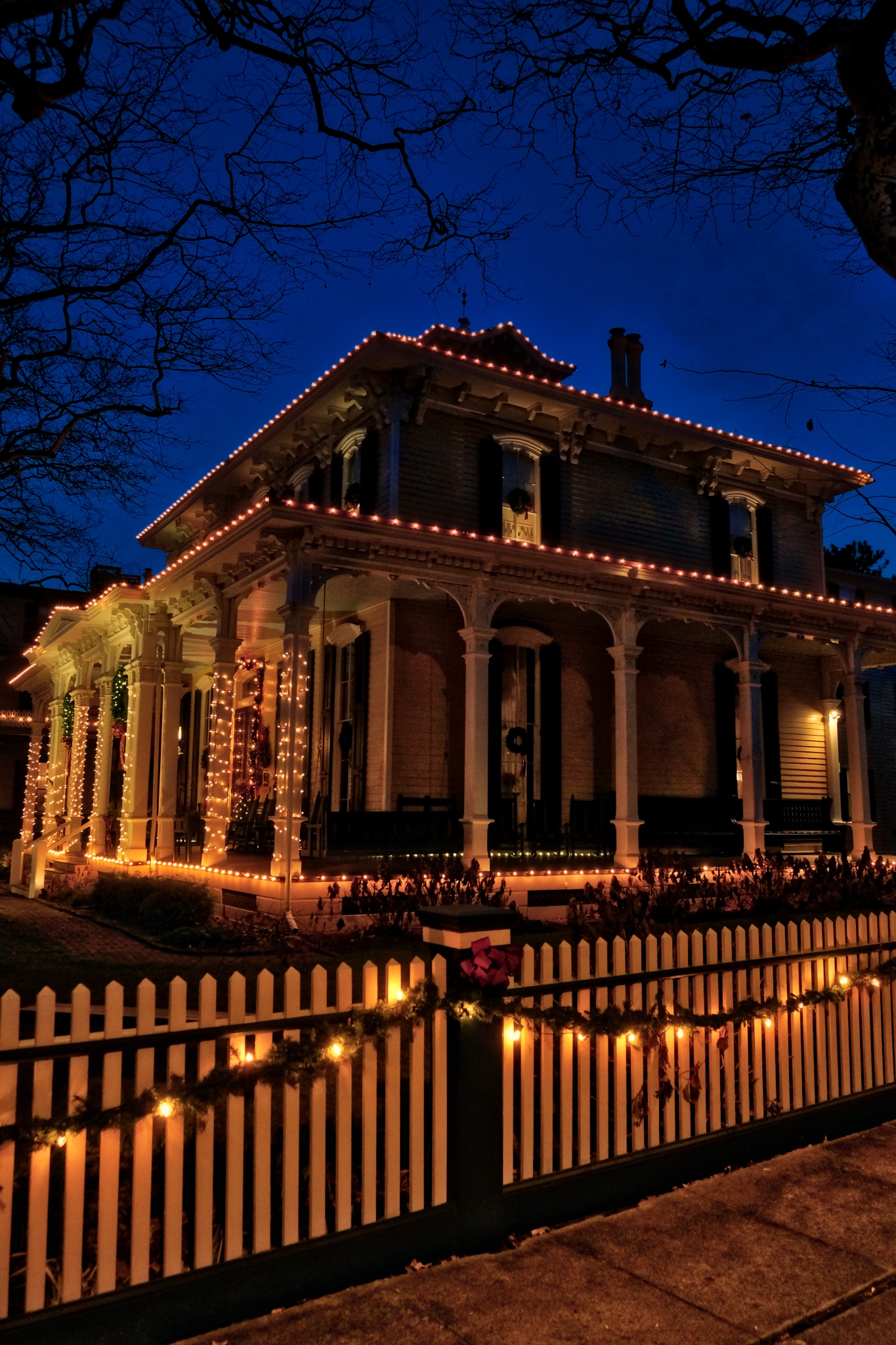 A beautiful gem in the blue hour.
A beautiful gem in the blue hour.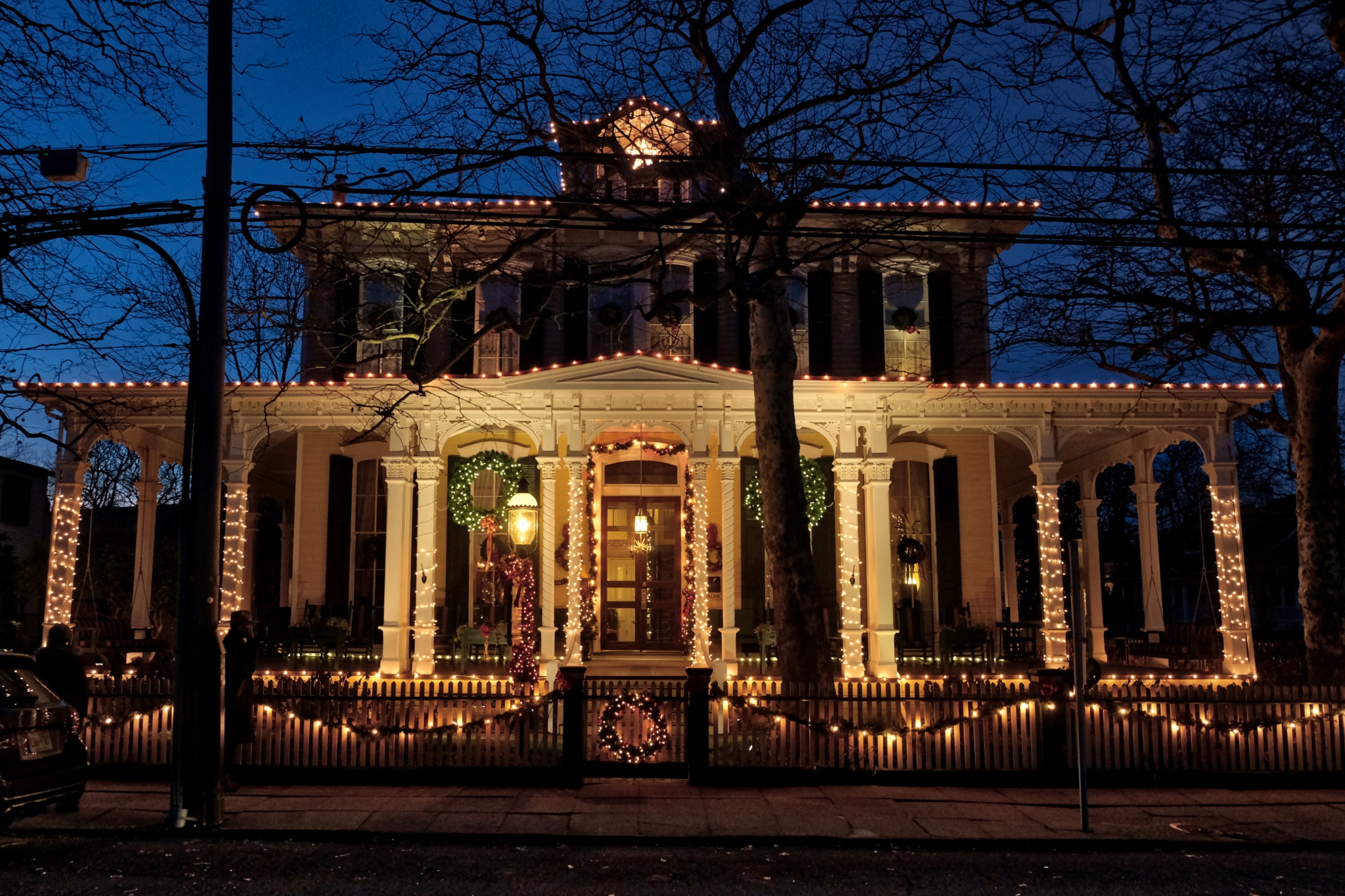 I could live here!
I could live here!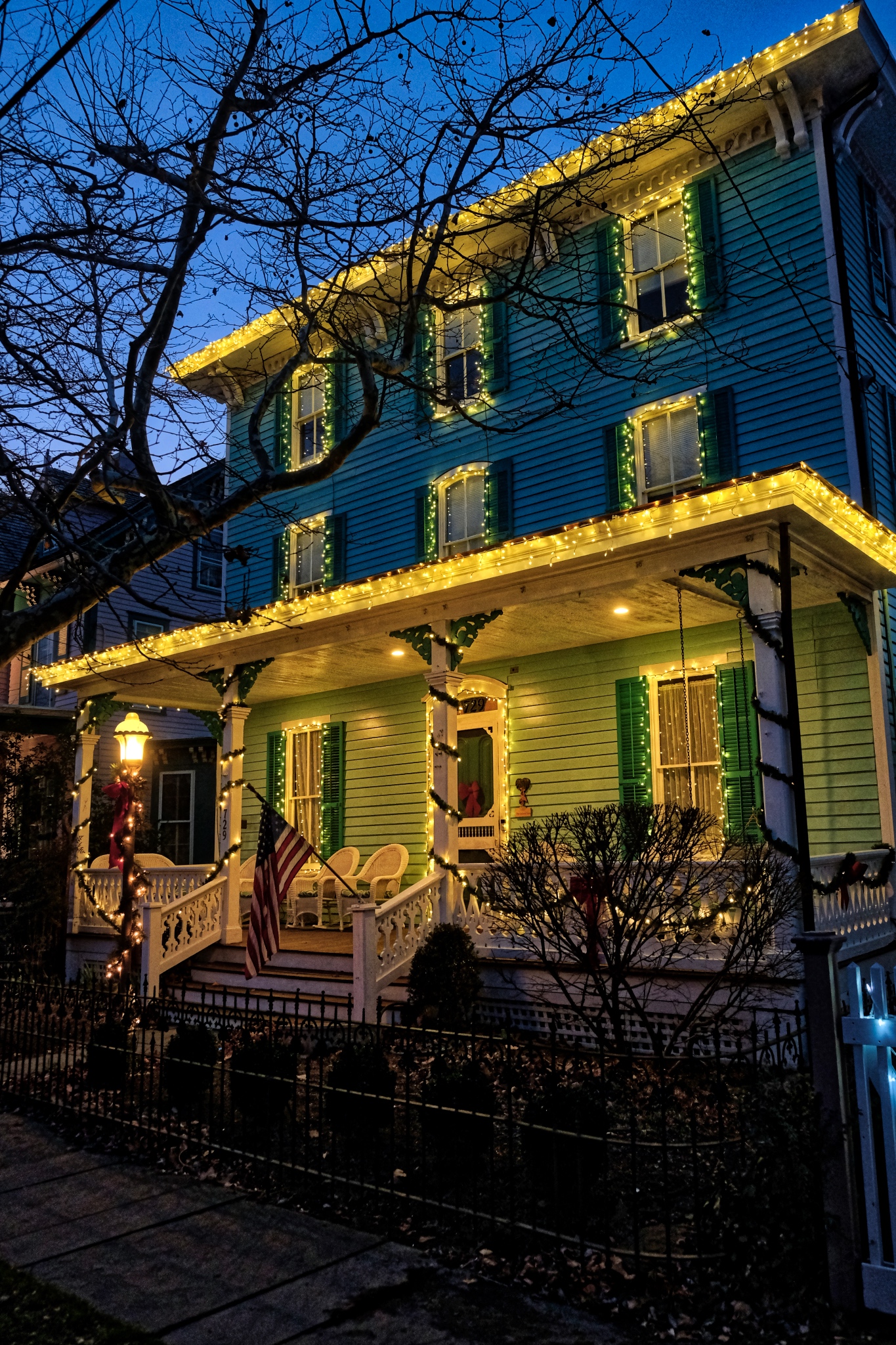 The old houses come in many colors.
The old houses come in many colors.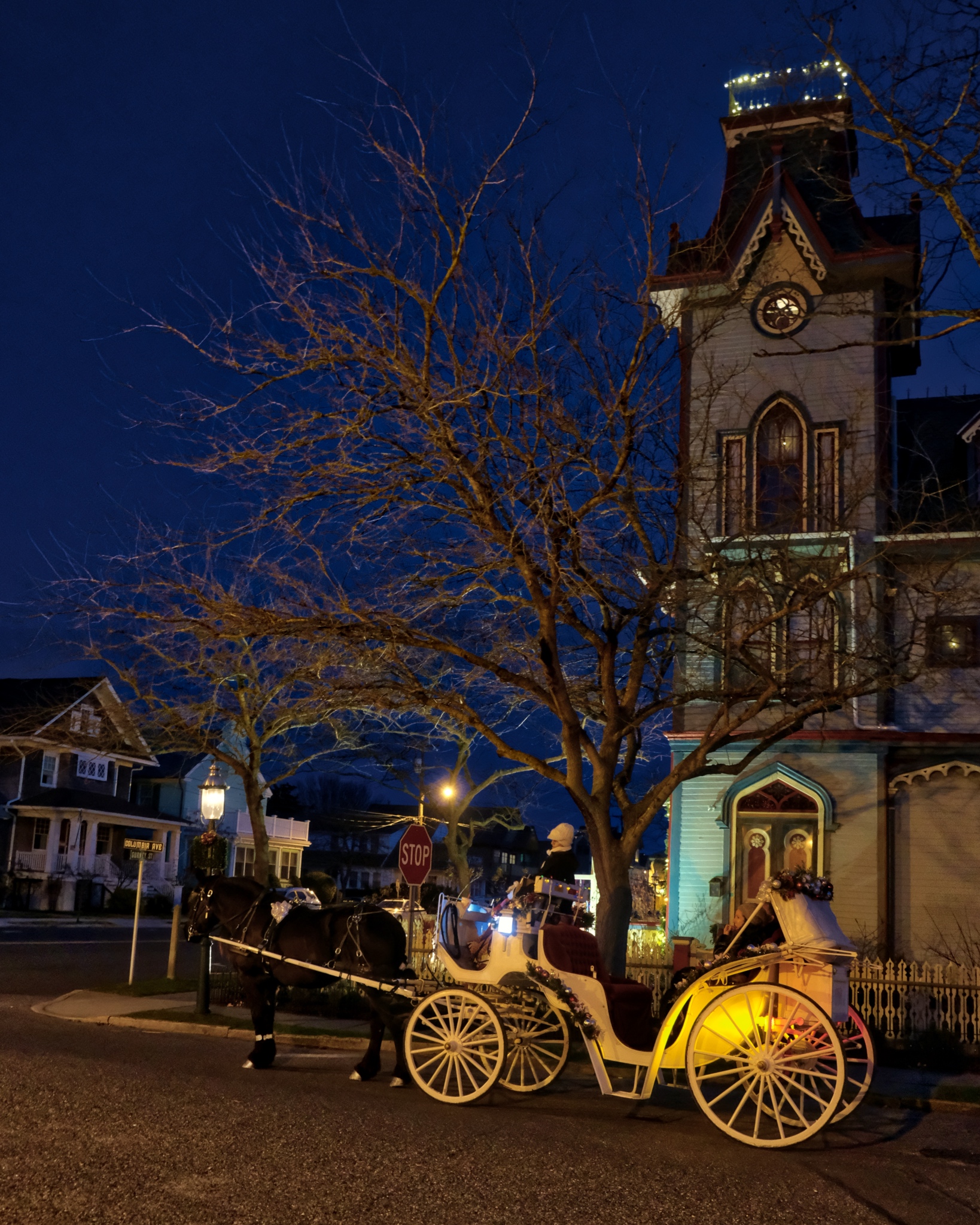 Tourists come to Cape May all year.
Tourists come to Cape May all year. 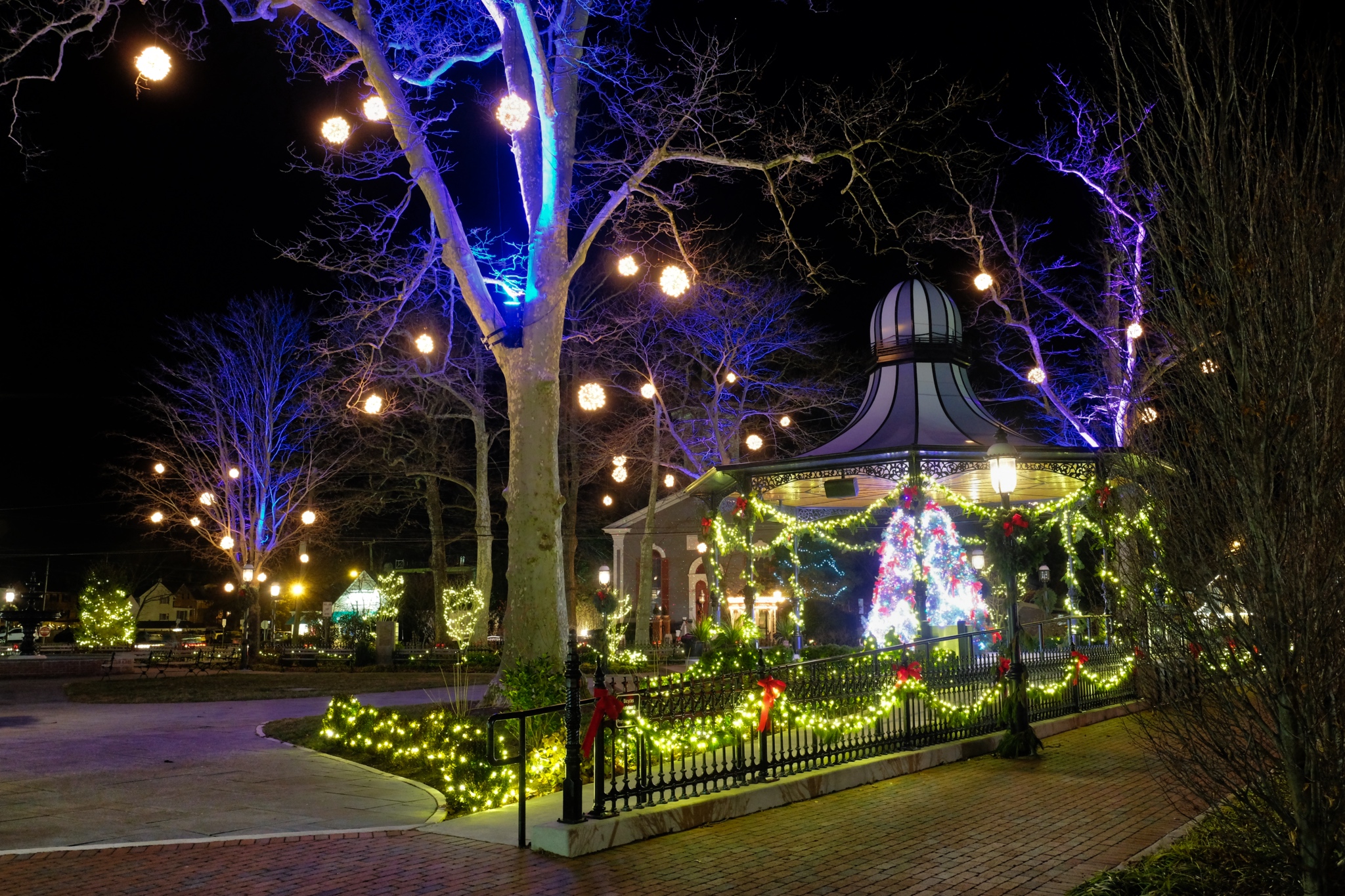 There is an old timey park in Cape May with a lovely gazebo.
There is an old timey park in Cape May with a lovely gazebo.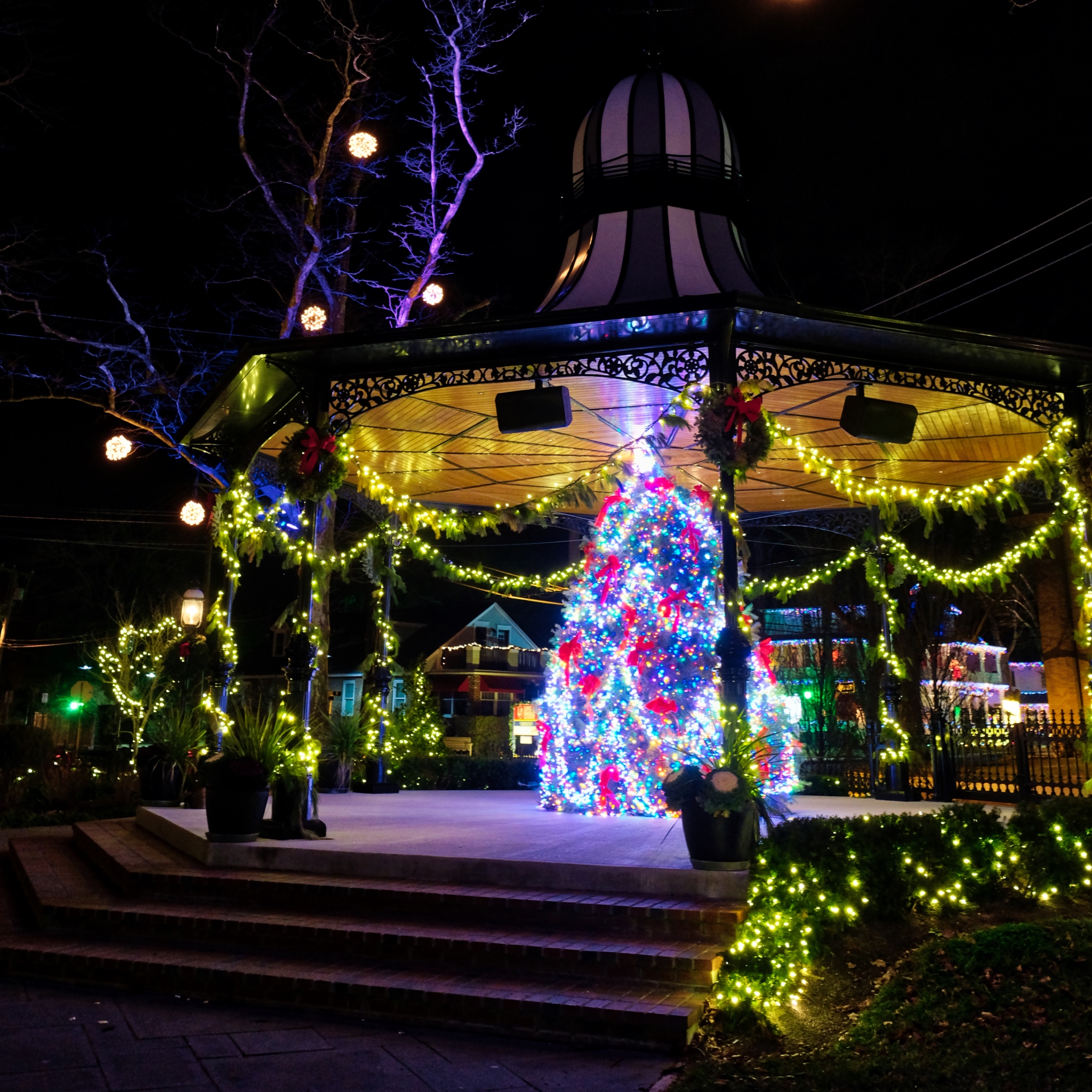 Such a festive feeling.
Such a festive feeling.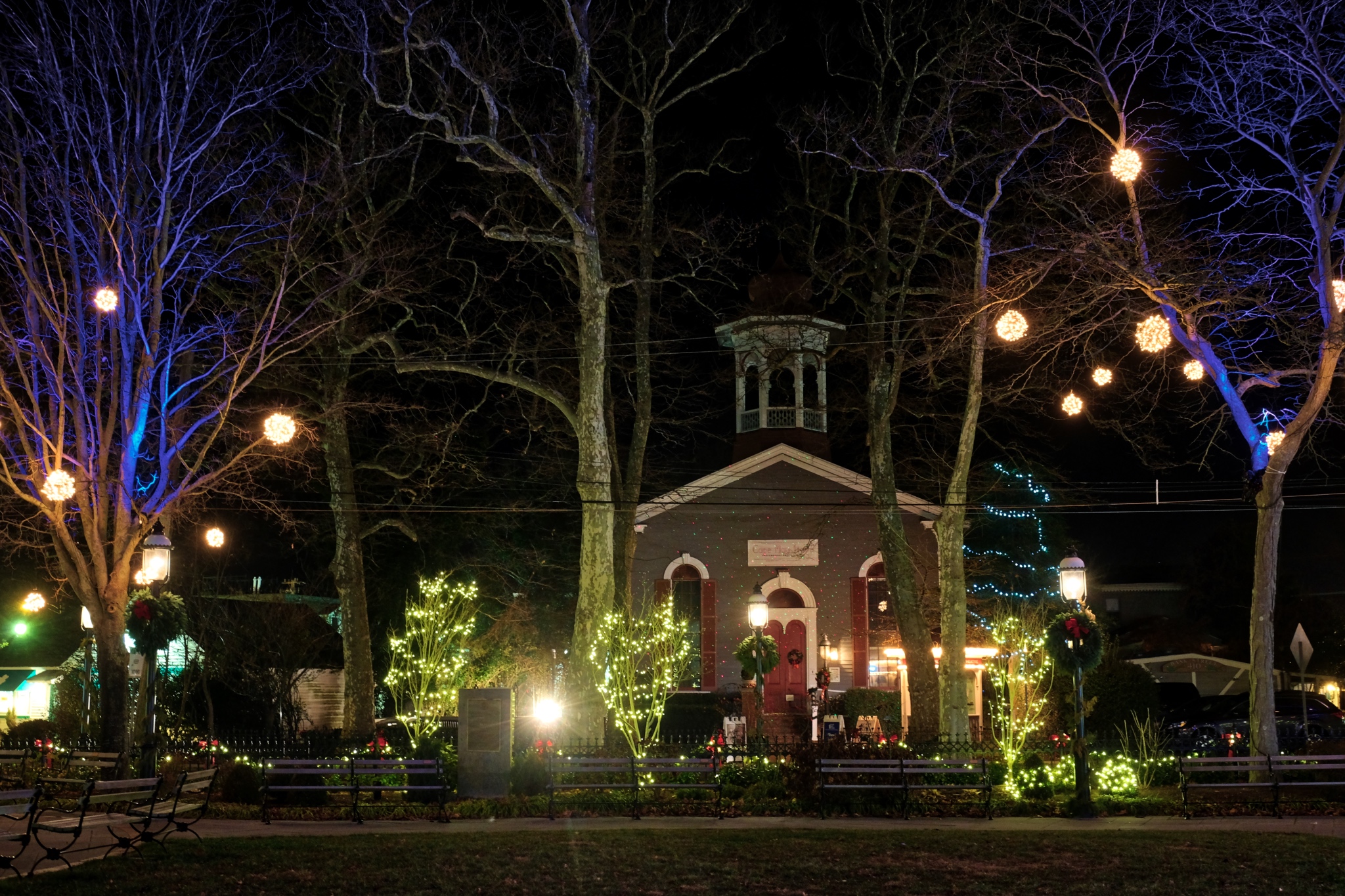 The buildings around the old town square.
The buildings around the old town square.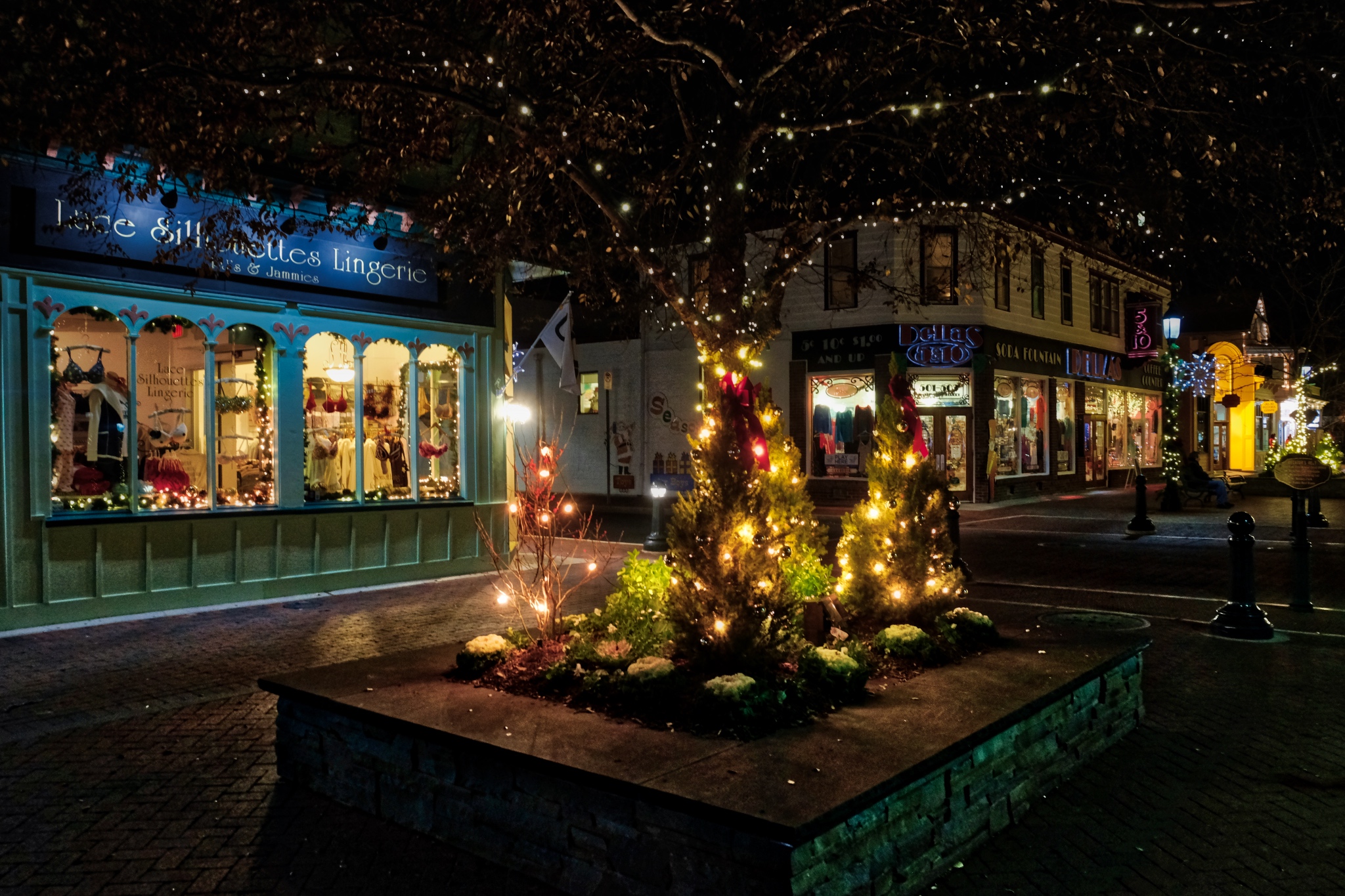 There is a nice walking street of old shops in Cape May proper.
There is a nice walking street of old shops in Cape May proper.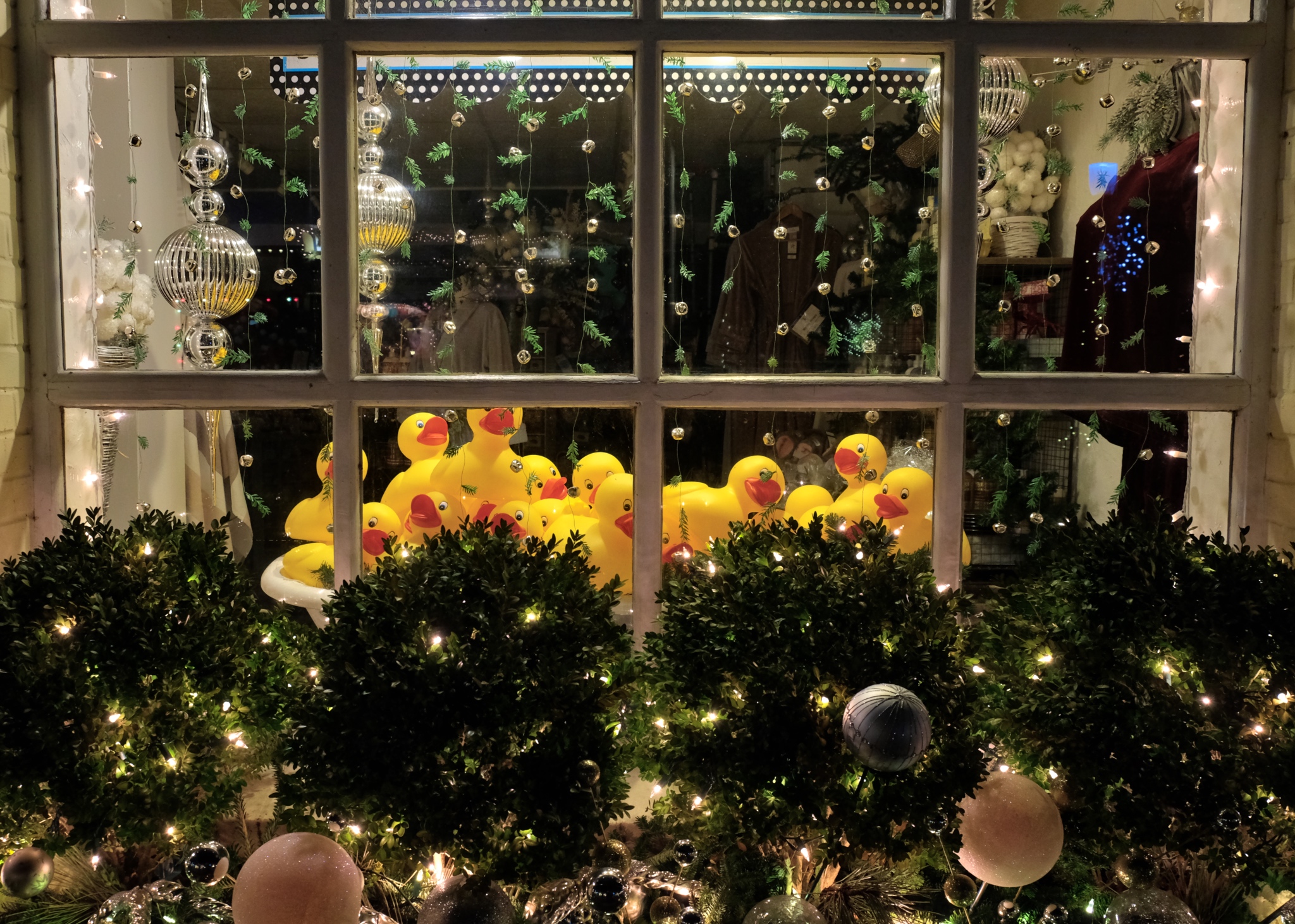 The shop windows were dressed for the season.
The shop windows were dressed for the season.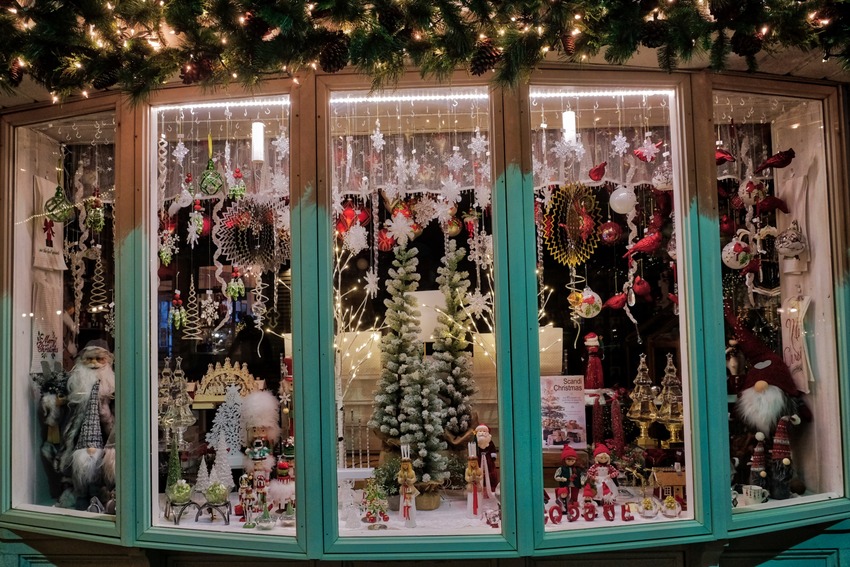 So pretty.
So pretty.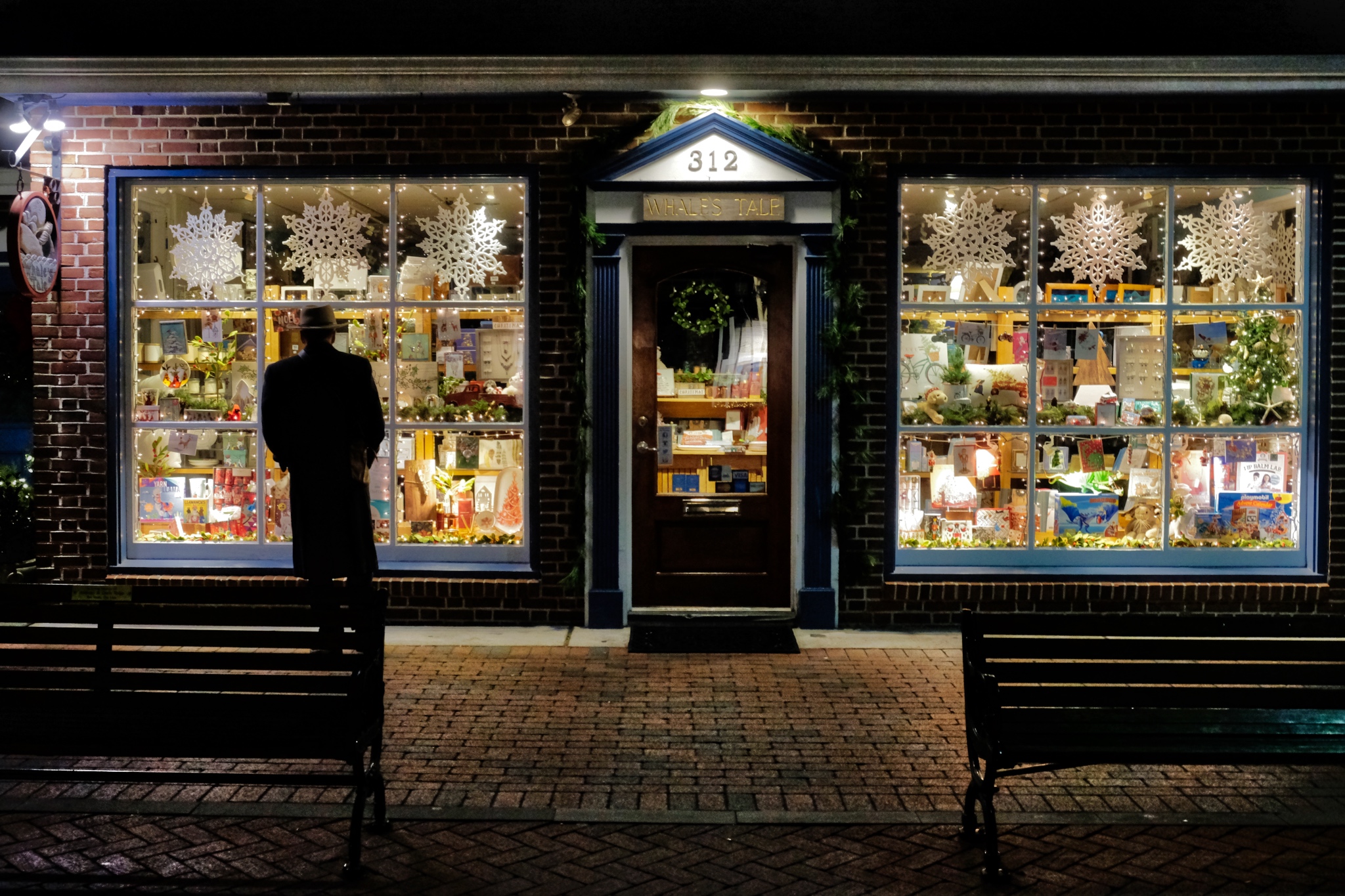 My friend, Bud, doing some last minute shopping.
My friend, Bud, doing some last minute shopping.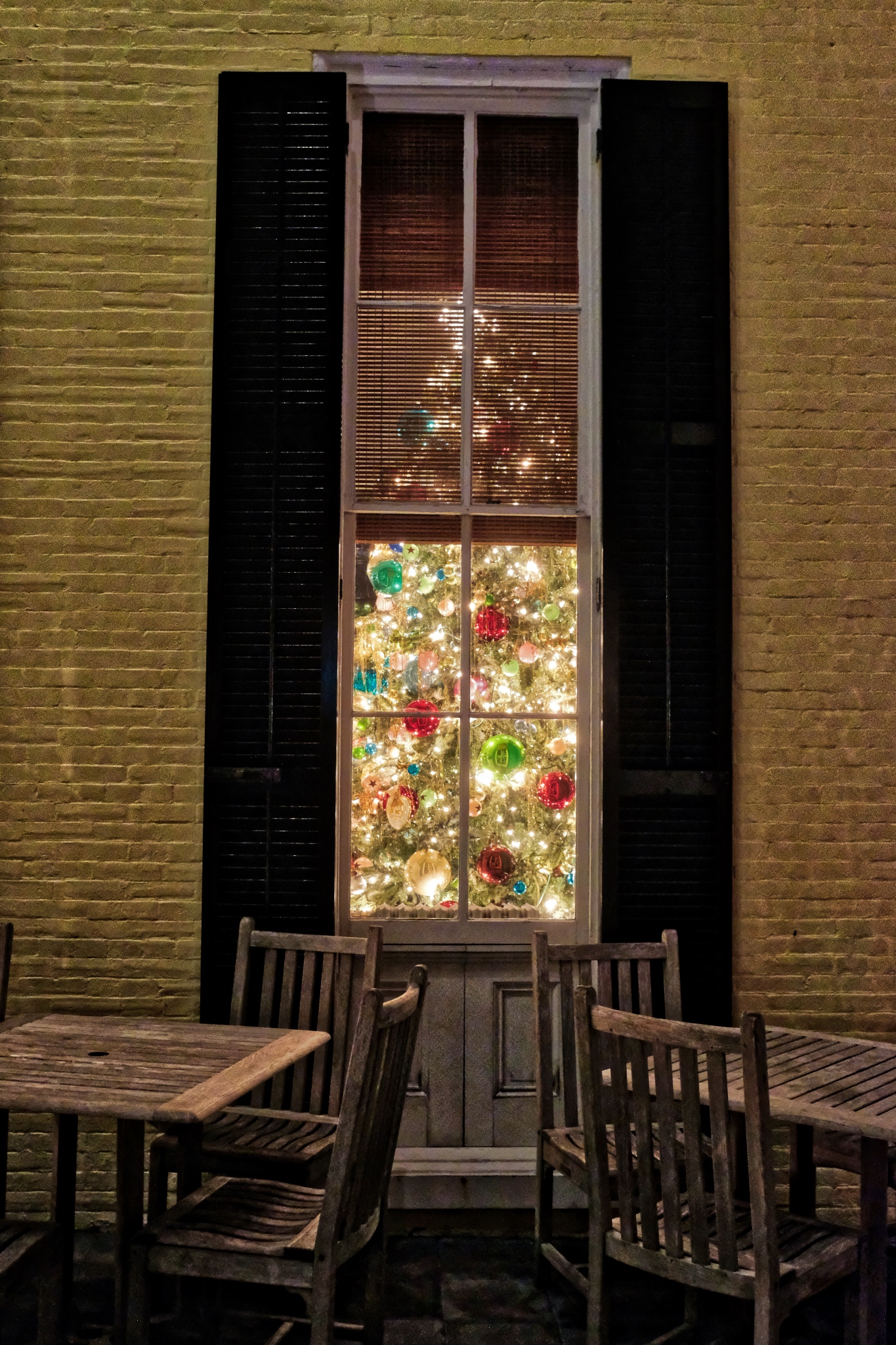 Christmas trees seemingly in every window!
Christmas trees seemingly in every window!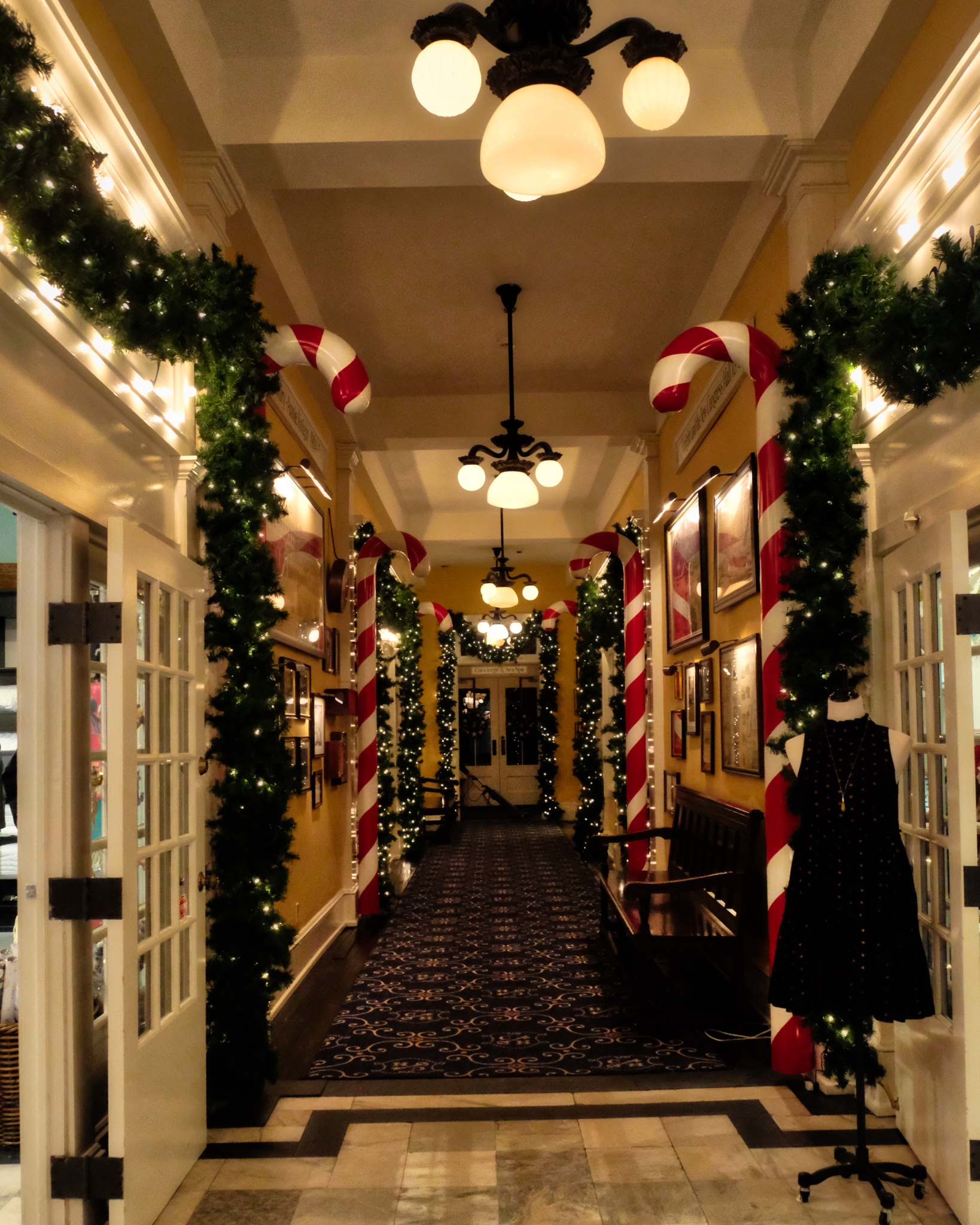 The interior of this hotel was nicely festooned with Christmas regalia.
The interior of this hotel was nicely festooned with Christmas regalia.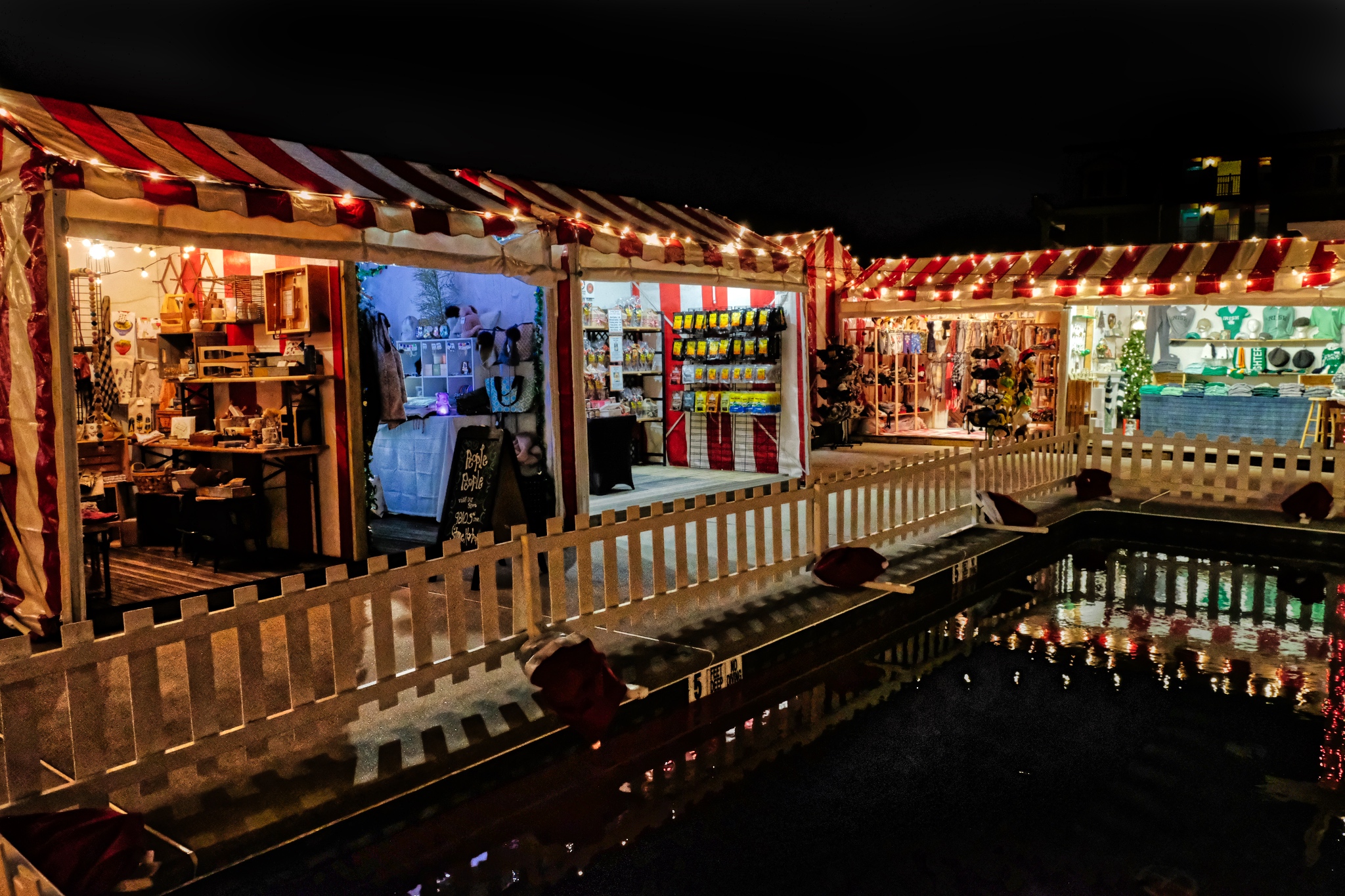 There was even a small Christmas Market in the garden of the old Heritage Hall Hotel. Yes, we had glüwine.
There was even a small Christmas Market in the garden of the old Heritage Hall Hotel. Yes, we had glüwine.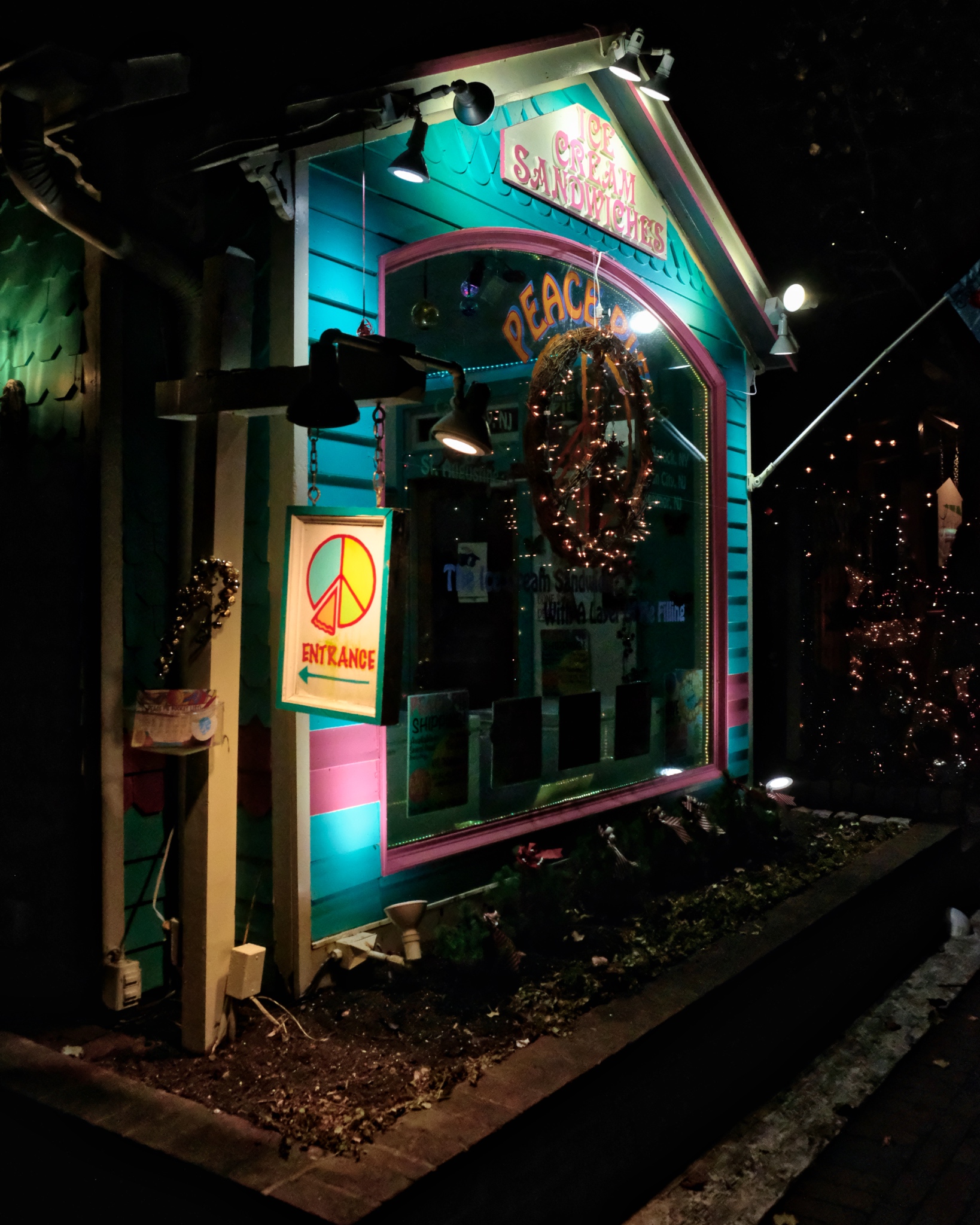 There were many cute little shops around the town center.
There were many cute little shops around the town center.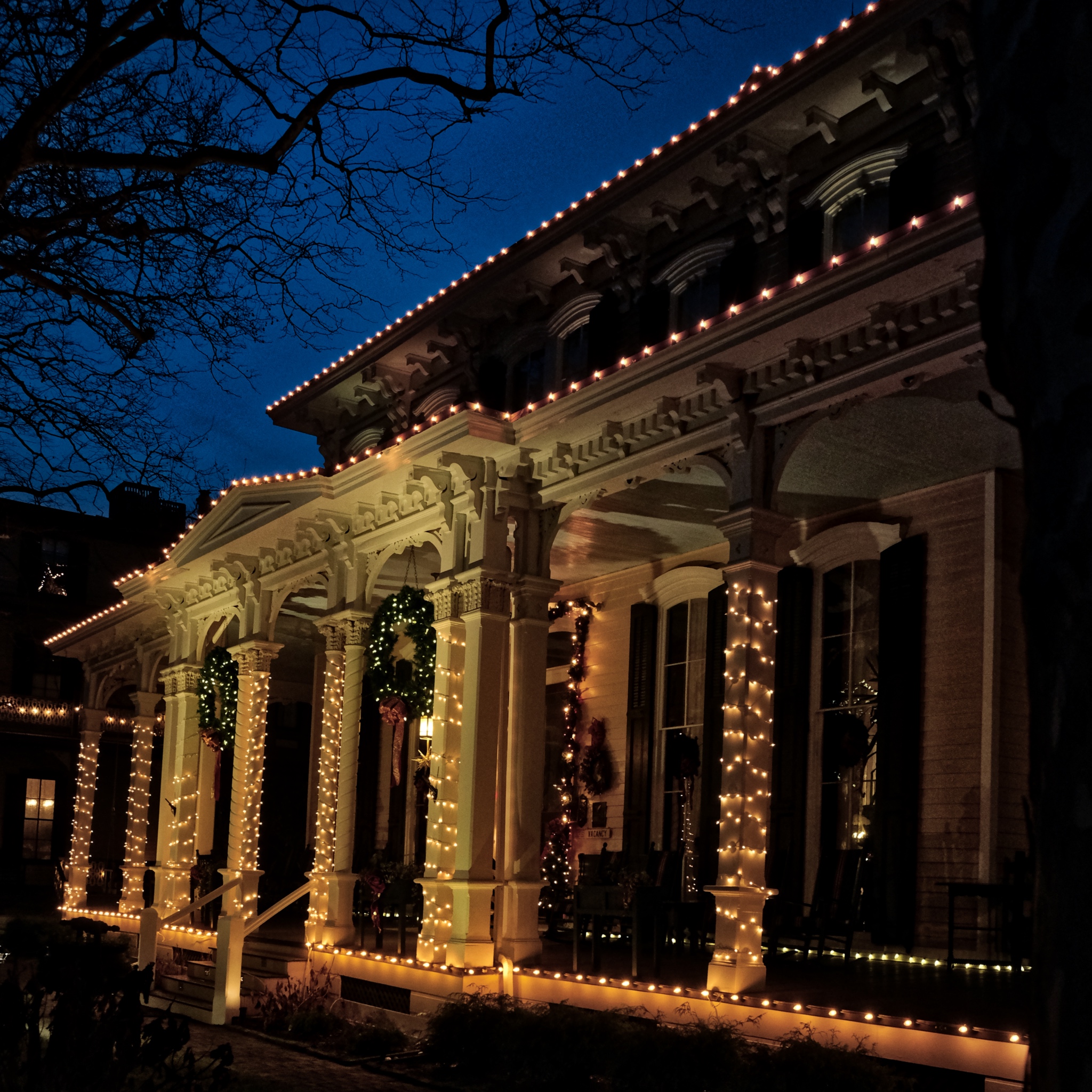 As sweet as the commercial area of Cape May was, the star of the city is the vast numbers of Victorian houses lit in Christmas decorations.
As sweet as the commercial area of Cape May was, the star of the city is the vast numbers of Victorian houses lit in Christmas decorations.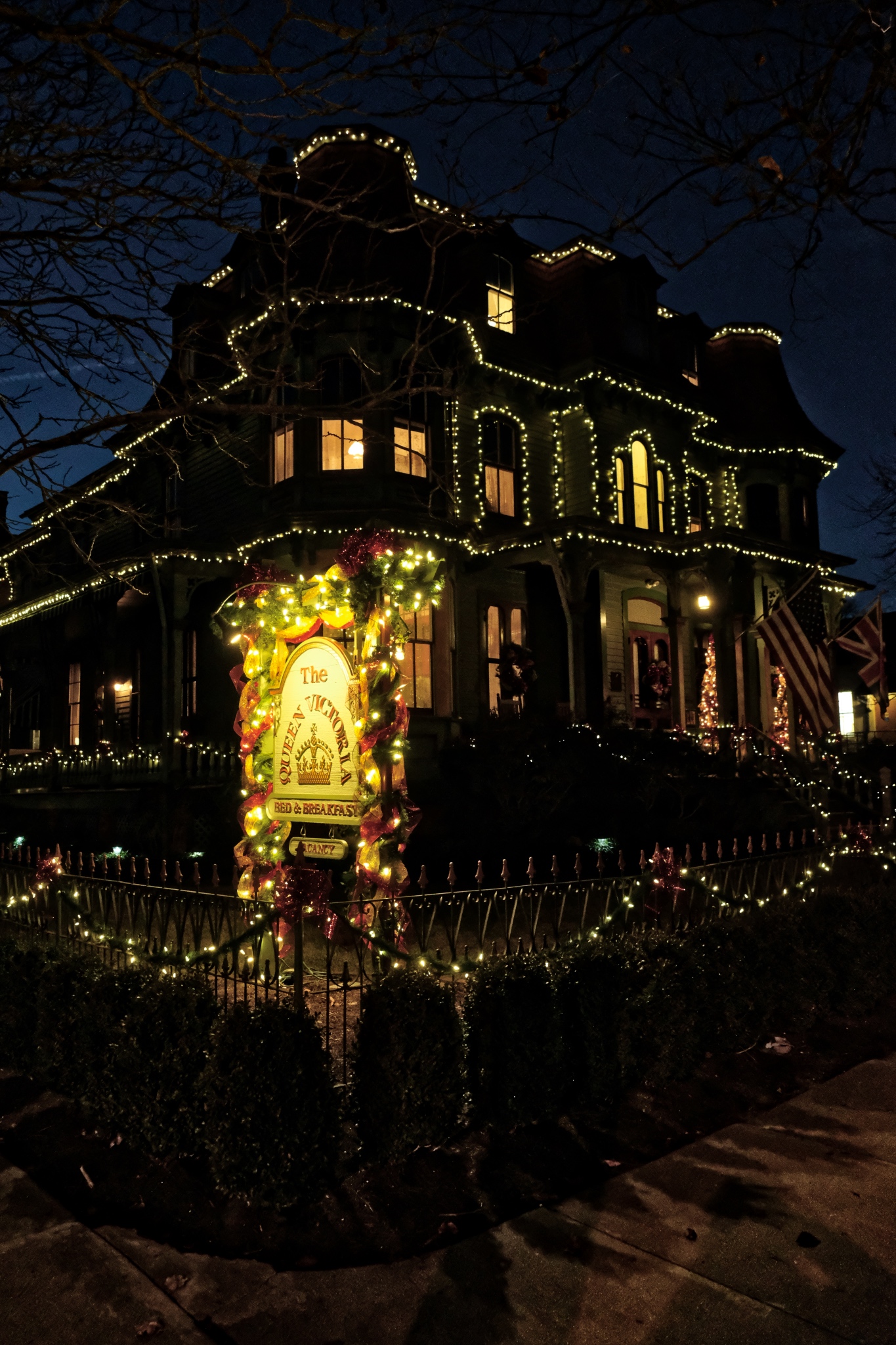 Gems in the night.
Gems in the night.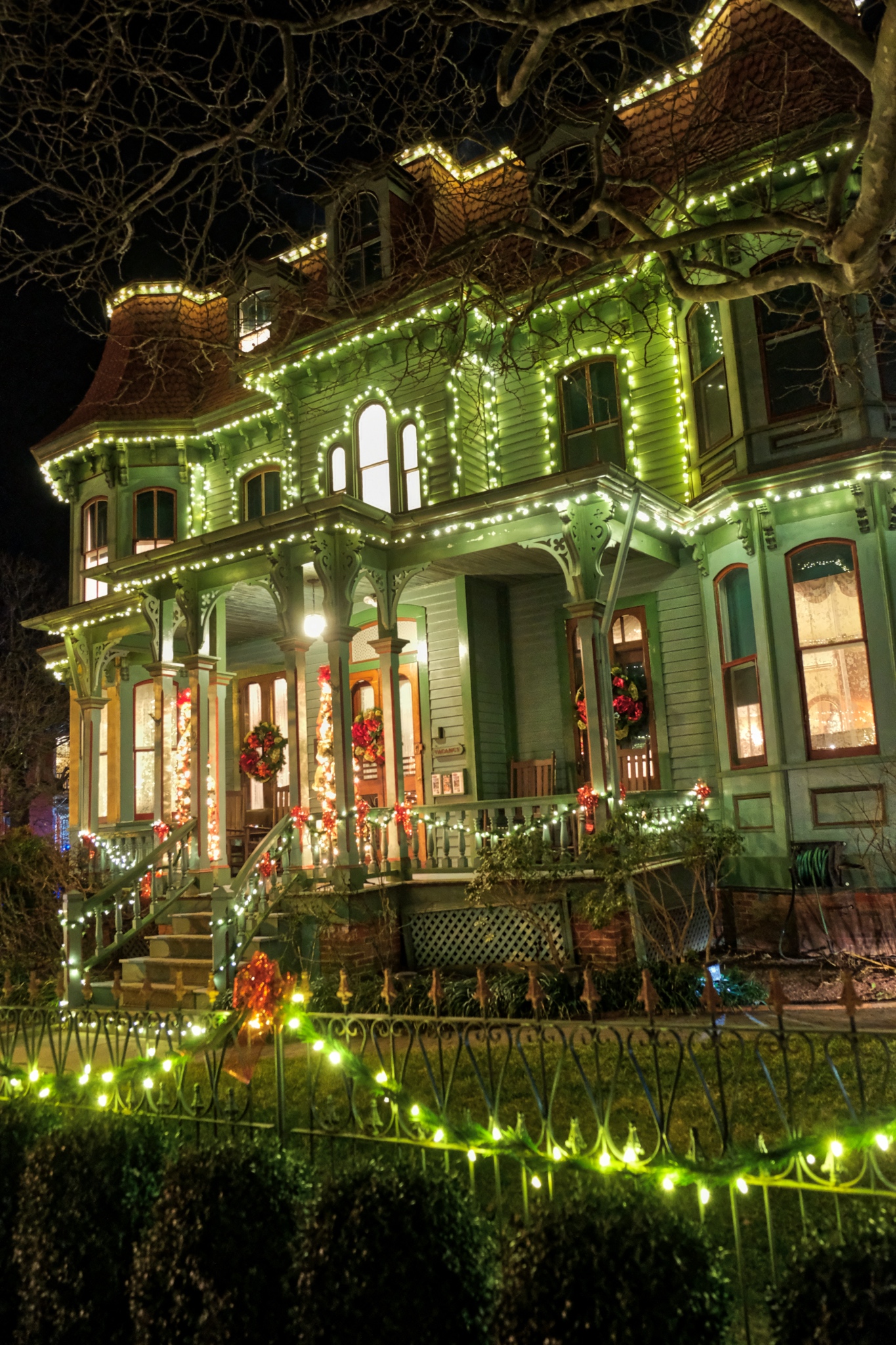 Lit up like Christmas, as they say.
Lit up like Christmas, as they say.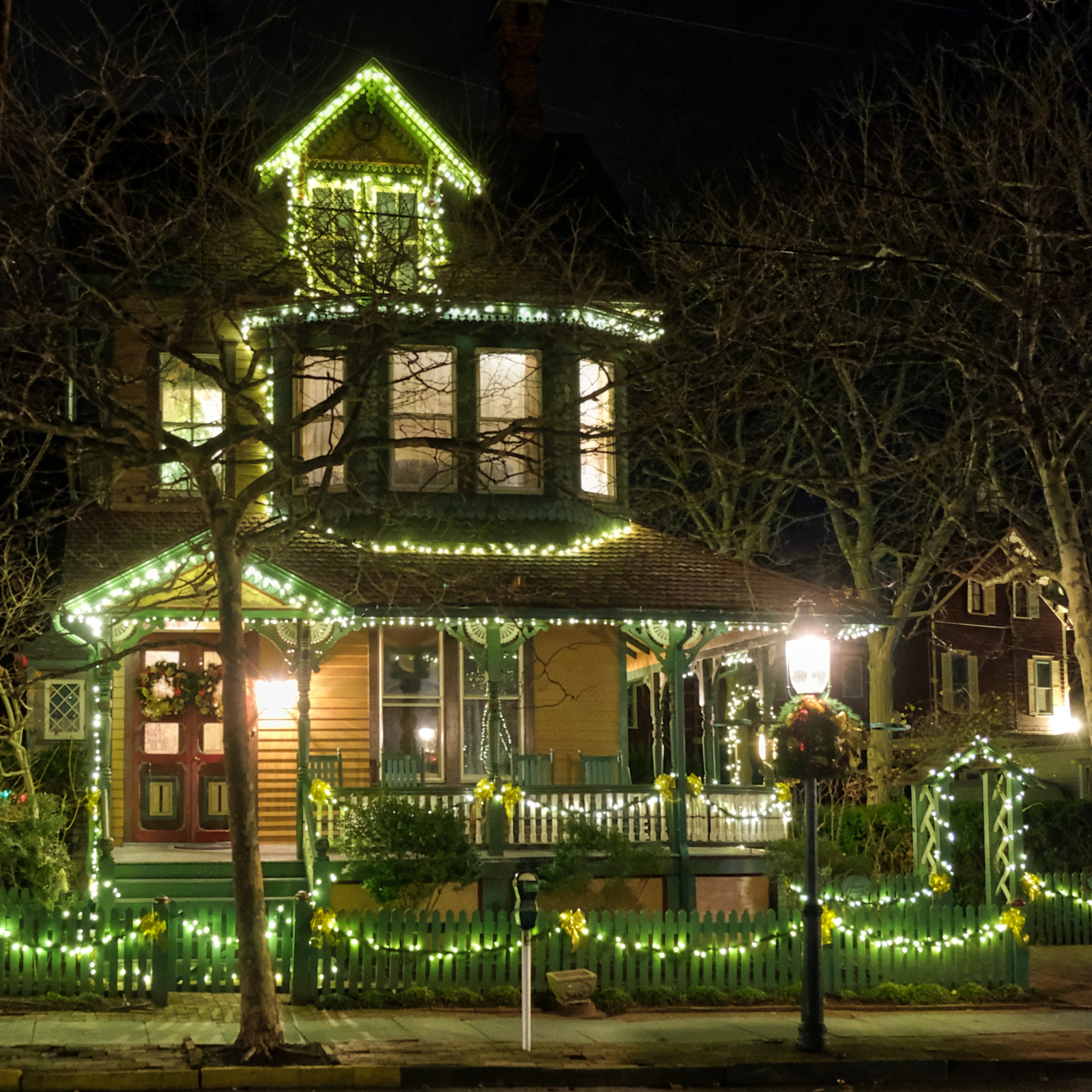 A dream house . . .
A dream house . . . 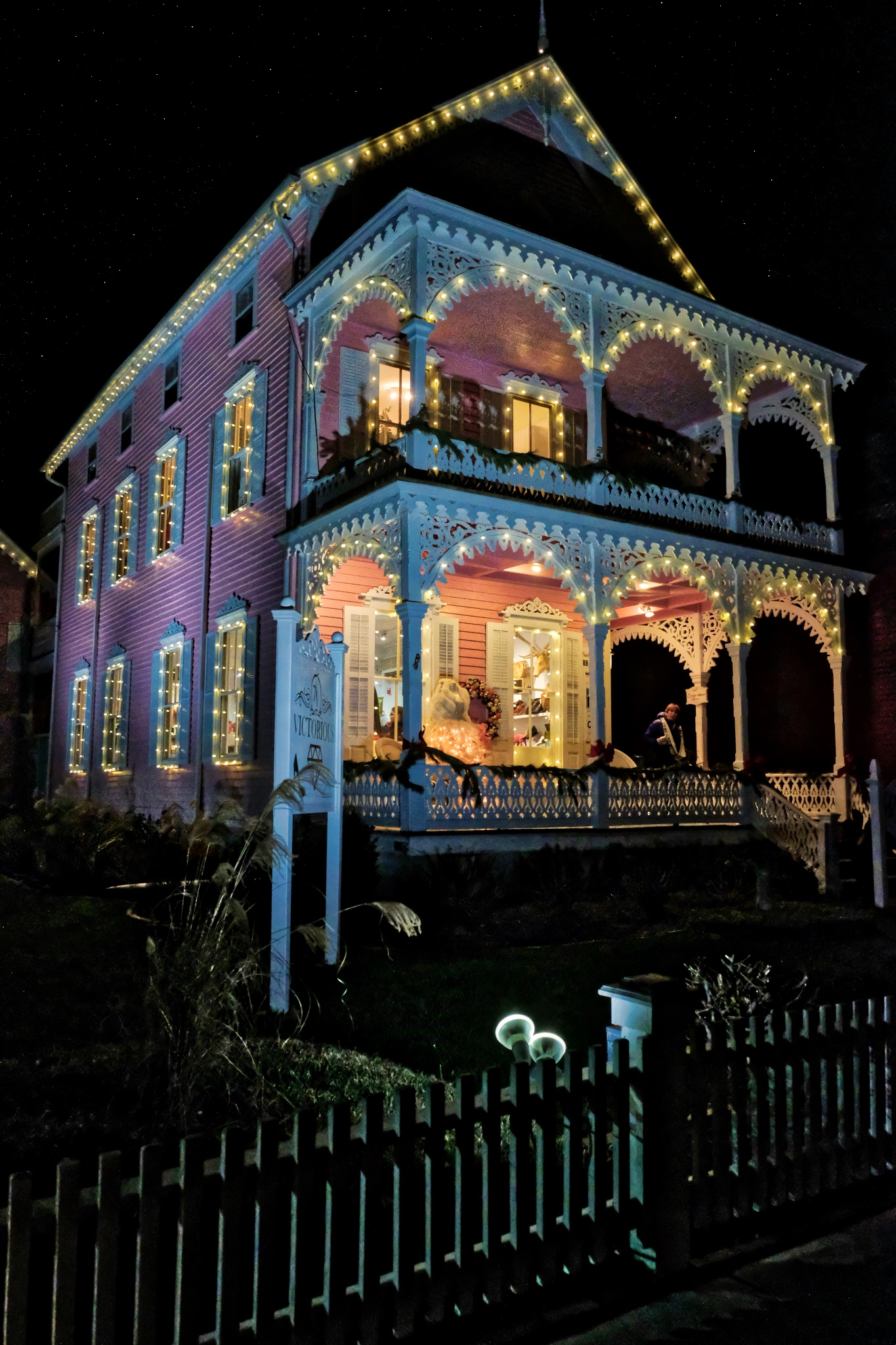 Another favorite of mine . . . this pink grand dame in all its glory!
Another favorite of mine . . . this pink grand dame in all its glory!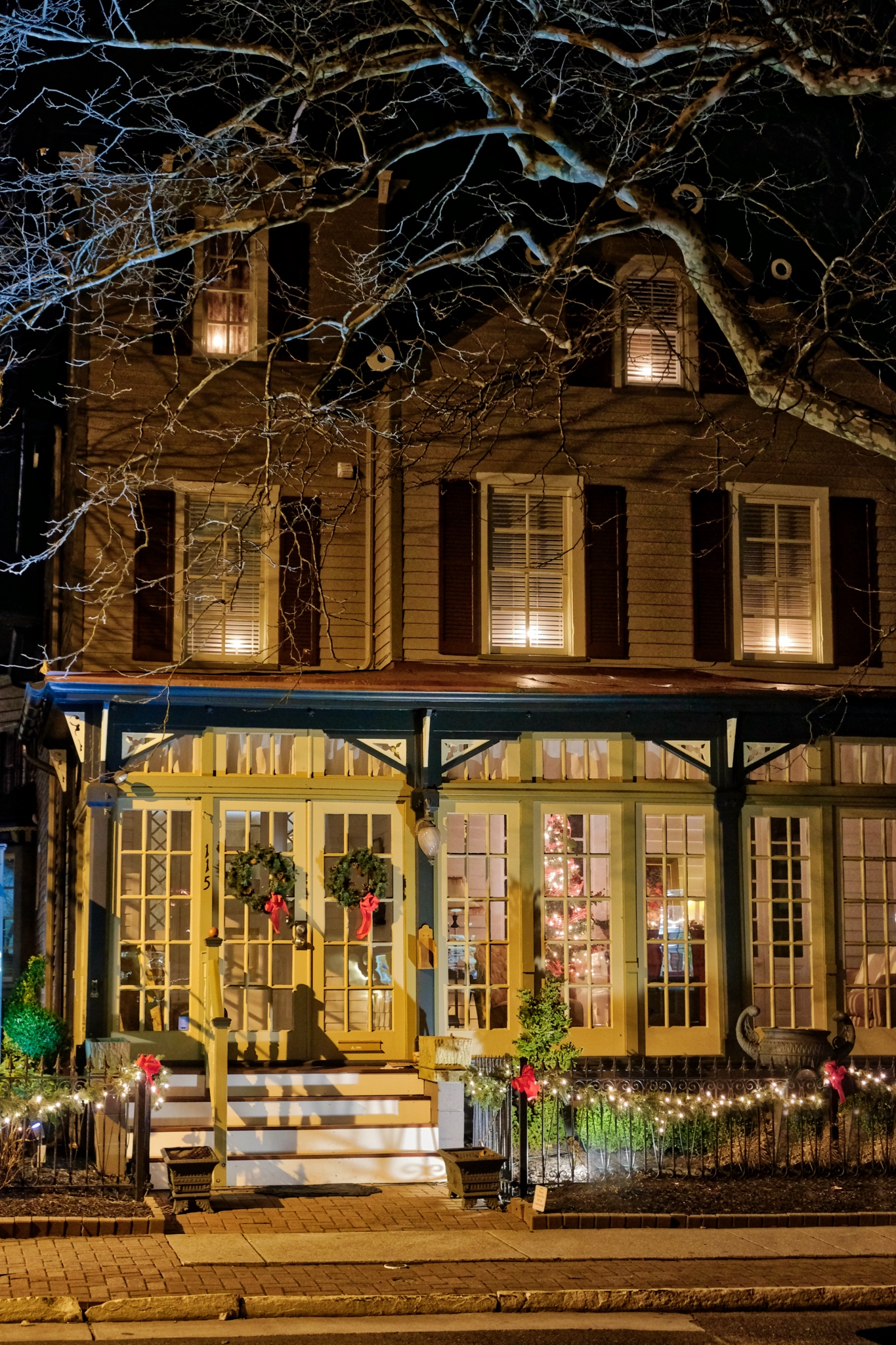 Seen earlier in the daylight, now a gem box of amazing color and form.
Seen earlier in the daylight, now a gem box of amazing color and form.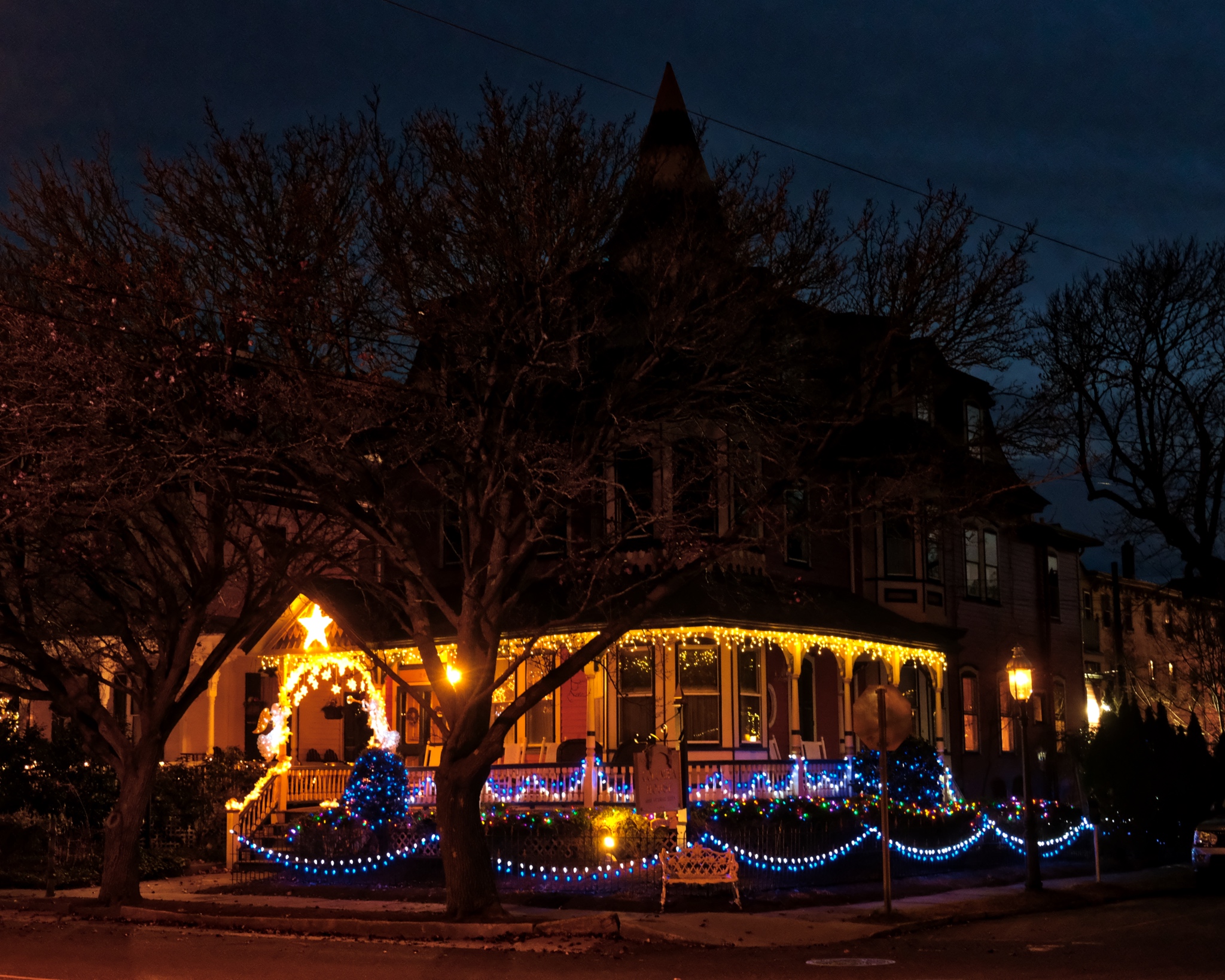 It was late (and cold!) when we finally left Cape May. I want to come back and stay in one of these old beauties. I have added an additional entry at the end of this blog focusing on just the front porches of these old Victorians (Bottom).
It was late (and cold!) when we finally left Cape May. I want to come back and stay in one of these old beauties. I have added an additional entry at the end of this blog focusing on just the front porches of these old Victorians (Bottom).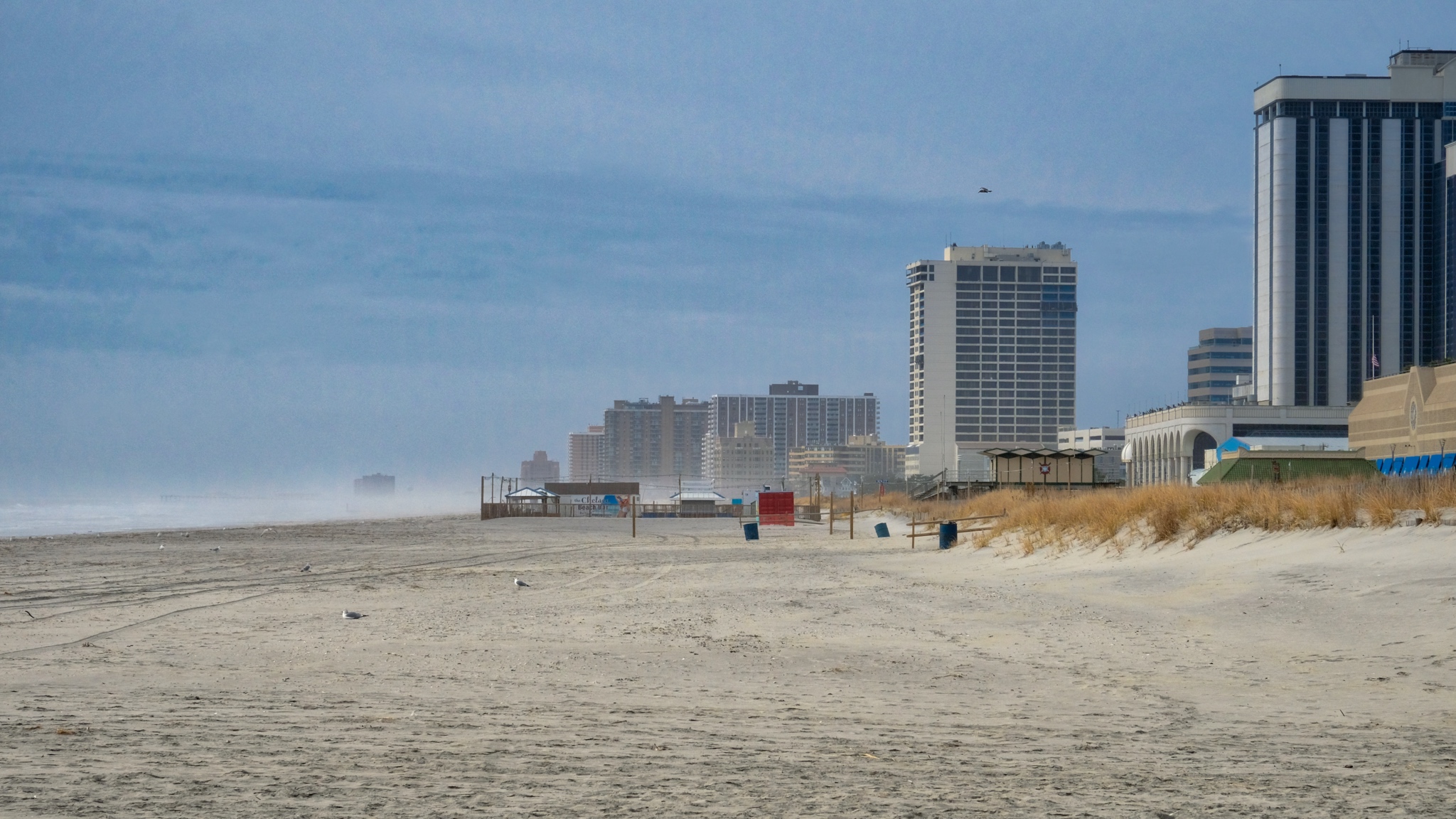 I drove north 30minutes from Ocean City one nice winter day. I brought my bicycle with me and had a nice 10 mile ride along he famous Atlantic City boardwalk.
I drove north 30minutes from Ocean City one nice winter day. I brought my bicycle with me and had a nice 10 mile ride along he famous Atlantic City boardwalk.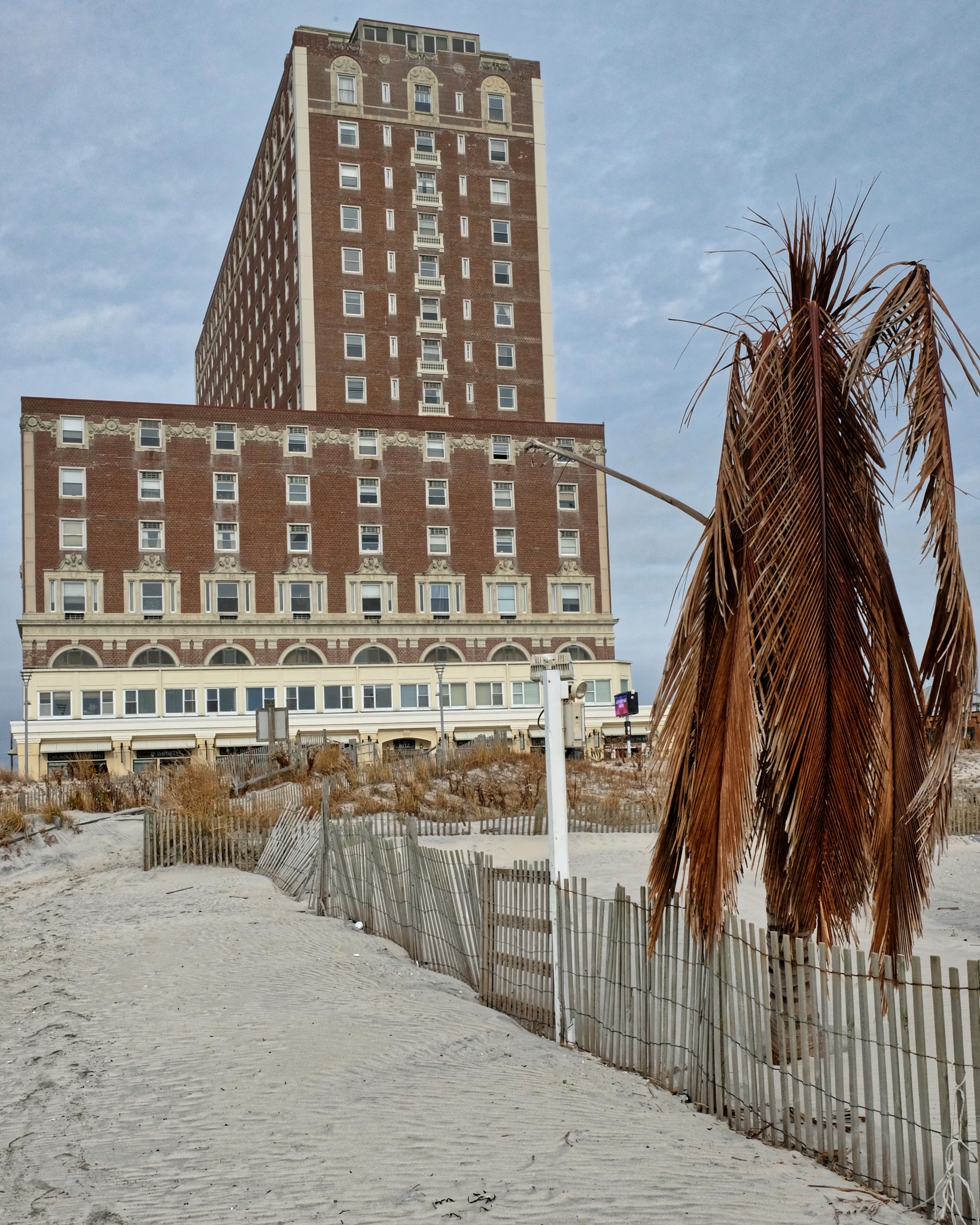 Atlantic City has been the dream retirement spot for eastcoasters for generations. . .
Atlantic City has been the dream retirement spot for eastcoasters for generations. . .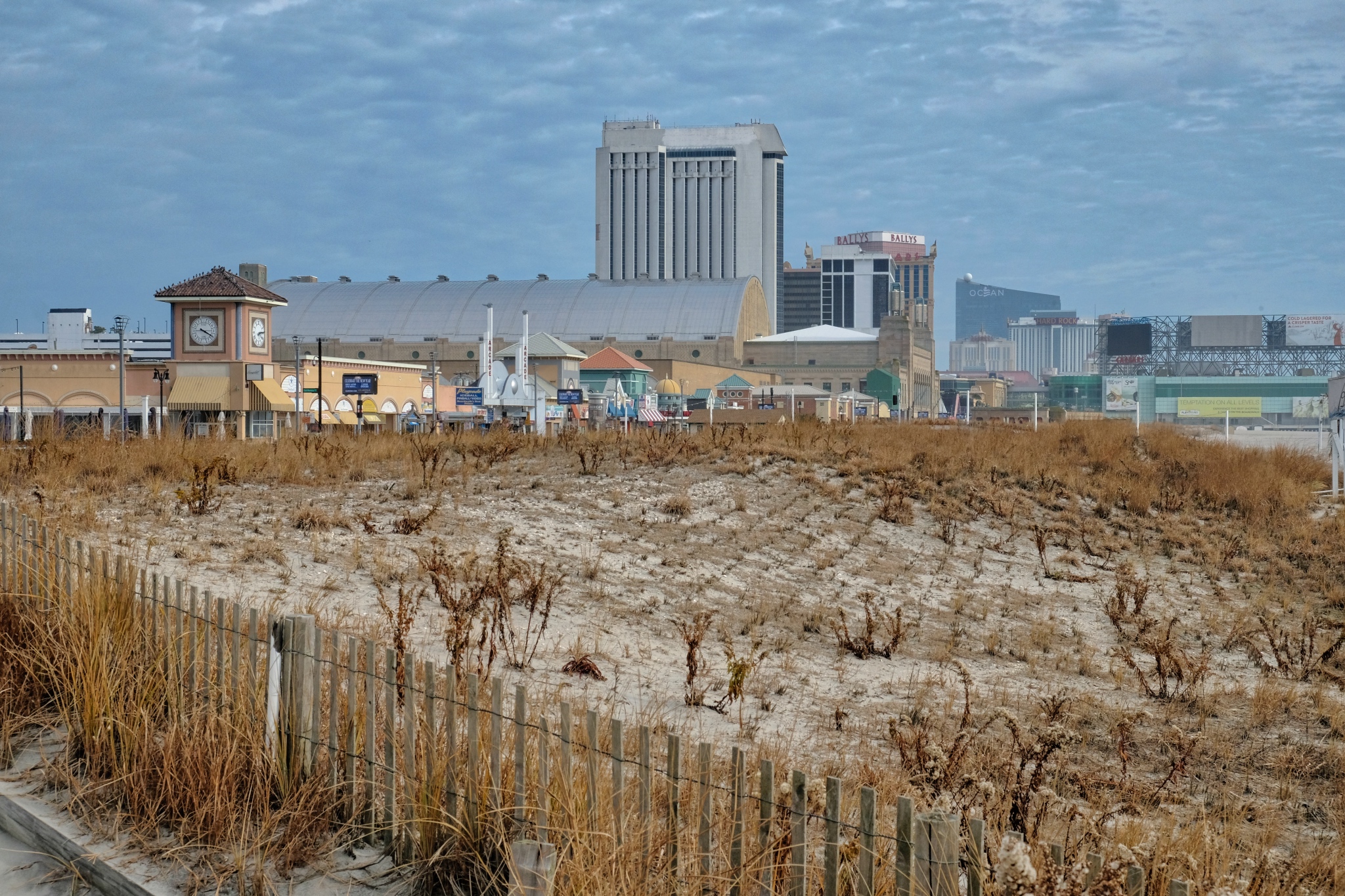 Hurricane Sandy and other major storms have played havoc with the Jersey Shore. After dredged sand was blown in, an attempt to stabilize the new beach.
Hurricane Sandy and other major storms have played havoc with the Jersey Shore. After dredged sand was blown in, an attempt to stabilize the new beach.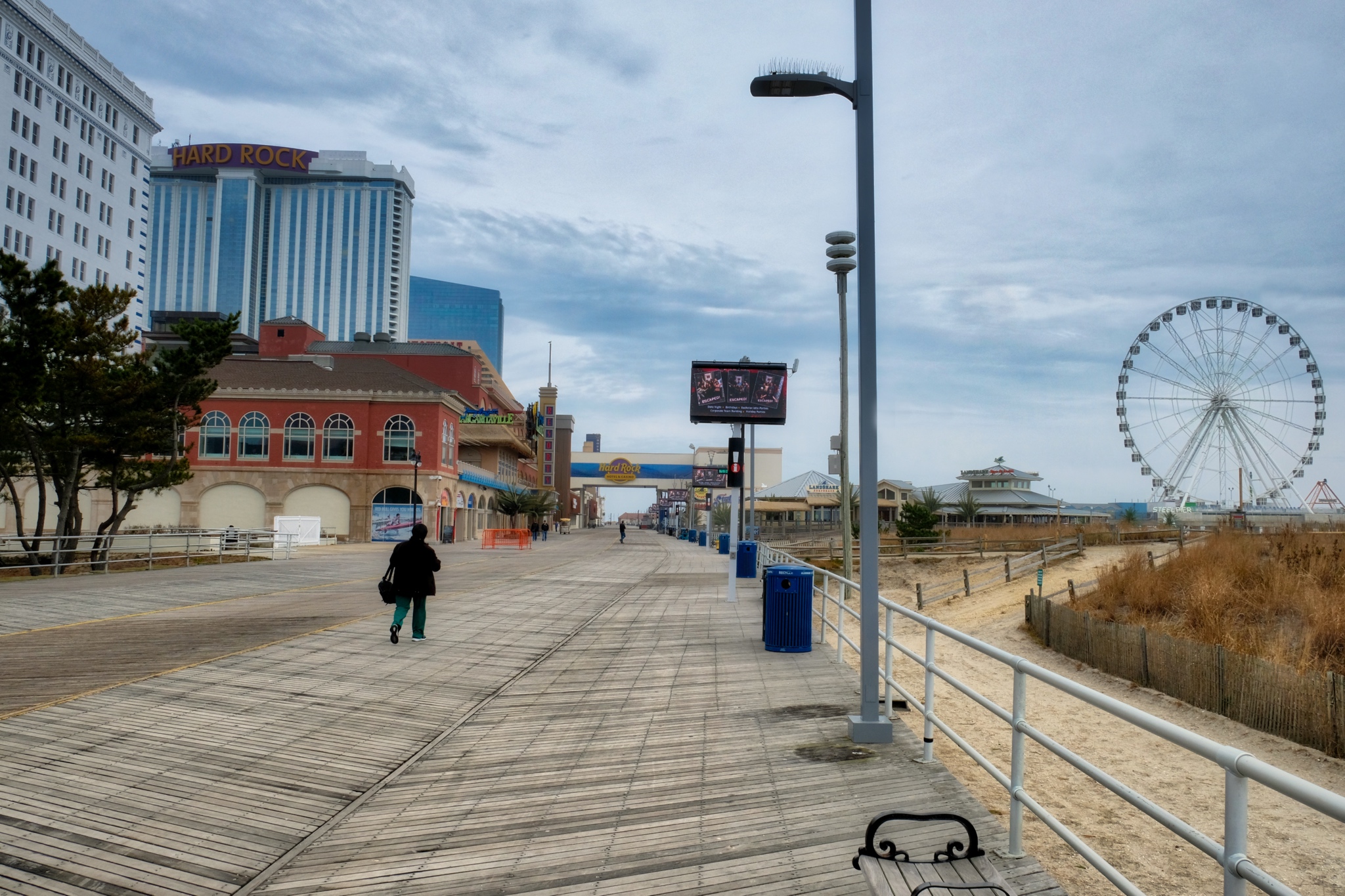 The boardwalk and most of the buildings seemed to be in a good state of repair.
The boardwalk and most of the buildings seemed to be in a good state of repair.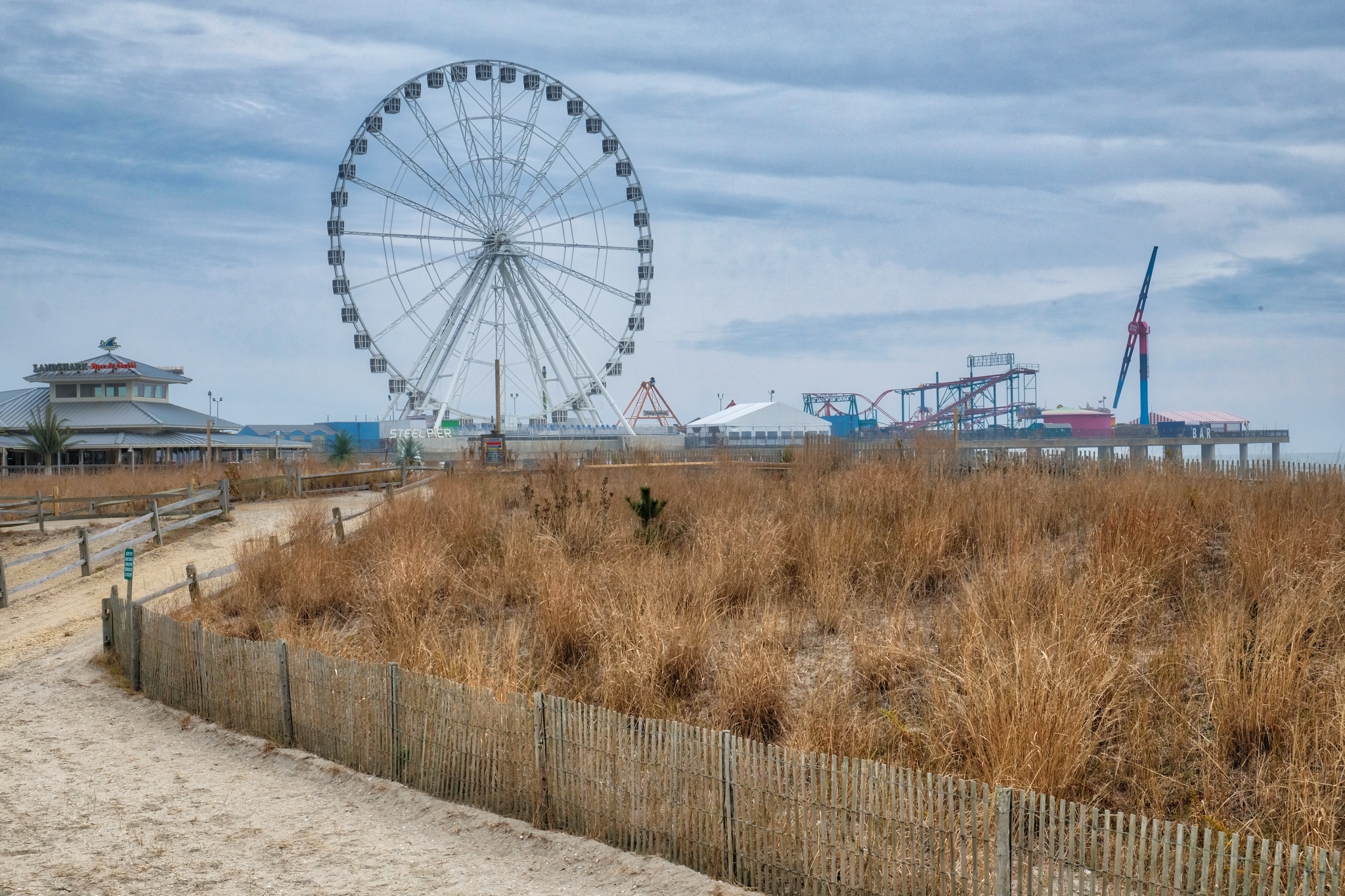 The famous pier at Atlantic City was closed for the season.
The famous pier at Atlantic City was closed for the season.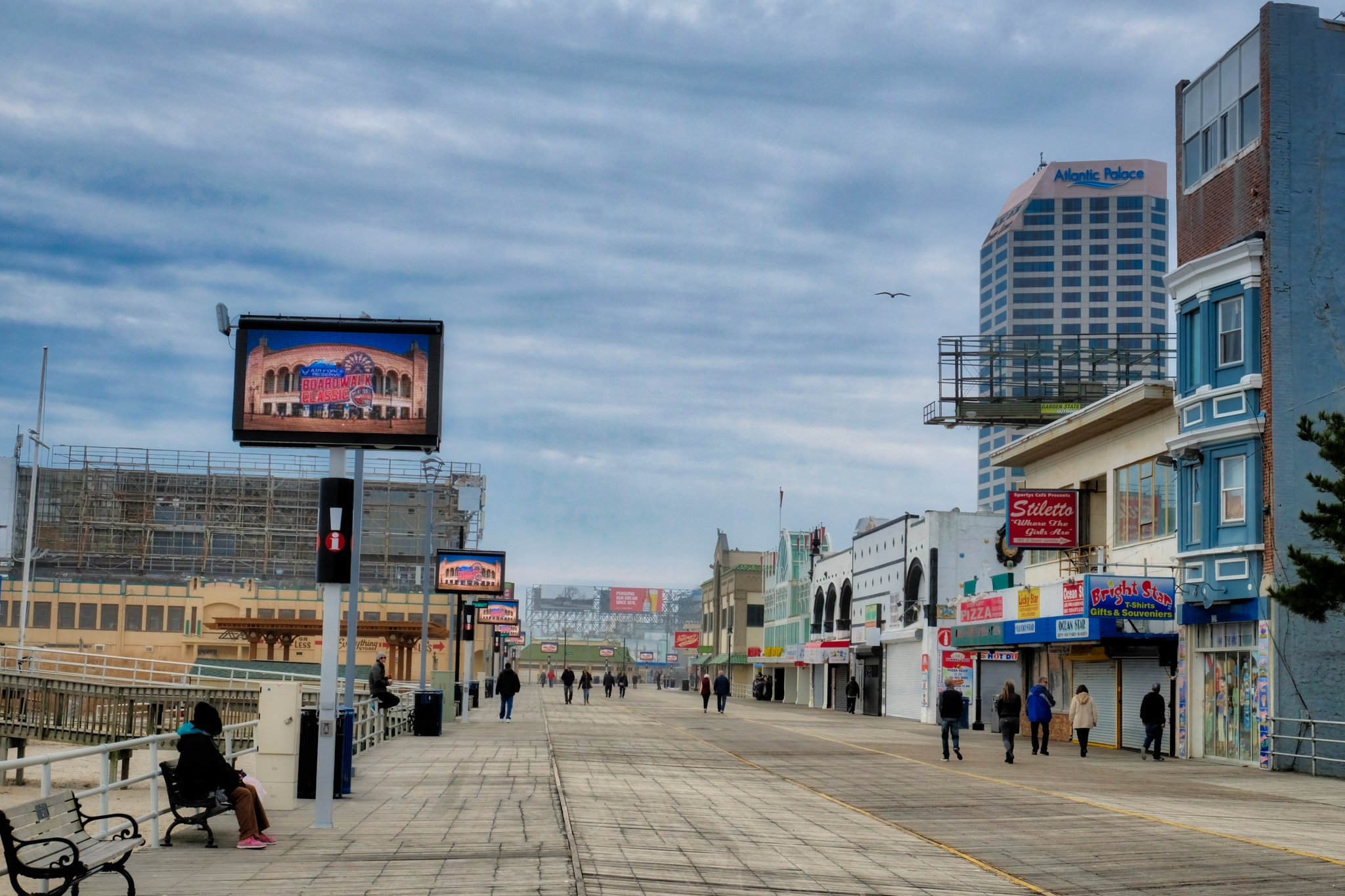 But, of curse, it is the Atlantic City boardwalk that attracts people, even on this cold and clear December day. I really enjoyed my 10 mile bike ride along this wooden bike path.
But, of curse, it is the Atlantic City boardwalk that attracts people, even on this cold and clear December day. I really enjoyed my 10 mile bike ride along this wooden bike path.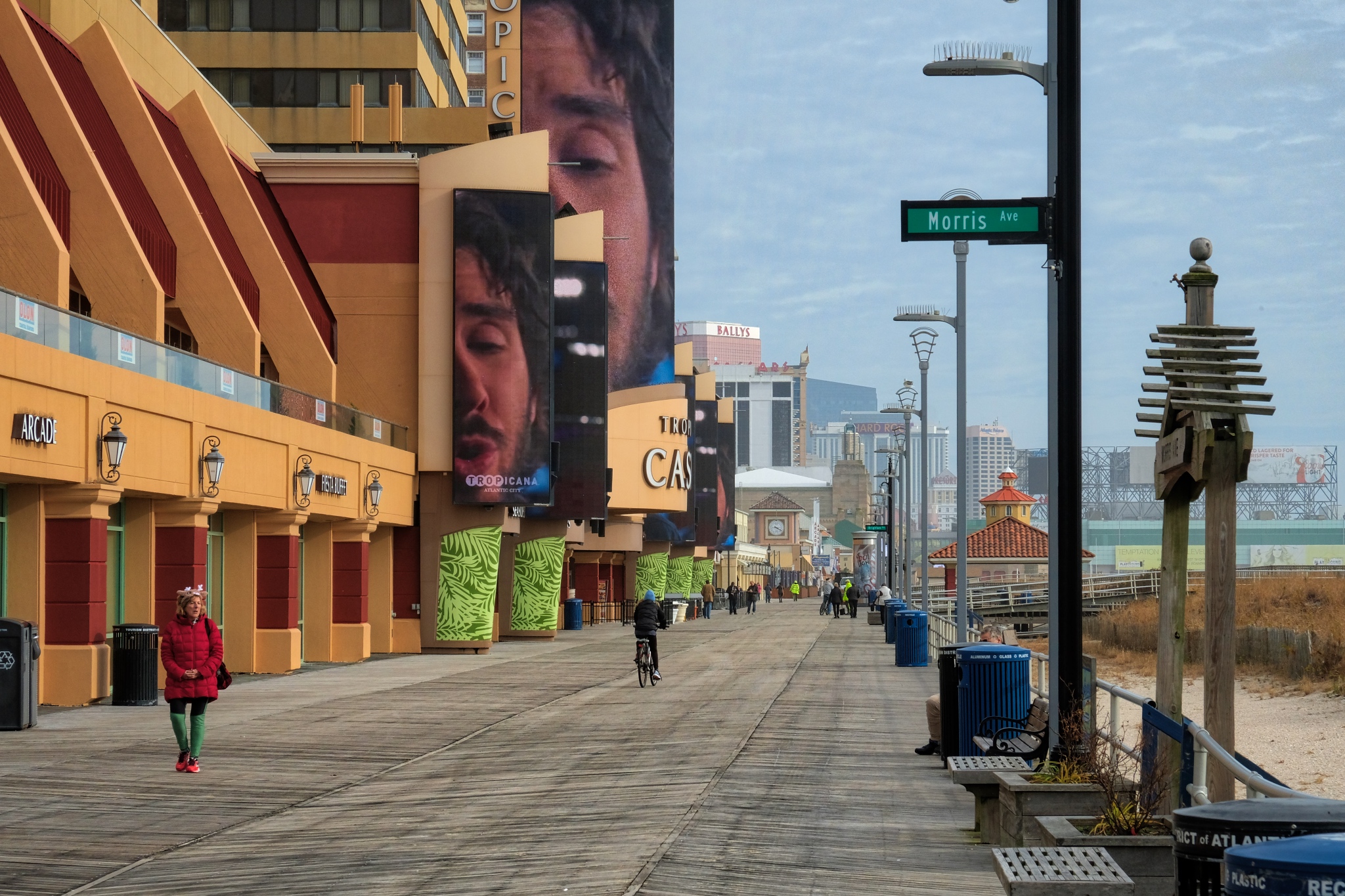 As I took a closer look at the large hotels, I was shocked to see so many of them boarded up . . . closed and abandoned. The economic collapse of 2008 and the establishment of Native American casinos in Pennsylvania had a major negative eeconomic impact on Atlantic City.
As I took a closer look at the large hotels, I was shocked to see so many of them boarded up . . . closed and abandoned. The economic collapse of 2008 and the establishment of Native American casinos in Pennsylvania had a major negative eeconomic impact on Atlantic City.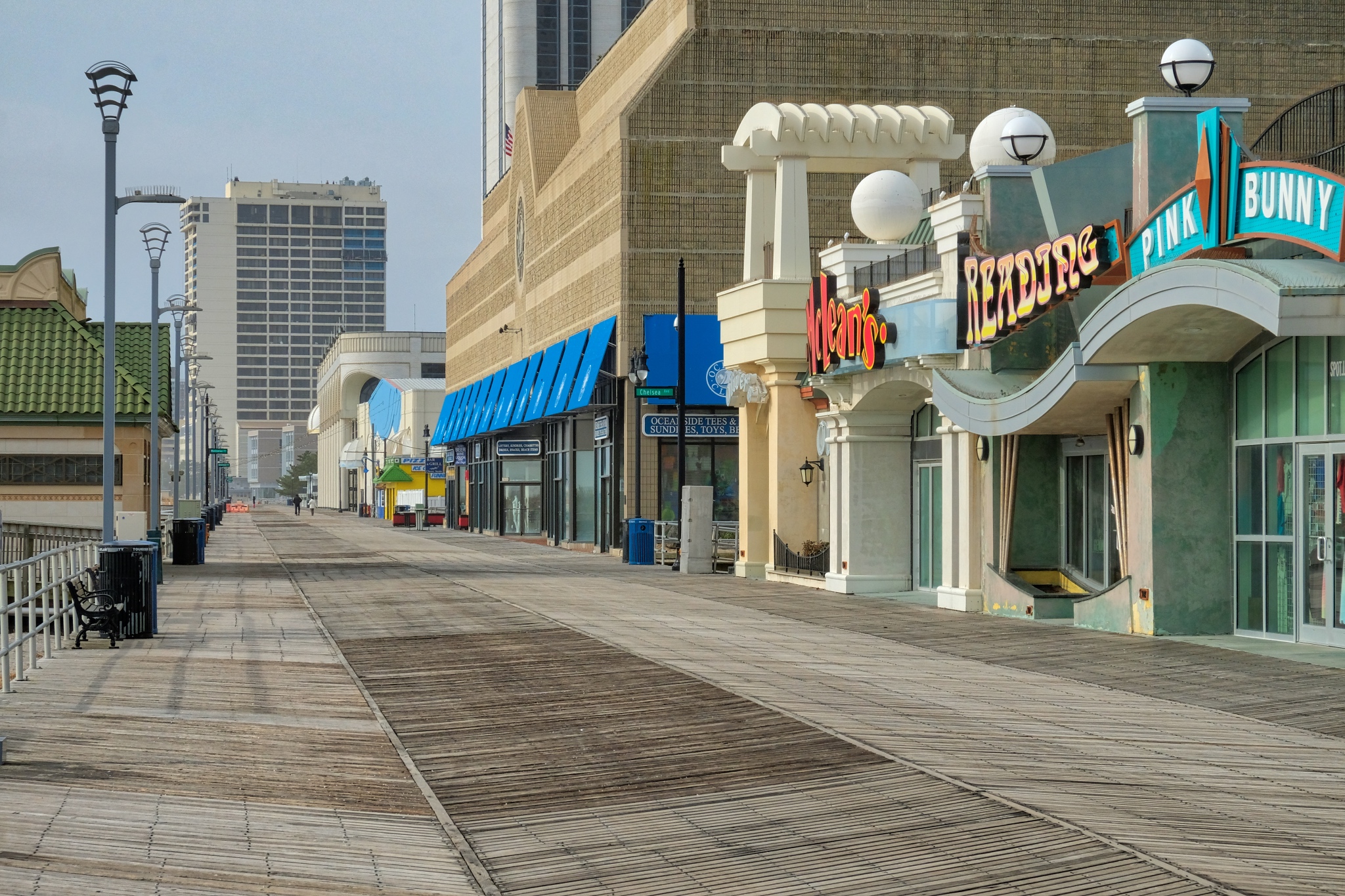 There were a few shops and a couple of cafes open to service the winter wanderers, like me.
There were a few shops and a couple of cafes open to service the winter wanderers, like me.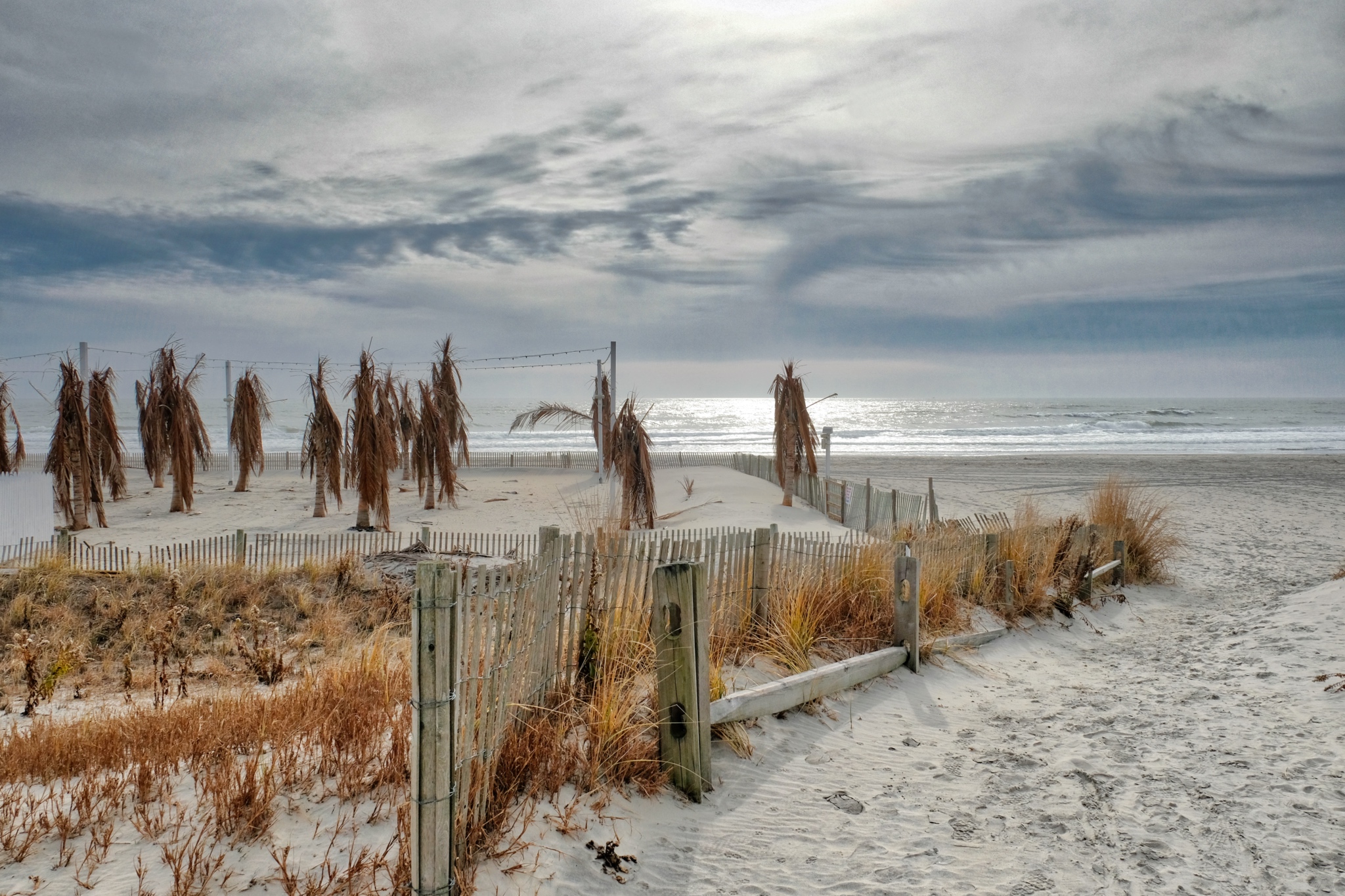 The weathered remains of a hotel beach party set-up . . . the last trace of the summer season. I rode my bike back five miles, loaded it into my camper, and drove back to Ocean City . . . good exercise for the day.
The weathered remains of a hotel beach party set-up . . . the last trace of the summer season. I rode my bike back five miles, loaded it into my camper, and drove back to Ocean City . . . good exercise for the day. Dr. Jeff Harper
Dr. Jeff Harper
The Victorian Porches of Cape May, New Jersey
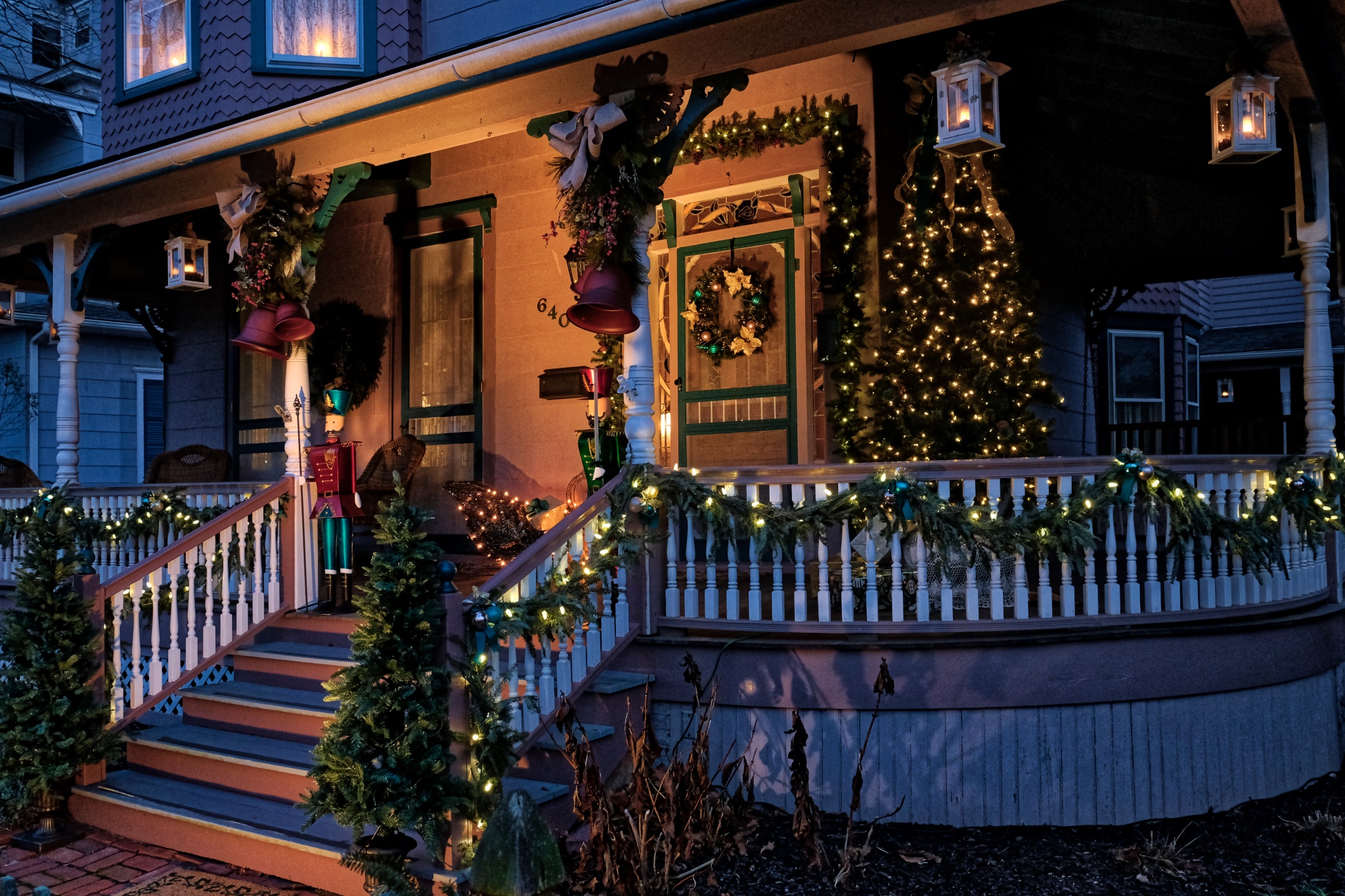 One of the most beautiful architectural features of Cape May, New Jersey are the front porches of the old Victorian houses.
One of the most beautiful architectural features of Cape May, New Jersey are the front porches of the old Victorian houses.
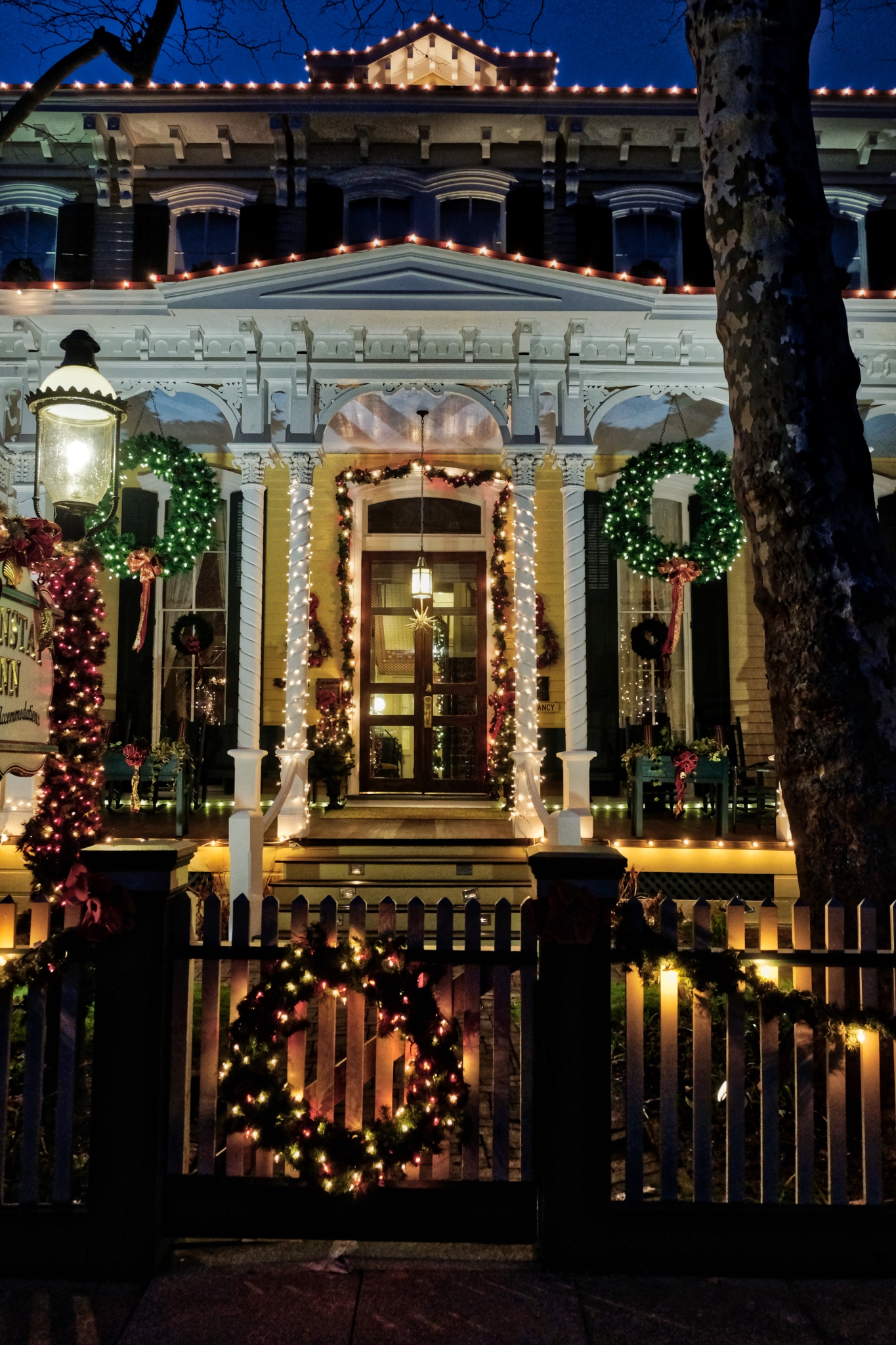 These houses date form a period in cultural history when the front door mattered as the face of the family that lived inside.
These houses date form a period in cultural history when the front door mattered as the face of the family that lived inside.
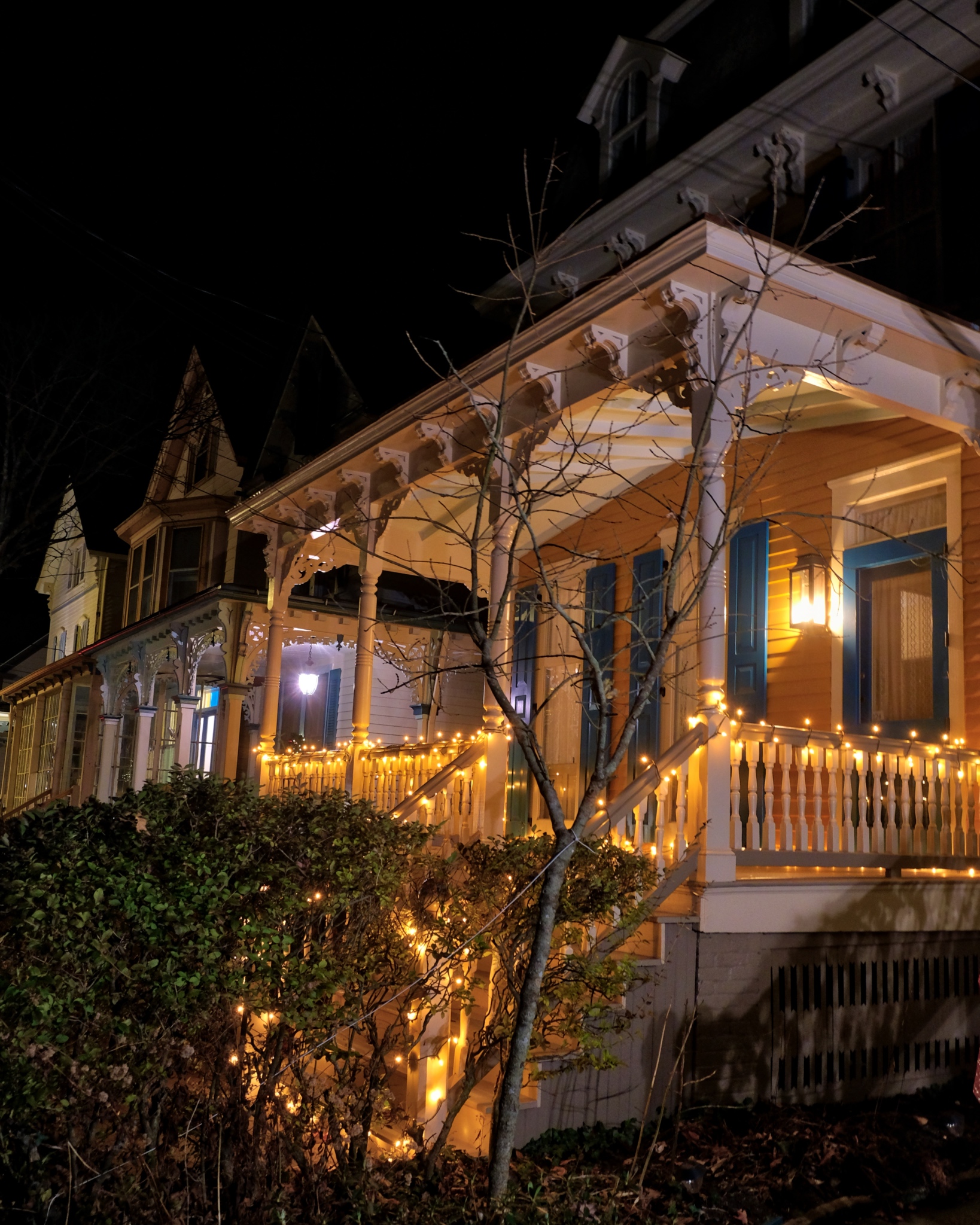 In summer the porch serves as a place to sit and greet your neighbors as they pass by. In winter, it serves as a stage to light the Holiday Season.
In summer the porch serves as a place to sit and greet your neighbors as they pass by. In winter, it serves as a stage to light the Holiday Season.
 Closed or open porches . . . they are such a beautiful feature one wonders why they ever fell out of fashion.
Closed or open porches . . . they are such a beautiful feature one wonders why they ever fell out of fashion.
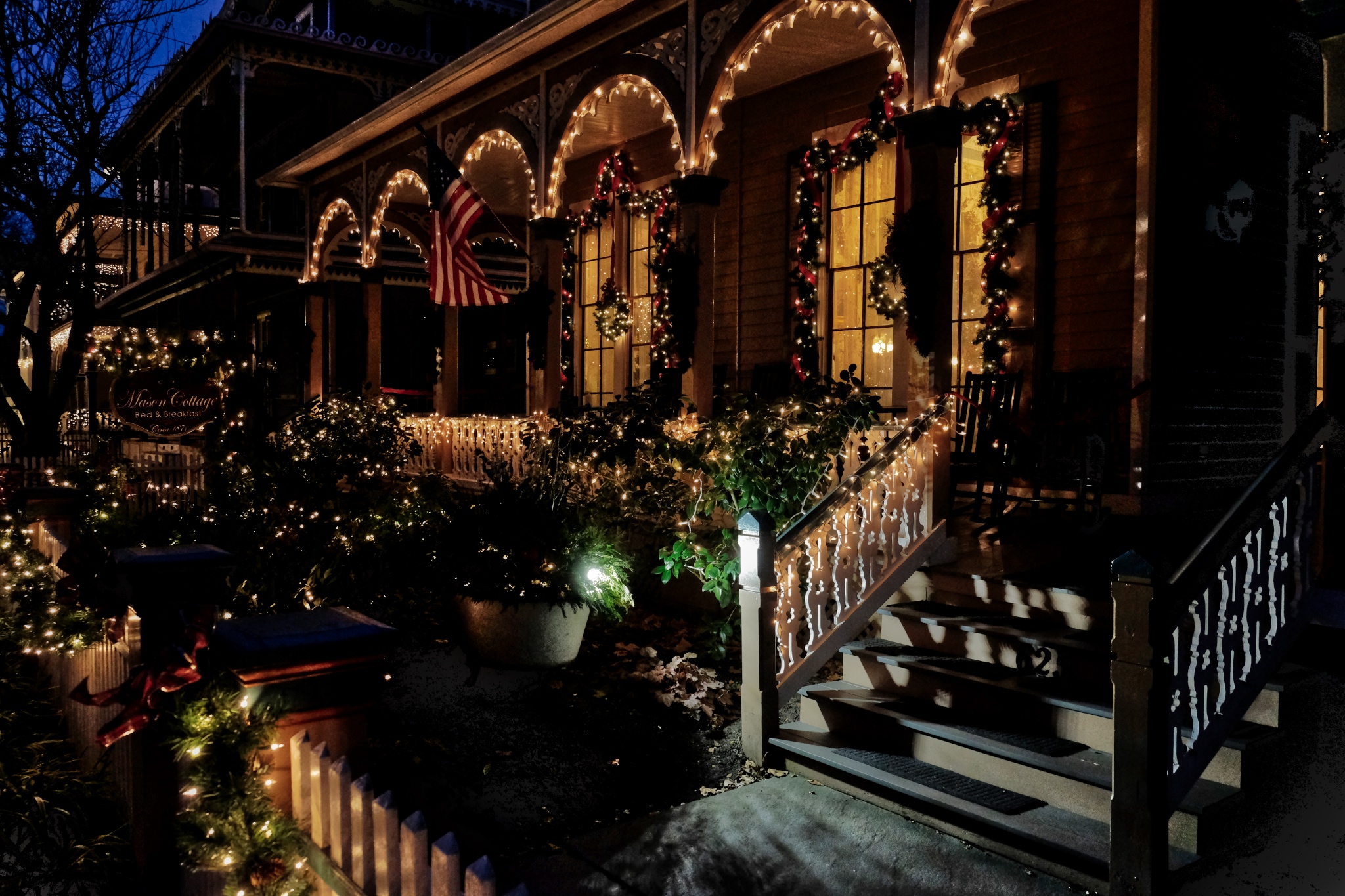 Please, step on in . . .
Please, step on in . . .
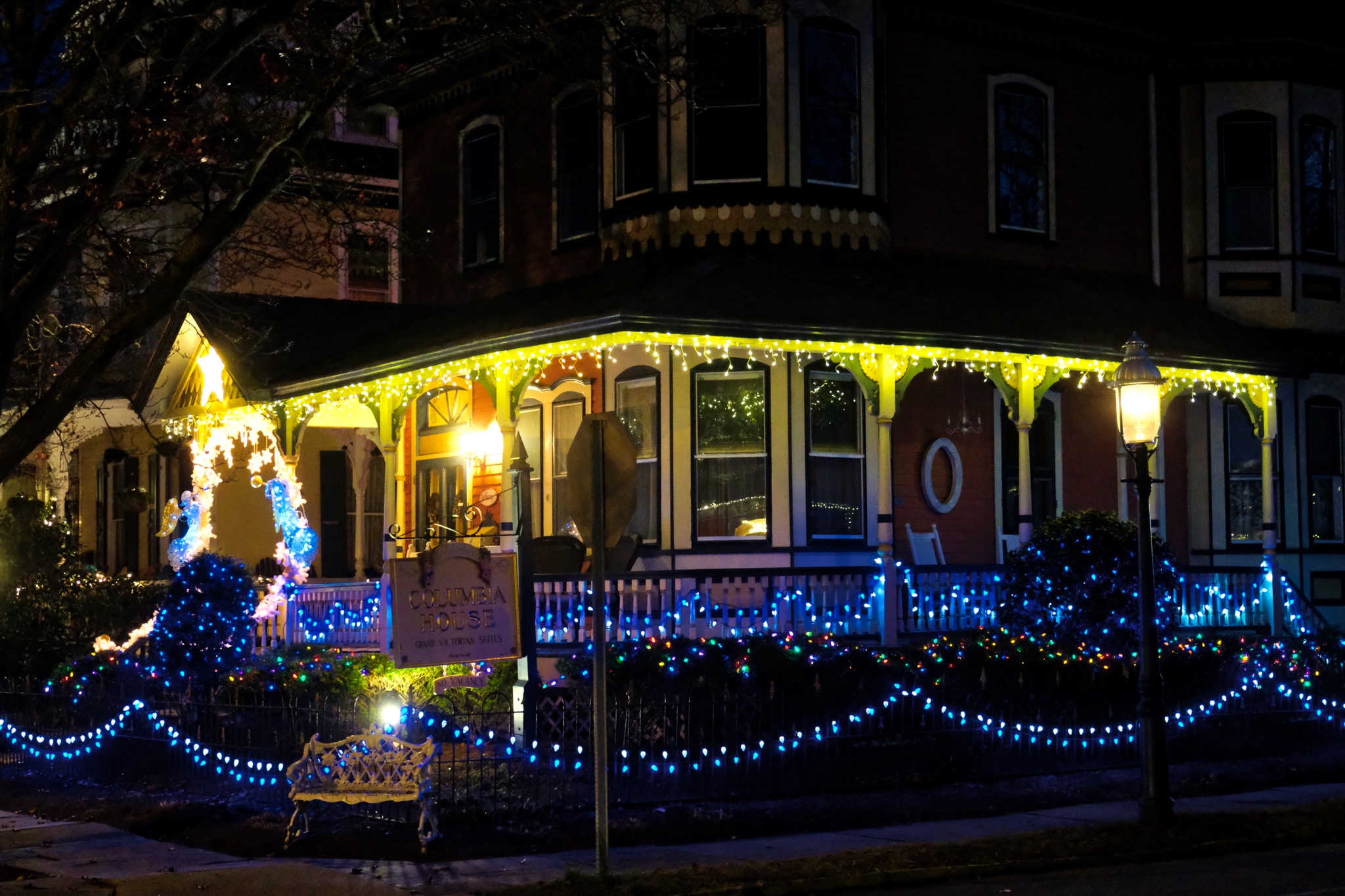 The many B&Bs in Cape May must be packed during the summer season . . . and the rocking chairs on the porches fully occupied.
The many B&Bs in Cape May must be packed during the summer season . . . and the rocking chairs on the porches fully occupied.
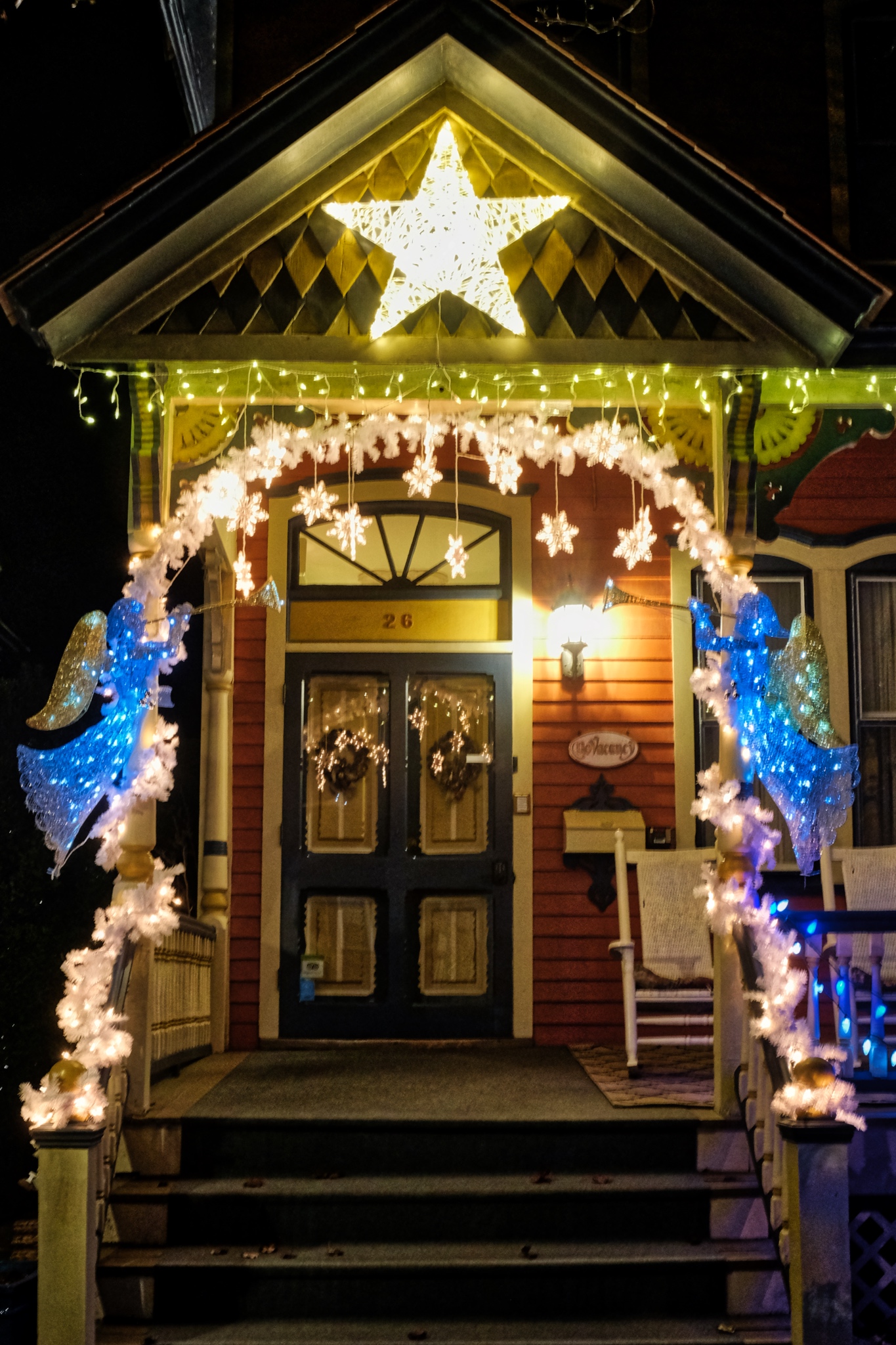 Festive, to say the least.
Festive, to say the least.
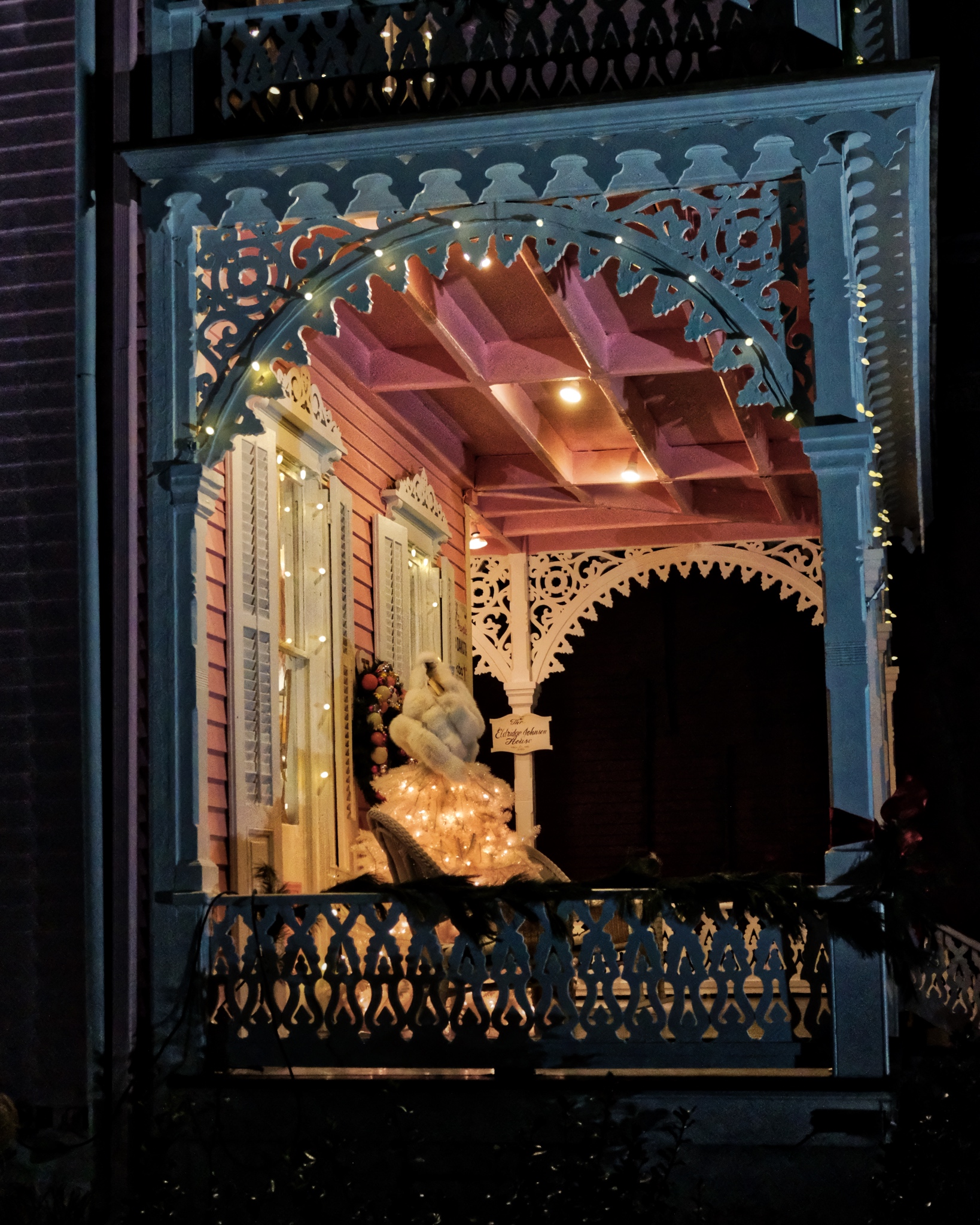 The Carpenter Victorian porch is just pure fantasy!
The Carpenter Victorian porch is just pure fantasy!
 Charming and bold colors.
Charming and bold colors.
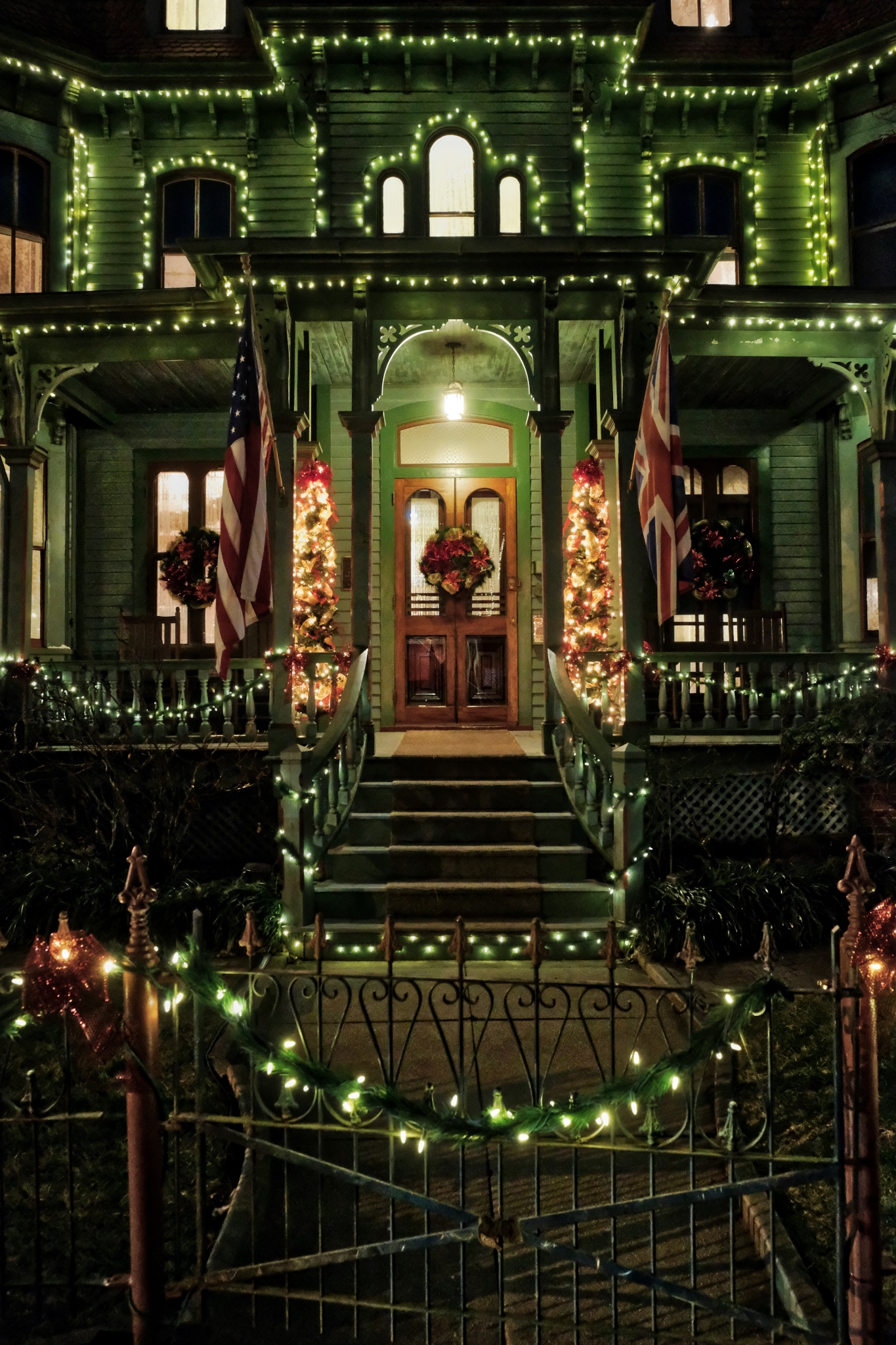 An old Victorian in all its Yuletide glory.
An old Victorian in all its Yuletide glory.
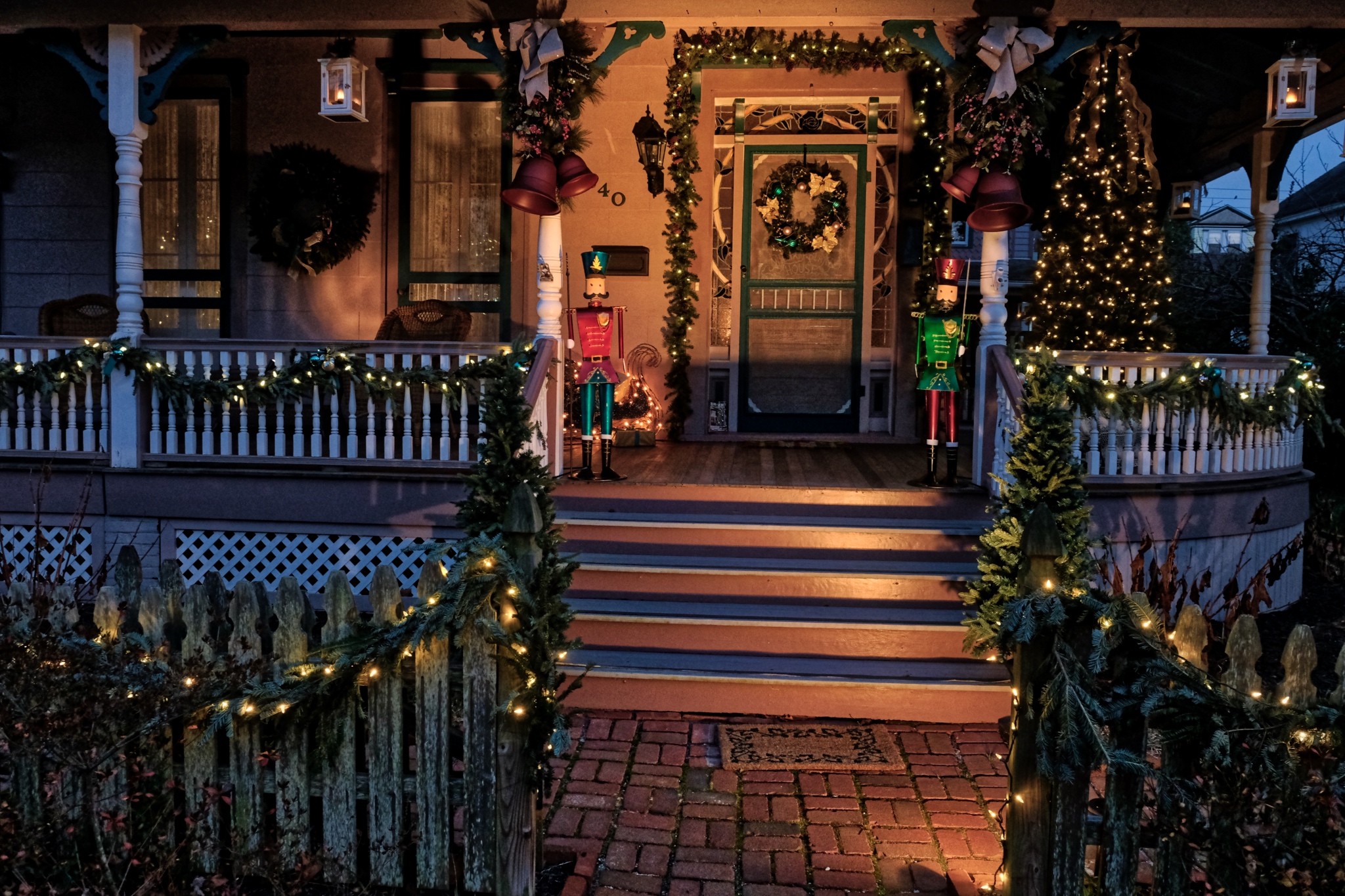 Soooo inviting!
Soooo inviting!
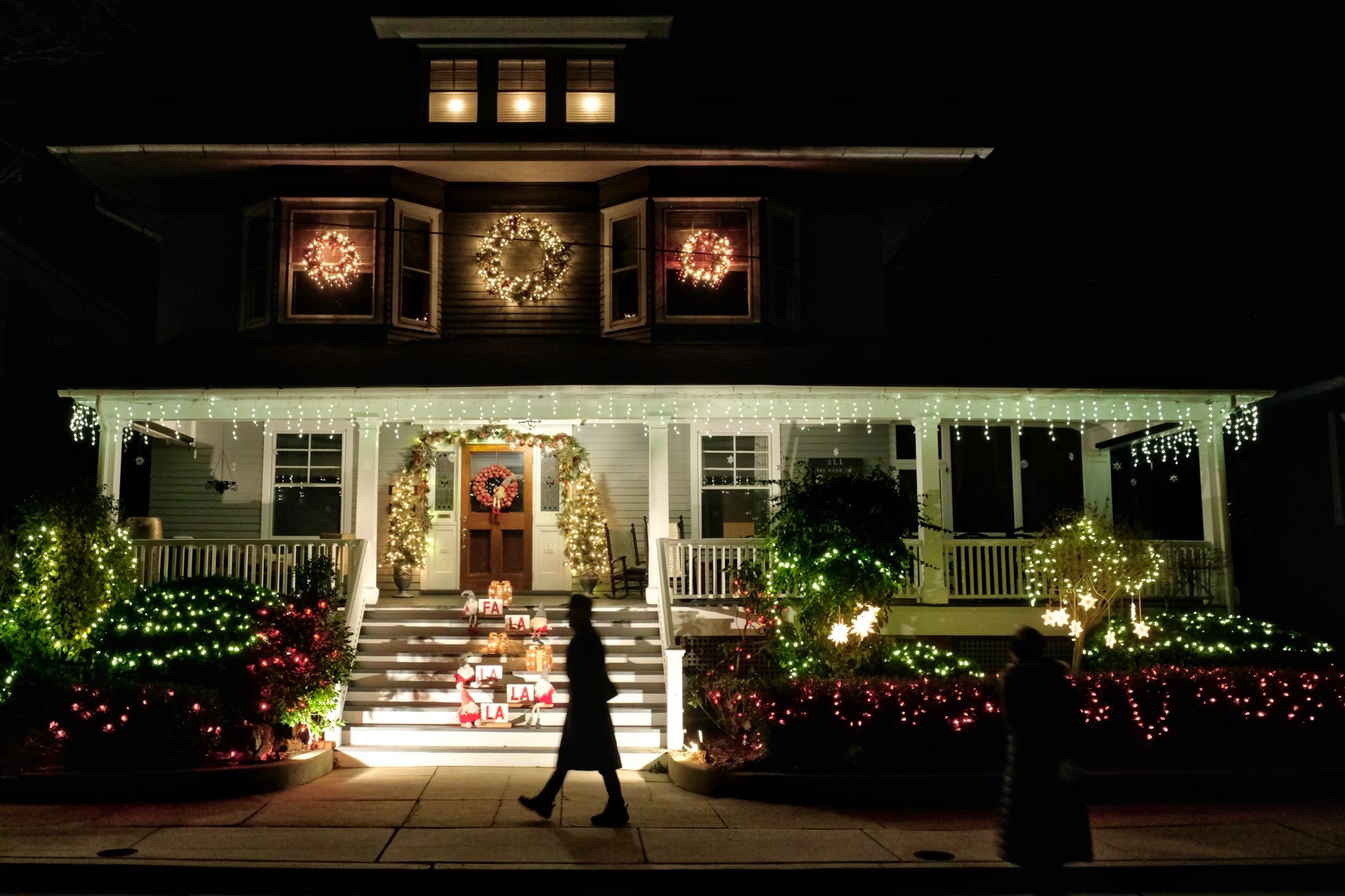 Porch Life has not vanished from the Earth . . . it lives on in Cape May, New Jersey!
Porch Life has not vanished from the Earth . . . it lives on in Cape May, New Jersey!
Gibraltar: Day and Night
 Tuesday, April 17, 2018 at 3:27AM
Tuesday, April 17, 2018 at 3:27AM  In February 2017 we made the short flight to the British enclave of Gibraltar. It is worth a three night stay . . . but perhaps not any longer . . .
In February 2017 we made the short flight to the British enclave of Gibraltar. It is worth a three night stay . . . but perhaps not any longer . . .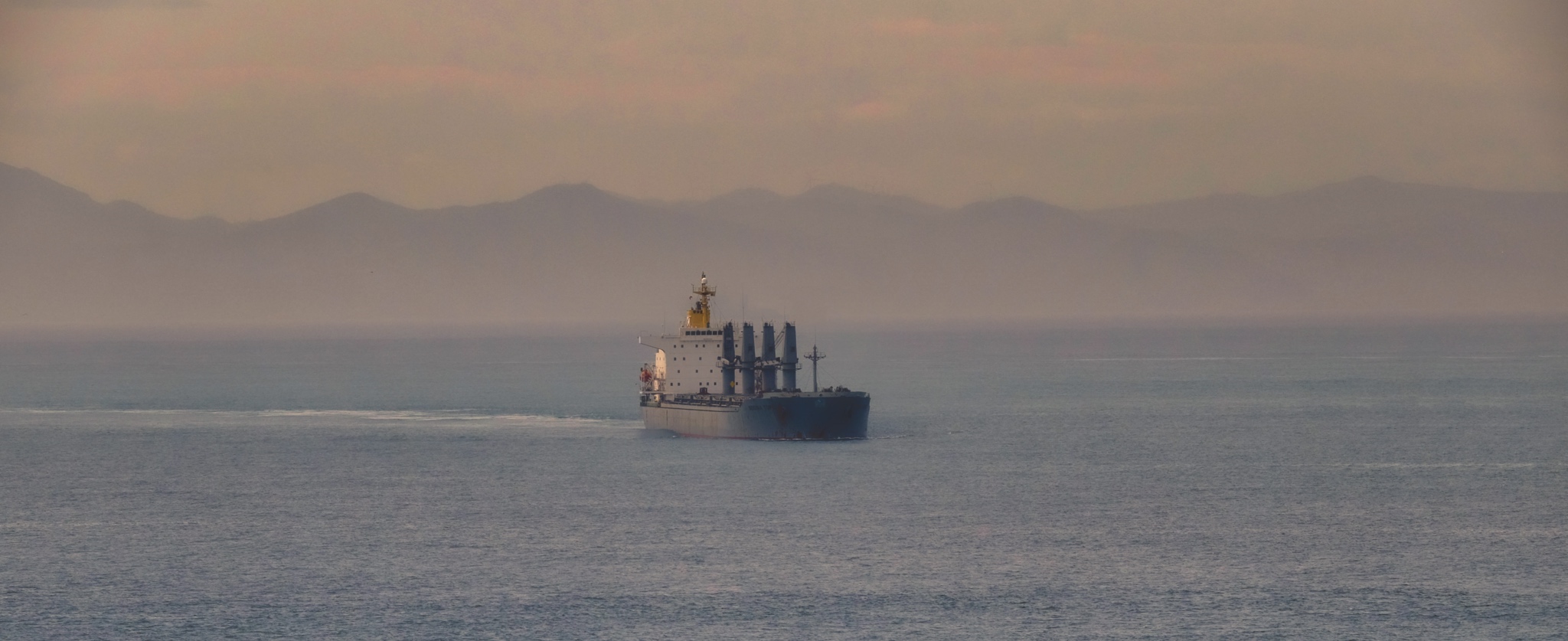 Gibraltar sits near the southern tip of Spain at the northern side of the Straight of Gibraltar. All ships that pass from the Mediterranean Sea to the Atlantic Ocean must pass through here. The North African coast can be seen across the Straight of Gibraltar.
Gibraltar sits near the southern tip of Spain at the northern side of the Straight of Gibraltar. All ships that pass from the Mediterranean Sea to the Atlantic Ocean must pass through here. The North African coast can be seen across the Straight of Gibraltar.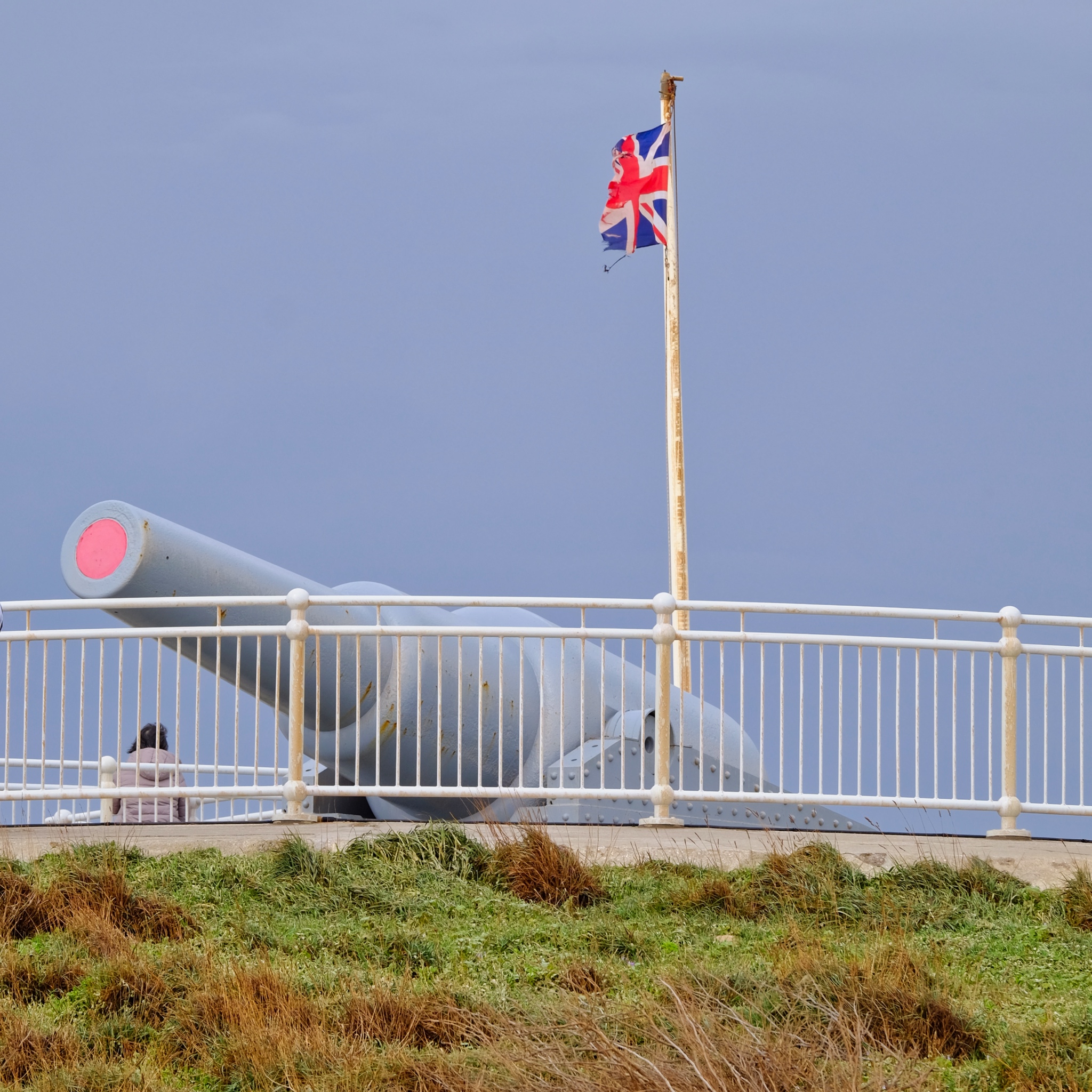 Gibraltar is a British territory . . . The residents recently voted 96% in favor of staying within the UK and not joining Spain . . . of course, they also voted 96% to stay within the EU during the Brexit vote!
Gibraltar is a British territory . . . The residents recently voted 96% in favor of staying within the UK and not joining Spain . . . of course, they also voted 96% to stay within the EU during the Brexit vote!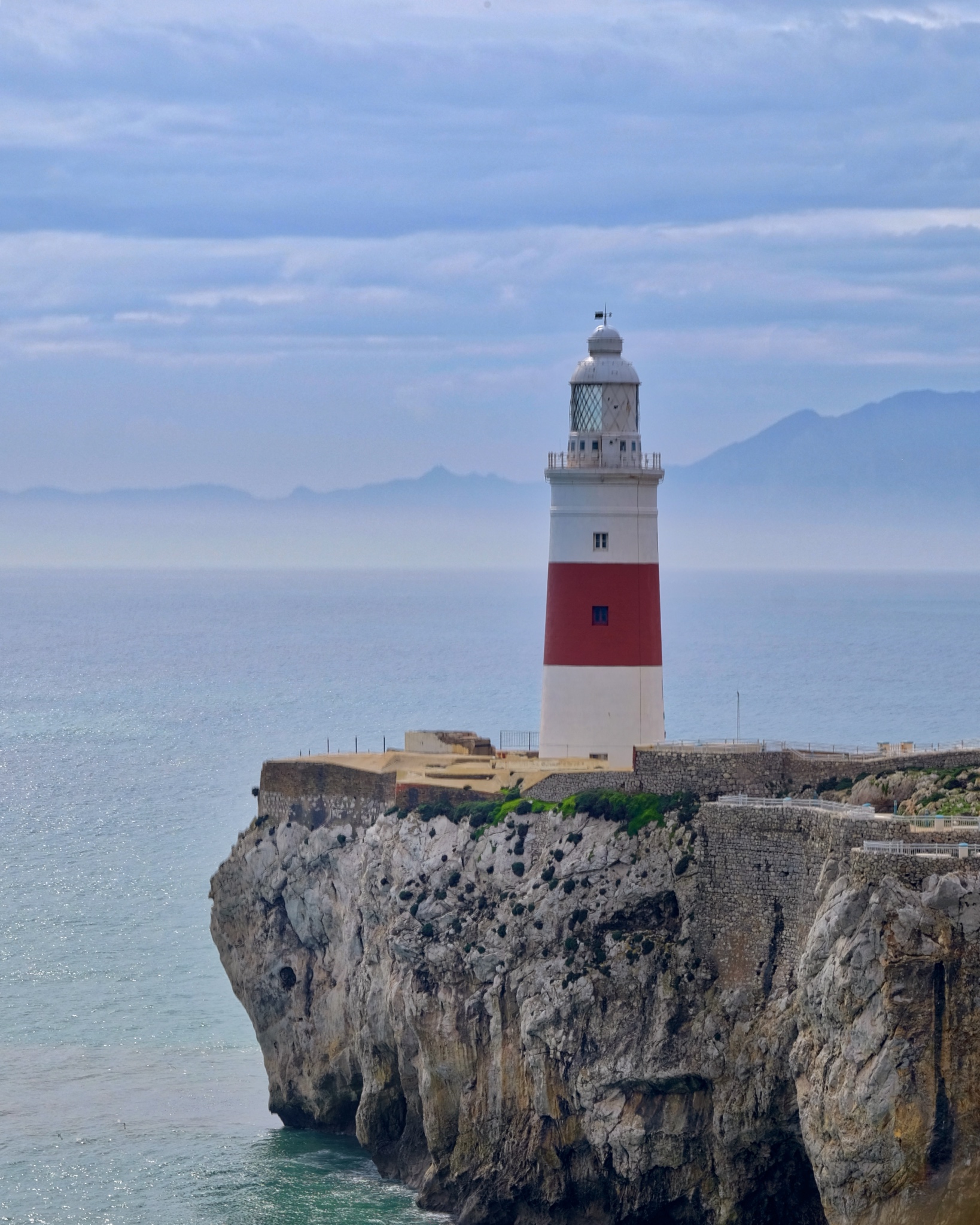 The lighthouse at the tip Gibraltar . . . this straight is also known as the Pillars of Hercules by the Greeks.
The lighthouse at the tip Gibraltar . . . this straight is also known as the Pillars of Hercules by the Greeks.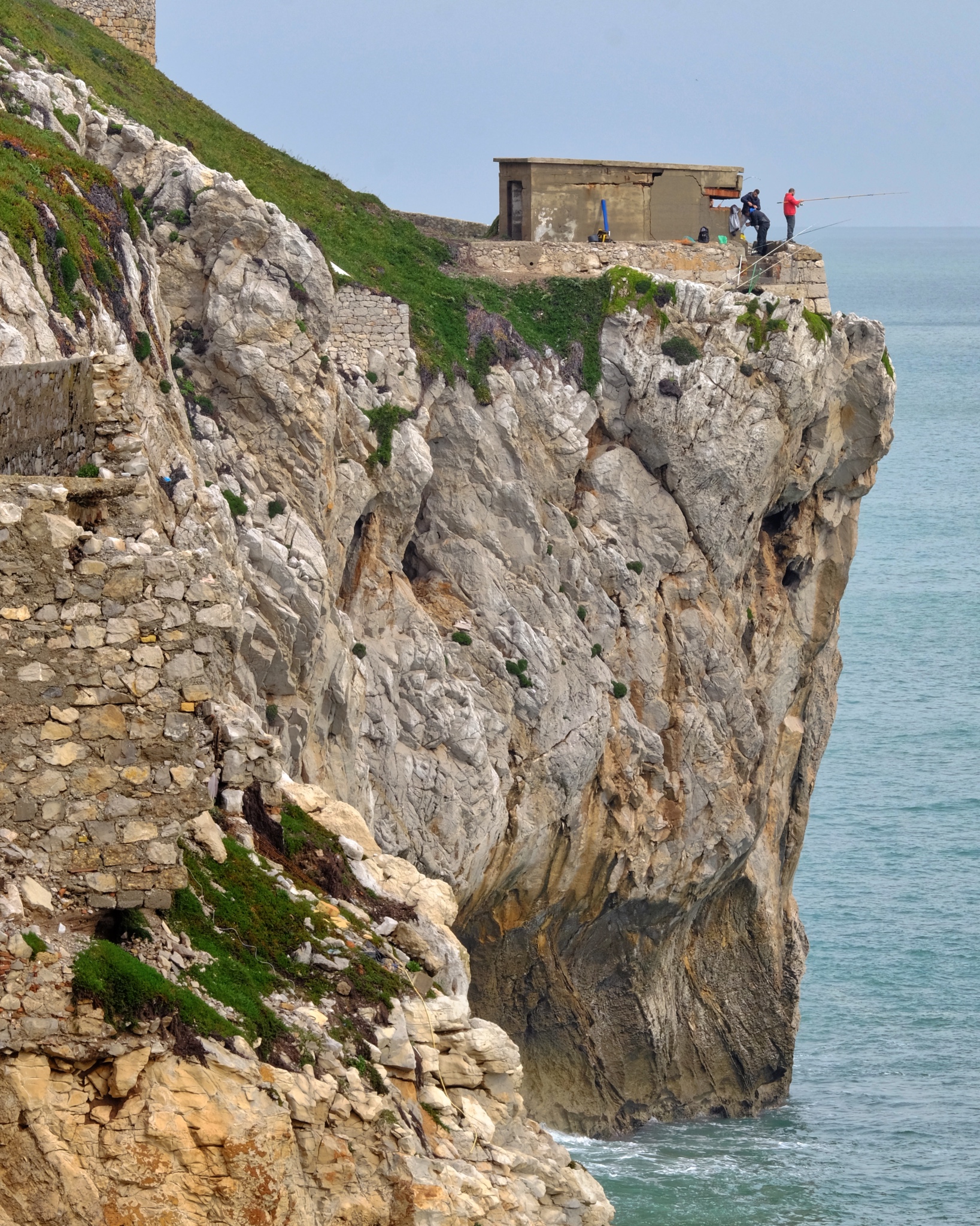 The 'rock' of Gibraltar falls directly into the Mediterranean Sea on the eastern side. Fishermen find good use of an old war pill box.
The 'rock' of Gibraltar falls directly into the Mediterranean Sea on the eastern side. Fishermen find good use of an old war pill box.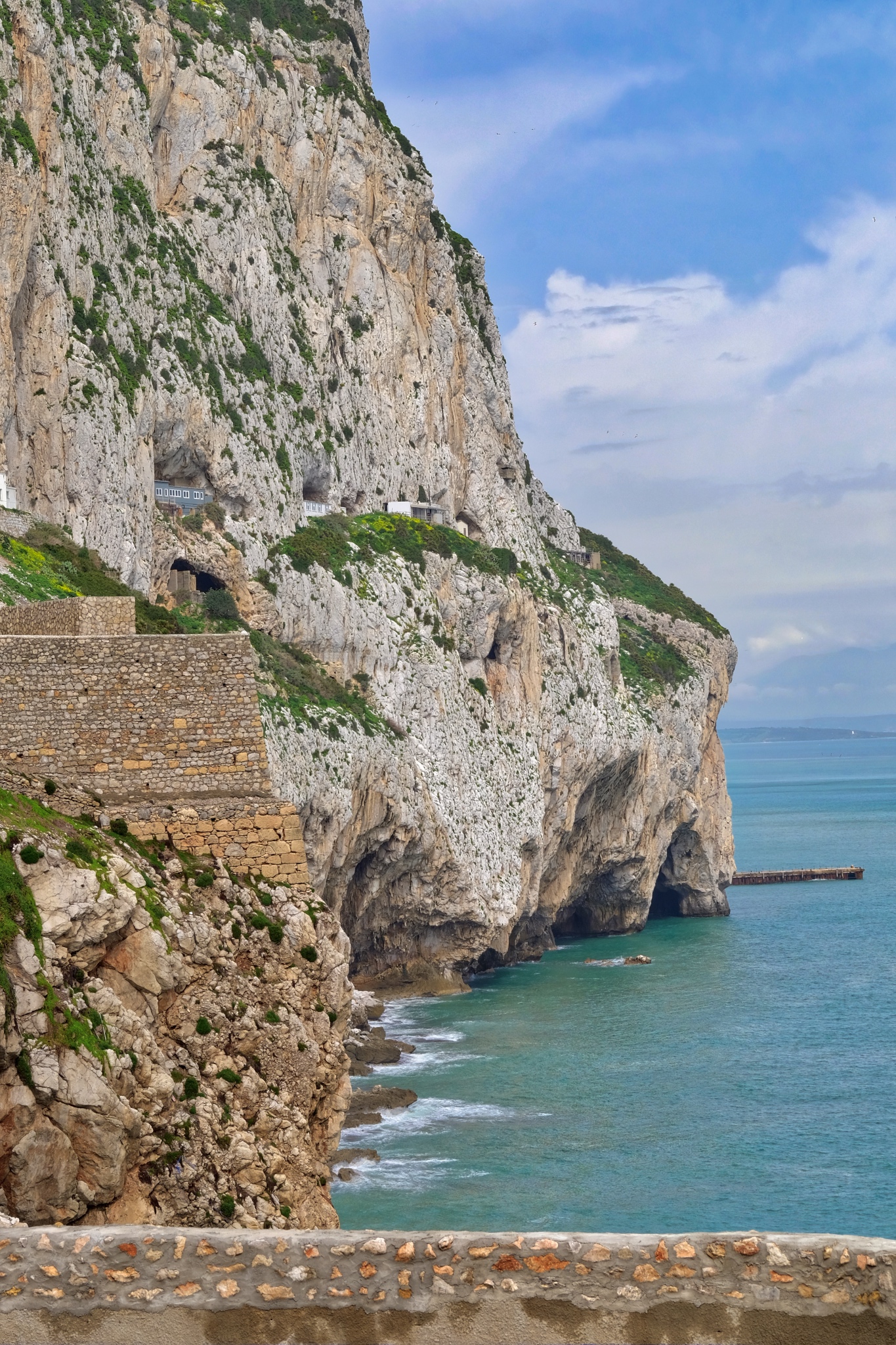 The cliffs of Gibraltar are compelling: their sheer size . . . and the remnants of structures left behind by the many former occupants over the millennia, draws the eye.
The cliffs of Gibraltar are compelling: their sheer size . . . and the remnants of structures left behind by the many former occupants over the millennia, draws the eye.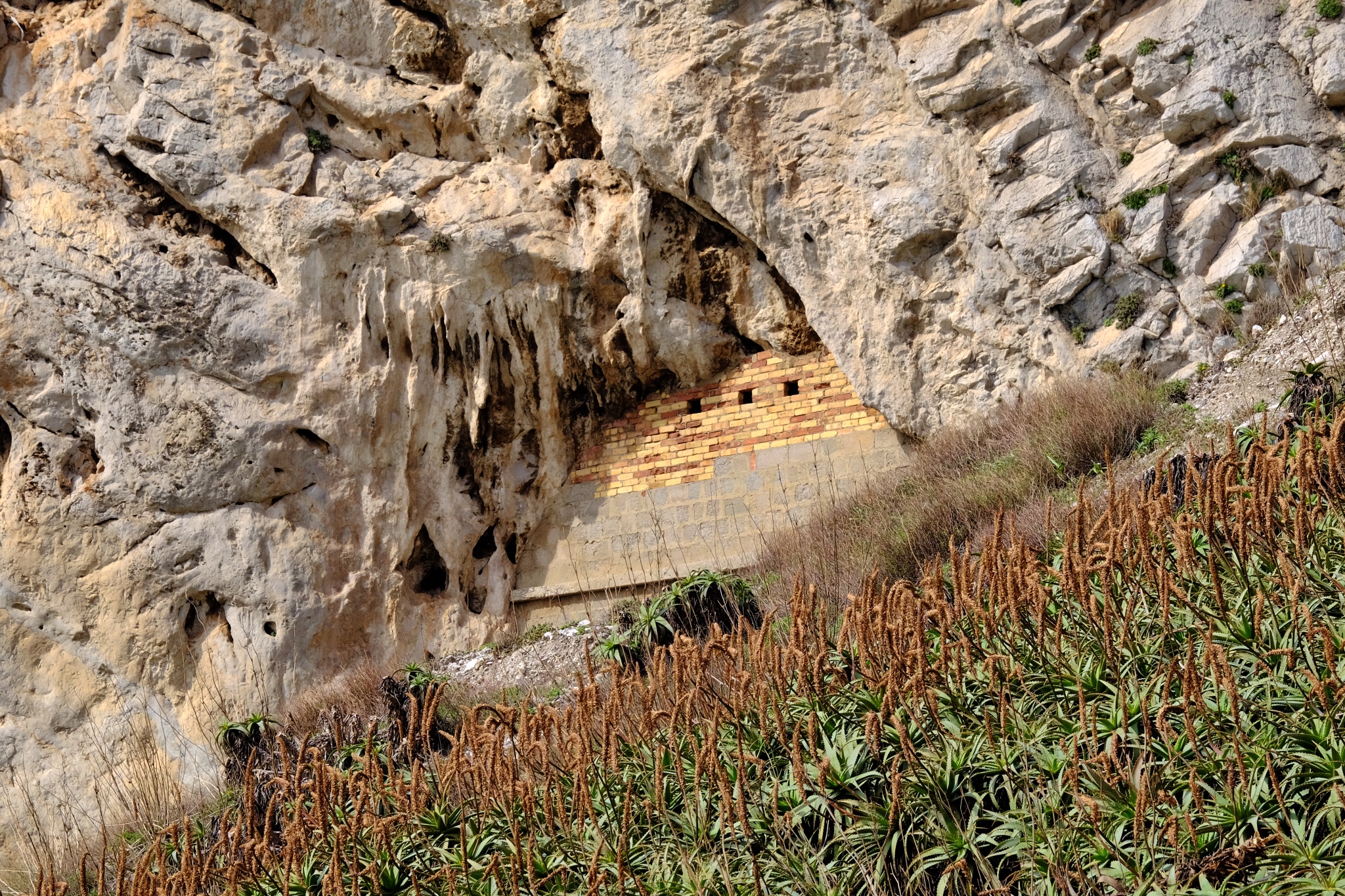 The whole of the rock is riddled with passages and tunnels used as fortified defensive emplacements.
The whole of the rock is riddled with passages and tunnels used as fortified defensive emplacements.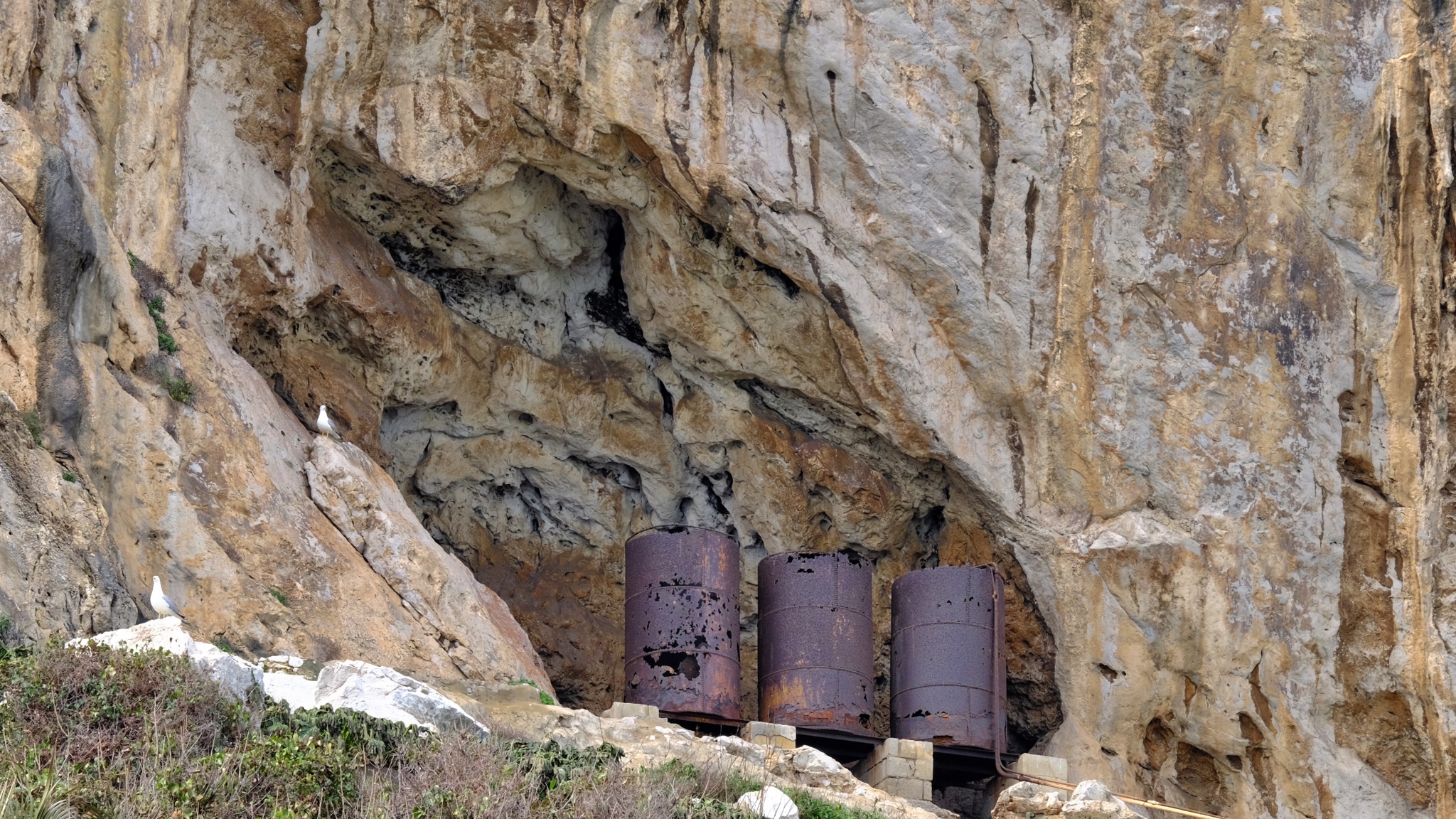 Some very old infrastructure left behind by a long forgotten project.
Some very old infrastructure left behind by a long forgotten project.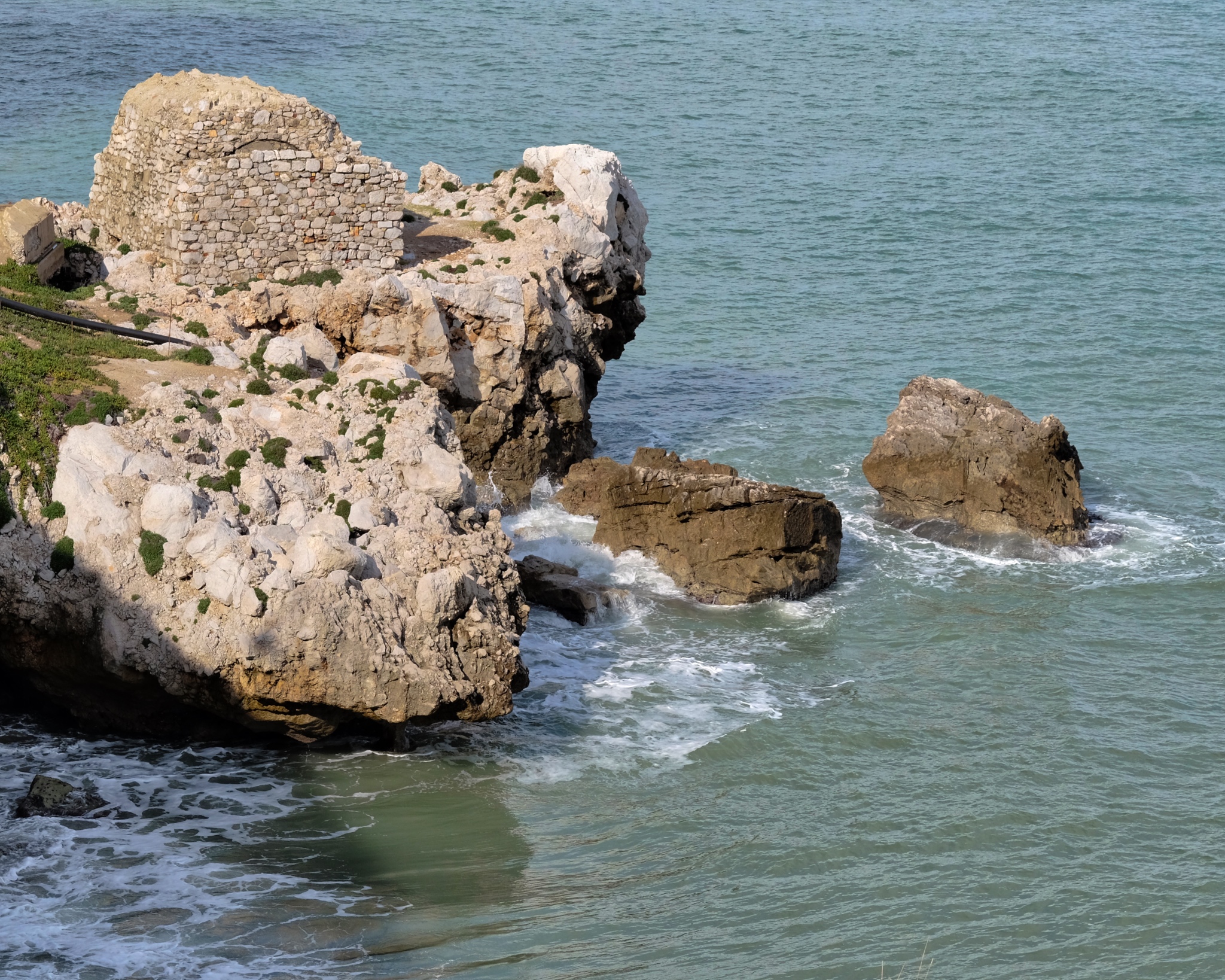 Everywhere a remnant of some previous occupier . . . Moorish?
Everywhere a remnant of some previous occupier . . . Moorish?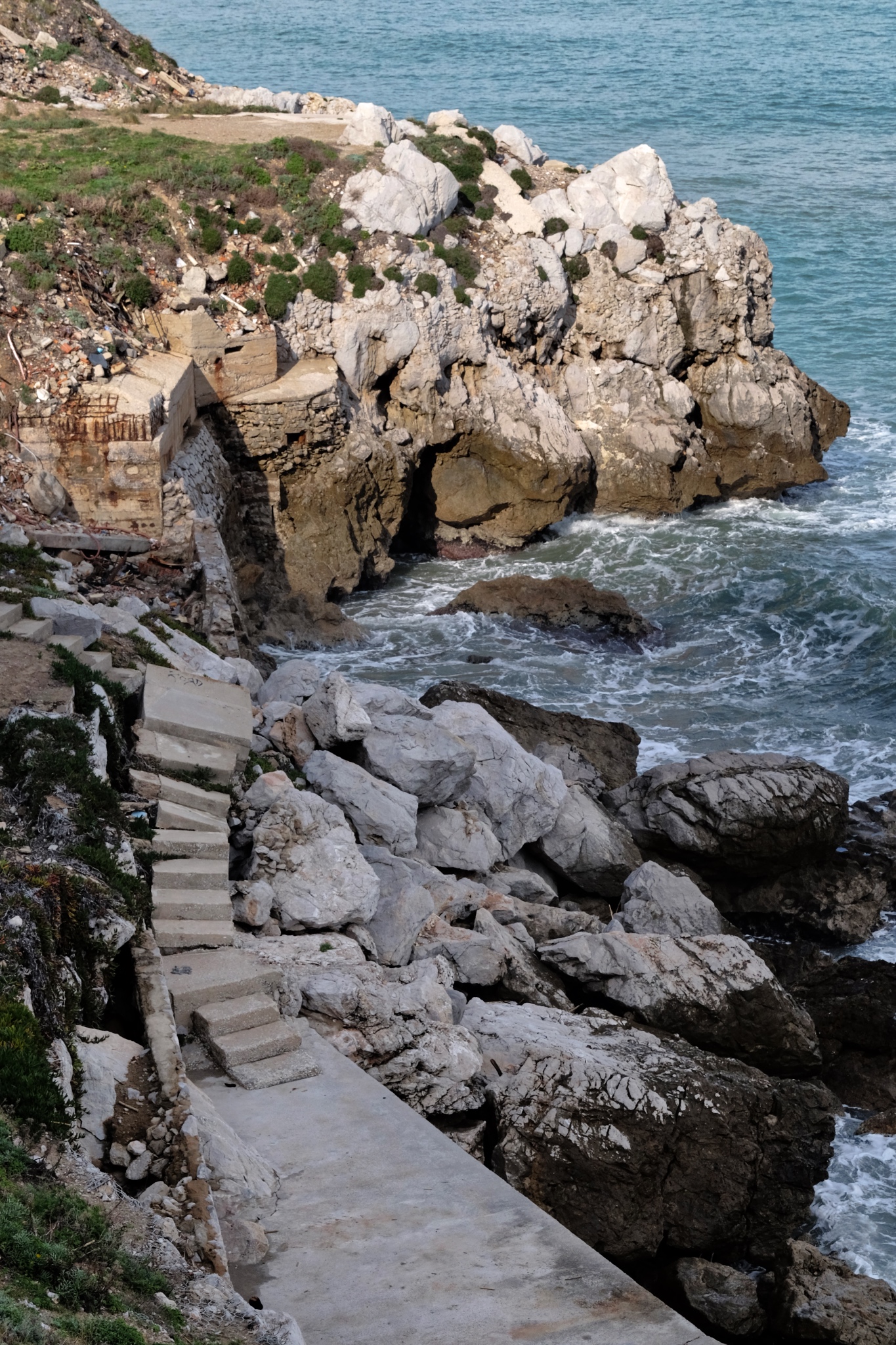 Many different building traces from many different eras all overlapping . . . . Gibraltar was occupied, at various times from 950BC, by the Phoneticians, Greeks, Carthaginians, Romans, Vandals, Goths, Visigoths, Moors, Nasrids, Medinas, Dutch, Spanish, and ultimately, the British.
Many different building traces from many different eras all overlapping . . . . Gibraltar was occupied, at various times from 950BC, by the Phoneticians, Greeks, Carthaginians, Romans, Vandals, Goths, Visigoths, Moors, Nasrids, Medinas, Dutch, Spanish, and ultimately, the British.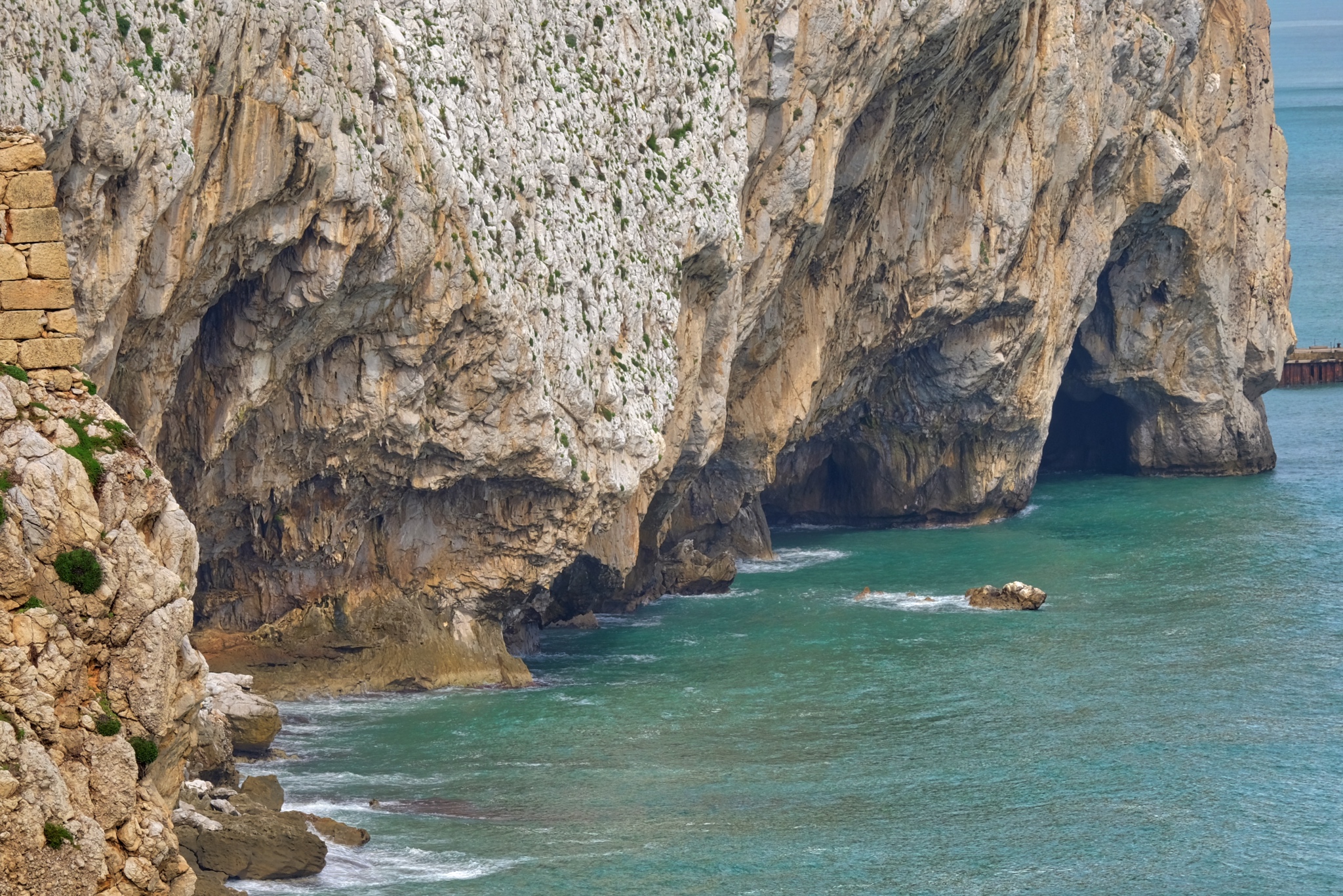 Near here, in Gorham's Cave, Neanderthal remains were found dating to 55,000 years ago.
Near here, in Gorham's Cave, Neanderthal remains were found dating to 55,000 years ago.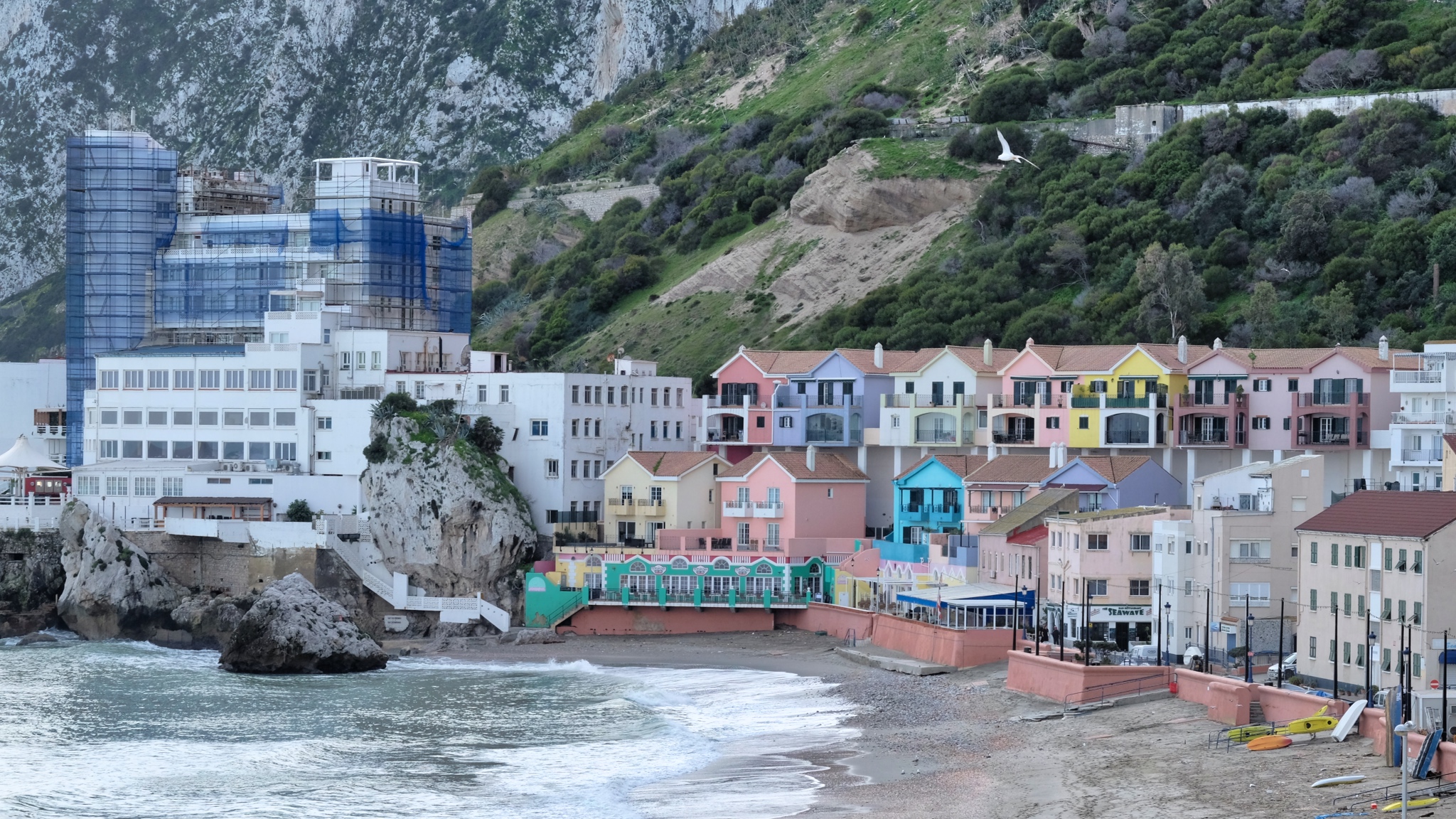 Today, Gibraltar is a Mecca for Mediterranean cruise ships and British retirees (pensioners).
Today, Gibraltar is a Mecca for Mediterranean cruise ships and British retirees (pensioners).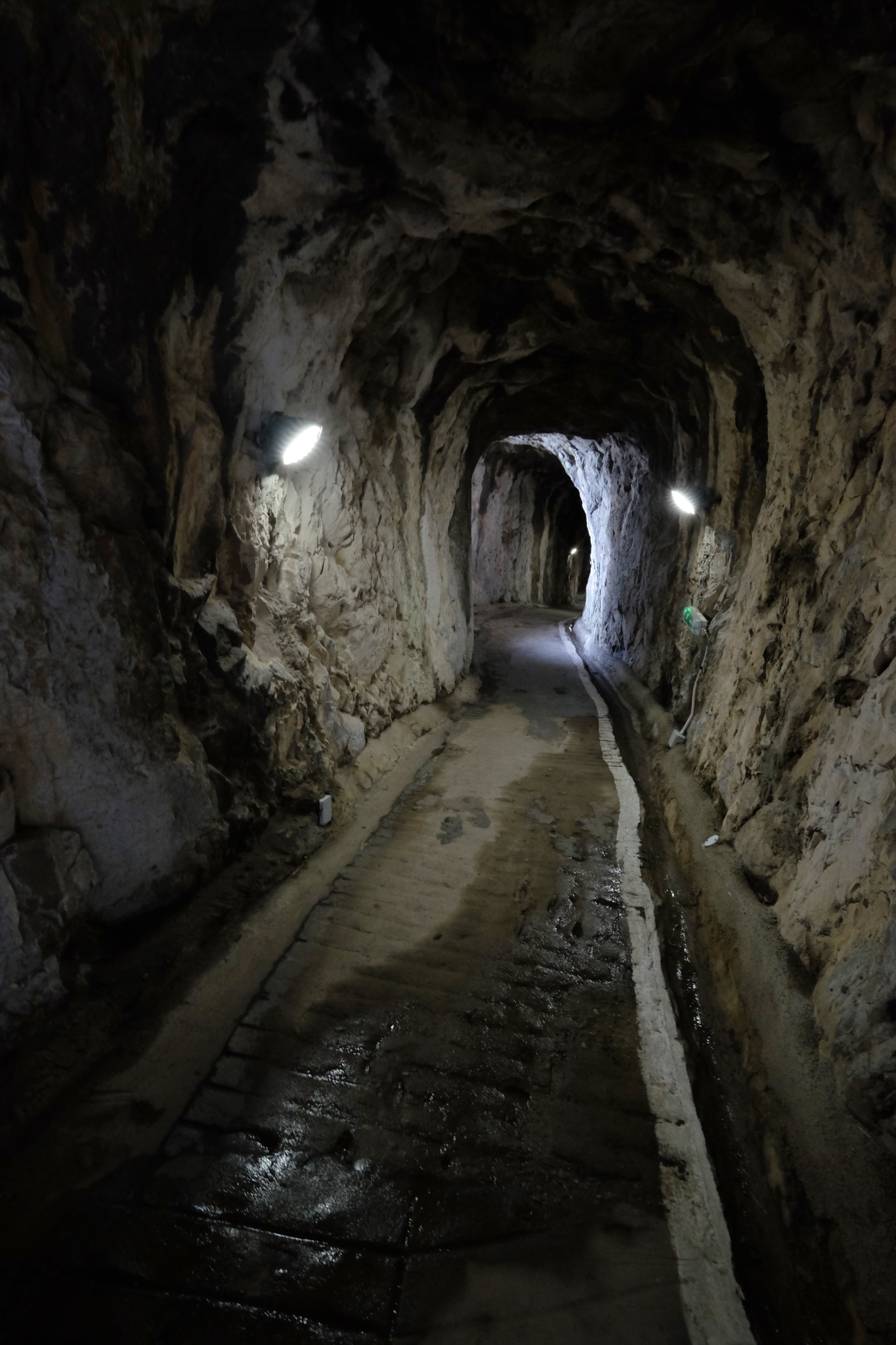 The Rock of Gibraltar is as riddled with caves and tunnels as a block of Swiss cheese. The massive rock was the ideal place to build hardened shelters during times of war, particularly during WWI and WWII. These tunnels date to even before those times when the British and the Spanish were at constant conflict.
The Rock of Gibraltar is as riddled with caves and tunnels as a block of Swiss cheese. The massive rock was the ideal place to build hardened shelters during times of war, particularly during WWI and WWII. These tunnels date to even before those times when the British and the Spanish were at constant conflict.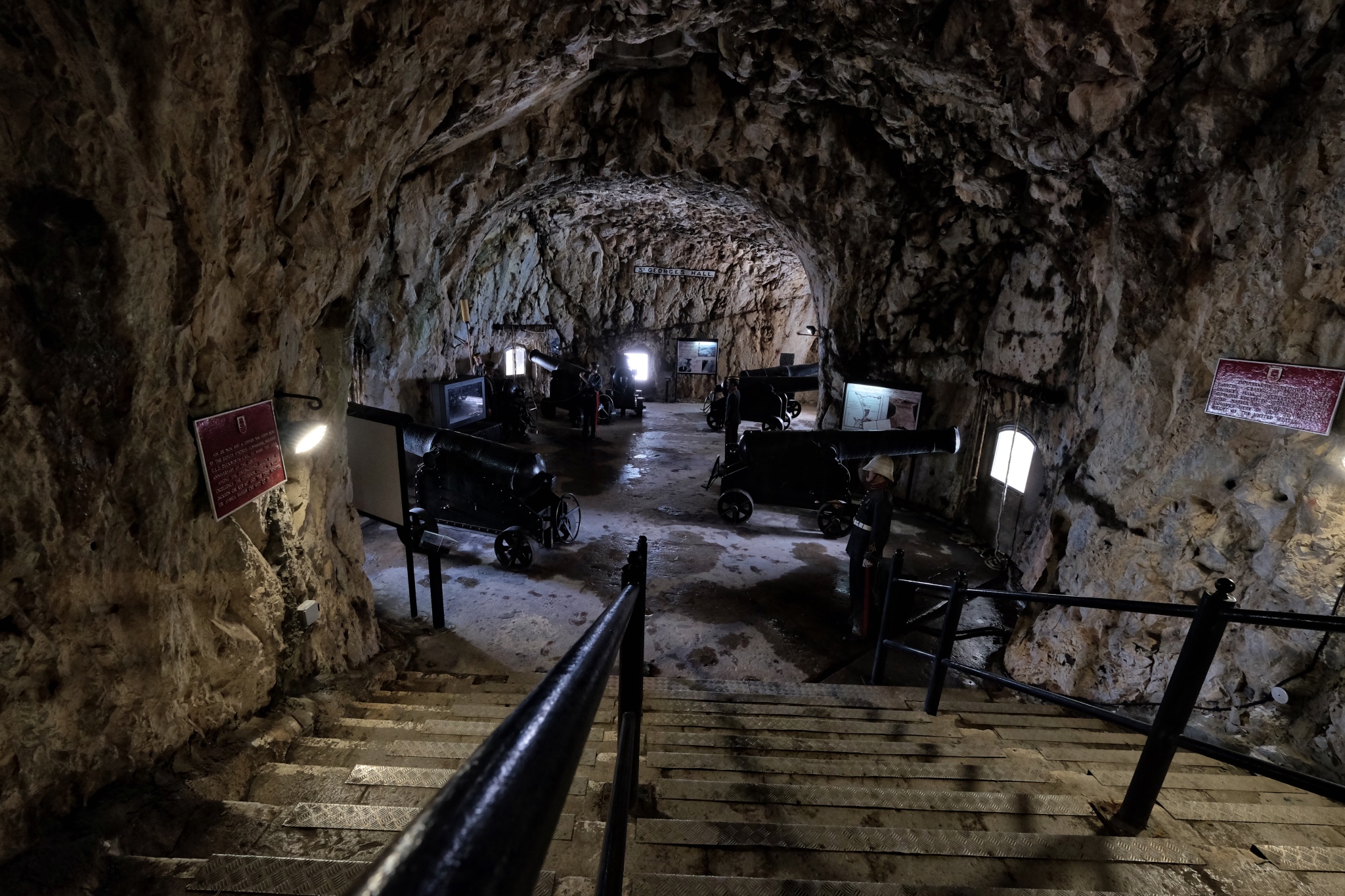 The St. George Tunnel is still equipped with the original cannon from the era.
The St. George Tunnel is still equipped with the original cannon from the era.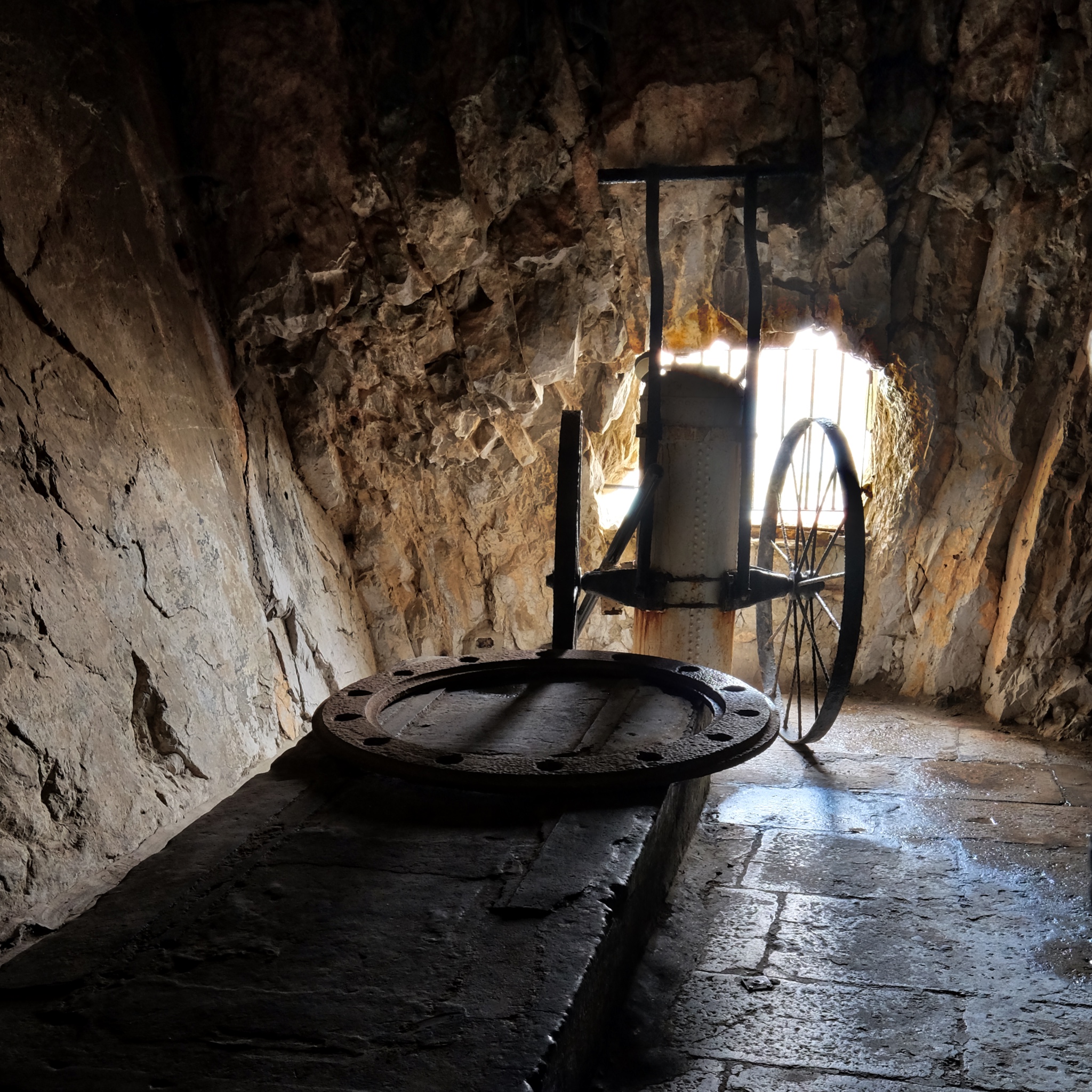 Although the cannon is missing, the turret and fire safety cart remains.
Although the cannon is missing, the turret and fire safety cart remains.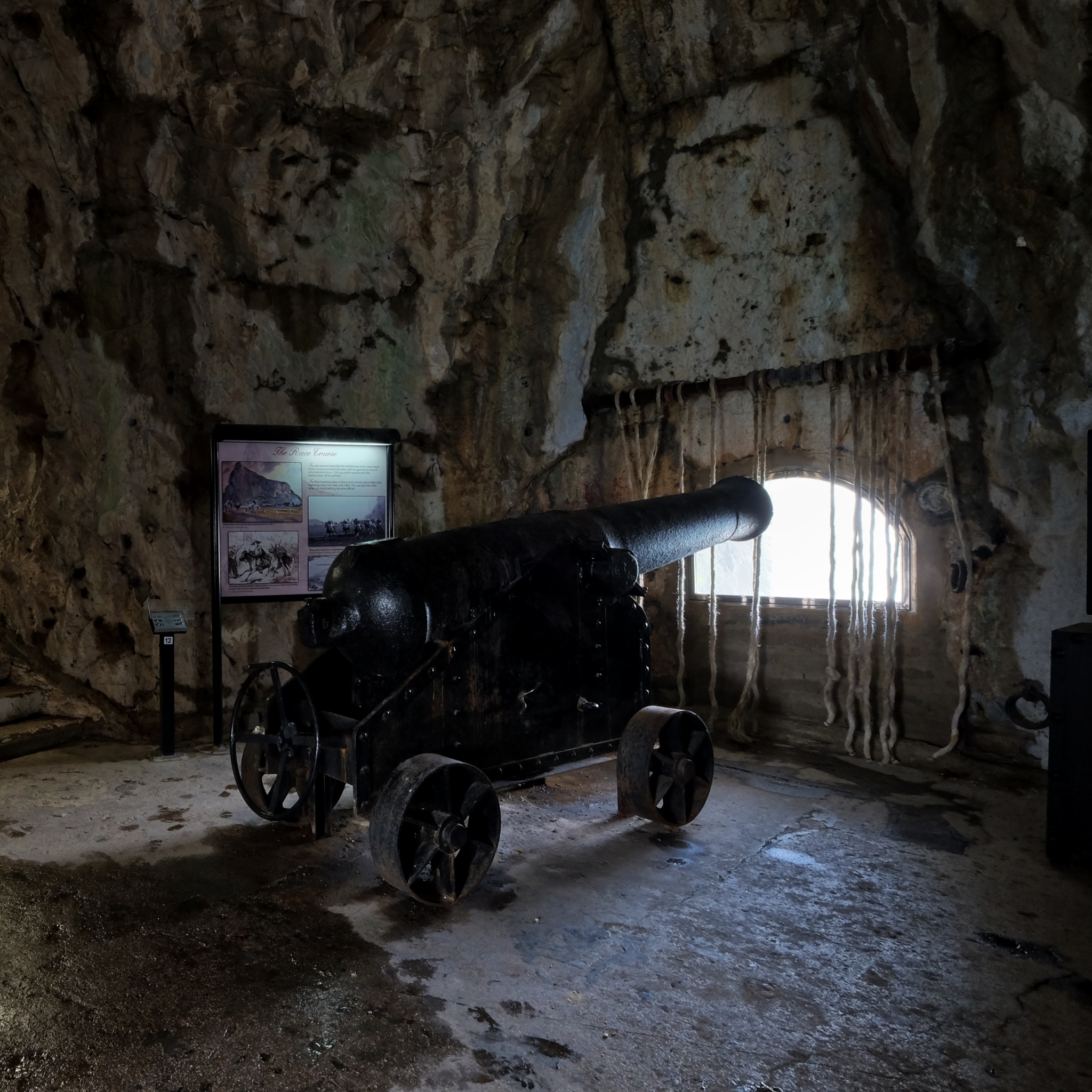 The historical placards were very informative and made the tunnel visit very interesting.
The historical placards were very informative and made the tunnel visit very interesting.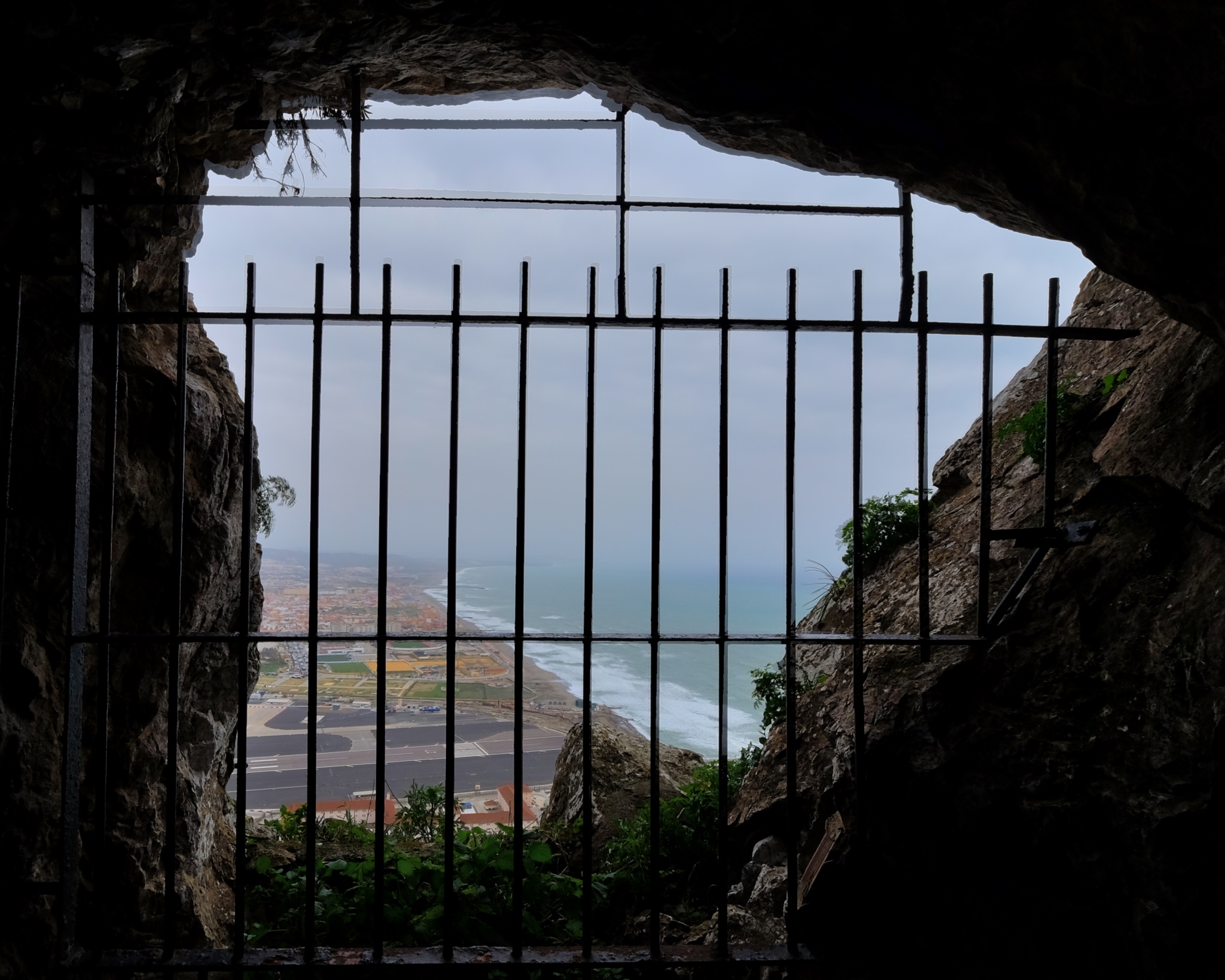 This view from a cannon emplacement is testimony to the strategic importance of these tunnels.
This view from a cannon emplacement is testimony to the strategic importance of these tunnels.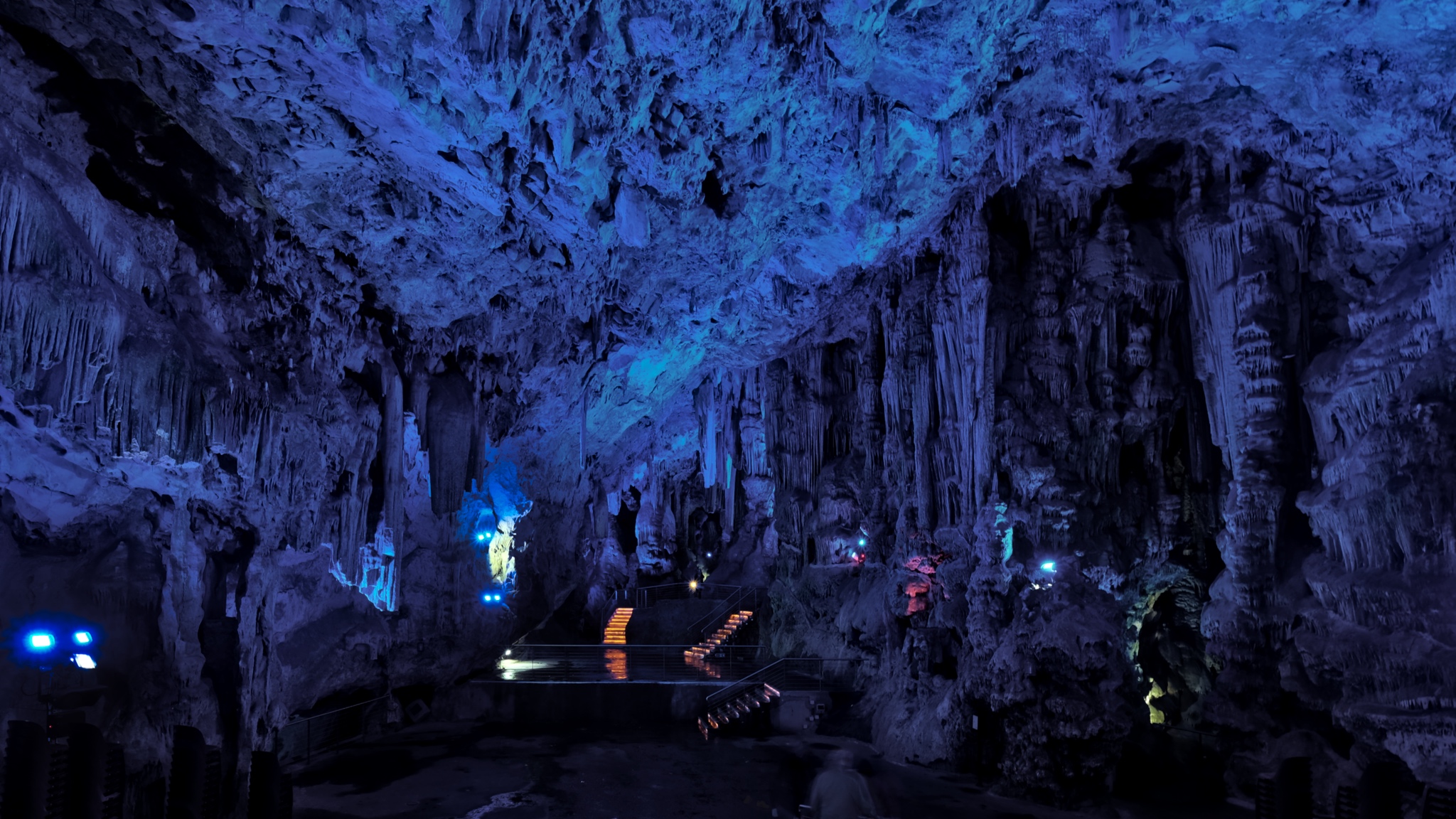 In addition to the military tunnels, there are also natural caves in the Rock of Gibraltar. For a nominal fee, you were treated to giant caverns lit by an ever-changing Xmas tree light.
In addition to the military tunnels, there are also natural caves in the Rock of Gibraltar. For a nominal fee, you were treated to giant caverns lit by an ever-changing Xmas tree light.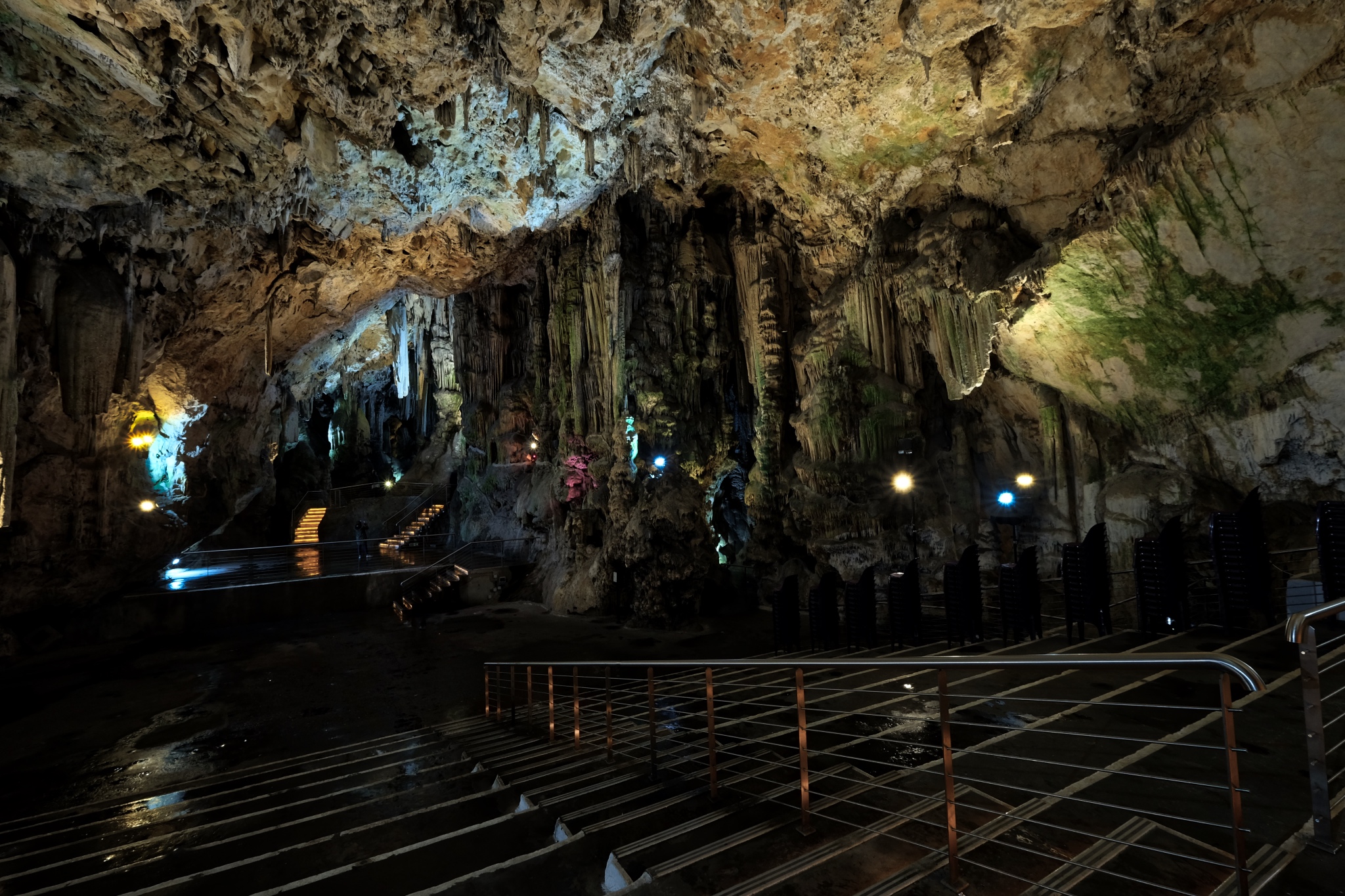 It appeared that they must hold musical events inside the cavern from time to time.
It appeared that they must hold musical events inside the cavern from time to time.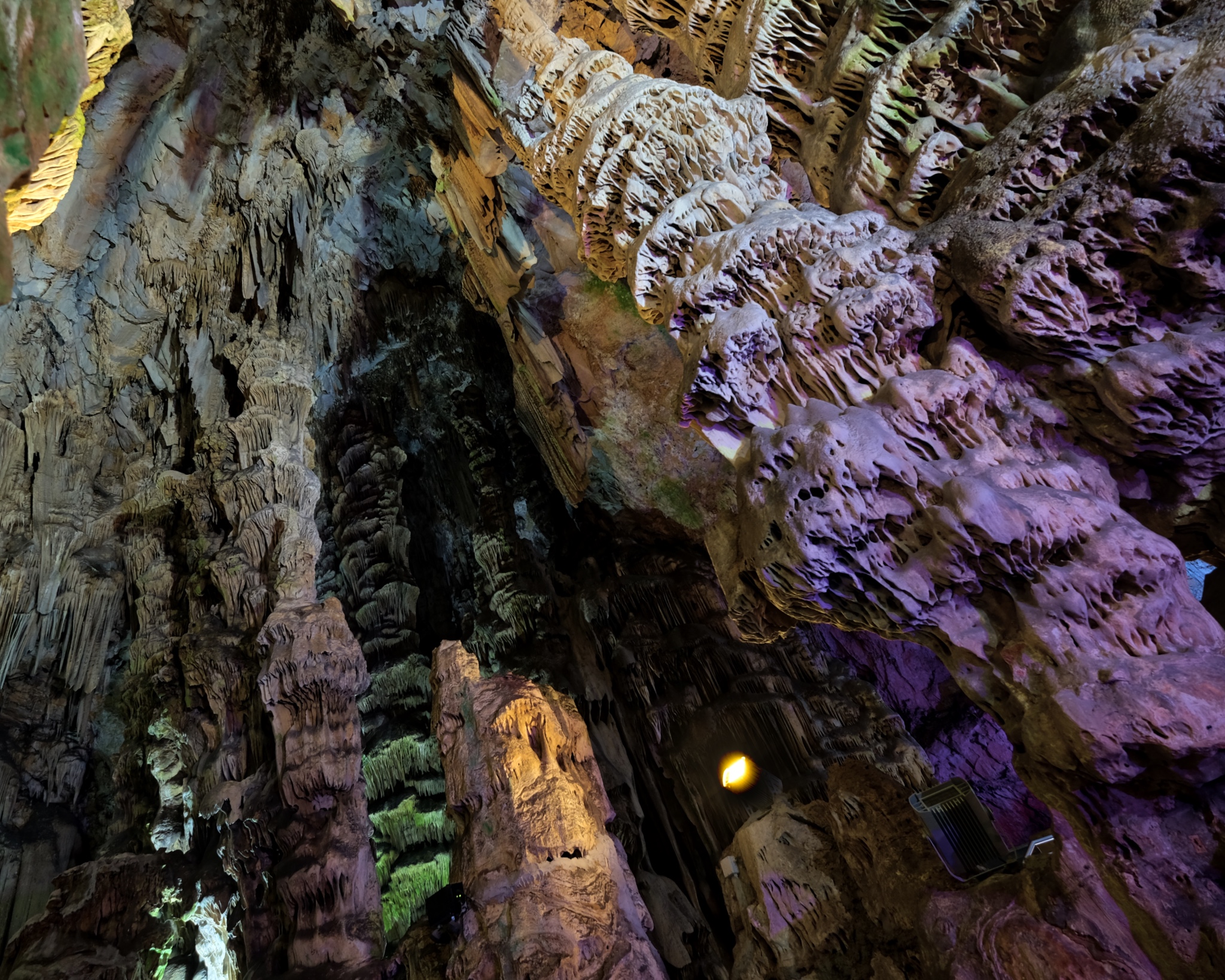 A very beautiful place indeed.
A very beautiful place indeed.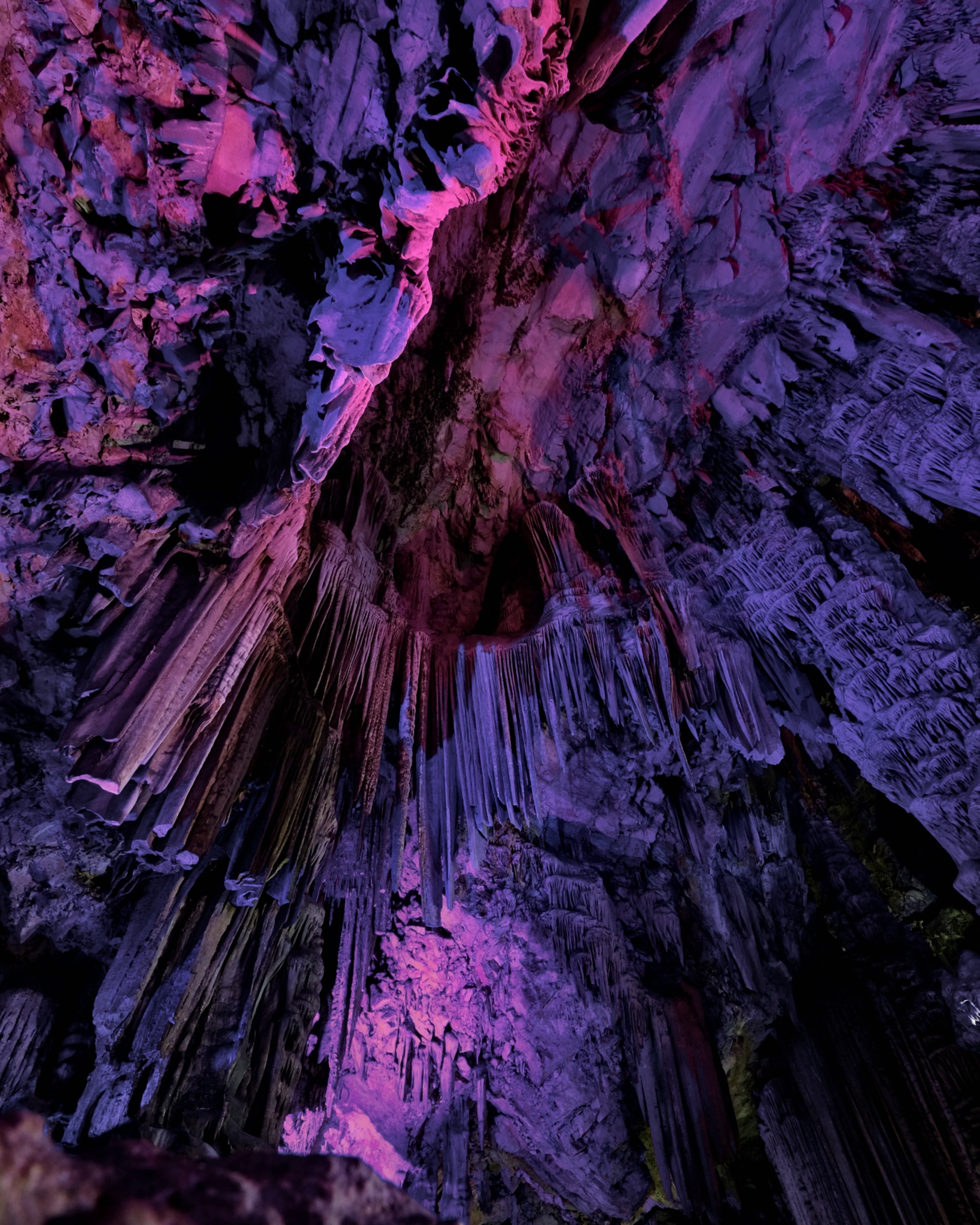 The colored lights grew on you after a while.
The colored lights grew on you after a while.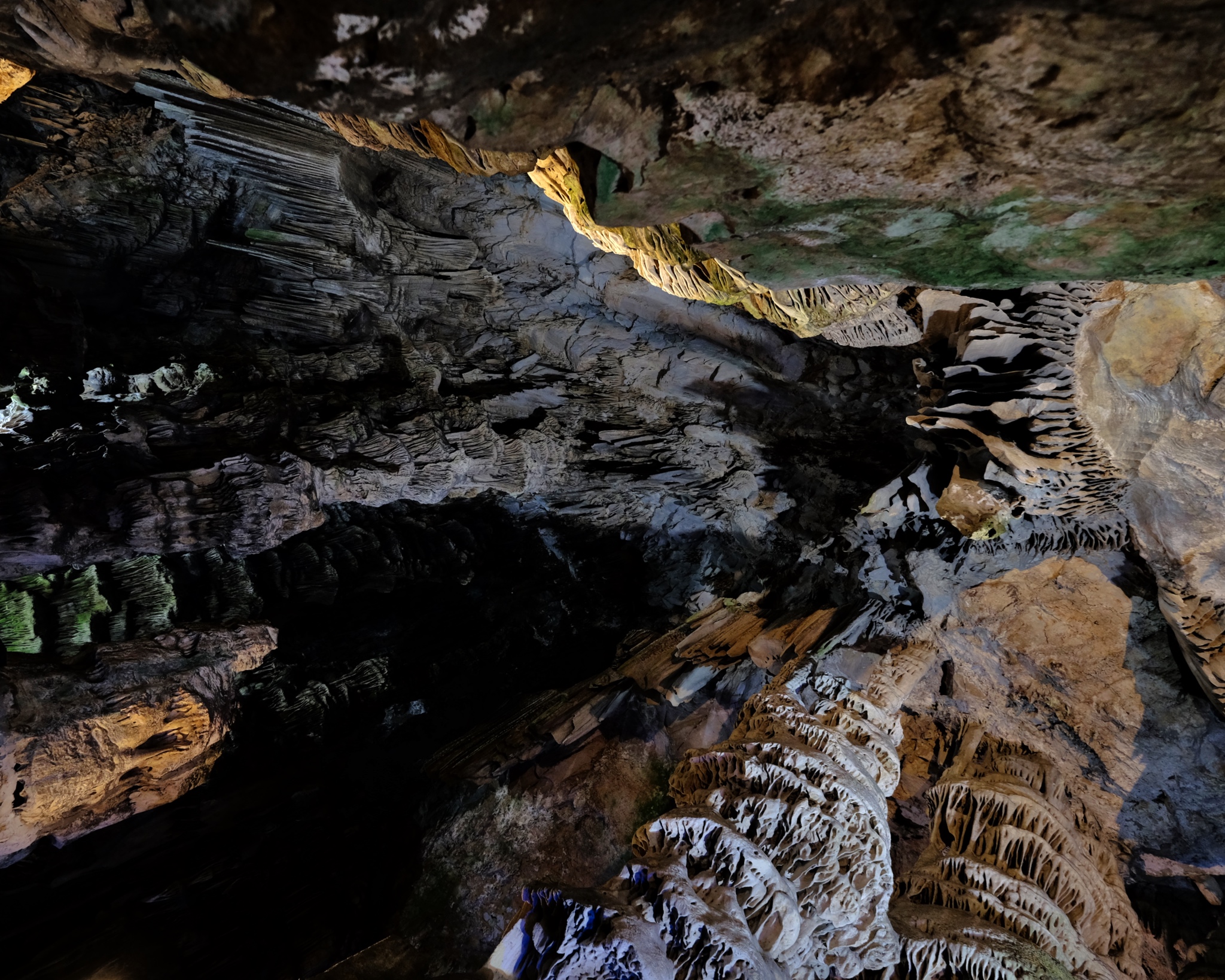 We enjoyed our walk-through of the caves. When we emerged were greeted by . . .
We enjoyed our walk-through of the caves. When we emerged were greeted by . . .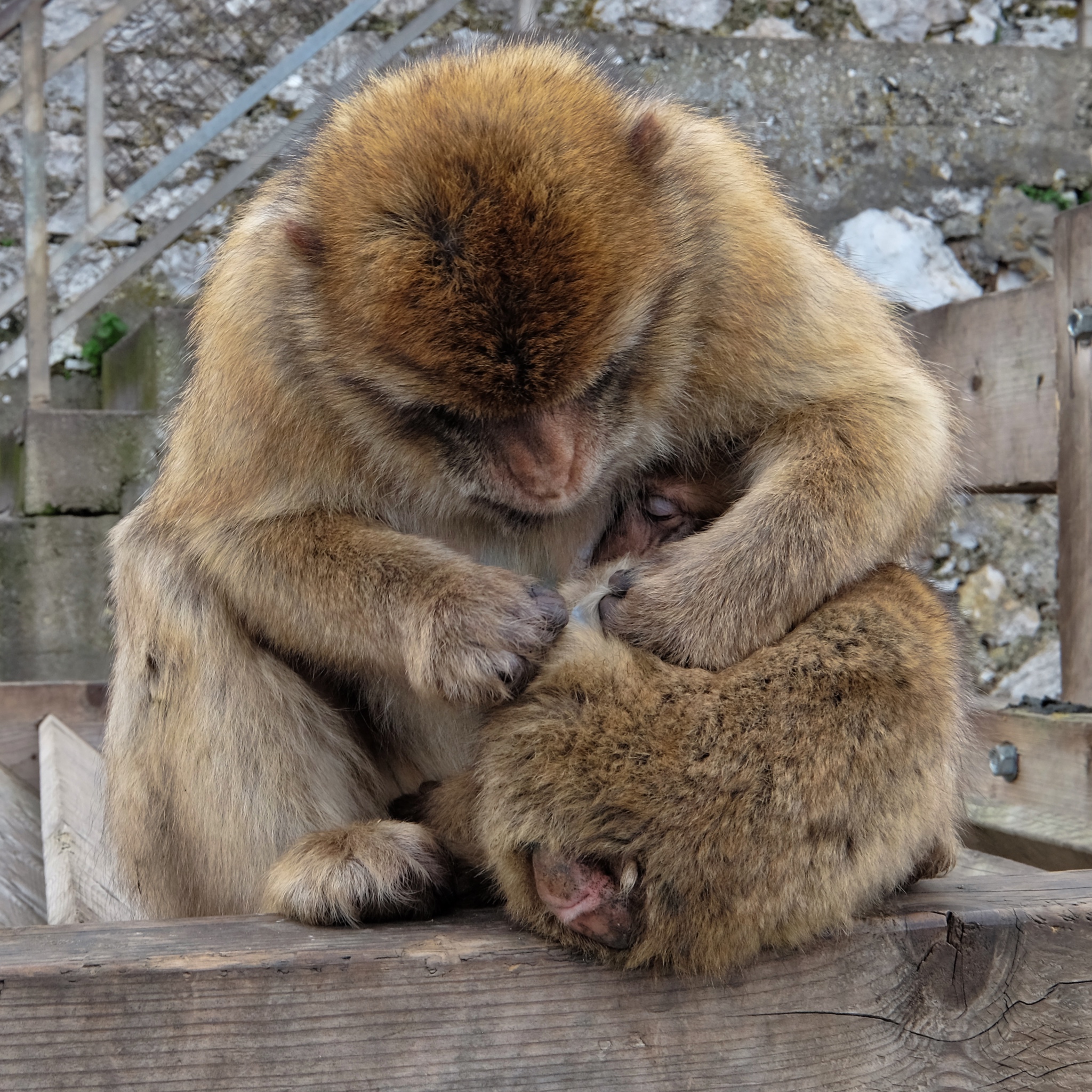 Monkeys! Lots of monkeys! We were warned about the monkeys . . . that they were little pickpockets! One does not associate monkeys with Europe . . . but there you are!
Monkeys! Lots of monkeys! We were warned about the monkeys . . . that they were little pickpockets! One does not associate monkeys with Europe . . . but there you are!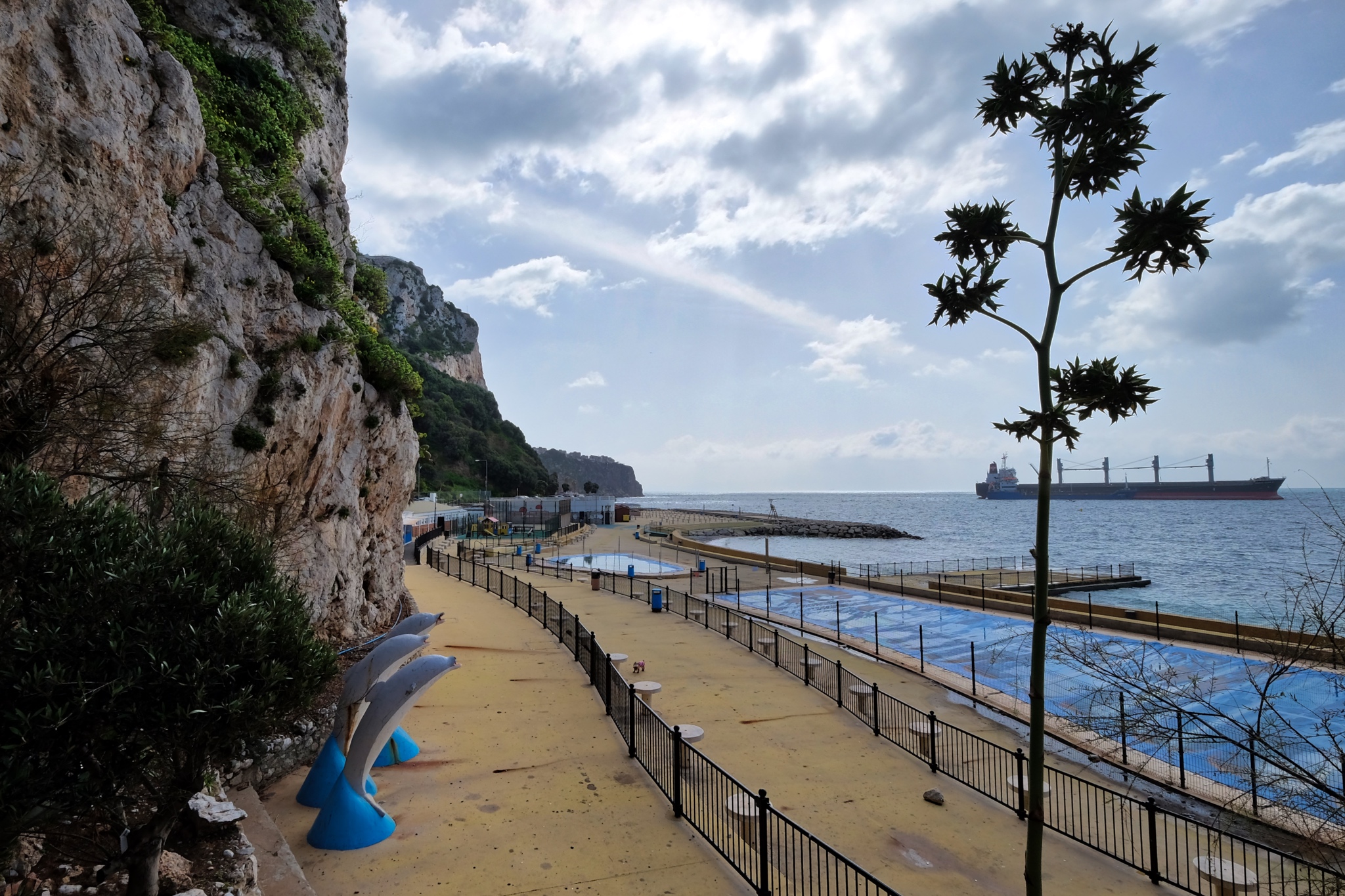
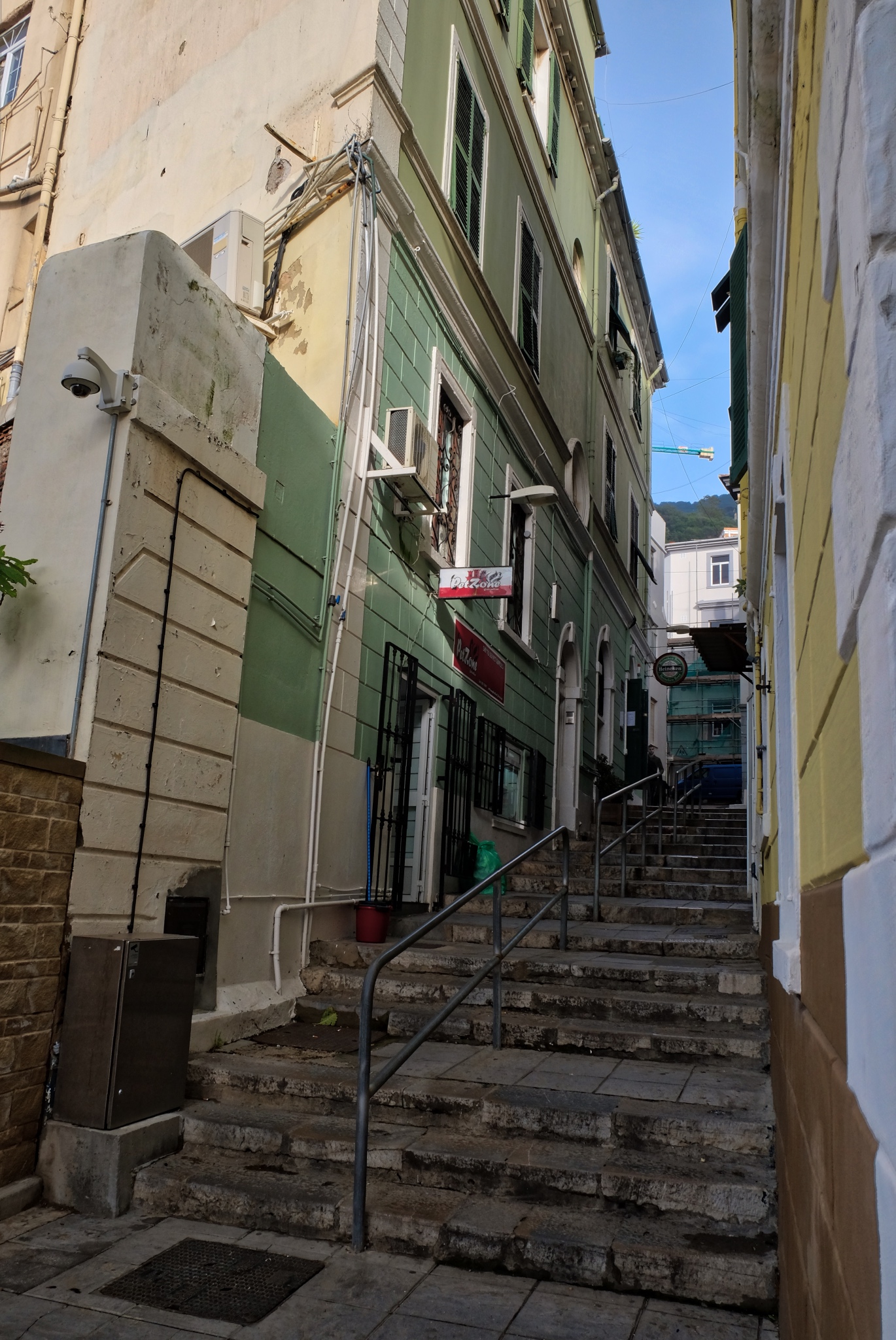 Gibraltar is, of course, built on the side of a big rock with little flat ground. As such, the streets and alleys are often just steep stairs.
Gibraltar is, of course, built on the side of a big rock with little flat ground. As such, the streets and alleys are often just steep stairs.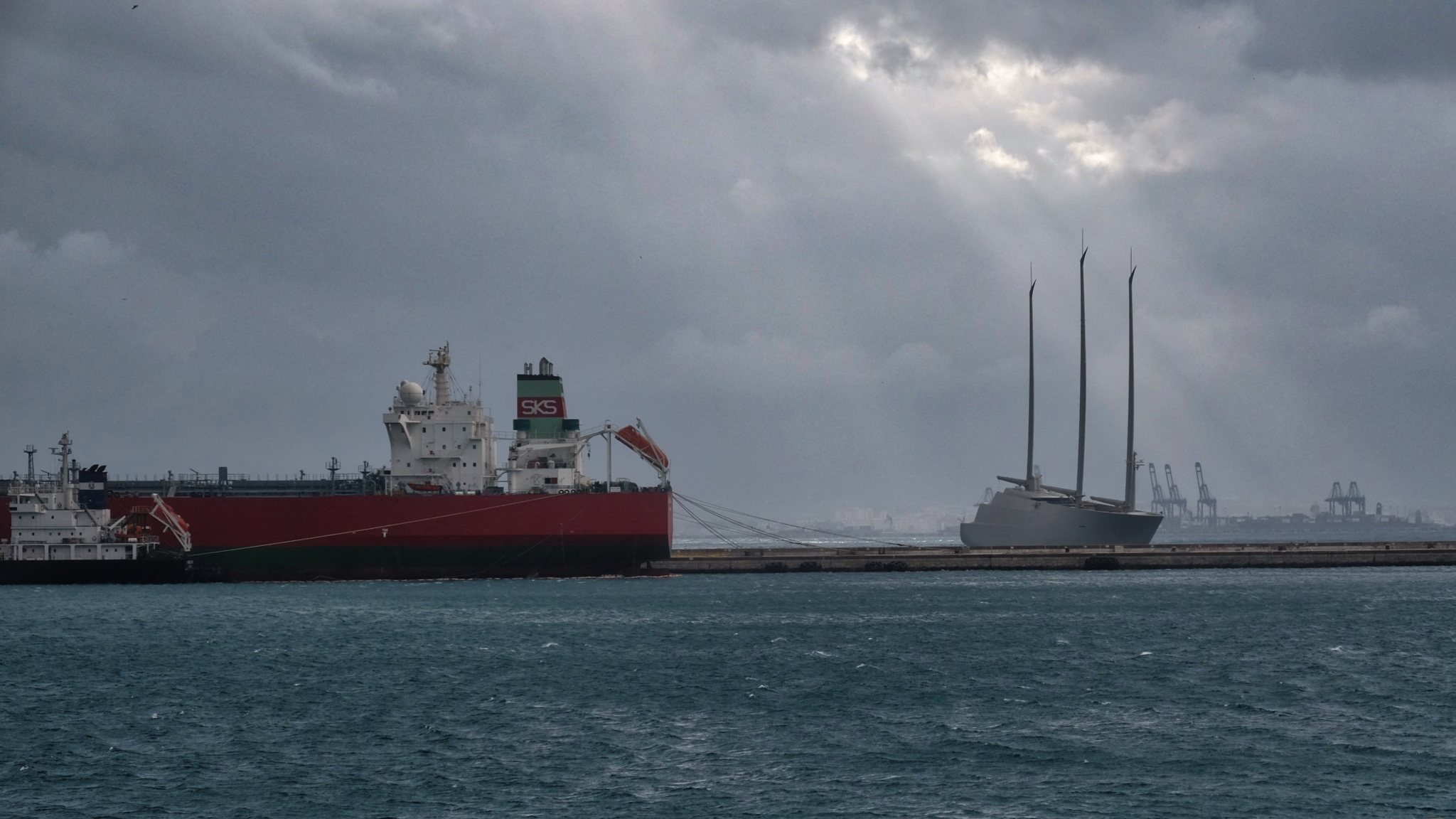 Gibraltar is also a port city . . . and a place for a 'mystery Russian' to came and try for sea trials and licensing of a stealth sailing ship. This Dark Boat was the talk of the town's permanent residents. It was gone in the morning.
Gibraltar is also a port city . . . and a place for a 'mystery Russian' to came and try for sea trials and licensing of a stealth sailing ship. This Dark Boat was the talk of the town's permanent residents. It was gone in the morning.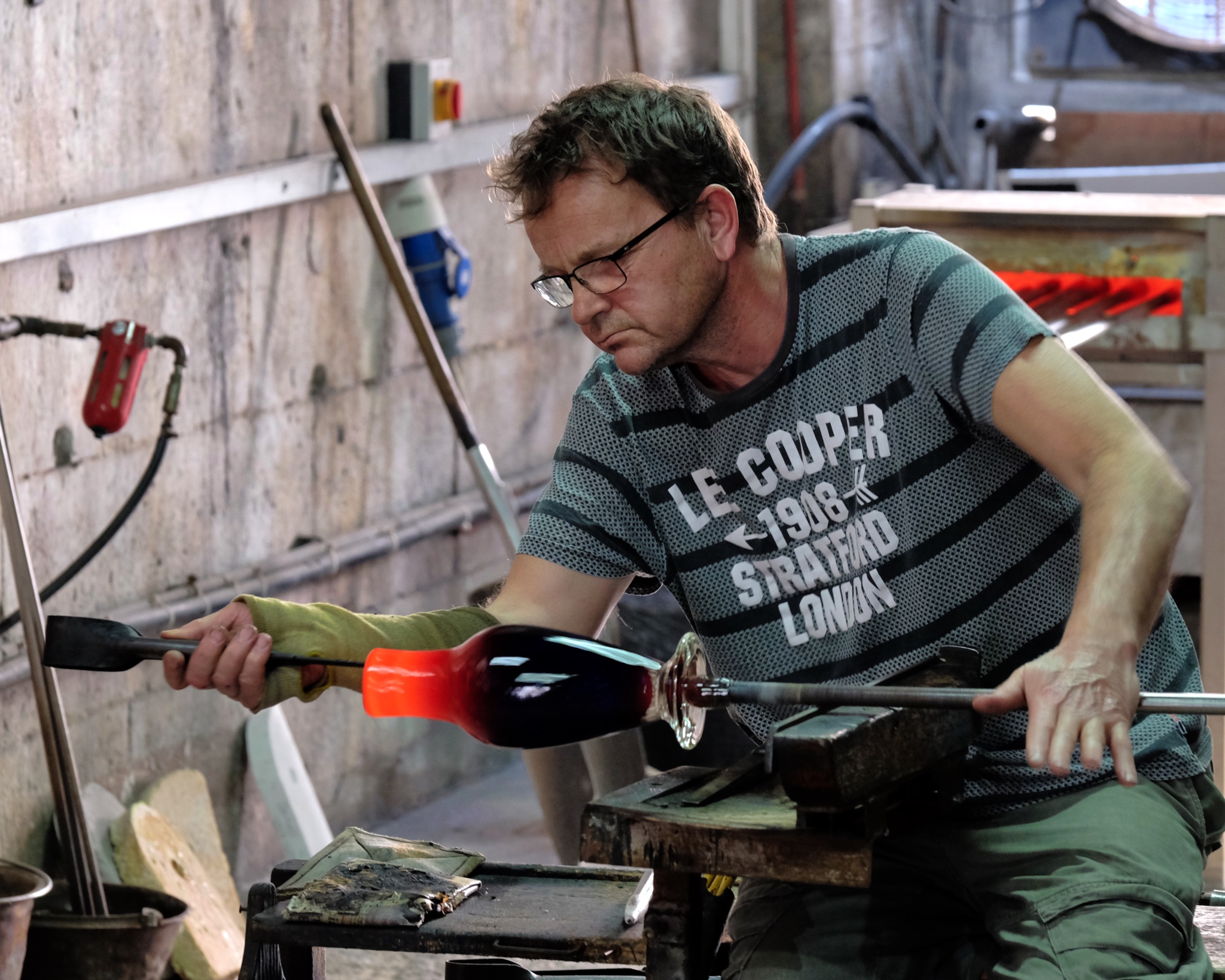 There are craft shops open to the public. Here a famous glassblower plys his trade.
There are craft shops open to the public. Here a famous glassblower plys his trade.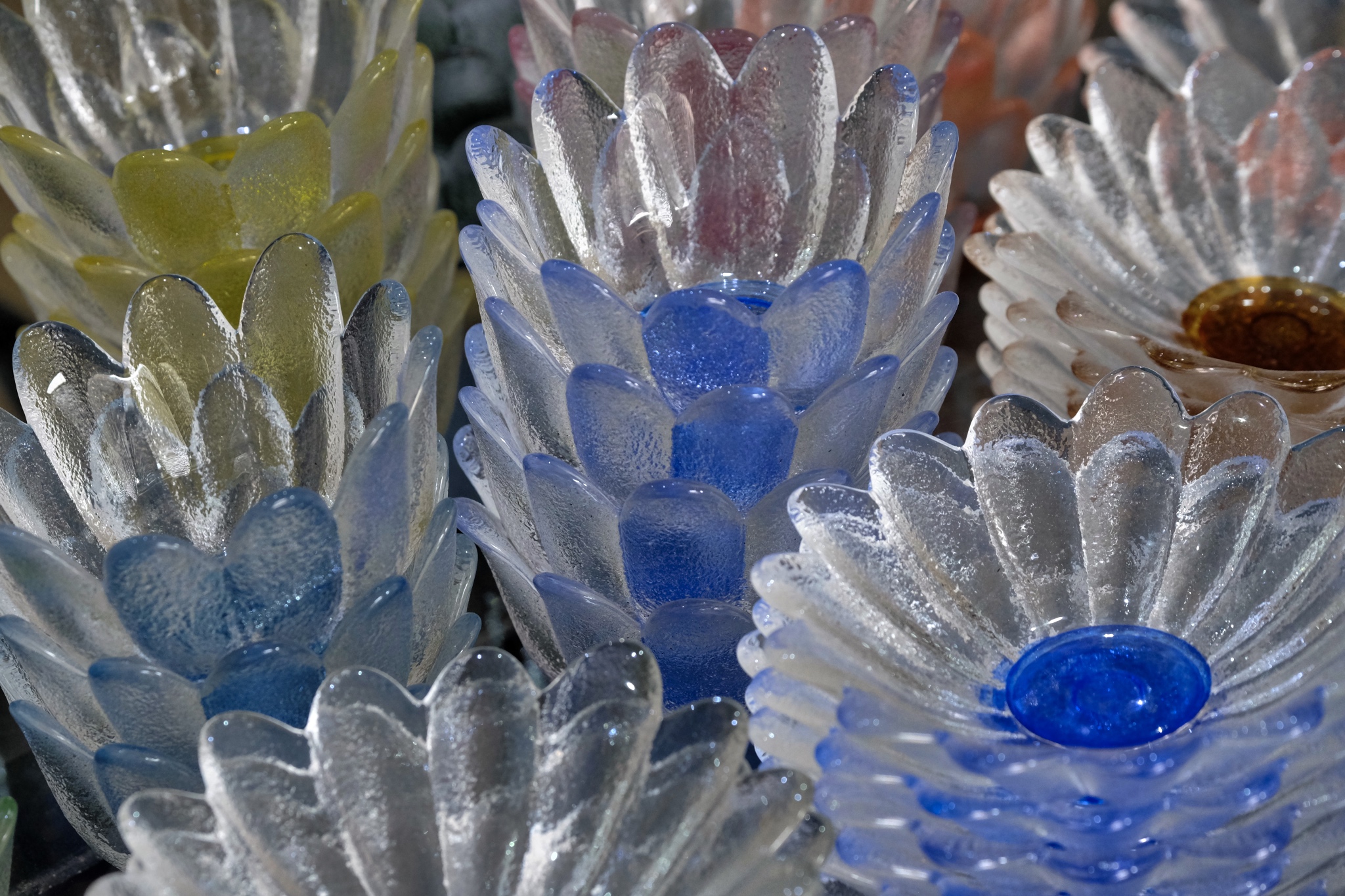 Beautiful work too . . .
Beautiful work too . . .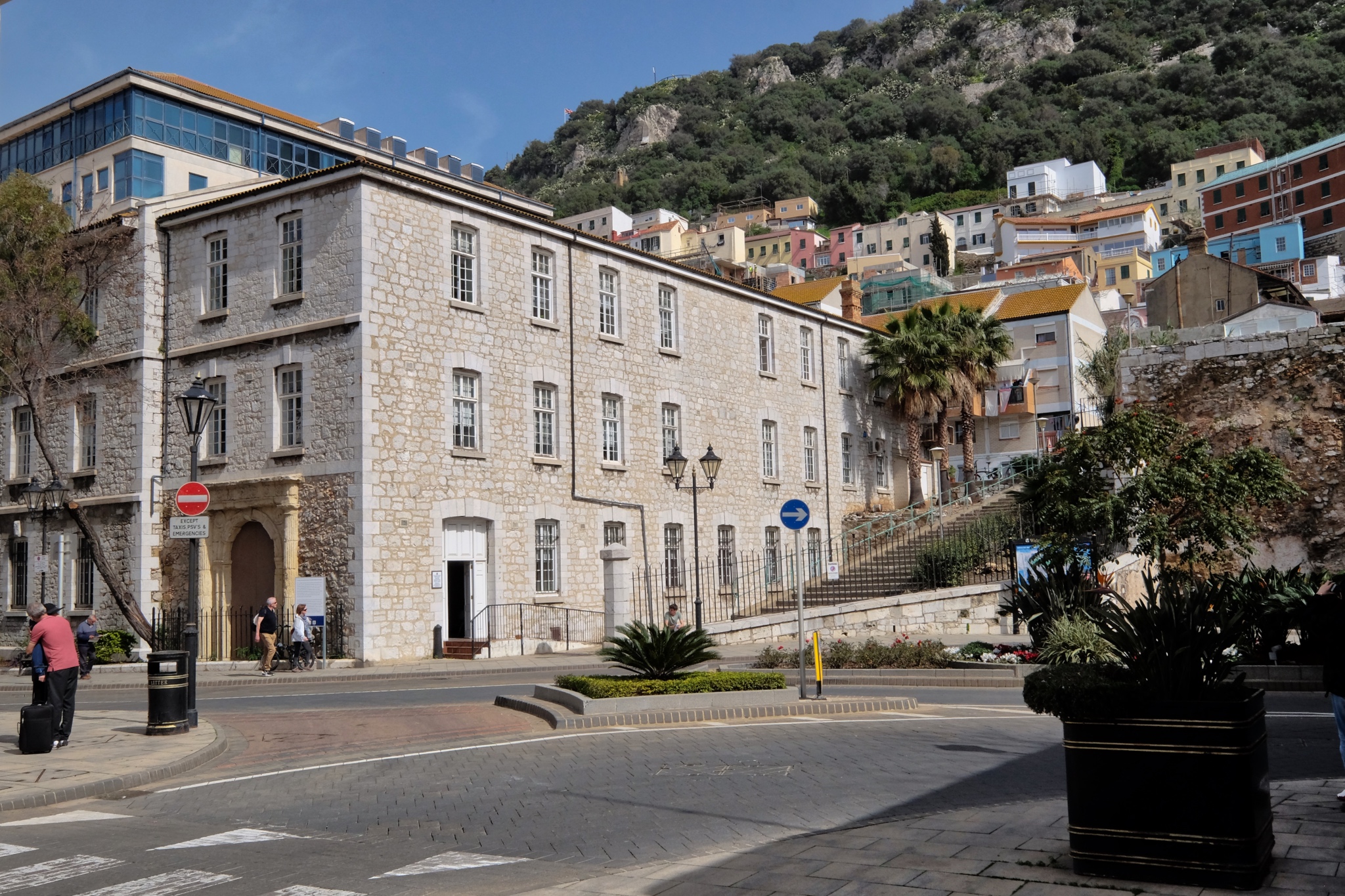 Gibraltar town sits fast against the famous 'Rock.'
Gibraltar town sits fast against the famous 'Rock.'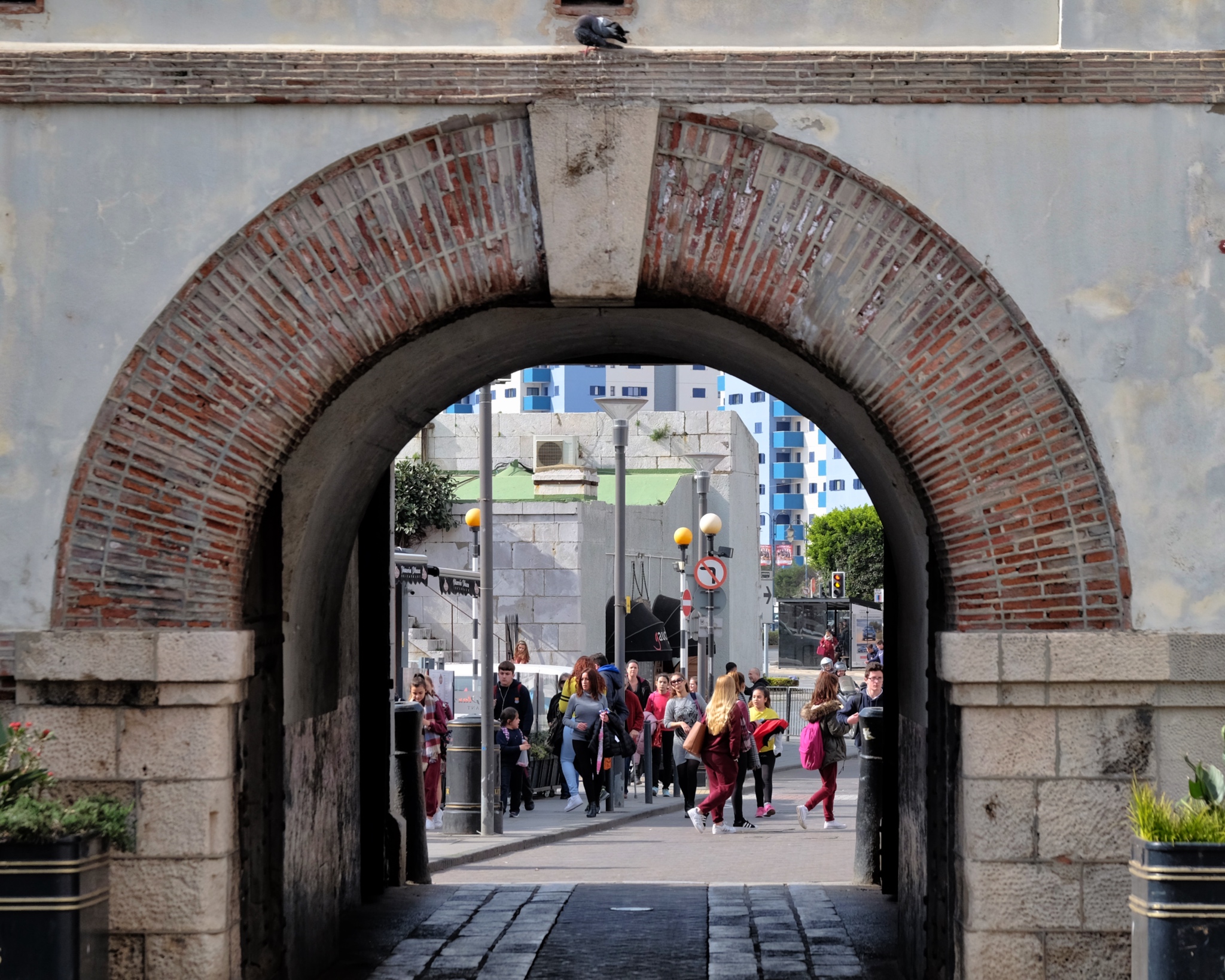 The south city gate . . . already a few tourists mixed in with the locals . . .
The south city gate . . . already a few tourists mixed in with the locals . . .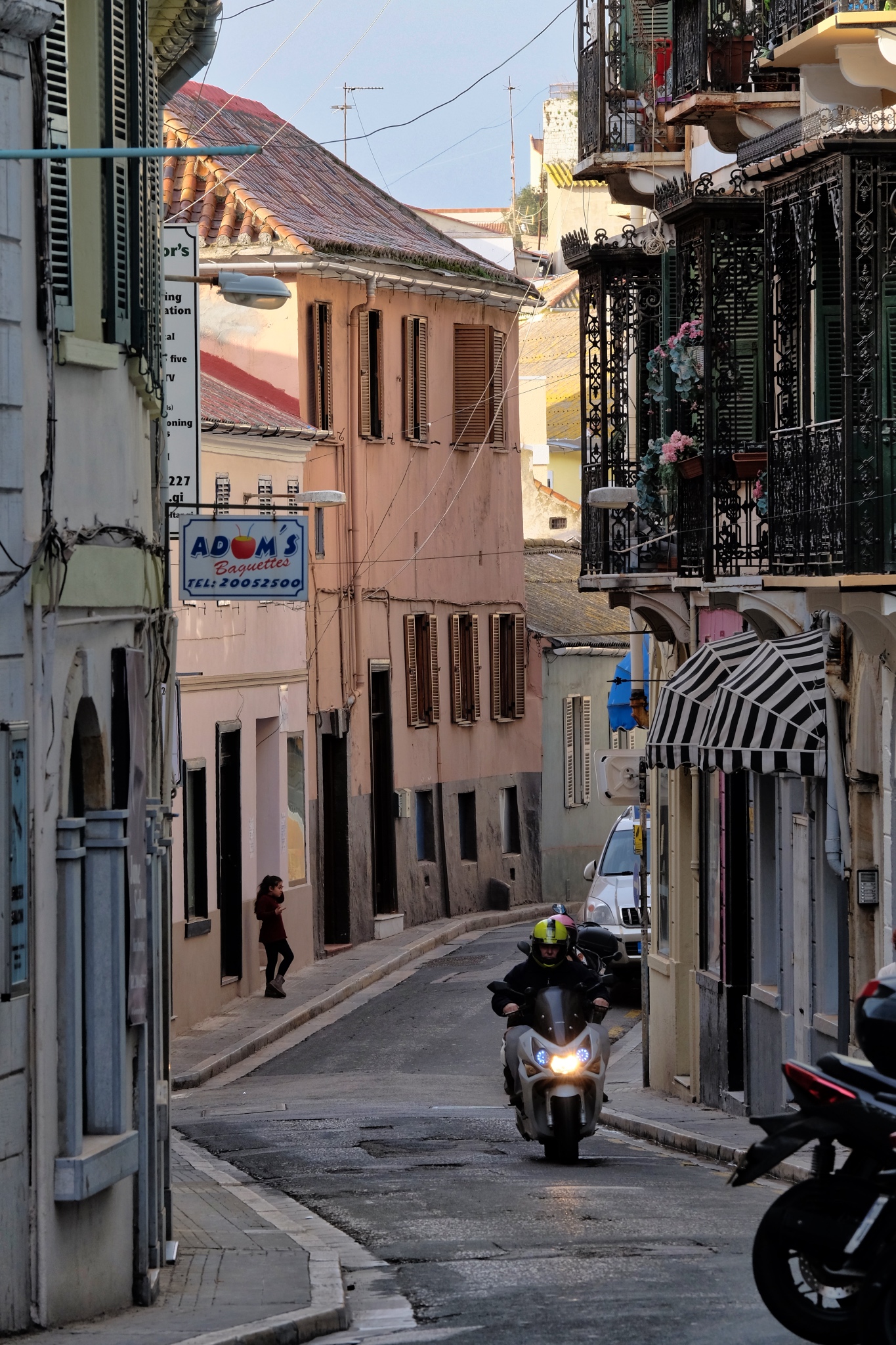 There are some beautiful curving streets through the old town.
There are some beautiful curving streets through the old town.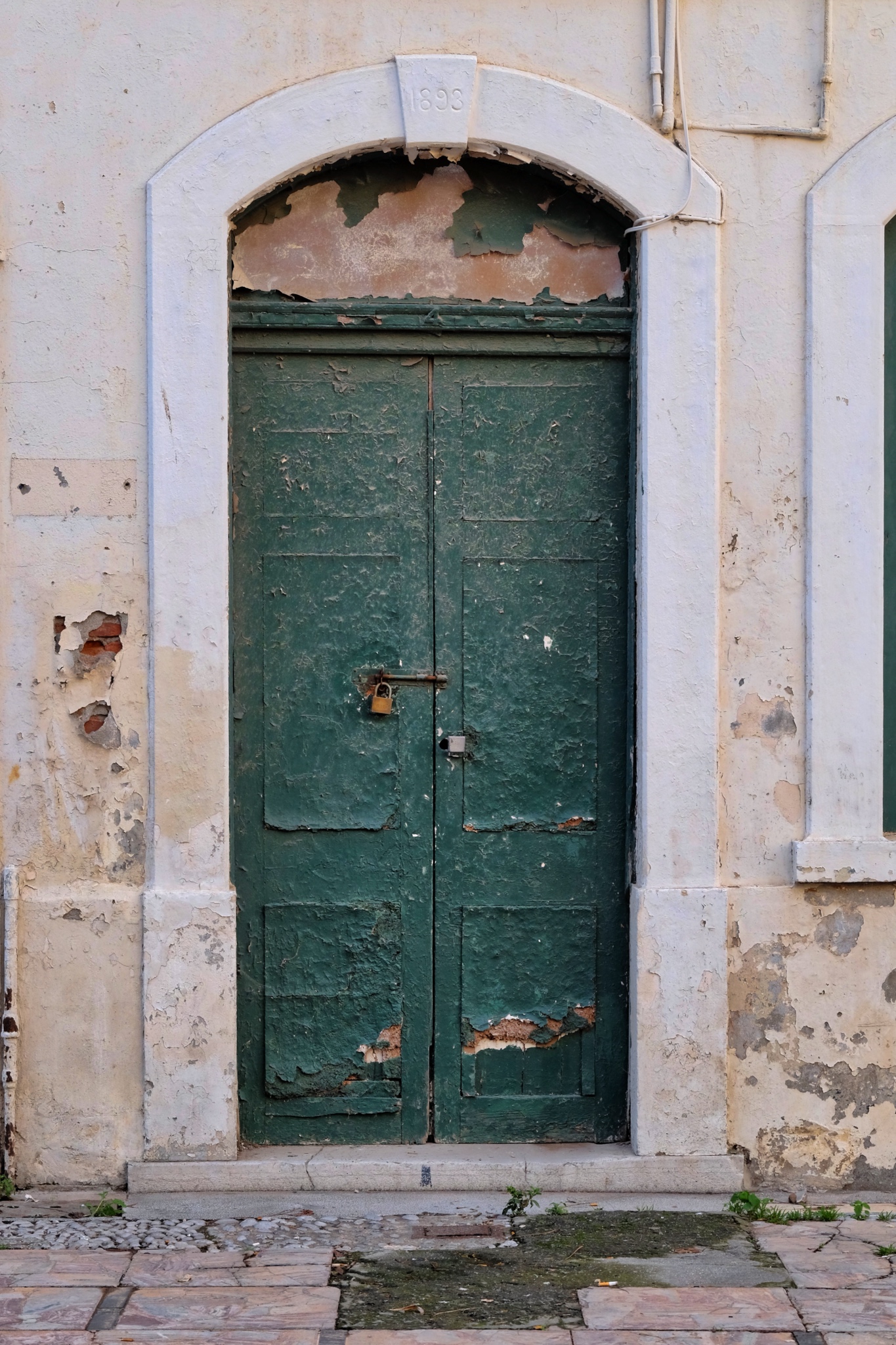 My Old Door Photo Fetish (ODPF) was completely satisfied in Gibraltar!
My Old Door Photo Fetish (ODPF) was completely satisfied in Gibraltar!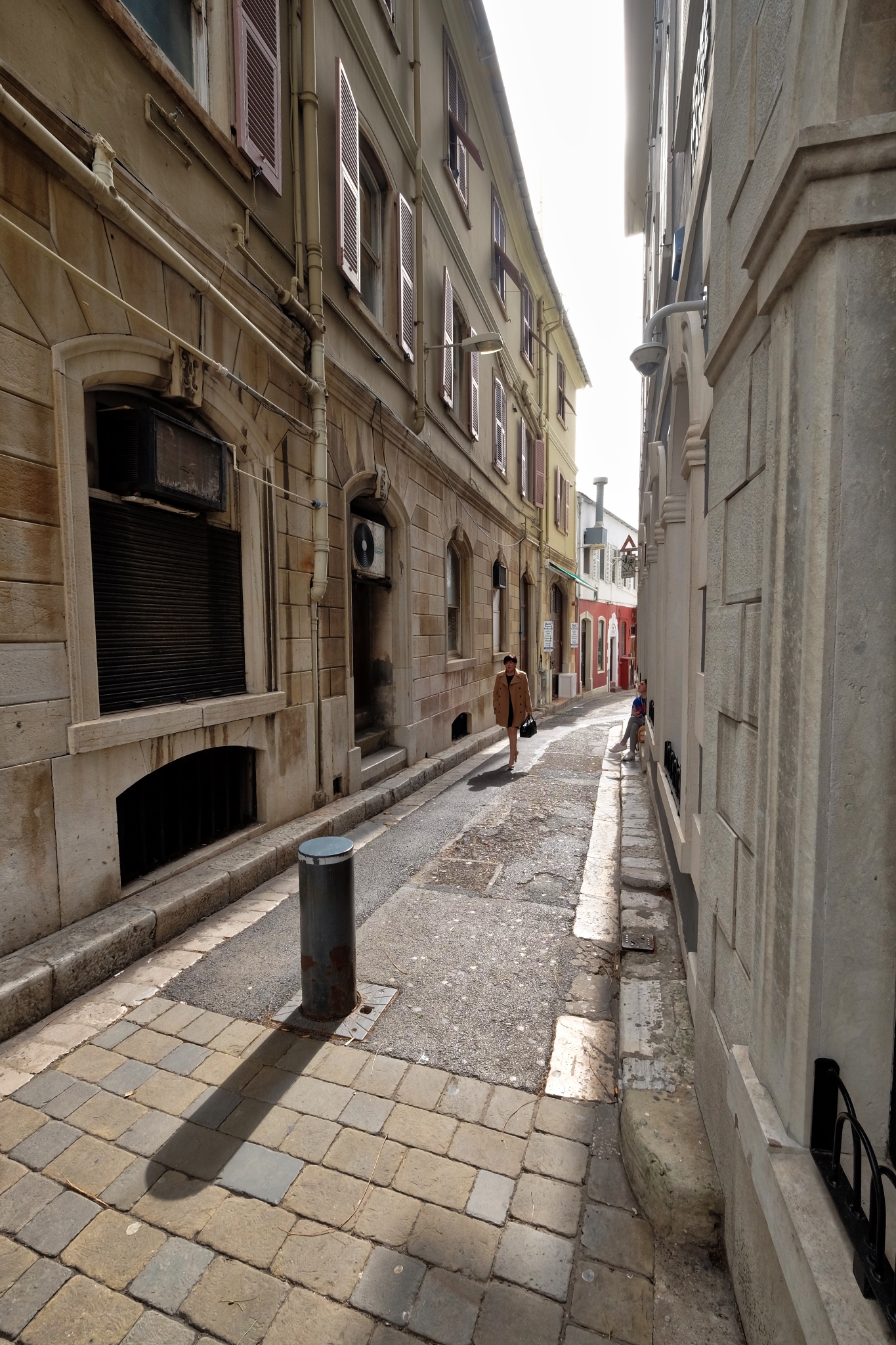 A pleasant place to stroll around . . . before the throngs of tourists arrived, the locals told us.
A pleasant place to stroll around . . . before the throngs of tourists arrived, the locals told us.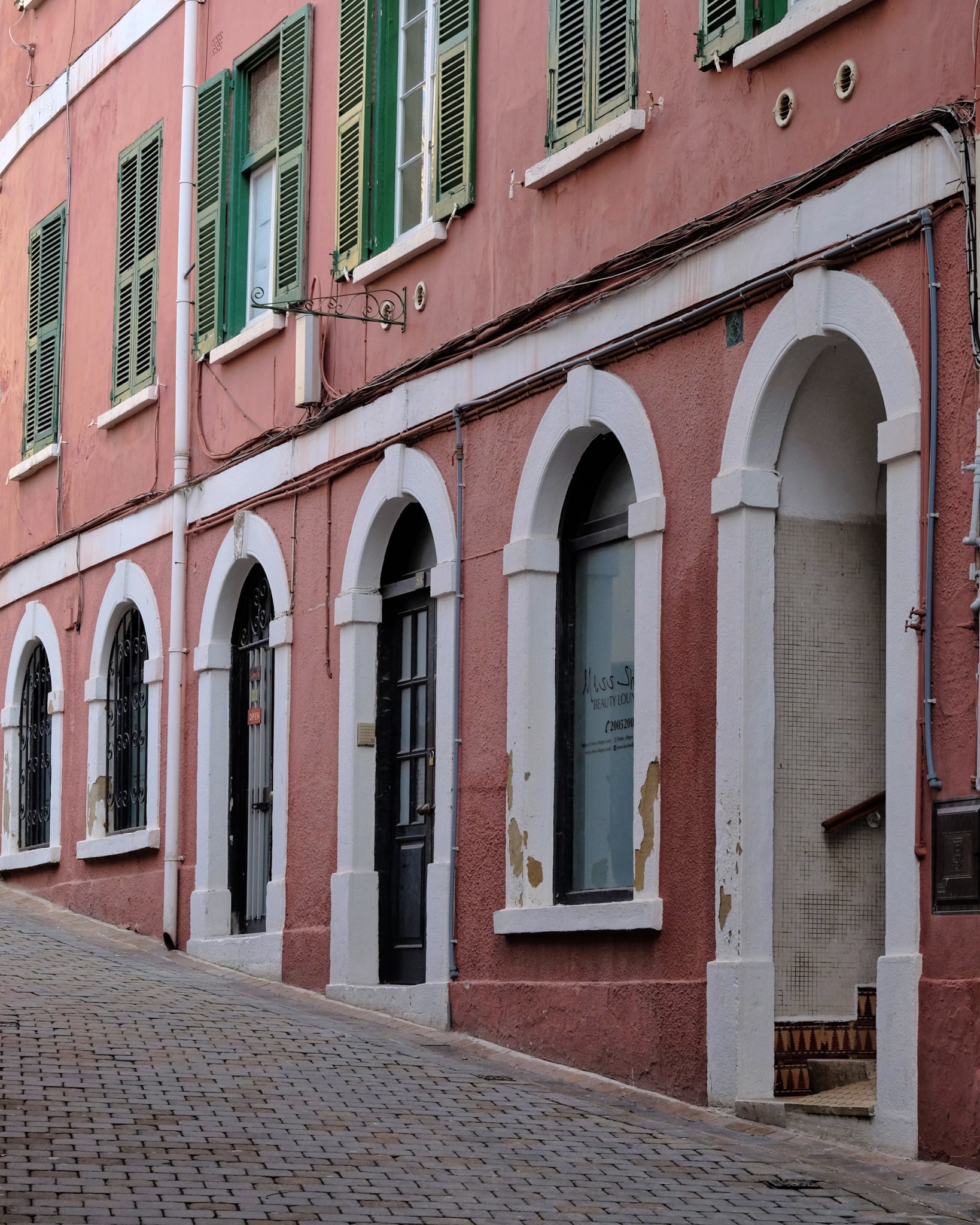 Steep streets . . . .
Steep streets . . . .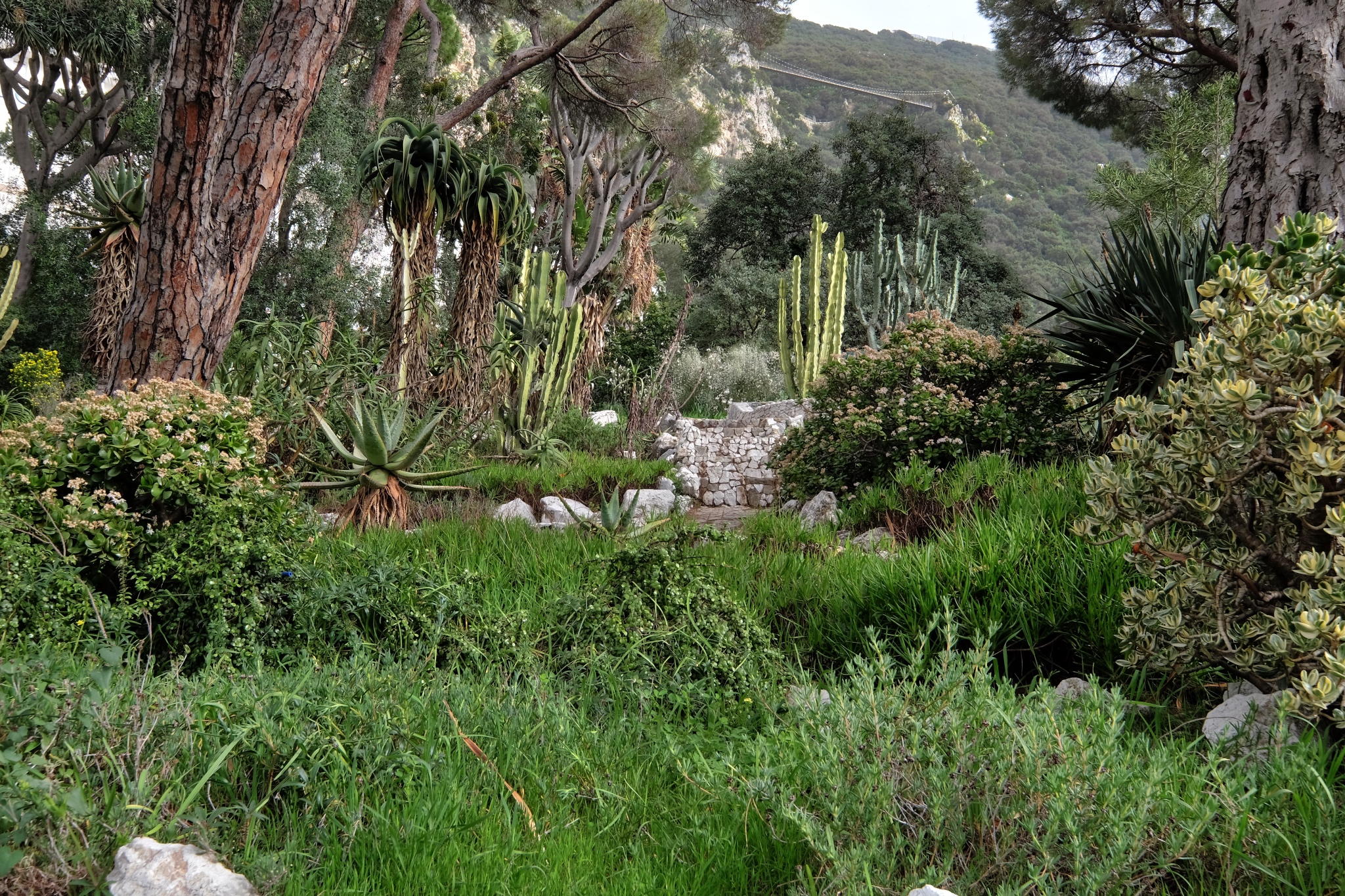 Gibraltar has a fine Botanical Garden . . . a favorite place to visit on all my travels.
Gibraltar has a fine Botanical Garden . . . a favorite place to visit on all my travels.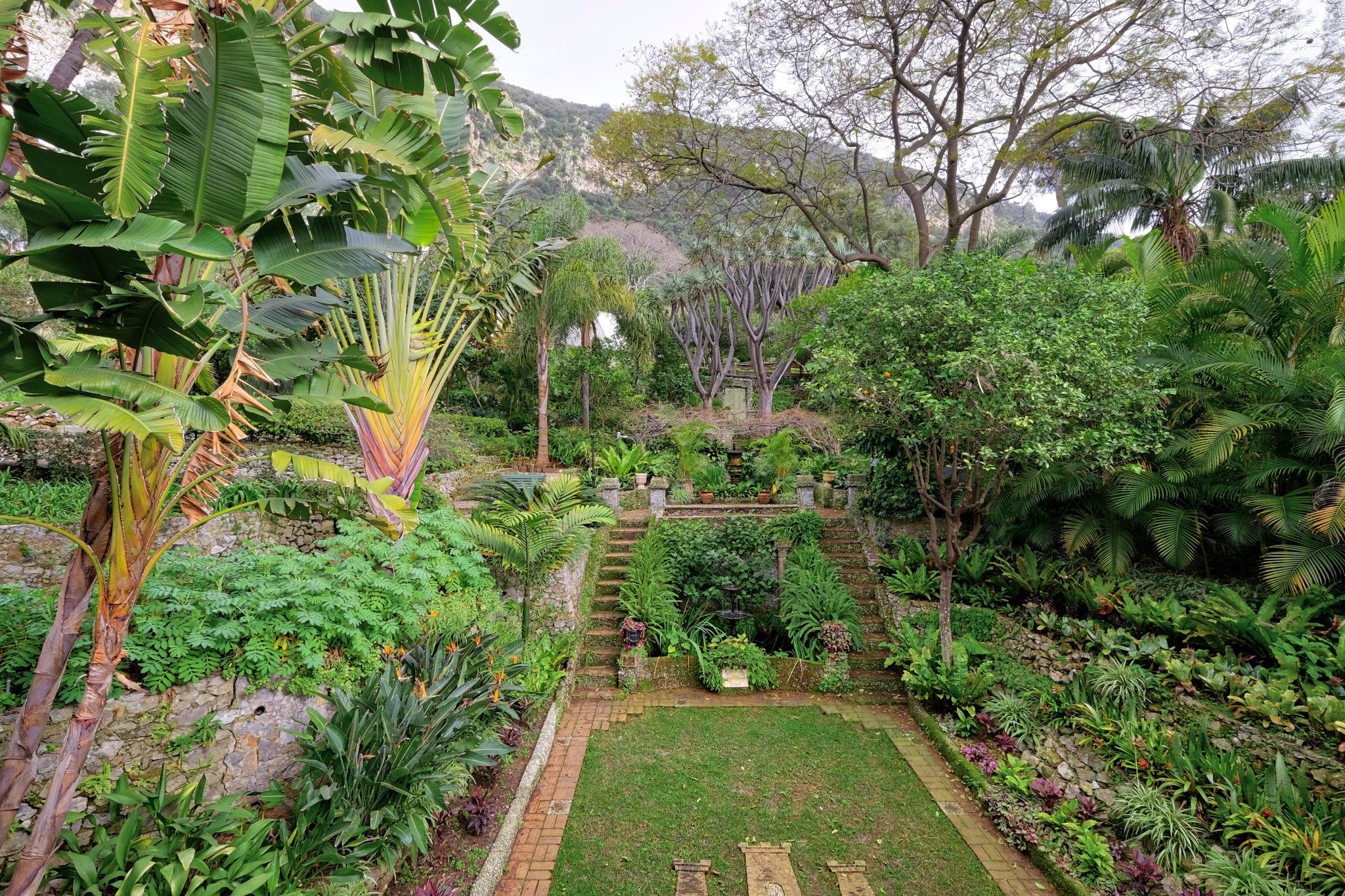 There is hardly any unused land on Gibraltar, so it was nice to see they valued their botanical garden enough to not build on it or pave it over.
There is hardly any unused land on Gibraltar, so it was nice to see they valued their botanical garden enough to not build on it or pave it over.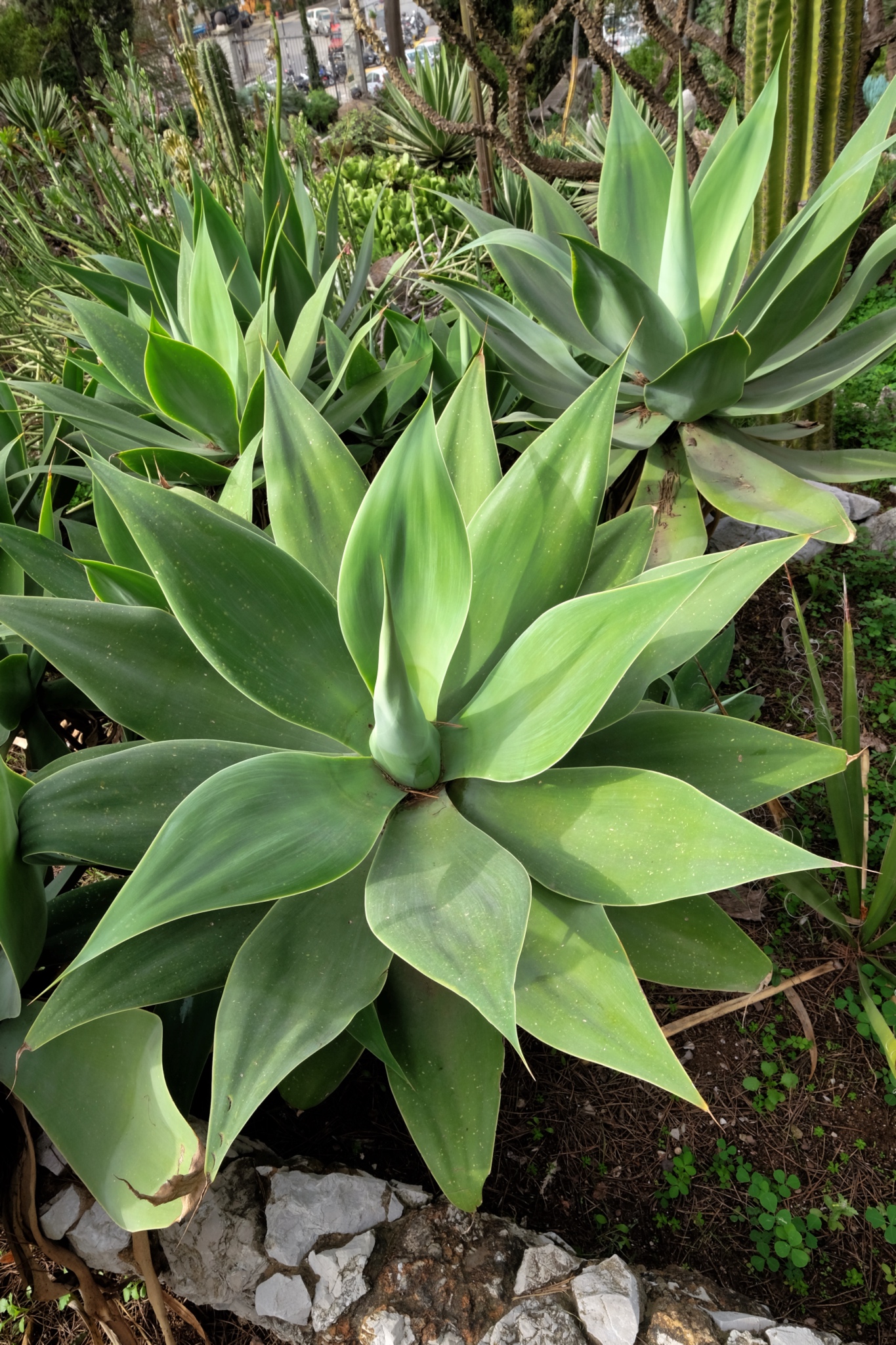 Being on the southern to of Spain, the climate is very mild. Many kinds of semi-tropical plants grow very well here.
Being on the southern to of Spain, the climate is very mild. Many kinds of semi-tropical plants grow very well here.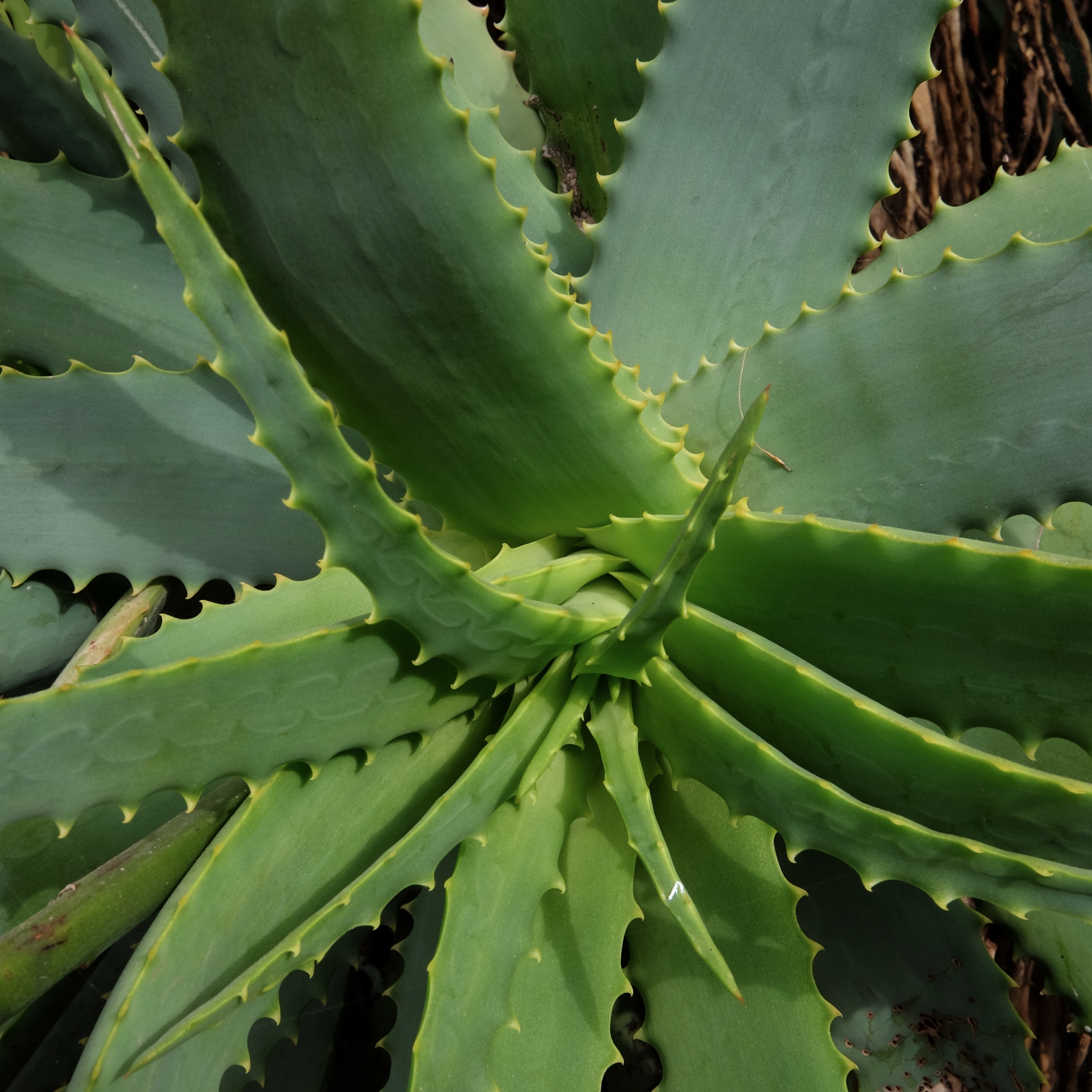 Aloe grew everywhere.
Aloe grew everywhere.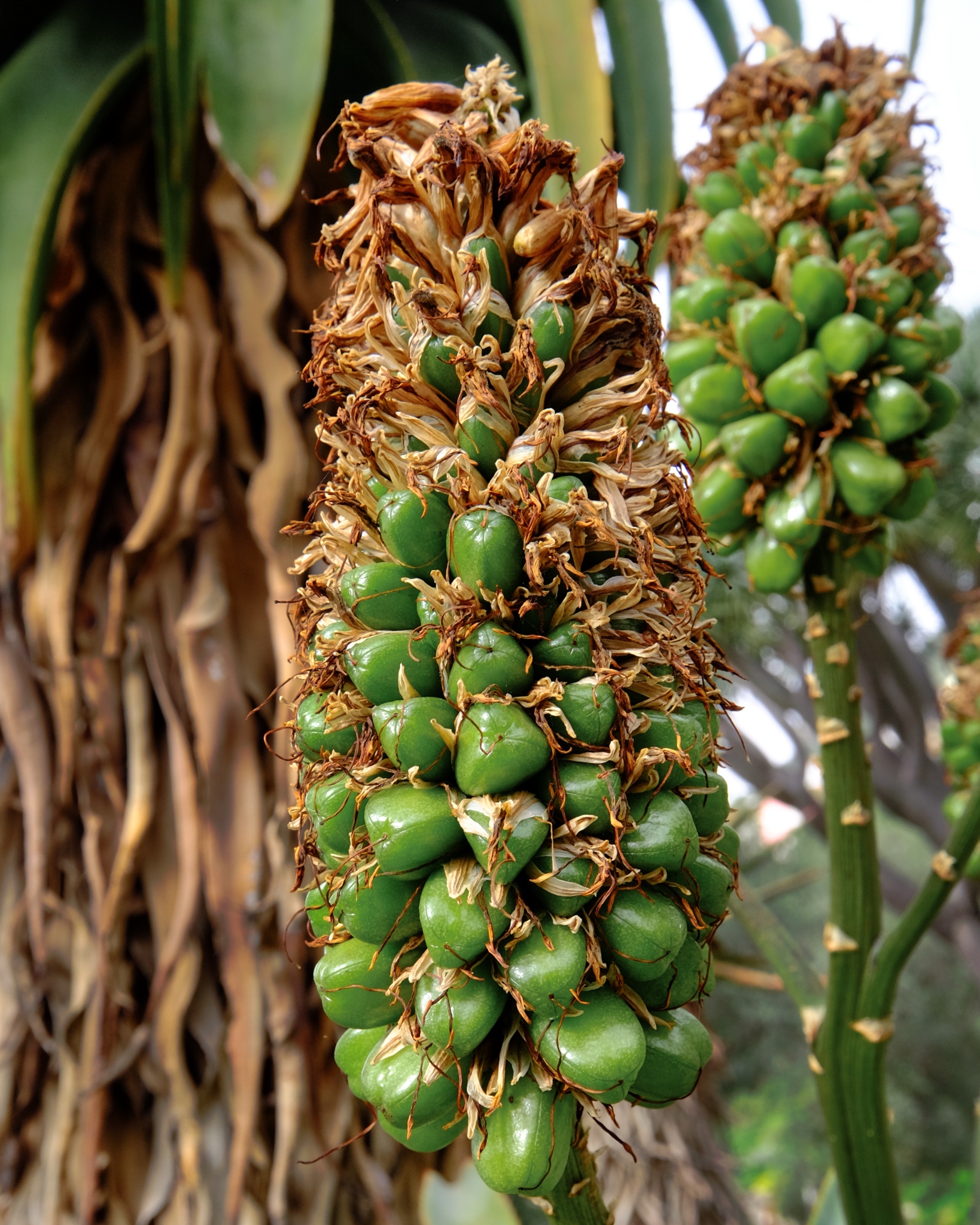 A few of the tropical plants were in flower or bud.
A few of the tropical plants were in flower or bud.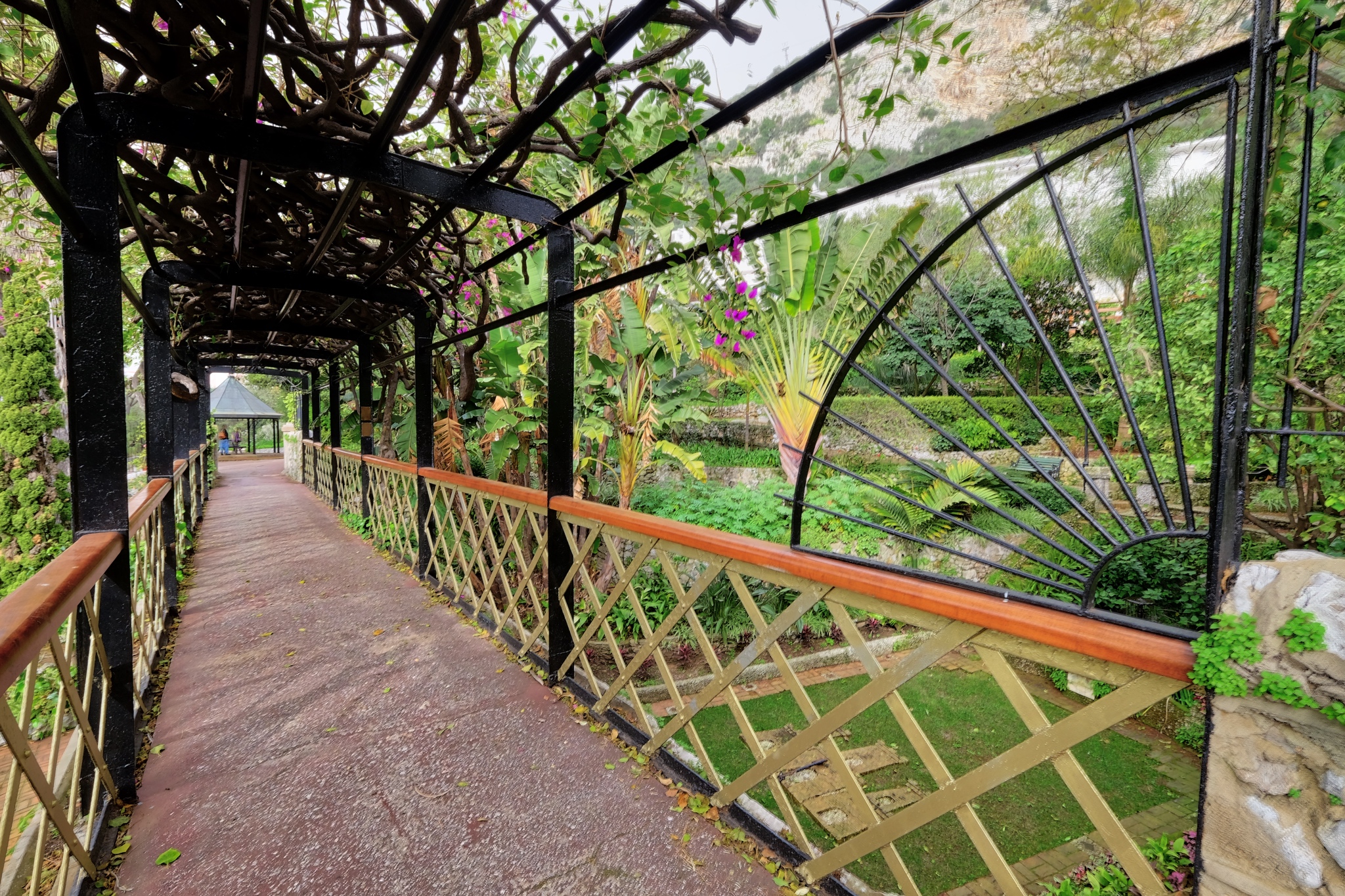 We spent art of a wonderful afternoon here . . .
We spent art of a wonderful afternoon here . . .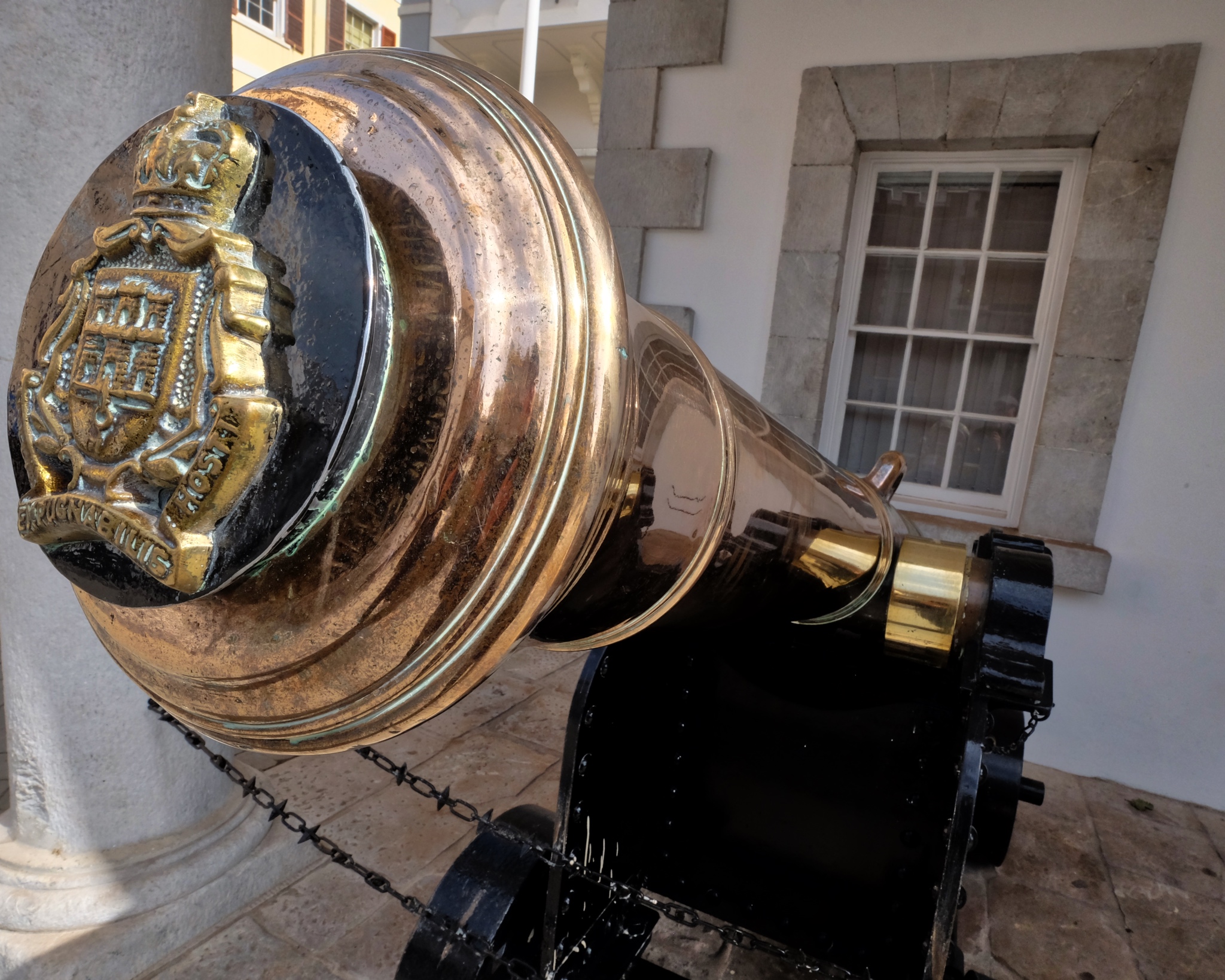 There is still a British military garrison on Gibraltar . . . complete with daily-polished brass cannon.
There is still a British military garrison on Gibraltar . . . complete with daily-polished brass cannon.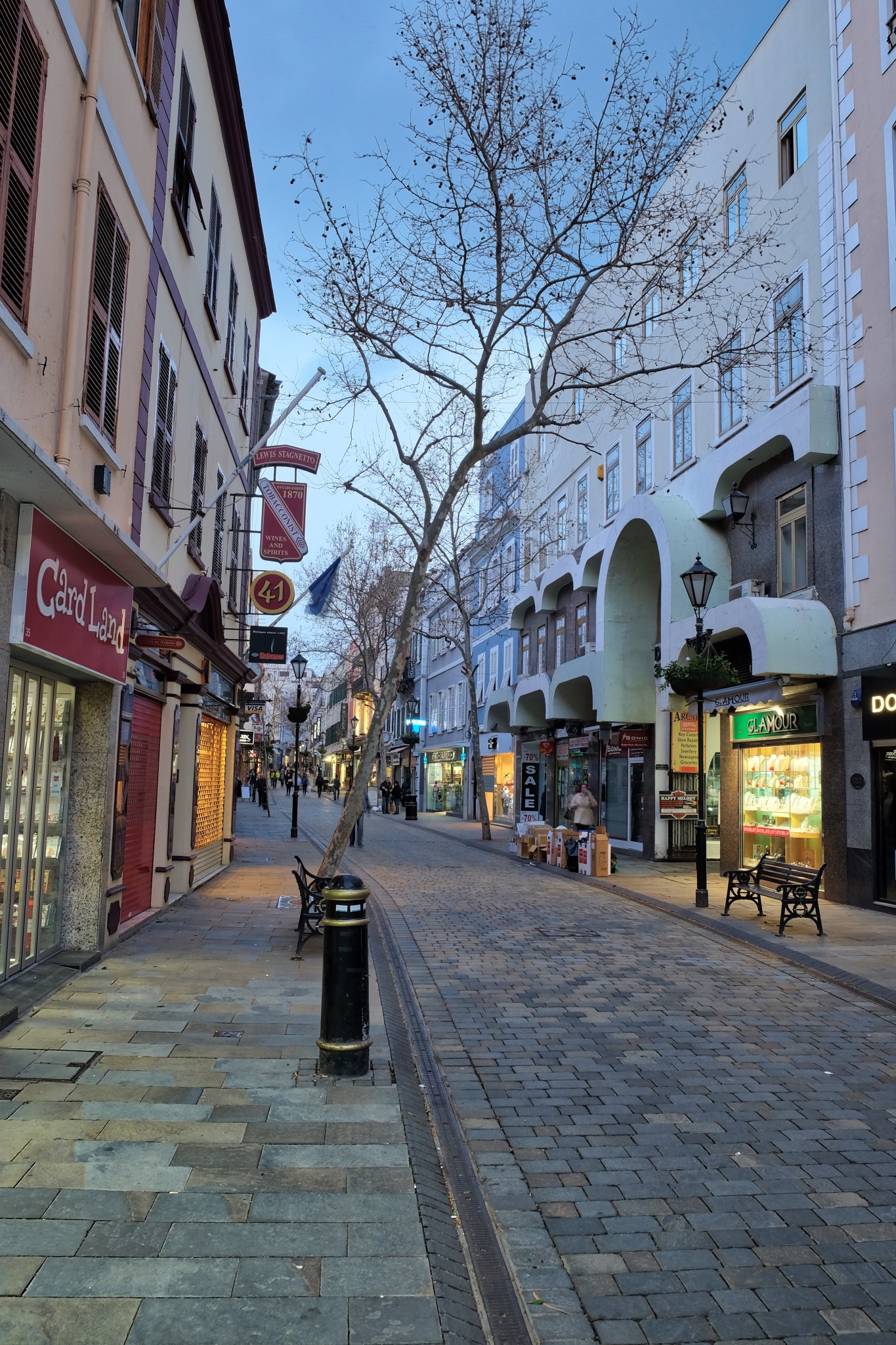 The central walking street is the focus of the town and the only developed commercial area. There are sweet cafes, bakeries, and shops all along here . . . as well as tawdry tourist curios shops where I bought a refrigerator magnet.
The central walking street is the focus of the town and the only developed commercial area. There are sweet cafes, bakeries, and shops all along here . . . as well as tawdry tourist curios shops where I bought a refrigerator magnet.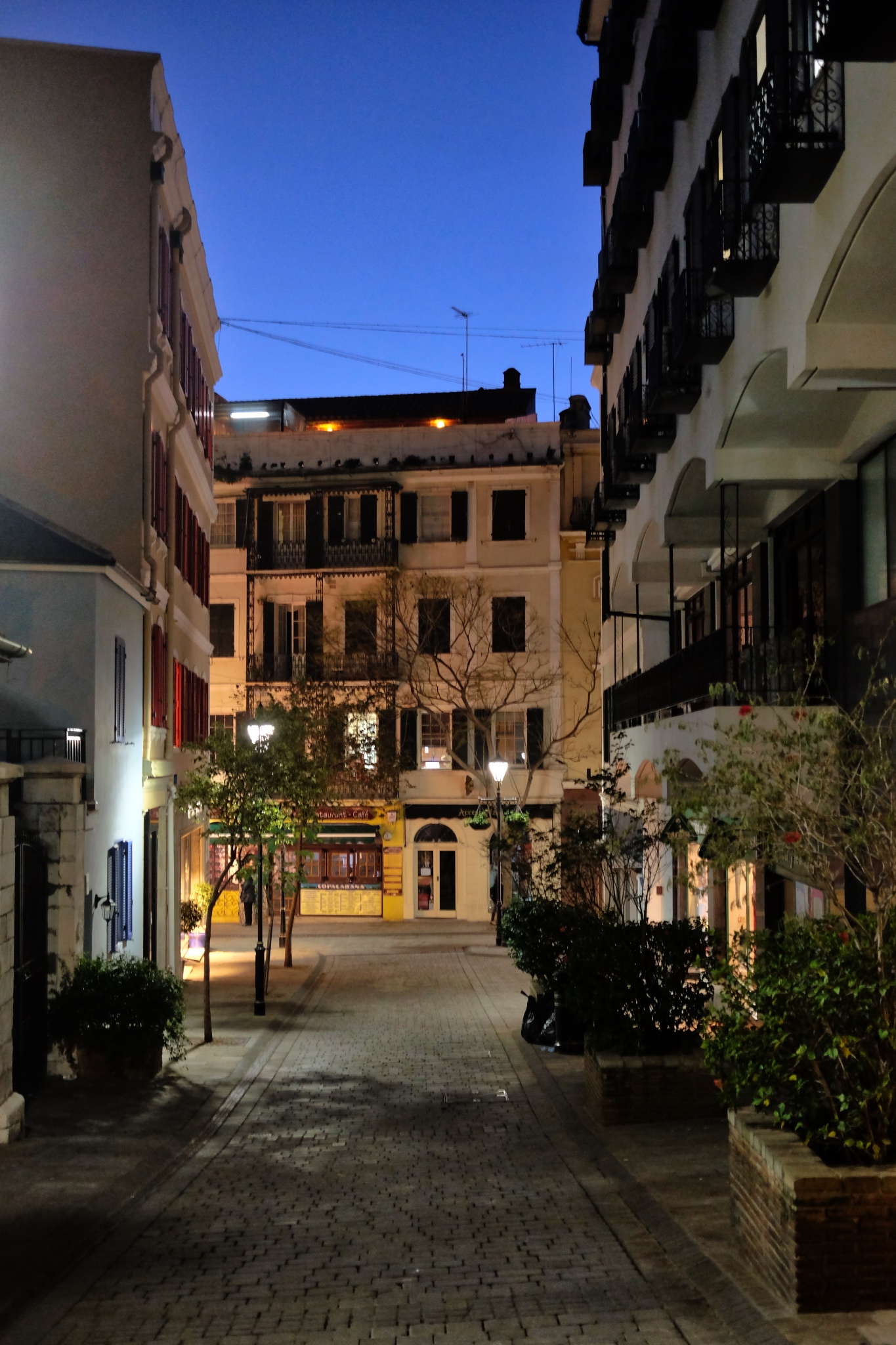 In my opinion, Gibraltar becomes even more interesting, and beautiful, when the sun sets.
In my opinion, Gibraltar becomes even more interesting, and beautiful, when the sun sets.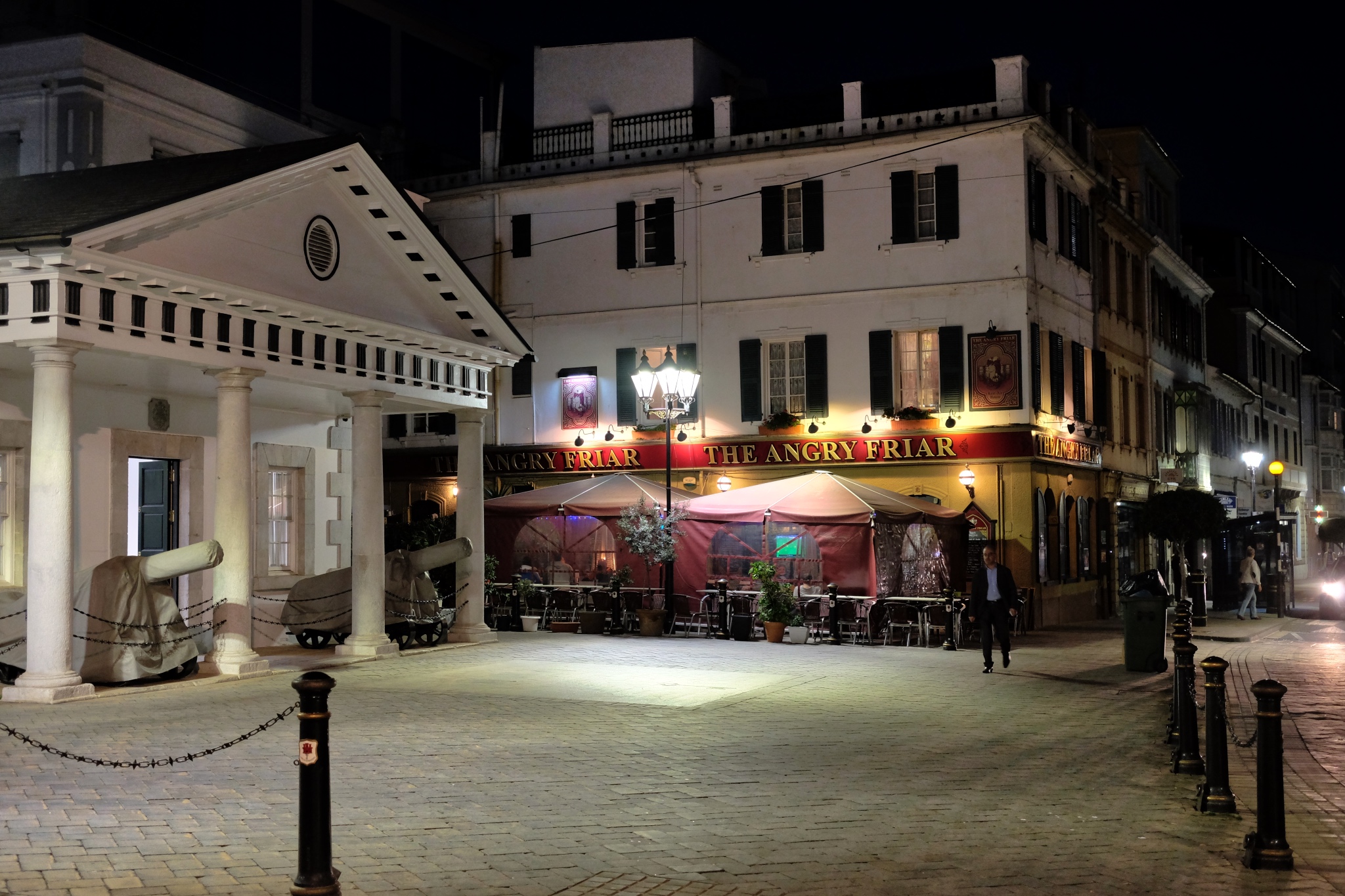 At night the squares are lit and the old government buildings stand out in all their old glory.
At night the squares are lit and the old government buildings stand out in all their old glory.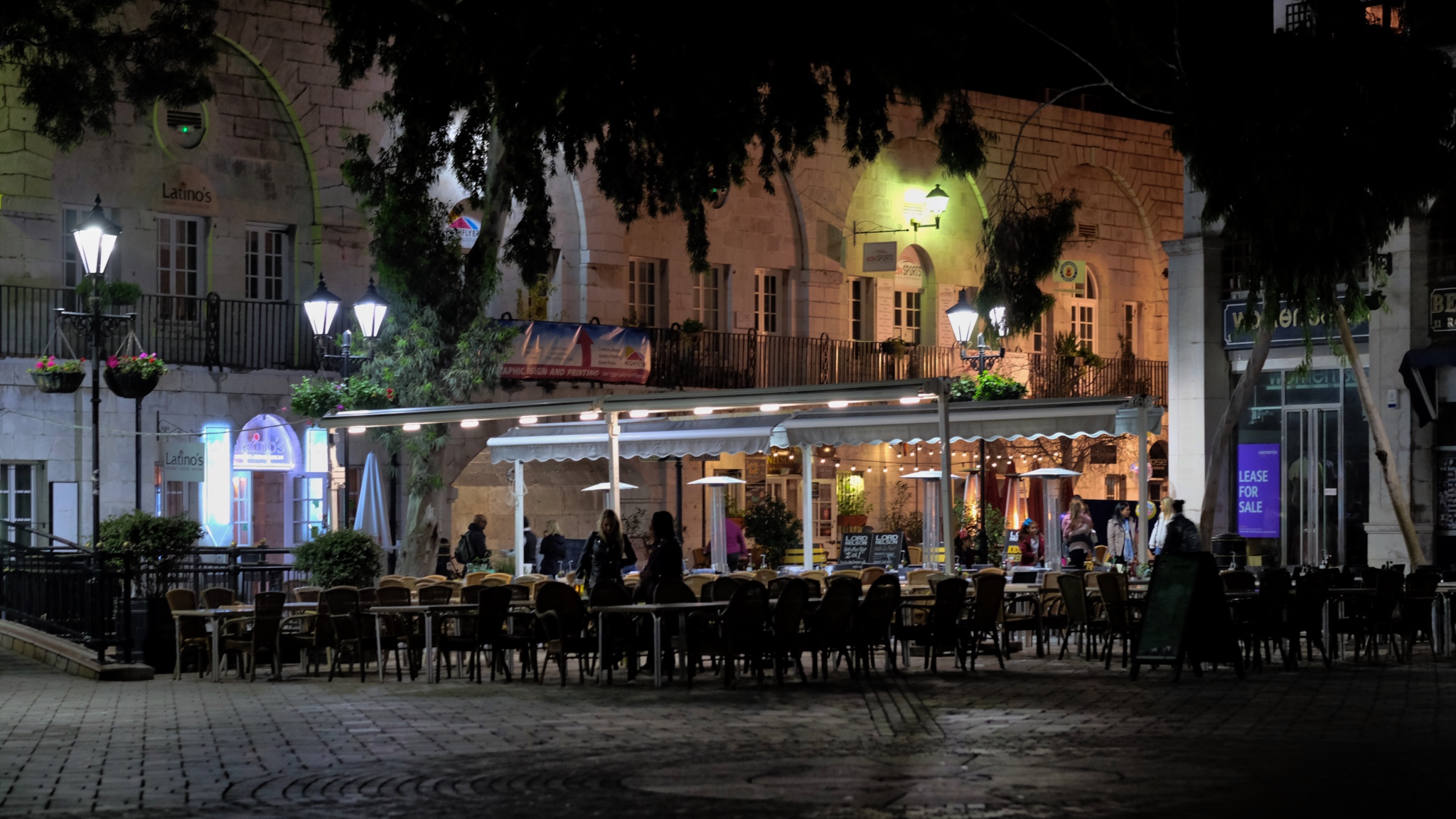 In the evening people, tourists and locals, come out to the cafes in Casement Square. One can imagine this space filled with thousands of cruise ship passengers later in the summer.
In the evening people, tourists and locals, come out to the cafes in Casement Square. One can imagine this space filled with thousands of cruise ship passengers later in the summer.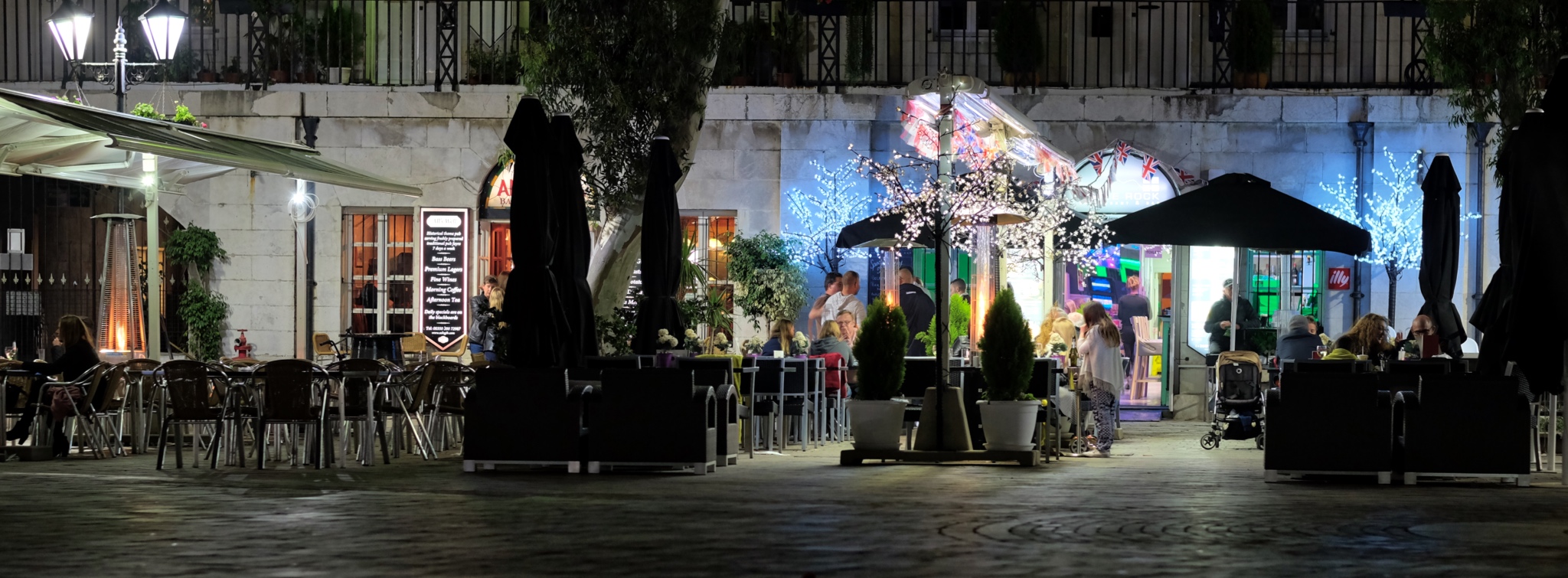
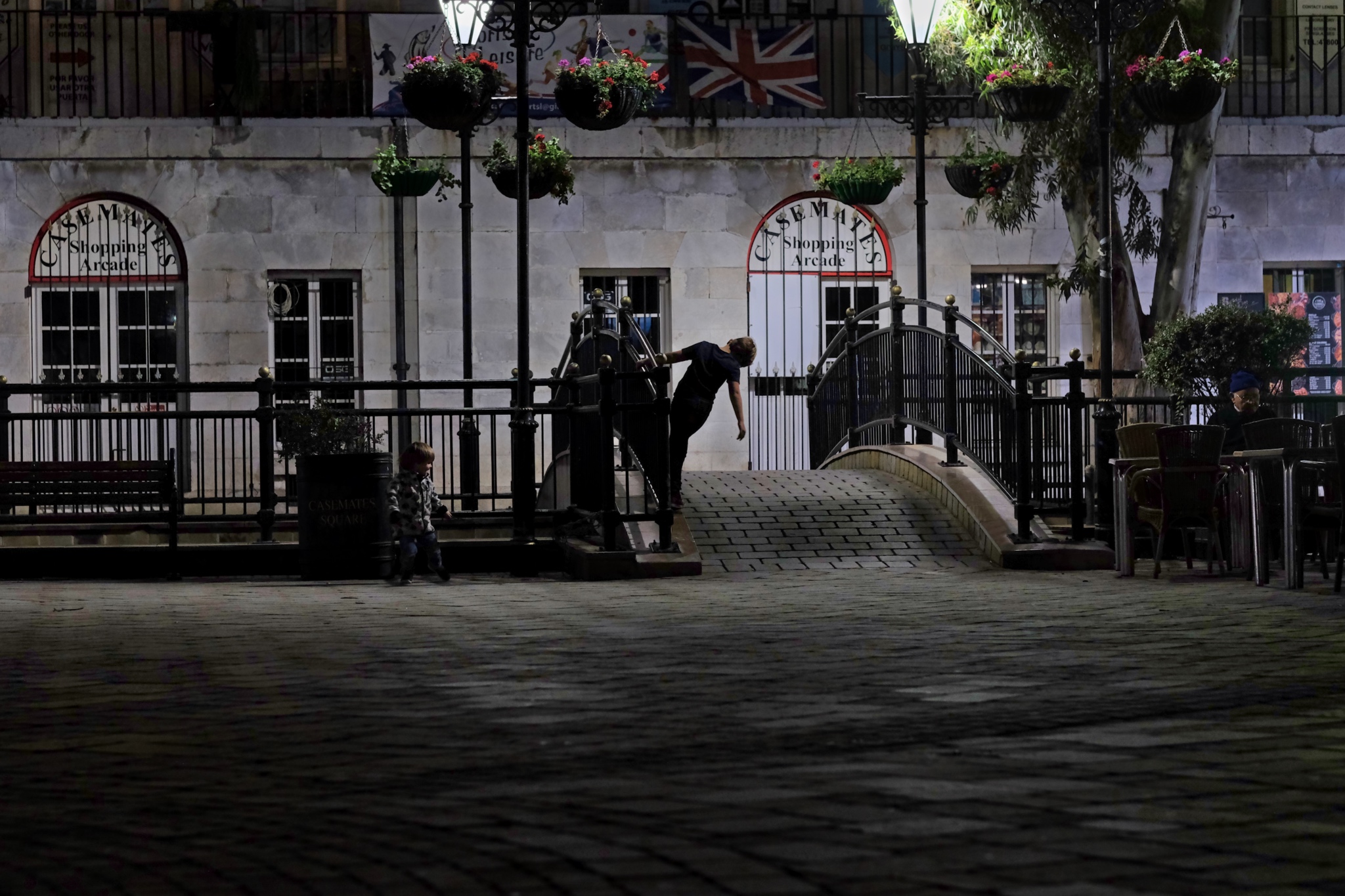 The children wandered free around the square as the adults conversed over wine.
The children wandered free around the square as the adults conversed over wine. A happy girl skipped into my photo . . .
A happy girl skipped into my photo . . .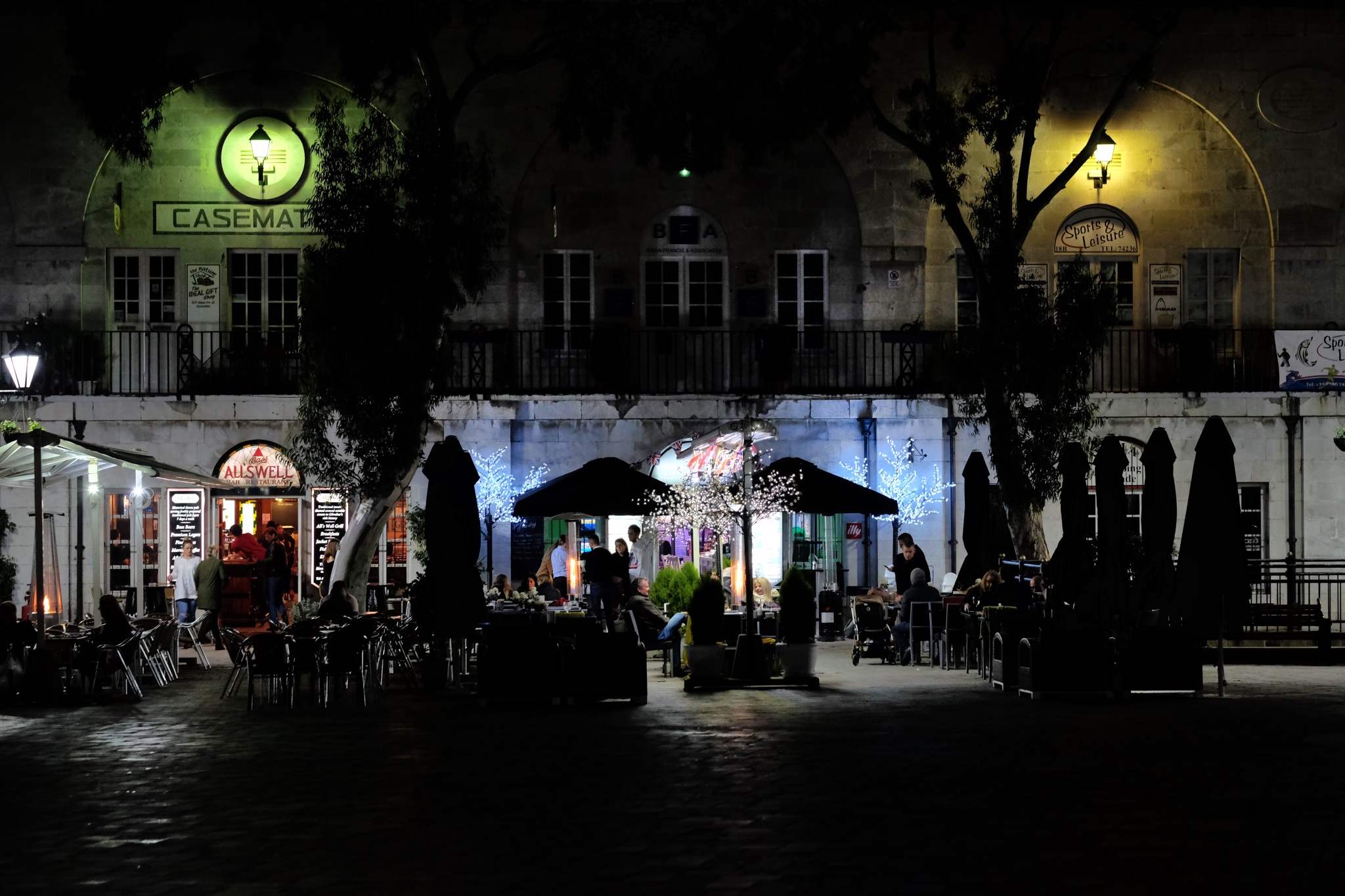 Casement Square.
Casement Square.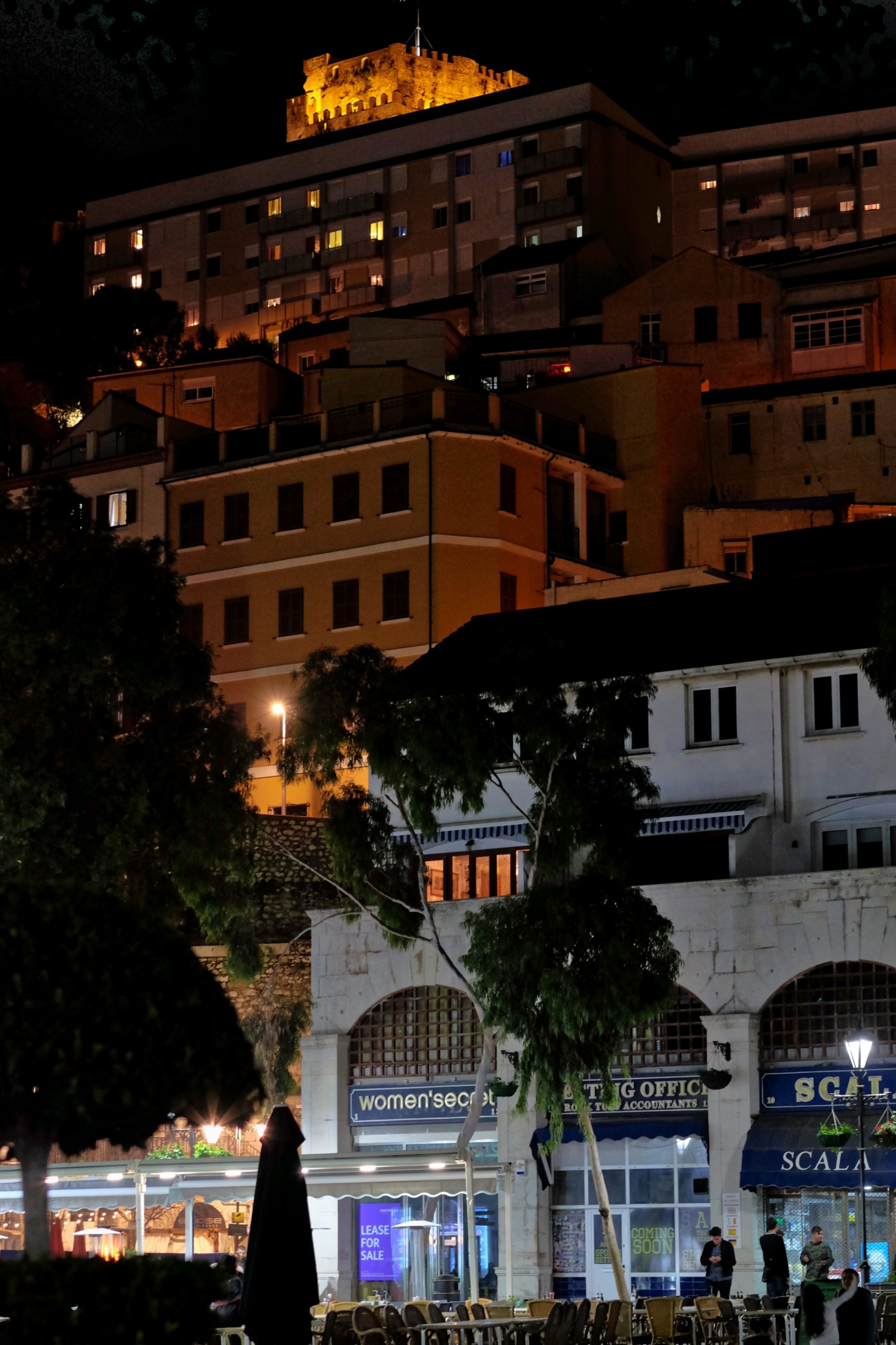 High above Casement Square, a Moorish castle looks on . . . .
High above Casement Square, a Moorish castle looks on . . . .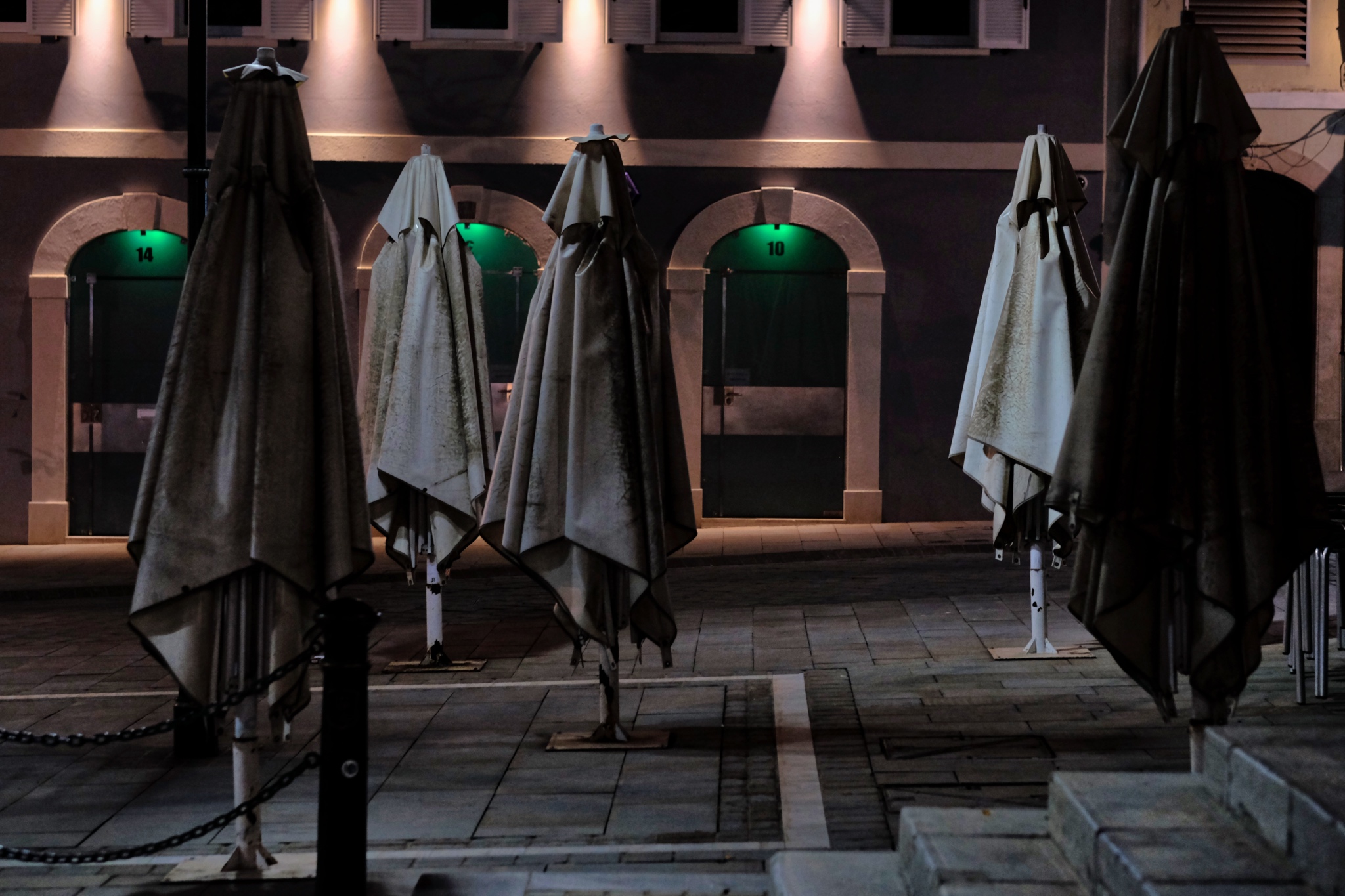 Later in the evening, the restaurants and cafes closed up . . . leaving their umbrellas like forlorn soldiers in a strange night.
Later in the evening, the restaurants and cafes closed up . . . leaving their umbrellas like forlorn soldiers in a strange night.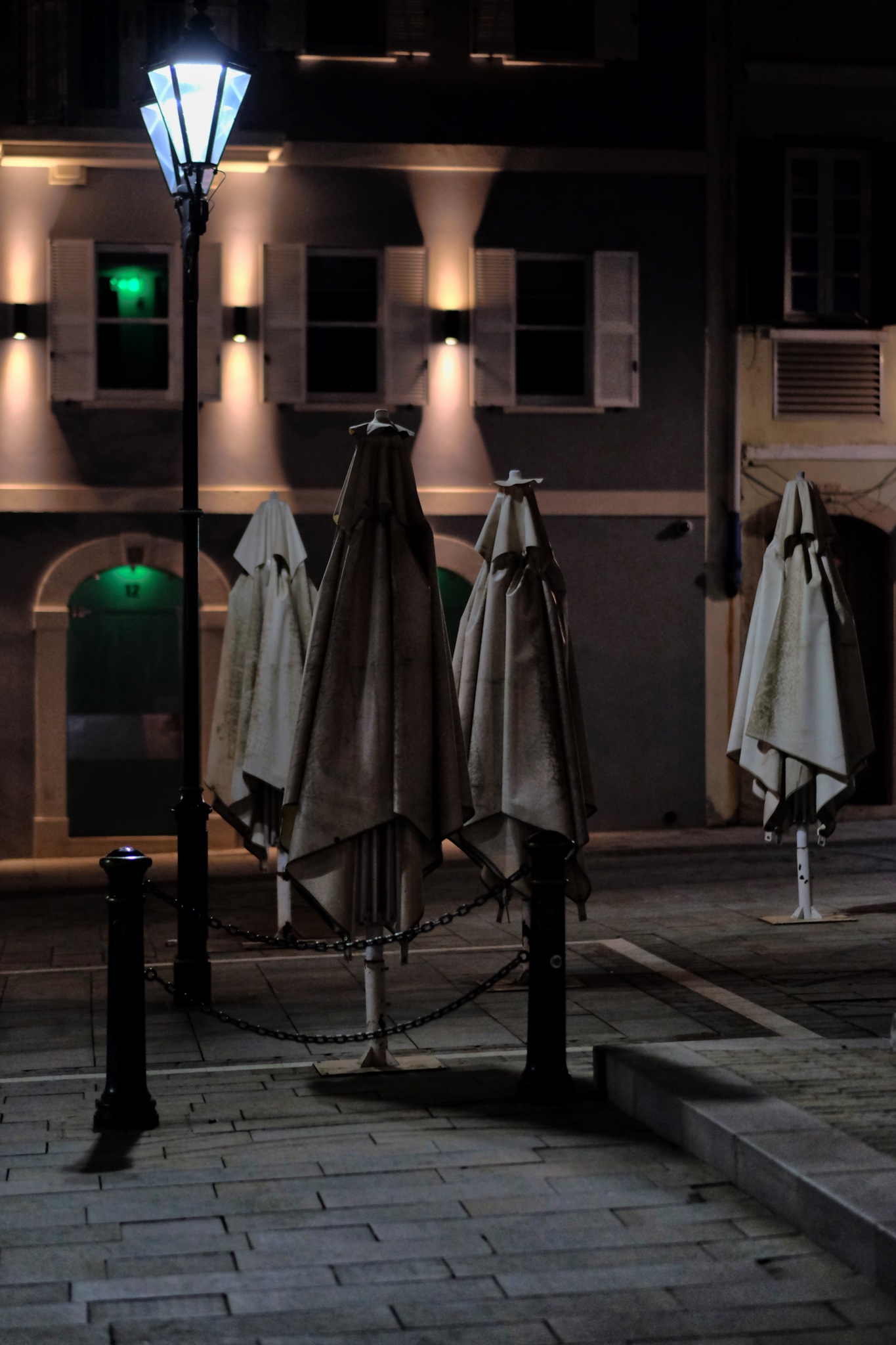 I was startled when I first saw these visages of another world!
I was startled when I first saw these visages of another world!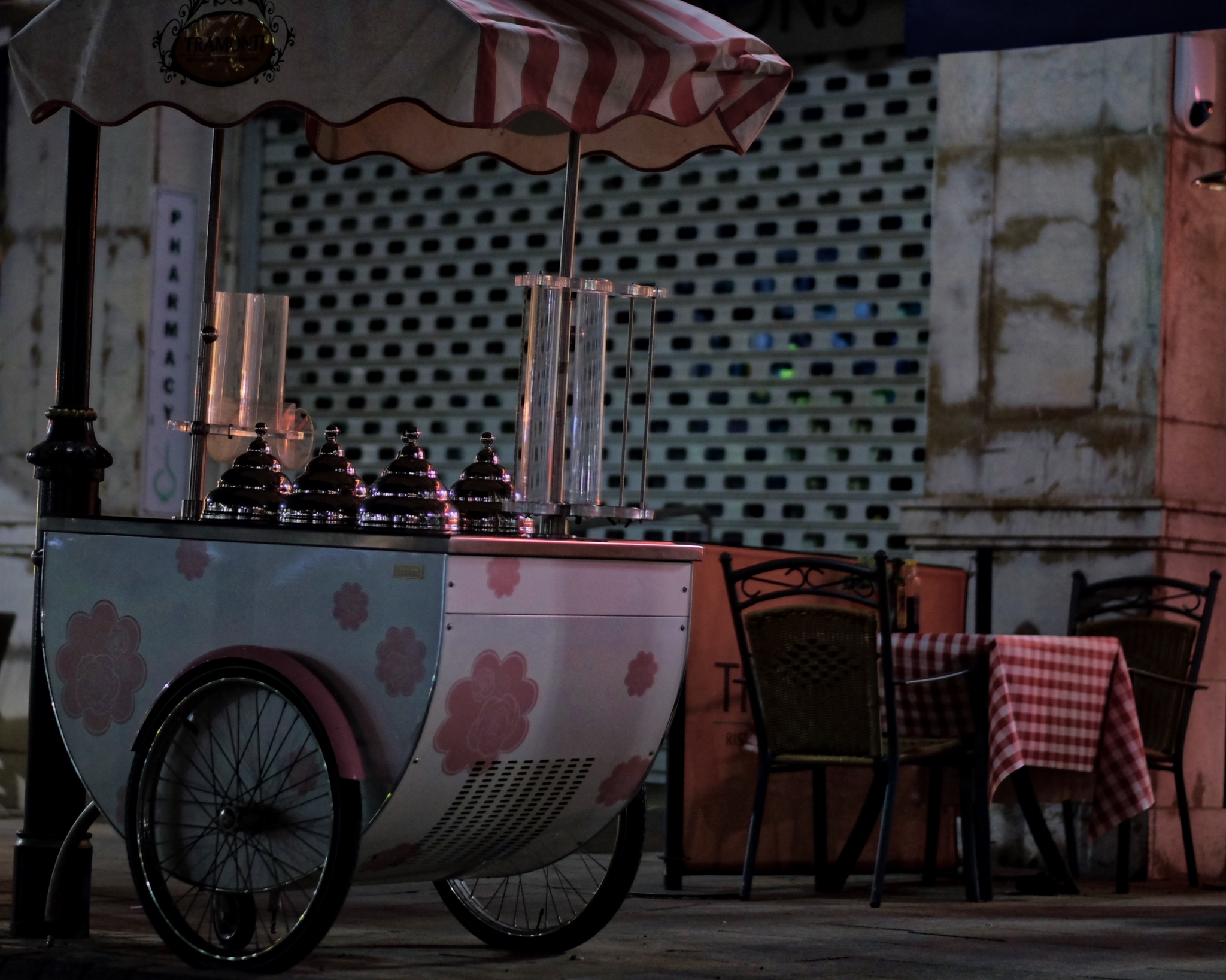 My other photographic subject obsession are push carts of all kinds. This ice cream cart waiting for another day was just fantastic.
My other photographic subject obsession are push carts of all kinds. This ice cream cart waiting for another day was just fantastic.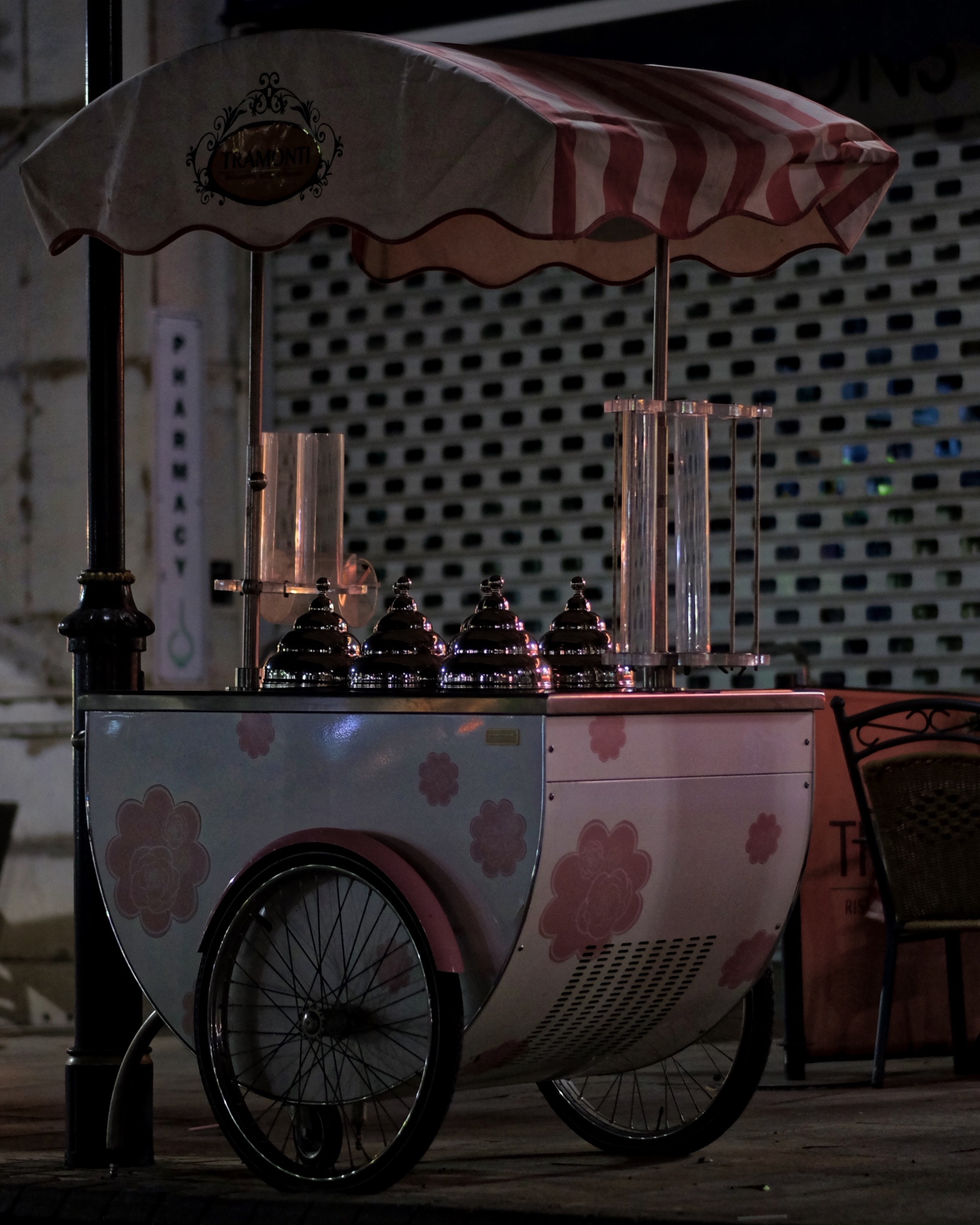
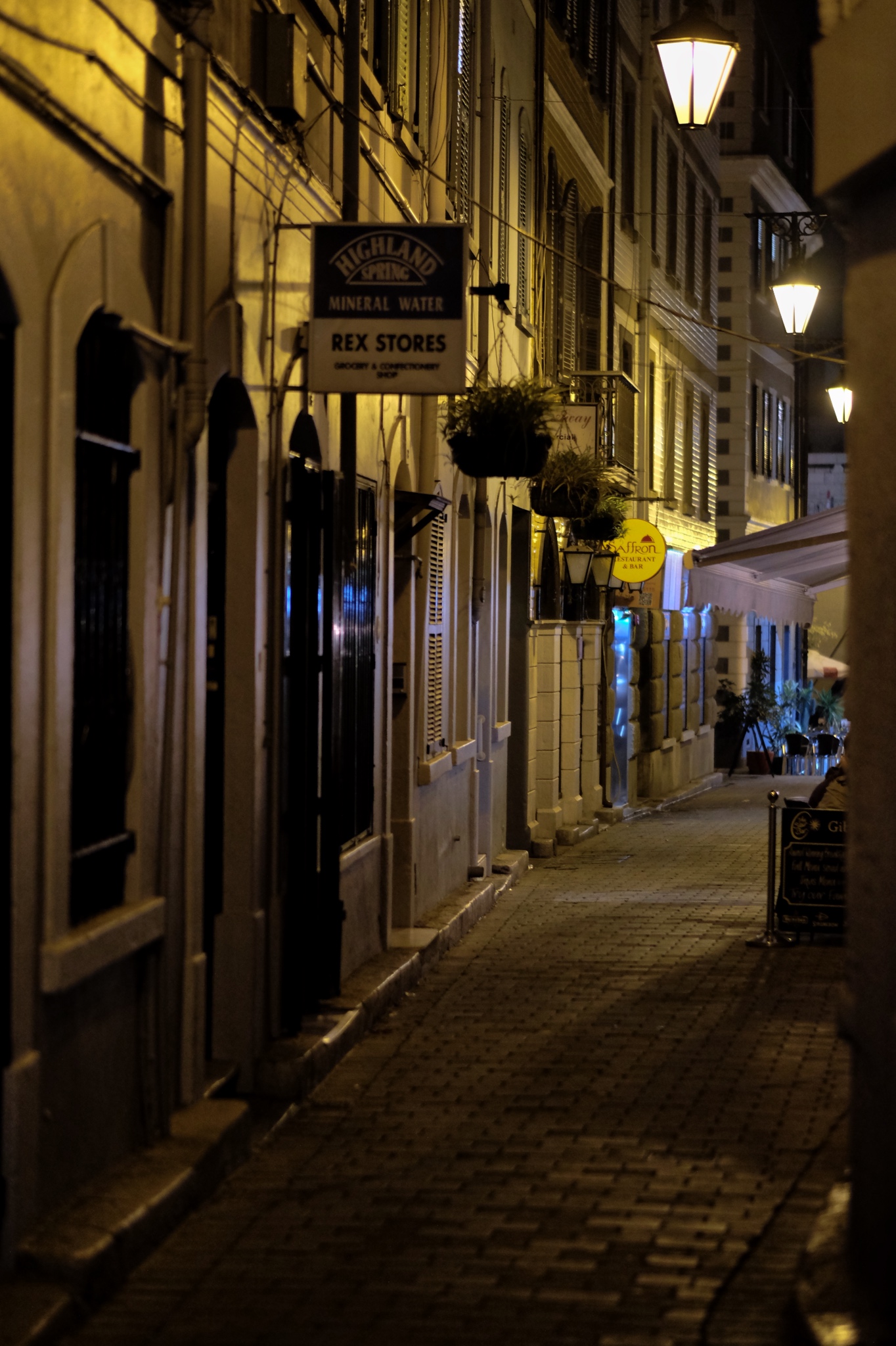 One evening (of the three) I went back out of the hotel late at night . . . to capture the abandoned streets and alleys.
One evening (of the three) I went back out of the hotel late at night . . . to capture the abandoned streets and alleys.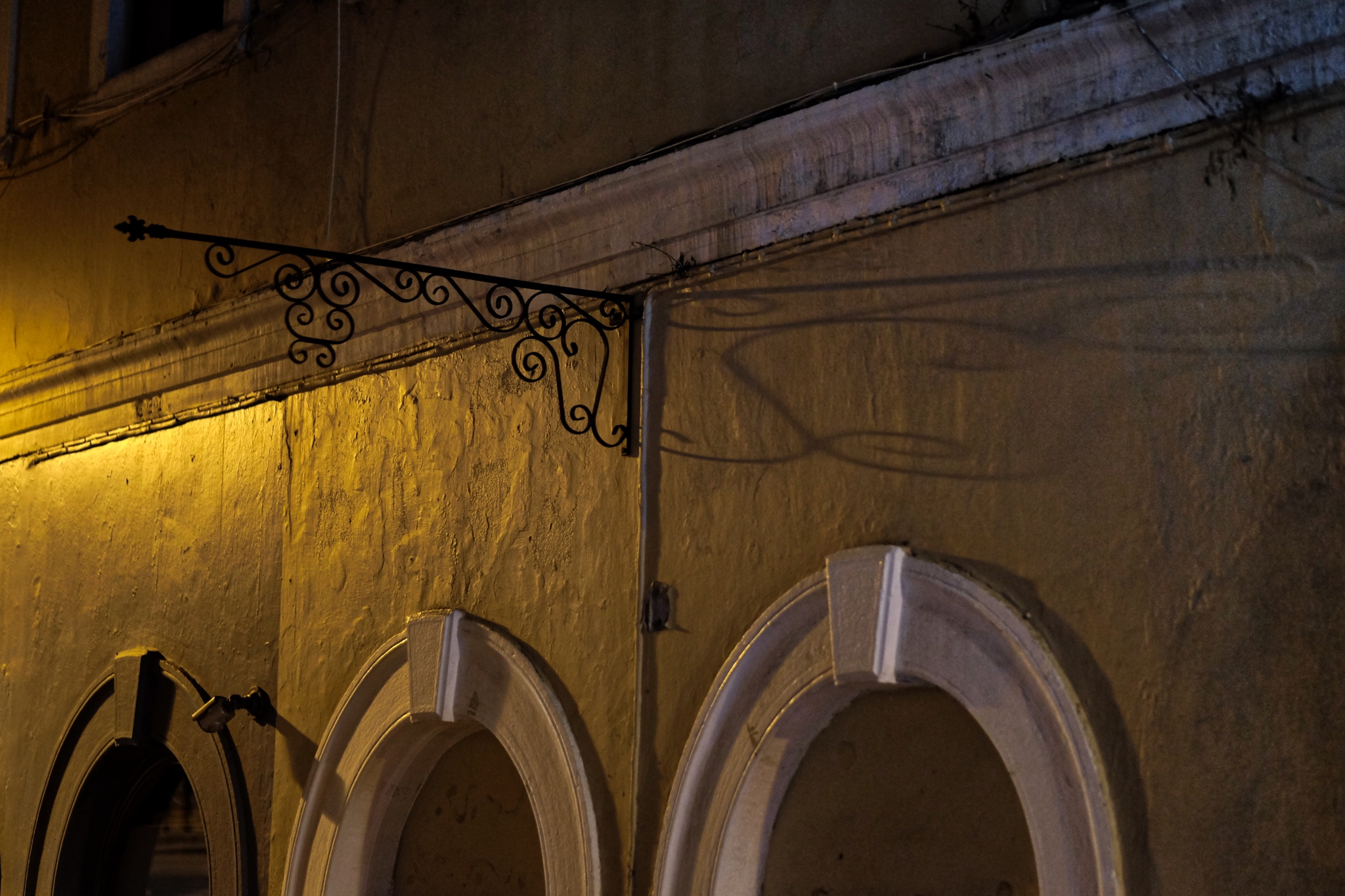 Light, textured surfaces, shadow, arches, color . . . wonderful.
Light, textured surfaces, shadow, arches, color . . . wonderful.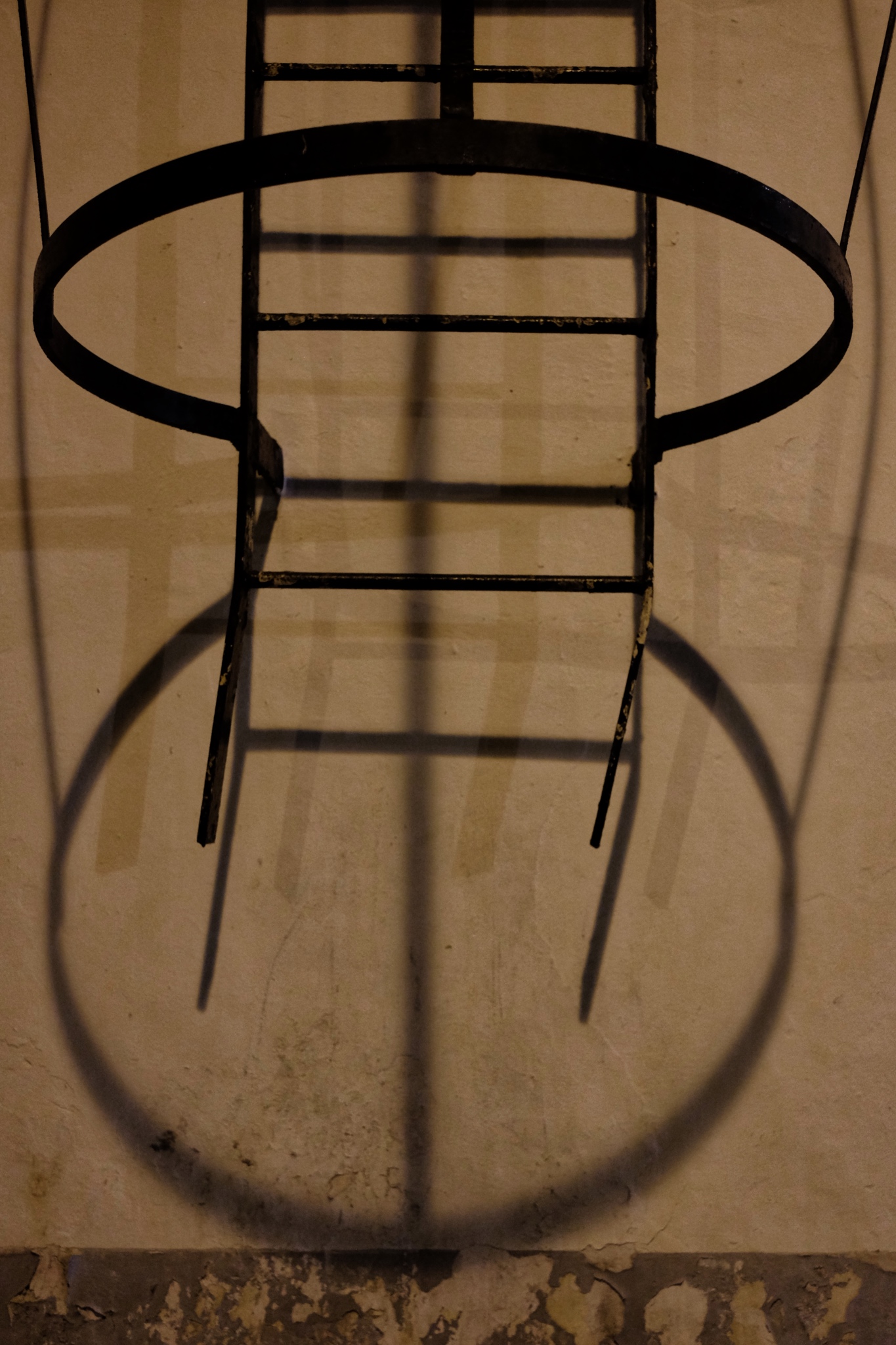 Ladder, light, shadow, and wall!
Ladder, light, shadow, and wall!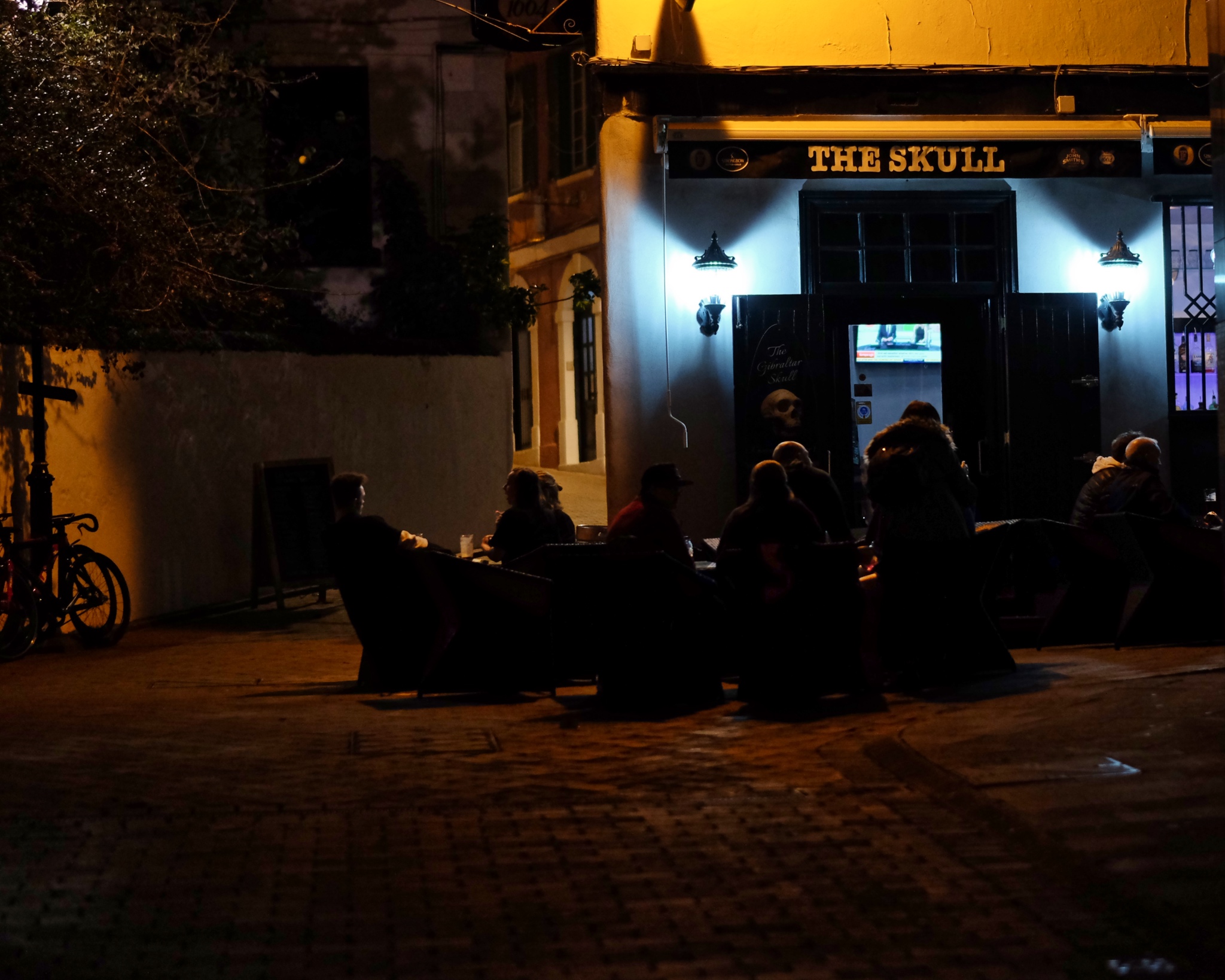 If the conversation is good, why go home? Well after midnight in Gibraltar.
If the conversation is good, why go home? Well after midnight in Gibraltar.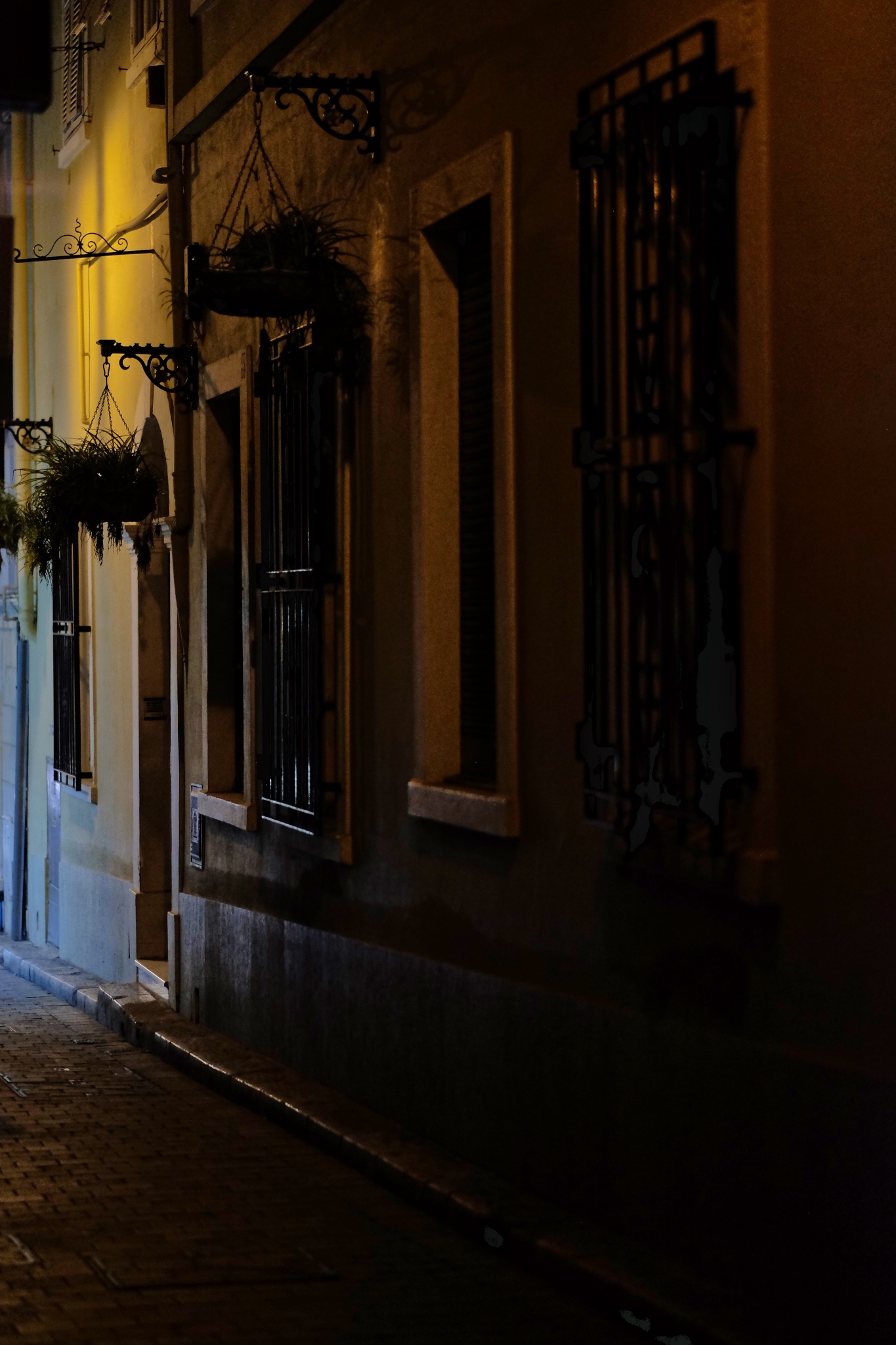 The dark streets where the only sounds were my footsteps.
The dark streets where the only sounds were my footsteps.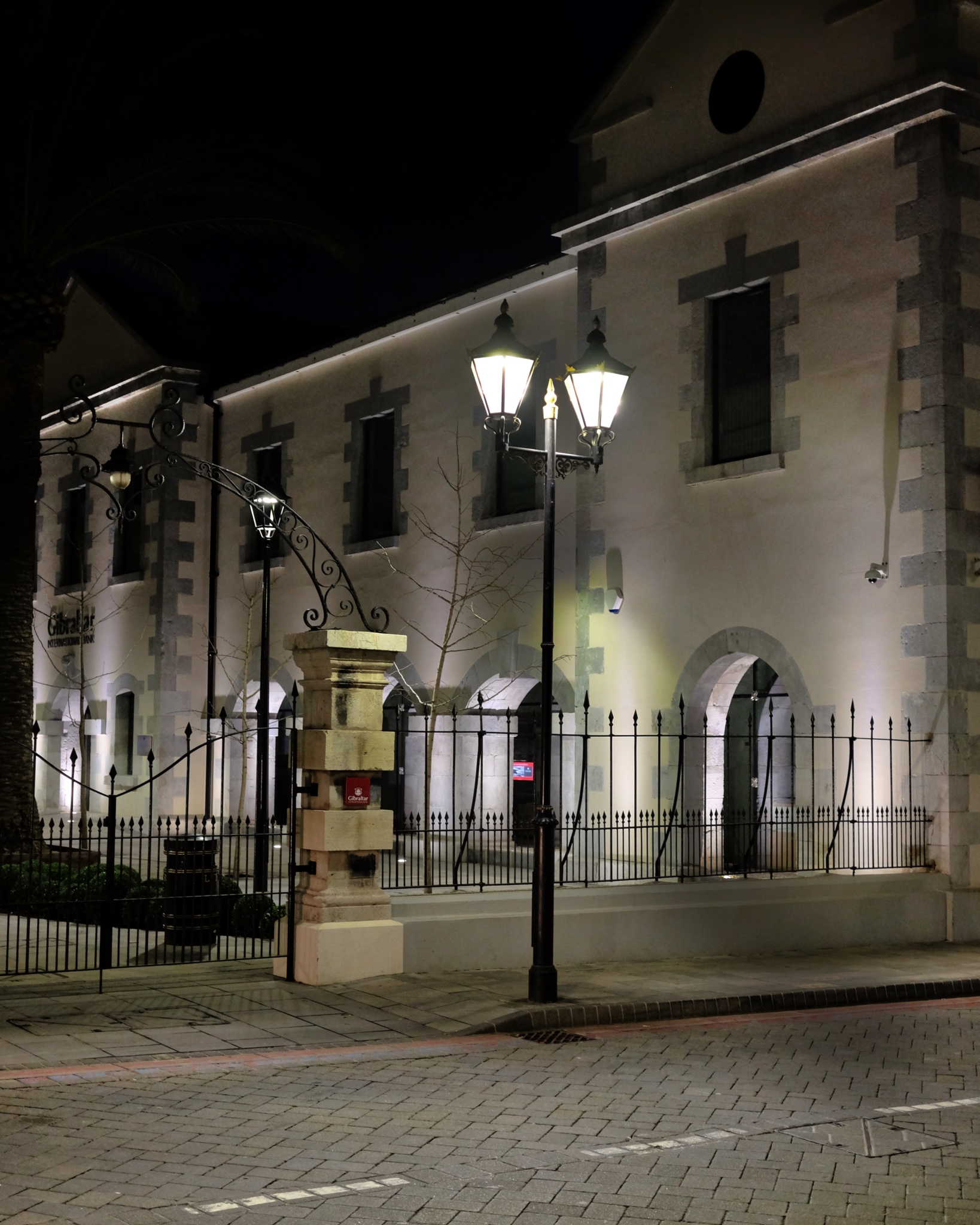 The historic government buildings were closed. Not a soul around.
The historic government buildings were closed. Not a soul around.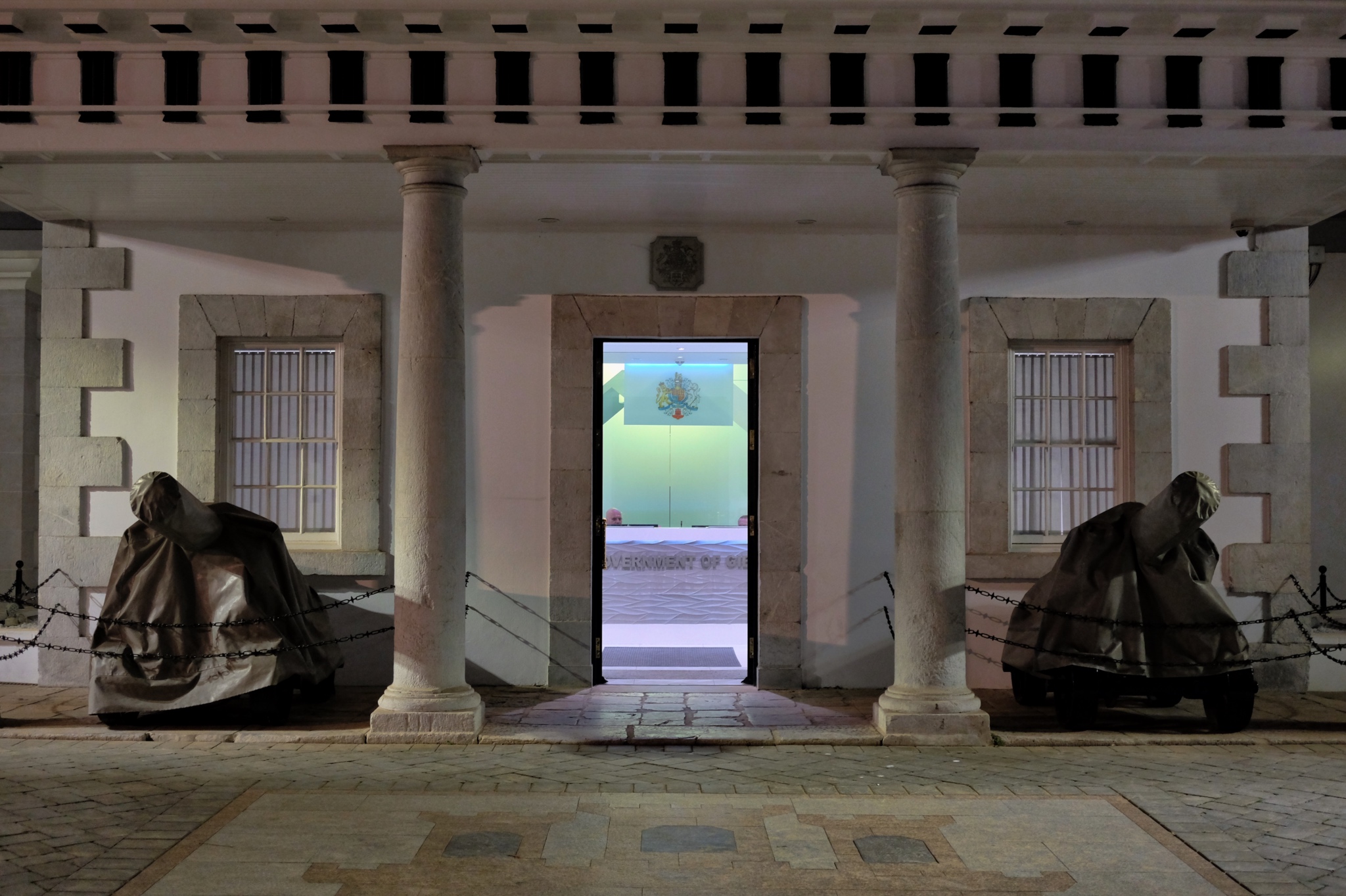 The "Government Of" . . . something or other at 01:00. Wonderful lighting . . . and only me there to see it. This must have been the police station; otherwise why were there still two men sitting behind the counter at that late hour?
The "Government Of" . . . something or other at 01:00. Wonderful lighting . . . and only me there to see it. This must have been the police station; otherwise why were there still two men sitting behind the counter at that late hour?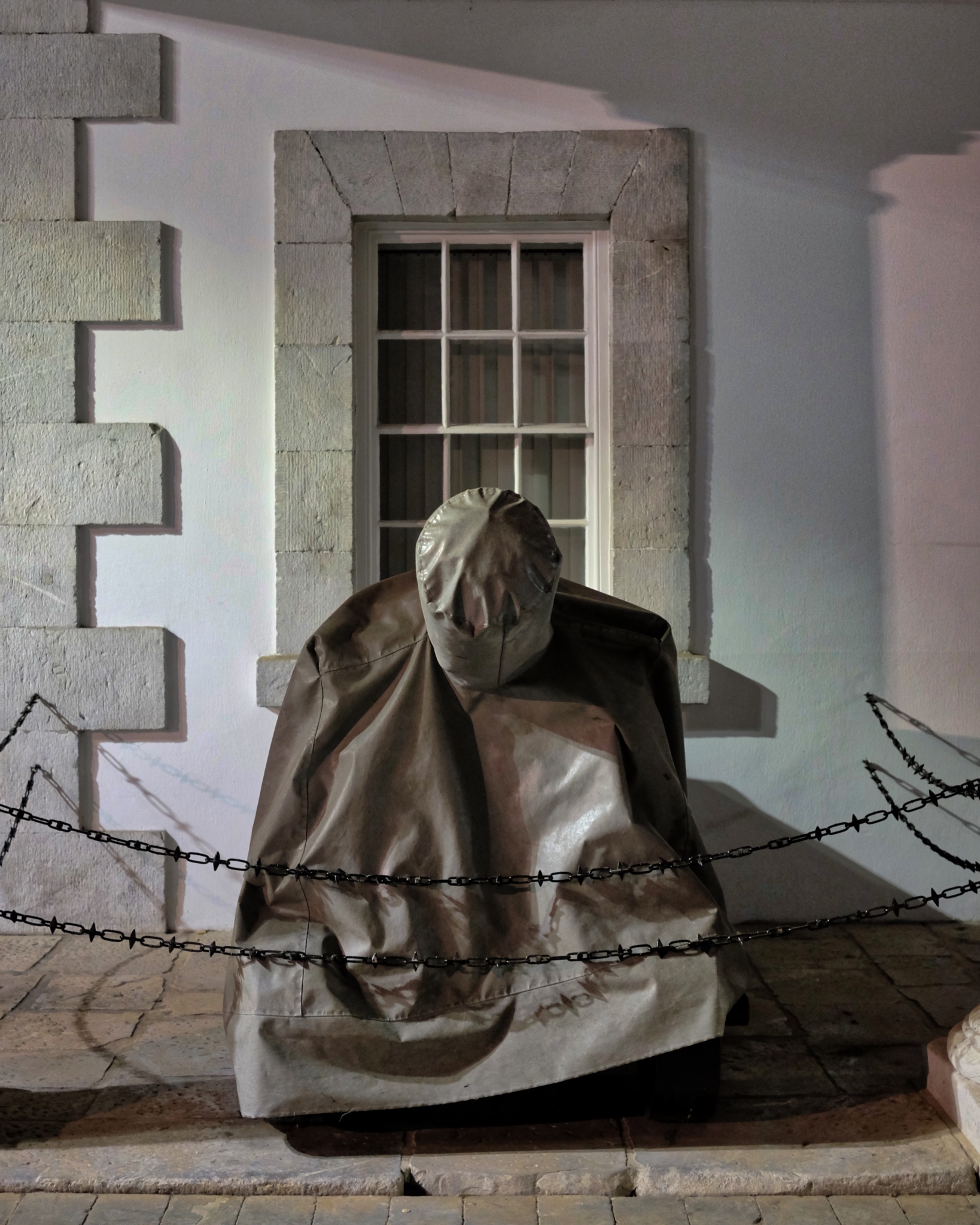 Such scrumptious shapes, line, color, shadow, and light.
Such scrumptious shapes, line, color, shadow, and light.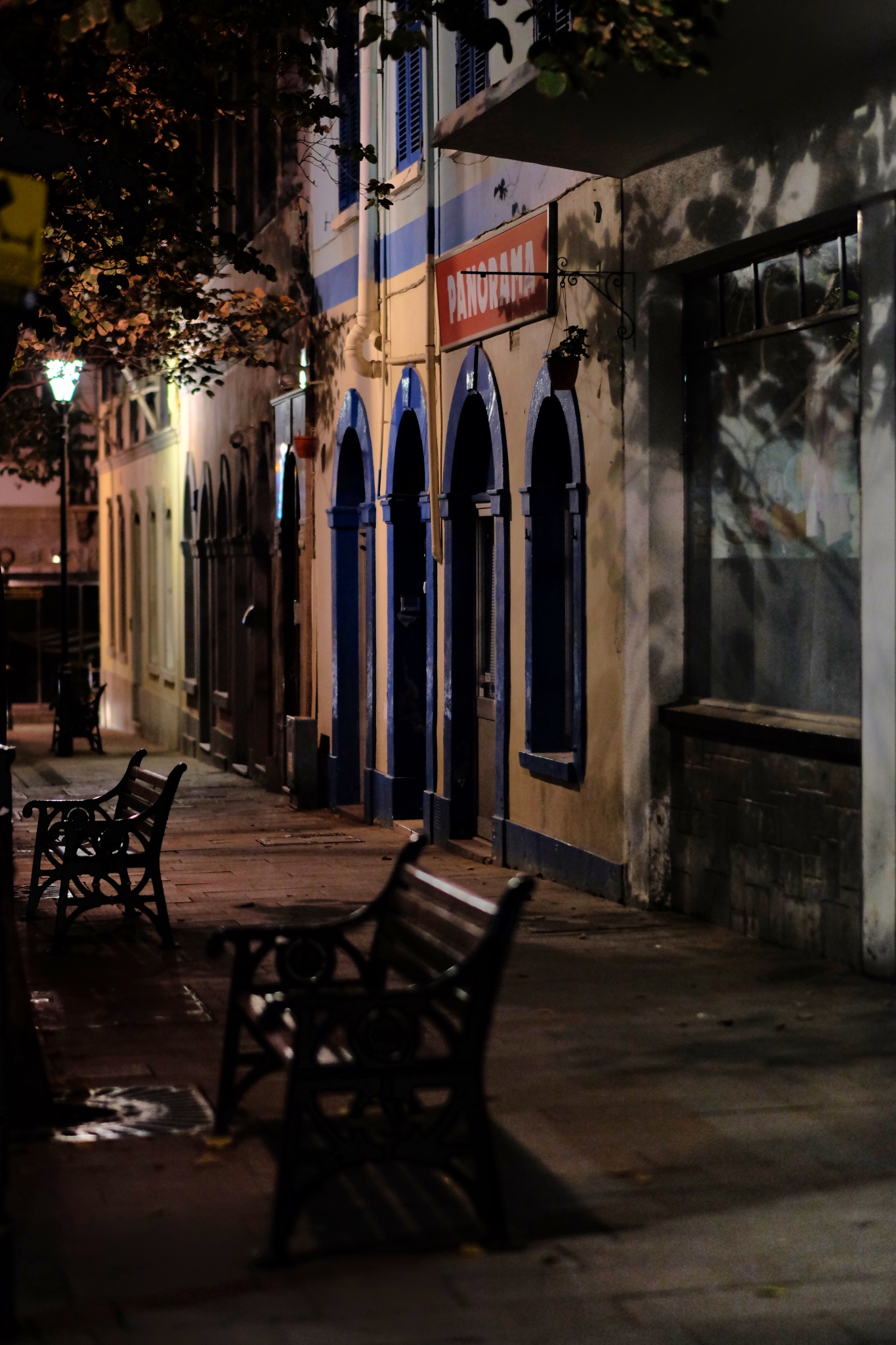 I walked through these same streets several times during the day without really noticing the relationships between shapes and structures . . .
I walked through these same streets several times during the day without really noticing the relationships between shapes and structures . . .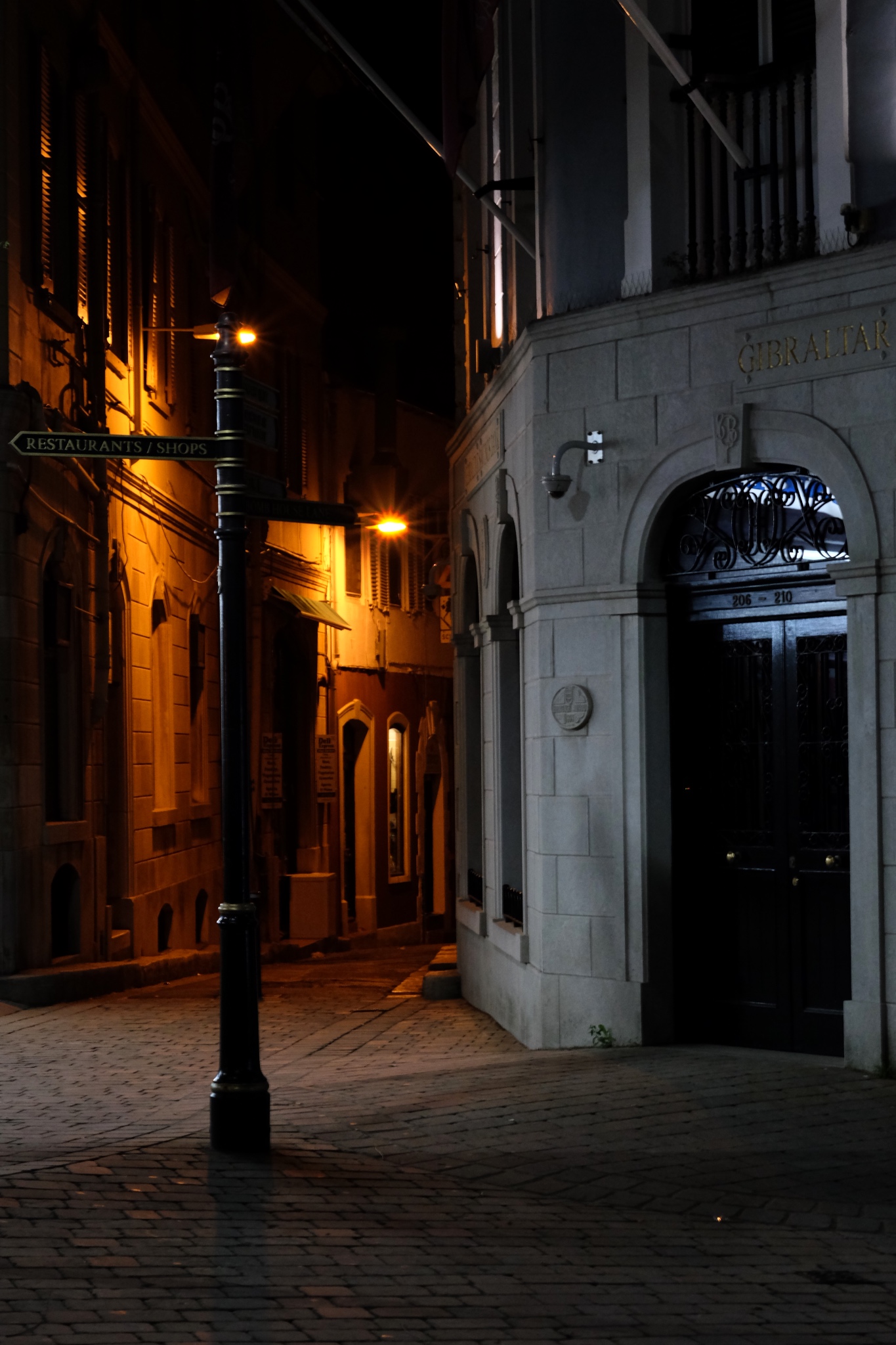 An inviting passage to . . . . who knows where.
An inviting passage to . . . . who knows where.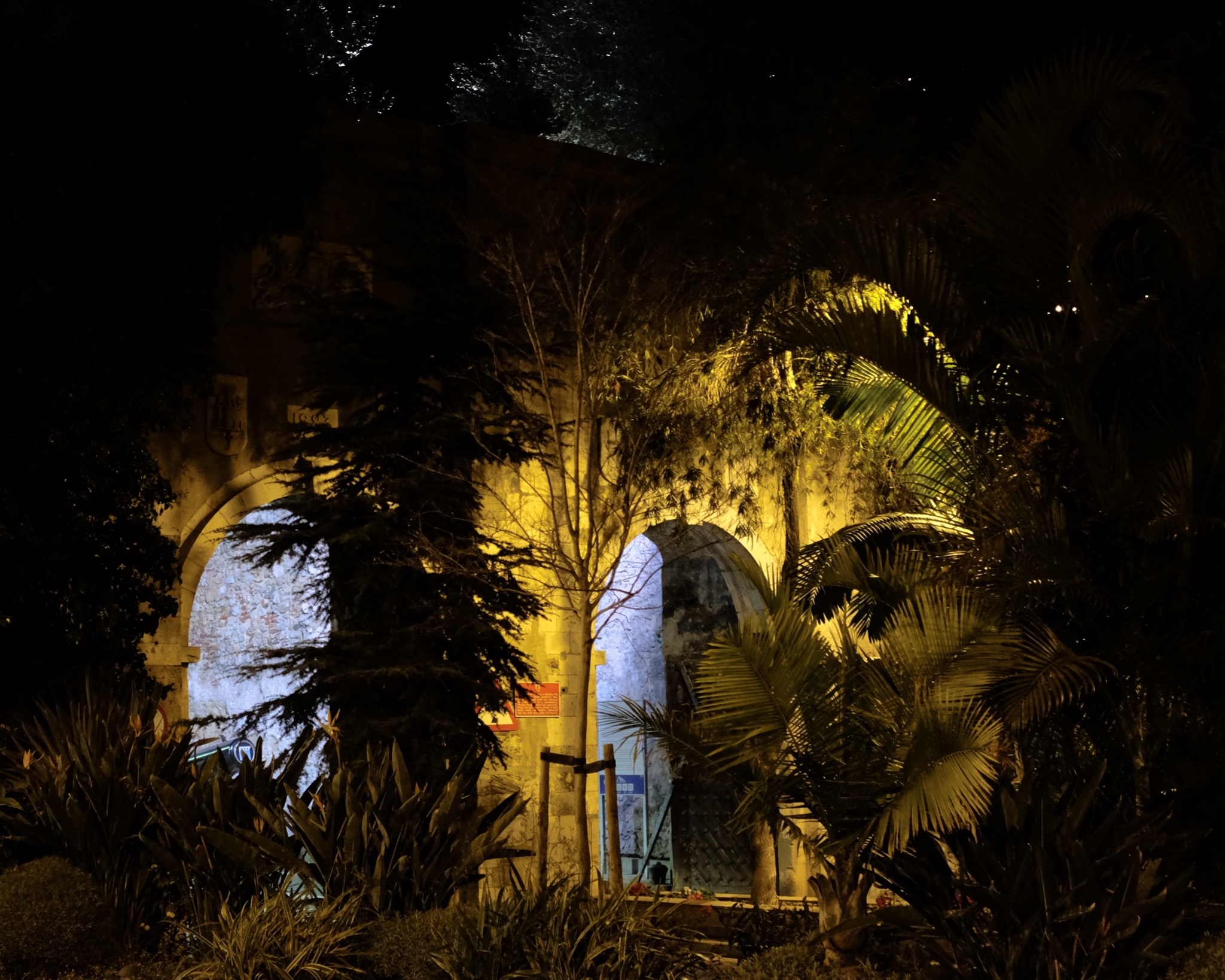 I literally walked from one end of the town to the other in only two hours . . . back out the southern city gate . . .
I literally walked from one end of the town to the other in only two hours . . . back out the southern city gate . . .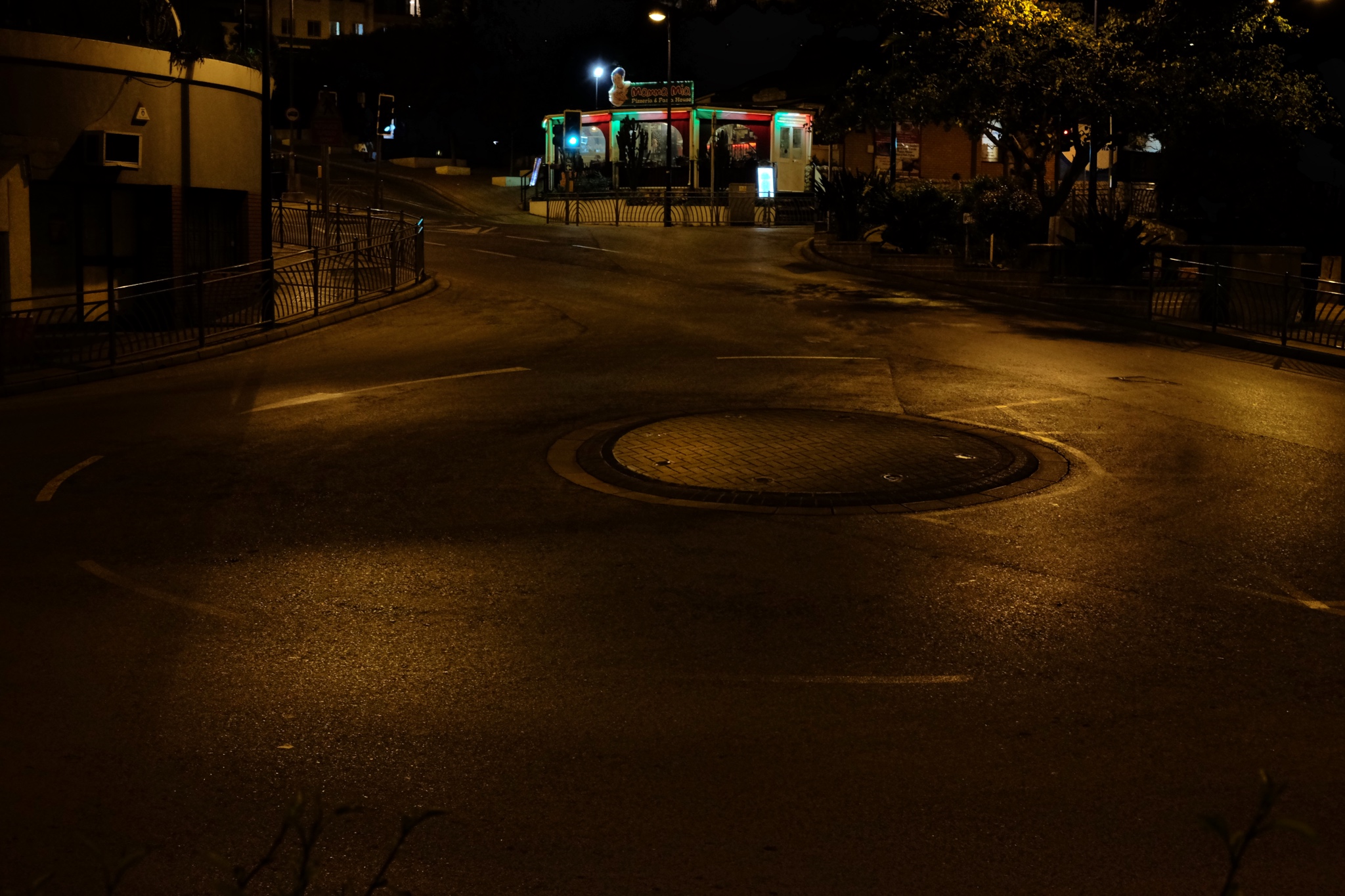 I walked all the eay back an abandoned traffic circle . . . and then back to my nearby hotel. I had had such an inspiring walkabout in the night streets of Gibraltar.
I walked all the eay back an abandoned traffic circle . . . and then back to my nearby hotel. I had had such an inspiring walkabout in the night streets of Gibraltar.